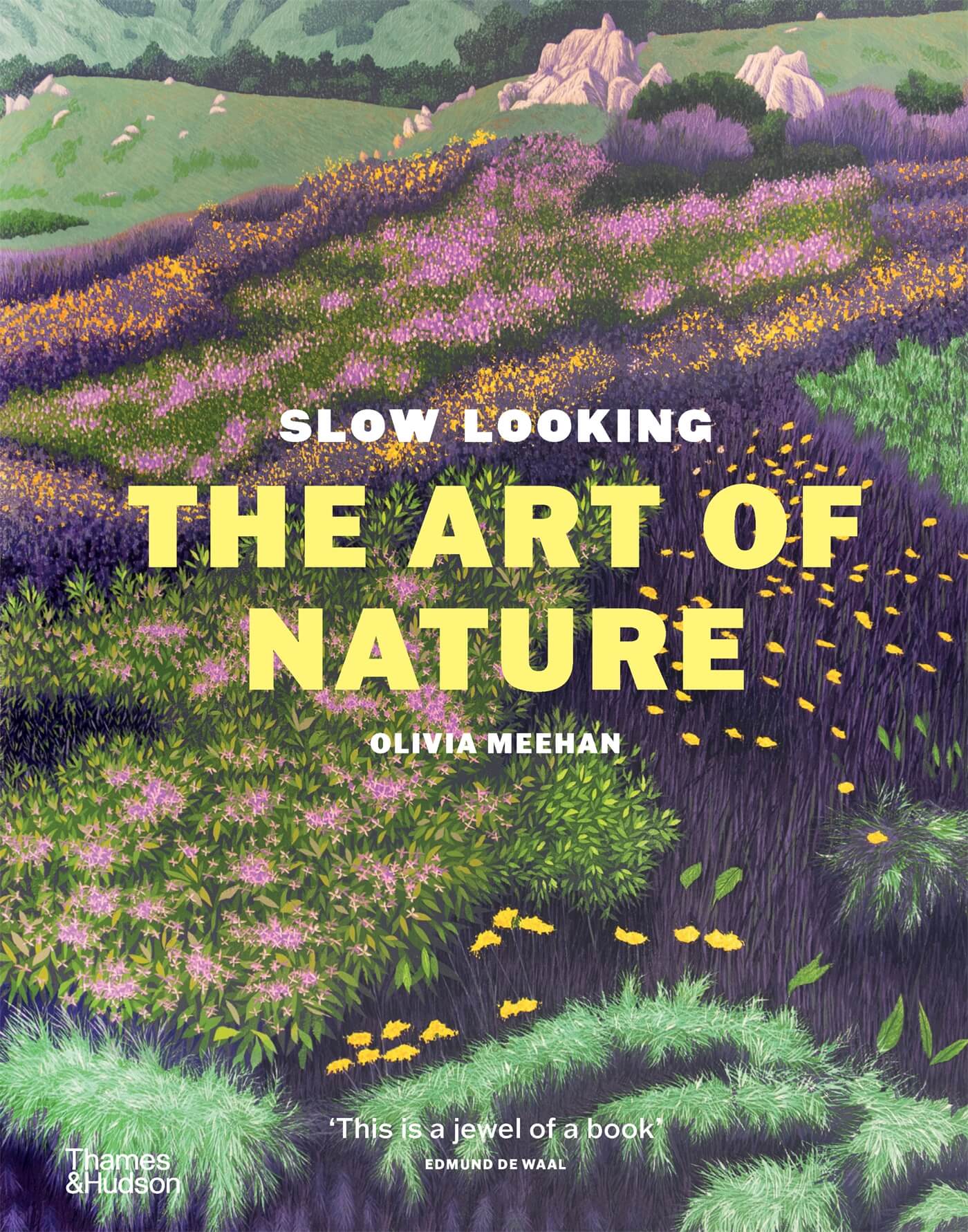
Posted on June 27, 2025

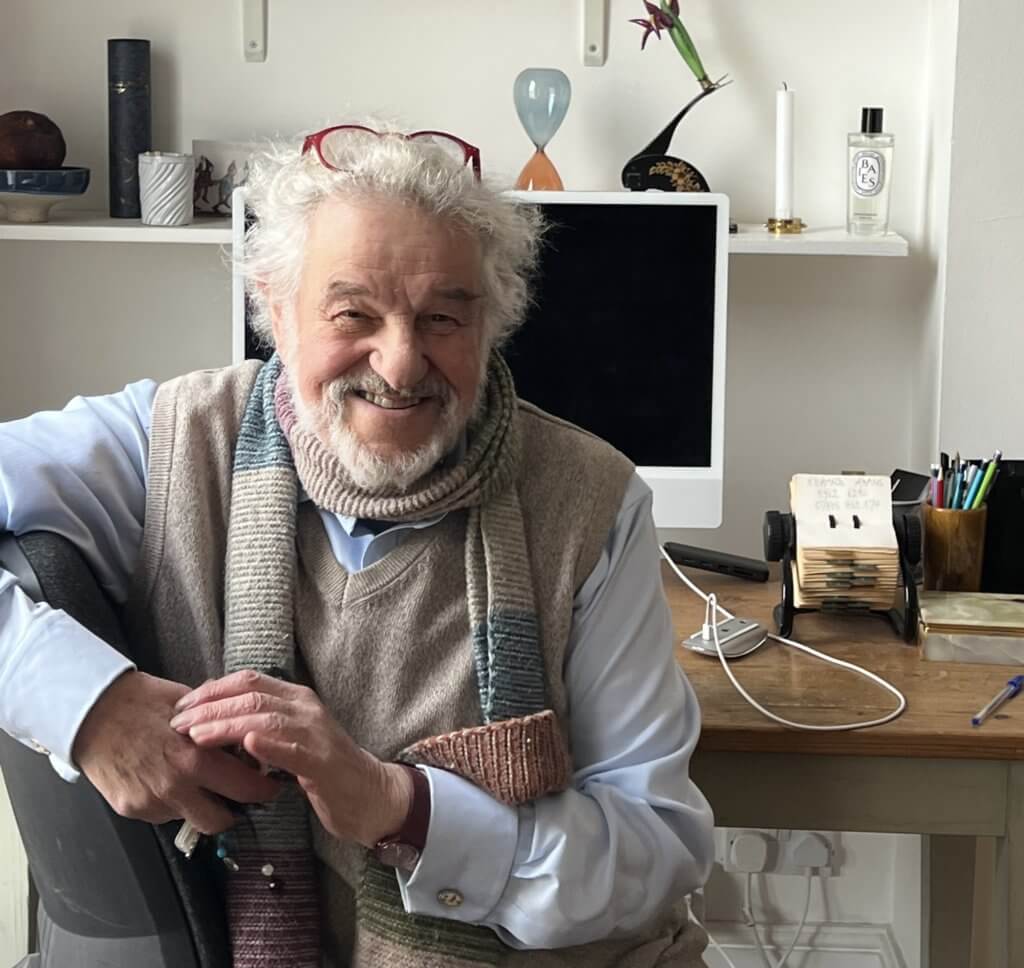
Thomas Neurath, long-time Managing Director and later Chairman of Thames & Hudson and one of the most influential and respected figures in illustrated book publishing for more than half a century, has died in London on 13 June 2025 at the age of 84.
Tributes have been paid by former colleagues and figures from across publishing and the arts:
‘In the post-war period, art publishing was transformed by Walter and Eva Neurath, the founders of Thames & Hudson. But it was Walter’s son, Thomas, who developed the groundbreaking ‘World of Art’ series in the early sixties. These books brought together authoritative texts by renowned scholars with colour illustrations in a format and at a price that opened art history to new audiences. Over the next fifty years, Thomas continued to encourage young authors and to build the company’s reputation for affordable high-quality texts and illustrations. His commitment to quality and his urbane style endeared him to authors and artists alike.’ Nicholas Serota, Chair, Arts Council England, and former Director, Tate.
‘Thames & Hudson stands for making knowledge about art accessible to everyone. Thomas Neurath devoted himself to carrying on this tradition begun by his parents, Walter and Eva Neurath, bringing a central European engagement with culture to this country’s publishing and somehow making it feel very British.’ Sir Norman Rosenthal, independent curator and former Exhibitions Secretary, Royal Academy of Arts.
‘Thames & Hudson’s 75th-anniversary celebrations in 2024 put Thomas’s immense contribution to publishing into perspective. He spent more than fifty years at the helm of the company and permeated the house with his intellectual and cultural aura, as well as his unrivalled commercial understanding of the opportunities and perils of illustrated publishing. His wisdom, experience and passion will be greatly missed by everyone at T&H.’ Sophy Thompson, CEO, Thames & Hudson Ltd.
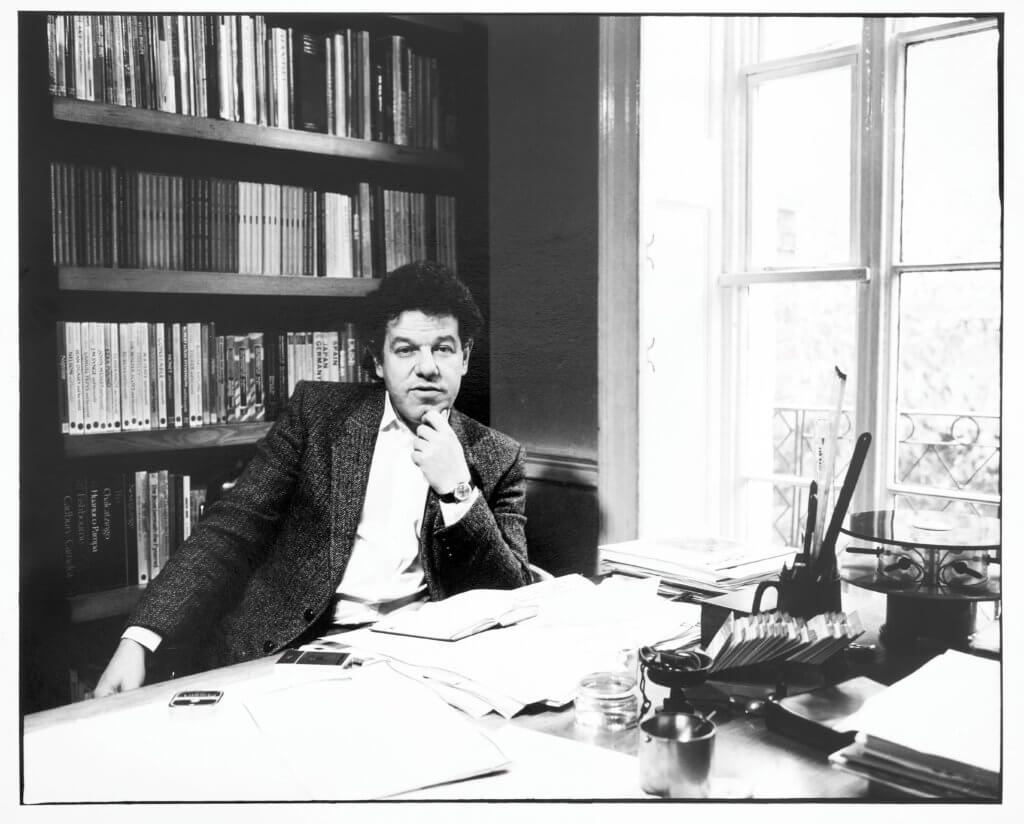
Born in Brackley, Northamptonshire (a place of wartime refuge), in October 1940, Thomas Neurath was the son of publisher Walter Neurath and schoolteacher Marianne Müller. After the death of Marianne, Walter founded Thames & Hudson in 1949 with his third wife and longstanding publishing colleague Eva Feuchtwang, with offices – as the company name suggests – in London and New York. The Neuraths, emigrés from central Europe, created the publishing house with the aim of making art and ideas accessible to a broad audience. Thames & Hudson pioneered the concept of creating a ‘museum without walls’ – a phrase still used by the company today to define its mission – enabling readers to encounter and engage with great works of art of all disciplines through beautifully made books at affordable prices.
Neurath joined the family firm as an editor in 1961, by which time Thames & Hudson was already establishing itself as a leading publisher of illustrated books on the visual arts. The groundbreaking ‘World of Art’ series was developed by Thomas, offering scholarly illustrated introductions to all aspects of visual culture. Published in paperback at prices students could afford, with texts by such major experts as John Boardman, Tamara Talbot Rice, Linda Murray, Nikolaus Pevsner and Kenneth Frampton, and now containing some 300 titles, it continues to be a flagship series for Thames & Hudson today.
In 1967 Walter Neurath died while at the height of his powers, and the day-to-day running of Thames & Hudson was handed over to Thomas, still in his twenties, as Managing Director, and his sister, Constance, who looked after design. Thomas soon displayed extraordinary publishing instincts and was able to translate his vision for a book into a physical design concept, with attention paid to every detail, from fonts and typography to the all-important relationship in illustrated books between text, caption and image.
A founding principle of Thames & Hudson was that the books it published should have international relevance and appeal. For Thomas, this meant focusing not only on export sales – supported over time by the establishment of further offices in Paris, Melbourne and Asia – but also co-edition opportunities. Thomas developed close and lasting links with publishers overseas, from France, Italy and Germany to Japan and North America.
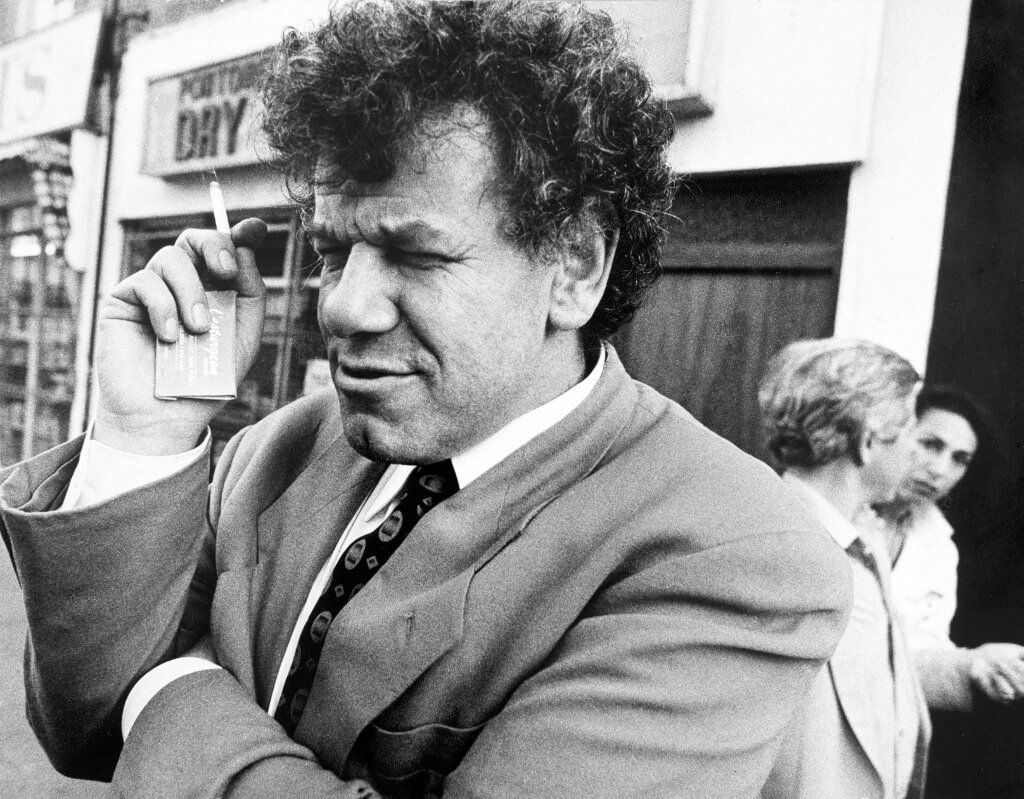
Neurath was a generous, caring and astonishingly skilful publisher and an astute businessman. Aspects of publishing such as distribution and finance were as important to Thomas as the quality of a book’s editorial, design and production standards.
Thomas Neurath’s erudition and high standards, and his employment of respected experts in the subjects published by the company – which grew to include not only art, architecture and ancient history but also design, fashion, photography and children’s books – attracted major artists and authors to the list, from Francis Bacon to David Hockney. Museums and other cultural institutions also keenly collaborated with the company, whether as a publishing or a distribution partner.
Neurath stepped down from his role as Managing Director of Thames & Hudson in 2005, assuming the role of Chairman until 2021. His family continues to be involved in the business: Thomas’s older daughter, Johanna Neurath, is Chair of Thames & Hudson Publishing Ltd, while his younger daughter, Susanna Reisz Neurath, is Chair of Thames & Hudson Holdings Ltd.
Thomas Neurath is survived by his wife, Gun, their two daughters, Johanna and Susanna, his grandchildren and by his sister, Constance Kaine.
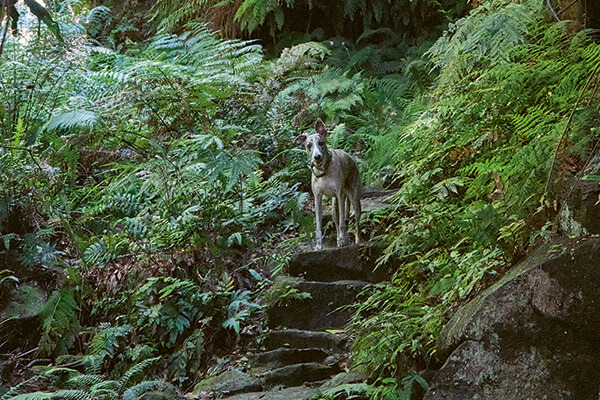
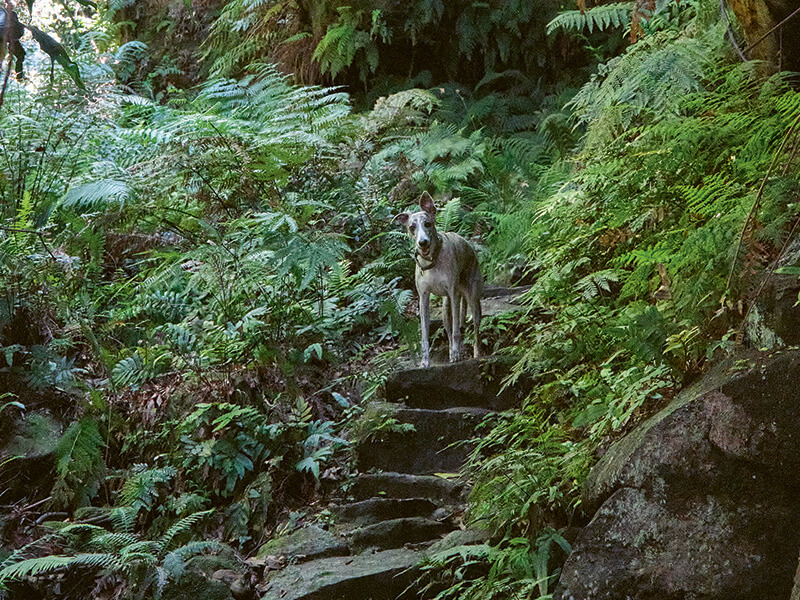
The idea that the dog is humankind’s most loyal companion is, perhaps, one of the greatest universal truths, shared among many nations and cultures.
Read on to discover three dog-friendly day trips from Dog Trip Sydney that are sure to inspire you to create unforgettable memories with your canine companion.
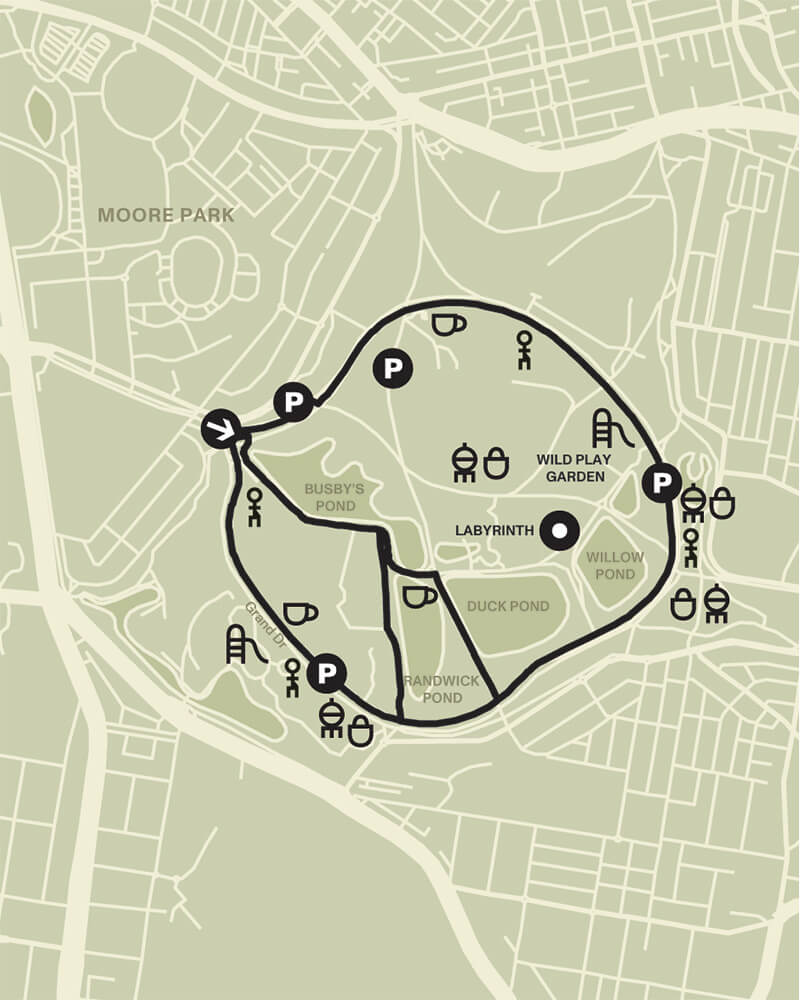
Traditional custodians
Eora
Distance from CBD
3 km
Car parking
Grand Dr, Centennial Parklands
Walk
Leash On/Off
Distance
3.5–9 km loop
Time
2 hrs
Difficulty
Easy
Climb
129 m
Facilities
BBQ
Cafe
Picnic area
Playground
Toilet
Suitable for
Children
Wheels
Often overlooked by Sydneysiders who don’t live in the Eastern Suburbs, Centennial Park is a living, breathing treasure situated within close range of the CBD. Acting as the city’s ‘green lungs’, the 189-hectare park is home to an impressive variety of native birdlife (such as black swans, superb fairy-wrens and corellas) and flora (including figs, eucalypts, paperbarks and banksias) – as well as exotic plant species like evergreen oak trees from the Southern USA and Bismarck palms from Madagascar. Typical of the grand parks established in the Victorian era, the public garden’s large expanses of lawn and grassed fields are surrounded by umbrageous Moreton Bay figs and punctuated by ponds, creating idyllic settings for daydreamers. In the dog-friendly areas of the park, joyous fur-balls are free to bound after one another off-leash.
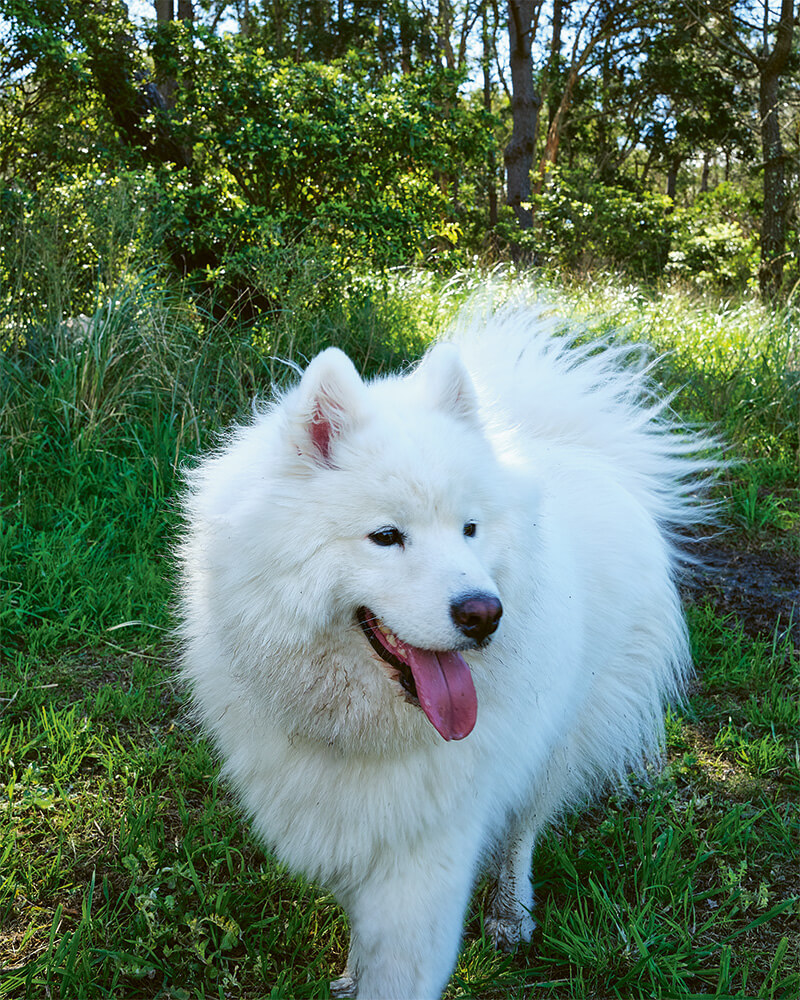
Centennial Park was officially opened in 1888 by Sir Henry Parkes – an English immigrant of humble origins turned powerful political figure and NSW premier – fulfilling his dream of creating a ‘people’s park’. Sir Henry had recruited unemployed workers to help in the construction of the park, selling land along the edge of the proposed site in order to pay their wages. Not everyone shared Parkes’s idyllic vision, however. In the 1960s, a statue of Charles Dickens was stolen from the park – it was recovered forty years later, without its head (‘Please, sir, I want my head …’).
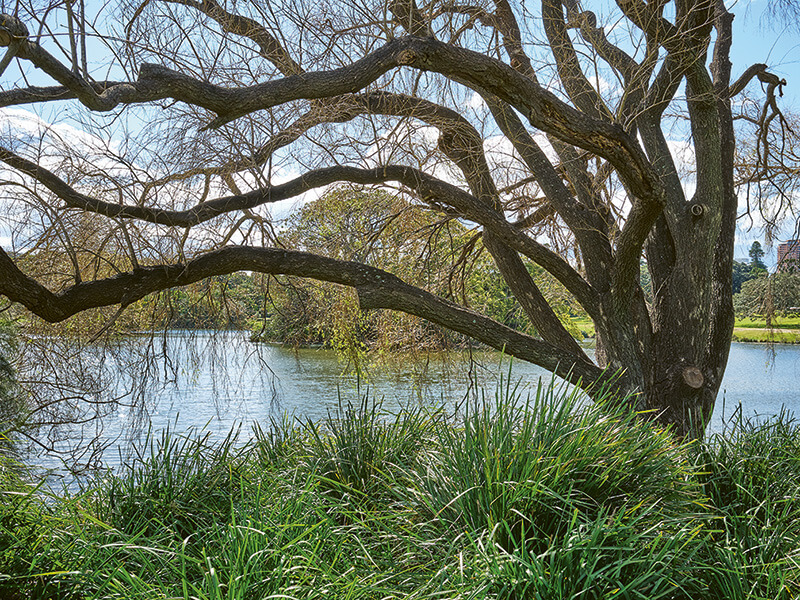
For growing bodies and minds, a romp through the elaborately named Ian Potter Children’s WILD PLAY Garden is a must-visit destination. The site is designed to encourage children to connect with nature by mixing action and education, and two-legged whelps can cavort in treehouses and frolic through water jets.
Witnessing all the people and pups enjoying this vast green space, the ghost of Sir Henry Parkes must be smiling (and, maybe, enjoying the irony of a man with his surname establishing a public park).
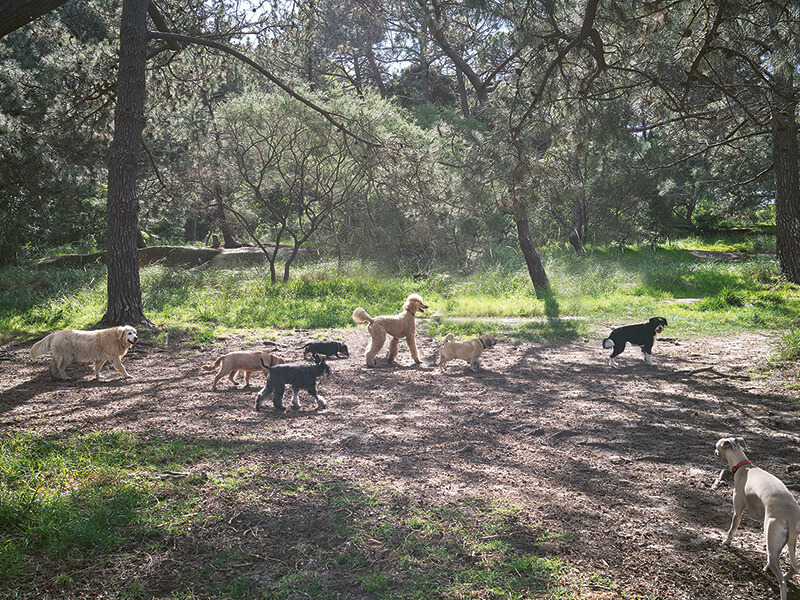
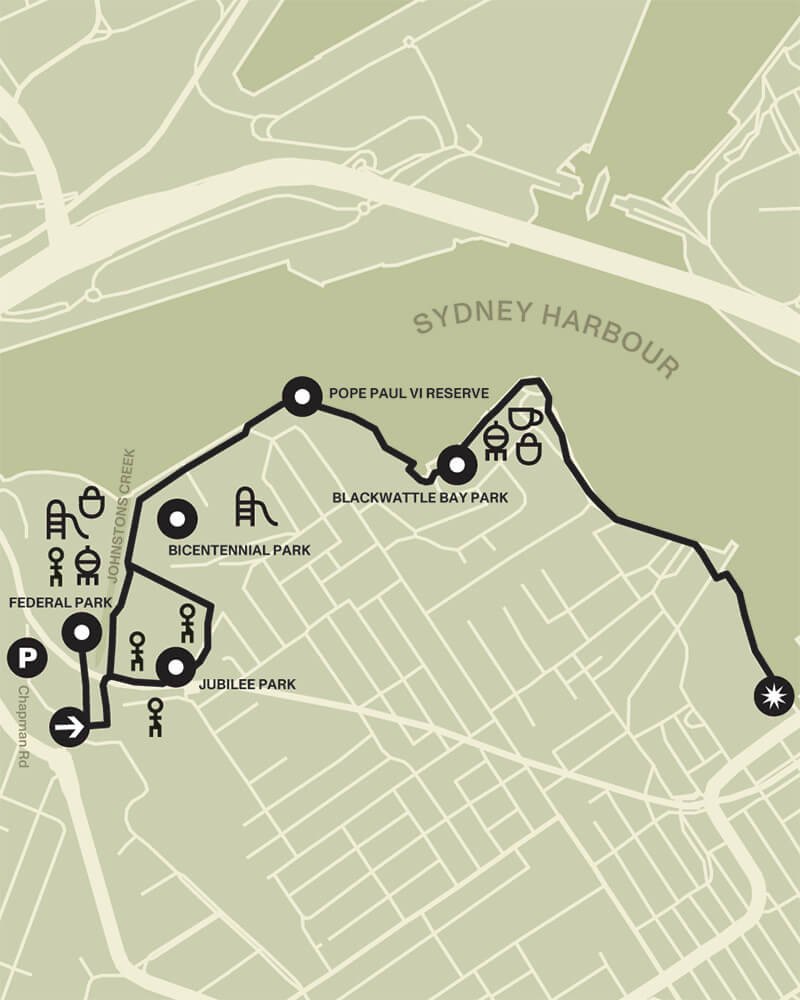
Traditional custodians
Eora
Distance from CBD
3 km
Car parking
Chapman Rd, Annandale
Walk
Leash On/Off
Distance
4.5 km return
Time
1.5 hrs
Difficulty
Easy
Climb
45 m
Facilities
BBQ
Cafe
Picnic area
Playground
Toilet
Suitable for
Children
Wheels
The Glebe Foreshore Walk links more than 27 hectares of open public space, the legacy of a four-decades-long campaign for public access that was fought and won by local residents and the Glebe Society, which was established in 1969 to support the cause. Here the urban waterfront tangles with its industrial heritage, rusty cranes and defunct power plants mingling with prime harbour views and magnificent trees.
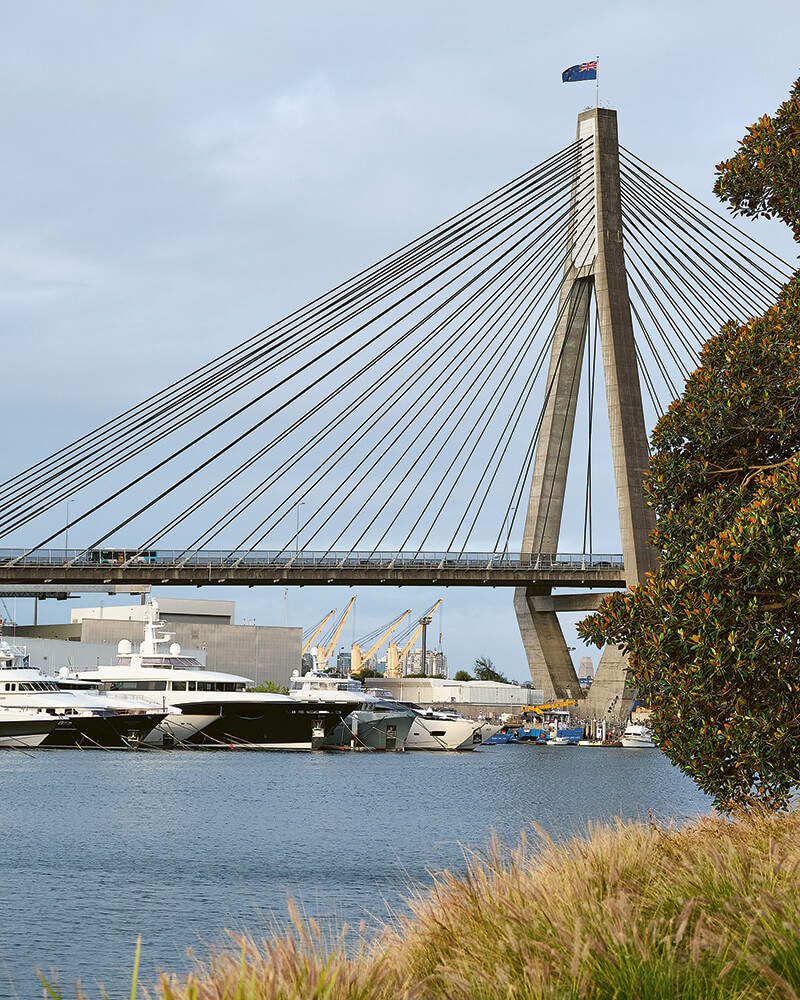
The suburb of Glebe is located on the land of the Gadigal and Wangal peoples of the Eora nation. In 1789, the colonial government granted the land to the Anglican church. Up until the 1970s the area was an industrial zone, dominated by timber yards, and modest workers’ cottages can be seen nestled between the suburb’s grand old Victorian terraces and Federation houses. The foreshore has long been used for recreation, with century-old sporting facilities for cricket, football and rowing still in use today.
The walk starts as you enter Jubilee Park, with an opportunity for off-leash activities at Federal Park, located just to the south across Johnstons Creek. Next to Federal Park lies Bicentennial Park – still featuring its original plantings of Canary Island date palms and Moreton Bay fig trees, which tower over a historic cricket pavilion and oval. There is a playground for the kids, too.
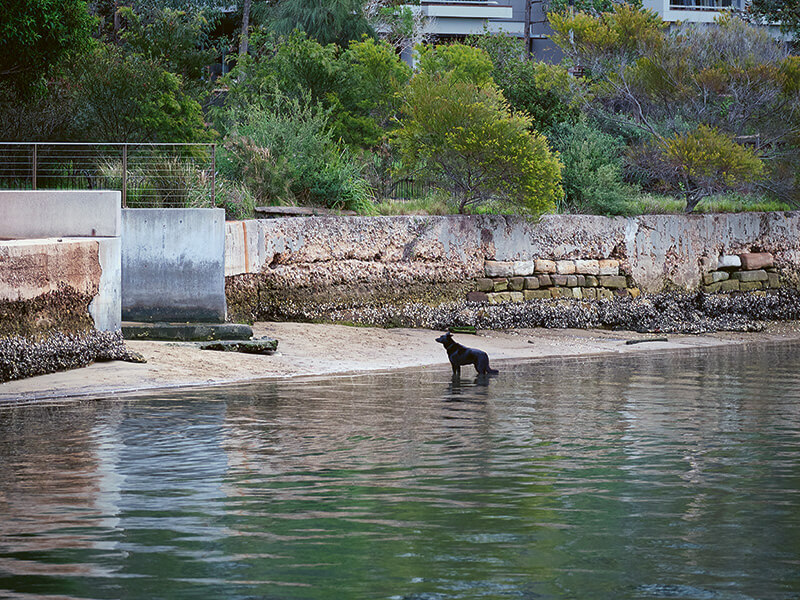
Continuing north, you end up in the eastern part of Bicentennial Park before ambling east along the Rozelle Bay foreshore. Further east along the shore is Pope Paul VI Reserve, with a divine view of Sydney’s trinity of bridges: Anzac, Glebe Island and Harbour. This reserve commemorates the first-ever papal visit to Australia in 1970. These days dogs bound about off-leash, sniffing each other with no signs of Catholic guilt whatsoever.
The next leg is Blackwattle Bay Park, which completed its transition from industrial to recreational use in 1983. Boasting picnic and barbecue facilities, it is the perfect place to spend some time. Dogs are also allowed to roam freely here. A notable relic from the past is the heritage-listed Bellevue Cottage – built in1896 and designed by the renowned architect Ambrose Thornley Jnr, who also designed the grandiose, Italianate Glebe Town Hall. Thankfully, it is now a cafe filled with sinful culinary temptations.
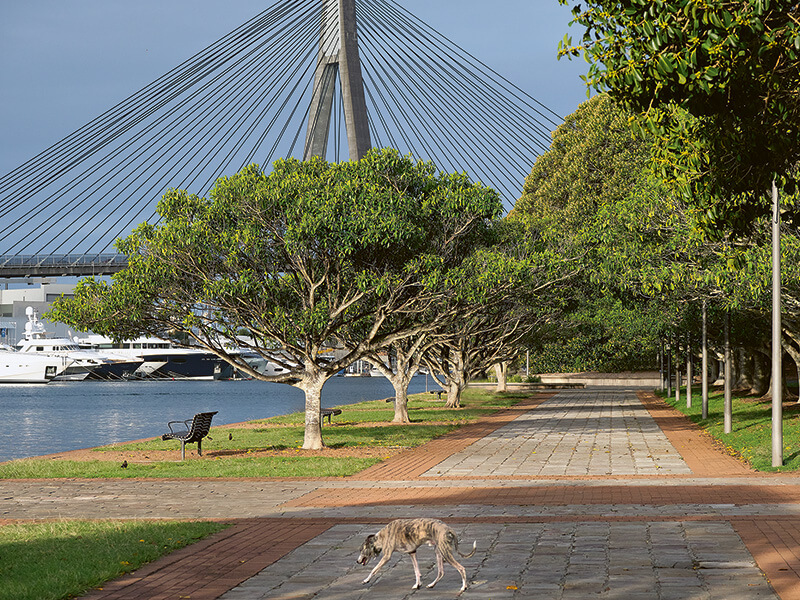
As you approach Wentworth Park, Sydney Fish Market comes into view (or smell). Stick around fora seafood feast – or take the road less travelled to Glebe Point Road for a taste of some bohemian culture
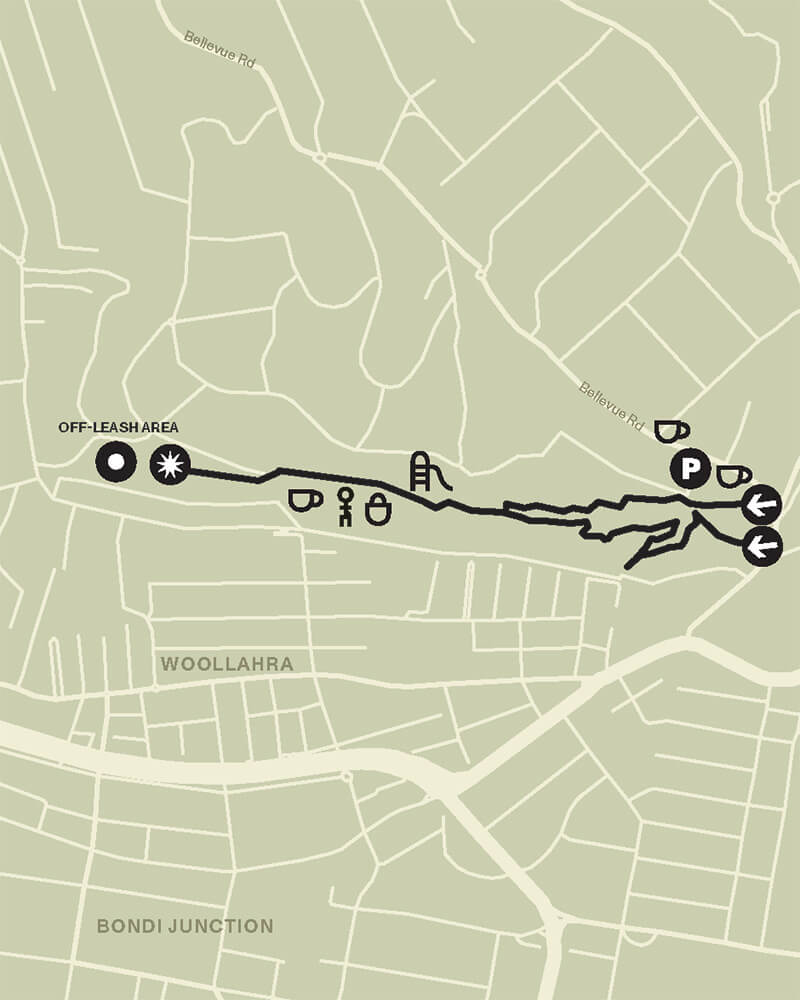
Traditional custodians
Eora
Distance from CBD
4 km
Car parking
26 Bellevue Rd, Bellevue Hill
Walk
Leash On/Off
Distance
2.5 km loop
Time
1 hr
Difficulty
Medium
Climb
43 m
Facilities
Cafe
Picnic area
Playground
Toilet
Suitable for
Children
Wheels
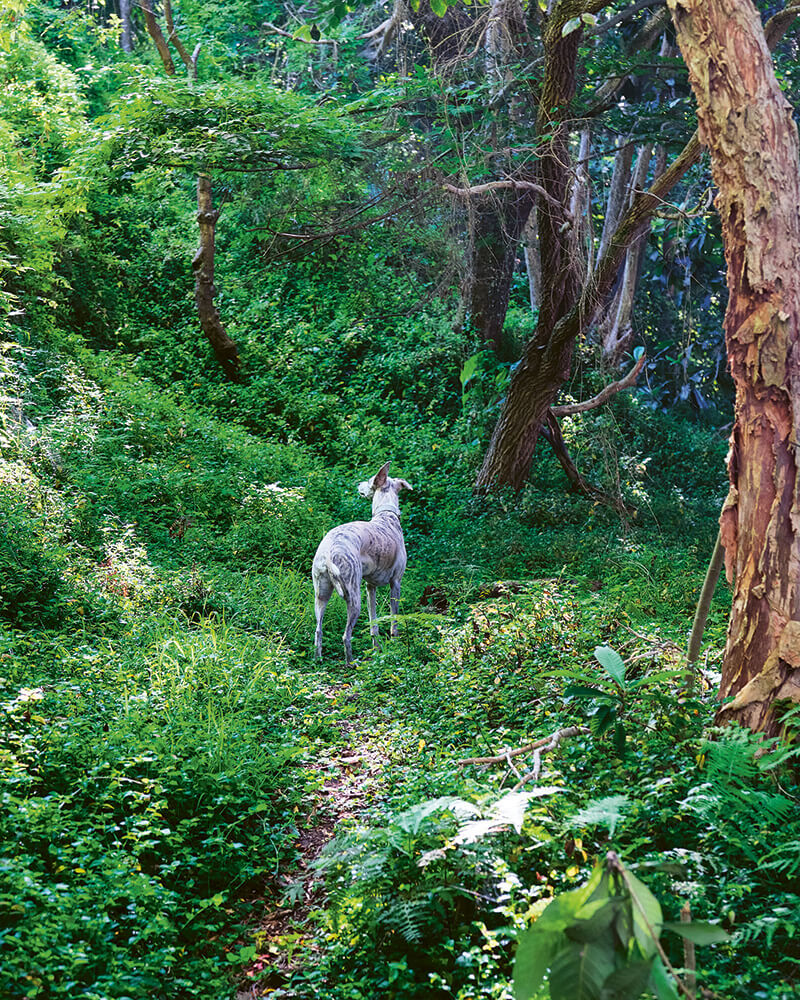
Lying within the verdant valleys and flourishing fractures of Cooper Park you will find a mix of natural wonders and layers of Indigenous and European history. As you descend vegetation-laden staircases into the steep gully that was formed by volcanic activity dating back to the Jurassic era, it’s hard to imagine that moments ago you were in the urban jungle.
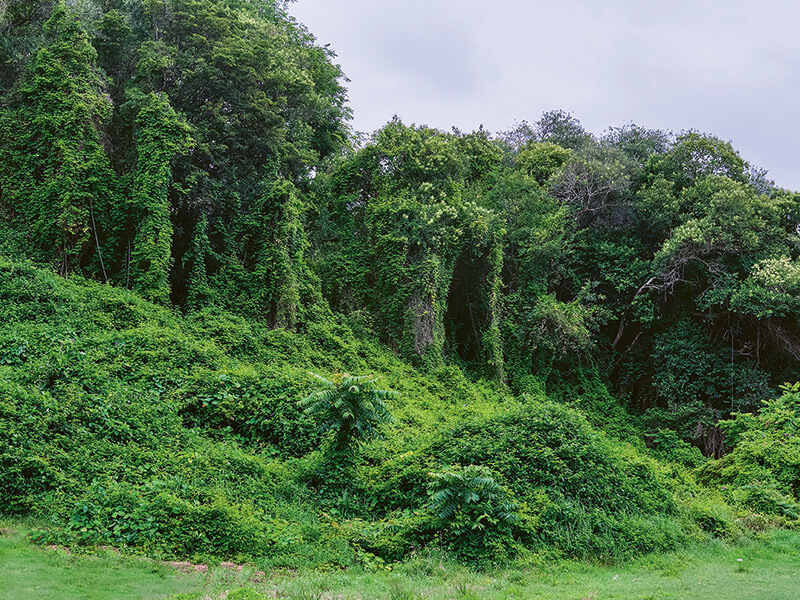
At the time of European colonisation, and for millennia before, at least two clans of the Eora nation – the Gadigal and the Birrabirragal – lived off this land, and their engravings and sacred sites are scattered around the park (the exact locations are held in confidence by the Aboriginal community). In the early 1800s, industrial baron and former convict Daniel Cooper began acquiring land in the area. In 1913, his relative, Sir William Cooper, agreed to a long standing government request to give a part of this land to the public, and it was declared a public park in 1917.
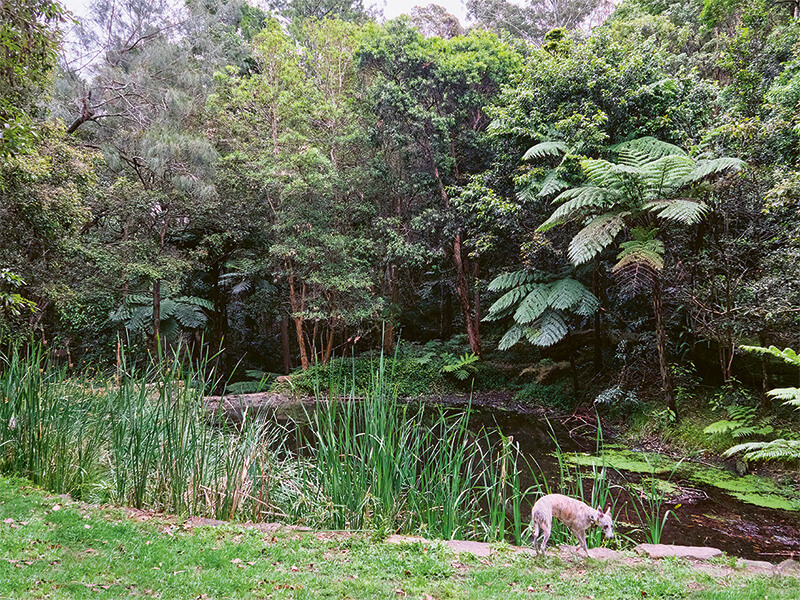
The park’s stone steps, bridges and amphitheatre were constructed in the 1930s as part of a Depression-relief work scheme. Unique stone-like grottoes pepper the park, while a kiosk, playground and tennis courts provide food and entertainment for visitors.
Walking through this 18-hectare urban greenspace, you will be bombarded with exquisite sensory experiences. The creek runs through the centre of the park, following the vein-like volcanic dyke that cuts through the ancient rock. More than 220 native plant species compete with 160 exotic ‘weed’ species. Grey gums, smooth-barked apple gums and red bloodwoods are plentiful on the ridges. In the gullies, Australian rosewoods, native figs and lilly pillies grow abundantly. Currawongs, wonga pigeons, tawny frogmouths, possums and the very local Cooper Park skink also thrive in this urban oasis. Protect them by keeping your dog on-leash in the park’s natural areas – your hound can go wild in the sportsground adjacen to Suttie Road between 4.30 pm and 8.30 am.
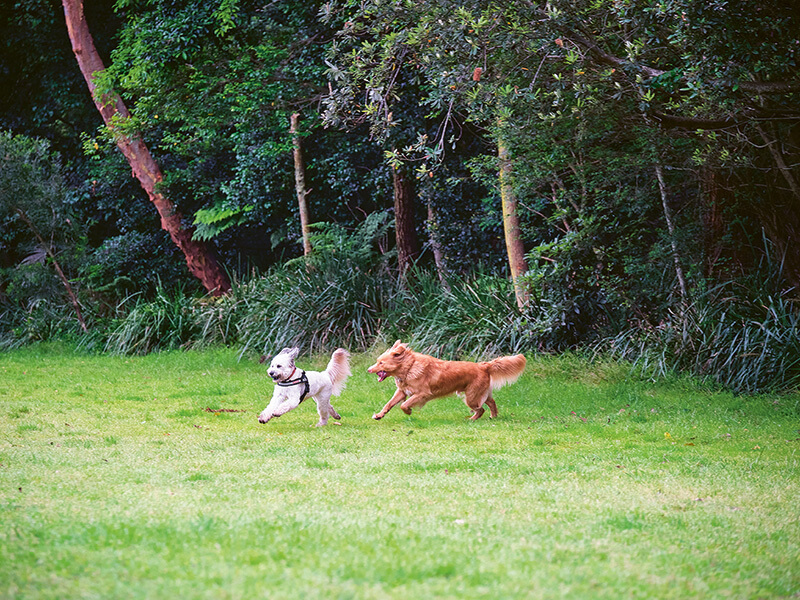
A relic of Aboriginal habitation can be found just north of Bellevue Road, in the form of an engraving of a fish in a rocky overhang. Images of a ship and male figures are engraved on a large flat rock in the north-eastern section of the park, and two charcoal figures are located on the wall of a small rock shelter between the tennis courts and residential area within the park.
The park features short trails that link to one another, so embrace being lost in this magical, timeless landscape before resurfacing.
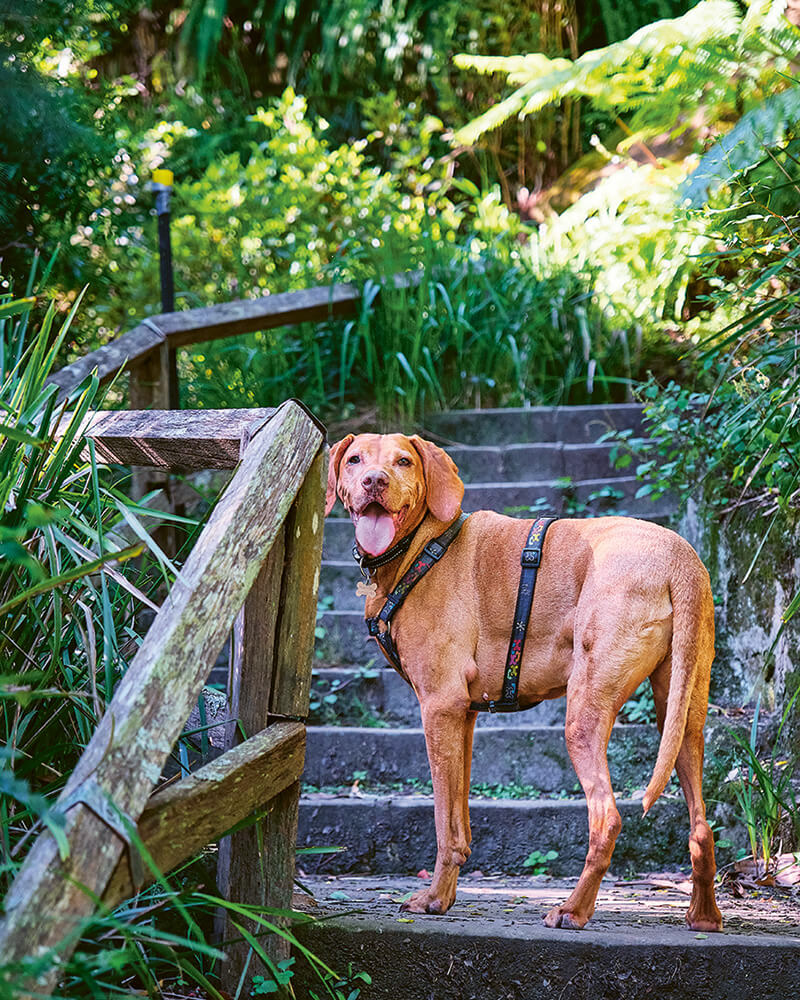
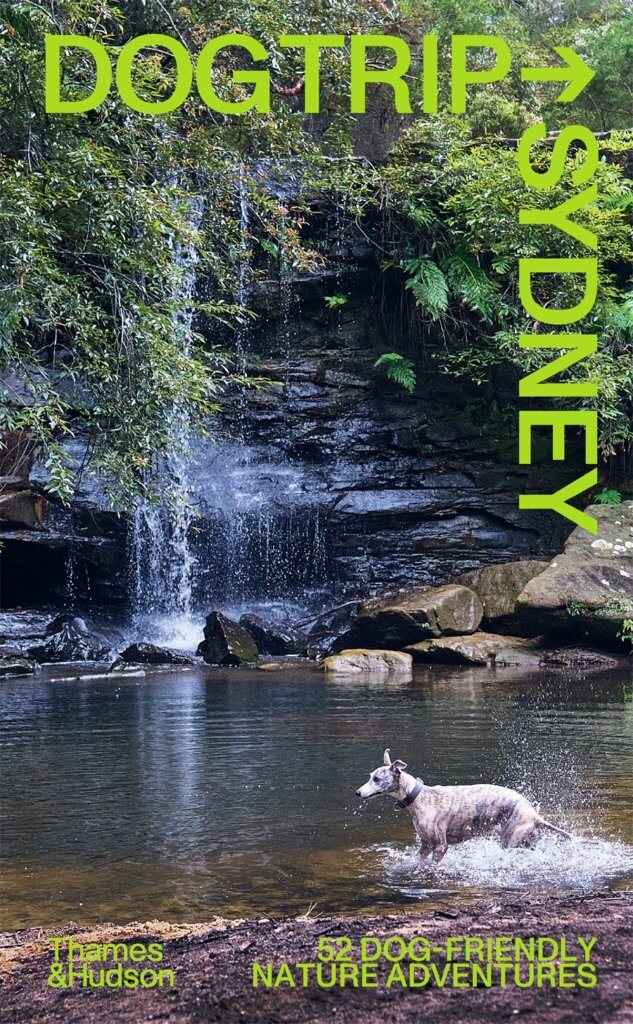
Dog Trip Sydney by Andrew Grune & Evi O is available now.
AU $34.99
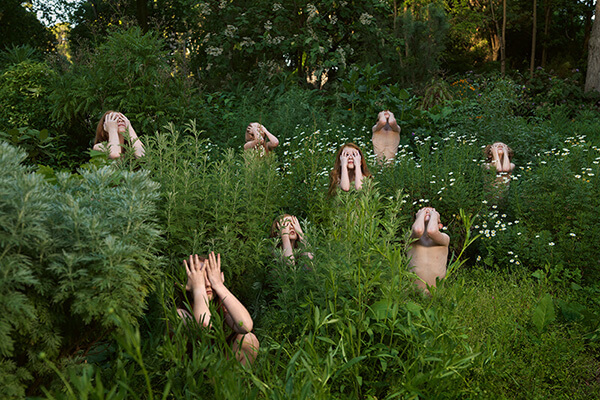
In Our Nature is a site-responsive body of work that Tamara Dean staged in the Adelaide and Mount Lofty botanic gardens for the 2018 Adelaide Biennial of Australian Art. It was the first time she overtly used her photography to vocalise her despair over the impact of climate change.
This series was her way of drawing attention to the fact that humans are a part of an interconnected ecosystem, and that, if we continue to destroy it, we will ultimately meet the same fate.
Read on to view some of the images from In Our Nature, as featured in Tamara Dean: A Monograph.
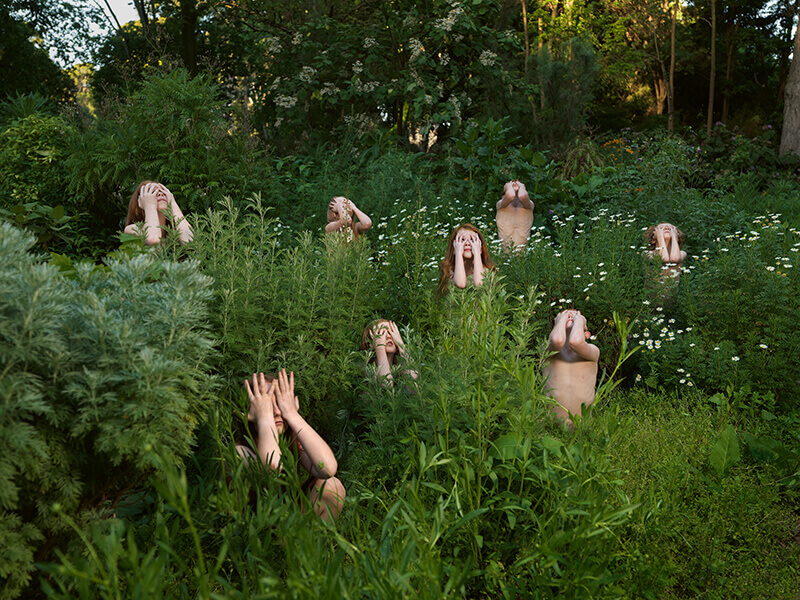
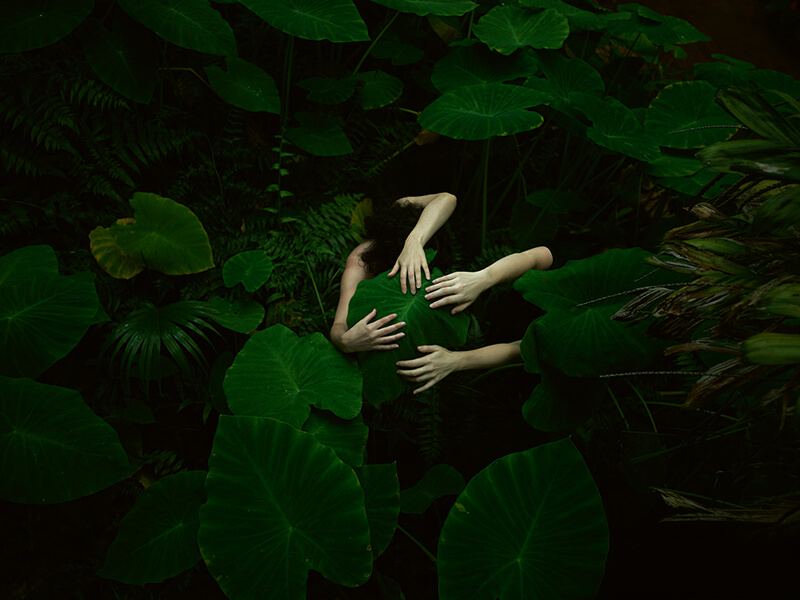
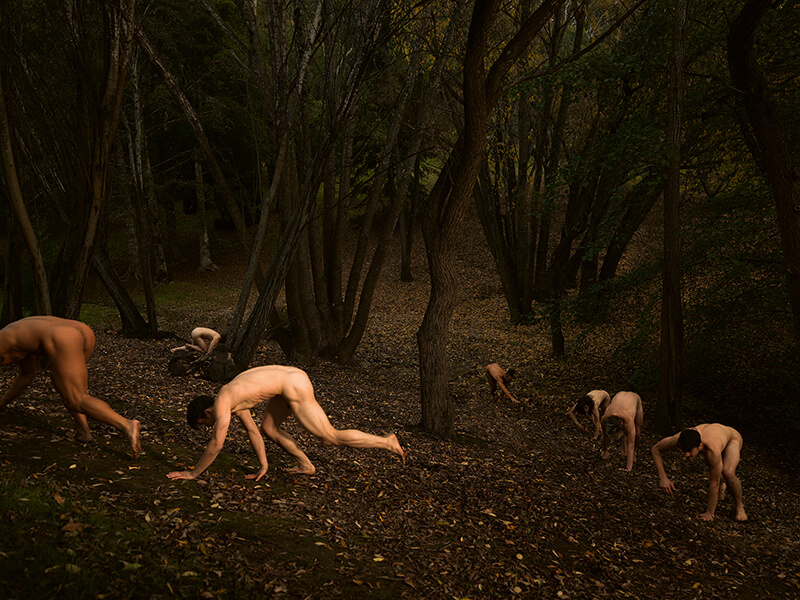
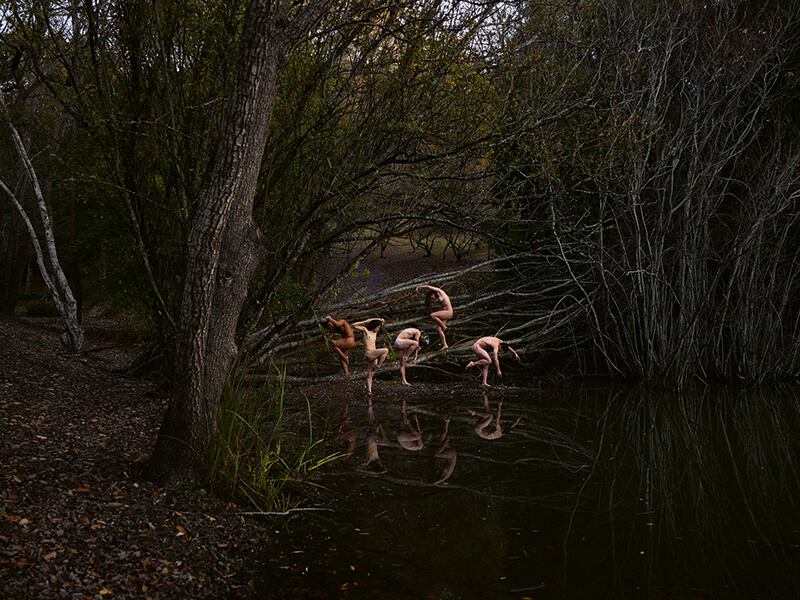
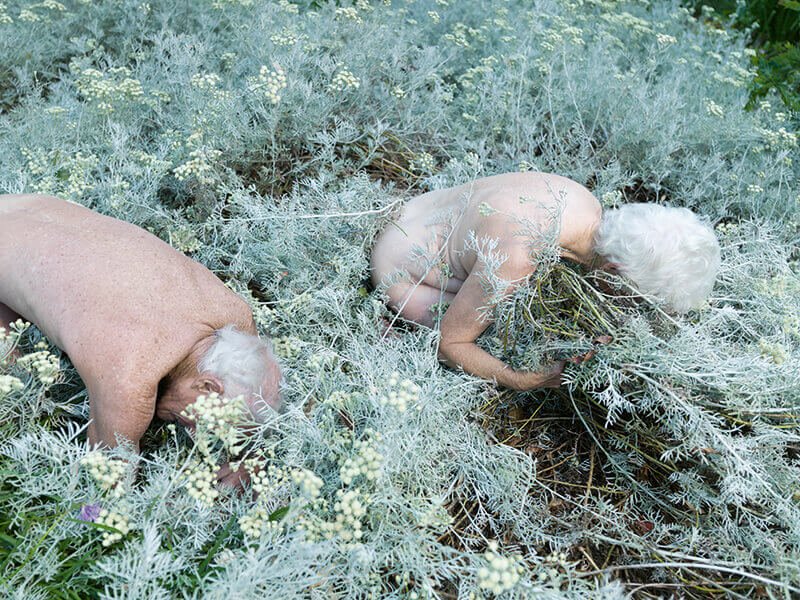
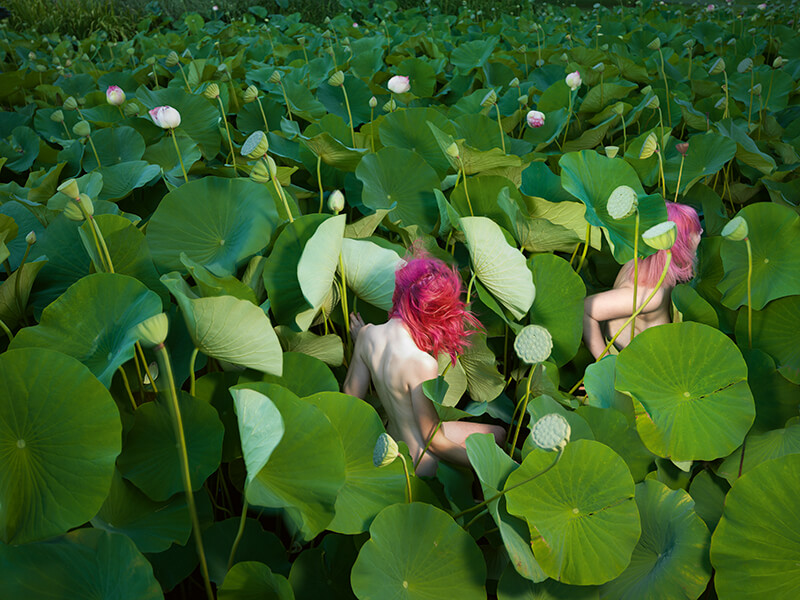
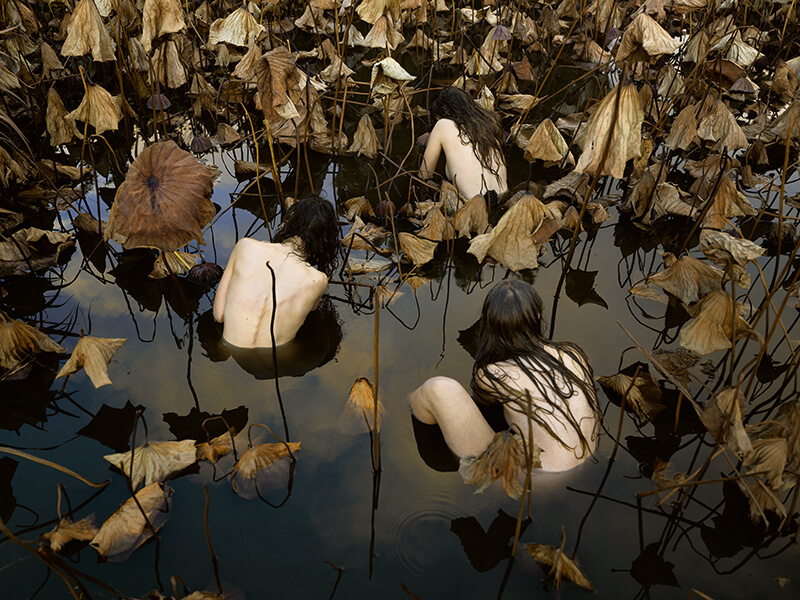
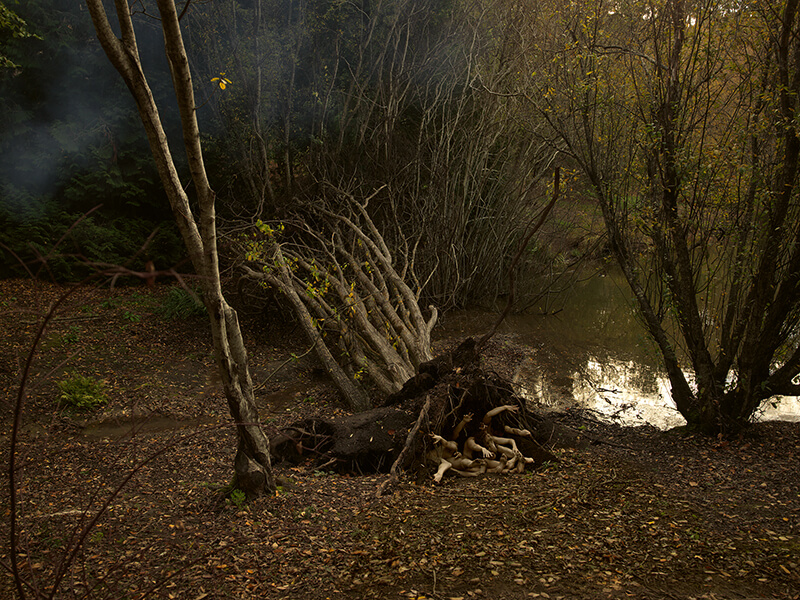
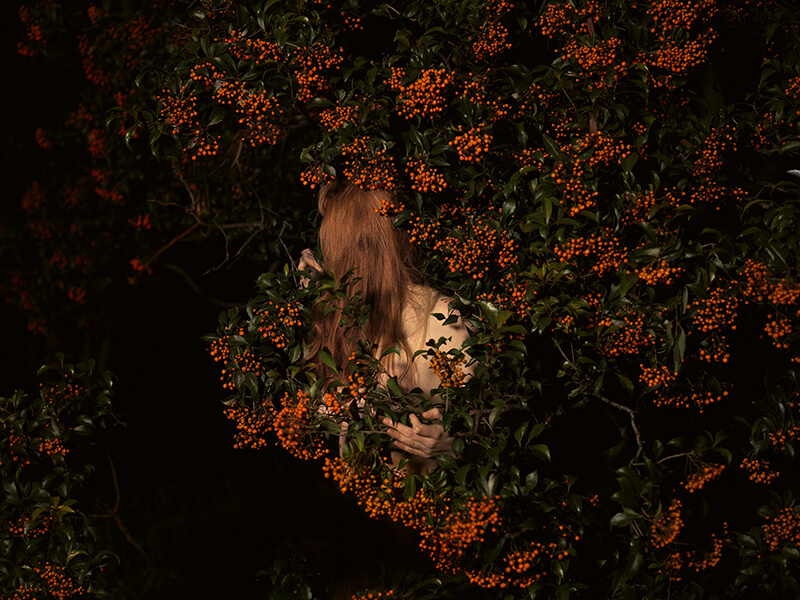
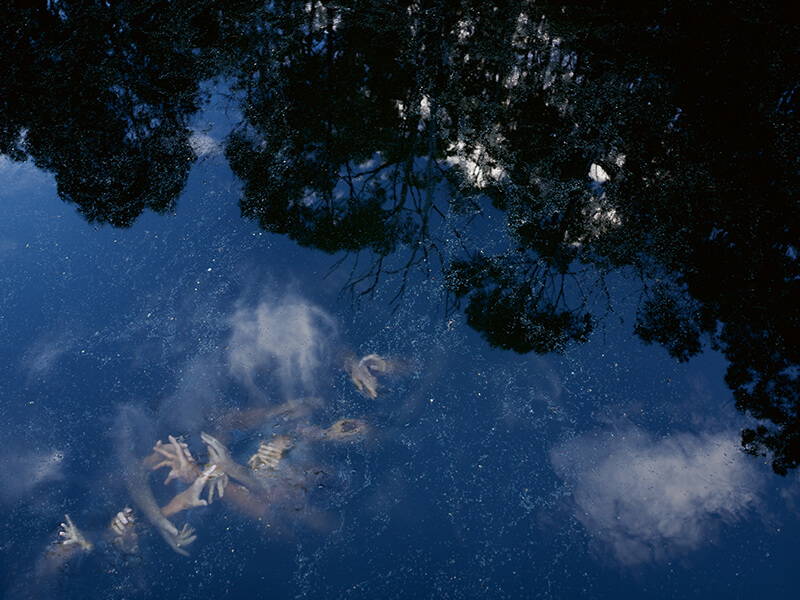
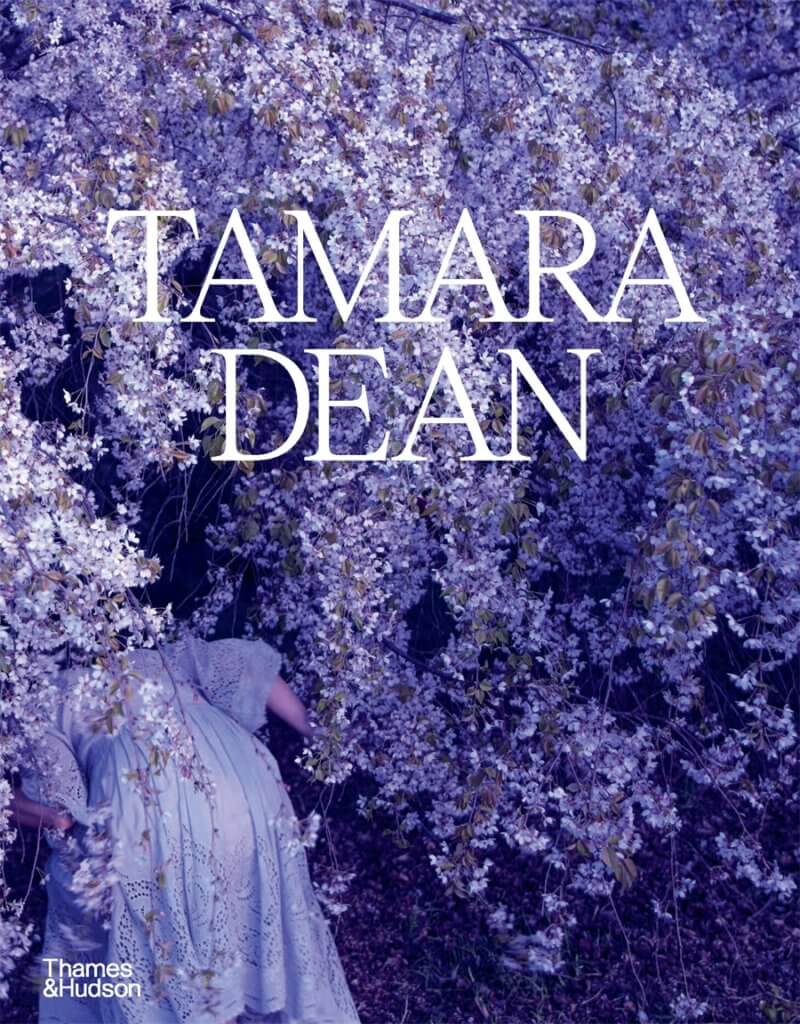
Tamara Dean: A Monograph is available now.
AU $100
Please note that this competition is now closed.
TERMS AND CONDITIONS: WIN a Christmas book pack! (the Competition)
These are the Terms and Conditions (Terms) of entry for the Competition, conducted by Thames & Hudson Australia Pty Ltd (Thames & Hudson Australia), whose registered office is at 11 Central Boulevard, Port Melbourne, Victoria 3027.
Please read these Terms carefully because you will be deemed to accept them if you enter the Competition.
For all questions relating to this competition, please contact Thames & Hudson Australia at: enquiries@thameshudson.com.au
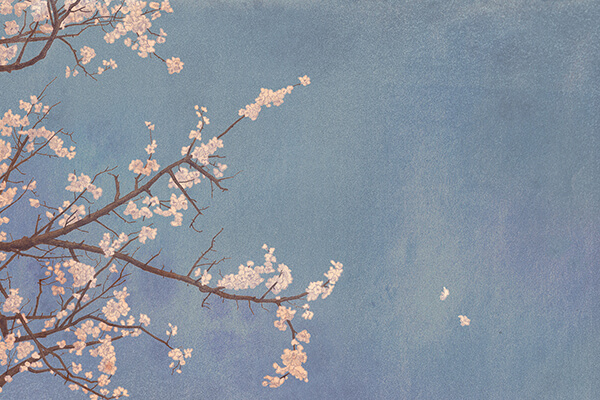
Teacher’s notes by Amanda Robinson.
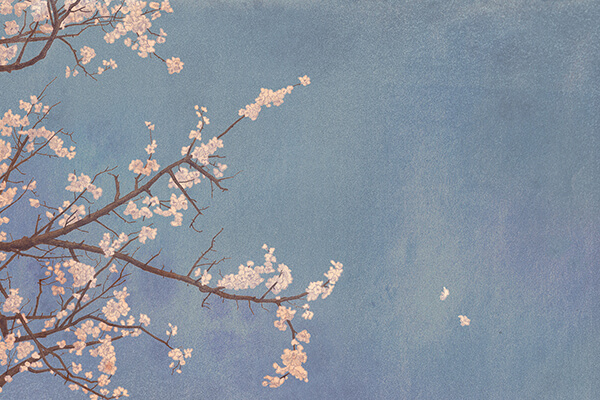
It goes without saying that all children believe their parents to be strange. Mine were unusual for a different reason…
One boy’s parents travel from far-off lands to improve their son’s life. But what happens next is unexpected. What does it mean when your parents are different? What shape does love take? And what happens when your parents sacrifice a part of themselves for you?
In this heartbreaking and heart-warming story, CBCA award-winner Zeno Sworder reflects on his own migrant parents’ sacrifices to create a universal story about what it means to give to those you love. Drawing from the sacrifices his Chinese mother made to raise her young family in a small country town, Sworder’s drawings are full of beautiful detail and fairytale settings that explore his own journey from child to parent.
With humour and pathos, Sworder reflects on the strange nature of giving and receiving love and celebrates those parents who embrace a hard life for themselves in the hope of a better life from their children. Full of depth and generosity as well as insight and candour, Sworder brings this gorgeous fable to life.
Zeno Sworder is a writer and artist who lives in Melbourne with his young family. After studying Chinese literature and migration law at university, he ended up as a dish washer. Later, he went on to work as a journalist, an English language teacher, a consular officer, an advocate for refugees and immigrants and a jewellery designer. He is a lover of all stationery but has a particular soft spot for pencils.
Sworder is the CBCA New Illustrator of the Year 2021, and his first book This Small Blue Dot was a CBCA Notable Book, the winner of the 2021 Australian Book Designers Association’s Award for Best Designed Children’s Illustrated Book, and the Designers’ Choice Children’s/Young Adult Book of the Year.
English, Art/Design, critical and creative thinking.
Introductory activity:
Before beginning the book, have the students draw a picture of their immediate family/caregivers and include themselves in the picture.
Ask the students to share their drawing and explain who they have drawn with the aim of demonstrating both the similarities and the differences between each students’ drawings.
Share the following definition with the students:
Immigrant: a person who comes to live permanently in a foreign country.
Interaction during reading:
Two initial readings are suggested for this book.
On the first reading, allow the students to observe what they noticed.
Facilitate a discussion about what the students observed on the first read.
On the second reading, direct students to some or all of these moments in the story:
Text response:
Creative response:
Have the students select one of the parents in the story – it could be the boy’s mother or his father. Select one of the following moments from the story and write a journal entry from the point of view of your chosen parent:
Text comparison:
Watch the following reading of The Giving Tree by Shel Silverstein.
Facilitate a discussion using the following questions:
Consider how the pictures tell a story in My Strange Shrinking Parents.
Exercise One:
Have the students respond to the following famous paintings/illustrations. It could be as simple as describing what is being depicted or they could create a story based on the image.
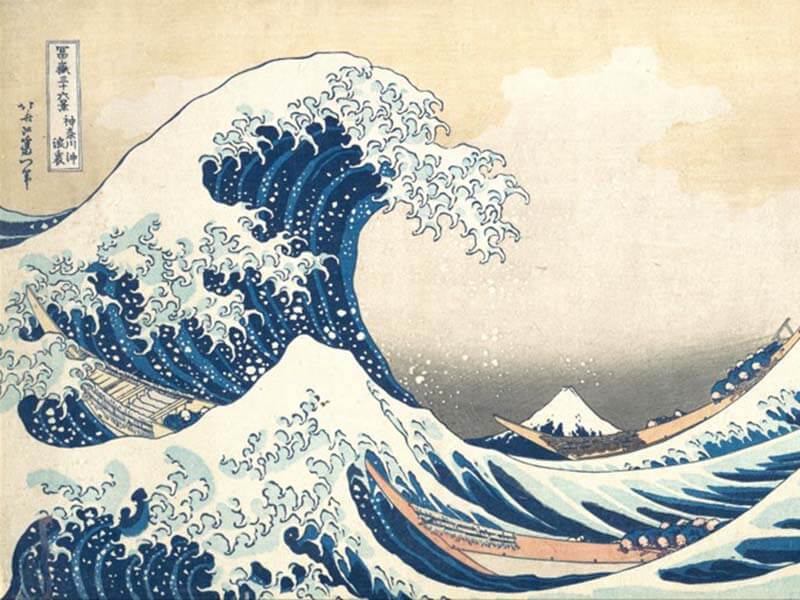
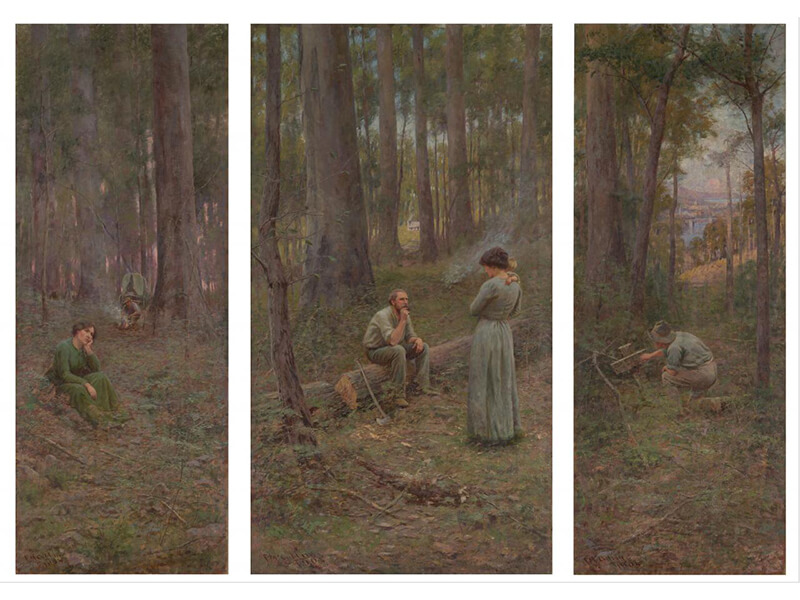
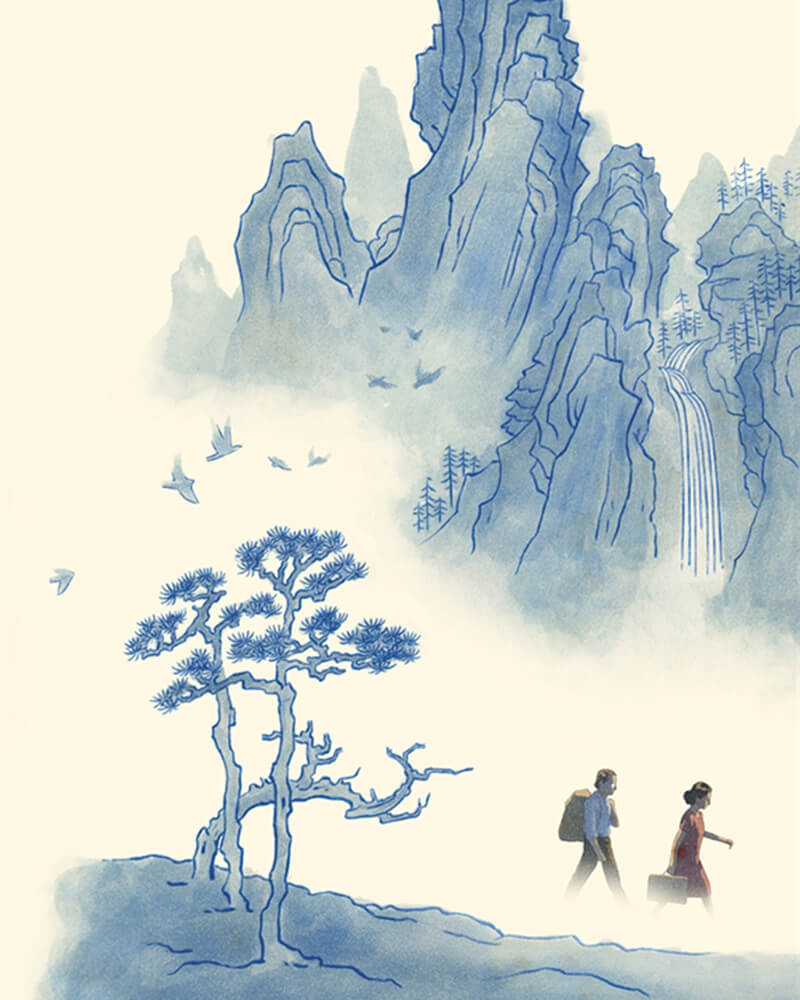
Exercise Two:
Each image has its own style. What does each style tell us about the person who painted it?
Have the students create their own painting or drawing which represents their style or emulates the style depicted in the images provided. Maybe they use lots of colour, maybe they use just one. Perhaps they use a cartoons style or a more realistic style.
Exercise Three:
Notice the tea pots at the start and the beginning and throughout the story. Each tea pot is very different, but they all do the same thing.
Ask the students to consider what kind of tea pot they might be. Have the draw themselves as a tea pot.
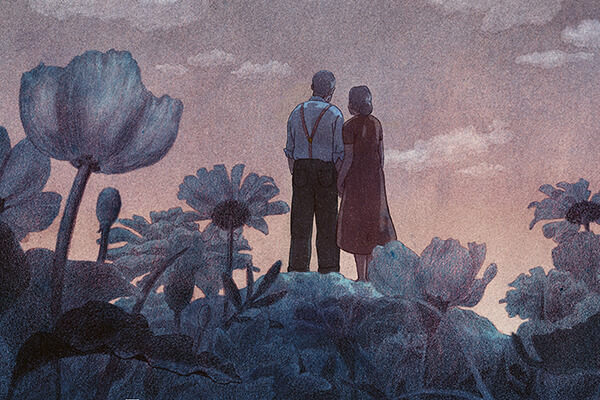
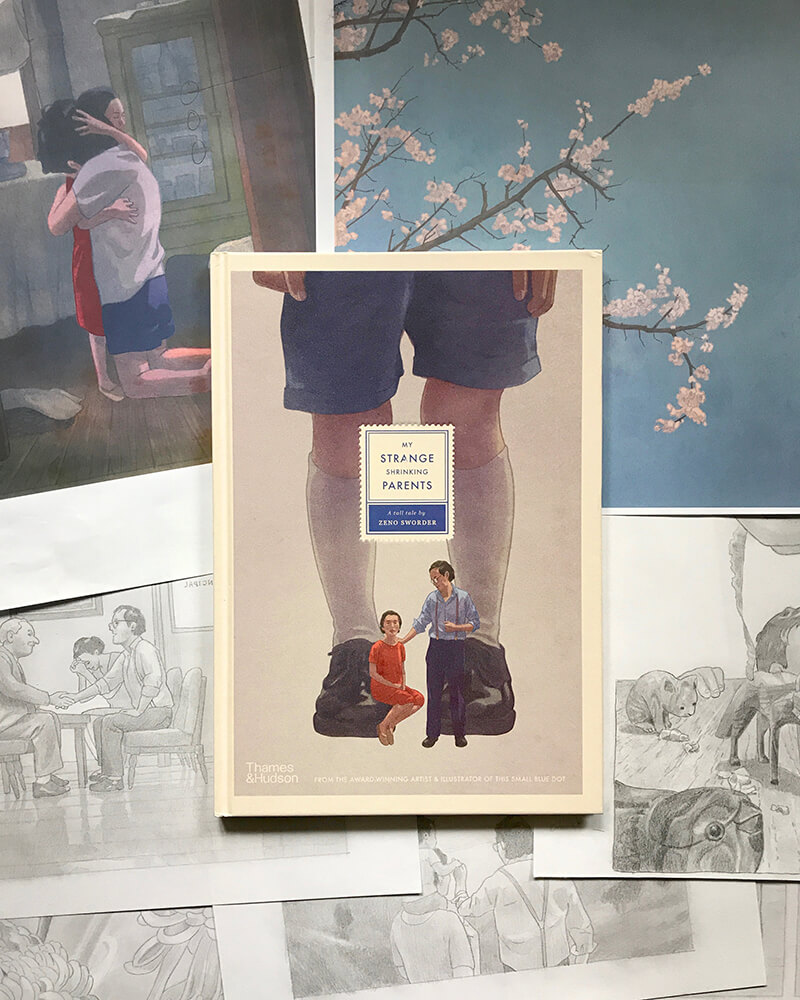
My Strange Shrinking Parents is a fairytale woven together with some of my experiences growing up. It recounts some of the ways in which my Chinese mother narrowed and burdened her own life to raise a young family in a small Australian country town. In a way, the book is the map that I desperately needed as a child who felt out of place. I hope that it provides readers with a different example of family and love that is a bit more than just hugs and sunshine.
The initial plan was to complete the book in a period of roughly ten months. In the end it took more than two years to finish. My early version of the book was more cartoony in style with very generalised characters. The publisher wisely nudged the book in a more specific direction so that it could be grounded with more realistic characters based on my own experience. This helped draw out the universal themes of sacrifice and belonging that are at the heart of the book.
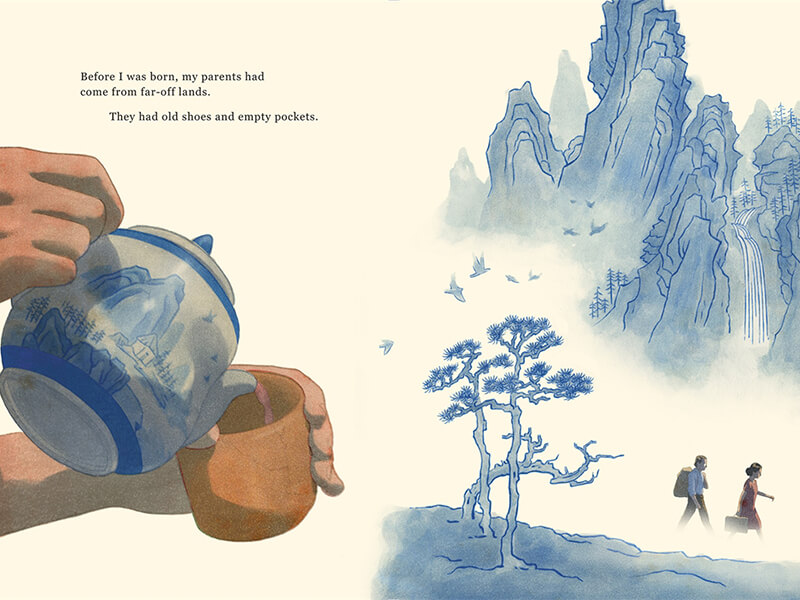
This story is also an echo of the stories of many friends who came from single parent and migrant households. Growing up and spending time in their homes, I recognised my own parents’ sacrifices and I learned something about the strange nature of love – the many different ways it can be shown – and how when given it doesn’t only enlarge the person receiving the love, it enlarges the person giving it as well.
The most difficult page of the book was the very last image. Central to the book and its structure is the idea of love being cyclical. The book opens with the parents caring for their young child and closes with the child caring for his elderly parents. While the text did not change, the image that would work best was a question the publisher and I kept on returning to. After drafting a number of different images we finally settled on the very first picture I ever made of the parents: two tiny figures standing in a garden watching the sun set.
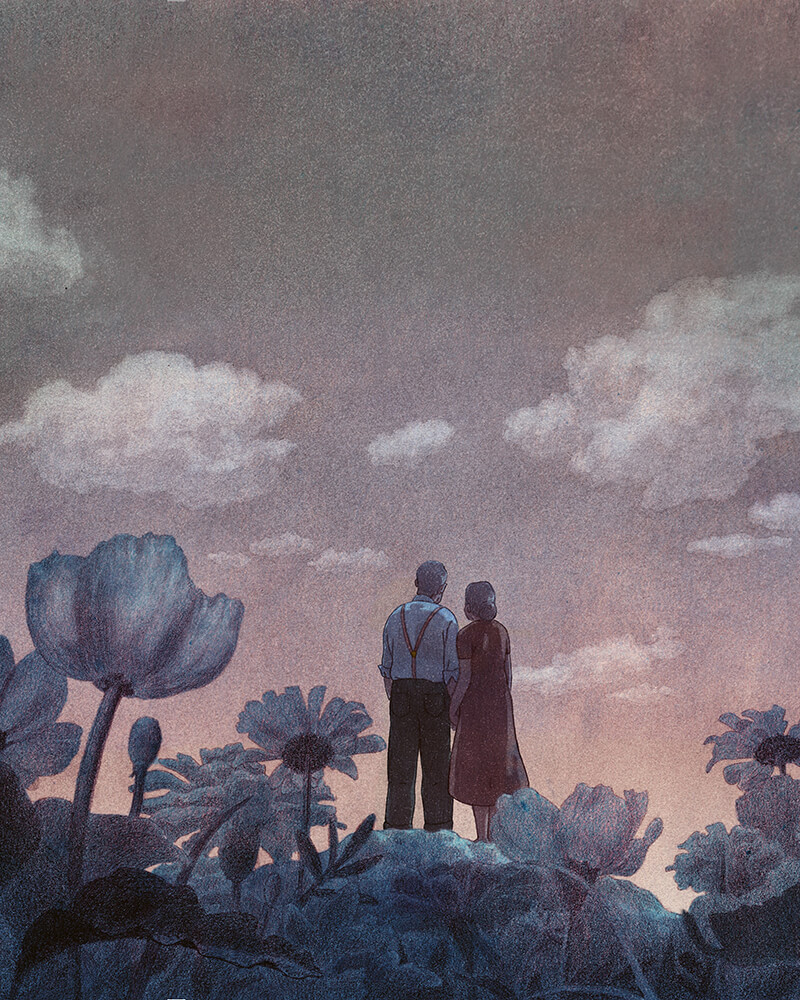
The art in the book is heavily inspired by the ukiyo-e artists Hokusai and Hiroshige. I grew up surrounded by Asian art and my Chinese grandmother was a traditional brush and ink painter. There is a page in the book that pays homage to her work where the boy imagines his parents walking through a Chinese landscape painted on a teapot. While I am not a formally trained artist, I pray that the book has been made in an artful way and that it provides an engaging story and captures some of the emotion that was poured into the making of it.
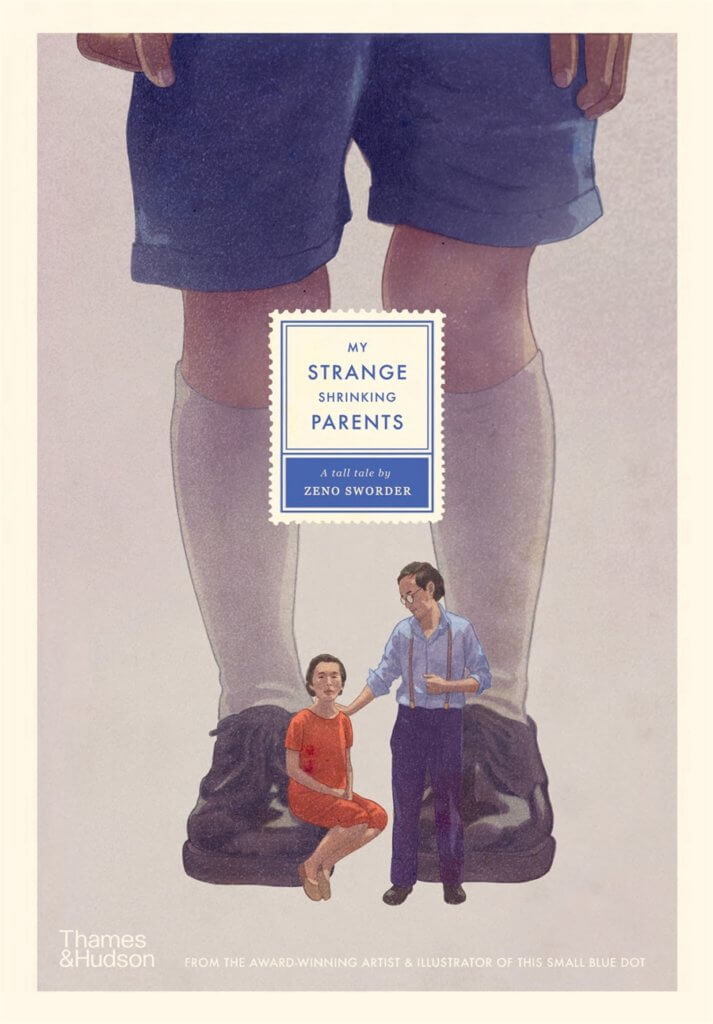
My Strange Shrinking Parents by Zeno Sworder is available now.
AU $25.99
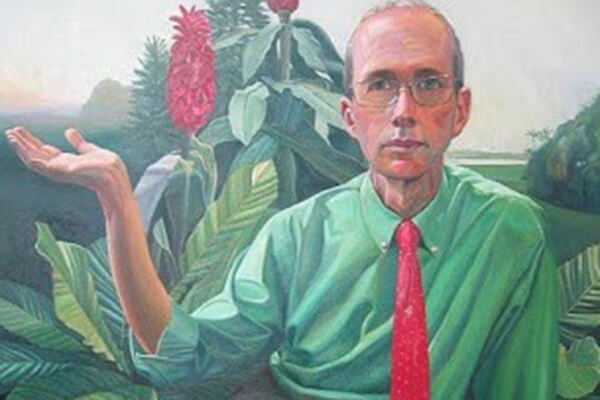
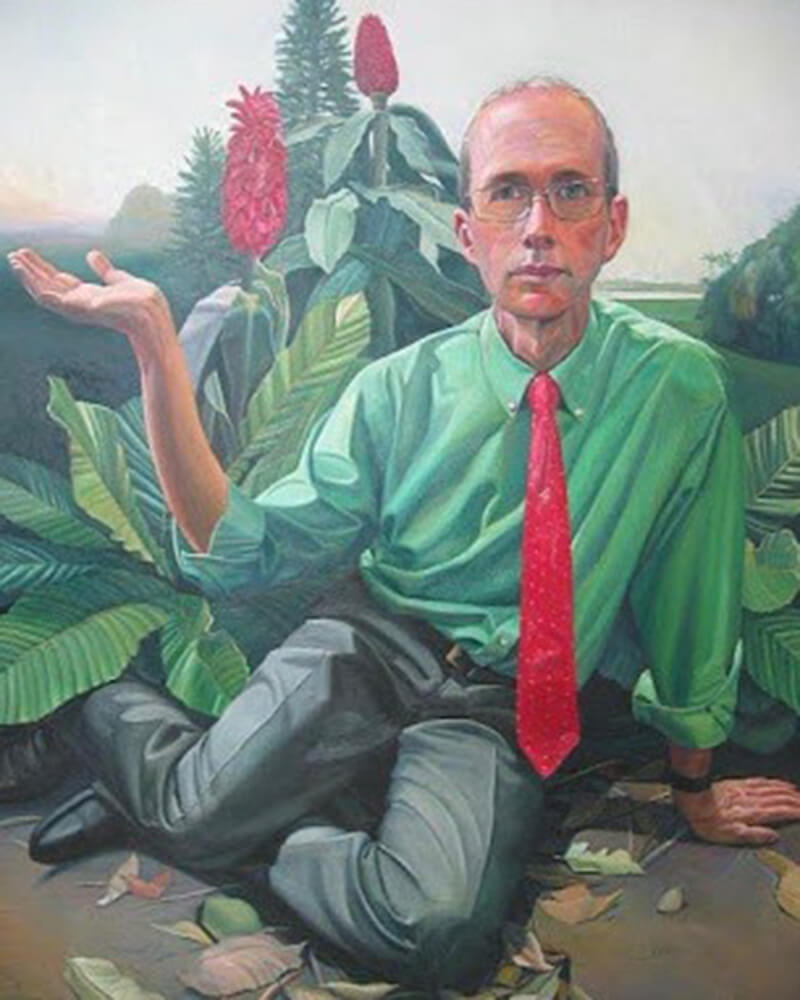
My visit to Padua was at the start of a seven-week holiday in Europe with my wife, Lynda, part of a three-month break from my job as director of Sydney’s Royal Botanic Garden. It was time to recharge and refresh, but also to do a little writing if I could find the inspiration. In the prospicient timescale of botanic gardens, I was, after four years, still a newbie in my job. My best known accomplishment so far was a ‘chainsaw massacre’ of fig trees in Sydney’s Domain. I was doing regular radio interviews and publishing occasional pieces of writing about plants and gardens, but this was at the start of my career as a botanic garden director. Early enough to not be obsessed with legacy, but late enough to be a little cocky about the importance and value of botanic gardens. By 2008, I’d been working in botanic gardens continuously for eighteen years, plus another nine months during a gap year in my university studies.
In Padua, I was being tested not by an oracle but by a novel [Robert Dessaix’s Night Gardens]. And I was up for the challenge. I had plenty of time on my hands, both on the slow train to Milan as well as over the weeks ahead. It was a chance to take stock and to return to Sydney better equipped to spruik the wonders and wherefores of a botanic garden. First, of course, I questioned the facts and the logic [of Dessaix’s arguments against botanic gardens] that’s what scientists do. We’ve all picnicked in one of our gorgeous Australian botanic gardens, so while it may not happen in Europe, where even walking on the grass is discouraged, it does happen. As for views and vistas, let me just list one: the unforgettable spectacle of the morning sun on Table Mountain, seen from Kirstenbosch Botanic Garden in Cape Town.
A museum? Well, my friends in the museum world are jealous of me because a botanic garden display changes each day as flowers open and leaves turn, and because every sense is engaged when you walk through our gate. Museum-like at times, but far more than that. I will grant the author his point about botanic gardens generally not being ‘produce gardens’, although later that same year I did eat a botanic garden. It was near Seoul, in the Republic of Korea, and the director of the private Hantaek Botanical Garden treated us to a meal of leaves and flowers picked fresh from his property.
As for god’s creation, I’m not qualified to talk to that, but I can say every botanic garden I’ve visited so far has a rather different objective, mostly allied to intrinsic beauty, science or conservation. Earlier in Night Letters, Dessaix writes about how we now seek paradise in untouched wilderness rather than in ‘the miniature mirroring of God’s perfection’. In Australia, he notes, ‘the Garden of Eden is sought in the rainforests of Far North Queensland and the deserts of Central Australia, not in the Royal Botanic Gardens of Melbourne, however idyllic they may be’.
Having moved from Melbourne to Sydney six years earlier, I was disappointed with this adverse comparison to my old workplace. In any case, again I would admit Dessaix has a point, of sorts. It’s true that nature devoid of overt western influence (to try to be precise with my words) is considered more Edenic or ‘natural’ these days than a western construct such as a botanic garden. In this sense, a botanic garden is more like an art gallery, or museum, or library. Yet it is, or at least can be, much more than all of them.
The problem, as I saw it on my way to Milan, was our inability in the botanic garden world to express why we existed, particularly in the 21st century, other than as a historical curiosity. That was my takeaway from reading that chapter of Night Letters. None of us running botanic gardens thought we were re-creating Gardens of Eden. Beautiful places for sure, but not some kind of utopian garden free of weeds and sin. The plants in a botanic garden do more than provide a bountiful or beatific backdrop. I wanted to unravel this further and find ways to express it through my own botanic garden in Sydney. To capture the essence of a botanic garden if I could, then preach that message from my pulpits – on radio, in magazines and through the design and planning of botanic gardens. And the influence of these public institutions should extend well beyond their fences, into the planning of urban green spaces and through to the care and protection of nature across the precious planet. There was work to do!
But first a confession. I too had low expectations of the botanic garden in Padua. Not due to concerns about paradises lost, or the intrinsic value of a landscape constructed by humans, but because I had only a week before in Florence seen a botanic garden in decline, achieving little more than being there. It was not enough, to me, for a botanic garden to be old and worthy. Not enough to have a few old trees and some Latin names affixed to plaques. Not enough to simply open the gates.
Even keeping those gates open was a struggle for some of the botanic gardens I visited, or tried to visit, in Italy that year. In the country where the modern botanic garden began over 450 years ago, most gardens seemed surprised to have a visitor in the 21st century. In Milan I went to the Orto Botanico twice but although advertised to be open it was shut both times. In Pisa, the garden was only open in the mornings, and I arrived after lunch. The botanic garden in Florence was open but difficult to find, hidden behind a forbidding high wall with an unlikely doorway. Rome was a little different, and more welcoming, but hardly drawing crowds away from the nearby ancient ruins and oddly positioned street fountains.
I couldn’t yet articulate my agenda for botanic gardens, but I knew what I didn’t like: ugly, dull and poorly curated gardens relying on their longevity for credibility. Visiting Padua restored my faith in the history and heritage of botanic gardens as something that could be nurtured and combined with other ingredients to create a good botanic garden. But what would make a great botanic garden, and the ‘World’s Best Botanic Garden’? That was the slightly tongue-in- cheek but deliberately provocative title of a talk I prepared on my return to Sydney. I wanted to explore what makes one botanic garden better than another. Indeed, what makes a garden a botanic garden? And most importantly why does it matter? Today.
Clearly the whole concept, or project, has been a successful one. While the modern botanic garden began in Europe, it soon spread with Europeans into the invaded and colonised world. The earliest outside Europe was most likely a 16th-century medicinal garden in the Portuguese colony of Goa, in what is now India. The Jardim Botânico do Rio de Janeiro in Brazil, famous for its avenue of towering royal palms, was established in 1808 and is the oldest in the Americas.
Elsewhere in the southern hemisphere there was Sir Seewoosagur Ramgoolam Botanical Garden in Mauritius, established in 1736, or more formally as a botanic garden thirty-one years later. The East India Company’s Garden in Cape Town began as a vegetable patch in 1652, but by 1680 had risen to become that city’s botanic garden – a role superseded for the last century by the spectacular Kirstenbosch National Botanical Garden, at the foot of Table Mountain. Australia’s first botanic garden was established in Sydney in 1816. A year later, Bogor became the site of Indonesia’s first botanic garden.
Botanic(al) gardens were slower to take root in North America. The first (in Washington and St Louis) were opened in the 1850s, unless you accept the claim of Bartram’s Garden in Philadelphia to have been a botanic garden since 1728. And while there is a long tradition of ornamental gardening in China, the first gardens that could be described as botanic were not seen until 1860 in Hong Kong, and then 1929 in Nanjing.
Evidently, it can be difficult to determine what makes a botanic garden and when a garden becomes botanic. Most will be a little less ‘botanic’ in their early years even if established as such right from the start. The simplest definition of a botanic garden is perhaps that offered up by the International Association of Botanic Gardens in 1963 as a garden ‘open to the public and in which the plants are labelled’. That just won’t do today, compounded by the first element being only partly true in places like Italy. There have been attempts to expand that definition to include all the functions of a modern botanic garden, but these end up as a long list of attributes such as scientific research, plant collections, sharing of information with other gardens, exchange of seeds, education programs and, yes, public accessibility and plant labels.
My own preferred and self-crafted definition, at least before I headed to Italy in 2008, was ‘an inspiring landscape of documented plant collections, where every plant and setting has a purpose’. Typically, that purpose is for science, conservation or learning, but it may be equally for health or, let’s say, philosophy and culture. Anything really. This places the distinction between a botanic garden and a garden on its plants and the way they are arranged to fulfil a clear intention, and usually more than sheer beauty (although that helps).
I realise this definition is a little hazy around the edges. Surely, you argue, a local park has an oak tree to give shade and a rose to provide pretty flowers for a few months (and, less purposefully, an ugly, thorny stump for the rest of year). It’s a matter of degree. In a botanic garden the plant species, its source, its biology and ecology, and the story we tell about it are of utmost importance. In a good botanic garden, we tell many stories, and I want to share the best of these with you in this book.
Oh, and I’m your perfect guide by the way. Not just because I’ve headed up two of Australia’s major botanic gardens and held a senior role in the famous Kew Gardens of London, but because I’m an algal expert and wannabe journalist who started university to major in maths and physics. After more than three decades working in and exploring botanic gardens, I still feel like an outsider looking in. That means that I, like you, still have a sense of innocent wonder and anticipation.
Let me explain.
This is an edited extract from ‘Evergreen’ by Tim Entwisle.
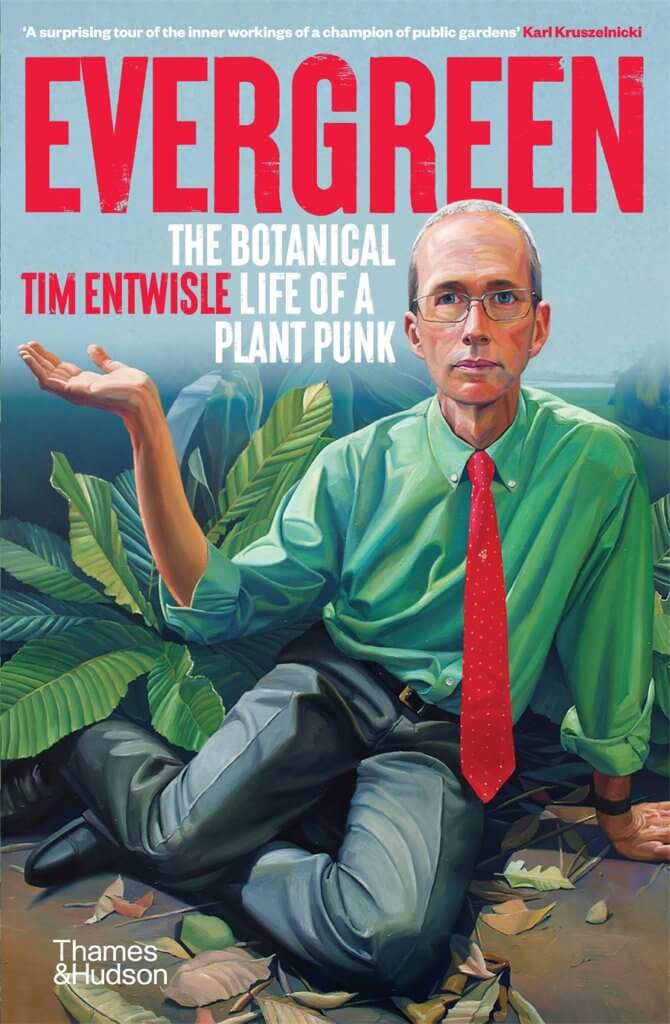
Evergreen by Tim Entwisle is available now.
AU $39.99
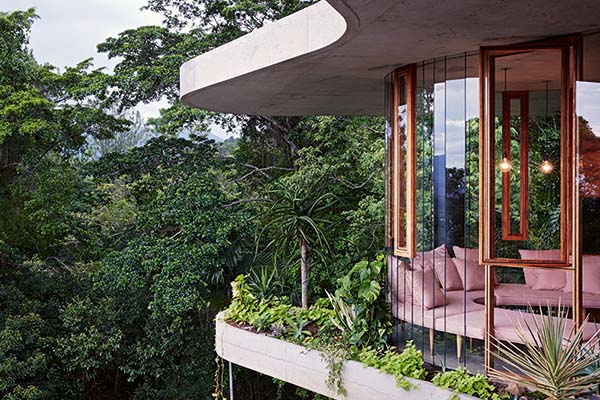
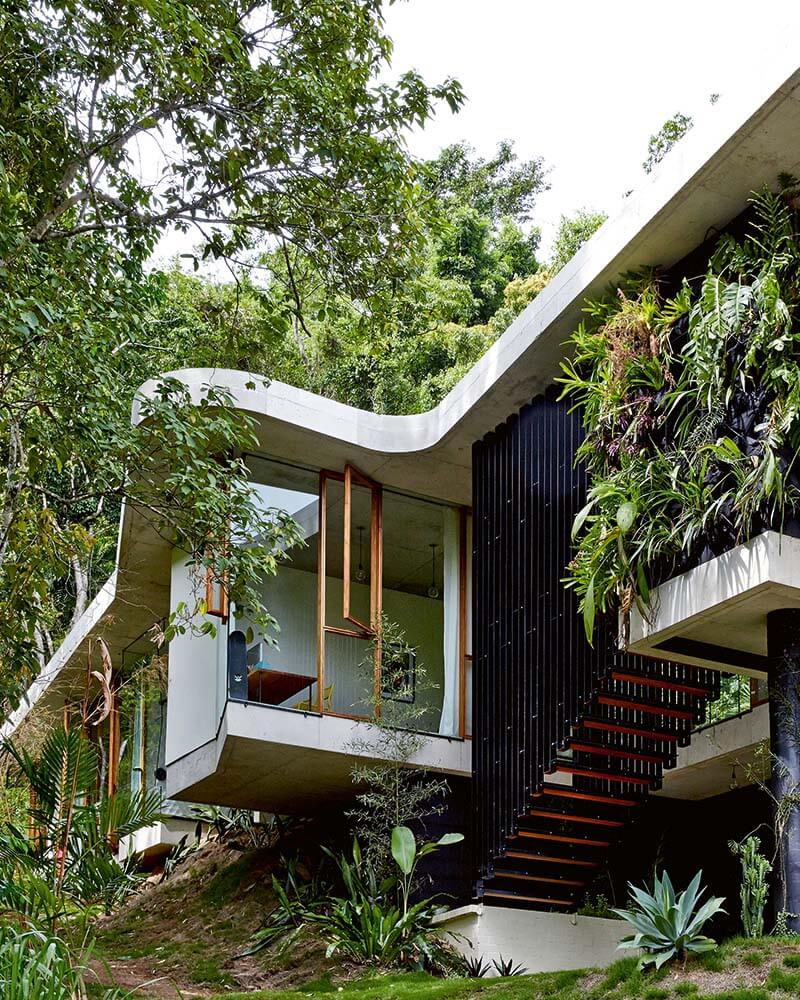
Edge Hill, Cairns
Jesse Bennett Studio
Completed – 2014
Project type – New build
Total site area – 4818 m2
Internal area – 245 m2
External area – 35 m2
Number of residents – 2
Number of bedrooms – 3
Number of bathrooms – 2
Planchonella House is built on the land of the Yirrganydji people
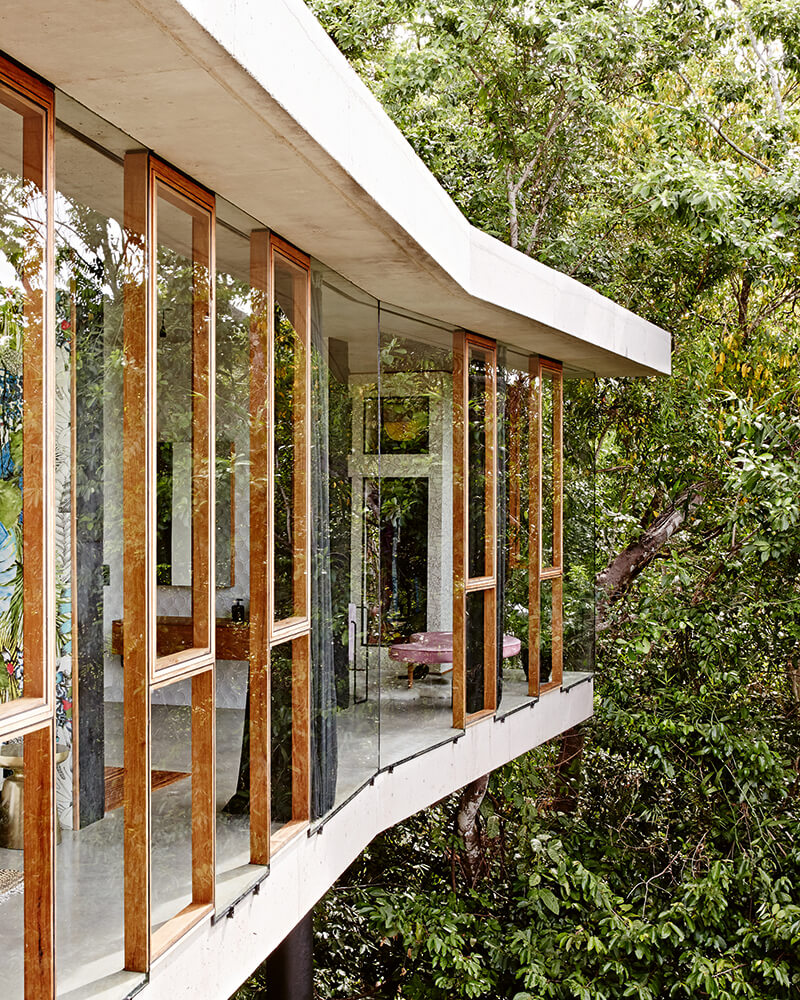
The architectural setting
The Australian Institute of Architects launched the National Architecture Awards in 1981 and the program’s highest award for residential architecture is named in memory of the mid-century Melbourne architect and critic Robin Boyd.
In the first two decades of the awards program eight Queensland architects received this prestigious gong. More than half of these houses are located on the sunshine Coast and this exemplary cluster are predominately homes designed by the architects for themselves, including the ground-breaking Tent House by Gabriel Poole (see page 294) and the Pie residence by Geoffrey Pie (see page 294). The urbane D House by Donovan Hill (see page 292) was the first Robin Boyd winner from Queensland in the new century and in 2015 Jesse Bennett Studio’s Planchonella House in the tropical north of the state was recognised.
Bennett is the youngest architect, to date, to be awarded this honour. This enigmatic, climate-responsive villa is deeply immersed in the lush landscape hinterland of Edge Hill, a suburb of Cairns and the location of the city’s botanic Gardens. This is a distinguished work of residential architecture and an enthralling statement about the future direction of its author’s collaborative practice.
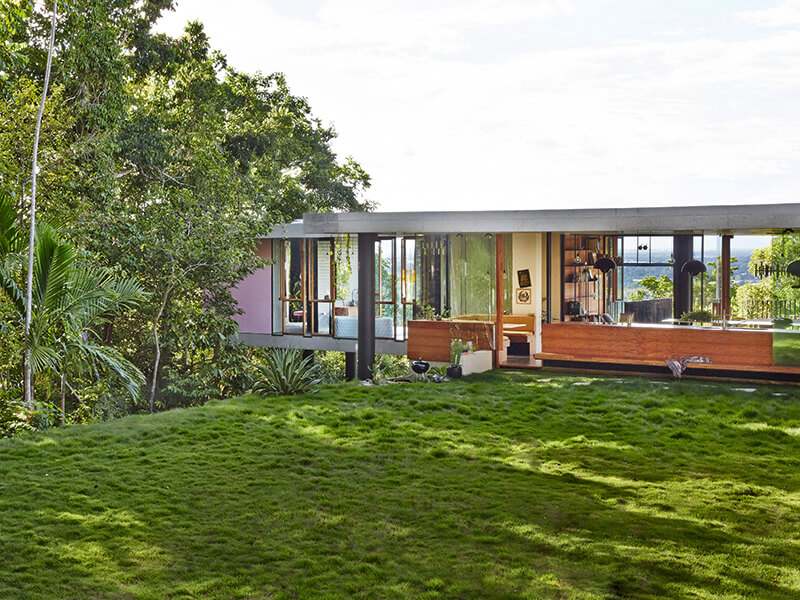
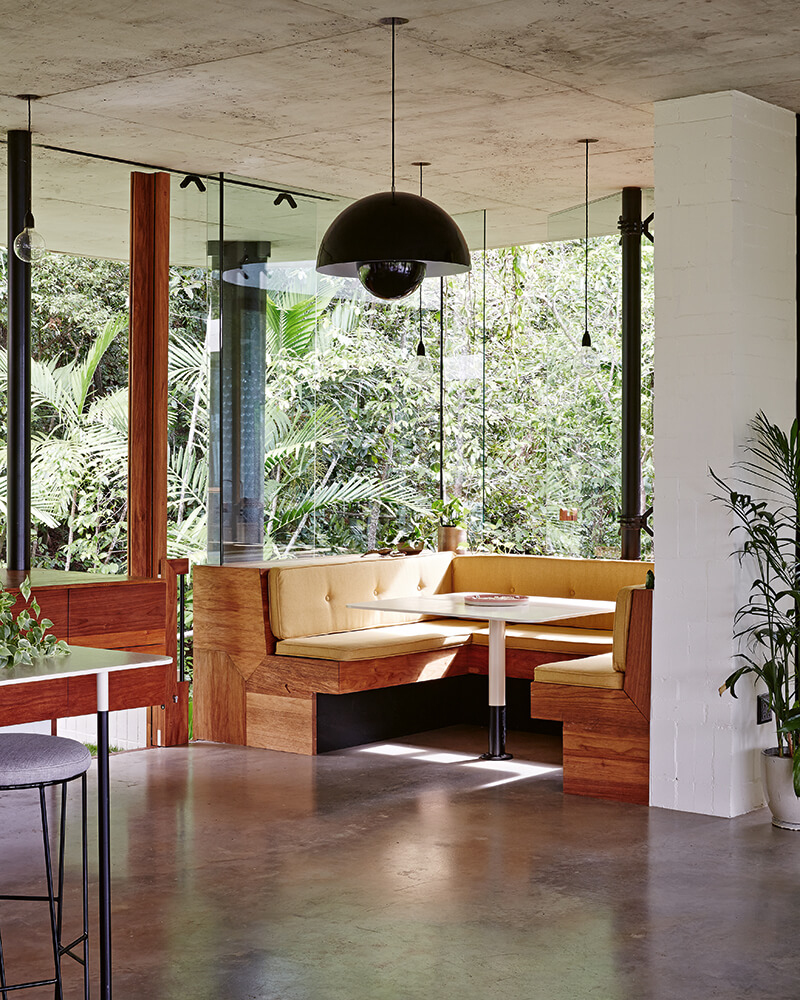
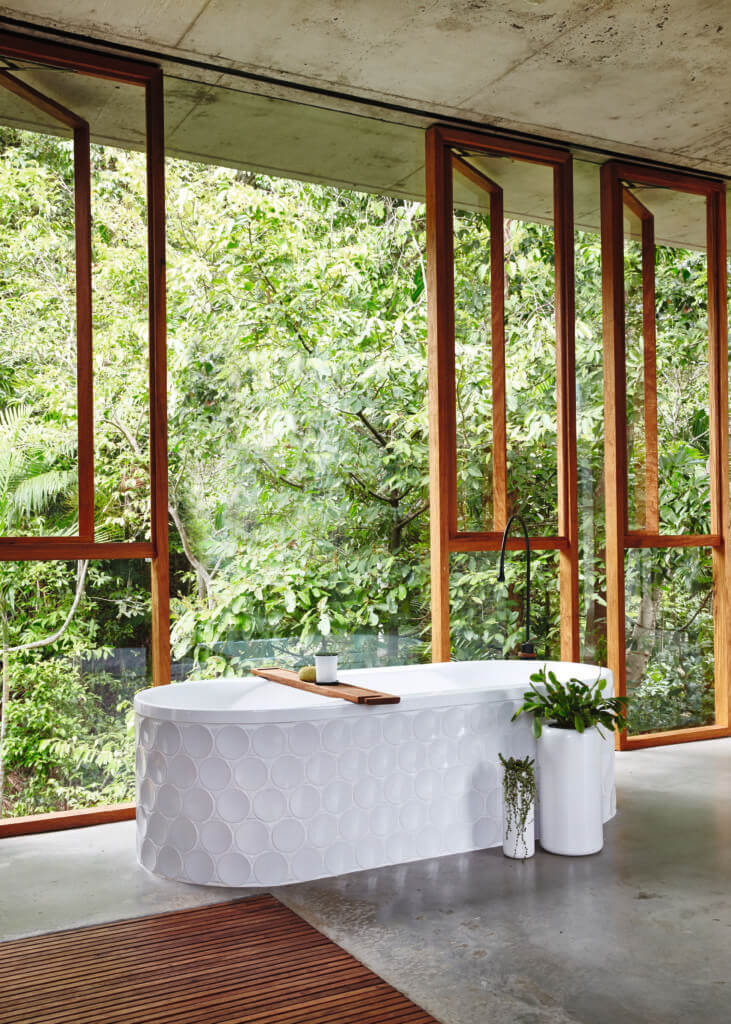
The lived experience
Architect Jesse Bennett moved from Brisbane to Cairns in Queensland’s tropical north with his wife Anne-Marie Campagnolo in 2010. While the couple were in the region visiting Anne-Marie’s family, the allure of the majestic tropical rainforest intrigued Jesse. Having grown up on a farm three hours’ drive from Cairns, Anne-Marie was more familiar with the extremity of the climate and landscape in this part of the world – but was similarly inspired by the prospect of building a home that genuinely embraces its unique tropical setting.
During Jesse and Anne-Marie’s family visits to Tropical North Queensland, Jesse was struck by the way many of the farmers would gather in the timber sheds for a beer or a cup of tea. shaded and breezy, these structures are akin to cool undercroft spaces. Jesse designed the couple’s new home, Planchonella House, taking cues from these simple sheds. Double the area of the floor plate it hovers above, the roof amply protects the internal and external spaces from the harshness of the sun. Breezes pass down the mountain through the wet foliage and are cooled, even in the thick humidity of the summer months, before passing through the home, from back to front.
The harshness of the wet tropical weather dictates the climatic response, but it’s the embrace of the forest’s immensity that creates the home’s calming ambience. ‘You open the kitchen window and the energy of the forest is in your house,’ says Anne-Marie. Floor-to-ceiling glazed walls give way to unobstructed views to the surrounding landscape from every room, allowing the proven benefits of biophilia to permeate the home. It’s a miniature world of delight and escapism.
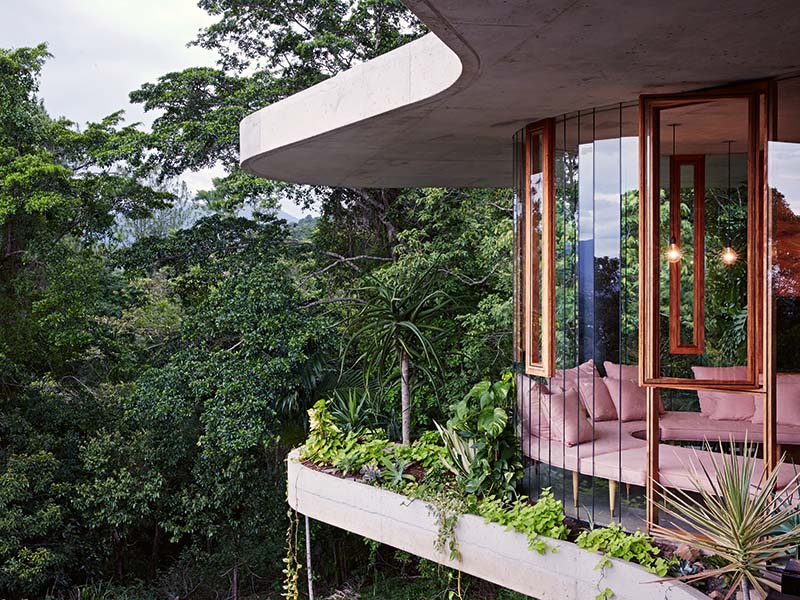
Architect — Jesse Bennett Studio
Project team — Jesse Bennett and Anne-Marie Campagnolo
Engineer — Kel Bruce Engineers
Interiors — Anne-Marie Campagnolo
Photographer — Sean Fennessy
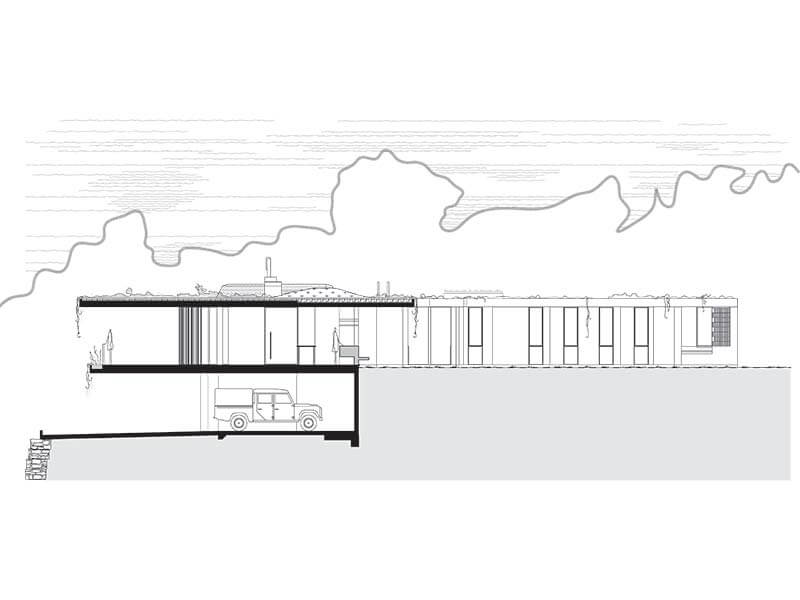
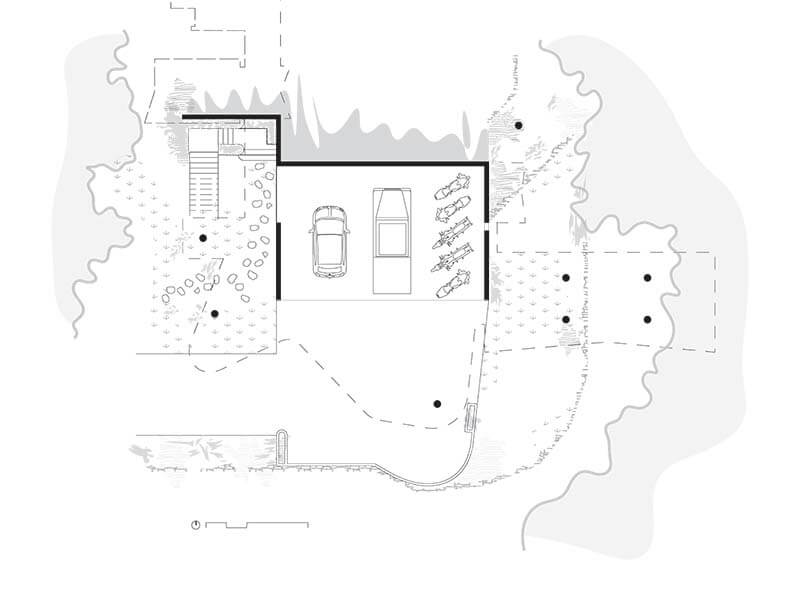
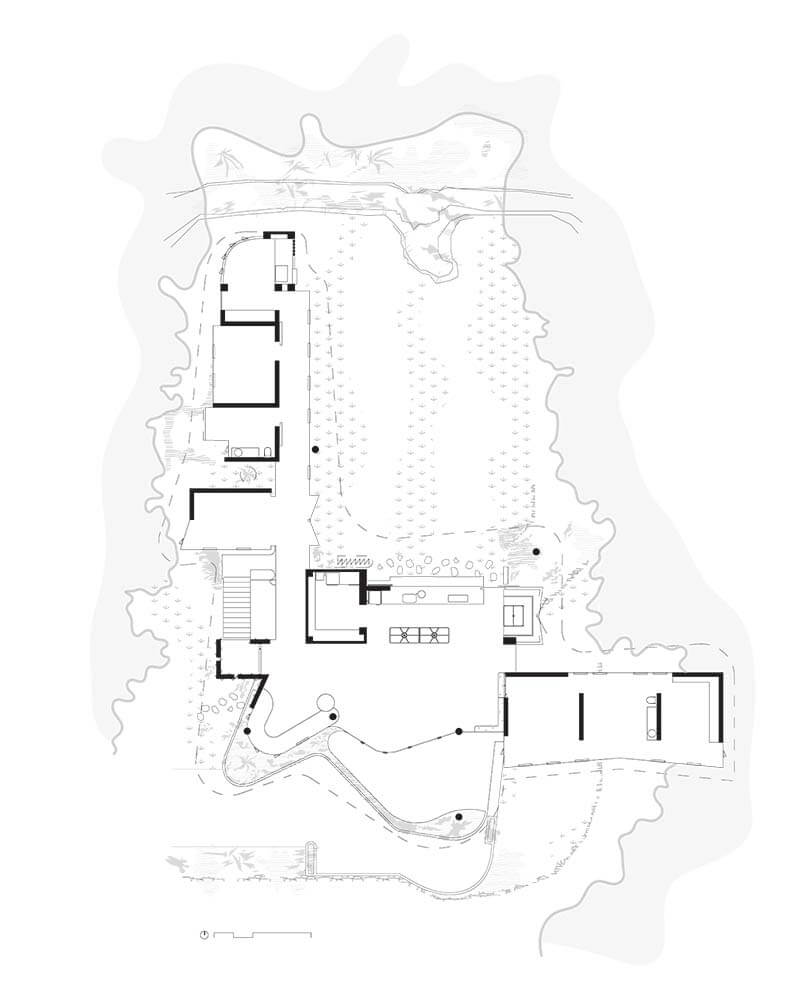
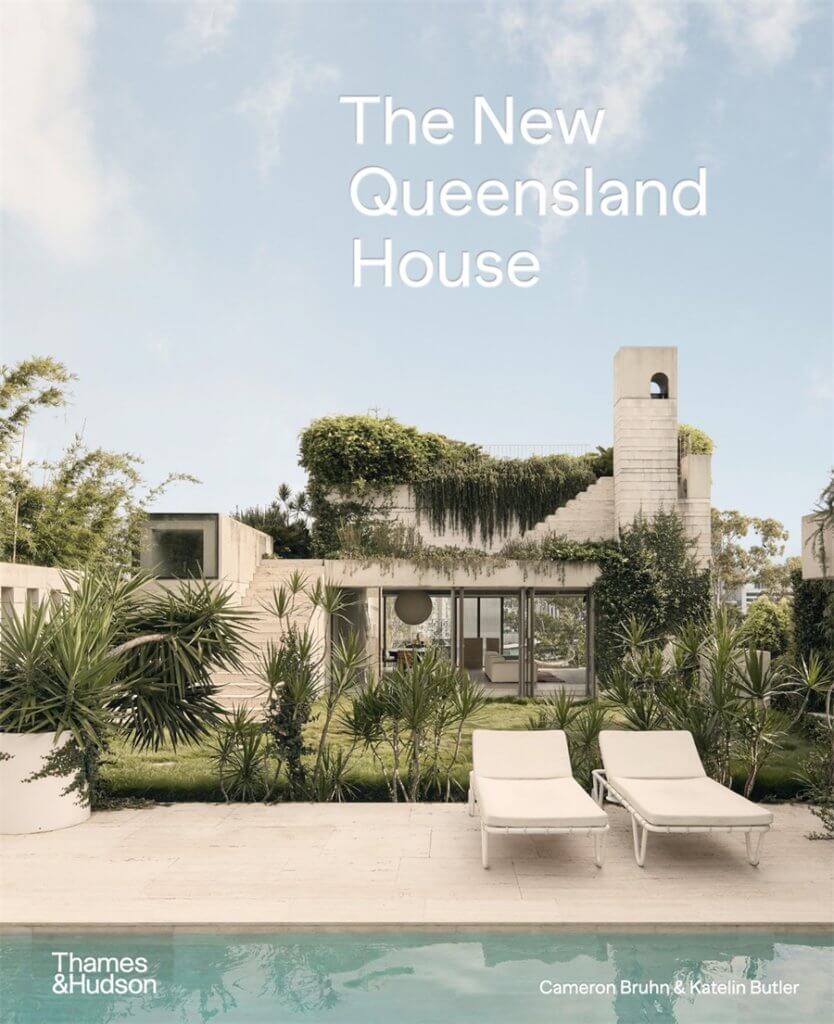
The New Queensland House by Cameron Bruhn and Katelin Butler is available now.
AU $70
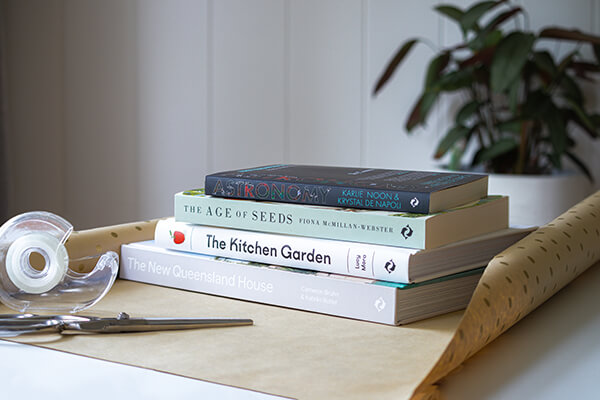
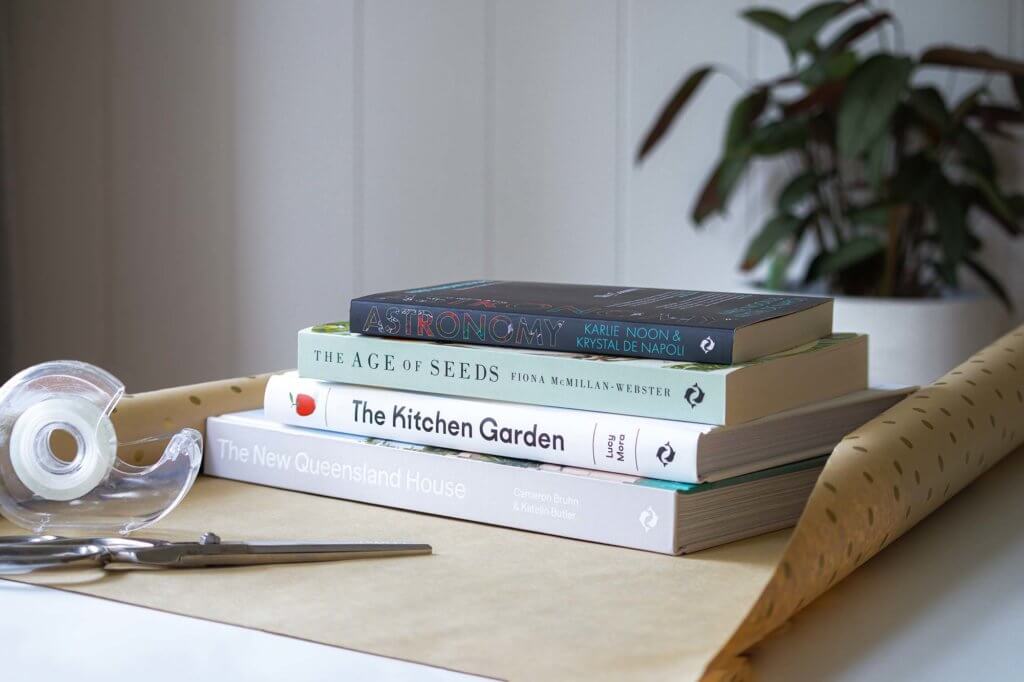
This Father’s Day, we invite you to explore our charming collection of gift ideas for your loved one.
Discover inspiring Australian art and architecture titles, explore the wisdom of nature, or settle down with a game or puzzle.
Whatever their interest, we have something for everyone this Father’s Day.
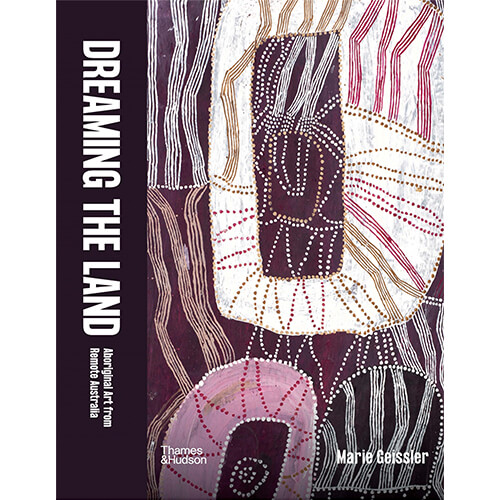
Marie Geissler
A vividly illustrated history of the Australian Aboriginal art movement from remote Australia.
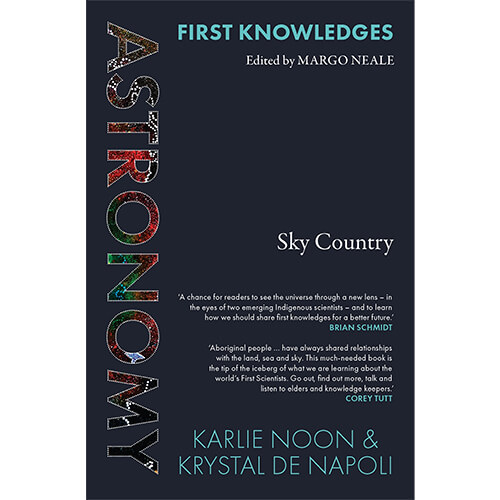
Karlie Noon &
Krystal De Napoli
Explore the sophisticated astronomical expertise embedded within the Dreaming.
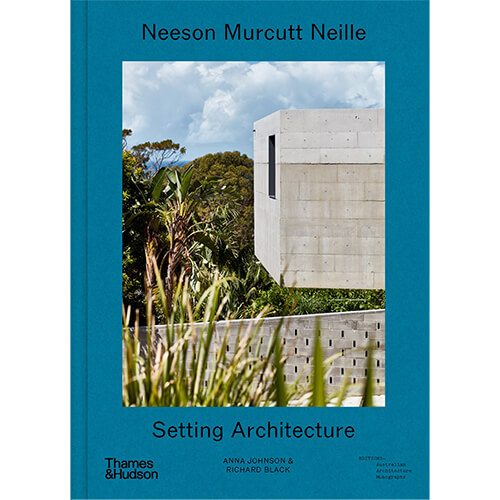
Anna Johnson &
Richard Black
Celebrate Neeson Murcutt Neille’s deeply empathetic approach to making architecture in this monograph of their practice.
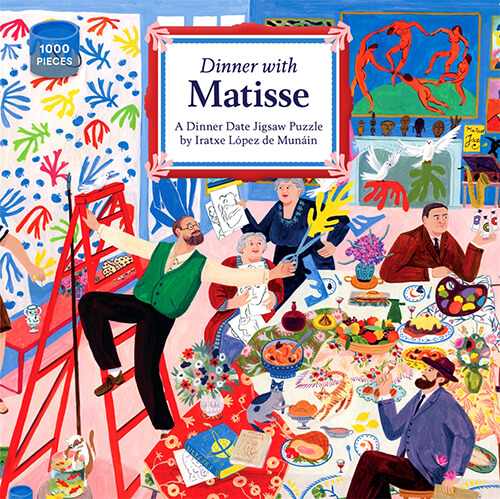
Iratxe López de Munáin
Piece together the artists, artworks and surroundings that bring Henri Matisse’s world to life in this colourful 1000-piece puzzle.
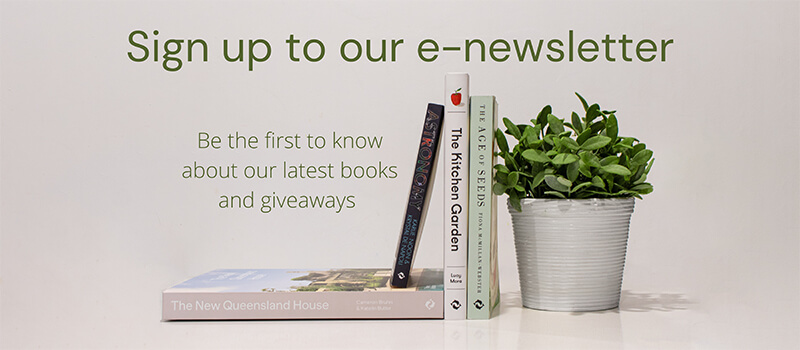
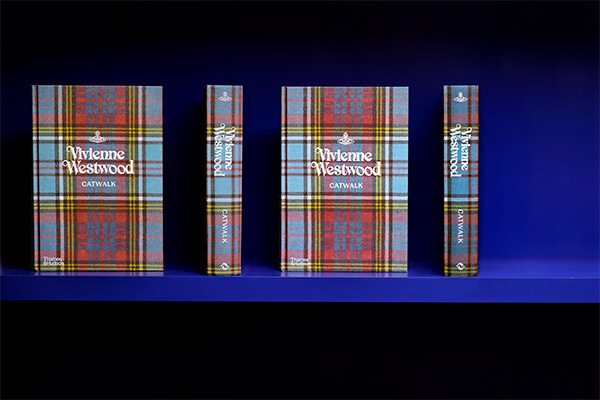
WINNER: to claim prize.
TERMS AND CONDITIONS: WIN a signed copy of Vivienne Westwood Catwalk (the Competition)
These are the Terms and Conditions (Terms) of entry for the Competition, conducted by Thames & Hudson Australia Pty Ltd (Thames & Hudson Australia), whose registered office is at 11 Central Boulevard, Port Melbourne, Victoria 3027.
Please read these Terms carefully because you will be deemed to accept them if you enter the Competition.
For all questions relating to this competition, please contact Thames & Hudson Australia at: enquiries@thameshudson.com.au
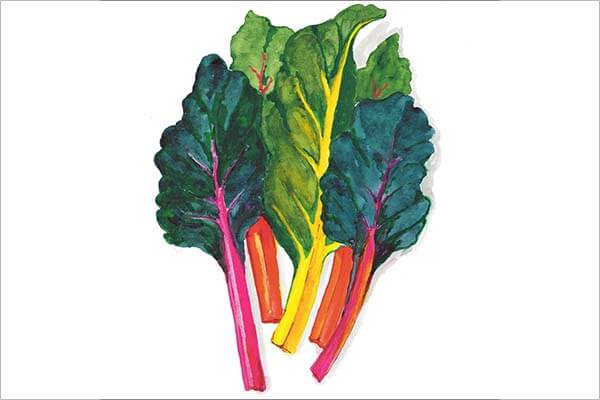
Rainbow chard (also known as silverbeet) is frost tolerant and can be sown all year round, making it a perfect choice for those in the southern hemisphere unsure where to start with their own kitchen garden.
Read on for a recipe for pickled rainbow chard from The Kitchen Garden by Lucy Mora.
Makes 2-3 medium preserving jars
Method
Pack washed chard into sterilised glass jars along with dill and garlic.
Put 250 ml (1 cup) of water in a medium saucepan and add vinegar, peppercorns, mustard seeds, chilli flakes, salt and sugar. Bring to a boil and simmer until sugar and salt has dissolved.
Carefully pour the hot brine over the chard. Let jars cool to room temperature.
Seal jars and refrigerate for at least 3 hours before serving. Use within 3 months.
Ingredients
3 cups rainbow chard stalks, chopped
2 large sprigs of dill
1 small garlic clove, thinly sliced
250 ml (1 cup) water
250 ml (1 cup) white vinegar
1 tsp black peppercorns
1tbsp yellow mustard seeds
1/2 tsp dried chilli flakes
2 tsp kosher salt or any salt without iodine
1 tsp granulated sugar
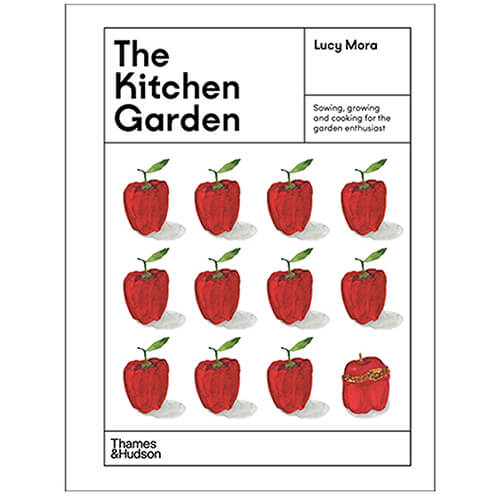
The Kitchen Garden by Lucy Mora is available now.
AU $45
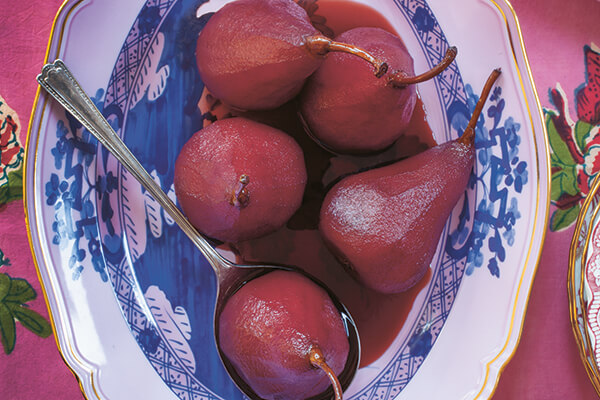
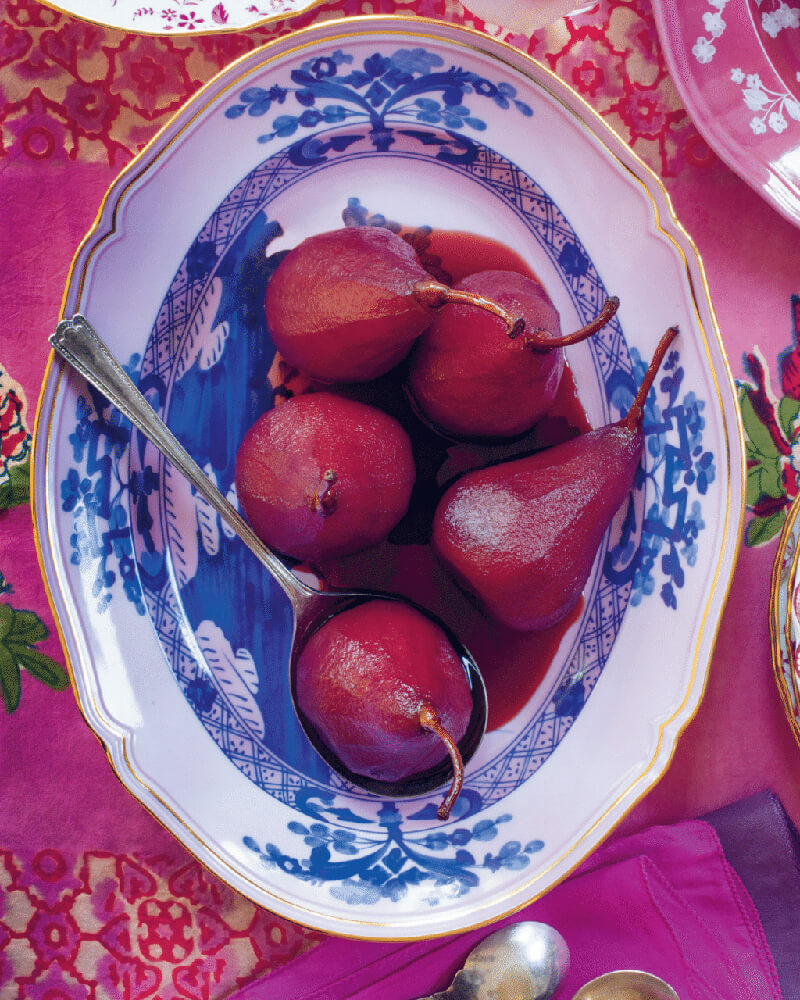
My mother always made these poached pears on cold winter nights. I love to serve them following a heavy meal – the fruit provides a sweet and mellow finale to a feast, while the red wine sauce makes this a robust and comforting winter dessert.
Serves 6
Juice of 2 lemons
6 pears, ripe but firm
1 bottle hearty red wine
300 g brown sugar
Juice of 2 oranges
Seeds from 20 g cardamom pods (crack the pods to remove the seeds)
2 bay leaves
Crème fraîche, double cream or vanilla ice cream, to serve
Preparation: 10 minutes
Cooking: 40 minutes
Add half the lemon juice to a bowl large enough to hold all the pears.
Put 200 ml water and all the ingredients except for the pears into a large pan. Gradually bring to the boil over a medium heat, stirring to ensure that the sugar dissolves completely. Once the poaching liquid is boiling, reduce the heat and allow to gently bubble away for 5 minutes, so that the alcohol evaporates.
Peel the pears (leaving the stems on), and trim 5 mm from the bottom of each one so that it can stand up. Put each prepared pear in the bowl of lemon juice as you go, coating it in the juice to stop it turning brown.
Holding each one by its stem, gently lower the pears into the poaching liquid, then add the bowlful of lemon juice and bring the liquid to a simmer. Cover the pears with a sheet of baking parchment, pushing it down flat to the level of the liquid and pears. Simmer for 20 minutes. Remove the parchment paper and transfer the cooked pears to a plate, standing them upright on their trimmed base. Set to one side.
Continue to simmer the poaching liquid, uncovered, for another 15 minutes, or until the liquid has reduced by half. Strain the poaching liquid through a sieve, discarding the cardamon seeds and bay leaves, and then return it to the pan. Add the pears to the pan and coat them in the thickened sauce.
Serve the pears warm. Place a tablespoon of your cream of choice in the centre of each serving bowl, before standing the pear on the dollop and drizzling with some of the sauce.
This recipe is an extract from A House Party in Tuscany by Amber Guinness.
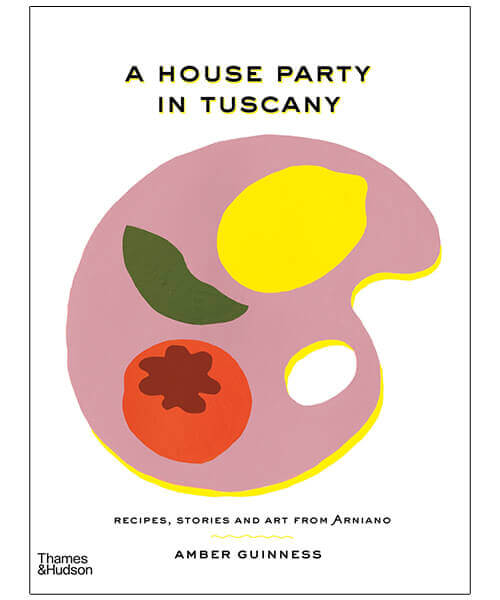
A House Party in Tuscany by Amber Guinness is available now.
AU $65
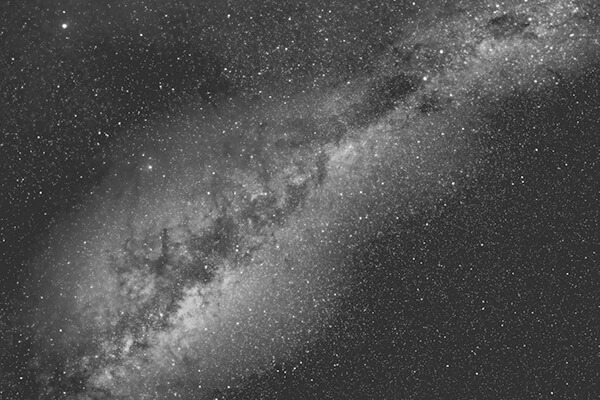
Look in the space between the stars, what do you see? 1
Viewing the world as interconnected is core to Aboriginal and Torres Strait Islander knowledge systems and communities. As such, it is not only inappropriate but also impossible to truly learn about Indigenous astronomy without learning how the sky relates to the land, which all makes up what Indigenous peoples call Country – as captured by the Bawaka Country group in a 2020 paper:
Country includes lands, seas, waters, rocks, animals, winds and all the beings that exist in and make up a place, including people. It also embraces the stars, Moon, Milky Way, solar winds and storms, and intergalactic plasma. Land, Sea and Sky Country are all connected, so there is no such thing as ‘outer space’ or ‘outer Country’ – no outside. What we do in one part of Country affects all others.2
The story of the Celestial Emu exquisitely illustrates the holistic nature of Country and Indigenous knowledge systems.
On a moonless, cloudless night, away from the streetlights’ orange hum and the confines of tall buildings, the dazzling speckled infinite awaits. If you’re close to town, you might see vast darkness with the occasional twinkle. But if you’re far enough away from town, you will no longer see the dark but instead be overwhelmed by the light – point sources dancing and shimmering, performing an astonishing display in the vastness of the cosmos. It’s here we get to know the sky in all of its complexities and subtleties. No one knew this better than the First Astronomers.
During the late southern summer, the Milky Way’s dominating light takes prominence over the entire night sky. As each day passes and winter approaches, the daylight reduces, and as the length of night grows, so too does the Milky Way’s presence in our skies. Among the bold, bright discs of light dwell pools of darkness. These uniquely shaped dark gaps are framed by a dazzling stellar spectacle. The combination of light and dark creates an undeniable feature with which nothing else in the observable sky compares (Figure 2.1). Different peoples see various creatures or places emerge from these features, each with its own meaning. To some, it is a big rip across the sky. To astronomers, it’s an entire galaxy shrouded by space clouds, behind which hides a supermassive black hole. The Wardaman people of the Northern Territory see the Milky Way as the Rainbow Serpent, accompanied by the Sky Boss and Earth Lady.3 The Yolŋu people of north-east Arnhem Land see a crow.4 For many Aboriginal nations, from east coast to west and from the Top End to the south, it is the Dark Emu (Figure 2.2).
The Dark Emu has many names. It’s sometimes referred to as the Celestial Emu. In Gamilaraay it’s called Gawarrgay, and its Dreaming tells us of dhinawan, with ‘Gawarrgay’ referring to the featherless, ceremonial Celestial Emu and ‘dhinawan’ referring to the land-dwelling, flightless bird.
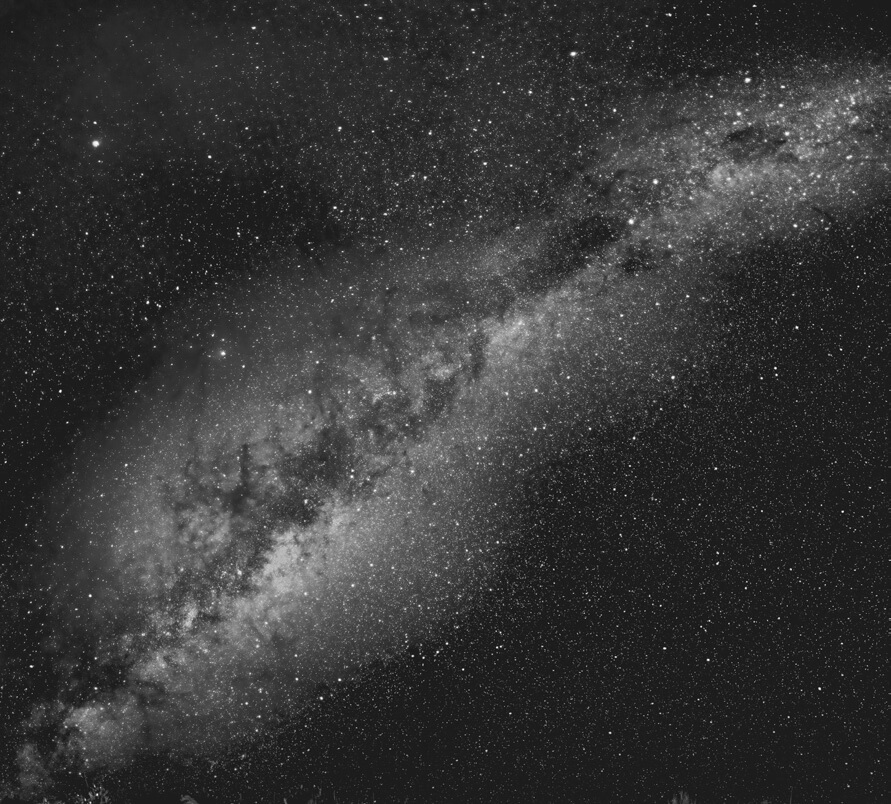
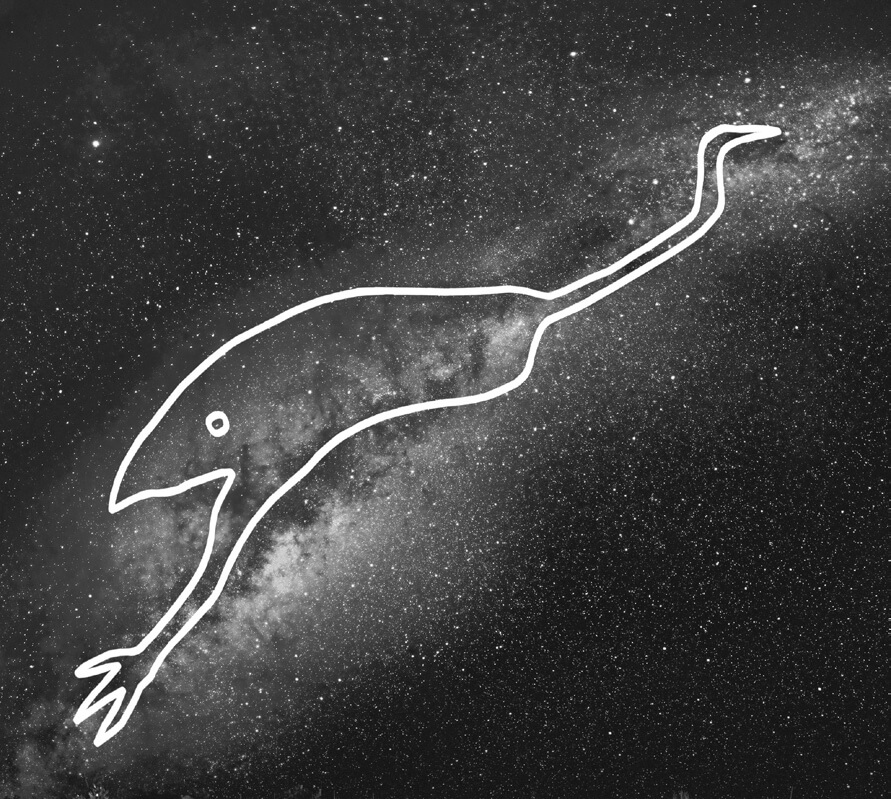
These Dreamings are of particular importance to the Gamilaraay/Kamilaroi as the dhinawan is the nation’s totem. The Dreaming connects the dhinawan’s breeding cycle and its movement across Country, mirroring the movements of Gawarrgay across the sky.
In the months of April and May, Gawarrgay sweeps across the entire celestial sphere, legs and neck stretched out as though running. Kamilaroi man Ben Flick describes its positioning:
Just under the Southern Cross, you’ll see a dark spot. That’s the
head of the emu. In front of him is, of course, his beak, and as you
follow it down, you can see his neck in the dark spots of the Milky
Way. It comes right down to his body. You can see his legs and a
couple of eggs underneath.5
At the same time, on the land, the female dhinawan are chasing the males for breeding. After May, the dhinawan’s gawu (eggs) appear. These are early days for the gawu, before the embryos have had time to develop. The male dhinawan sits on the gawu, protecting the young. The dhinawan is important for Gamilaraay males, as the Dreaming teaches young men about their role in looking after the children in community, as the dhinawan look after the gawu.6 This is the best time for gawu to be collected, but people should only take what they need and leave the rest. If they wait too long in the season, the burrgay (emu chicks) form in the gawu. People should not disturb these gawu as the new generation of dhinawan is taking shape. In the sky, Gawarrgay’s legs disappear as he dives toward the horizon, signalling that the male dhinawan is sitting on the gawu on the land. The Celestial Emu is signalling to the Gamilaraay people to stop hunting as the eggs are now in incubation. As Flick describes it, ‘At that certain time of year, it’s time for us to go out and collect emu eggs. We go out into the bush, always leaving some eggs for next year and for generations to keep going.’7 Burrgay is also the Gamilaraay word for this time of the year (July), further illuminating the animal’s importance to Gamilaraay people and the culture’s holistic nature.
As the year progresses, Gawarrgay changes form and appears as a featherless emu crossing Country. Finally, in November, only the body of Gawarrgay remains, signalling that the dhinawan are currently occupying waterholes. Gawarrgay’s shortened form signifies to the Gamilaraay people to move across Country to access the same reservoirs as the dhinawan, but also to protect them from being overused and destroyed by the thirsty, cheeky dhinawan. When Gawarrgay reappears in February, people start moving from their summer camps and the waterholes to their winter camps. Just a few months later, the annual cycle of Gawarrgay, the dhinawan and the Gamilaraay people repeats.
Analysis of sixty-eight ceremonial grounds by cultural astronomers Dr Robert Fuller and Dr Duane Hamacher and CSIRO astronomer Dr Ray Norris found that the alignment of the Celestial Emu in the night sky throughout the year relates to the positioning and directionality of emu engravings on the ground.8
The sky knowledge connects to the food knowledge, which connects to the seasonal knowledge. It is relational, practical and cyclic. Through an Indigenous lens, everything is connected. This mirroring is a core belief for many Aboriginal and Torres Strait Islander peoples. We see it in the Dreaming of Gawarrgay and the land dhinawan. Similarly, in Gamilaraay, Bulimah or Sky Camp is positioned behind the Milky Way, where camp sites, tribes and ancestral places reside.9 Same same but different. This mirroring is so essential to life on Country that it is immortalised in Country. The Big Warrambool is a flood plain located in southern Queensland that runs down to the Barwon River in New South Wales. The water plains of the Big Warrambool reflect the sky above and the land below, acting as a portal between land and sky. This place of Country holds further significance to the Gamilaraay people as it is seen as the start of their Country.10 In Victoria on and around Dja Dja Wurrung Country, a similar place is known in which a large pine tree acts as a portal intertwining people on Earth to the sky world, much like the Big Warrambool does for the Gamilaroi.11 The interconnected nature of Indigenous knowledge means Indigenous astronomy is never just about astronomy.
This is an extract from the latest in our First Knowledges series, Astronomy: Sky Country by Karlie Noon and Krystal De Napoli.
Notes
1 Participant 6, quoted in Robert S Fuller, Ray P Norris & Michelle Trudgett, ‘The Astronomy of the Kamilaroi People and Their Neighbours’, 2013, arXiv:1311.0076 [physics.hist-ph], p. 6.
2 Bawaka Country, ‘Dukarr lakarama: Listening to Guwak, Talking Back to Space Colonization’, Political Geography, 81, 2020, p. 2, <doi.org/10.1016/ j.polgeo.2020.102218>.
3 Hugh Cairns & Bill Yidumduma Harney, Dark Sparklers, H Cairns, Merimbula, 2004, p. 59.
4 For example, see Dawidi Birritjama, Cat and crow legend [bark painting], 1960, Art Gallery of New South Wales, Sydney, <artgallery.nsw.gov.au/ collection/works/IA42.1960/>.
5 Western Local Land Services, ‘Through Our Eyes: Dhinawan “Emu” in the
Sky with Ben Flick’ , Western Local Land Services, YouTube, 25 March 2014, <youtube.com/watch?v=LzFYFutiwoA>.
6 Rosie Armstrong Lang, private communication shared with Karlie Noon, July 2021.
7 Western Local Land Services, ‘Through Our Eyes: Dhinawan “Emu” in the Sky with Ben Flick’ .
8 Robert S Fuller, Duane W Hamacher & Ray P Norris, ‘Astronomical Orientations of BORA Ceremonial Grounds in Southeast Australia’, Australian Archaeology, 77(1), 2016, pp. 30–7.
9 Fuller, Norris & Trudgett, p. 9.
10 Lang, 2021.
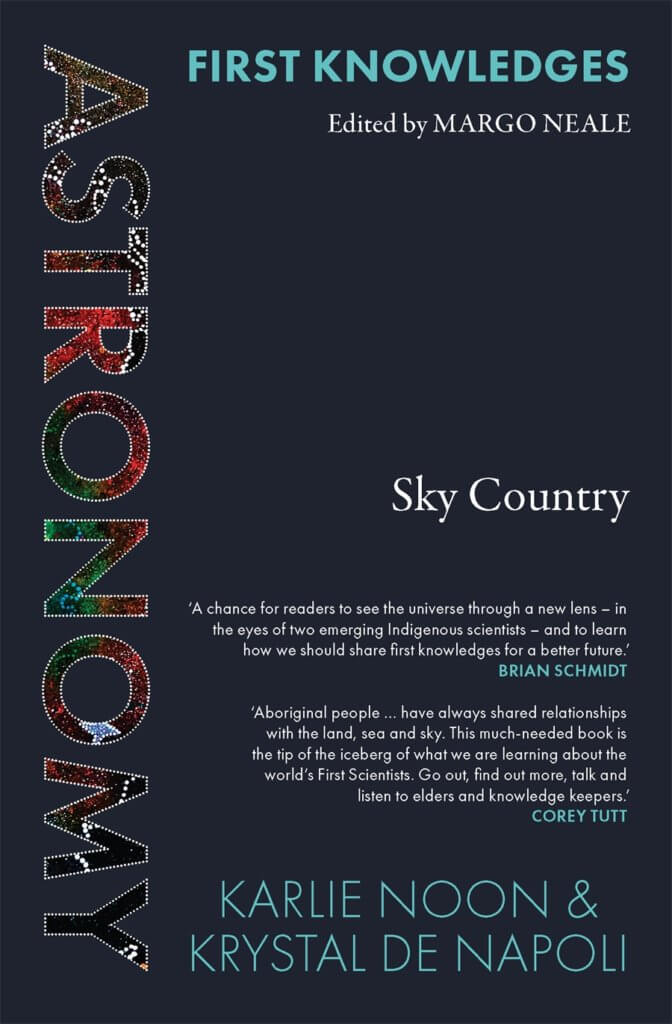
Astronomy: Sky Country by Karlie Noon and Krystal De Napoli is available now.
AU $24.99
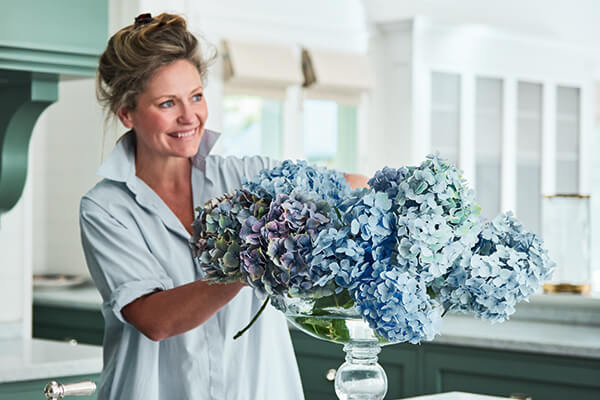
Charlotte Coote is a leader in classic contemporary interior design. With many years’ industry experience working in Australia, Europe and the United States, she is a sought-after designer of interiors, furniture and lighting. Charlotte is the founder of and head designer at Coote & Co., her design business based in Melbourne, Australia. She is also the creator of The Mountain Academy, an online interior design course.
We recently spoke with her about the inspiration behind her new book, Colour is Home, her creative process and how readers can begin introducing colour into their own homes.
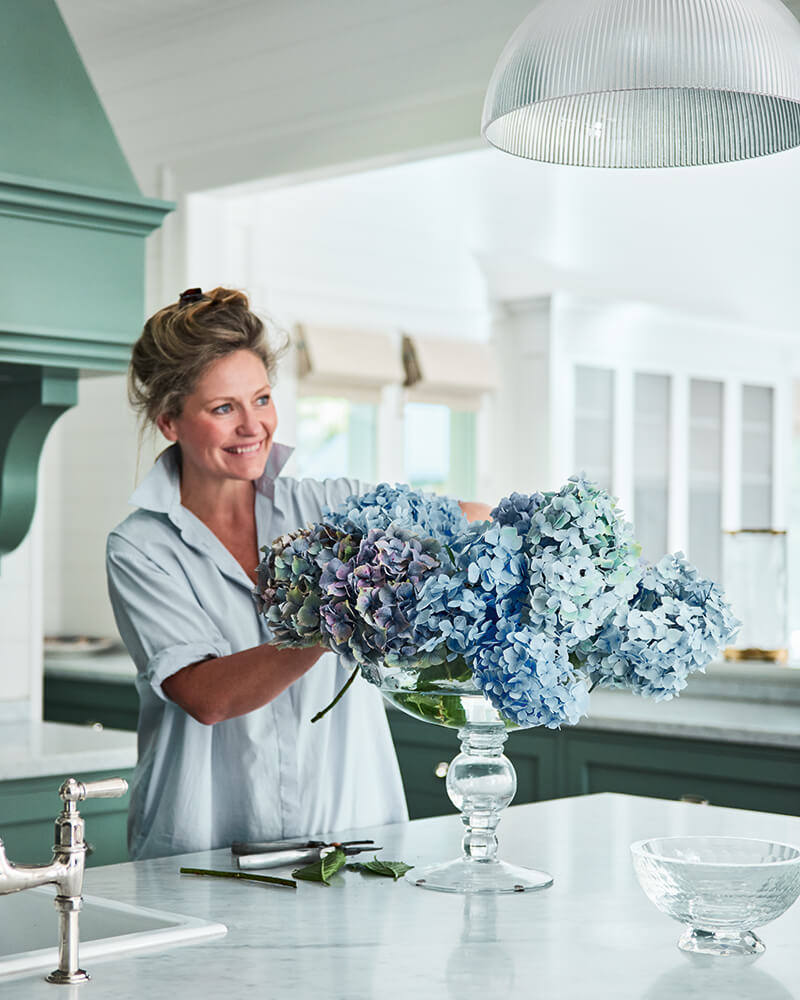
Colour is Home is such a feast for the eyes, congratulations! I’m wondering what inspired you to write the book?
I wanted to document everything I have learned so far in my 20-year career in interior design and to share my knowledge with a wider audience in the hope of providing some guidance and confidence to those looking to embark on a design journey themselves. I have certainly included some hard-earned lessons! I hope it’s a timeless book – something readers will continue to reference over many decades with any project they may have.
Tell us about how you became interested in interior design. How did you know it was the right career for you?
I grew up with interior design. My father was the renowned interior designer, John Coote, whose career took him all over the world. I worked for his business in Europe in my early 20s then started my own business in 2008. Nobody told me I had what it took – I was just passionate and figured it out as I went. It wasn’t easy. I did have a pretty incredible teacher though – even if he was tough!
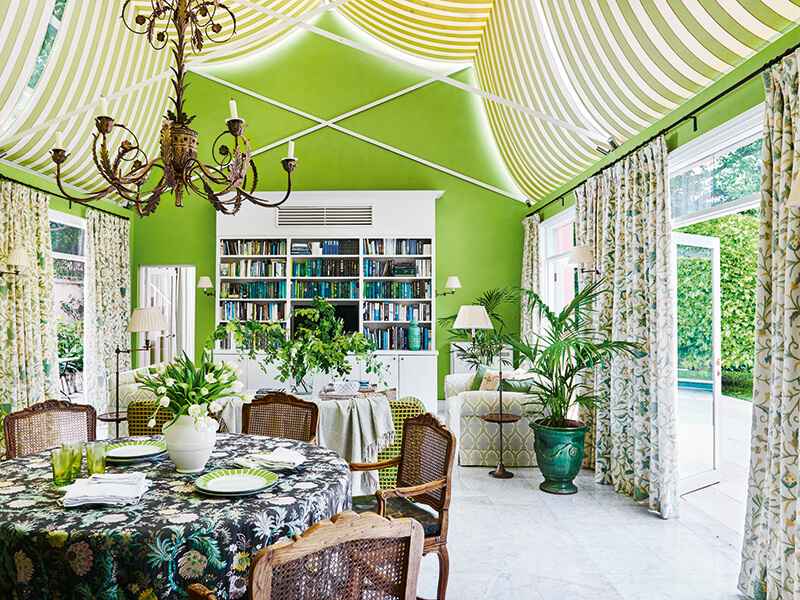
Tell us a bit about your creative process – how do you approach each project?
Every single project is different. If I think about the projects my team and I are currently working on, the diversity in clients and projects blows my mind! I really love this as it makes for interesting work and forces us to keep pushing the boundaries of our designs. At Coote & Co. we have set up very solid business systems and processes – and then the creative process sits very organically within that structure. It’s so important we let each project be authentic through collaboration with our clients. This becomes evident in the final interior. It’s a partnership, with access and reference to my experience, skills and direction.
You’ve worked all over Australia, Europe, and the United States. Is there a space that you’re most proud of designing?
I have worked on some amazing projects around the world, but the projects for myself are probably the most rewarding: Marnanie, my home in Mt. Macedon, Victoria and now our new beach house on the East Coast of Tasmania, which we are currently designing. There is something so complex but exhilarating about being the designer and the client at the same time. I also feel like these are the projects the market really takes note of and judges you on so to speak. My father knew this all too well – at his house Bellamont Forest (an 18th century Georgian villa in Ireland which he owned for 30 years) I remember him having samples draped over guest bedroom chairs, as if to indicate “I am not done here, so you can’t judge me yet”!
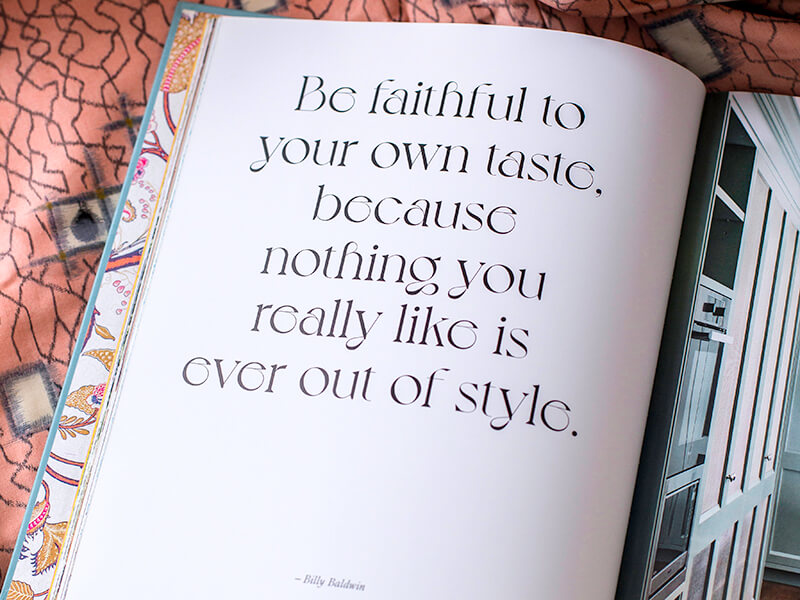
Do you have a favourite room to relax in?
Autumn at Marnanie is beautiful. I especially love having a casual kitchen dinner in my new double height kitchen, in front of the fire, with good friends, delicious food and wine!
After spending so much time at home during the pandemic, I’m sure I’m not alone in feeling like my living space could do with some refreshing! What’s your number one piece of advice to people wanting to add a splash of colour to their home?
Don’t be afraid! Colour adds such a wonderful feeling to a home. Make sure to bring samples into your space and look at them in different light at different times of day. Take a picture – the photo never lies.
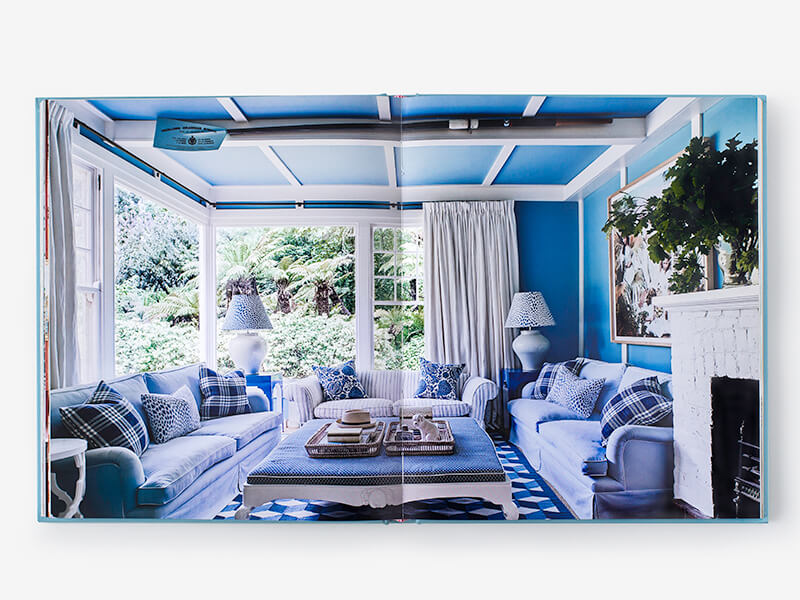
Is there a song that encapsulates your approach to life and work?
Feeling Good by Nina Simone, because it is a privilege to be here – I see the beauty in all aspects of life.
What’s next for you?
2022 is exciting indeed. We have a wonderful diversity of design projects and clients working with us at Coote & Co.! I am also filming my online interior design masterclass for The Mountain Academy and am excited to launch this in the next couple of months. Viewers will be able to purchase, download and watch the series online. I also just signed another book deal with Thames & Hudson, so watch this space! Finally, I’m designing and building a house on the East coast of Tasmania with my husband Geordie and Coote & Co. I’m pretty passionate about this project – it’s always a lot of fun being the ‘client’.
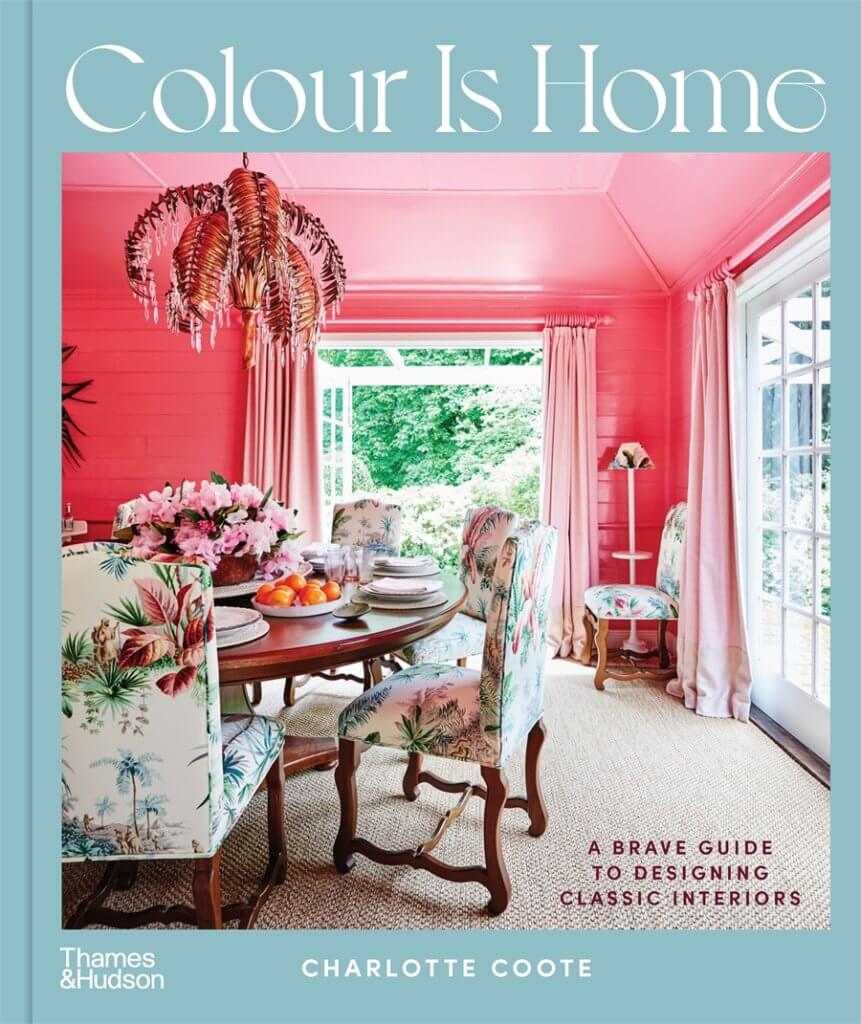
Colour is Home by Charlotte Coote is available now.
AU $59.99
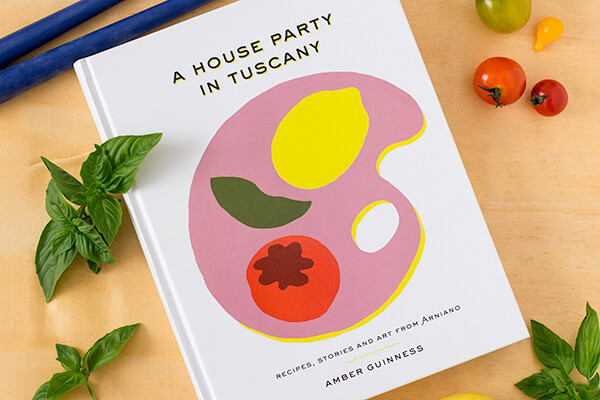
TERMS AND CONDITIONS: WIN a copy of A House Party in Tuscany and an Italian food hamper worth $300
These are the Terms and Conditions (Terms) of entry for the Competition, conducted by Thames & Hudson Australia Pty Ltd (Thames & Hudson Australia), whose registered office is at 11 Central Boulevard, Port Melbourne, Victoria 3027.
Please read these Terms carefully because you will be deemed to accept them if you enter the Competition.
For all questions relating to this competition, please contact Thames & Hudson Australia at: enquiries@thameshudson.com.au
Competition Period
1.1 This Competition opens on Wednesday 20 April 2022 at 9am (AEST) and closes on Wednesday 4 May 2022 at 5pm AEST (the Competition Period).
The Prize
2.1 The prize for the Competition includes:
a) A copy of A House Party in Tuscany by Amber Guinness.
b) An Italian food hamper from Basil Imports valued at $300.
2.2 Prizes are not transferable or exchangeable (including for cash), and a winner may not request that all or any part of a Prize will not be substituted for other benefits or items at the request of winners.
2.3 If any element of the Prize becomes unavailable for any reason beyond the control of Thames & Hudson Australia, a similar prize of equal value will be awarded in place of the Prize.
2.4 A winner is responsible for any taxes for which they may be liable as a result of winning a Prize, as well as for any expenses (other than postage or other usual delivery charges) not specifically mentioned as being included in the Prize.
2.5 The stated value of the Prize is based on estimated or recommended retail prices (including GST) at the date of publication. Thames & Hudson Australia accepts no responsibility for any change in the value of the Prize between that date and the date on which the Prize is delivered to a winner.
How to Enter
3.1 Entrants must undergo the following steps to enter the Competition:
a) Go to: https://uwo4bbppn3o.typeform.com/to/pExSH0sU
b) Answer the following question: “ Would you like to WIN a copy of A House Party in Tuscany and a Basile Imports hamper valued at $300? By answering YES you agree to sign up to the Thames & Hudson Australia e-newsletter database and to the full competition terms and conditions.”
c) Provide your first name, last name and state of residence;
d) Answer the following question, “Which of the below genres are you the most interested in?”;
i) New Books
ii) Limited Editions
iii) Architecture
iv) Art
v) Children’s
vi) Design and Interiors
vii) Fashion
viii) Memoir and Narrative Non-Fiction
ix) Gift, Puzzles and Games
x) Photography
xi) Premium Books ($90+)
d) Provide your email address;
3.2 Entrants may not enter more than once and each entrant is only eligible to win one Prize and the following will be invalid:
a) entries received outside the Competition Period;
b) entries that do not comply with these terms and conditions;
c) entries that Thames & Hudson Australia, in its sole discretion, determines are fraudulent (including entries that misrepresent the eligibility of the entrant); and
d) (where a competition is conducted on a social media platform) multiple entries from a single individual using multiple accounts on the one social media platform.
3.3 Thames & Hudson Australia may, in its sole discretion, disqualify any entry that in its view is (or is potentially) objectionable, including (without limitation) any entry that is not reasonably comprehensible or infringes a third-party’s rights, or is defamatory, obscene, insulting, inflammatory or discriminatory; or is likely to damage its reputation or the reputation of any Affiliate or donor or sponsor of a Prize.
3.4 Entry is free (subject to any obligation stated as part of how to enter in relation to purchasing a Thames & Hudson Australia product) but entrants are responsible for any costs or charges they may incur in entering.
3.5 Notwithstanding anything else in these terms and conditions, the Competition is not open to:
any employee of Thames & Hudson Australia or of any parent company, subsidiary, agent or affiliate of Thames & Hudson Australia, including a company or organisation that has provided a Prize for a competition (together, Affiliates); or
members of the immediate families of employees of Thames & Hudson Australia and Affiliates.
3.6 Notwithstanding anything in clauses 3.2 or 3.3, the Competition is not open to anyone under 18 if the Prize is or includes any alcoholic beverage or product or any service or product that by law is unavailable or not open to people who are under that age.
Winner/s
4.1 Winner[s] will be selected by lottery from all correct, valid and eligible entries received.
4.2 All decisions concerning the winning entry will be final and binding on entrants in all respects, and no correspondence will be entered into.
4.3 Winner[s] will be published on www.thamesandhudson.com.au within 7 days of judging the Competition. All reasonable endeavours will be made to contact the winners during this time.
4.4 A Prize may be forfeited (with no substitute offered) and an alternative winner or winners selected in accordance with the winner selection procedure set out above if a winner:
a) cannot be located;
b) does not adequately respond to notification that they have won a Prize before 5pm Wednesday 11 May 2022;
c) does not accept an element of the Prize as arranged with Thames & Hudson Australia;
d) does not or cannot provide Thames & Hudson Australia with proof of identity and/or residence if requested by Thames & Hudson Australia to do so; or
e) does not comply with any other term or condition of the Competition.
4.5 Thames & Hudson Australia reserves the right, in its absolute discretion but subject to relevant State and/or Territory law, to cancel the Competition and not award a Prize if Thames & Hudson Australia is unable to proceed with the Competition (including any judging and/or draw) as a result of circumstances beyond its control including, without limitation, pandemic, vandalism, hacking, computer virus or bugs, server breakdown, acts of terrorism, acts of God, civil unrest, strikes and power failures.
Warranties, limitations, releases and consents
5.1 Entrants grant Thames & Hudson Australia and Affiliates an irrevocable, non-exclusive, royalty-free, worldwide and transferable licence to publish their entry and name, including the right to sub-license these in association with the Competition.
5.2 Entrants promise that entries will be original and will not infringe any third-party rights (including copyright and trade marks) and will not breach any law or any obligation of confidentiality.
5.3 Winners may be photographed and/or filmed at any event associated with the delivery or handing over of a Prize, and entrants grant Thames & Hudson Australia and Affiliates the right to take and to publish such photographs and/or footage and to use an entrant’s name for promotional purposes without additional consent or any additional payment from Thames & Hudson Australia or any third party.
5.4 To the maximum extent permitted by law:
Thames & Hudson Australia takes no responsibility and makes no warranties or representations, express or implied, in relation to any Prize, including but not limited to warranties of reliability, merchantability or fitness for a particular purpose;
entrants waive any right to claim from Thames & Hudson Australia for any disappointment, costs, expenses, loss or damage suffered that arises out of or in connection with owning or using a Prize; and
all liability for any defects whatsoever in or relating to the Prize remains with the relevant supplier or manufacturer.
5.5 Thames & Hudson Australia and any Affiliate is not and will not be responsible for any late, illegible, lost, incomplete, postage due, misdirected or mutilated mail, or any electronic miscommunication or failure, of any kind, (or any other event outside the reasonable control of Thames & Hudson Australia or any Affiliate) which may limit or prevent an entrant from participating in the Competition and/or collecting, receiving or being notified of any Prize and/or which results in any damage to, delay of or loss of a Prize during or after delivery once it has left the possession of Thames & Hudson and/or an Affiliate.
Personal information
6.1 As part of running the Competition and awarding and delivering a Prize, Thames & Hudson Australia may collect personal information of entrants, including name, email address, residential address, contact phone number/s, date of birth and gender (“Personal Information”).
6.2 Except as otherwise provided under clause 6, any Personal Information of entrants will be used by Thames & Hudson Australia:
a) for the purpose of conducting and promoting the Competition (including verifying eligibility, delivering a Prize and complying with any applicable Commonwealth, State or Territory law); but otherwise
b) only in accordance with its Privacy Policy: https://thamesandhudson.com.au/useful-links/privacy-policy/
6.3 Any request to access, update and/or correct Personal Information should be directed to Thames & Hudson Australia by email to enquiries@thameshudson.com.au
General
7.1 Entrants agree:
a) to comply with all reasonable conditions of use of a Prize and any reasonable requirements of any person or organisation that supplies a Prize;
b) to conform to all applicable Australian laws and regulations; and
c) to conform to any relevant website terms and conditions (including any terms and conditions relating to the use of social media where a competition is run via a social media platform).
7.2 These Terms constitute the entire agreement between an entrant and Thames & Hudson Australia and supersedes and extinguishes any previous agreement, arrangement or understanding between them (whether written or oral) relating to the Competition or any other subject matter set out in these Terms.
7.3 These Terms are governed by the laws of Victoria and are subject to the exclusive jurisdiction of the courts of that State.
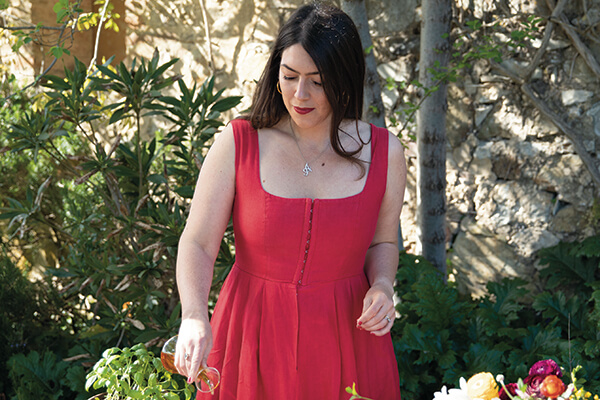
There are many farmhouses in Tuscany, but few are quite so magical as Arniano. It is here in this 18th-century podere that the author of A House Party in Tuscany, Amber Guinness, grew up and learned to cook. And it is here that she established The Arniano Painting School, a residential painting course and immersive art and food experience.
We recently spoke with Amber about why she loves Tuscan cooking, the creative process behind the book, and how readers can capture the essence of Arniano themselves.
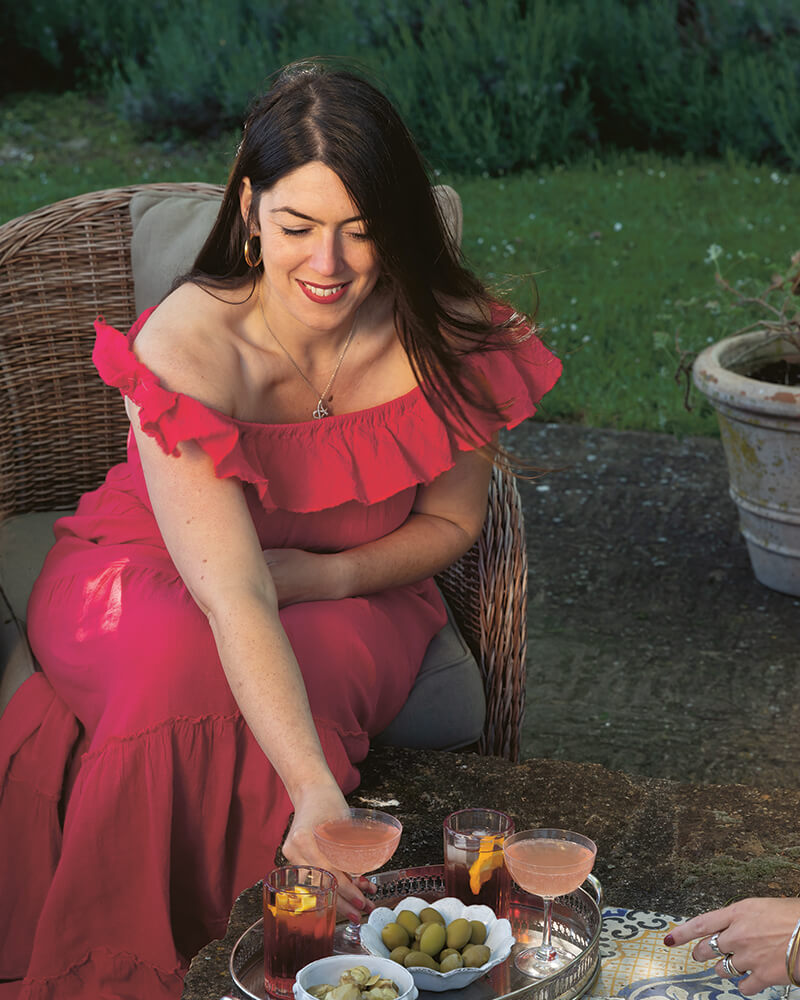
Congratulations on the book – it’s such a wonderful celebration of what your mother and late father created at Arniano! Can you tell us a bit about what inspired you to write it?
The idea for this book started five years ago when I noticed that people on our painting courses at Arniano would often finish lunch by asking me for the recipe. What started as the odd request became a surprisingly constant refrain, which is when my wonderful tiger husband, Matthew Bell, started his own refrain: ‘Amber, you must write a book!’
Luckily, I had started to compile a scrapbook of tried and tested recipes, and this dog-eared soup stained folder was the early iteration for A House Party In Tuscany. So, a book about me and my sister’s upbringing, our parents, what they created at Arniano, and the recipes that we had always cooked there had been percolating for years.
But it wasn’t until I met Robyn Lea, a talented photographer and author, that the dream became a reality. Robyn came to Arniano to do a shoot, not about food, but about interiors and my mum Camilla’s work, and I told her about this idea. It was Robyn who picked up the ball and ran with it, taking it back to Kirsten Abbot at Thames & Hudson in Melbourne. Kirsten and I were all set to have our first meeting about the project in London in March 2020, and of course, the world came to a grinding halt.
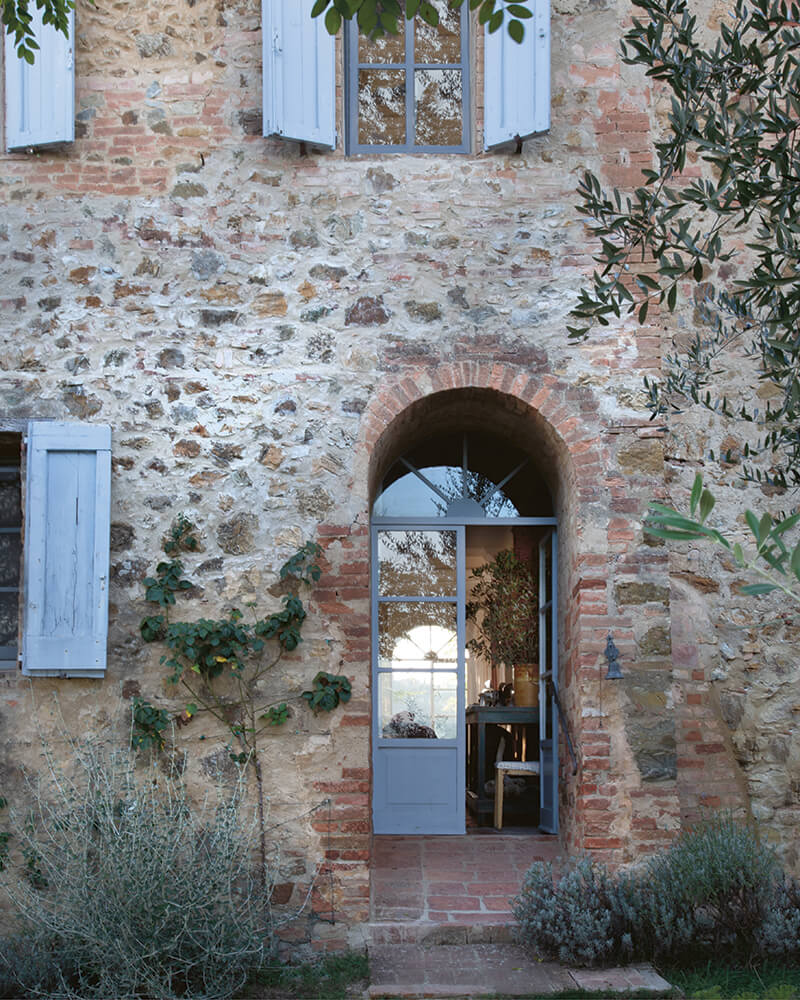
What seems incredible to me is that Kirsten and Robyn didn’t lose interest in the project due to the pandemic – quite the opposite. They took it up with enthusiasm, over many Zoom calls at hugely inconvenient hours to them in Australia, and took a gamble on me and my idea, despite the fact that to this day, I have never met Kirsten in person!
There’s a wealth of knowledge inside the pages of this gorgeous book! How did you approach the creative process of writing it?
There were various stages creatively for the book. Research and thinking about what I find most useful in a cookbook was the first stage. I really wanted this book to be useful in the kitchen, as well as to look good. What I thought about the most was how to layout the recipes in the book – would it be straightforward: aperitivo, antipasti, primi, secondi etc. or, would it be by chapter, or seasonal?
I also thought long and hard about how to pitch the recipes – would they be for the experienced cook, or people who had never cooked in their lives? Making the layout of the book user-friendly as well as making sure that the recipes were as achievable, clear and as practical as possible was really important to me. As a self-taught cook, I have often been frustrated with cookbooks that tell you to do or not to do something without explaining why that step is crucial. Often when the reasoning is not explicitly explained, I’ve skipped a step which has in fact then resulted in the dish being ruined! So, I really wanted to include the right level of ‘hand holding’ and pre-empting mistakes for the reader so as to avoid some of the kitchen disasters I’d made in the past while still learning.
Once I had made the decision that it would be laid out seasonally, it was just a question of getting on with it! I had an advantage in that I wrote the book between March 2020 and March 2021, so was locked down with no distractions for most of it. I have no idea how people write books without lockdowns!
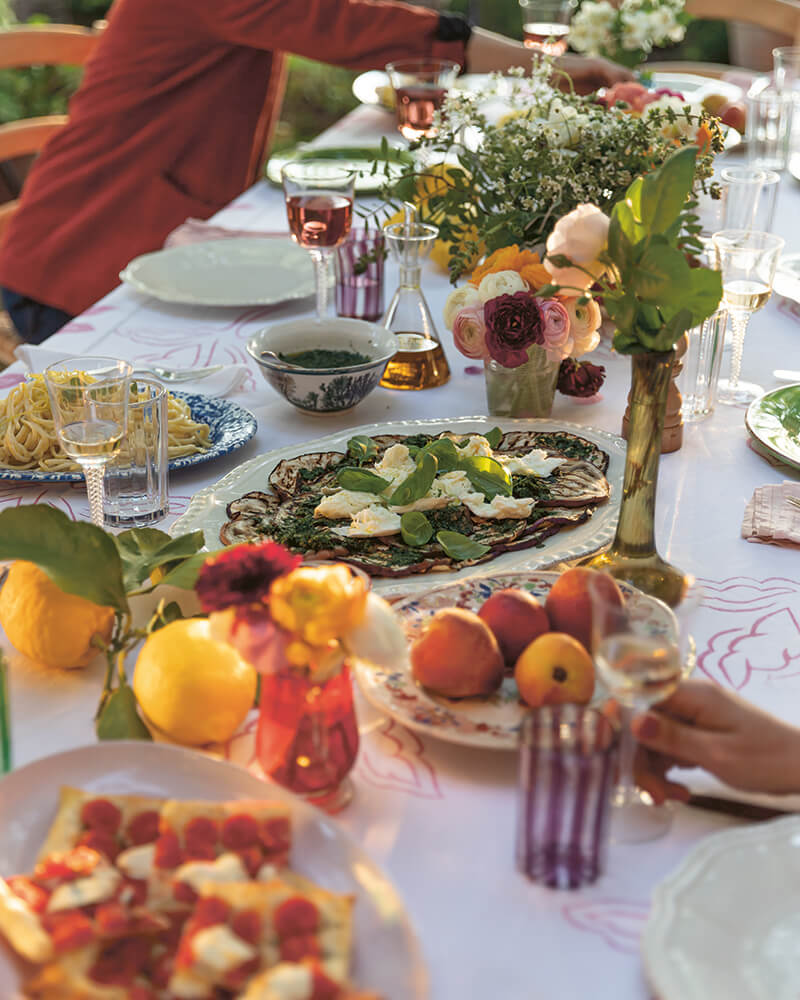
I would write early in the mornings and then recipe test in the afternoons in time for a late lunch, and later, dinner. My approach to recipe writing was, ‘we have to eat, so let’s combine the two things’. I would write the recipe, cook it, and then make notes on the draft as to what had and hadn’t worked before making it again with whatever changes needed to be made the next day. I also conducted several interviews, which involved hopping in the car and going to speak with local cheesemakers, the family who owns the olive press and Gianfranco, the local truffle-hunter. These were the elements that I would write in the morning before recipe testing.
You describe learning to cook by watching your mother prepare meals for family and friends at Arniano, which is such a lovely image. Is there a meal that most reminds you of cooking with her in the kitchen?
Probably malfatti di ricotta e spinaci, which is in the Spring section of the book. They are one of the first things I can remember my mother making for us. They were always considered a huge treat, as they require some time and meditative patience. Also known as gnudi, meaning ‘naked’ in Italian, the ricotta and spinach ‘gnocchi’ are basically the same as a filling for ravioli and are naked by dint of not being encased in pasta.
I love how in the book you show that Italian food is so much more than just pizza and pasta! Not that I don’t love both of those things very much, but there’s such a world of culinary delights beyond them. What would you say makes Tuscan cuisine unique?
Tuscan cuisine comes from a place of poverty and so is very enterprising. There are lots of beans and vegetables and very little waste, while at the same time making mouth-watering meals out of things that would normally be thrown away. There are a plethora of ways in Tuscany of turning stale bread into something rich and delicious, such as ribollita or pappa al pomodoro. That’s what I love about Tuscan cooking, that it isn’t about fancy sauces or complicated cooking methods, but about bringing the best out of whatever ingredient you have to hand, sometimes using as little as some olive oil and salt.
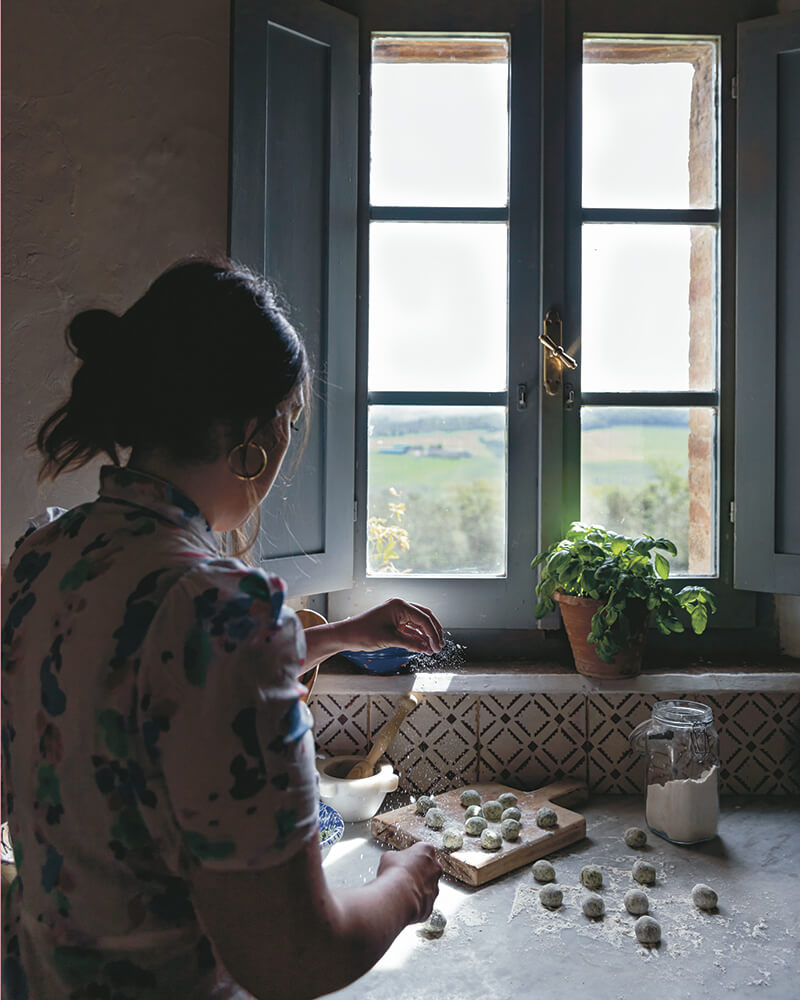
Is there a recipe you love that didn’t make it into the book?
I wanted to include the recipe for one of my favourite soups, Straciatella alla Romana, but then we decided against it. It’s a real winter warmer, eggs beaten with grated parmesan and pepper and then cooked in a pot of clear chicken broth. It sounds weird, but it’s wonderful. In the end, though, we felt that it’s a cosy, comforting dish, which I make for me and my close friends and family on a winter’s night, so it didn’t really fit in with the theme of entertaining and feast curating.
The way that your tables are laid and your meals are presented seems to be just as much a part of the artistic heart of Arniano as the oil painting lessons! How can readers capture the essence of hosting Arniano-style at home?
By making Pink winks. By buying the best veg, olive oil, tomatoes and salt they can find. By recreating any of the menus at the end of each chapter of the book and by bringing some colour to their table with single stem flowers and Lisa Corti tablecloths.
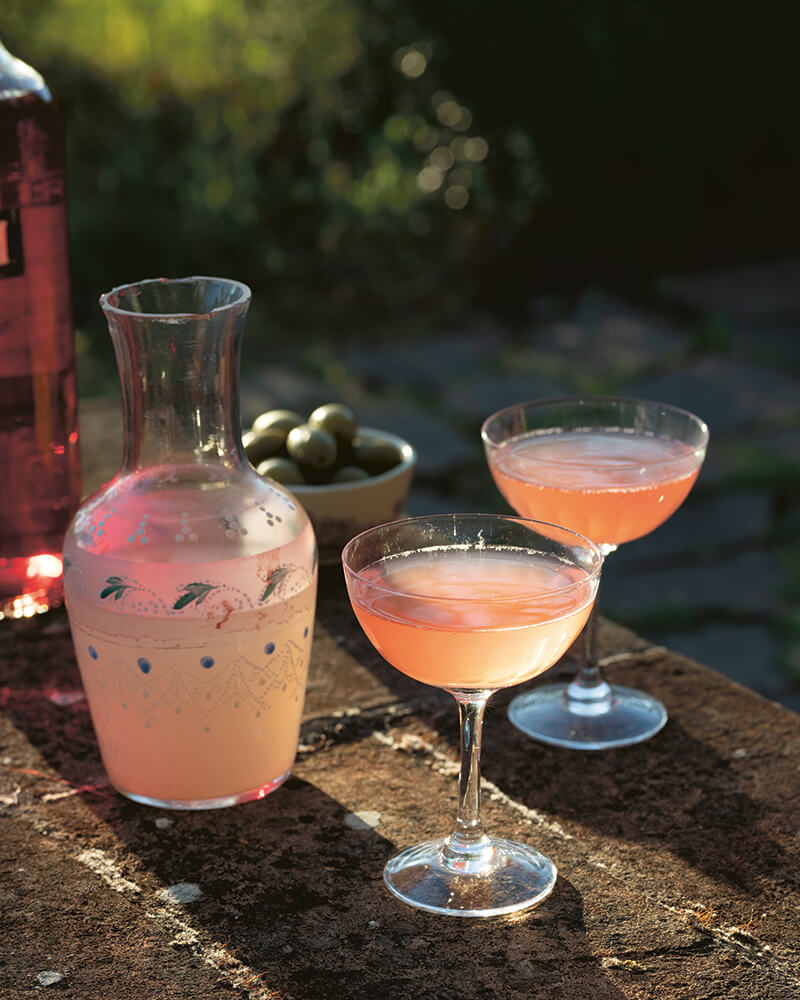
You also offer ‘Arniano-on-sea’ – the Arniano Painting School experience at Pylewell Park in Hampshire. Can you tell us a bit about that? Does the menu differ from the Tuscan version of the school?
The style of food is substantially the same, very simple and Tuscan, but I do bring in a lot more fish as there is so much locally available. The reason we don’t cook a lot of fish at Arniano is that we’re 90km from the coast, which in Tuscan terms is like Timbuktu. So, we keep the menus more mountain and inland focused as I prefer to use only the freshest ingredients. But it’s a treat to serve locally caught fish and crab with foraged samphire when we’re on the Hampshire coast at Pylewell. I still cook it in the Tuscan way, with olive oil and maybe some tomatoes, capers and lemons, and never with any fancy sauces that I feel mask the freshness of the fish.
The gamekeeper on the estate also always gives us a haunch of venison sourced from the wild deer that roam the park at Pylewell. I always love experimenting with new recipes for cooking venison. It’s such a delicious, gamey meat which is also very sustainable. Wherever the painting courses are, I think I’ll always aim to cook with the best locally sourced ingredients.
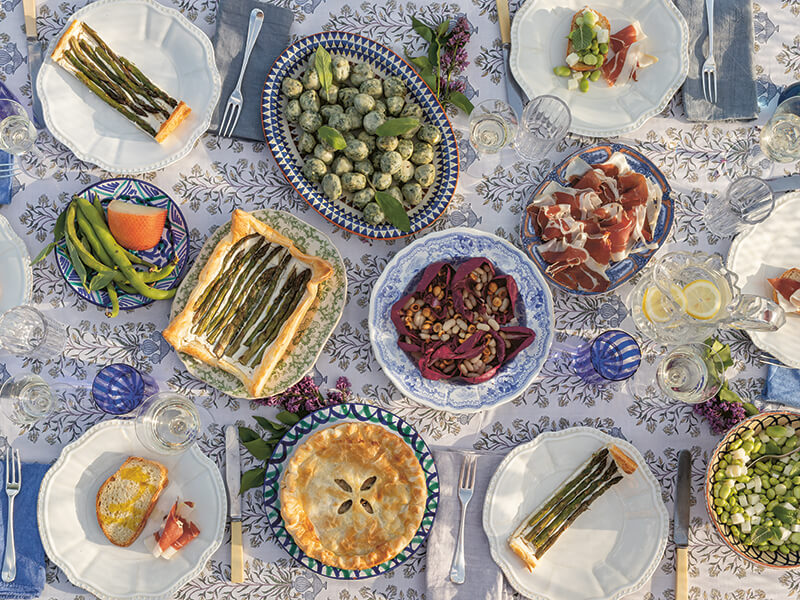
Is there a song that encapsulates your approach to life and work?
I’m not sure it encapsulates my approach, but I like bouncing along to Ya-Ya by Lee Dorsey when I’m working. And any Sam Cooke.
What’s next for you?
Lots of painting courses – I think we’re doing seven this year! So, lots more cooking. More writing and more exploring of Italian food. A visit to my best friend, Beata Heuman, in Sweden. After the whirlwind of writing the book, bringing everything together and now press and promotion, I’m looking forward to spending three weeks on one of my favourite islands in Italy, with very little internet, hiding from the world.
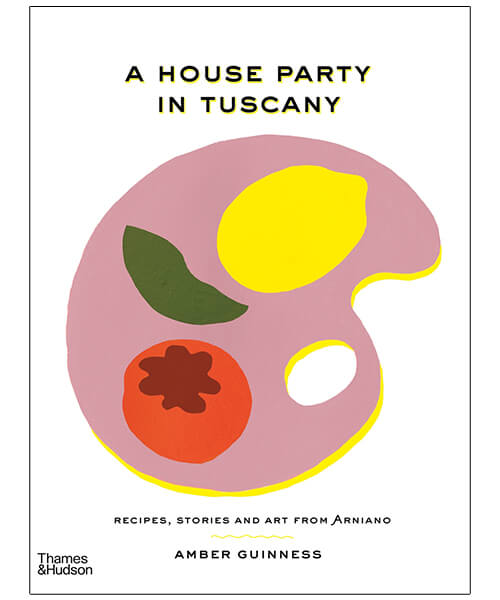
A House Party in Tuscany by Amber Guinness is available now.
AU $65
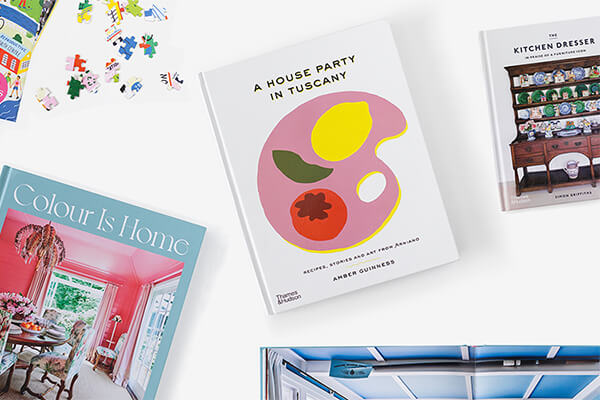
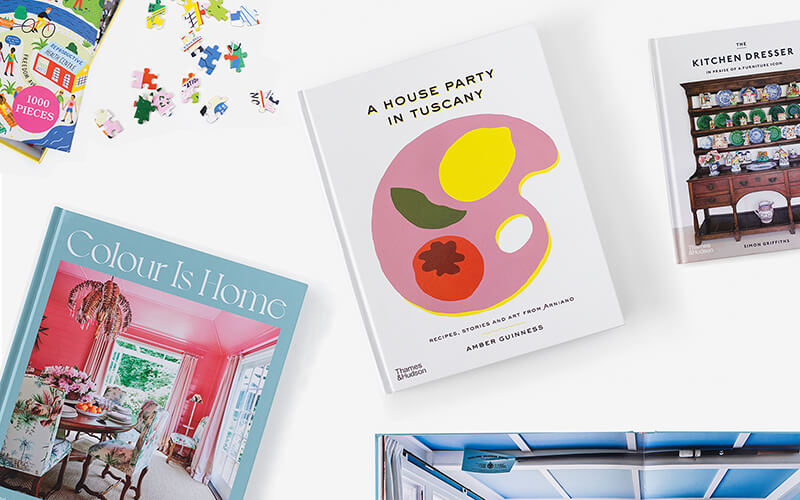
Add some beauty to Mum’s bookshelf this Mother’s Day with these stunning titles, carefully hand-selected by our staff for their own Mums, Grandmothers, and all loved ones as a perfect gift.
Whatever their interest, we have something for everyone this Mother’s Day.
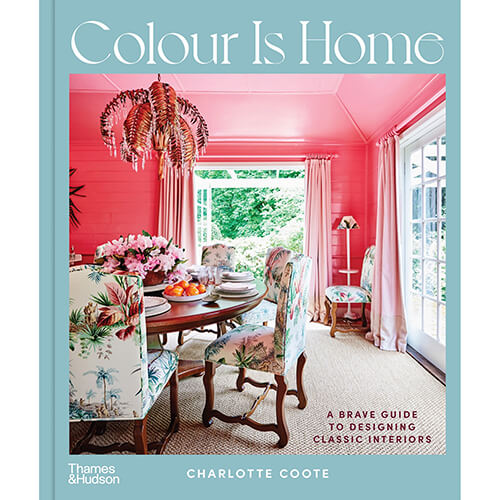
Colour is Home
Charlotte Coote
For the interior designer: an essential style guide to creating a home that will stand the test of time.
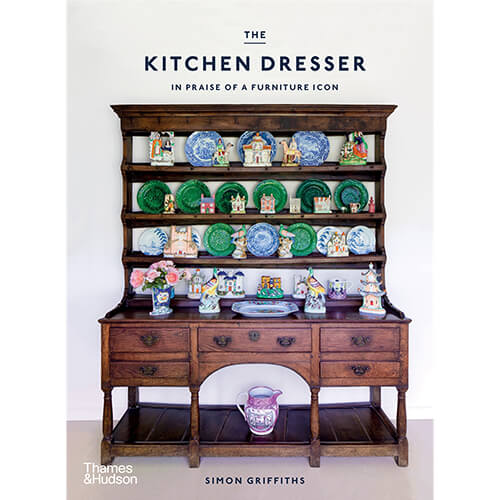
The Kitchen Dresser
Simon Griffiths
For the nostalgic: revel in the beauty and charm of an iconic piece of furniture that is functional and deeply heartwarming.
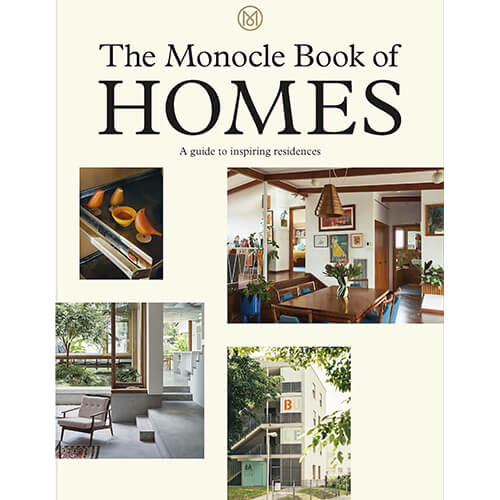
The Monocle Book of Homes
Nolan Giles and Tyler Brûlé
For the design enthusiast: explore the perfect balance between inspirational and practical in this global survey of good homes.
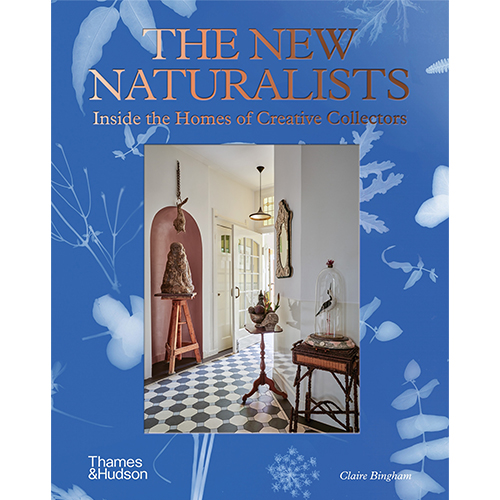
The New Naturalists
Claire Bingham
For the collectors: glimpse inside the homes of twenty creative collectors as they reveal the weird and wonderful world of natural objects.
BUY NOW ➔
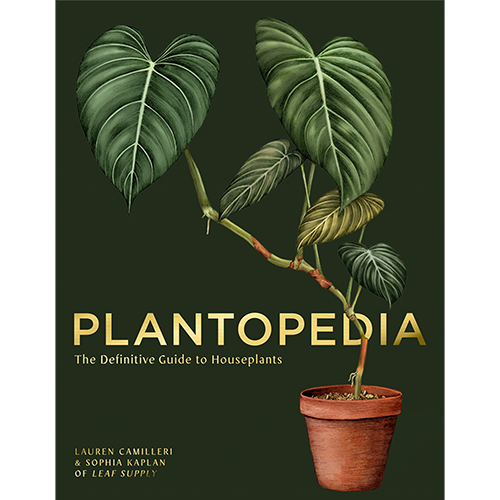
Plantopedia
Lauren Camilleri and
Sophia Kaplan
For the plant-lovers: the definitive guide to keeping happy, healthy houseplants in any space.
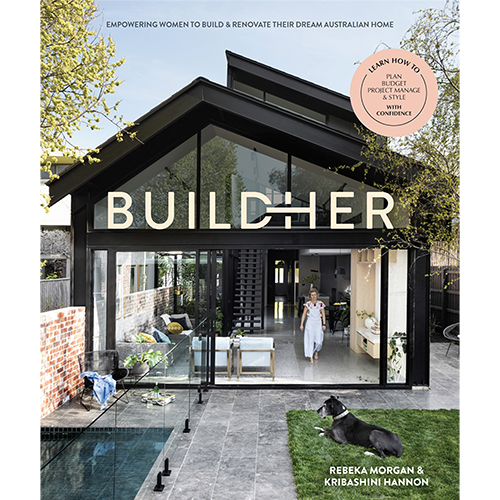
BuildHer
Kribashini Hannon
and Rebeka Morgan
For those who love to DIY: be empowered to build & renovate your own Australian dream home.
DISCOVER ➔
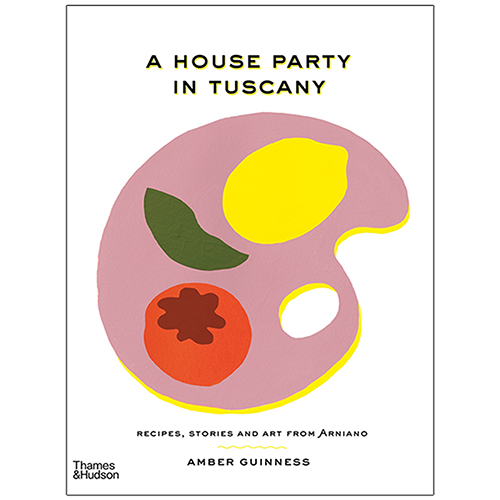
A House Party in Tuscany
Amber Guinness
For the entertainer: be transported to the Tuscan countryside in this sublime celebration of cooking and hosting
READ MORE ➔
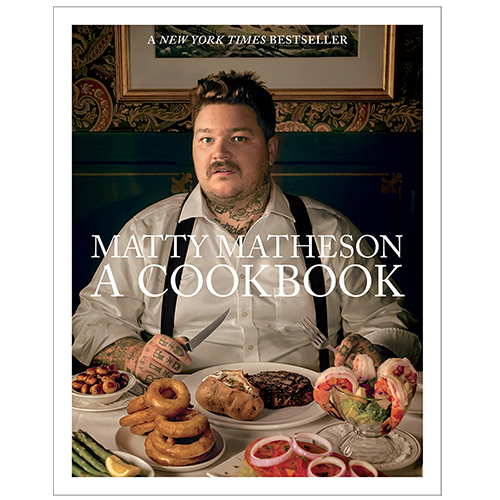
Matty Matheson: A Cookbook
Matty Matheson
For the gourmet: a new collection of recipes from one of today’s most beloved chefs.
Tokyo Up Late
Brendan Liew
For the traveller: a delicious guide to Tokyo through the night, from noisy izakayas to ramen joints, tempura bars and the iconic convenience stores.
The Vegan Cake Bible
Sara Kidd
For the sweet tooth: learn how to bake, build and decorate spectacular vegan desserts in this practical guide to making incredible plant-based cakes.
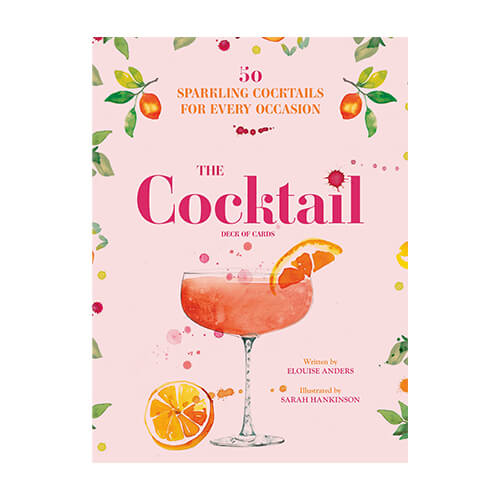
The Cocktail Deck of Cards
Elouise Anders
For the mixologist: a deck of cards to help you choose your next cocktail. Featuring fizzy classics and new twists, with easy-to-follow recipes and illustrations.
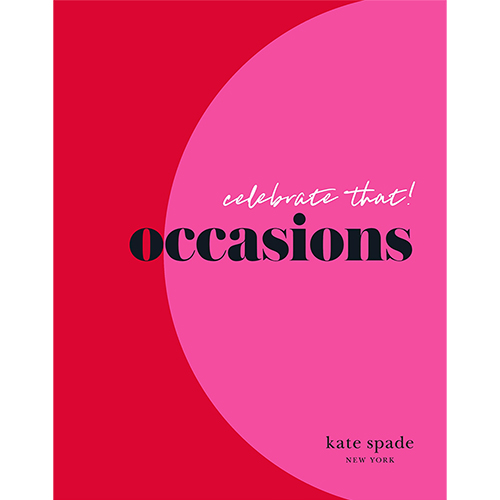
kate spade celebrate that!: occcasions
kate spade new york
For the event planner: an essential guide to special occasions that will inspire you to celebrate life’s memorable moments.
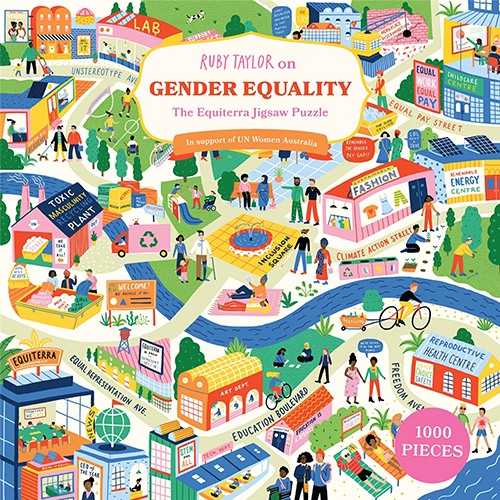
Ruby Taylor on Gender Equality
Ruby Taylor
For the puzzle aficionado: a 1000-piece gender equality puzzle featuring artwork by Ruby Taylor.
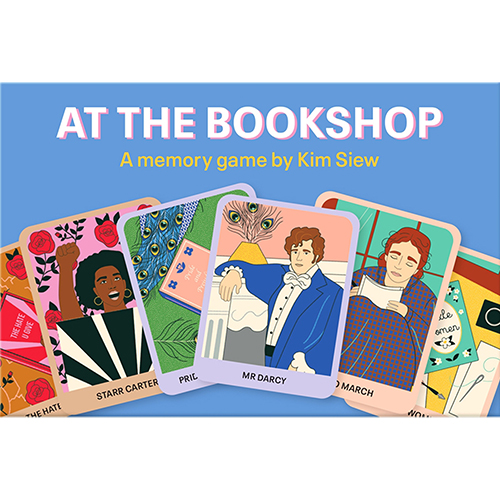
At the Bookshop
Kim Siew
For the bookworm: a memory card game matching 25 iconic characters with their book.
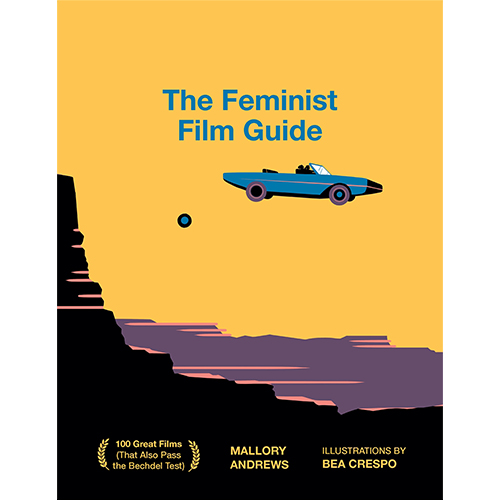
The Feminist Film Guide
Mallory Andrews
For the cinephile: a fun guide to 100 great films that also pass the Bechdel test.
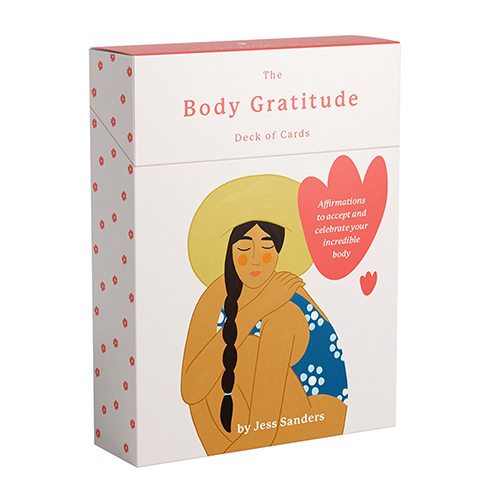
The Body Gratitude Deck of Cards
Jess Sanders
For the body-positive: an illustrated deck of cards to help you celebrate all the ways your body is amazing.
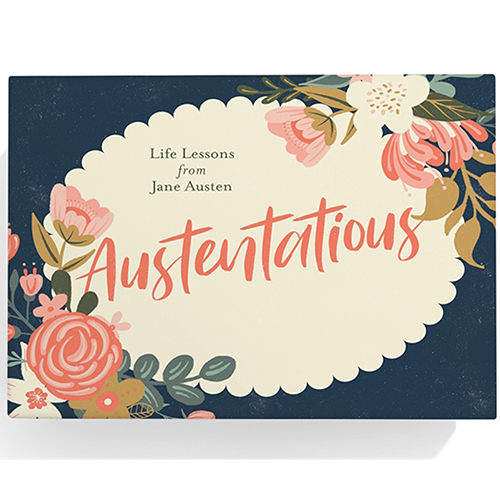
Austentatious
Avery Hayes
For the Janeite: an illustrated deck of cards featuring quotes and advice from Jane Austen’s beloved characters.
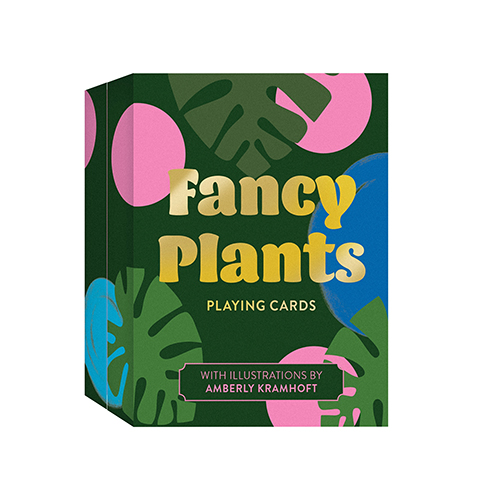
Fancy Plants
Amberly Kramhoft
For the competitive: playing cards featuring the lush illustrations of 52 indoor plants.
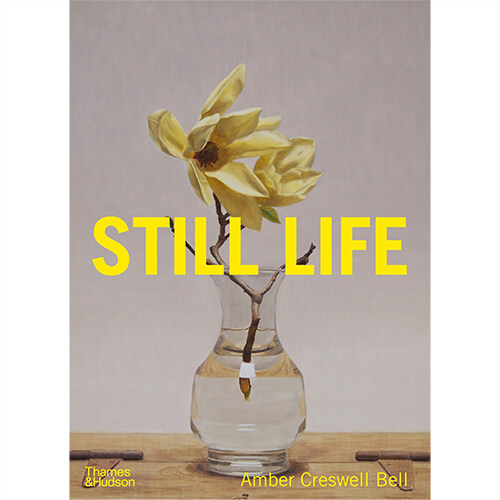
Still Life
Amber Creswell Bell
For the contemplative: A rich survey of the work of more than forty still-life artists, which presents the genre in a uniquely Australian light.
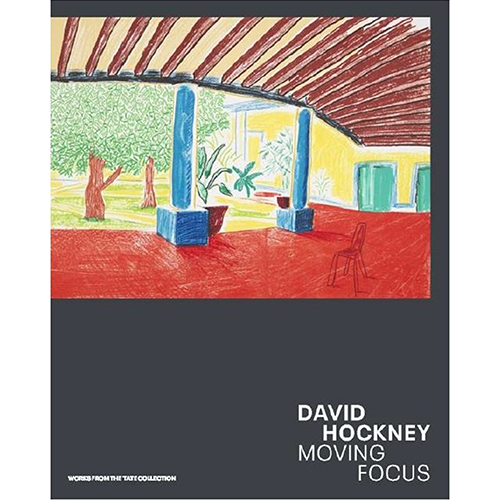
David Hockney: Moving Focus
Helen Little
For the Hockney fans: a panoramic new perspective on the life and work from one of Britain’s most beloved artists.
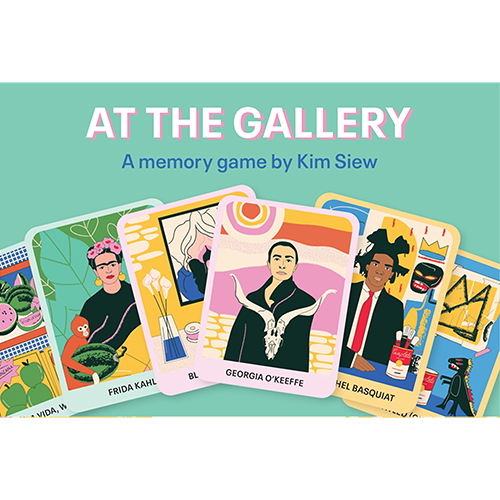
At the Gallery
Kim Siew
For the aesthete: a memory card game for art lovers. Match 25 of the world’s most iconic artists with one of their famous works.
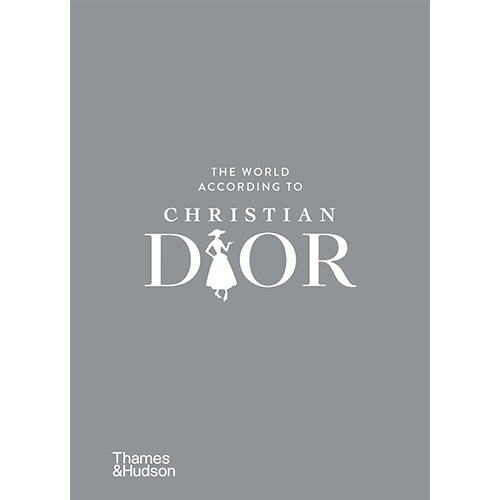
The World According to Christian Dior
Helen Little
For the elegant: a collection of Christian Dior’s maxims on style, women and inspiration.
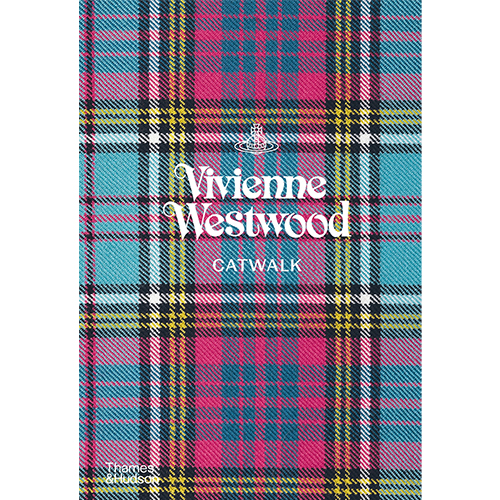
Vivienne Westwood Catwalk
Alexander Fury
For the conformity-defying: the first comprehensive overview of Vivienne Westwood’s womenswear collections, presented through original catwalk photography.
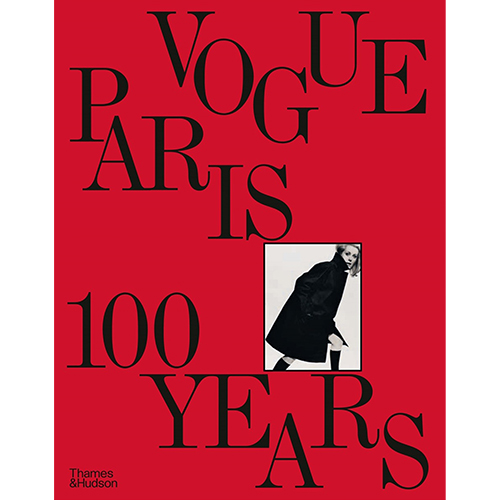
Vogue Paris 100 Years
Sylvie Lécallier
For the chic: the first illustrated history of Vogue Paris from its debut edition in 1920 to its centenary in 2020.
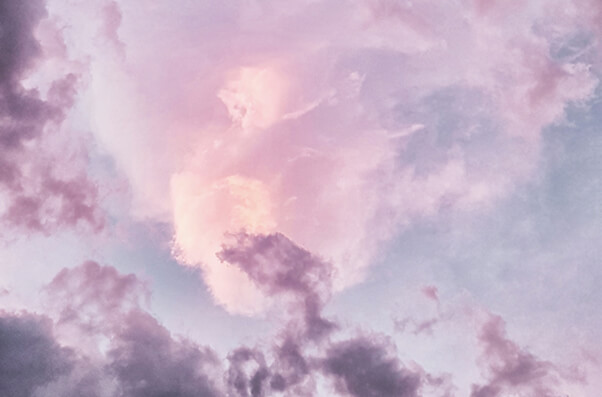
WINNER: Jacinda Molloy, prize claimed
TERMS AND CONDITIONS: WIN a $1500 prize pack with Cosmic Numerology
These are the Terms and Conditions (Terms) of entry for the Competition, conducted by Thames & Hudson Australia Pty Ltd (Thames & Hudson Australia), whose registered office is at 11 Central Boulevard, Port Melbourne, Victoria 3027.
Please read these Terms carefully because you will be deemed to accept them if you enter the Competition.
For all questions relating to this competition, please contact Thames & Hudson Australia at: enquiries@thameshudson.com.au
Competition Period
1.1 This Competition opens on Monday 4 April 2022 at 9am (AEST) and closes on Monday 4 July 2022 at 5pm AEST (the Competition Period).
The Prize
2.1 The prize for the Competition includes:
a) ‘The Complete Cosmic Numerology Chart’ reading with Jenn King
b) a framed, A4 original artwork by Kat Macleod inspired by the winner’s reading with Jenn King, couriered to the winner’s address
2.2 Prizes are not transferable or exchangeable (including for cash), and a winner may not request that all or any part of a Prize will not be substituted for other benefits or items at the request of winners.
2.3 If any element of the Prize becomes unavailable for any reason beyond the control of Thames & Hudson Australia, a similar prize of equal value will be awarded in place of the Prize.
2.4 A winner is responsible for any taxes for which they may be liable as a result of winning a Prize, as well as for any expenses (other than postage or other usual delivery charges) not specifically mentioned as being included in the Prize.
2.5 The stated value of the Prize is based on estimated or recommended retail prices (including GST) at the date of publication. Thames & Hudson Australia accepts no responsibility for any change in the value of the Prize between that date and the date on which the Prize is delivered to a winner.
How to Enter
3.1 Entrants must undergo the following steps to enter the Competition:
a) Go to https://uwo4bbppn3o.typeform.com/JennKing;
b) Answer the following question: “Would you like to WIN a $1500 prize with Cosmic Numerology? By answering YES you agree to sign up to the Thames & Hudson Australia e-newsletter database and to the full competition terms and conditions.”
c) Provide your first name, last name and state of residence;
d) Answer the following question, “Which of the below genres are you the most interested in?”;
i) New Books
ii) Limited Editions
iii) Architecture
iv) Art
v) Children’s
vi) Design and Interiors
vii) Fashion
viii) Memoir and Narrative Non-Fiction
ix) Gift, Puzzles and Games
x) Photography
xi) Premium Books ($90+)
d) Provide your email address;
3.2 Entrants may not enter more than once and each entrant is only eligible to win one Prize and the following will be invalid:
a) entries received outside the Competition Period;
b) entries that do not comply with these terms and conditions;
c) entries that Thames & Hudson Australia, in its sole discretion, determines are fraudulent (including entries that misrepresent the eligibility of the entrant); and
d) (where a competition is conducted on a social media platform) multiple entries from a single individual using multiple accounts on the one social media platform.
3.3 Thames & Hudson Australia may, in its sole discretion, disqualify any entry that in its view is (or is potentially) objectionable, including (without limitation) any entry that is not reasonably comprehensible or infringes a third-party’s rights, or is defamatory, obscene, insulting, inflammatory or discriminatory; or is likely to damage its reputation or the reputation of any Affiliate or donor or sponsor of a Prize.
3.4 Entry is free (subject to any obligation stated as part of how to enter in relation to purchasing a Thames & Hudson Australia product) but entrants are responsible for any costs or charges they may incur in entering.
3.5 Notwithstanding anything else in these terms and conditions, the Competition is not open to:
any employee of Thames & Hudson Australia or of any parent company, subsidiary, agent or affiliate of Thames & Hudson Australia, including a company or organisation that has provided a Prize for a competition (together, Affiliates); or
members of the immediate families of employees of Thames & Hudson Australia and Affiliates.
3.6 Notwithstanding anything in clauses 3.2 or 3.3, the Competition is not open to anyone under 18 if the Prize is or includes any alcoholic beverage or product or any service or product that by law is unavailable or not open to people who are under that age.
Winner/s
4.1 Winner[s] will be selected by lottery from all correct, valid and eligible entries received. Eligibility requires that the winner provide proof of purchase for Cosmic Numerology by Jenn King (ISBN: 9781760762476) from any retailer.
4.2 All decisions concerning the winning entry will be final and binding on entrants in all respects, and no correspondence will be entered into.
4.3 Winners will be published on www.thamesandhudson.com.au within 7 days of judging the Competition. All reasonable endeavours will be made to contact the winners during this time.
4.4 A Prize may be forfeited (with no substitute offered) and an alternative winner or winners selected in accordance with the winner selection procedure set out above if a winner:
a) cannot be located;
b) does not adequately respond to notification that they have won a Prize before 5pm Monday 11 July 2022;
c) does not accept an element of the Prize as arranged with Thames & Hudson Australia;
d) does not or cannot provide Thames & Hudson Australia with proof of identity and/or residence if requested by Thames & Hudson Australia to do so; or
e) does not comply with any other term or condition of the Competition.
4.5 Thames & Hudson Australia reserves the right, in its absolute discretion but subject to relevant State and/or Territory law, to cancel the Competition and not award a Prize if Thames & Hudson Australia is unable to proceed with the Competition (including any judging and/or draw) as a result of circumstances beyond its control including, without limitation, pandemic, vandalism, hacking, computer virus or bugs, server breakdown, acts of terrorism, acts of God, civil unrest, strikes and power failures.
Warranties, limitations, releases and consents
5.1 Entrants grant Thames & Hudson Australia and Affiliates an irrevocable, non-exclusive, royalty-free, worldwide and transferable licence to publish their entry and name, including the right to sub-license these in association with the Competition.
5.2 Entrants promise that entries will be original and will not infringe any third-party rights (including copyright and trade marks) and will not breach any law or any obligation of confidentiality.
5.3 Winners may be photographed and/or filmed at any event associated with the delivery or handing over of a Prize, and entrants grant Thames & Hudson Australia and Affiliates the right to take and to publish such photographs and/or footage and to use an entrant’s name for promotional purposes without additional consent or any additional payment from Thames & Hudson Australia or any third party.
5.4 To the maximum extent permitted by law:
Thames & Hudson Australia takes no responsibility and makes no warranties or representations, express or implied, in relation to any Prize, including but not limited to warranties of reliability, merchantability or fitness for a particular purpose;
entrants waive any right to claim from Thames & Hudson Australia for any disappointment, costs, expenses, loss or damage suffered that arises out of or in connection with owning or using a Prize; and
all liability for any defects whatsoever in or relating to the Prize remains with the relevant supplier or manufacturer.
5.5 Thames & Hudson Australia and any Affiliate is not and will not be responsible for any late, illegible, lost, incomplete, postage due, misdirected or mutilated mail, or any electronic miscommunication or failure, of any kind, (or any other event outside the reasonable control of Thames & Hudson Australia or any Affiliate) which may limit or prevent an entrant from participating in the Competition and/or collecting, receiving or being notified of any Prize and/or which results in any damage to, delay of or loss of a Prize during or after delivery once it has left the possession of Thames & Hudson and/or an Affiliate.
Personal information
6.1 As part of running the Competition and awarding and delivering a Prize, Thames & Hudson Australia may collect personal information of entrants, including name, email address, residential address, contact phone number/s, date of birth and gender (“Personal Information”).
6.2 Except as otherwise provided under clause 6, any Personal Information of entrants will be used by Thames & Hudson Australia:
a) for the purpose of conducting and promoting the Competition (including verifying eligibility, delivering a Prize and complying with any applicable Commonwealth, State or Territory law); but otherwise
b) only in accordance with its Privacy Policy: https://thamesandhudson.com.au/useful-links/privacy-policy/
6.3 Any request to access, update and/or correct Personal Information should be directed to Thames & Hudson Australia by email to enquiries@thameshudson.com.au
General
7.1 Entrants agree:
a) to comply with all reasonable conditions of use of a Prize and any reasonable requirements of any person or organisation that supplies a Prize;
b) to conform to all applicable Australian laws and regulations; and
c) to conform to any relevant website terms and conditions (including any terms and conditions relating to the use of social media where a competition is run via a social media platform).
7.2 These Terms constitute the entire agreement between an entrant and Thames & Hudson Australia and supersedes and extinguishes any previous agreement, arrangement or understanding between them (whether written or oral) relating to the Competition or any other subject matter set out in these Terms.
7.3 These Terms are governed by the laws of Victoria and are subject to the exclusive jurisdiction of the courts of that State.
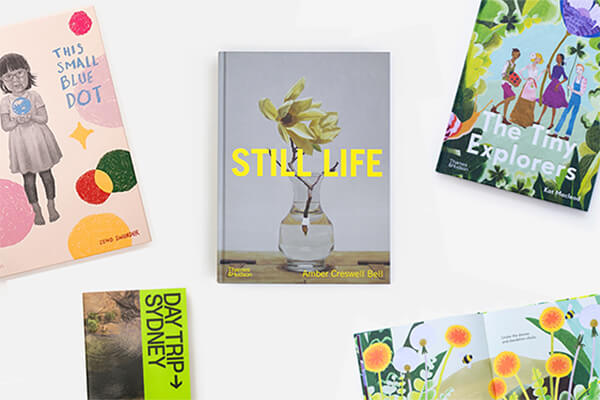
March was a huge month for books, with the winners of the Indie Book Awards announced, the Bologna Children’s Fair returning to an in-person format, and longlist reveals from both the the ABIAs and ABDA. Read on for a round up of our top book news this Autumn.
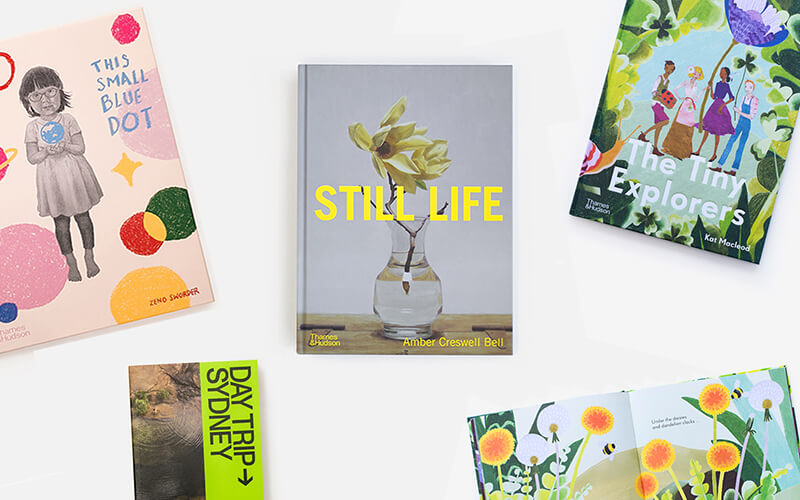
On March 22nd, the winners of this year’s Indie Book Awards were announced. The Indie Book Awards are selected every year by Australian independent booksellers in six categories.
We are so thrilled to announce that our very own Still Life by Amber Creswell-Bell was name the winner of the Indie Book Award for Illustrated Non-Fiction. The full list of winners can be viewed here.
This year the Bologna Children’s Book Fair returned to an in-person format for the first time since the pandemic began. Among other attractions at the fair was the BRAW Amazing Bookshelf, which showcased 100 books that were greatly admired by the judges and came very close to winning the 2022 Bologna Ragazzi Award.
Included in this this exhibition of publishing gems was This Small Blue Dot by Zeno Sworder, along with A History of Music for Children and The People’s Painter.
Last week, this year’s Australian Book Industry Award longlist was announced. Among the nominations in the Illustrated Book of the Year category were our own Still Life by Amber Creswell Bell and A Life In Pattern by Anna Spiro. The Tiny Explorers by Kat Macleod was also nominated in the Children’s Book of the Year category.
The shortlist of the ABIAs will be announced on Monday 23rd May and the winners will be announced at the publishing industry’s Awards night on Thursday 9 June – a red carpet Ceremony held at the International Convention Centre (ICC) Sydney.
Last but not least, the Australian Book Designers Association recently announced the ABDA longlist. This year marks the 70th year of the awards, and we’re so pleased to see so many Thames and Hudson Australia titles on the list, as well as plenty from our distributed publishers. Congratulations to all authors longlisted!
Thames & Hudson Australia
Smith Street Books
NGV
Gallery of NSW
The Shortlist will be announced in early April 2022 and the winners will be announced on Friday June 3 at The Craft & Co in Melbourne.
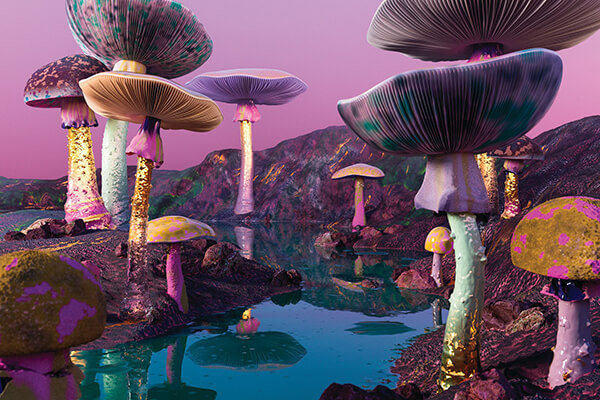
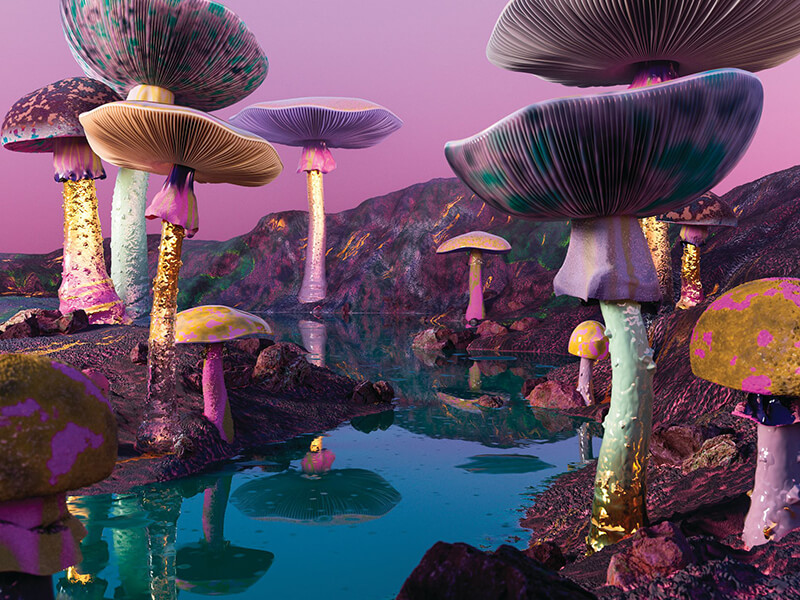
Fungi have a range of natural abilities that we can use to heal damaged habitats. This is known as mycorestoration. Scientists can leverage fungi’s ability to decompose, and engineer it to break down pollutants in the environment, particularly xenobiotics. Xenobiotics are chemical substances that have been introduced by humans and do not exist in nature, such as pesticides, cosmetics, industrial chemicals and drugs.
Pioneering a new field of science is challenging and takes time, money and grit. But extraordinary circumstances need extraordinary solutions – and fungi can provide them
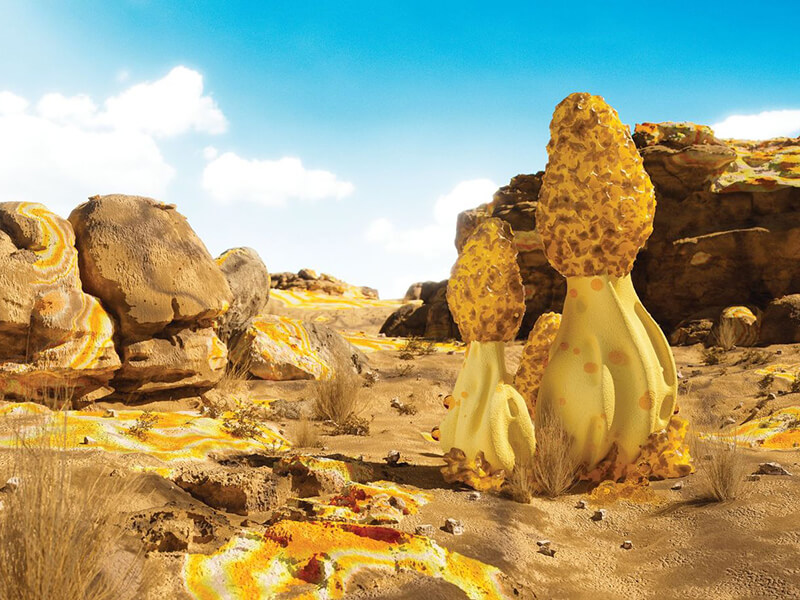
Earth is the only known planet within our solar system that has bodies of liquid water on its surface. This clear liquid is one of our most precious resources, but water supplies are limited. Less than 1 per cent of the water on Earth is accessible and fit for consumption, and this is currently shared between households, agriculture and industry. Over 97 per cent of Earth’s water is too salty and 2 per cent is fresh water locked away in groundwater, glaciers and ice caps.
In the last 100 years, the world’s population grew four fold as the world’s water consumption grew six fold. The industrial age and modern plumbing have made way for water consumption at rates that were never possible before. This efficiency, coupled with an increase in demand for water, has resulted in global scarcity.
Flushing the toilet or running the washing machine creates wastewater that is not reusable until it is treated. Roughly 80 per cent of the world’s wastewater is left untreated and allowed back into our waterways, putting the health of our water ecosystems at risk. Even in developed countries, wastewater is not properly decontaminated due to outdated treatment plants, sewage overflows and ineffective household sewage treatment systems. The source of untreated wastewater is difficult to pinpoint, as it originates from a range of sources, which often include agricultural and stormwater run-off.
A promising example of an affordable and feasible solution is mycofiltration. This process uses fungal mycelium as a biological filter to capture and remove contaminants from water and soil. Depending on the fungal species, mycelium can even eat through and digest pollutants such as pesticides, mercury and petroleum products. If you peer at fungi through a microscope, you’ll see that the cells of mycelium are about 0.5–2 microns wide (for comparison, a strand of human hair is 50 microns wide). Mycelium grows as interconnected cells that resemble a netted fabric.
Armed with this knowledge in the 1970s, Paul Stamets imagined that this fabric of interconnected cells could become a biological filter. He tested this hypothesis on his waterfront farm, installing large sacks filled with substrate inoculated with mycelium of the garden giant species (Stropharia rugosoannulata) around water basins. The sacks formed a netted barrier to catch contaminants as water passed through. This mycofilter cleansed the water, resulting in a 100-fold drop in coliform levels – the bacteria that is present in the digestive tracts of animals and found in their waste. The mycofilter successfully reduced fecal matter in the water, alleviating the downstream impacts of contaminated water. This finding was later investigated and confirmed by the US Environmental Protection Agency (EPA).
A mycofilter can be as simple as a hessian burlap sack filled with wet straw and wood chips, and inoculated with mycelium. It is inexpensive and simple to set up. Also, the small size of the mycofilter means that it has minimal impact on ecology and can be installed around sites such as farms, urban areas, roads and factories. Having a mycofiltration system in these areas can help decontaminate wastewater before it makes its way back into our waterways.
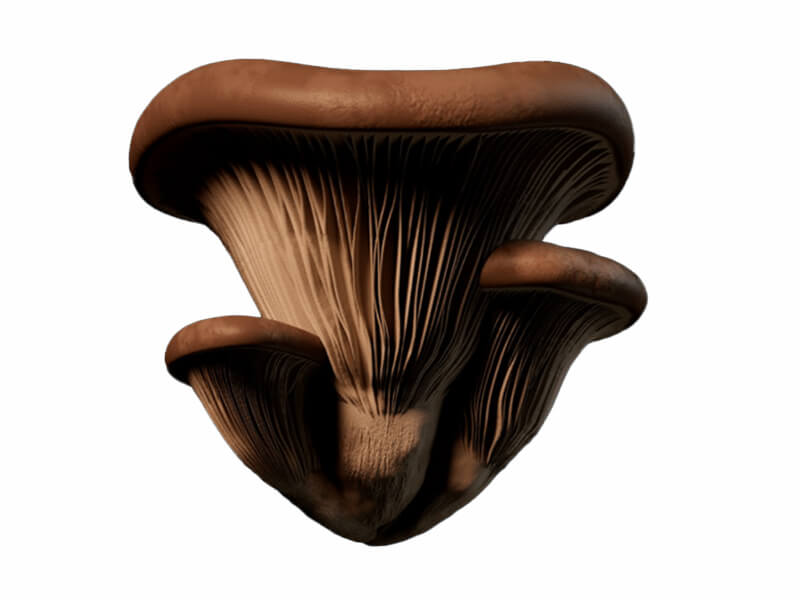
Mycelium is known for its insatiable hunger for organic matter. Specifically, the oyster mushroom (Pleurotus ostreatus) is able to process and neutralise bacteria such as Escherichia coli (commonly known as E. coli), working with its mycelial membrane to filter out microbial pathogens from contaminated water.
Tradd Cotter, mycologist and owner of the company Mushroom Mountain, runs workshops on setting up mycofiltration systems. ‘We’re using a cage that looks like a crab pot, that can be refilled with wood chips. It’ll last for a year or two. And if the cage stays put, it can be emptied out and refilled with new wood chips.’ Mycofiltration is a young science and commercial applications are scarce, but this has not stopped property owners from experimenting with this fungal capability.
Forests cover one-third of the land on Earth and their diverse habitats are home to 80 per cent of the world’s (known) plant and animal species. As for humans, billions of people in rural communities rely on forests for food, shelter, medicine and water. Forests are also a vital player in the effort against climate change as they act as a carbon sink– they absorb, or sequester, large amounts of carbon dioxide and store the carbon in their wood. Old-growth forests are particularly critical, because their roots have extended deep into the soil for centuries and sequester extra carbon out of the atmosphere, helping to manage today’s rising temperatures.
Yet deforestation – legal and illegal – continues. Aside from permanent losses of biodiversity, deforestation sets off a domino effect of land degradation impacts, including increased erosion, reduced soil fertility and piles of wood debris. Unfortunately, the standard treatment of this ‘waste’ is incineration. This releases additional greenhouse gases into the atmosphere and destroys the potential for the nutrients from the wood to be recycled back into the soil. This calls for sustainable forest management practices. One of these is mycoforestry – the use of fungi as a forest and soil builder.
Wood debris in forests can be chipped into smaller pieces, then inoculated with native saprophytic fungi species to speed up the decomposition process. This redirects vital elements and nutrients back into the soil for use by the rest of the forest. Fungi also produce glomalin at the hyphal tips, which is what fungi use to store carbon. It’s a sticky substance that binds together soil particles and builds soil architecture. This aerates the soil, helps water and nutrient retention, and regenerates impacted habitats.
Along with forests and oceans, soils also act as an invaluable carbon sink. Research found that mycorrhizal fungi in boreal forest islands in Sweden hold up to 70 per cent of the total carbon stored in soils. This means that trees connected to a mycelial network absorb carbon from the atmosphere and then transfer it into the mycelium for storage. Fungi play a critical role in regulating the global climate.
Mycoforestry was put into action in Colorado by Jeff Ravage, North Fork Watershed coordinator for the Coalition for the Upper South Platte and researcher at Denver Botanic Gardens. In 2016, he and his team of researchers set up two test sites in Denver Mountain Parks. These sites had been logged and abandoned, leaving 30 centimetres of waste wood spread across the entire forest floor. Ravage’s team recruited the help of wood-rotting species Pleurotus pulmonariuson one site and Morchella angusticepson on another.
Over five years, fungi in the first site consumed the wood chips and created 5 centimetres of topsoil – organic, mineral-rich soil from which seeds germinate – with a few centimetres of partially decomposed organic matter on top. Before this, the ground was just gravel with dust. The second site exhibited a slower rate of seeding, decaying 75 per cent over two years. The team will be treating this site with a second inoculation in 2021 to further investigate the results.
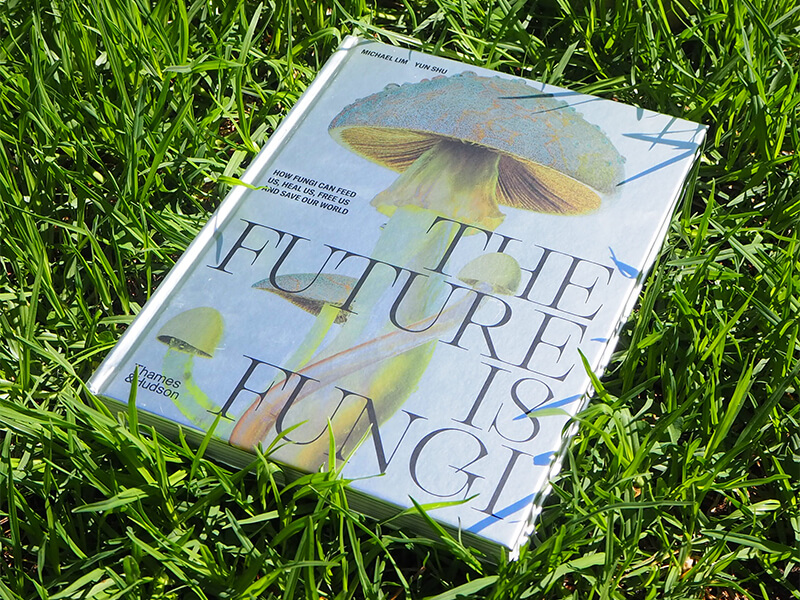
Want to get started on your own mycoforestry project? Watch out for a paper from Ravage, who wants ‘to create useful tools and distribute them freely, because we don’t have enough time left for somebody to figure out how to make a profit on saving the planet. We’re not out to create a patent,’ he says. ‘How can we patent nature?’
Mycoforestry remains an experimental forestry practice conducted by environmental groups and volunteers. Replenishing the soil in forests, improving soil fertility and increasing forest ecosystem resilience is of both ecological and economic interest. A greater uptake of mycoforestry by forestry management groups, logging companies and council decision-makers will move the science forward and protect the future of forests.
We may not see it, taste it or feel it, but we are entangled in an array of environmental toxins. Microplastics in waterways, nanoparticles in the air and noxious chemicals in soils were all introduced by human activity and have become accepted as invisible causes of illness and death. Contaminants and pollutants are abundant in our air, water and soil, all around the world.
Traditional methods of remediation, such as disposal into hazardous waste facilities, incineration and chemical treatments, are expensive, energy-intensive and only move the contamination to someone else’s backyard. We urgently need to find more permanent solutions to clean up the mess we’ve made on Earth. Many scientists have turned to mycoremediation, the use of fungi to decontaminate the environment. After all, fungi are nature’s decomposers and this strategy has been effective for Earth for over a billion years.
In forests, a major source of nutrients is from fallen trees, released as the trees break down. Their sturdy trunks are reinforced by lignin, a complex material that binds together the building blocks of wood. Only fungi can excrete enzymes powerful enough to decompose lignin. Luckily for us, the bonds in lignin are similar to those in petroleum, pesticides, plastics, dyes and a range of other toxins, which means mycelium can disassemble the hydrocarbons present in a wide spectrum of toxins. In particular, saprophytic fungi varieties called white rotters, such as oyster (Pleurotus ostreatus) and turkey tail (Trametes versicolor) mushrooms, are relatively easy to grow and love molecular decomposition.
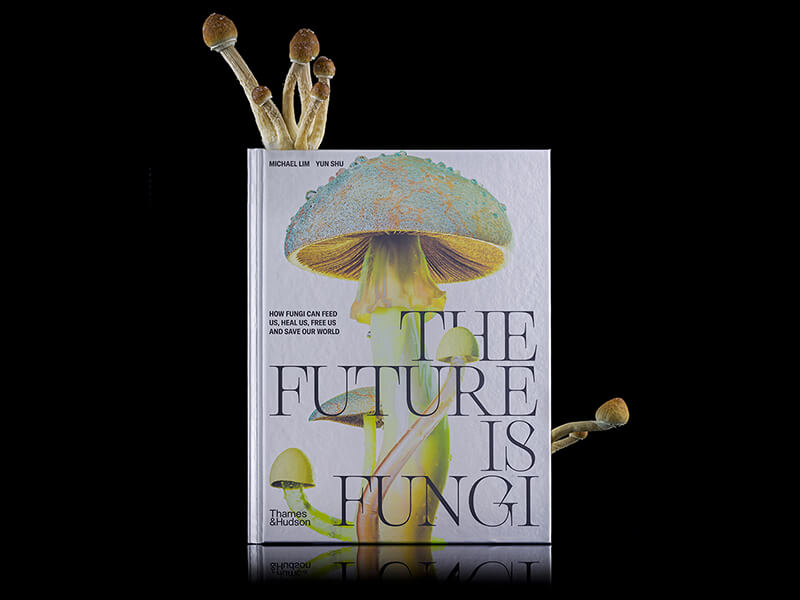
In 2016, Fungaia Farm, a mushroom farm in California, used oyster mushroom spawn to remediate gallons of diesel fuel that had spilled from a storage tank. They removed the contaminated soil and placed it between layers of fresh straw and burlap that were inoculated with oyster mushrooms. The mycelium got to work. As it fed on the petroleum, hyphae threaded throughout the crevices of the oil-laden soil. Later testing showed that all contamination was reduced to a non-toxic level and some soil was even oil-free, allowing the land to be reclaimed for landscaping.
Levon Durr, the owner of Fungaia Farm, has noted that the project wasn’t without its mistakes and he has since published a report to aid grassroots practitioners. Another diesel spill was discovered in 2020 and the Fungaia Farm team hopes to detoxify the soil using mushroom spawn once again. But convincing landowners to try mycoremediation is challenging. ‘It can cost US$15,000 for one remediation treatment on site and it quickly adds up because it’s a biological process and may need multiple treatments over the course of a year to get the soil to a non-toxic level,’ says Durr, ‘compared to paying US$45,000 once-off to dig up the contaminated soil and haul it away.’
Conditions are also difficult to control in these outdoor projects. It may be cold and rainy one month, but dry and hot the next. If temperatures are too high, the piles of soil and burlap can turn into a compost heap and kill the mycelium. Controlling for a myriad of variables on the field takes patience and resilience. Fungaia Farm continues to educate and produce mushroom spawn to cultivators for food production and mycoremediation projects.
Mycocycle, founded by Joanne Rodriguez with Peter McCoy as chief science officer, is pioneering a new industry: using fungi to divert waste from landfills. They are remediating waste from roofing, asphalt and chemical manufacturing industries. As the mycelium consumes waste and binds it together, Mycocycle creates new materials from the process. There is strong interest from manufacturers in these industries for a cost-effective and sustainable waste-treatment solution. The challenge Rodriguez faces to scale up mycoremediation ‘is the lack of interdisciplinary backgrounds to move these discoveries out of the lab and into real world treatments’. To combat this, Mycocycle launched an equity crowdfunding campaign in 2020 encouraging people to join the cause and accelerate change. McCoy is also the founder of MYCOLOGOS, an online education platform for all things fungi.
This is an edited extract from The Future is Fungi by Michael Lim and Yun Shu.
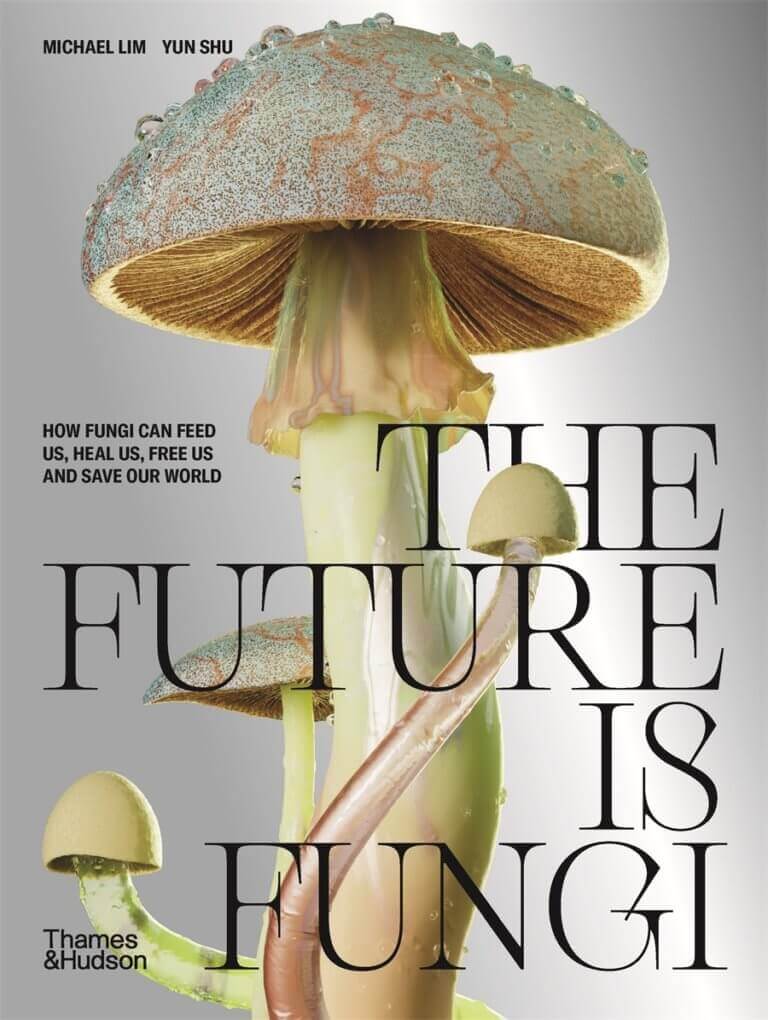
The Future is Fungi by Michael Lim and Yun Shu is available now.
AU $49.99
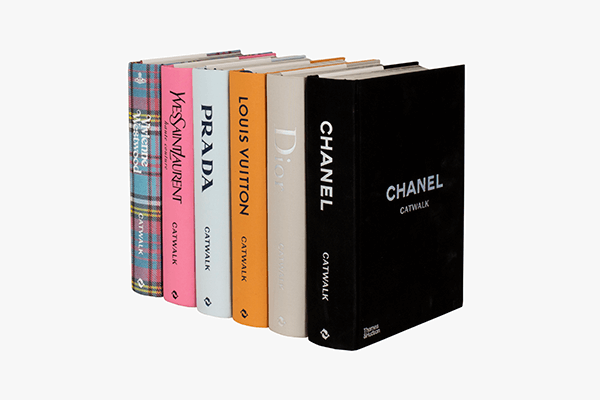
WINNER: Carolyn Sargeant, prize claimed.
TERMS AND CONDITIONS: WIN the entire Catwalk series (the Competition)
These are the Terms and Conditions (Terms) of entry for the Competition, conducted by Thames & Hudson Australia Pty Ltd (Thames & Hudson Australia), whose registered office is at 11 Central Boulevard, Port Melbourne, Victoria 3027.
Please read these Terms carefully because you will be deemed to accept them if you enter the Competition.
For all questions relating to this competition, please contact Thames & Hudson Australia at: enquiries@thameshudson.com.au
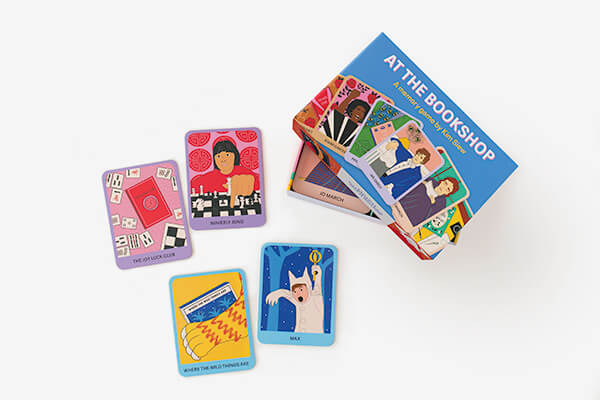
Hello, book lover! You’ve come to the right place. This March, we are so thrilled to be releasing At the Bookshop, a book lover’s memory card game with illustrations by Kim Siew.
The perfect gift for the bookworm in your life – match twenty five of the most iconic books with one of their famed characters.
To celebrate its upcoming release, we’ve created this short quiz to test your bibliophile knowledge. How many of these five characters can you guess?
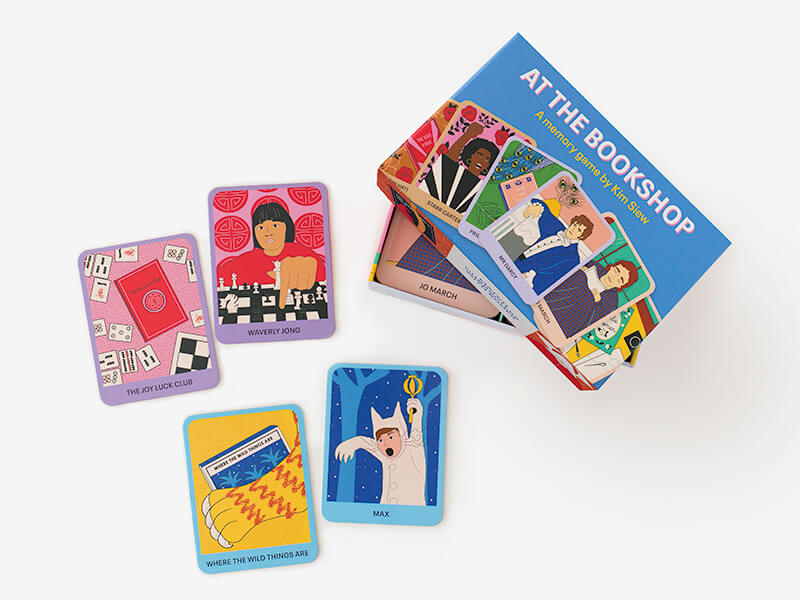
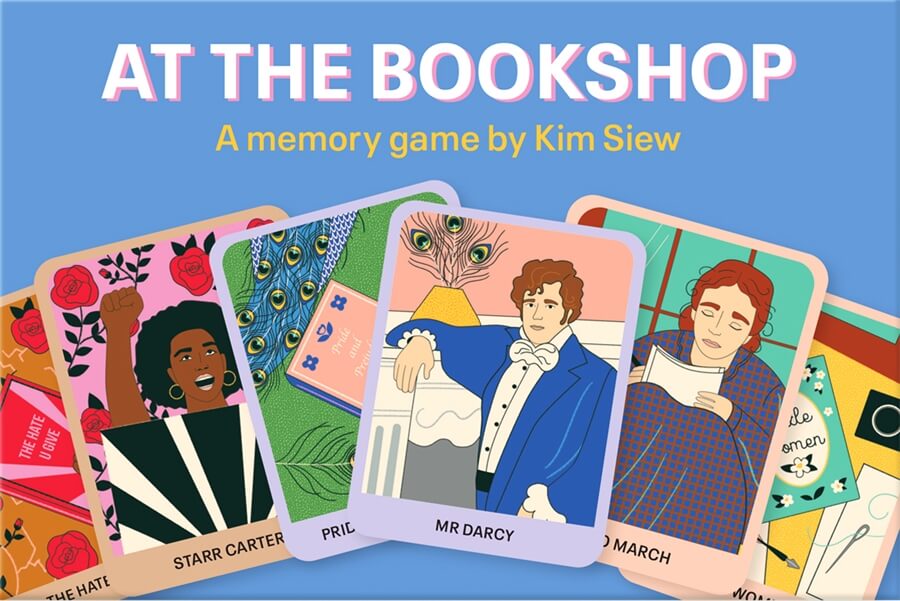
At the Bookshop by Kim Siew is available from 29 March 2022.
AU $24.99
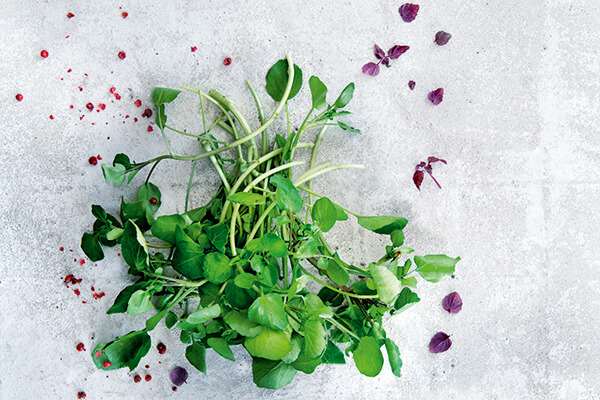
THIS COMPETITION IS NOW CLOSED
Terms & Conditions: WIN a copy of Salad by Janneke Philippi. This competition is open to all active subscribers of the Thames & Hudson Australia eDM database until Thursday 3 March 2022. Sign up to our e-newsletter here.
TERMS AND CONDITIONS: WIN a copy of ‘Salad’ by Janneke Phillipi (the Competition)
These are the Terms and Conditions (Terms) of entry for the Competition, conducted by Thames & Hudson Australia Pty Ltd (Thames & Hudson Australia), whose registered office is at 11 Central Boulevard, Port Melbourne, Victoria 3027.
Please read these Terms carefully because you will be deemed to accept them if you enter the Competition.
For all questions relating to this competition, please contact Thames & Hudson Australia at: enquiries@thameshudson.com.au
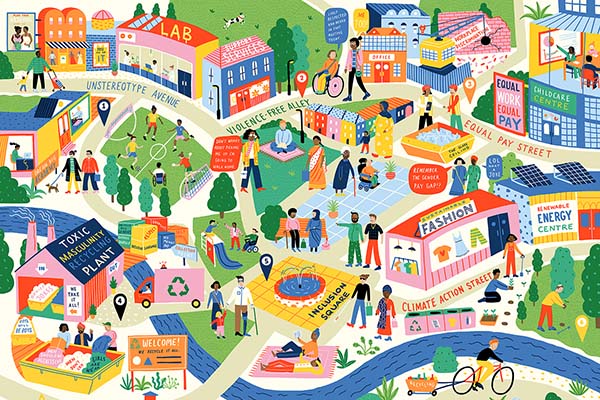
In support of UN Women Australia, Ruby Taylor welcomes you to Equiterra: a society where all people have equal rights and opportunity, regardless of their gender. A community where the glass ceiling is smashed, the gender pay gap is a thing of the past and toxic masculinity goes straight into the recycling.
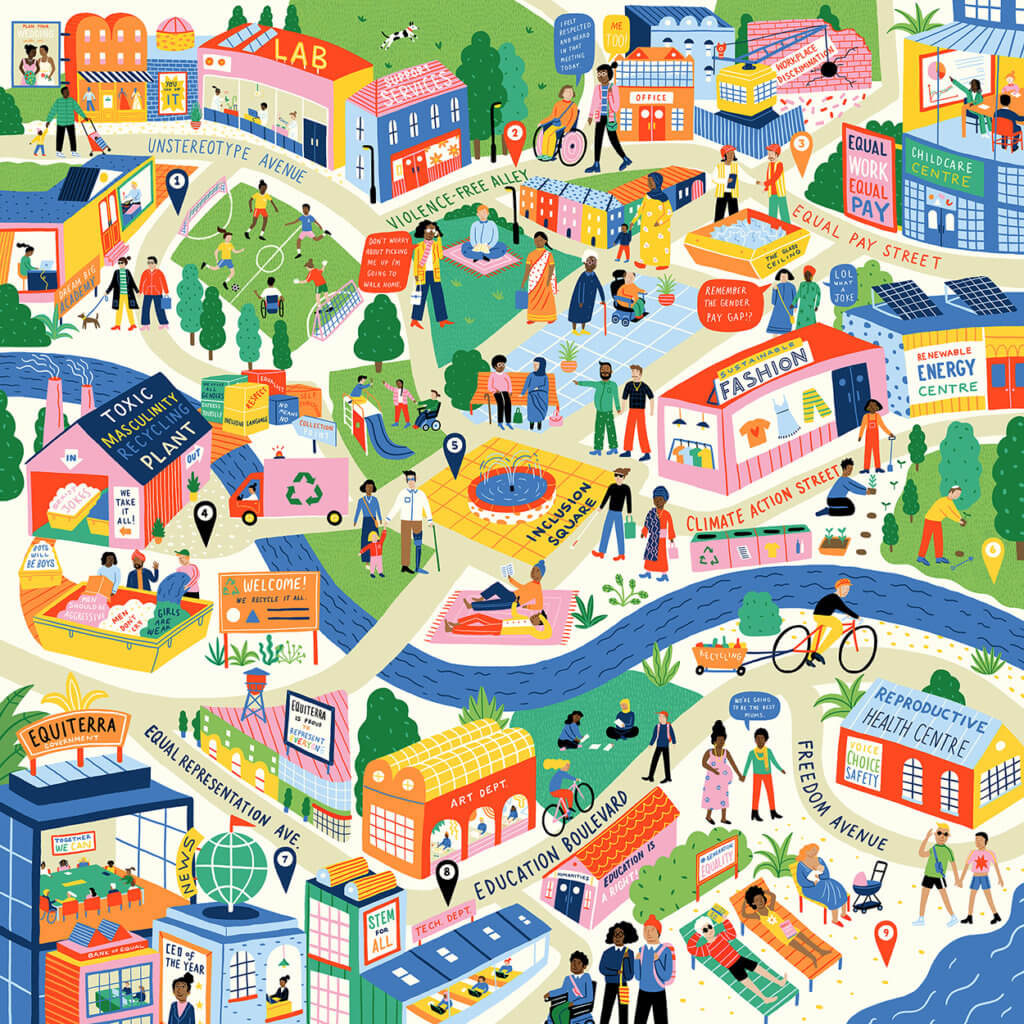
We’re thrilled to have paired up with Ruby Taylor and UN Women Australia to turn this uplifting artwork into a 1000-piece puzzle.
So, how far from reality is Equiterra from Australia in 2022? We looked at five of the places featured in Ruby Taylor’s utopia and compared them with the facts. Unfortunately, the figures show we have a long way to go before we reach gender equality.
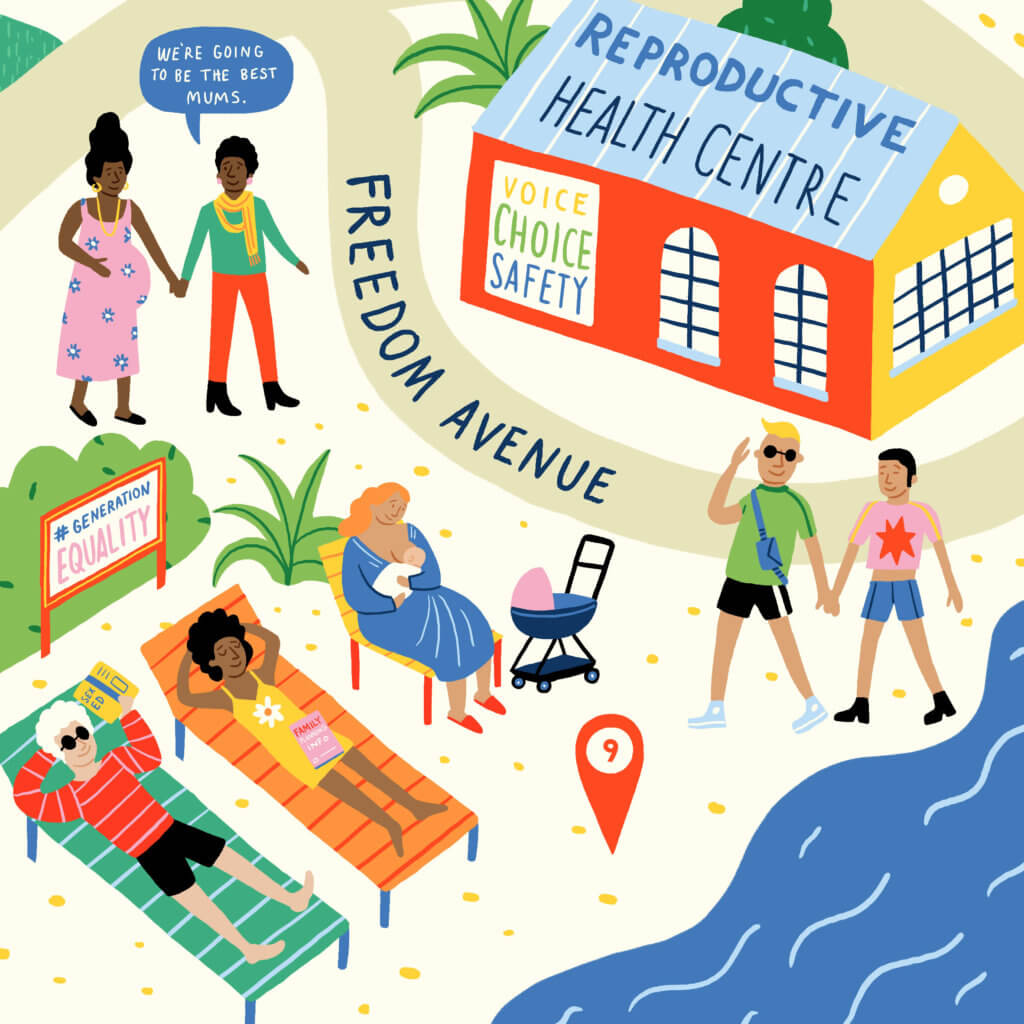
In Equiterra:
Freedom is one of the guiding principles of life in Equiterra. This includes the freedom to choose your identity, the freedom to choose how many children you have, and the freedom to control what happens to your own body. Freedom Avenue in Equiterra is home to a Reproductive Health Centre that provides nonjudgmental care to all who need it. Here, residents of Equiterra can access safe, voluntary family planning information, as well as comprehensive information about sexuality, and sexual and reproductive health.
In Australia:
Across Australia, the freedom to access safe and affordable healthcare varies drastically from place to place. For example, abortion has been decriminalised in the state of Victoria, but accessing abortions is still difficult for many women, especially for migrant women and women living in regional areas. This shows that for many Australian women, freedom of choice largely depends on where you live. Many trans and gender diverse people also experience additonal barriers to accessing safe healthcare, including disrespectful attitudes and misgendering by medical professionals.
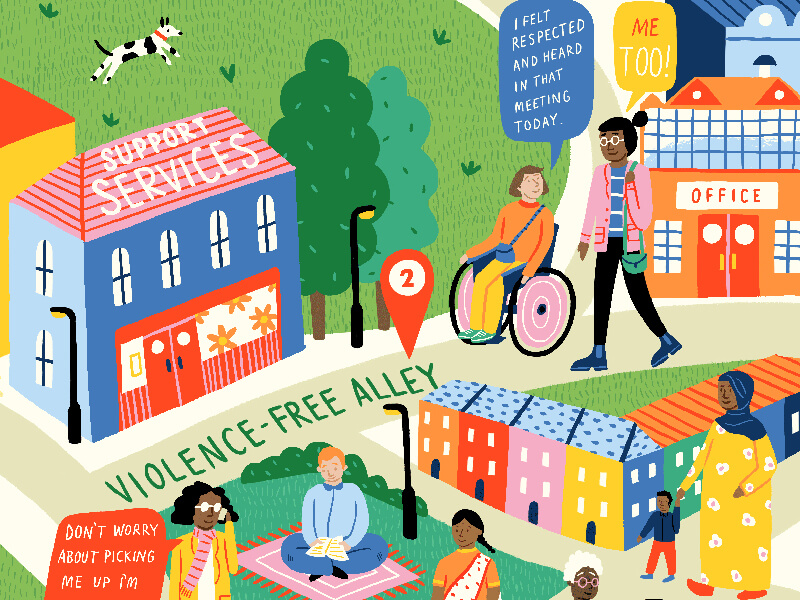
In Equiterra:
In Equiterra, women feel safe walking down the street, no matter what time of day or night it is. Women are free to walk home alone at night without clutching their keys between their fingers or texting their friends to confirm they’ve arrived home without incident.
Women, men and nonbinary people in Equiterra enjoy equal relationships, free from violence or coercion. On the home front, women and children feel safe in their homes and enjoy the same security as their male family members. Domestic violence is a rare occurrence here, because there are strong laws against it and services to support victims. Since gender equality is the norm in Equiterra, the power dynamics between intimate partners are not oppressive or toxic.
In Australia:
Violence against women is a serious and widespread problem in Australia. Recorded crimes data shows that women are five times more likely to be victims of sexual assault than men. Similarly data collected by Our Watch shows that one in three women has experienced physical and/or sexual violence perpetrated by a man they know, while one in four women has experienced physical or sexual violence by a current or former intimate partner since age fifteen. On average, one woman a week is murdered in Australia by her current or former partner, and almost ten women a day are hospitalised for assault injuries perpetrated by a spouse or domestic partner.
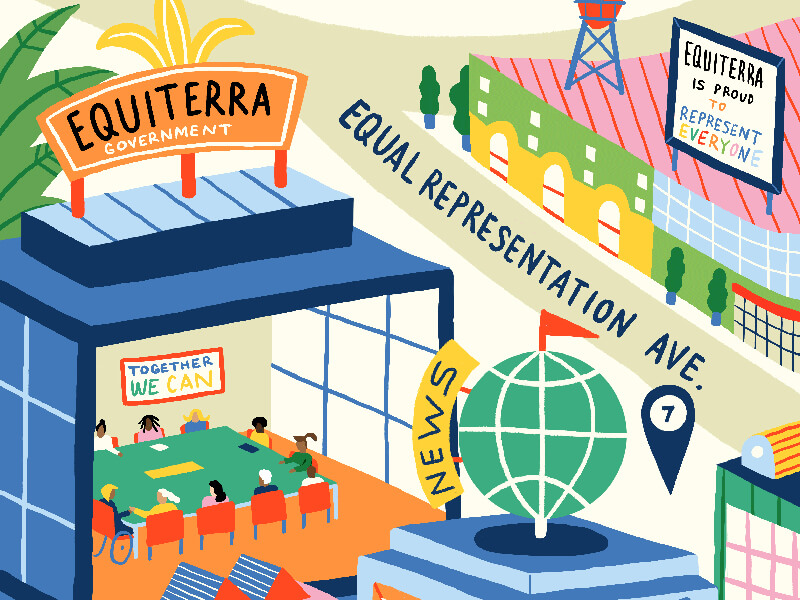
In Equiterra:
In Equiterra, men and women are equally represented in public life, including in the political sphere, corporate boardrooms and in the media. Women have equal say in decisions that affect their lives, their bodies, their policies, and their environment.
In Australia:
The reality looks starkly different in Australia. In the business world, data from the ABS indicates that managers are almost twice as likely to be men than women. Similarly, only seventeen per cent of CEO positions in the non-public sector were occupied by women in the period from 2018 to 2019.
On a more positive note, in the period from 2019 to 2022, for the first time, there was equal representation between men and women parliamentarians in the Senate. However, women still comprise only three in ten federal parliamentarians in the House of Representatives. And despite the improvements in the Senate, female politicians and political staffers have reported a toxic and sexist culture in Parliament House, leading many to leave their jobs.
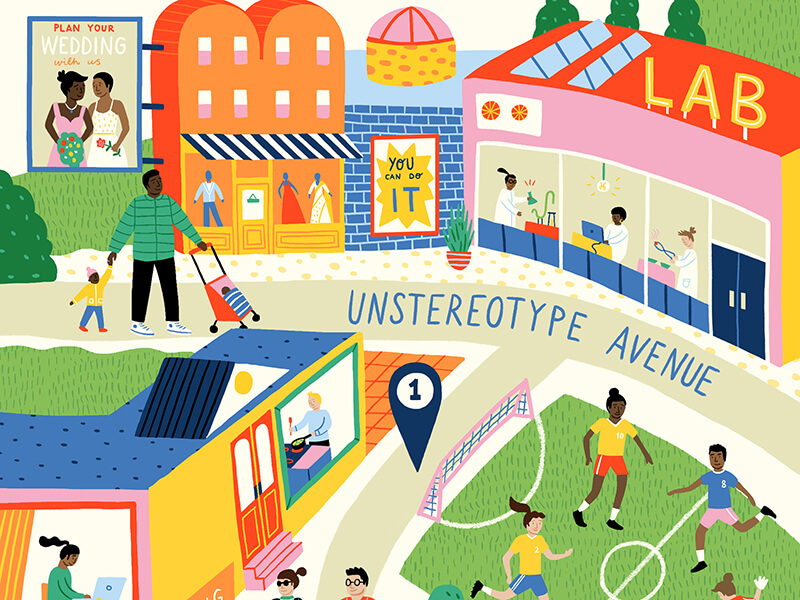
In Equiterra:
Children in Equiterra grow up without the negative influence of restrictive and harmful stereotypes around gender roles. Men and women share chores and care duties at home equally, and domestic labour such as caregiving is valued as equally as participation in the paid workforce. In Equiterra, diversity is celebrated, not feared, and a culture of acceptance dominates peoples’ hearts and minds.
In Australia:
Archaic beliefs around gender roles mean that women in Australia do far more domestic labour and caring for children than men. For every hour an Australian man spends on unpaid care work, an Australian woman spends one hour and 48 minutes, according to the Workplace Gender Equality Agency. Similarly, within opposite-sex couples, nearly half of all household tasks are always or usually done by the female in the relationship, compared to only ten per cent done by the male. This grows even more unequal after couples have children.
The heavy load women carry at home often causes them to miss out on promotions at work, or to actively avoid seeking them for fear they will not be able to juggle their responsibilities. This translates into economic inequality between men and women, particularly in retirement.

In Equiterra:
In this utopia, not only do all people receive equal work for equal pay, but the gender pay gap across industries no longer exists. With care work and household responsibilities shared equally, and paid parental leave equally accessible to all, women are not penalised for taking time out of the paid workforce to care for children. The minimum wage here provides a decent standard of living and there is quality and affordable healthcare for those who need it.
In Australia:
In Australia, it has been a legal requirement since 1969 that women and men be paid the same amount for performing the same role. Despite this, there’s still a persistent gender pay gap across industries, with women’s full time adult average weekly earnings being only eighty-six per cent of that of men. This represents a gender pay gap of fourteen per cent. As a result of lower wages and more unpaid caregiving responsibilities, women retire with a superannuation balance on average forty-seven per cent lower than men.
In 2021, the Global Gender Gap Index placed Australia at number 50 – this represented a decline of five places from the previous year, meaning we are actually going BACKWARDS on this issue. This is likely in part due to the unequal impact of the COVID-19 pandemic, which has seen women leaving the workforce at a higher rate than men. Even among those who retained paid work, women took on more duties in childcare, housework and elder care, increasing the ‘double shift’ of paid and unpaid work.
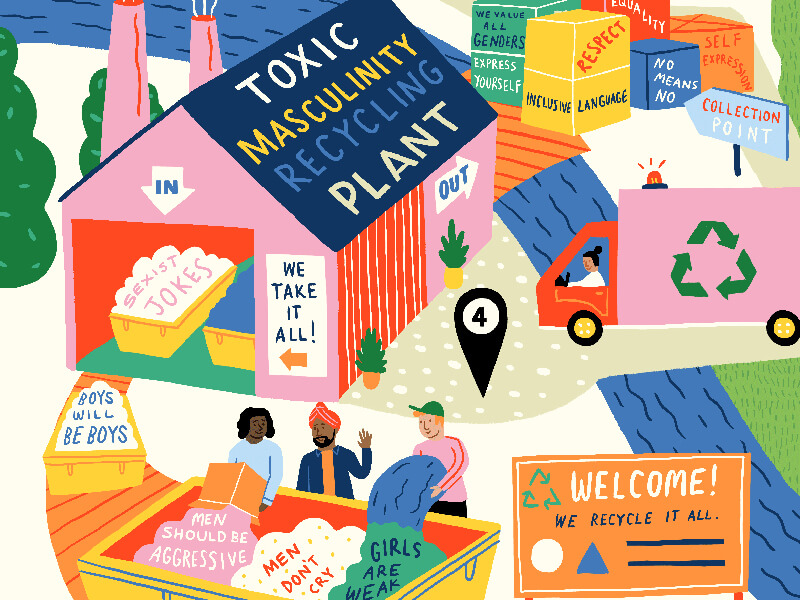
In Equiterra:
Outdated and sexist values have been ditched. Archaic notions like ‘men don’t cry’ and ‘boys will be boys’ are recycled into inclusive language and respect. Boys are encouraged to express their emotions and are allowed to be vulnerable. Freed from oppressive gender roles, the residents of Equiterra are not held back by dominant forms of masculinity, and they are happier and mentally healthier than people in any other society.
In Australia:
Outdated stereotypes about masculinity are often rigid and harmful to men in Australia. Men are often encouraged by society to appear dominant, aggressive and to repress their emotions. These rigid stereotypes are often difficult for many men to live up to and can prevent them from living fulfilling lives. Men who subscribe to these dominant norms are more likely to engage in risk-taking behaviours, such as dangerous driving and substance abuse, and are less likely to seek help or to talk about their feelings. They also experience greater health risks, including higher rates of depression and suicide
This article was inspired by UN Women Australia’s Welcome to Equiterra.
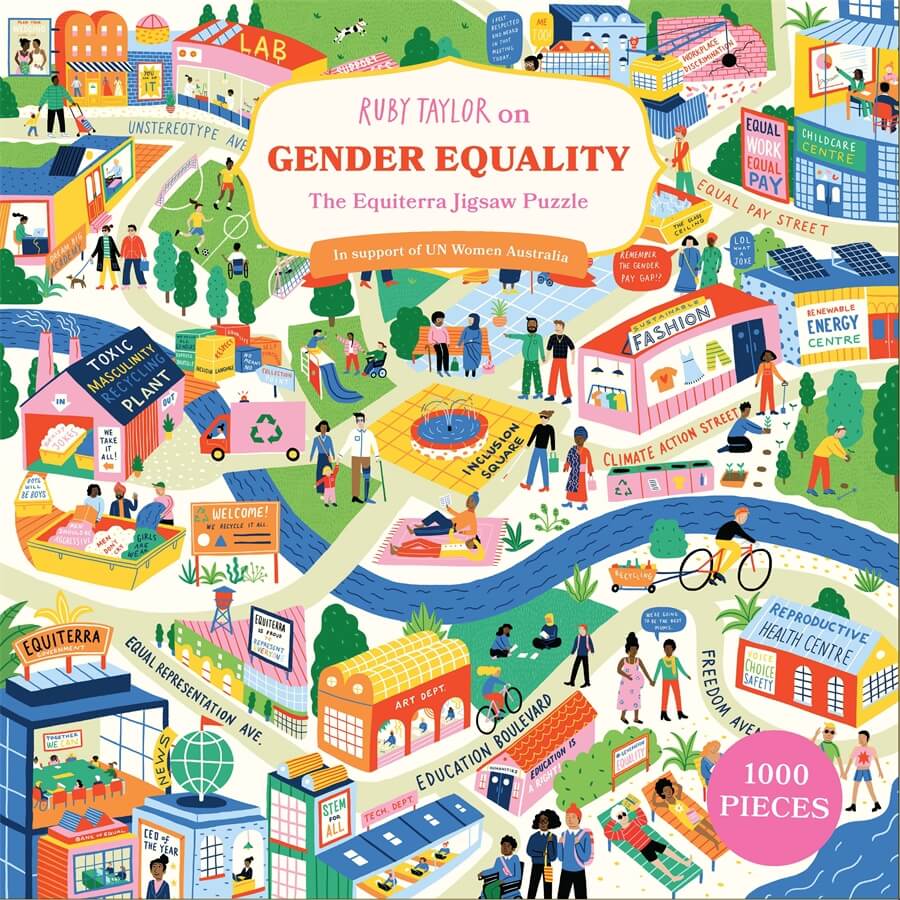
Ruby Taylor on Gender Equality is available now.
AU$32.99
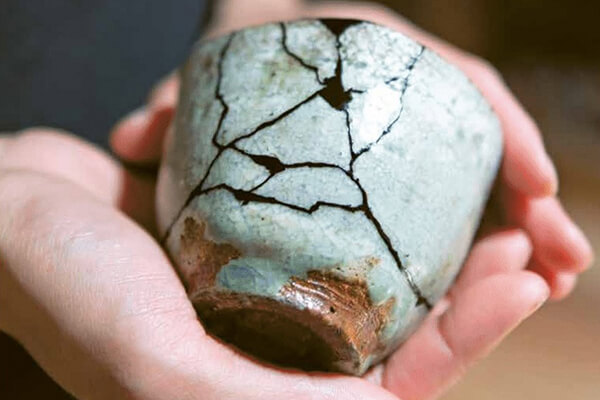
Modern Japanese culture, though progressive technologically, still celebrates and supports the lives and work of craftspeople. The makers themselves are fiercely proud of the long traditions of their crafts – whether in woodwork, wire, ceramics, glass, paper or textiles – and see great importance in carrying these traditions into the future. They often feel called to their chosen medium and take satisfaction in knowing their work will live on past their own lifetime.
The makers often use modern equipment and materials, but many also follow traditional methods and work with simple tools that have been passed down through generations. Each artist has their own style, but all are passionate, dedicated and truly inspirational.
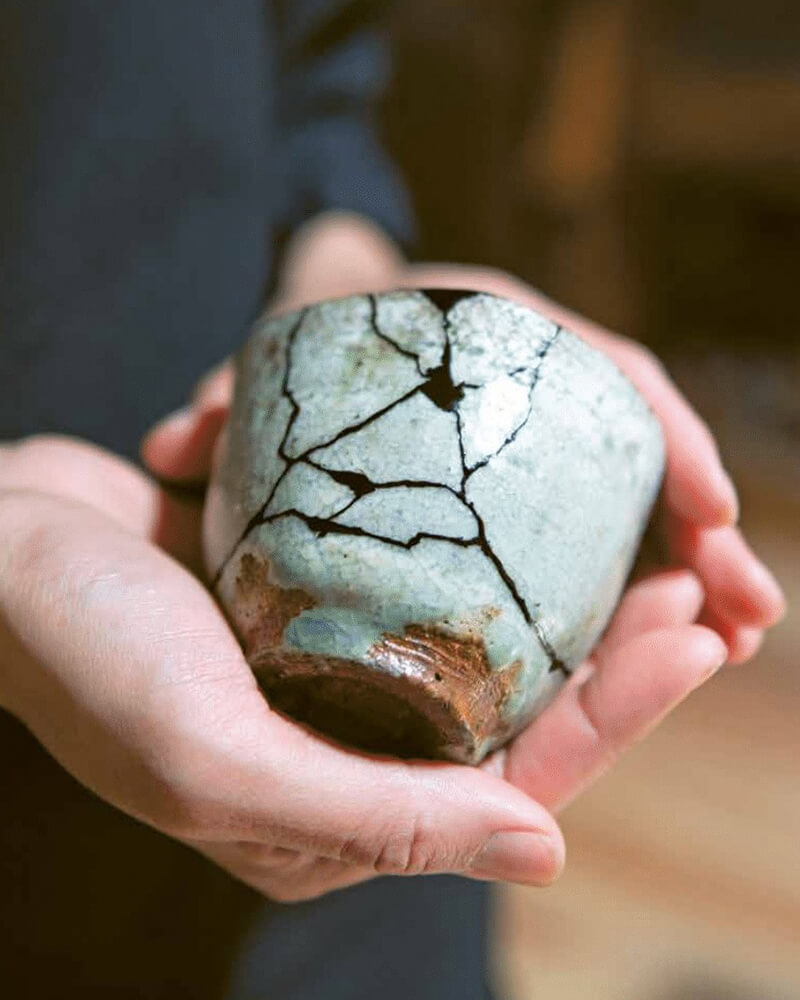
Kintsugi is the Japanese art of repair, specifically the repair of ceramics. In its truest and traditional form, it is a profound and powerful art based on the philosophy that something is more beautiful because it has been broken and repaired. Mio Heki devotes her working life and her artistic heart to this skilled conservation technique, which uses urushi (a tree sap) dusted with gold.
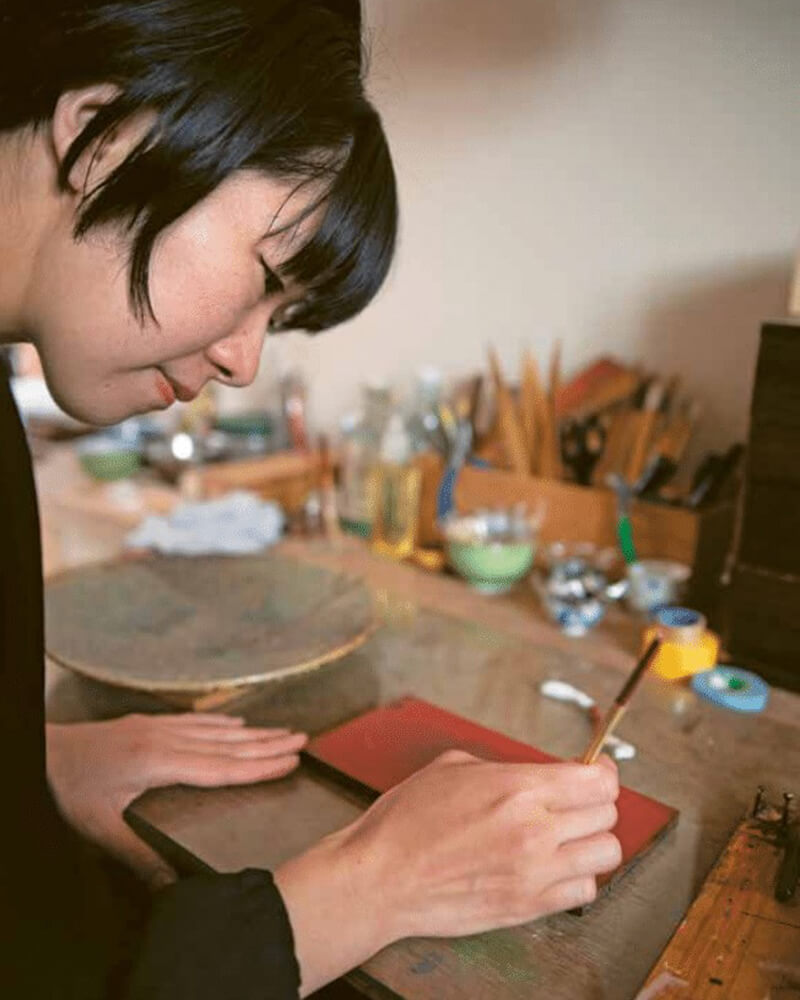
Mio’s small but beautifully appointed atelier is located in a north-western suburb of Kyoto. It includes an area where she displays her work – which extends to lacquerware jewellery and lacquer objects – a drying cupboard and her work table. The table is short-legged, like traditional Japanese dining tables, so she can sit on the floor while she works. She says she feels most grounded working this way.
After majoring in the traditional craft of lacquering at Kyoto City University of Arts, Mio worked in a studio that restored temple ornamentation. In that role, she learnt more about kintsugi and was asked to repair a sacred temple bowl. Working on the bowl, she immediately felt that this type of work was her calling. It is a calling that has become a profession, one which now includes teaching kintsugi in Kyoto, as well as in cities including Paris and Amsterdam.
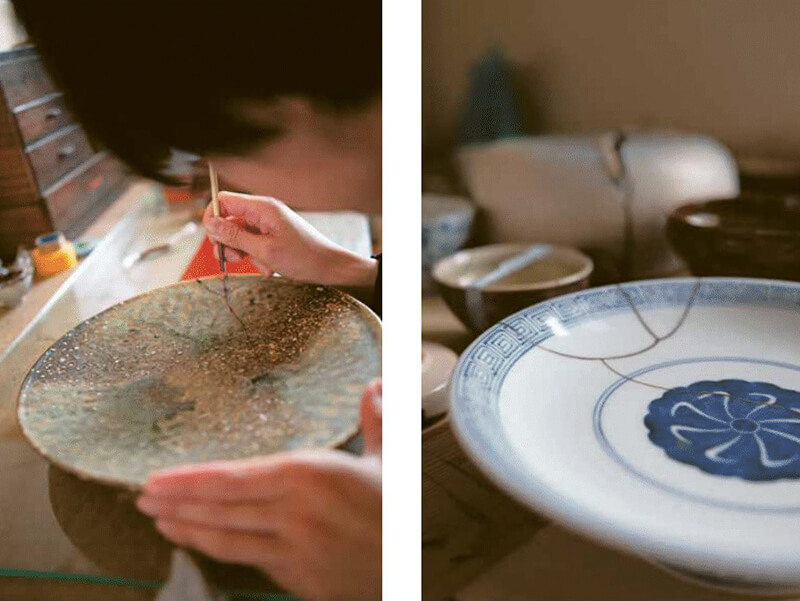
Mio finds it very special to be able to fix and restore a piece that has been loved and respected, saying she ‘hears the voice’ of the thing in her hands. ‘It is being present and conscious of the object, of how it was loved by the person, of the hands that made it. It is always being sure not to change the artwork’s shape from its original form, but to fix and add gold, thus showing great care to its ongoing life as an object.’
The practical work of kintsugi is long and repetitive, as well as requiring dexterity and patience. Mio feels that her art practice has benefits in her daily life; the process has become like a meditation to her. She shows great respect to her tools, believing that they are sacred and deserving of special
care. She has made many of the implements herself, cutting and planing cypress spatulas to mix the urushi, for example, and built racks to hold the tools between uses. In her spare time, Mio is studying traditional tea ceremonies, and she reflects that her love and care of her tools is in keeping with the reverence shown for the equipment used in a tea ceremony. In both instances, tools are cleaned at every point, and kept organised and in good repair, honouring their important part in the ritual.
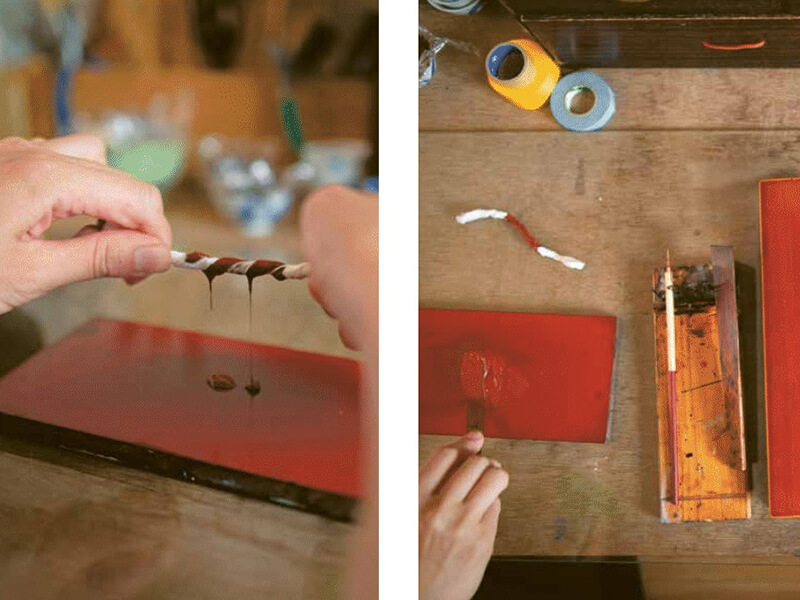
Mio shows equal respect to the materials she uses the urushi; the (real) gold, in fine powder form; and the jinoko and tonoko, the clay-type powders used for mixing. They are cared for in honour of nature and its limited resources; no part is wasted or discarded.
With the drying process taken into account, repairs can take up to a year to complete, depending on the intricacy of the break or chip and the size of the object. With good humour, Mio says that most days consist of ‘painting, sanding, painting, sanding – but that is okay, it takes time to make something beautiful.’ A vessel repaired by Mio will not only hold, as she attests, ‘the soul of the maker and the owner’ but also the spirit of this talented and thoughtful woman who joins fracture lines and sprinkles them with gold.
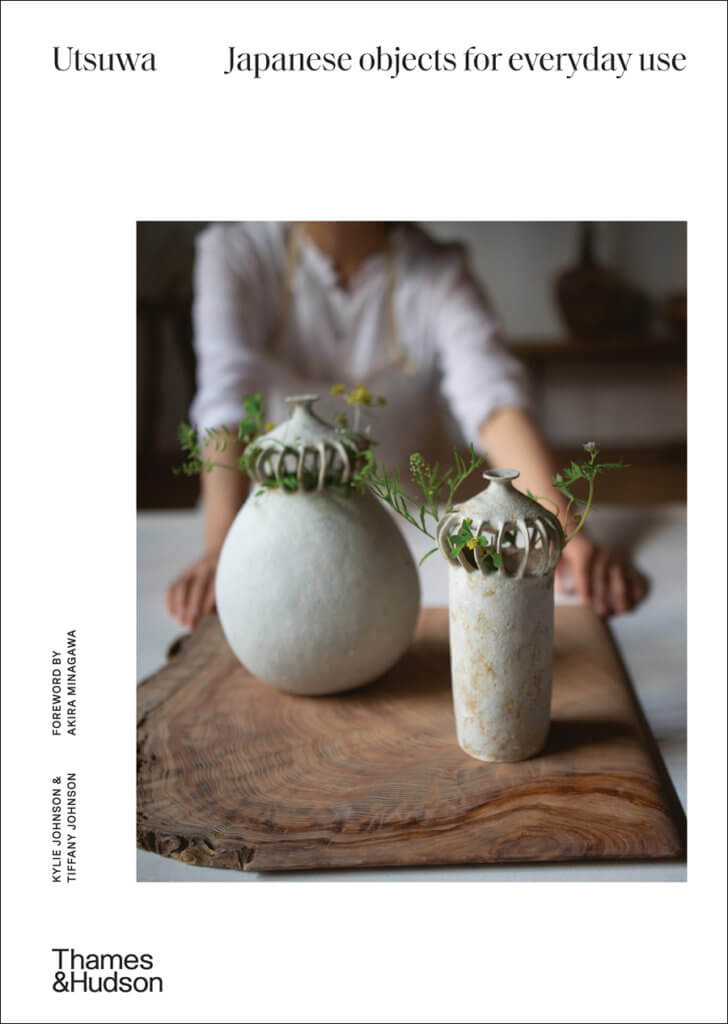
Utsuwa is available now. Text and photography by Kylie Johnson and Tiffany Johnson.
AU$59.99
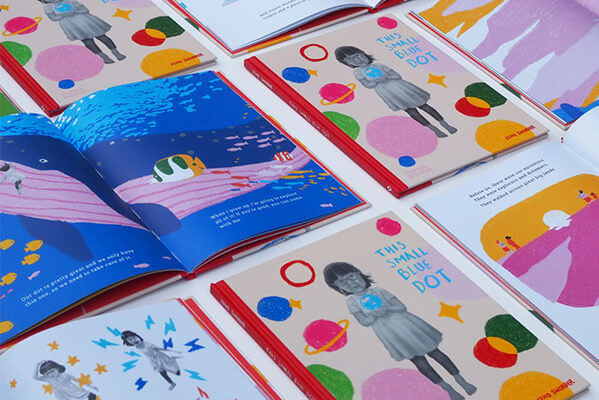
This Small Blue Dot is an award-winning children’s book with a powerful message of hope and interconnectedness.
We recently chatted with author, Zeno Sworder, about his daughter’s response to the book, how it felt to win a CBCA award, and plans for his next book.

Congratulations on winning the CBCA New Illustrator Award last year! tell us about that: how did it feel to win?
It was a surprise and also a joy to share that recognition with my daughters who were such a big part of the book. This Small Blue Dot was originally made just for them – an audience of two. It has been wonderful to hear from teachers and parents who are passionate about the book and see the book reaching an audience around the world.
You’ve previously talked about loosely basing the main character in your first book on your oldest daughter. How did she respond when she saw your illustrations?
She loves the book and has started making her own picture books in folded and stapled paper. I think she just finished her eighth book (about a talking booger). So she has me well and truly beat. Her younger sister who is four is much more enthusiastic about This Small Blue Dot and used to proudly march around the house with the book, telling visitors her sister was inside.
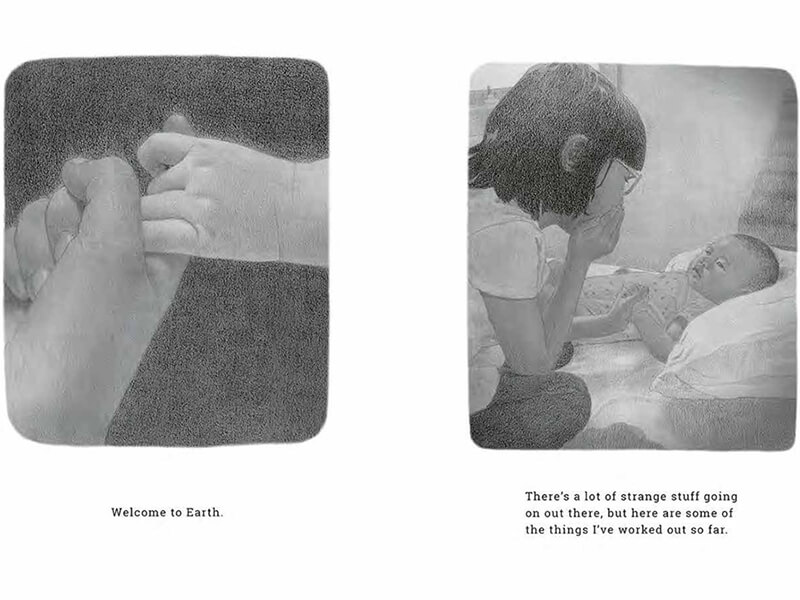
You’ve got a new book coming out later in the year. What can you tell us about it?
I am excited for the new book, My Strange Shrinking Parents, to be out in the world. It was written in a flash but has taken more than two years to illustrate. At its core it is about migrant parents who sacrifice their height, bit by bit, for their son’s wellbeing. As a result, they become smaller as their son grows taller. It is a strange and surreal story that describes the journey from child to parent and the shape that a life takes when viewed from a certain distance. While it is deeply personal it also reflects the story of many young people who grow up feeling different and out of place.
Can we expect a character based on one of your daughters in this one?
Unfortunately, they don’t show up in this one but there are projects in the future that I would love to include them in.
How would you describe your creative process? Do you find that the story or the imagery come to you first?
The process is always changing for me. If there is a recipe for making picture books, I haven’t found it yet. Generally, ideas and characters will linger with me until I draw them or write them down. My Strange Shrinking Parents was written at 2am in the morning while carrying my youngest daughter up and down the length of the house trying to get her back to sleep. I set up a notepad in the kitchen at the far end of the house and wrote a sentence each time I passed it. In my mind I had a very strong image of the parents standing in a garden at sunset, which I drew and painted over the next couple of days. That first image of the parents eventually became the final page of the picture book.
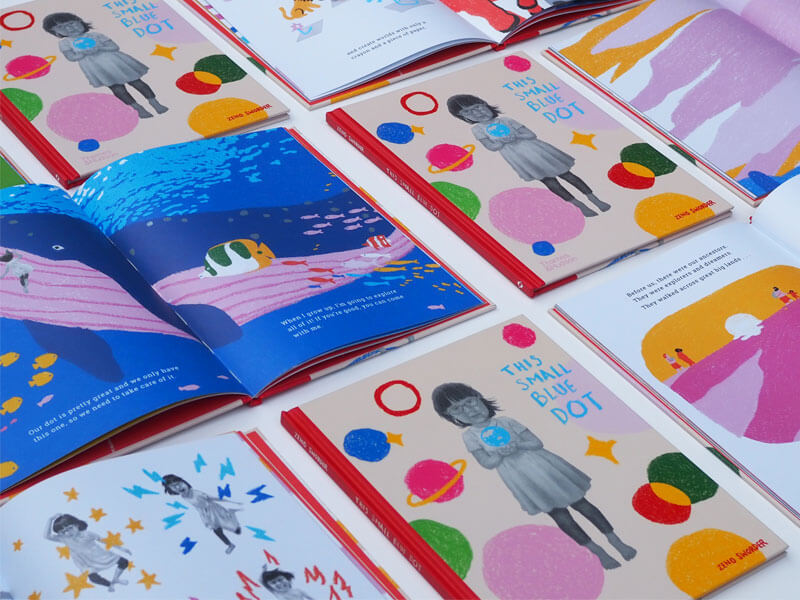
Has this process changed at all since you wrote your first book?
I am regrettably very slow when it comes to illustrating my stories. Part of that is my preference for drawing on paper with traditional tools rather than working digitally. I have tried to speed up this process but find that I work better at a slower pace where I can lose myself in the imaginary world on the page.
Is there a song that encapsulates your approach to life and work?
What a great question. I am tempted to say chopsticks on the piano, which incidentally is the only piece of music I can play (much to my mother’s shame – she is a gifted pianist). A poem that I hold close to my heart is Robert Frost’s The Road Not Taken and that is probably a better answer. I tend to instinctively take the more difficult path through things as I feel it will be the better teacher.
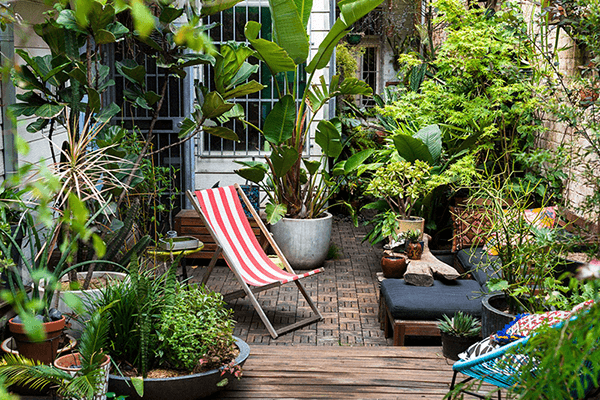
Georgina Reid is an intrepid hunter of stories, plants and ideas. In The Planthunter, she uncovers the exceptional and ordinary ways people around the world find truth, beauty, purpose and connection through the act of gardening.
The Planthunter is a visceral and seductive celebration of life in the garden. It’s for the plant curious, the plant killer, the plant lover, and everyone in between.
Whether you’ve got a large garden, a small courtyard or a merely a windowsill, this selection of photos from the book will have you inspired to get you hands dirty and connect with nature.
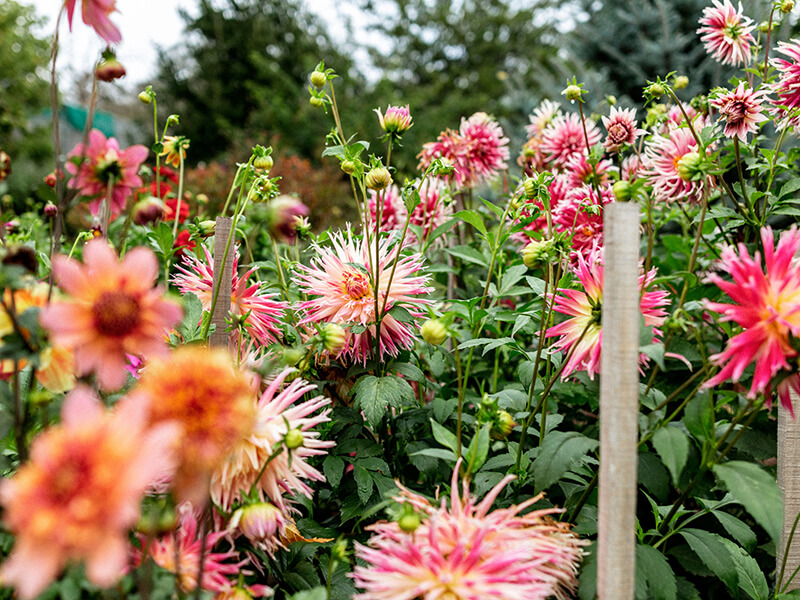
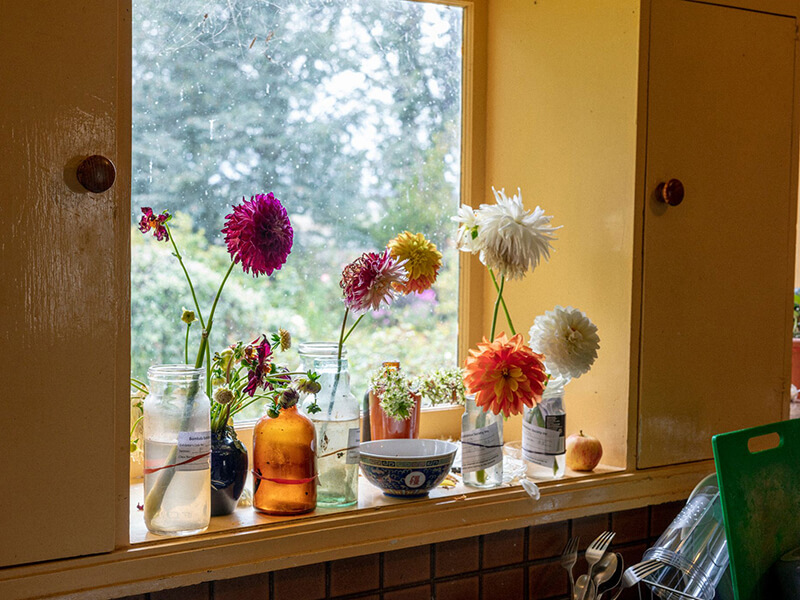
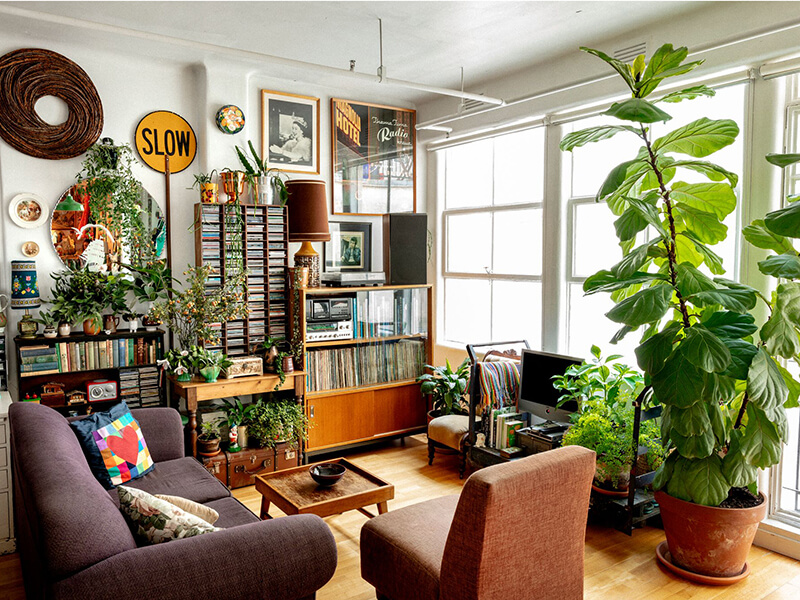
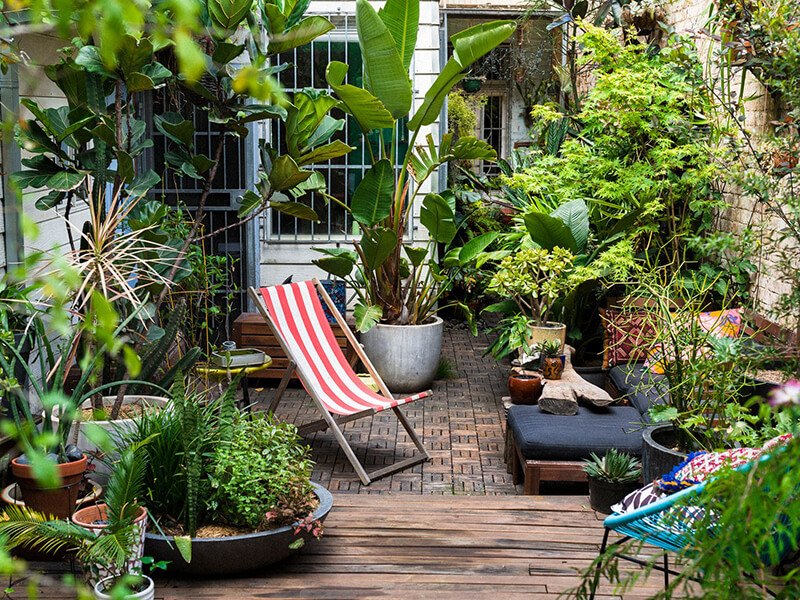
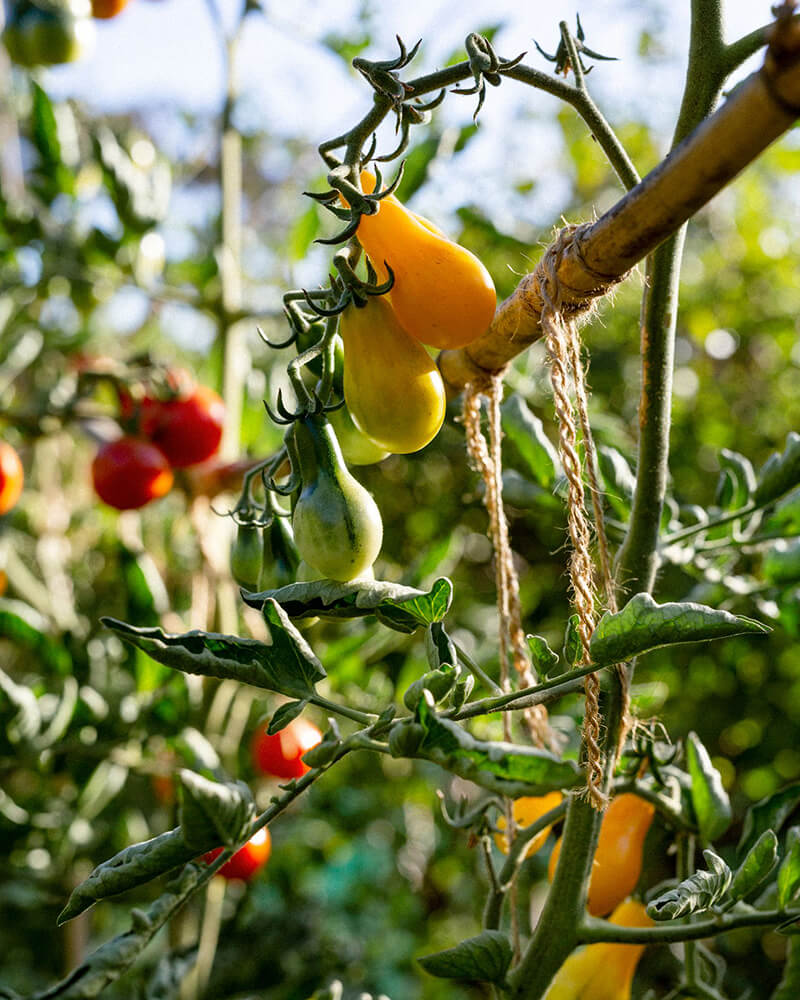
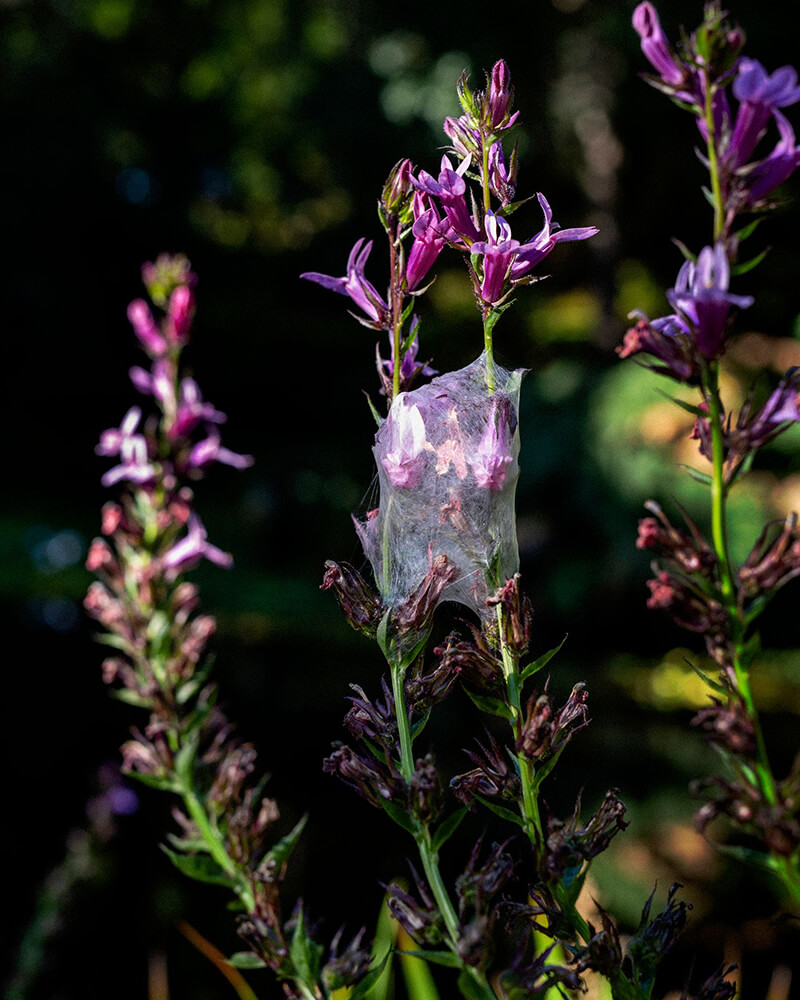
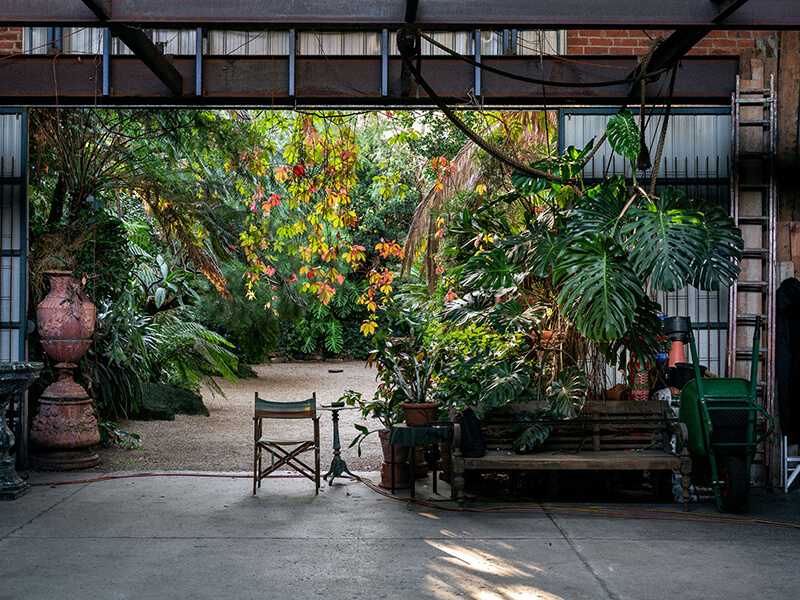
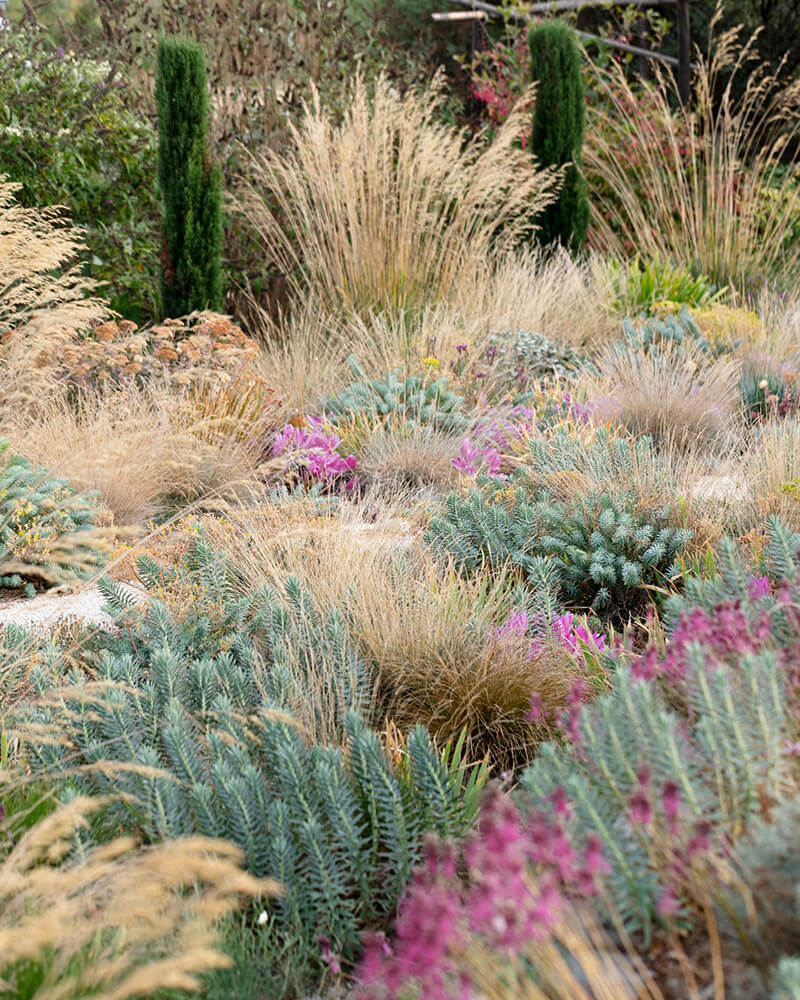
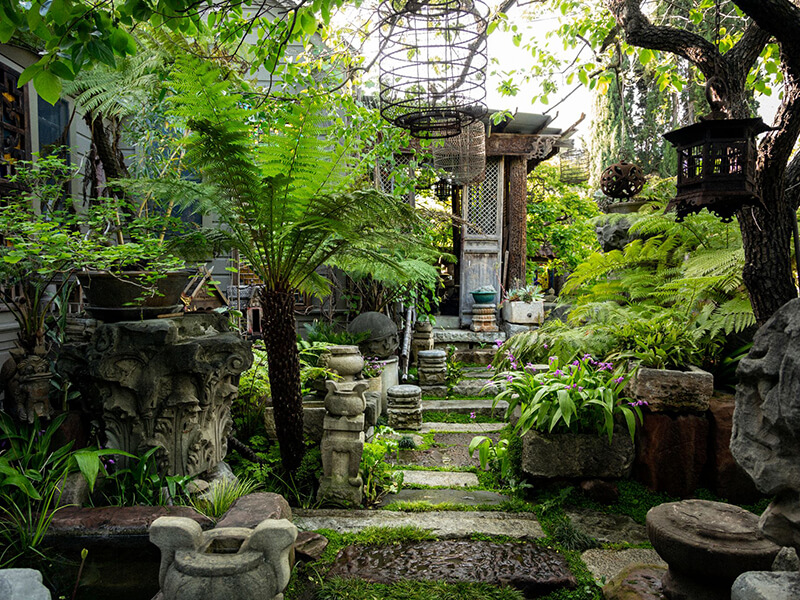
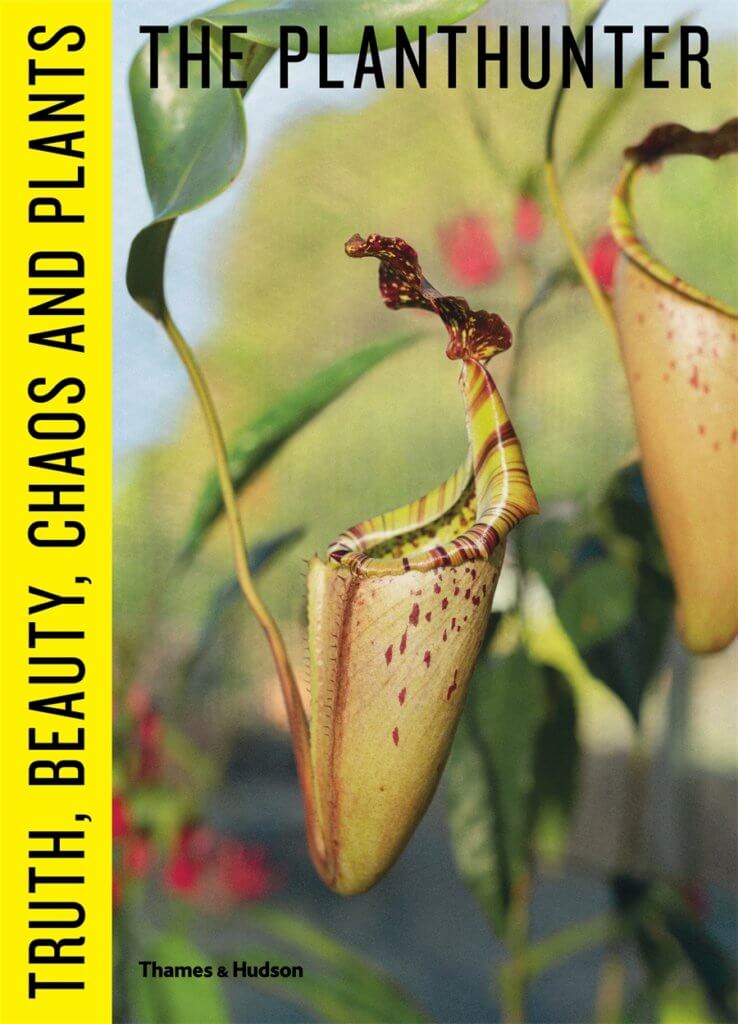
The Planthunter is available now.
AU$59.9
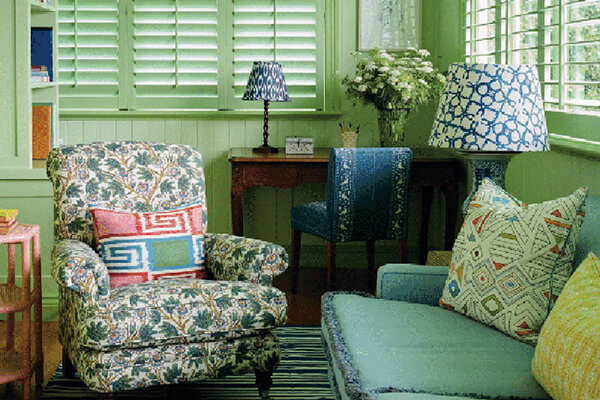
Anna Spiro has long been hailed as Australia’s most original and creative interior designer. Her globally adored aesthetic is unapologetically maximalist and a paean to comfort; her devotion to the craft of working with pattern on pattern on pattern – combined with her intuitive layering of colours, objects old and new, art, books and foraged treasures – creates spaces that sing with individuality.
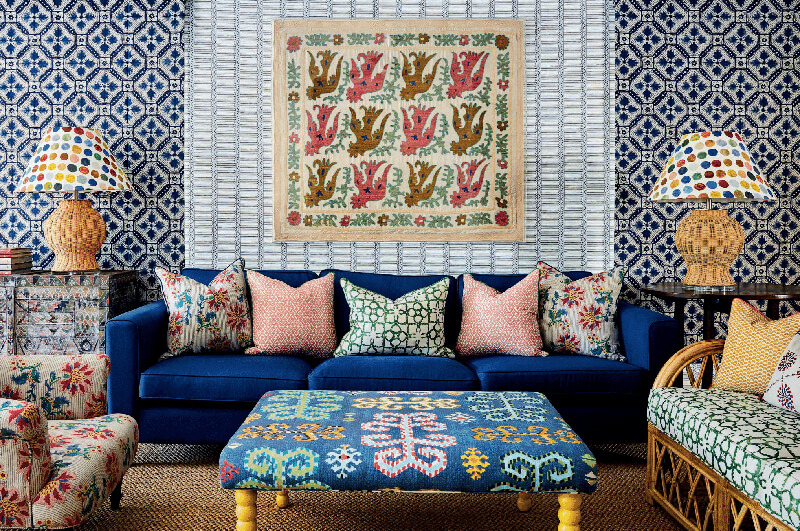
I have always been drawn to colour and pattern, and believe injecting both into a room can spark an instant sense of joy. Used well, they give an air of individuality and help create rooms that are full of energy. Layering a bold, multicoloured throw on the end of your bed, or selecting an array of mismatched cushions for your lounge room sofa, can be simple but effective ways of uplifting a space and making both you and your home feel fabulous and refreshed.
As the title of this chapter suggests, at its heart, the use of colour and pattern should be all about play. I love to experiment with colour, to push the boundaries and put interesting combinations together into a unique palette. Bucking at anything normal and coming up with something extra-ordinary is what gets my heart racing every single time. Whether you’re mixing and matching period furniture with more modern elements, challenging expectations with daring colour and pattern combinations, or boldly covering a room head-to-toe in one pattern – walls, sofas, armchairs, cushions … everything – be confident and just do it!
Colour and pattern are everywhere in our daily lives. From an interesting colour palette in a streetscape, to a wonderful old wallpaper or luxuriously patterned vintage dress, inspiration is all around – you just need to open your eyes to it. Take photos of the combinations you see, make a note of those you are most drawn to, and use these as the starting point for putting together an interesting colour and pattern palette for your home.
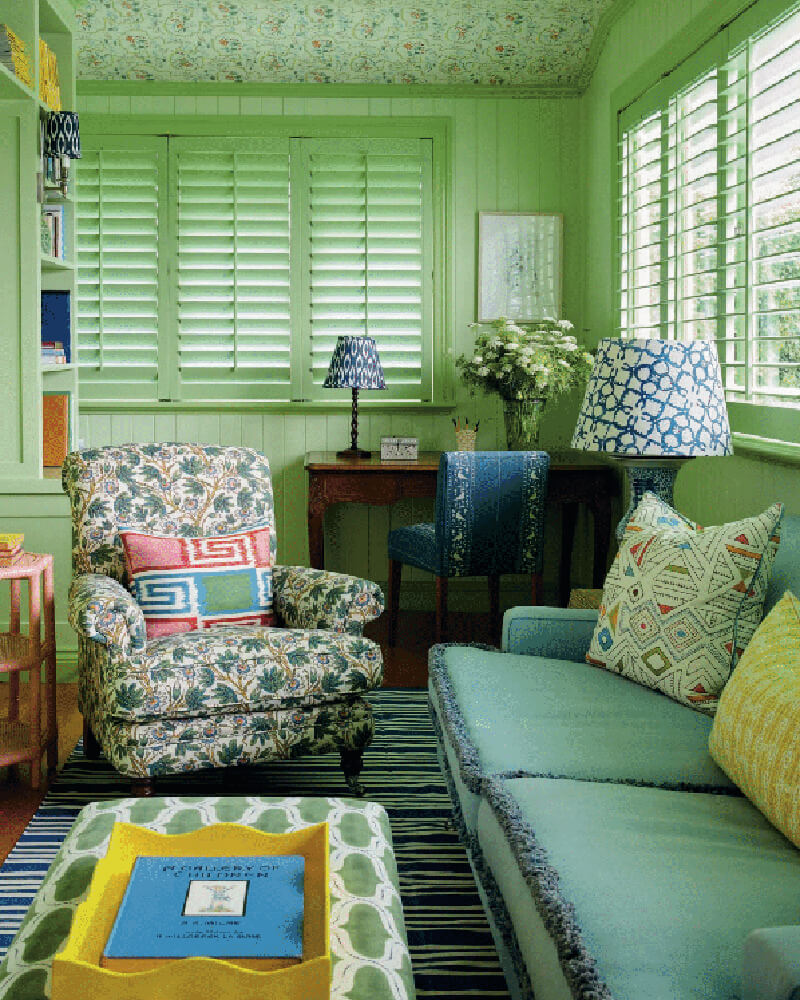
One of the biggest secrets I can share for creating a home full of pattern and colour, is that colour can be the one ingredient, if used properly, that holds everything together. The way I unify seemingly mismatched furniture and patterns is by repeating or referencing colours from a similar palette within the space, even if those colours are unusual or otherwise unexpected.
Whether you love warmer or cooler tones, there must always be a balance when putting together colour and pattern. Choose an array of patterned and plain fabrics in your selected palette to use on various pieces in a room. Consider how much pattern you are happy to live with. If you prefer a more toned-down look, I suggest covering larger pieces of furniture in plain or ditsy fabrics (i.e. with small, irregular patterns), and covering accent pieces such as armchairs, ottomans and scatter cushions in bolder, more multicoloured patterns.
When I build schemes using colour and pattern, I often think of them as a big jigsaw puzzle. You have to make sure that each element works collectively in a cohesive yet interesting way, and fit the pieces together to create a wonderful overall result. Consider layering traditional florals with more modern geometric patterns, stripes or checks, and using a mix of large, medium and small pattern scales. Sometimes a clashing element, such as a bold multicoloured geometric pattern in a slightly ‘off’ colour, can be just what your room needs to conjure the unexpected. I like to look for patterns that I haven’t seen used very often. This is part of the reason that I love to use antique textiles to cover ottomans, bedheads and cushions, or even as tablecloths or hanging works of art on a wall. Often one of a kind, these textiles add a special, cosy feeling to any room and often end up being pieces that are cherished for the rest of our lives.
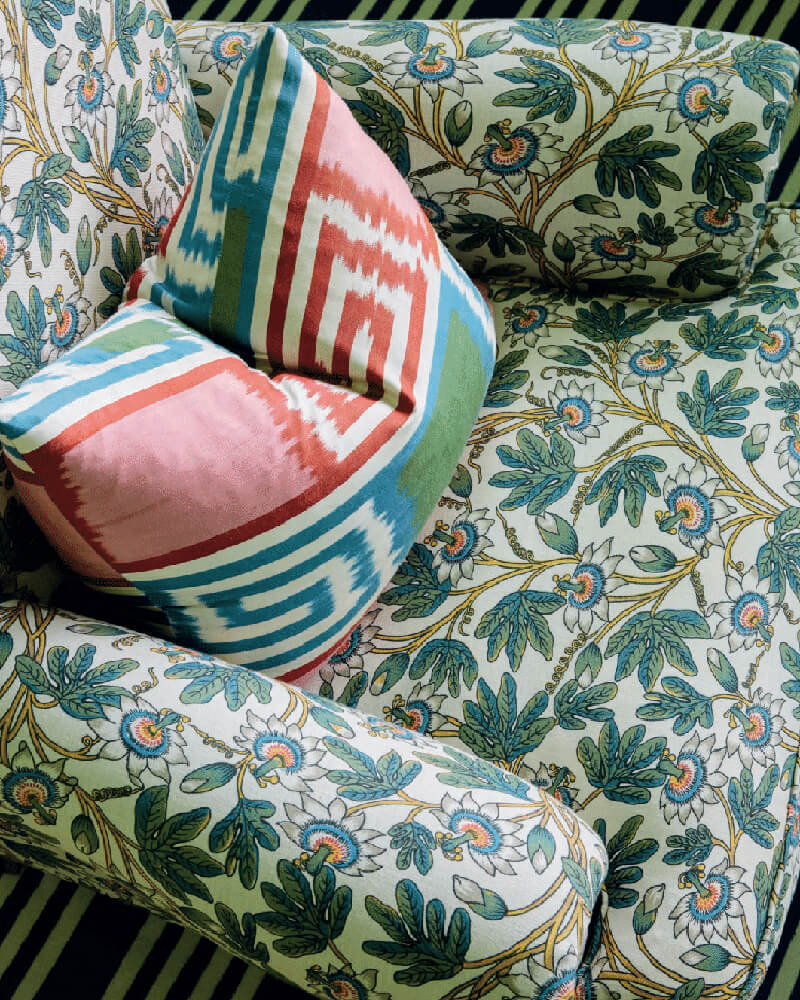
Don’t be afraid of colour and pattern. Embrace them and incorporate them into your home, even if you start with just one room. I guarantee you won’t be able to stop, as it is super addictive once you start. Combining colour and pattern is the foundation to creating a comfortable home that is full of interest, happiness and unique style.
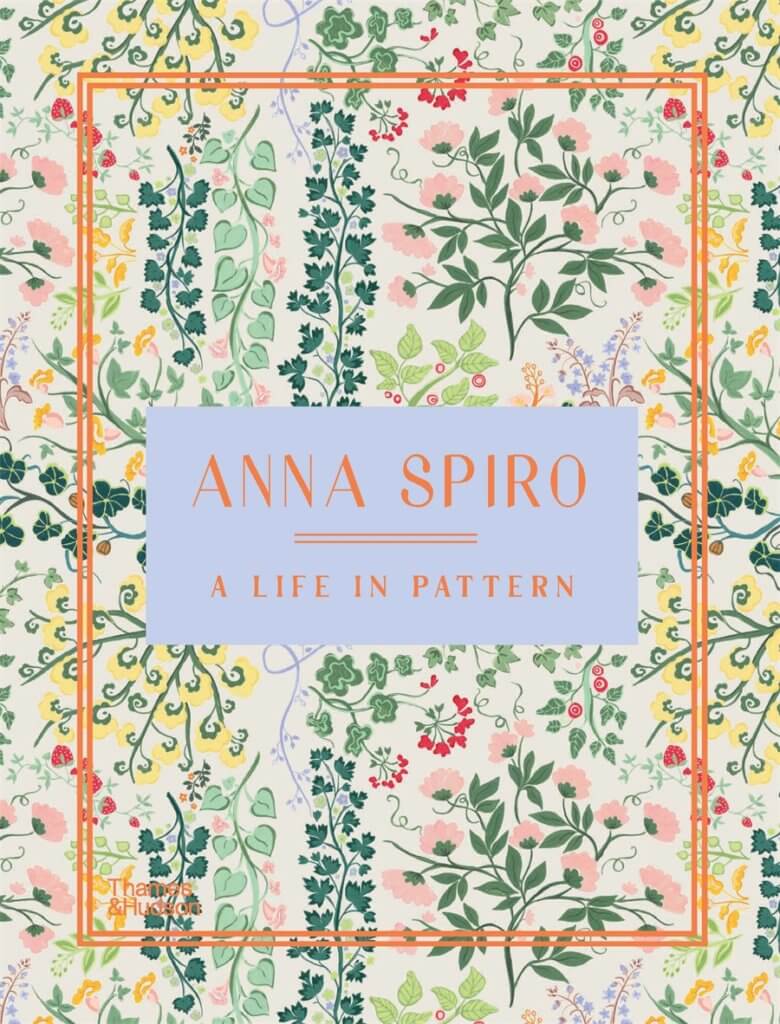
A Life in Pattern is available now. Text by Anna Spiro and photography by Tim Salisbury.
AU$90

Water features prominently in the collective memory and national identity of Australia. From long summers spent building sandcastles and learning to swim, to the sheer immensity and wild beauty of cliffs and dark oceans, our status as an island nation is inescapable. Life at the Edge is a photographic celebration of Australia’s crystalline waters – its coastlines, inlets, lakes and rivers. Hear the river rushing past, smell the salty ocean air, feel the slimy rocks, and exult in our collective yearning for bodies of water.



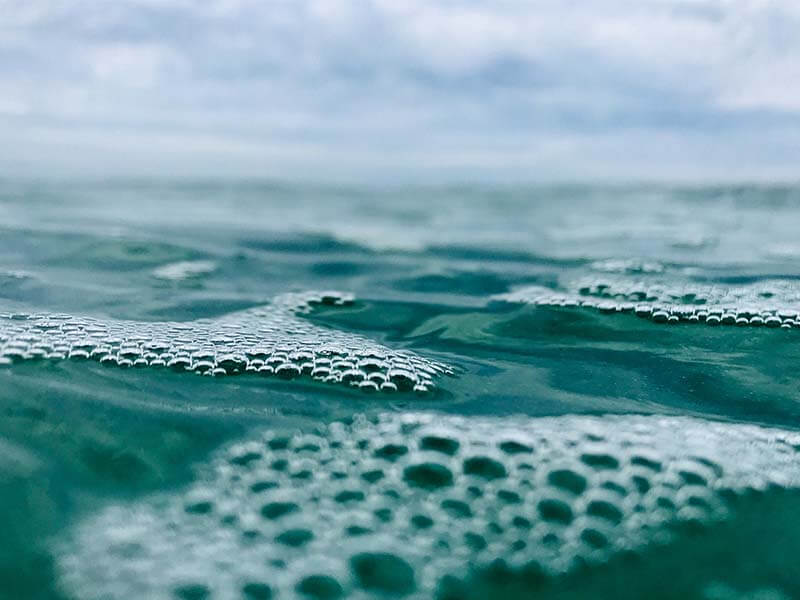
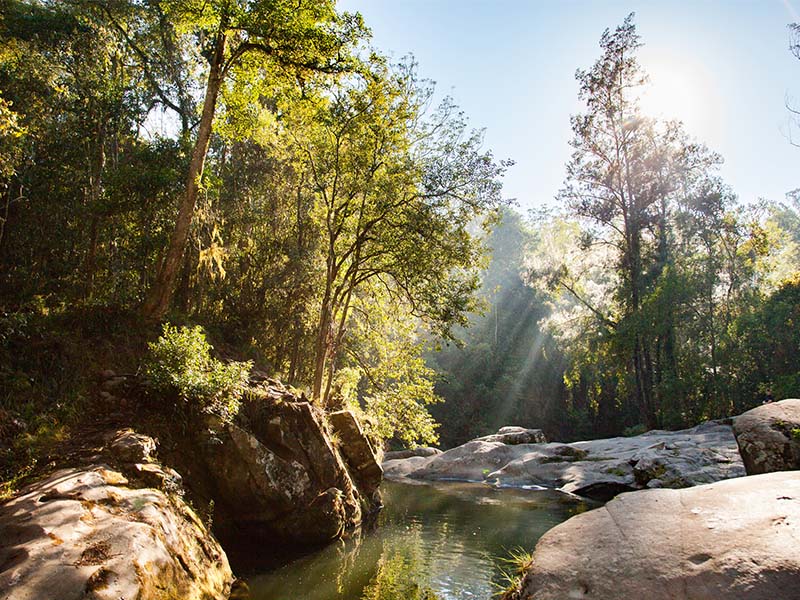
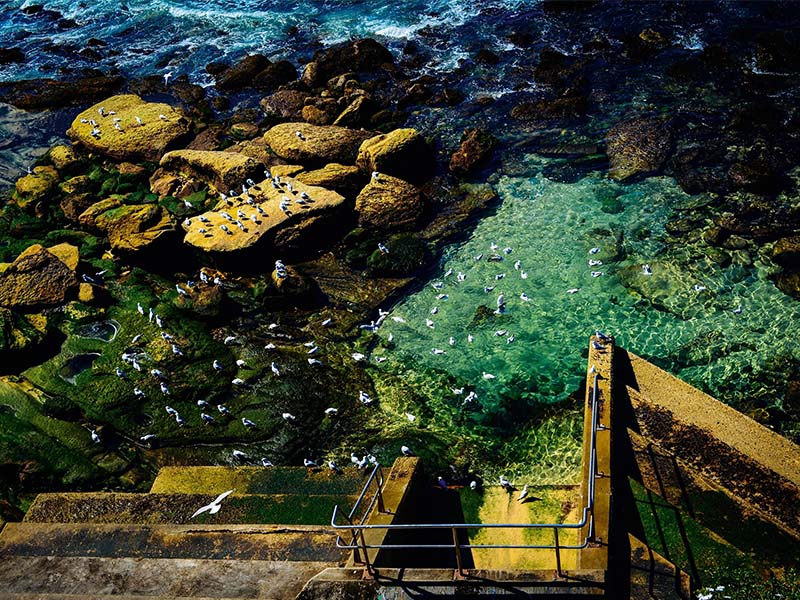


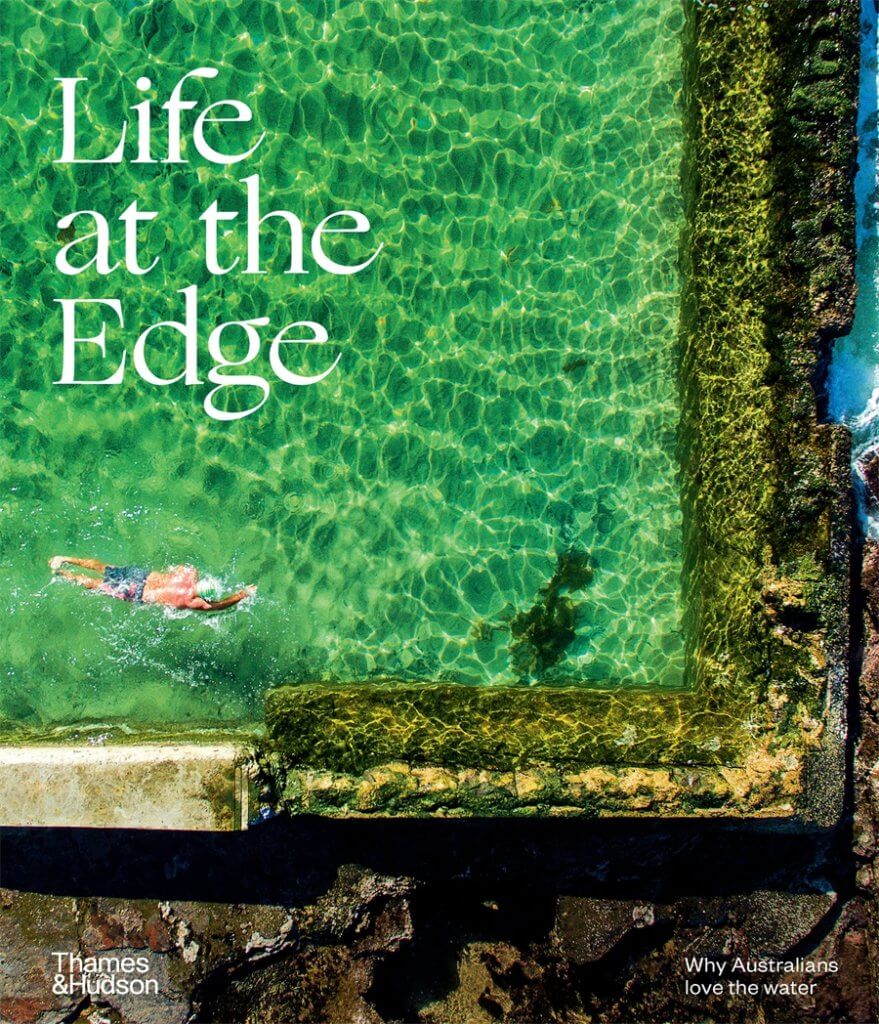
Life at the Edge is available now. Edited by Jo Turner.
AU$ 59.99
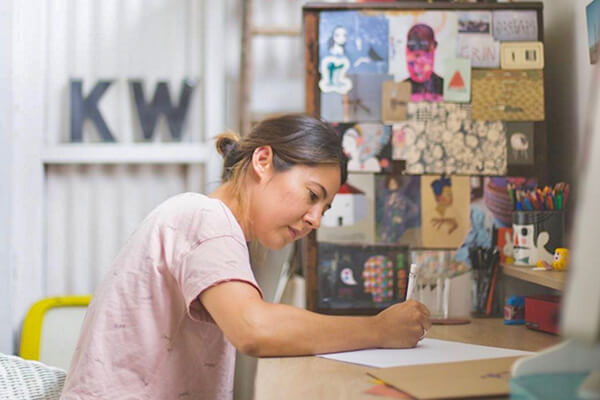
Sydney-based mural artist and illustrator Kim Siew’s work combines colour and pattern to create a unique feeling of playfulness.
Her work recently featured at the 2021 All About Women Festival at the Sydney Opera House. You can find her illustrations in children’s picture books, original prints and zines, as well as on the streets of Sydney in the form of hand-painted murals.
We spoke with her about her career so far and the artistic process behind the memory card game At the Gallery.
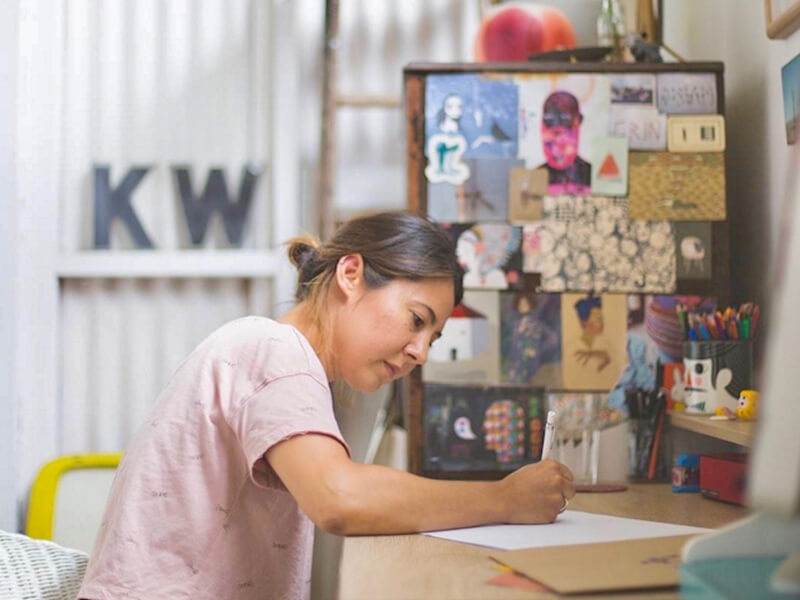
Where did your love for illustration begin?
I’ve always loved drawing since I was little. I was the kid at school who was always at the library or up in a tree reading and creating my own stories in both text and images.
You have created some incredible hand painted murals over your career so far, is there a particular mural you are most proud of?
I think I will always have a soft spot for the very first mural I painted, which I painted with my partner in the back laneways of the Inner West in Sydney. We used a mix of spray paint and house paint, just stuff we had lying around, and based it off a poem I had written about all these birds falling from the sky in Arkansas. It was loose and free and lots of fun and I had never created something on that scale before without anything being planned.
How would you describe your illustration style?
Bright and playful with lots of people and pattern.
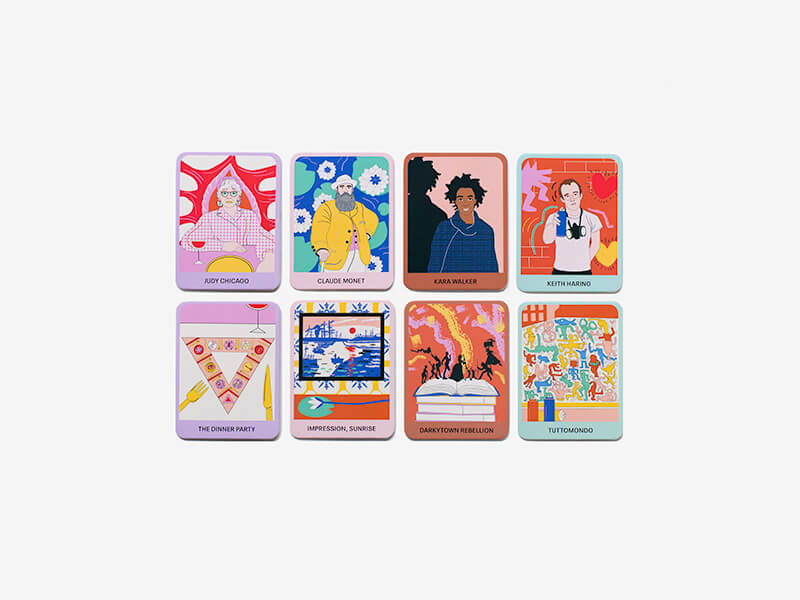
Can you tell us about some of the workshops you run in Sydney? Where can readers sign up?
I run workshops in zine making and book binding through local art galleries, artist run galleries, libraries and schools. I usually list upcoming workshops on my website or socials but due to COVID-19 these have been put on pause for a while.
Have you faced many challenges working as an illustrator in Sydney over this year’s COVID-19 outbreak?
As an illustrator not as much, I guess just that meetings have been moved online. But workshops were either straight out cancelled or moved to an online setting, which I found a lot harder than I thought I would. I think I really rely on being able to come up to people quietly in a workshop if they are struggling, and the communal chat that happens naturally amongst everyone while you create together. But you adapt and figure out what works and what doesn’t.
What was the process behind bringing the artists featured in At the Gallery to life?
Some of the artists I already knew, but there were also ones that I hadn’t heard of or didn’t know that much about. So it first started out as a bit of research into each artist, figuring out some personality traits they were known for, as well as the work they made.
It also helped working alongside Bianca (THA’s gift developer), who printed out the initial sketches to size to see how much detail we could put in without things getting lost. Once I had done a few I got into more of a flow of the style and direction I was going to go with for them.
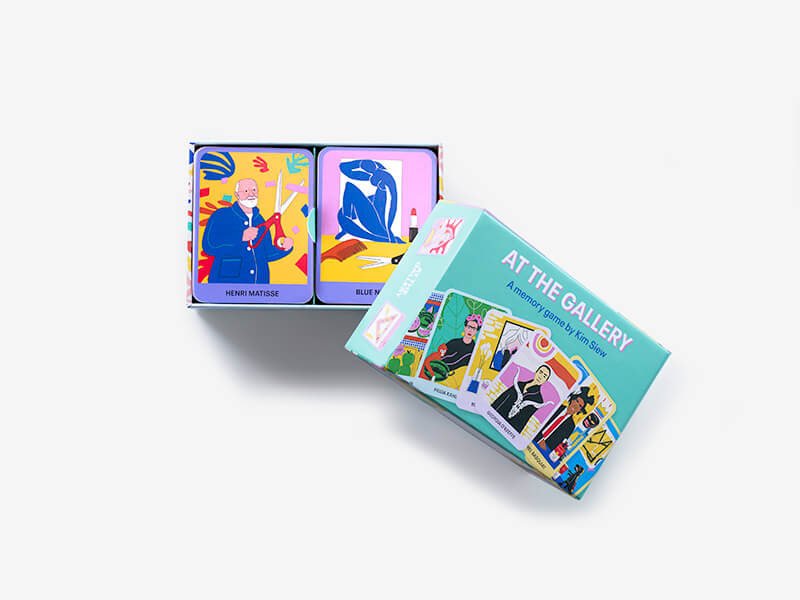
Do you have a personal favourite artist from the game?
It would be a tie between Kara Walker and Margaret Kilgallen. Both amazing super women whose work is so different from one another but speaks to me for different reasons.
What’s next for you?
I’m squirreling away at a little book project at the moment which I can’t wait to share soon. And there’s a few new murals that will be popping up over the next couple of months too!
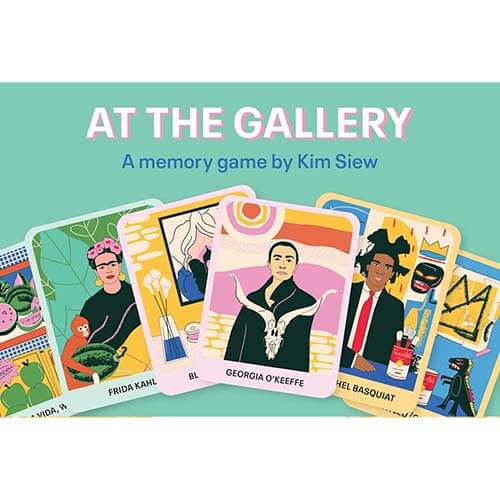
At the Gallery is available now. Illustrations by Kim Siew and design by Casey Schuurman.
AU$24.99
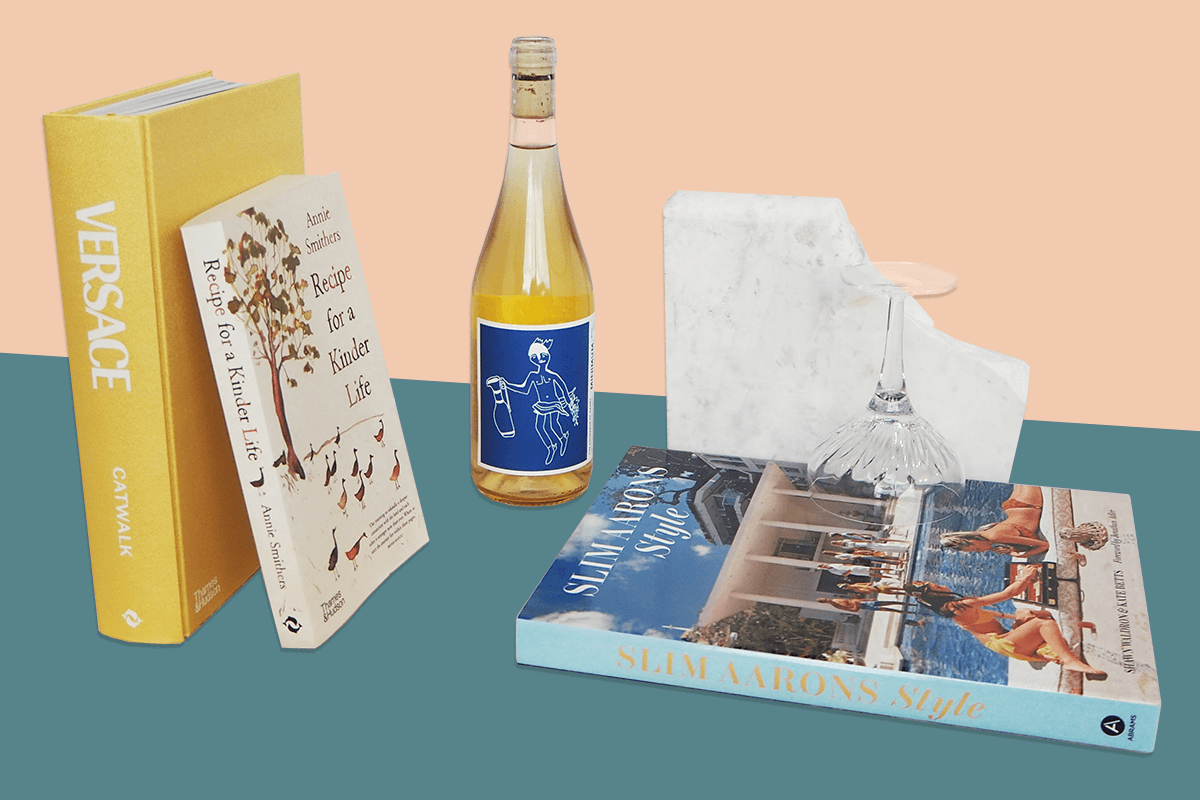
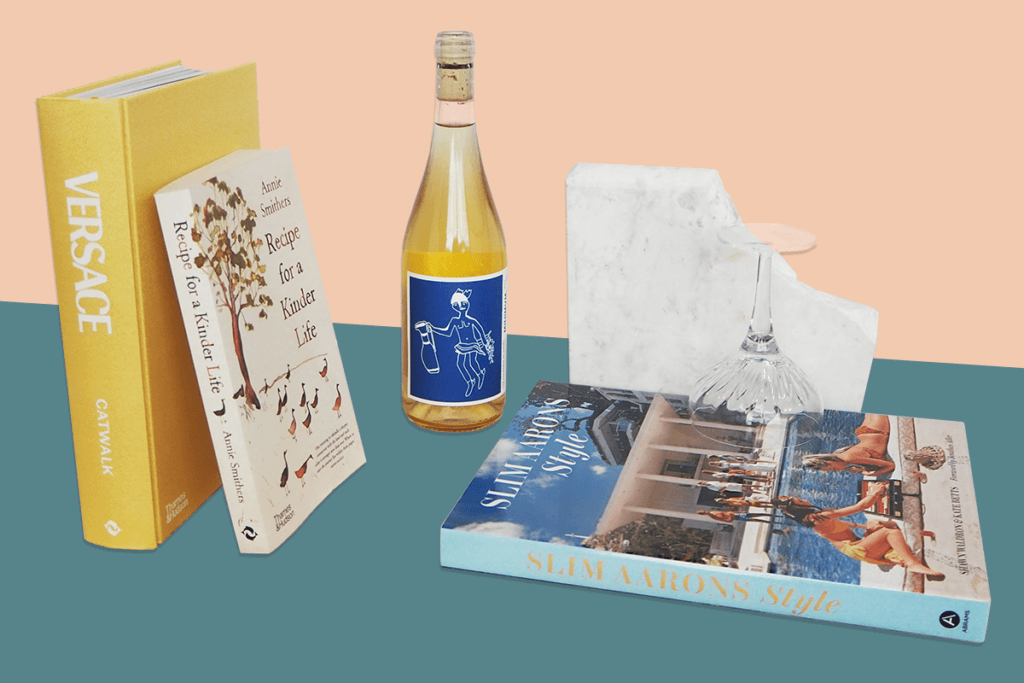
Journey through our 2021 Christmas Book & Wine pairings in partnership with Minimum Wines for festive gift ideas and party favours.

Nature Style | Teller of Tomorrow Rosé
Introducing two essential ways to elevate urban living: houseplants and a blushy rosé. Follow Jacqui Vidal and Alana Langan’s step-by-step guide to plant-styling while you sip on this playful drop of bright and boisterous wine.

Recipe for a Kinder Life | Colossus of Harry: Skin Contact Sauv B
Channel the wisdom of vibrant local chef Annie Smithers and a glass of skin-contact wine. Full-bodied, buttery and pensive, this bright Skin Contact Sauvignon Blanc will have you sipping gleefully as you take in Annie’s practical and philosophical approach to sustainable living.

Architecture at the Heart of the Home | Of Another World, Syrah
Transport yourself to another world with this winning combo. Dream of the incredible projects featured in Jan Henderson and Dianna Snape’s ode to Australian architecture with a glass of this versatile and dreamy Syrah in hand.

Versace Catwalk | 2020 Chardonnay
Indulge in the gold-standard of Versace Catwalk paired with this 2020 Chardonnay. Walk the runways from Gianni Versace’s debut in 1978 to today through original catwalk photography, while sipping this vibrantly wise Chardonnay serving up hints of apple, lemon and light spice.

The City Gardener | 2020 Sangiovese/Syrah Red
This one is for all the green thumbs out there! Let Richard Unsworth show you how inspired design can revolutionise inner-city spaces to create a plant paradise while delighting in this 100% wild fermented and welcoming light red. Think cherry, berry and an all-round people pleaser.

Slim Aarons: Style | 2021 Rosé
What do Slim Aarons: Style and Minimum Wine’s 2021 Rosé have in common? They’ll both remind you of being by the water, dressed to the nines on a long, warm day. Textural, savoury and with hints of strawberries and cream, this wine is your best pick for summer.
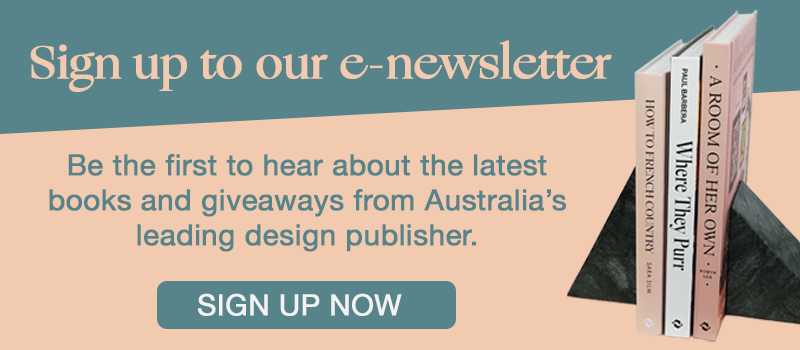
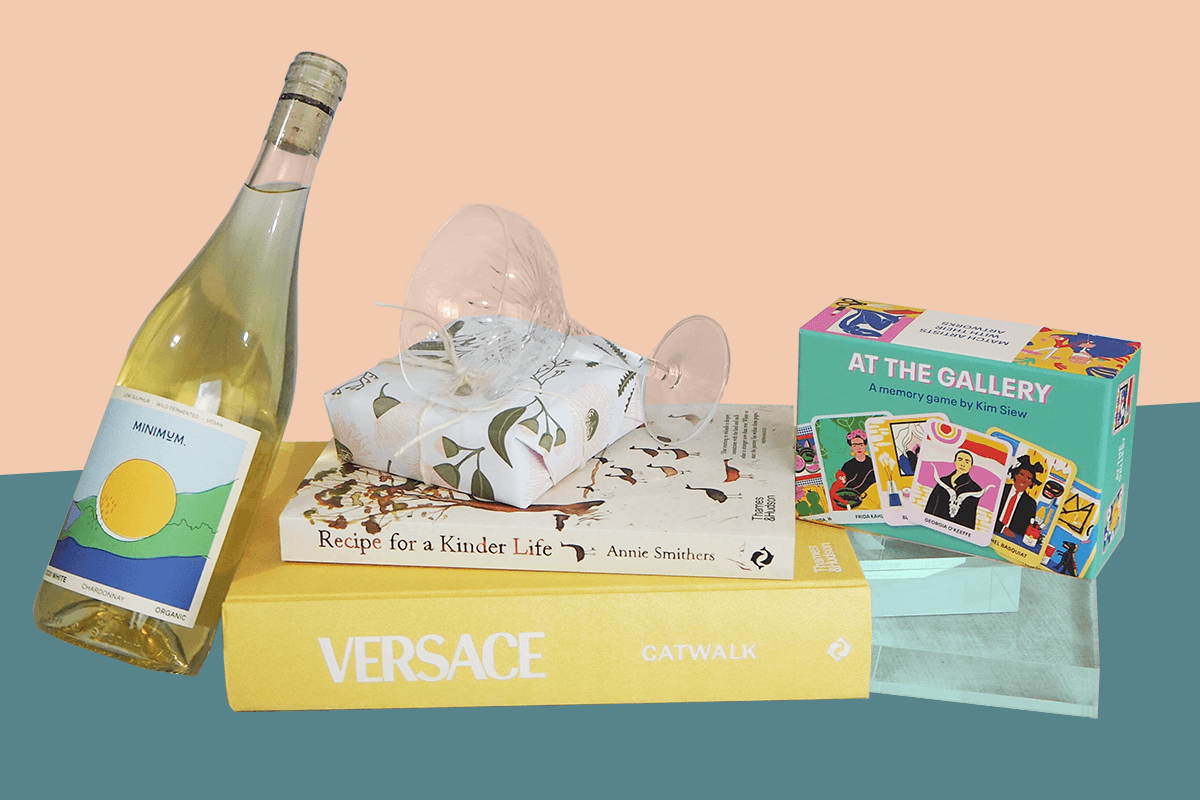
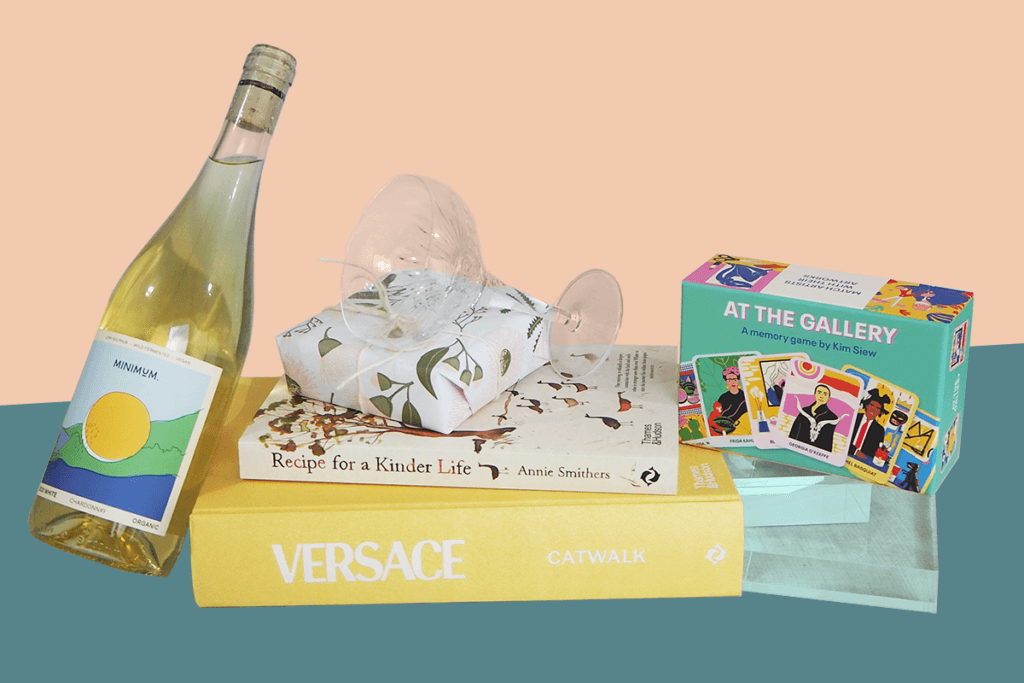
Explore beautiful gift ideas for your loved ones this Christmas.
Discover books of garden inspiration, interiors advice, captivating non-fiction, magical children’s books, puzzles, games and so much more.
Whatever their interest, we have something for everyone this Christmas.
…

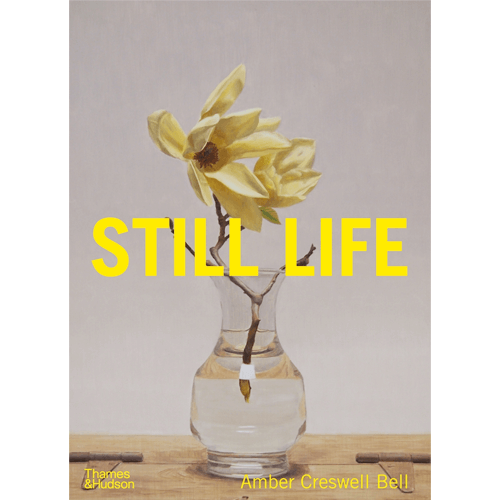
Amber Creswell Bell
Explore the work of Australian artists as they capture the inanimate beauty of the everyday.
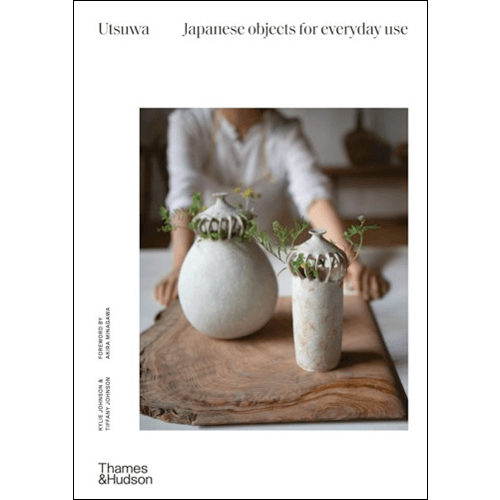
Kylie Johnson and Tiffany Johnson
Immerse yourself in the beauty and ethos of Japanese ceramics through this intimate exploration of the makers, markets and galleries of Japan.

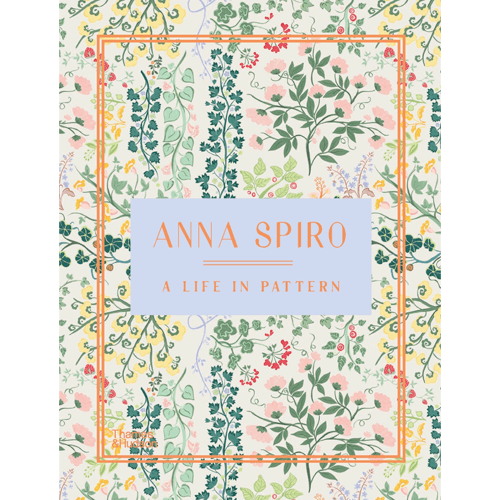
Anna Spiro
From mood boards to fabric suggestions, furniture ideas to room layouts, A Life in Pattern is a sourcebook of inspiration and joy from Australia’s most original interior designer.
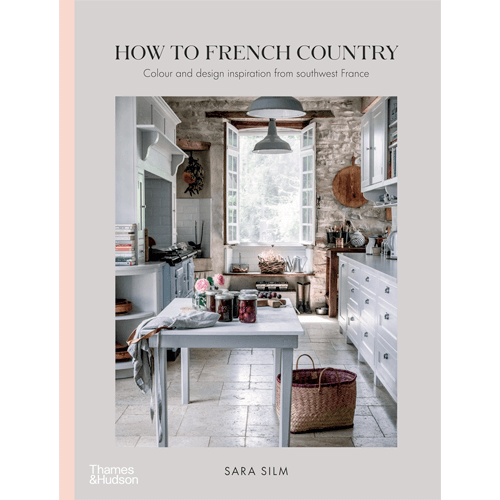
Sara Silm
This comprehensive guide to French country style couples detailed, practical design knowledge with evocative notes on rural French life and choice recipes.

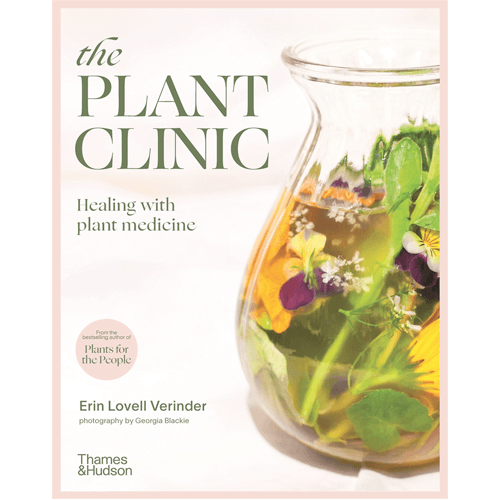
Erin Lovell Verinder
Discover 150 plant remedies for over 100 health concerns in this practical and definitive guide to plant medicine.
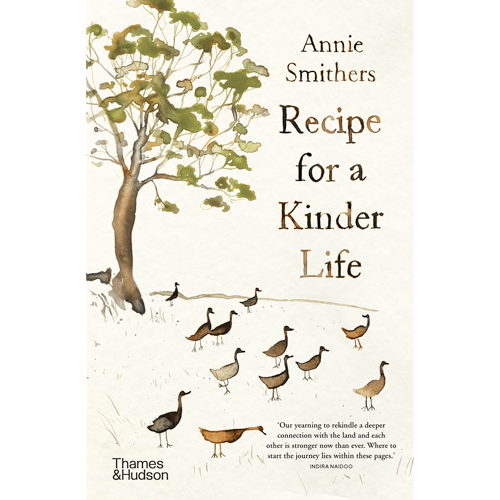
Annie Smithers
Part meditation, part memoir, Annie Smithers offers advice and wisdom gleaned from a life dedicated to seasonal food and living sustainably with the land.

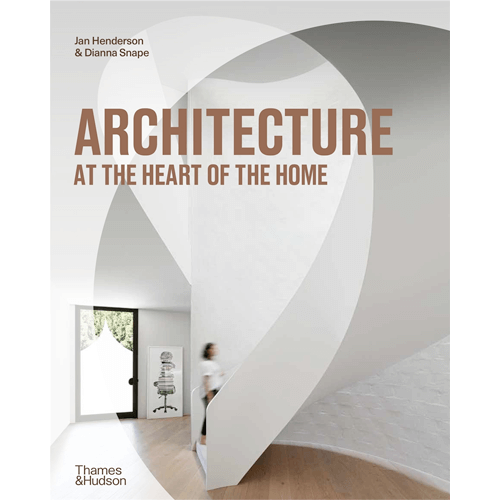
ARCHITECTURE AT THE HEART OF THE HOME
Jan Henderson and Dianna Snape
A collection of outstanding Australian residences, exploring the role architecture can play in defining the heart of the home.
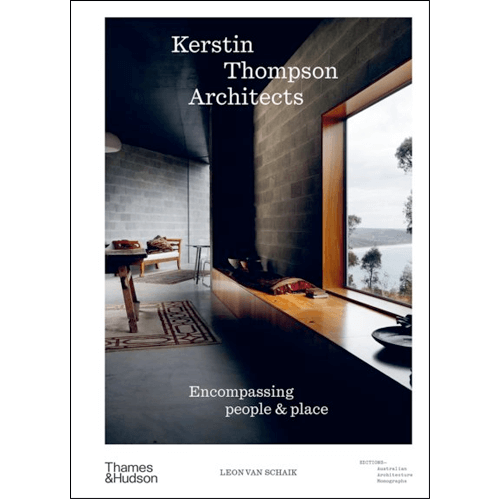
Leon van Schaik
Kerstin Thompson’s work provides a deep insight into not only what architects do, but also why and how they design.

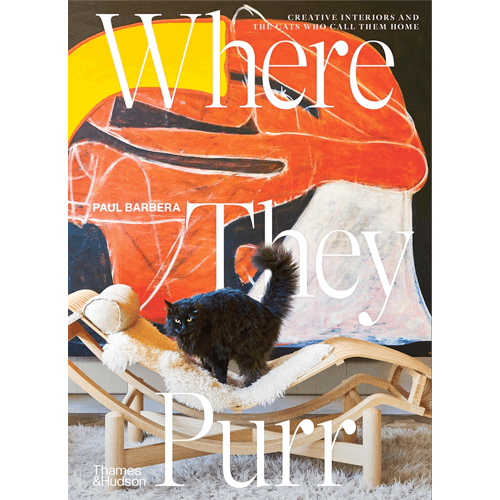
Paul Barbera
For the cat-lovers. Masterfully shot by Paul Barbera, this book showcases twenty-eight inspirational homes and interiors with the felines who live there.
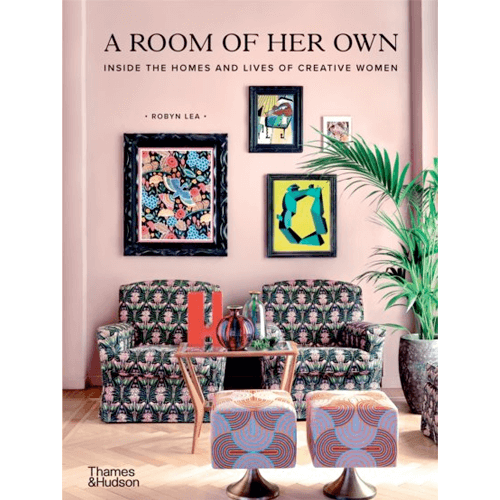
Robyn Lea
Across sitting rooms and studios, salon-style hangs and table settings, this is a book of daring inspiration from twenty inspirational women.

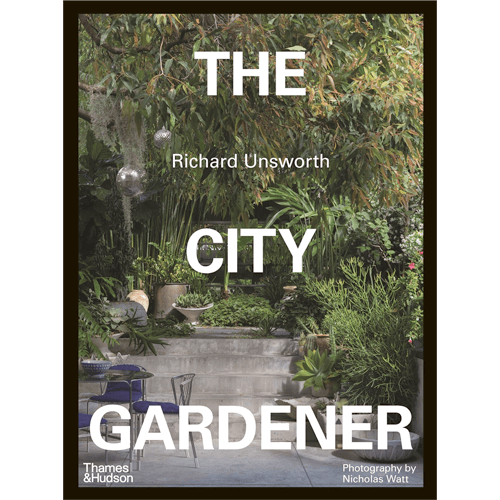
Richard Unsworth
Find design-driven solutions and inspiration adaptable for all urban garden types, big or small.
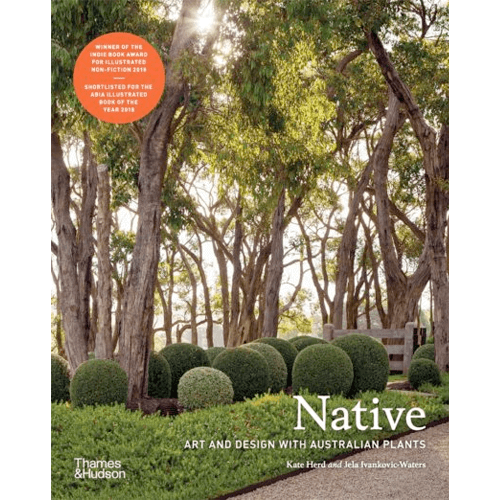
Kate Herd and Jela Ivankovic-Waters
Explore the most creatively inspiring Australian plants and the people who work with them.

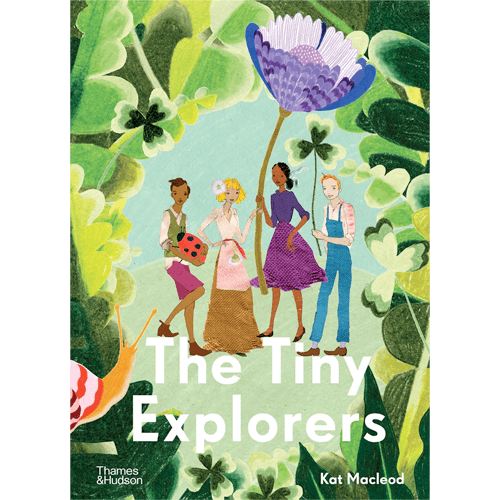
Kat Macleod
Join the Tiny Explorers on a treasure hunt through the garden! Kat Macleod’s luscious mixed-media artwork explores the natural world up close. For children aged 3 – 6 years old.
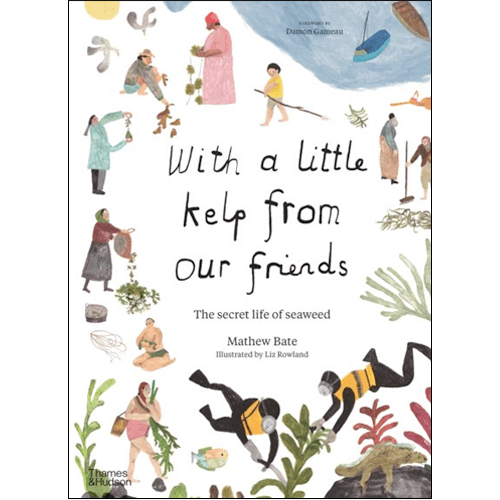
WITH A LITTLE KELP FROM OUR FRIENDS
Mathew Bate
Complete with a guide to common seaweeds and foraging guidelines, this charmingly illustrated picture book will educate and inspire you on planet’s most amazing algae. For children aged 5 – 10 years old.

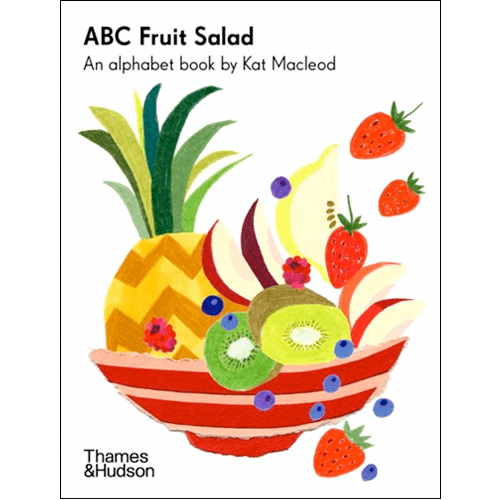
Kat Macleod
Learn ABCs with colour and ease in this board book for babies and toddlers, from beloved artist Kat Macleod. Collect 123 Under the Sea for the perfect duo!
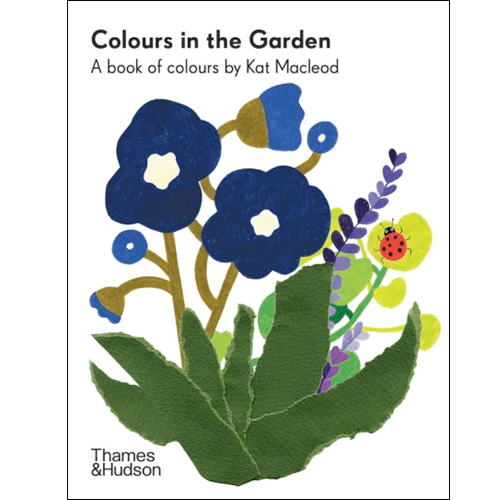
Kat Macleod
Share your favourite shapes with little ones in this board book for babies and toddlers, from artist Kat Macleod. Add Colours in the Garden to your collection as well!
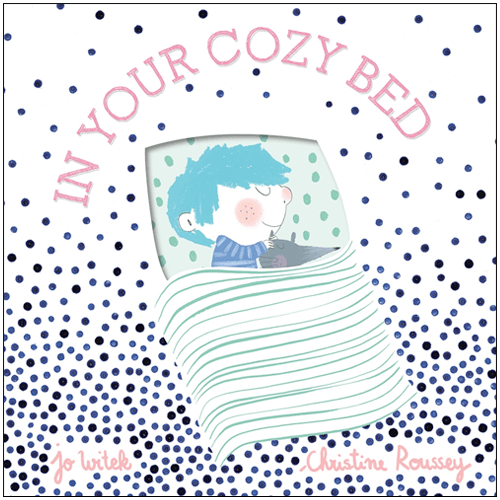
Jo Witek and Christine Roussey
A soothing bedtime book from the team behind In My Heart and the Growing Hearts series.

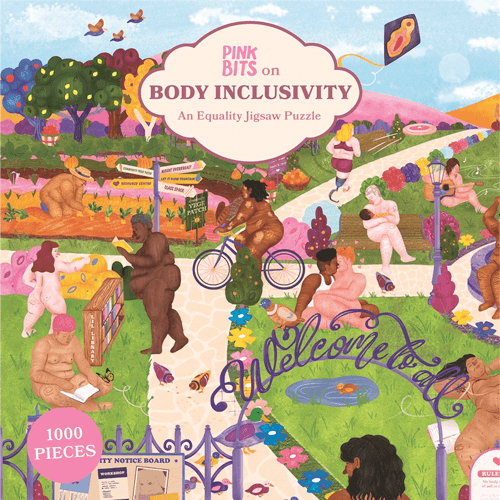
Christine Yahya
Look beyond clothes and embrace a world where people of all abilities and identities can find joy and feel safe, in this 1000-piece puzzle.
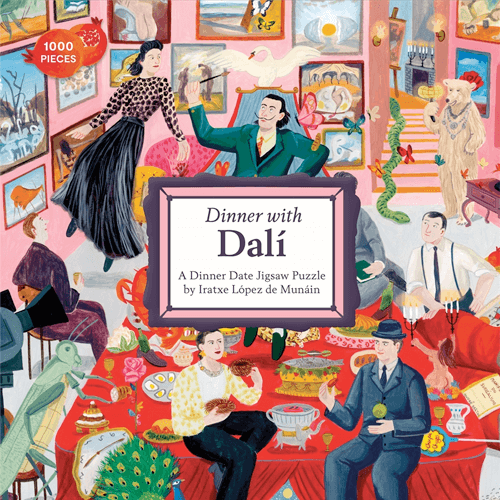
Illustrated by Iratxe López de Munáin
Piece together the artists, artworks and surroundings that bring Salvador Dalí’s world to life in this surreal 1000-piece puzzle. Then, try Dinner with Monet!
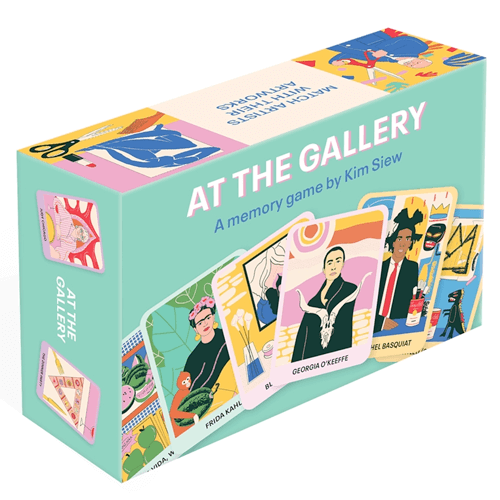
Illustrated by Kim Siew
Test your art knowledge (and your memory skills!) by matching 25 of the world’s most iconic artists with one of their famous works.
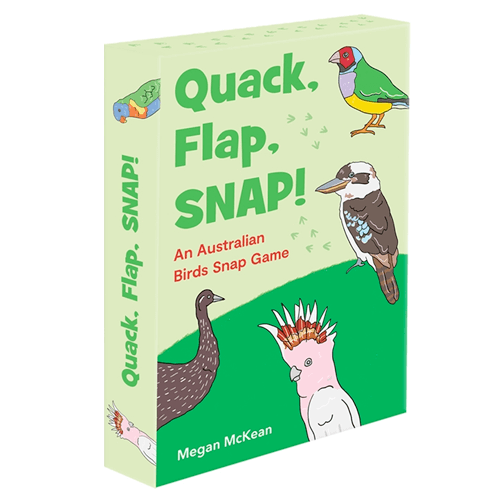
Megan McKean
Meet thirteen native australian birds in this iconic family game. Double the fun by adding Splish, Splash, SNAP! to your collection.

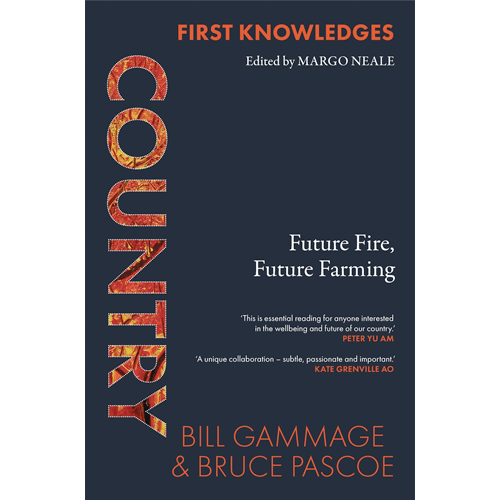
COUNTRY: FUTURE FIRE, FUTURE FARMING
Bill Gammage & Bruce Pascoe
The third book in the First Knowledges series, Country details the remarkable agricultural and land-care techniques of First Nations peoples and why they are needed now more than ever.
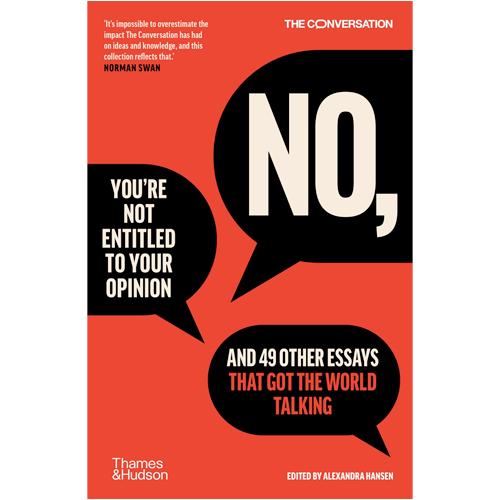
NO, YOU’RE NOT ENTITLED TO YOUR OPINION
The Conversation
A collection of the essays which put The Conversation on the map, charting the course of one media organisation over the past decade.
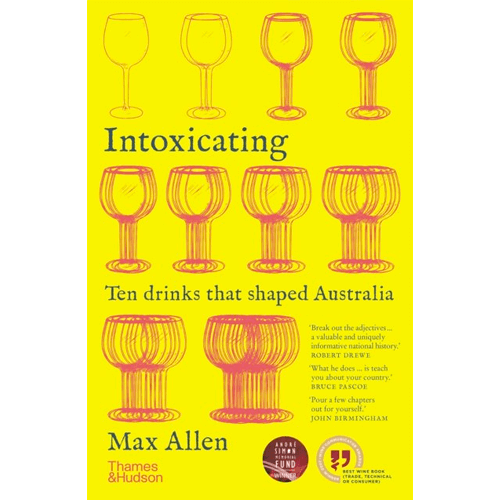
Max Allen
Award-winning writer Max Allen takes us on a personal journey through Australia’s colourful and complex drinking history, glass in hand.

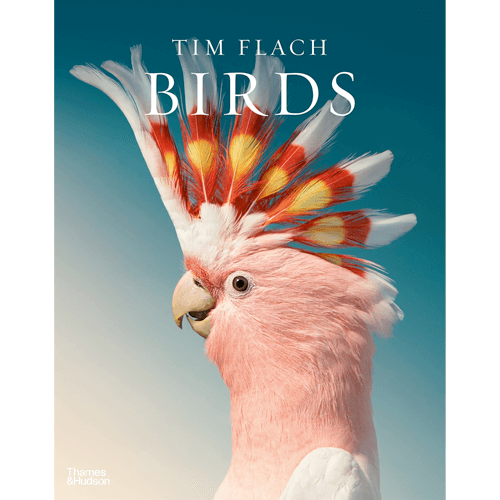
Tim Flach
The result of much patience, precision and persistence, Birds features more than 130 photographs from photographer Tim Flach.
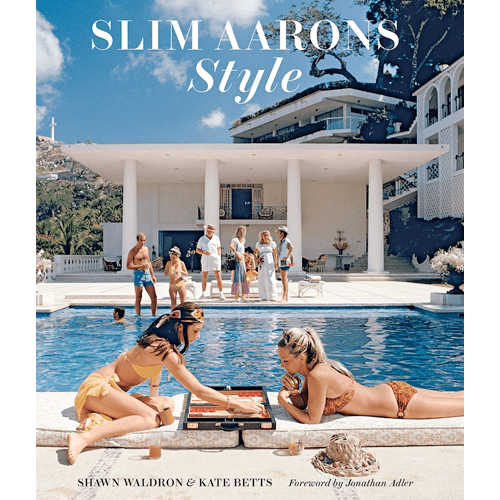
Shawn Waldron and Kate Betts
Featuring some never-before-seen images, this collection features Slim Aarons most stylish work.
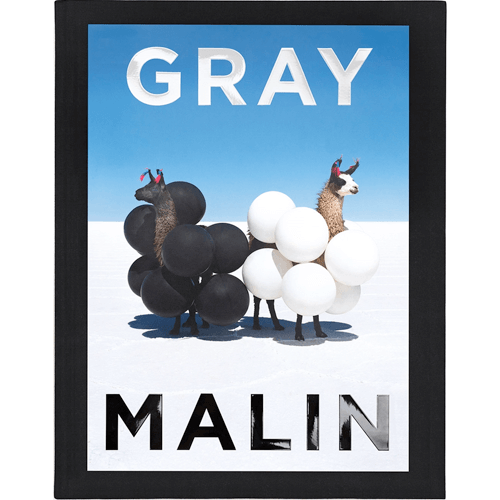
GRAY MALIN: THE ESSENTIAL COLLECTION
Gray Malin
Explore the vibrant first decade of photographer Gray Malin’s work.

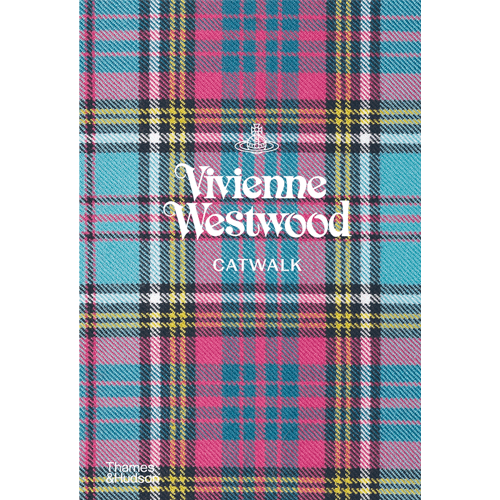
Alexander Fury
Revel in the first comprehensive overview of Vivienne Westwood’s womenswear collections, from her 1981 debut to today.
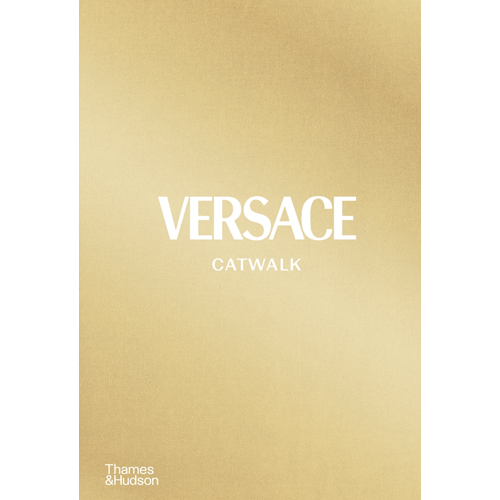
Tim Blanks
Experience the first comprehensive overview of Versace’s womenswear collections, from Gianni Versace’s debut in 1978 to today.
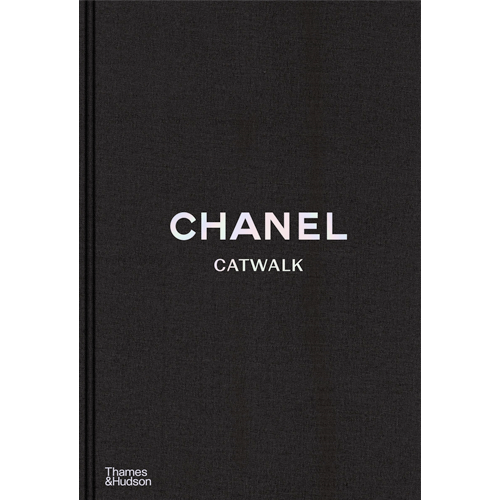
Patrick Mauriès and Adélia Sabatini
The definitive overview of Karl Lagerfeld and Virginie Viard’s creations for Chanel featuring over 180 collections.
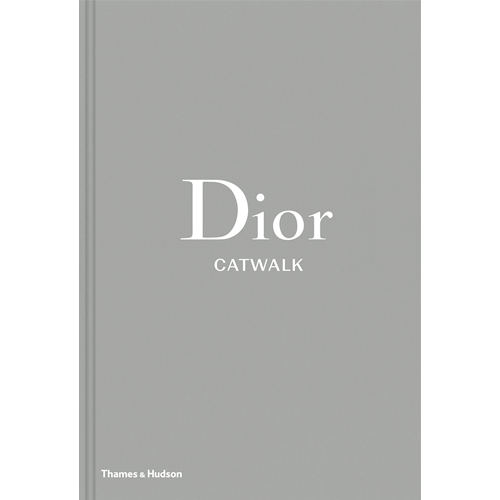
Alexander Fury and Adélia Sabatini
Journey first comprehensive overview of the legendary house of Dior, from its founding in 1947 to today, featuring over 180 collections.
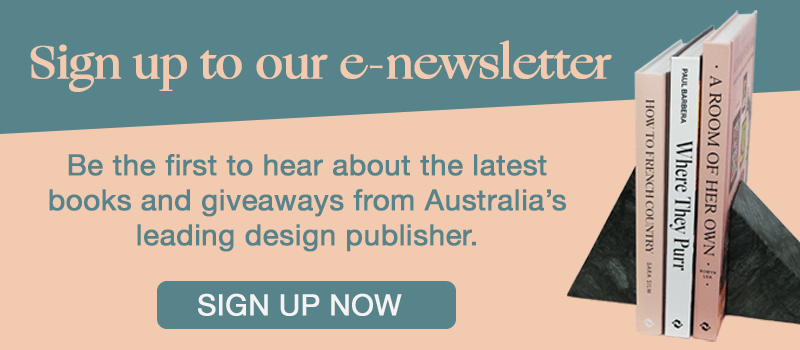
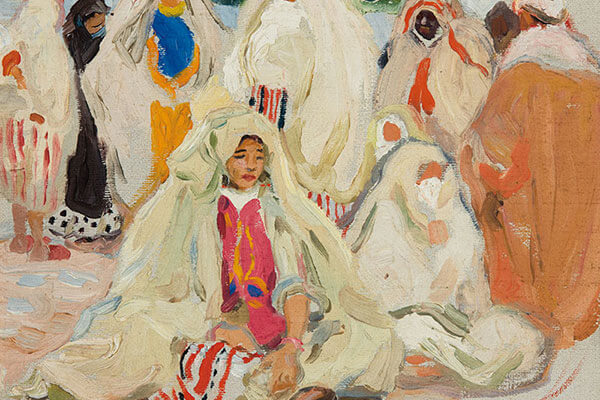
Born in Ballarat, Victoria, Hilda Rix Nicholas held her first solo exhibition in Paris in 1912. On sale were drawings made in Morocco earlier that year. The French state bought one of them, Grand Marché, Tanger, for display in the Musée National du Luxembourg. Hilda’s career was launched. She was twenty-eight years old.
Hilda: The Life of Hilda Rix Nicholas champions the Australian artist’s life and work. Even more significantly, this fascinating book illustrates a wonderful truth: out of adversity can come great beauty.
Below we share some of our favourite artworks in a gallery exclusive to T&H subscribers.
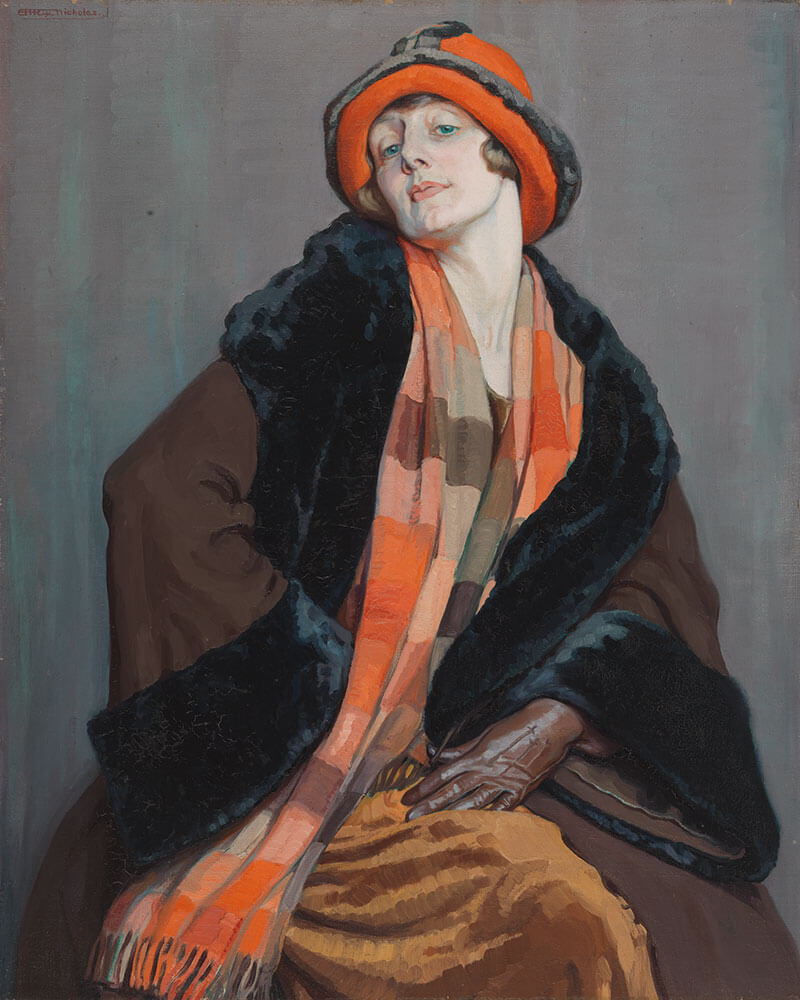
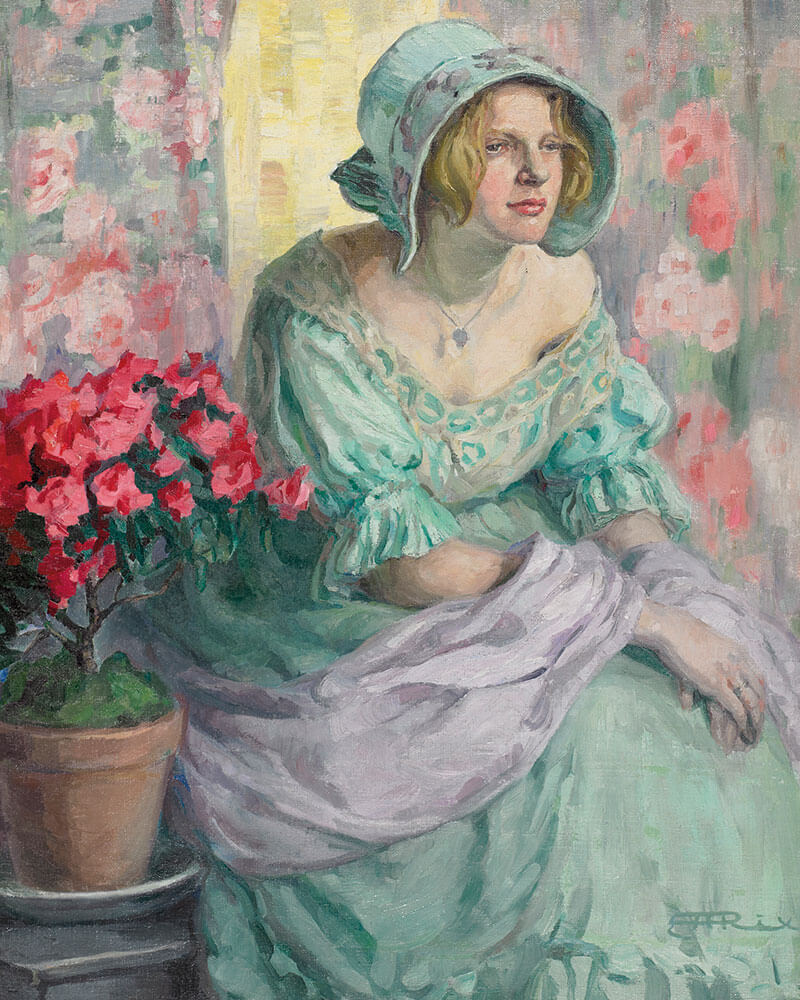
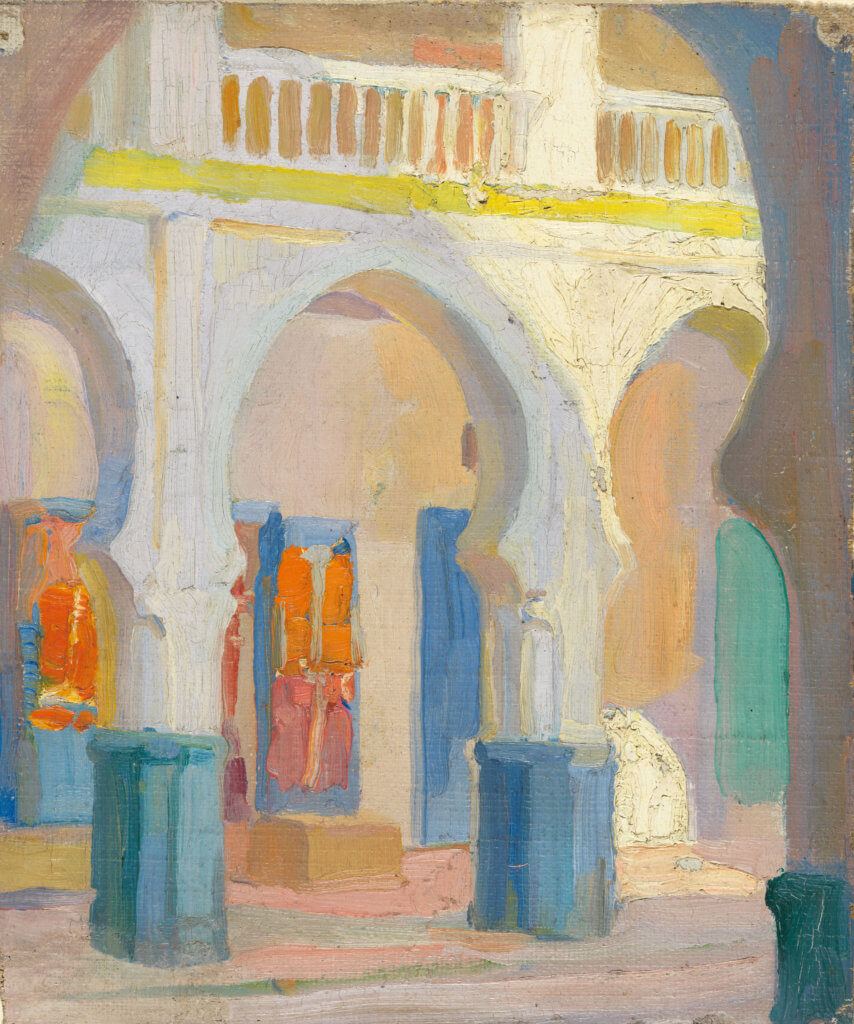
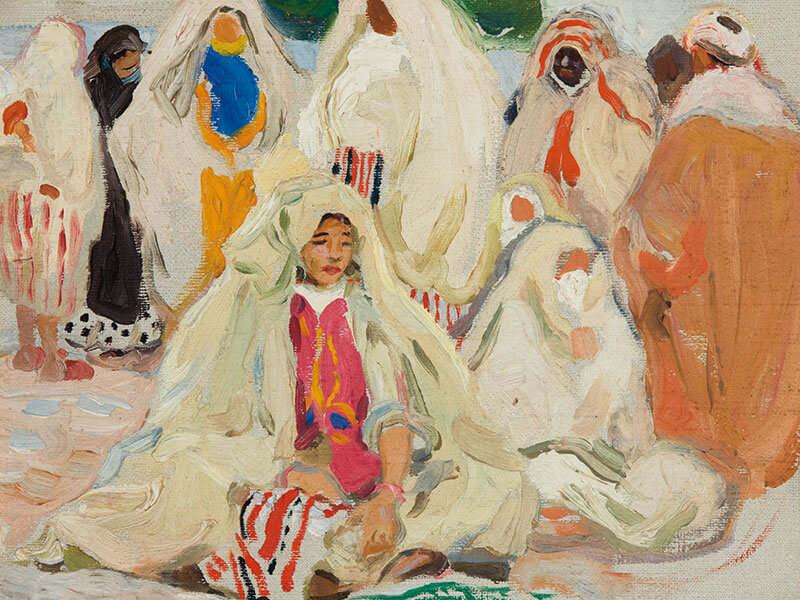
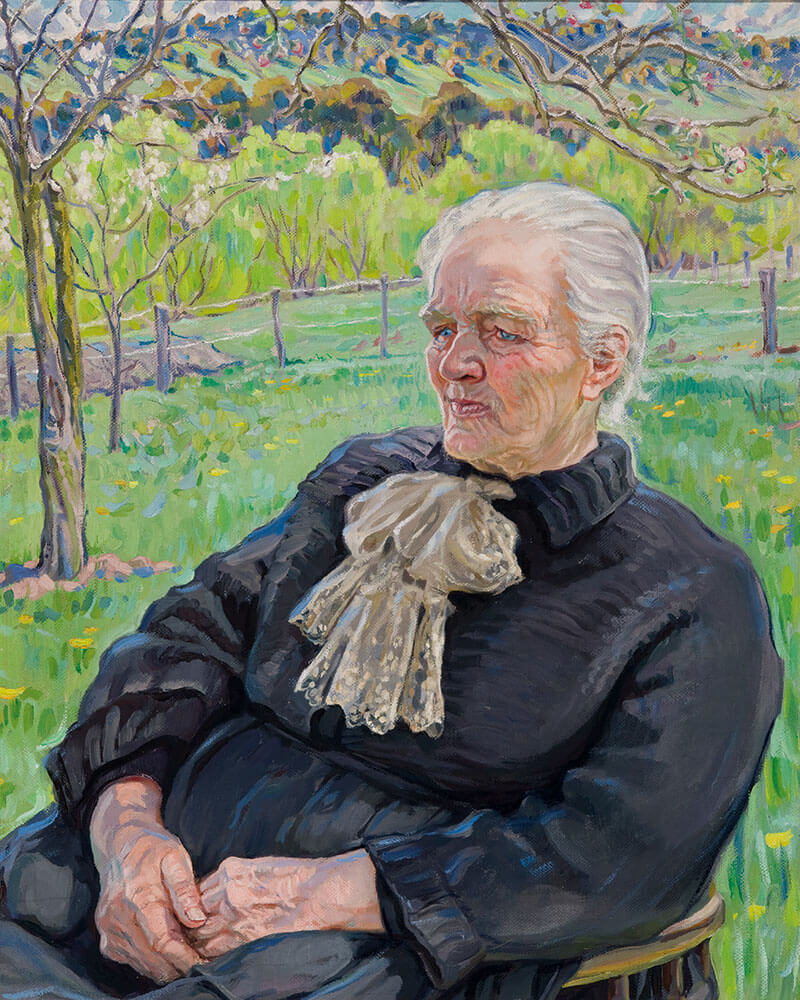
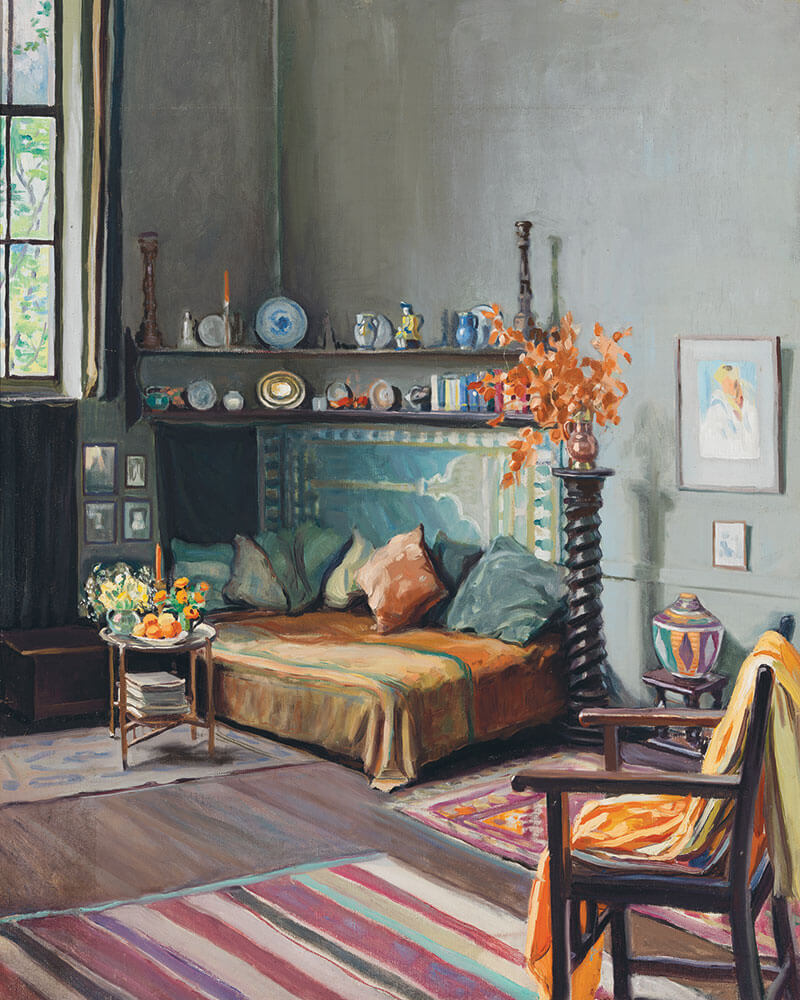
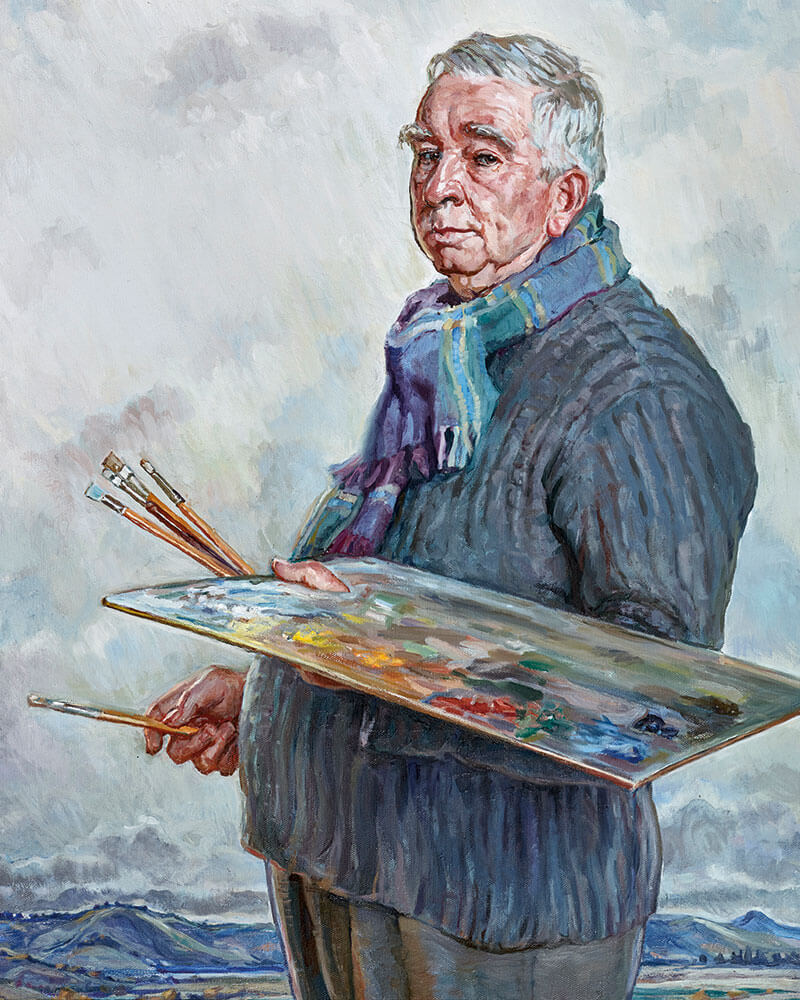
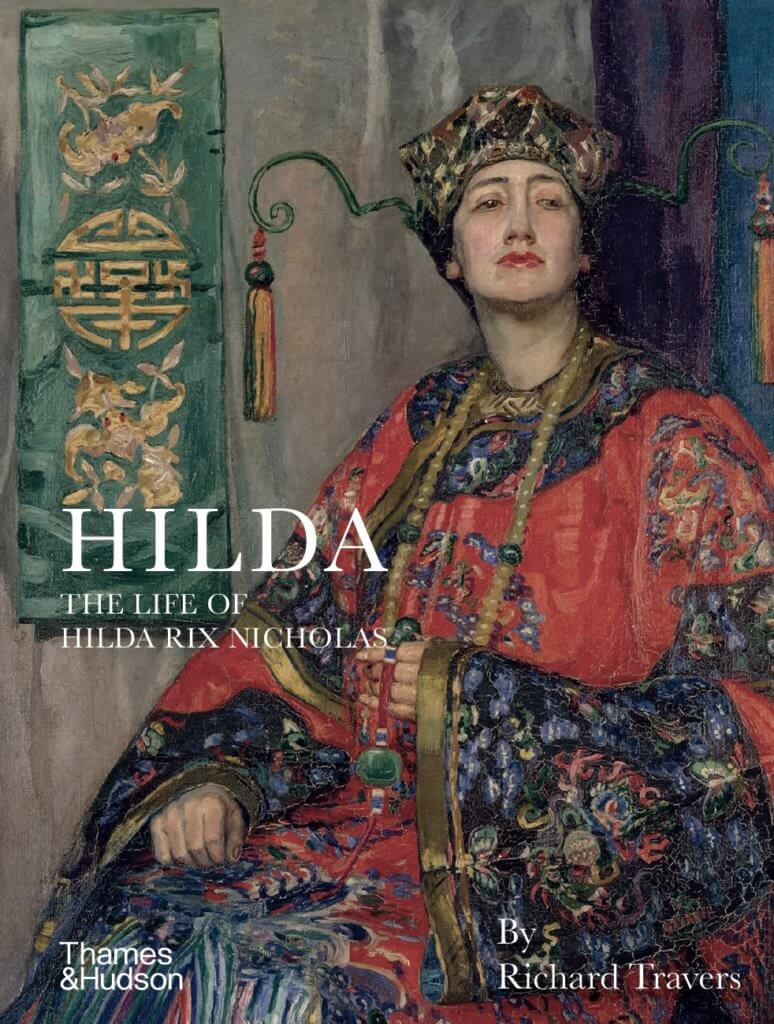
Hilda: The Life of Hilda Rix Nicholas is available now. Text by Richard Travers, artworks © The Estate of Hilda Rix Nicholas 2021 and design by Jenny Zimmer and Jenny Bolis.
AU$ 65.00
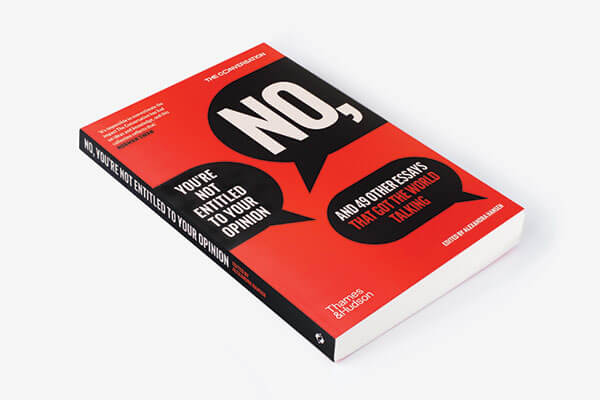
No, You’re Not Entitled to Your Opinion is the ten-year anniversary collection of essays that put The Conversation on the map. Together, these fascinating essays chart the course of the world over the past decade.
In the extract below, Post-doctoral Fellow Rachael Dunlop discusses and dissects six common myths about vaccination.
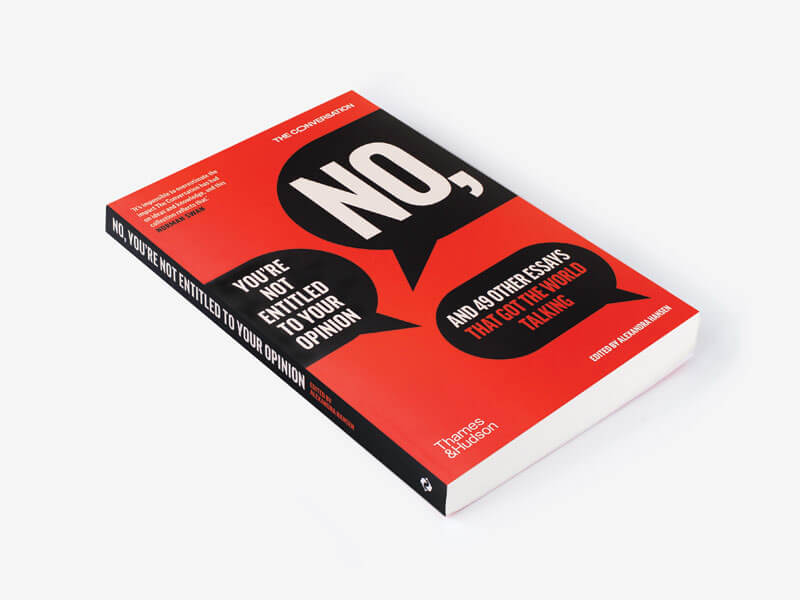
Recently released government figures show levels of childhood vaccination have fallen to dangerously low levels in some areas of Australia, resulting in some corners of the media claiming reignition of ‘the vaccine debate’.
Well, scientifically, there’s no debate. In combination with clean water and sanitation, vaccines are one of the most effective public health measures ever introduced, saving millions of lives every year.
Those who claim there is a ‘debate’ will cite a series of canards designed to scare people away from vaccinating, but if you’re not familiar with their claims, you could easily be convinced by anti-vaccine rhetoric.
What is true and what is not? Let’s address just a few of the common vaccine myths and explain why they’re wrong.
1. Vaccines cause autism
The myth that vaccines are somehow linked to autism is an unsinkable rubber duck. Initiated in 1998 following the publication of the now notorious Lancet paper, (not-a-Dr) Andrew Wakefield was the first to suggest that the measles mumps rubella (MMR) vaccine might be linked to autism.
What he didn’t reveal was that he had multiple conflicts of interest, including that he was being paid by lawyers assembling a class action against the manufacturers of MMR, and that he himself had submitted an application for a patent for a single measles vaccine.
It eventually unravelled for Wakefield when the paper was retracted in 2010. He was struck from the medical register for behaviour classified as ‘dishonest, unethical and callous’ and the British Medical Journal accused him of deliberate fraud.
But once the idea was floated, scientists were compelled to investigate, particularly when it stood to impact public health so dramatically. One of the most powerful pieces of evidence to show there is no link between vaccines and autism comes from Japan, where the MMR was replaced with single vaccines mid-1993. (See ‘Japanese study is more evidence that MMR does not cause autism’ by Andrew Cole.) Guess what happened? Autism continued to rise.
After this door closed, anti-vaxxers shifted the blame to thiomersal, a mercury-containing component (not be confused with the scary type that accumulates in the body). Small amounts of thiomersal were used as a preservative in some vaccines, but this never included MMR.
Thiomersal, or ethyl-mercury, was removed from all scheduled childhood vaccines in 2000, so if it were contributing to rising cases of autism, you would expect a dramatic drop following its removal. Instead, like with the MMR in Japan, the opposite happened, and autism continues to rise.
Further evidence comes from a recently published exhaustive review examining 12,000 research articles covering eight different vaccines, which also concluded there was no link between vaccines and autism. (See Adverse Effects of Vaccines: Evidence and Causality, editors Kathleen Stratton et al.)
Yet, the myth persists and probably for several reasons, one being that the time of diagnosis for autism coincides with kids receiving several vaccinations and, also, we currently don’t know what causes autism. But we do know what doesn’t, and that’s vaccines.
2. Smallpox and polio have disappeared so there’s no need to vaccinate anymore
It’s precisely because of vaccines that diseases such as smallpox have disappeared.
India recently experienced two years without a single case of polio because of a concerted vaccination campaign.
Australia was declared measles-free in 2005 by the World Health Organization (WHO) – before we stopped being so vigilant about vaccinating and outbreaks began to reappear.
The impact of vaccine complacency can be observed in the current measles epidemic in Wales, where there are now over 800 cases and has been one death, and many people presenting are of the age who missed out on MMR vaccination following the Wakefield scare.
In many ways, vaccines are a victim of their own success, leading us to forget just how debilitating preventable diseases can be – not seeing kids in calipers or hospital wards full of iron lungs means we forget just how serious these diseases can be.
3. More vaccinated people get the disease than the unvaccinated
Although this sounds counterintuitive, it’s actually true, but it doesn’t mean that vaccines don’t work, as anti-vaxxers will conflate it. Remember that no vaccine is 100 per cent effective and vaccines are not a forcefield. So, while it’s still possible to get the disease you’ve been vaccinated against, disease severity and duration will be reduced.
With pertussis (whooping cough), for example, severe complications such as pneumonia and encephalitis (brain inflammation) occur almost exclusively in the unvaccinated.
Therefore, since the majority of the population is vaccinated, it follows that most people who get a particular disease will be vaccinated, but, critically, they will suffer fewer complications and long-term effects than those who are completely unprotected.
4. My unvaccinated child should be of no concern to your vaccinated one
Vaccination is not just a personal issue, it’s a community responsibility, largely because of a concept known as ‘community immunity’. This describes a level of vaccination that prevents epidemics or outbreaks from taking hold and spreading.
Some people question the validity of this concept, sometimes referred to as herd immunity, but the impact of it breaking down can be easily observed in places where vaccination levels fall dangerously low – take the current measles outbreak in Wales, for example.
The other important factor about community immunity is it protects those who, for whatever reason, can’t be vaccinated or are not fully vaccinated. This includes very young children, immunocompromised people (such as cancer sufferers) and elderly people.
5. Vaccines contain toxins
A cursory search of Google for vaccine ingredients pulls up a mishmash of scary-sounding ingredients that to the uninitiated can sound like ‘franken-science’.
Some of these claims are patently untrue (there is no anti-freeze in vaccines) or are simple scaremongering (regarding the rumour of aborted foetuses, in the 1960s some cells were extracted from a foetus to establish a cell line that is still used in labs today). Some of the claimed chemicals (and, remember, everything is made of chemicals) are present, but are at such low levels as to never reach toxicity. The simple thing to remember is the poison is in the dose – in high enough doses, even water can kill you. And there’s fifty times more formaldehyde in a pear than in a vaccine.
Also, if you ever read the claim that ‘vaccines are injected directly into the blood stream’ (they’re not), be sceptical of any other claims the writer is making.
6. Vaccines will overwhelm kids’ undeveloped immune systems
The concept of ‘too many too soon’ was recently examined in a detailed analysis of the US childhood immunisation schedule by the Institute of Medicine (see The Childhood Immunization Schedule and Safety: Stakeholder Concerns, Scientific Evidence, and Future Studies). Experts specifically looked for evidence that vaccination was linked to ‘autoimmune diseases, asthma, hypersensitivity, seizures, child developmental disorders, learning or developmental disorders, or attention deficit or disruptive disorders’, including autism. The researchers confirmed the childhood vaccination schedule was safe.
The number of immune challenges (between 2000 to 6000) that children fight every day in the environment is significantly greater than the number of antigens or reactive particles in all their vaccinations combined (about 150 for the entire vaccination schedule).
The next time you hear these myths about vaccination, you’ll hopefully have some evidence up your sleeve to debunk them.
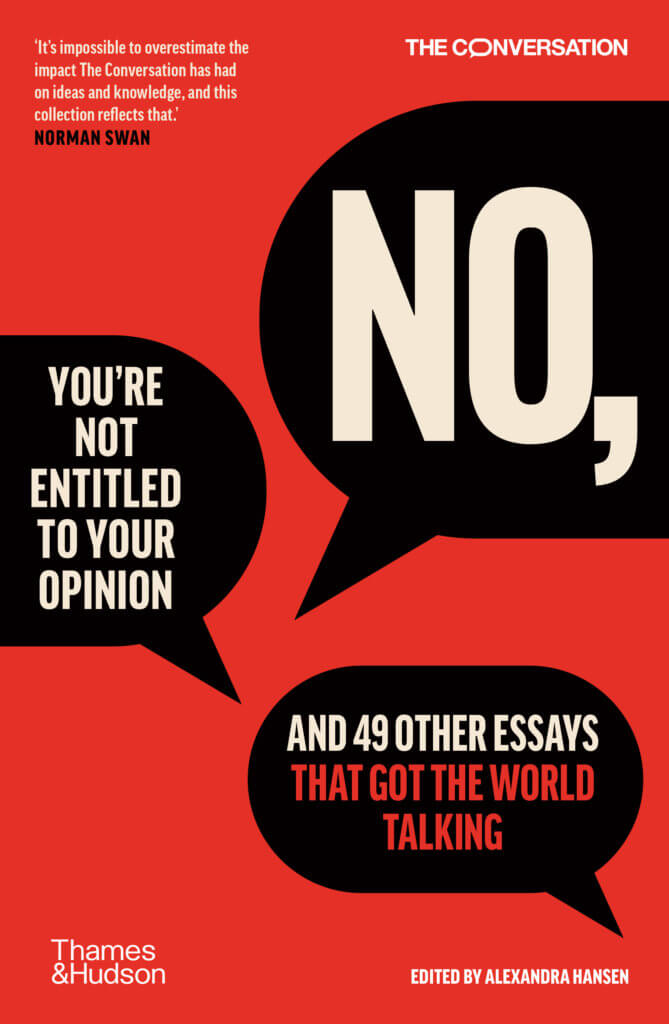
This is an extract from No, You’re Not Entitled to Your Opinion, edited by Alexandra Hansen and available now. Text by Rachael Dunlop, Post-doctoral Fellow at the University of Technology Sydney. Originally published on 26 April 2013.
AU$ 29.99
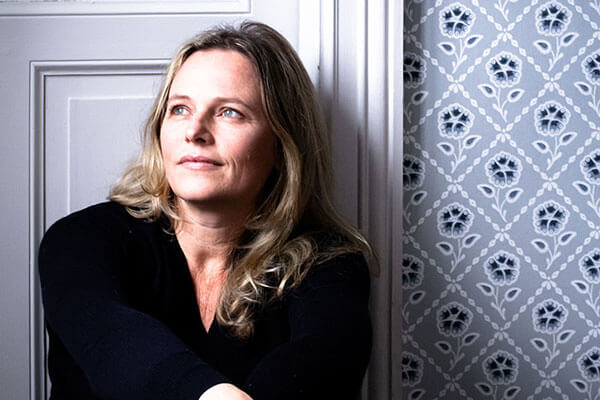
Australian stylist, cook and journalist Sara Silm spent much of her life travelling the world before buying the dream-like Chateau Montfort in 2015. Through a lens of colour, texture and flavour, she brings us a taste of life in the French countryside in her bright new book How to French Country.
We spoke to Sara about her life of wanderlust, what readers can expect from the book and some tips on living your dream.
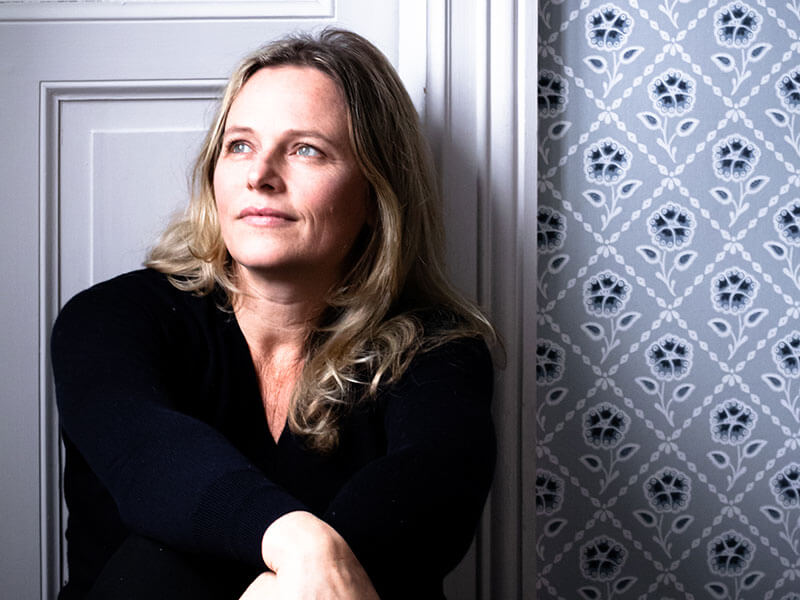
You grew up in Sydney, worked in the Middle East and South Africa, lived in Russia and Kazakhstan before eventually purchasing Chateau Montfort in Southwestern France. What inspired you to travel and experience the world the way you have?
I think it was my first trip overseas. My father was a great hiker and managed to organise a six-week expedition to base camp of Mount Everest (by fax) when I was just 11 years old. This was well before the internet and organised group trekking, so we did it as a family with yaks at altitude, and lower down, with porters. We eventually walked out into India and celebrated in a beautiful old British Raj hotel set amidst the tea plantations of Darjeeling. That trek opened my eyes to a world that was ripe for adventure; a fascinating temptation that demanded to be explored. There was no going back at that point, I was hooked.
I think what really intrigues me about living in other cultures, though, is the thrill of being outside of your comfort zone: of being confronted with new smells, tastes, cultures, languages, sounds and sensations, so strange and wondrous that you’re forced to engage all your senses and truly live in the moment. I think I learnt from a very early age that I wasn’t very good at existing in a predictable environment. It felt like living life in a constant circle. I’m more a linear kind of person. I’m captured by the thrill of what lies beyond the ridge or around the bend.
What do you find most rewarding: writing, cooking or styling?
It’s probably photography actually, closely followed by writing. There’s not a single day I don’t have a camera in my hand. Nothing gives me more pleasure than capturing light, colour and the beauty of everyday life in a lens, whether it’s on my big professional camera or simply an iPhone. It’s a kind of obsession if I’m honest; a bit like a mad stamp collector or an entomologist collecting insects in a net. The thrill of fishing through images at the end of the day is honestly one of my favourite things in life. You just never know what might be waiting for you. It’s those unexpected split seconds that managed to find their way into the frame: the purity of emotion captured in the that precious moment when laughter or doubt or wonder registered in the subject’s face. When light weaves itself through the grass like ribbons on a maypole or when you capture the whimsy of an everyday object that would otherwise remain unseen and unappreciated.
As for writing, it’s something I don’t ever choose to do. It just happens, daily. I can remember writing and illustrating my own little books when I was very small, and it’s continued in one form or another throughout my life. The actual typing of it at the computer is such a small part of the process. The bulk of my writing happens in my head when I’m walking the dogs, or in the garden, or in the car… which might explain why my children often complain that they need to ask me the same thing two or three times. I’m constantly in my own little world!
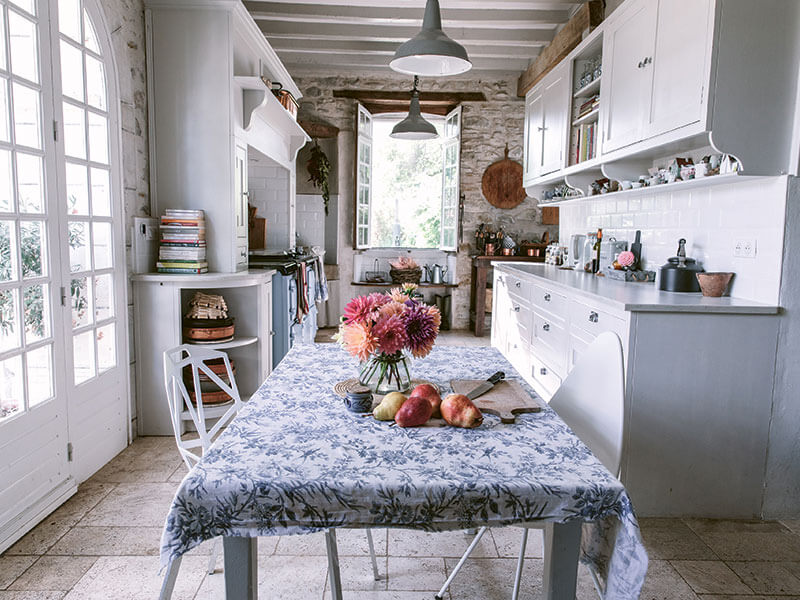
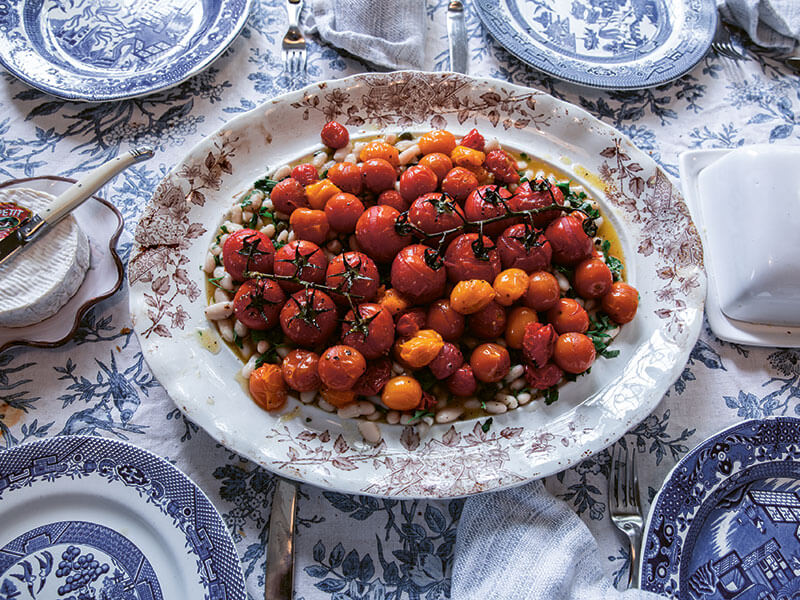
Tell us about a day in your life at Chateau Montfort.
I can’t pretend that life here at Chateau Montfort isn’t filled with the same all-consuming logistics that determine the routine in most family homes; there’s no escaping that. But a typical day here is very much dictated by the season; more so than in other places I’ve lived. I love to watch the sunrise which is the best way of knowing what month you’re in — it can be early or it can require a rather long wait in the dark. Most days start with a walk along the old Roman road that hugs the ridge behind Montfort. It’s a kind of mental meandering through the tasks for the day as well as through the landscape which, like us, changes in subtle ways from day to day. Some days the Pyrenees poke their snow-capped peaks through a blanket of soft cloud. Other days they stand proud in a clear blue sky. In autumn there are chestnuts to be gathered from the forest floor and roasted on the fire at night; ceps to be foraged and sauteed in butter and garlic. In summer there are fields of wild mint for making refreshing iced tea and wild blackberries — something my dogs delight in snacking on as we meander along the track. They’re truly French dogs!
Most days I’m in the garden tending to the potager, the perennial beds, the chickens and the goats (they’re always escaping) and collecting flowers, herbs & foliage for the house — there are always fresh flowers in the house, even in the depths of winter. I adore the farmer’s markets, so depending on the day (each day the market is in a different village) I’ll be sipping coffee at a little bar somewhere with the other early risers out to bag the freshest produce before the lazy ones make their way at a more respectable hour.
The AGA is generally laden with pots bubbling away with jam and chutney and inevitably a daube or casserole in the simmering oven. I’m almost always restoring a piece of furniture, and nearly six years on, the house renovations continue. I’m currently decorating both my son’s rooms. One is at university, and the other has just started at boarding school in Dublin so I’m finally reclaiming these teen-dens and making them my own, or at least more hospitable for any future girlfriends!
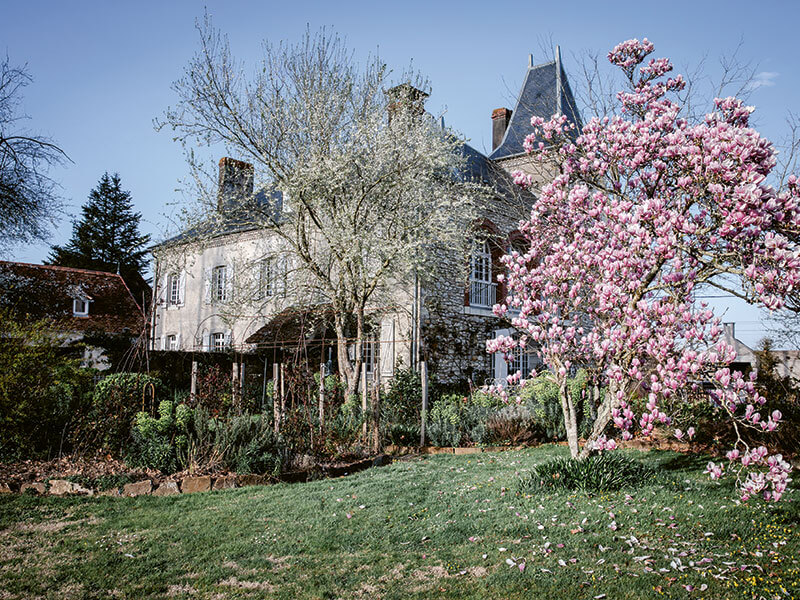

Your new book, How to French Country, is the ultimate guide to surrounding yourself with French country style no matter where you are in the world – a welcome delight for Australians itching to travel! What can readers expect from the book?
It’s a book that’s intended to be very much a handbook. It’s both a lifestyle and regional guide that might inspire a future trip to this beautiful but largely lesser-known part of France. If travel isn’t an option, it’s also a way of bringing home a little bit of France, be it via a recipe, colour palette or décor option, no matter where you live. I know how hard it can be to make a home feel authentic, especially if you don’t know where to start or where to find materials that express the way you want to feel, so I included a chapter that charts the course of our little stone barn. It’s essentially a mini house, so it formed a perfect vignette that allows readers to see how each room developed in real-time (it was renovated and shot by me over the course of nearly two years). Essentially, it’s a book that provides the perfect escape from the four walls that have defined our lives for these past months, and years in some cases. A way of reassessing what’s important to us and the way we want to live going forward.
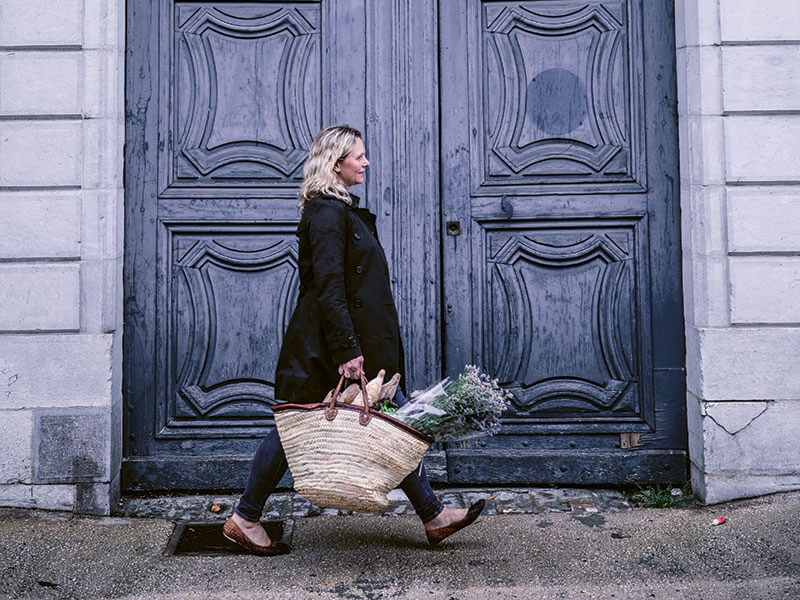
It seems to us that you are living the dream – do you have any tips for readers looking to do the same?
I think the pandemic has been an incredible opportunity to refocus on dreams — both personal and those in the interest of our planet. Life is so fragile and so short, there’s no time to waste. Dreams remain just that if action isn’t taken, so my advice has always been to move ahead and make them a reality, no matter how big or small. There are always obstacles, especially when you throw in foreign countries and ancient buildings, but if you break a dream down, be realistic about your expectations and take one day at a time, you will get there. Dreams take grit and determination and sometimes many years in the making, but the reality is thrilling. Far more thrilling than the alternative of doing nothing and allowing them to simply exist in your mind.
What’s next for you?
I’m very excited about my upcoming collection of wallpapers with Sandberg, one of my favourite Swedish wallpaper companies. There’s a wonderful historical link between Sweden and the Béarn, so we’re developing some beautiful designs with this in mind. As the world gradually re-opens, I’m also starting to develop some new travel guides for my website and a wonderful series of inspiring interviews with creatives who are living their bliss. Esther, my Nubian goat doesn’t like the rain and has asked for an indoor hay manger in her maison so there’s that…and perhaps a new rose bed. You can never have enough roses!
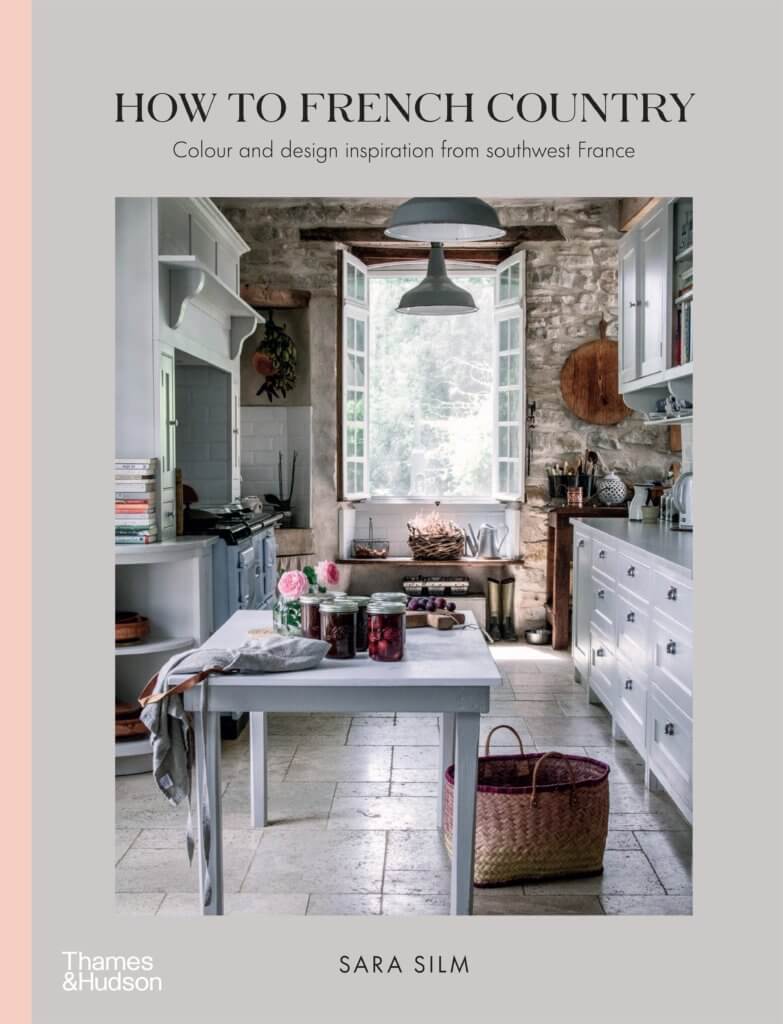
How to French Country is available now. Text and photography by Sara Silm and design by Daniel New.
AU$ 59.99
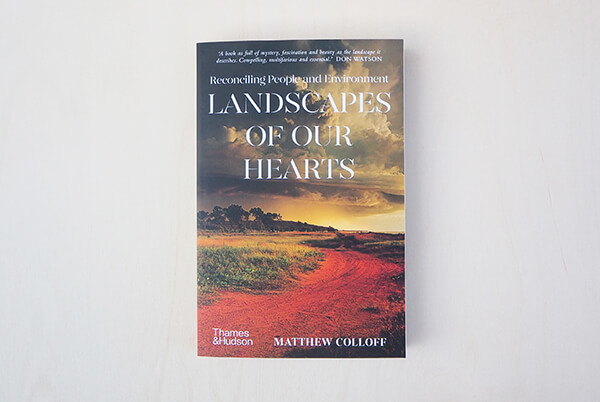
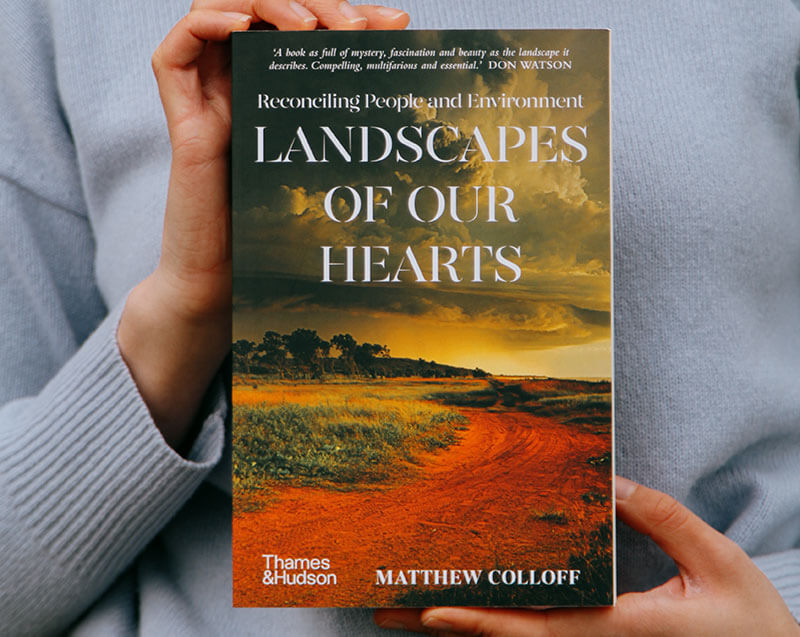
Landscapes of our Hearts was one of our most significant releases of 2020; it changed our perception of Australian history in a big way. From award-winning writer and ecologist Matthew Colloff, the book explores the history of our relationship to this ancient continent, offering the possibility that a renewed connection to the landscape and each other could pave the way towards reconciliation.
Earlier this month, Landscapes of our Hearts took home the NSW Community and Regional History Prize for the 2021 NSW Premier’s History Awards. The award recognises a significant contribution to understanding of any aspect of the history of New South Wales. We are so proud of Matthew and our team for this huge accomplishment.
Congratulations to all of the recipients of this year’s awards – check out the full list here.
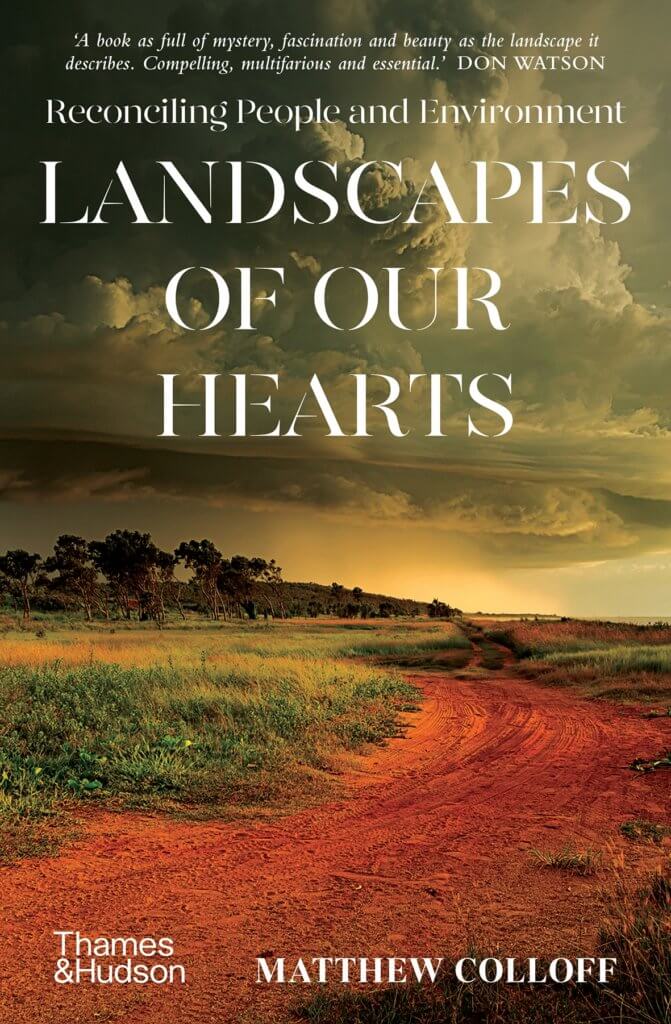
Landscapes of our Hearts: Reconciling People and Environment is available now. Text by Matthew Colloff, cover image by Louise Denton and cover design by Allisa Dinallo.
AU$ 34.99
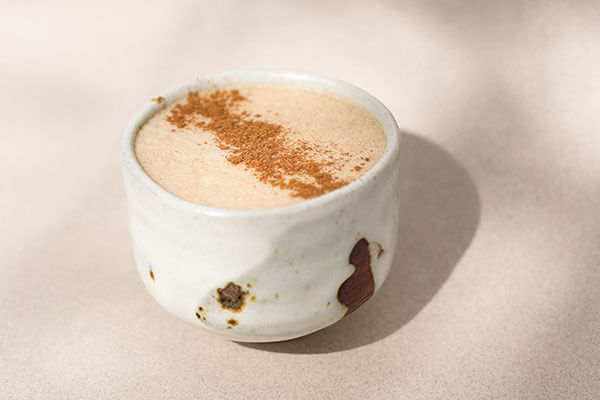
Did you know that medicinal plants can work wonders for your emotional health? In her revolutionary new guide The Plant Clinic, Erin Lovell Verinder says that ‘plants have a phenomenal ability to adapt their medicinal offerings to the needs of the people. They hold space for our process, bringing ease and comfort, lifting the proverbial storm clouds within us, calming the nervous system and assuring us with a warm embrace.’
Read on for three of Erin’s incredible recipes to help support your journey to better mental health and wellbeing.
Calm Candies
Who doesn’t love candy? These rose-dusted, ‘clean’ candies, infused with a synergistic quintet of calming plants, are sweetened only with honey. They are always a hit with the kids. Savour these nectarous, golden-hued jewels, to bring on an instant dose of peacefulness.
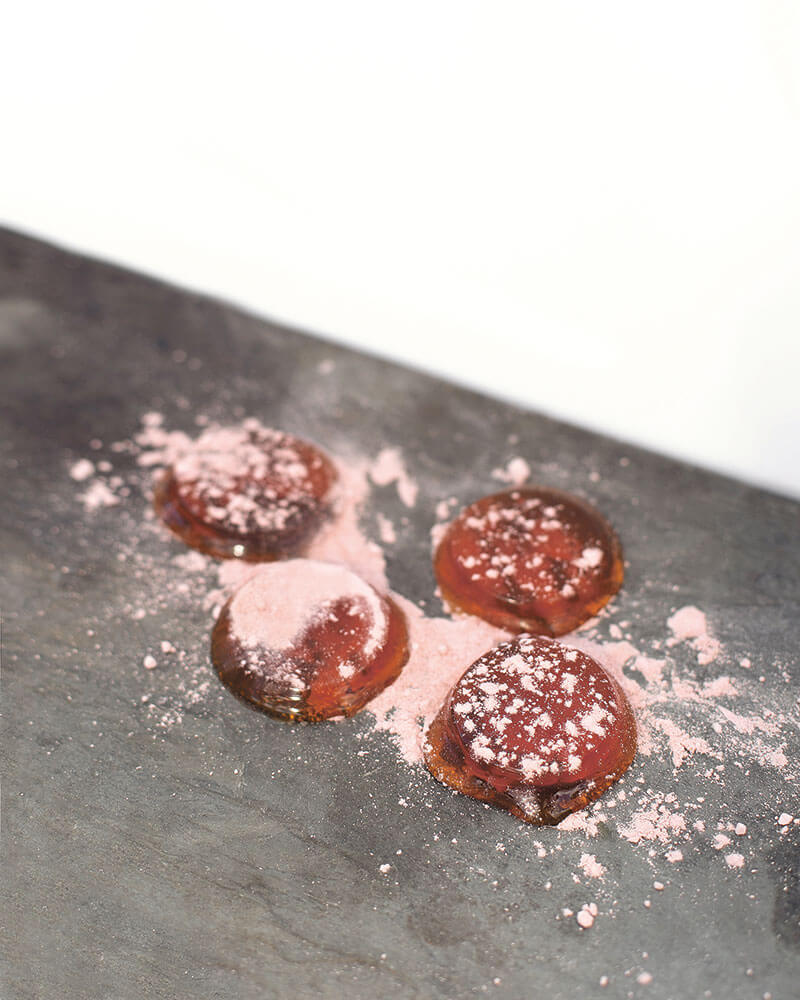
Herbal Ingredients
Method
First, make 1/4 cup of strong medicinal tea infusion with the herbal ingredients, brewing the tea for at least 20 minutes before straining through a fine-mesh sieve. Add the infused tea base and 1 cup of honey to a heavy-bottomed saucepan and simmer over medium to high heat. It’s
best to use a candy thermometer here, as the mix needs to get to around 150°C (300°F). This will take around 25–30 minutes. If you do not have a thermometer, you can test if the candy is ready by dropping a little of the mixture into ice cold water. If the mixture is ready, it will harden instantly! Do be very careful, though, as hot sugar burns can be very serious and very sore.
Once ready, pour your candy mixture into small silicon moulds (any mould will do, but the candies are much easier to remove from silicon) and allow to cool completely. Remove from the moulds and dust with your herbal powder of choice (such as the rose petal powder in the Calm Candies remedy recipe, p. 278). You can roll each candy in baking paper for freshness and portability, or store sealed in an airtight container for 2–4 weeks. If you live in a warmer climate, keep these in the fridge!
Floral Bath
Sometimes the simplest interventions feel entirely luxurious, and this herbal practice is one of them. Floating in a bath of warm water scattered with precious petals is a treat for the mind, body and spirit. This remedy is perfect for when you may be feeling weary, fatigued, compressed, low and a little lacklustre. When choosing the floral plant portion of the recipe, consider aromatic herbs such as lavender and rose to inspire relaxation and rejuvenation.
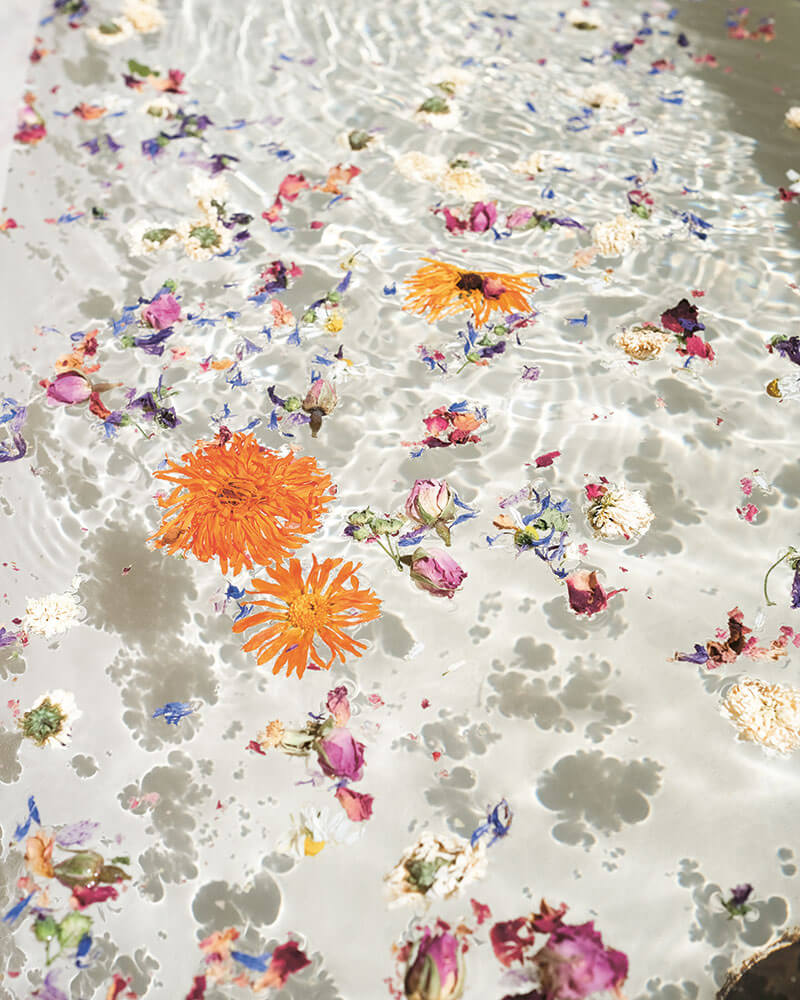
Herbal Ingredients
Method
Mix the flowers and plant material directly into the running bath water – they will float and bob around merrily.
Soak up the serenity for 20 or so minutes.
Lion’s Mane Tonic
For those sluggish mornings or slumpy afternoons where you might find yourself in the thick of fogginess and in need of motivation. This warming blend lights up neurological powers and vitality – in part due to the awesomeness of the medicinal mushroom, lion’s mane, which is paired with chai spice tones and adaptogenic maca root. Implement this sustaining treat to renew your capacity for focused endurance.
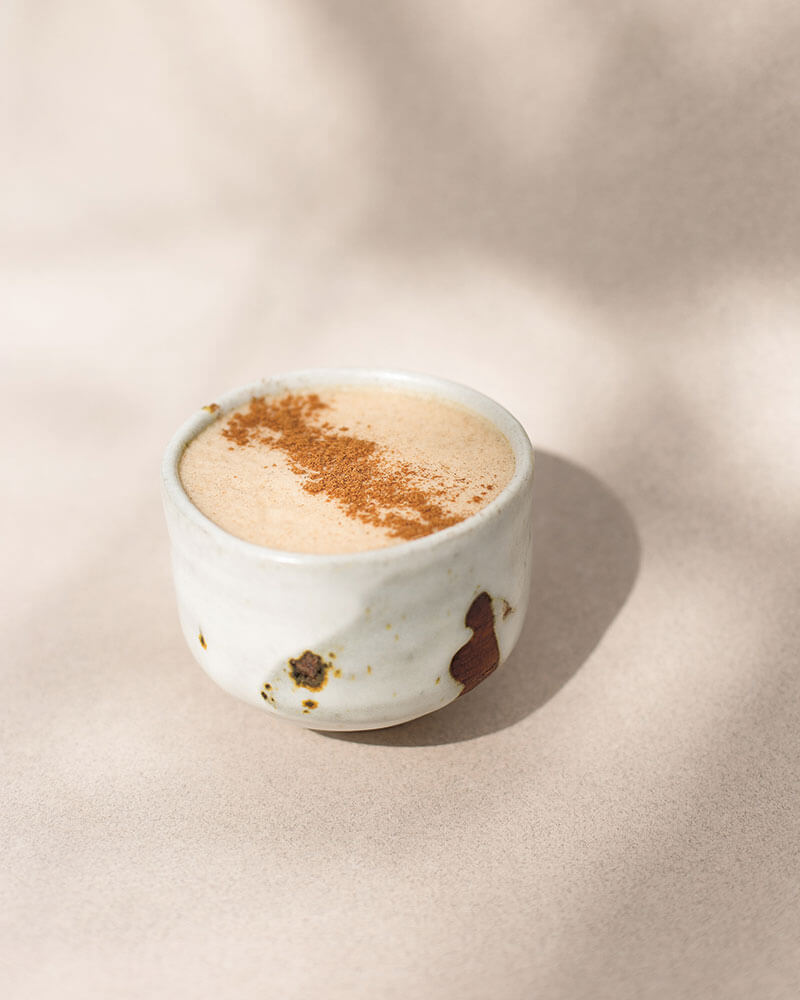
Herbal Ingredients
Method
To make a warm mylk tonic, add the herbal ingredients and 1 cup plant mylk together in a milk frother and set to ‘warm’, or heat gently in a saucepan. If adding raw honey as a sweetener, ensure that your tonic is not boiling hot, as excess heat will degrade the honey’s beneficial enzymes. Once warm, pour into your favourite mug, dust with a little cinnamon, sip slowly and savour the warmth.
To make a cold mylk tonic, add the herbal ingredients and 1 cup plant mylk together in a milk frother set to ‘cool’, or blitz in a blender. Then simply pour into a tall glass over ice, sprinkle with edible petals and enjoy.
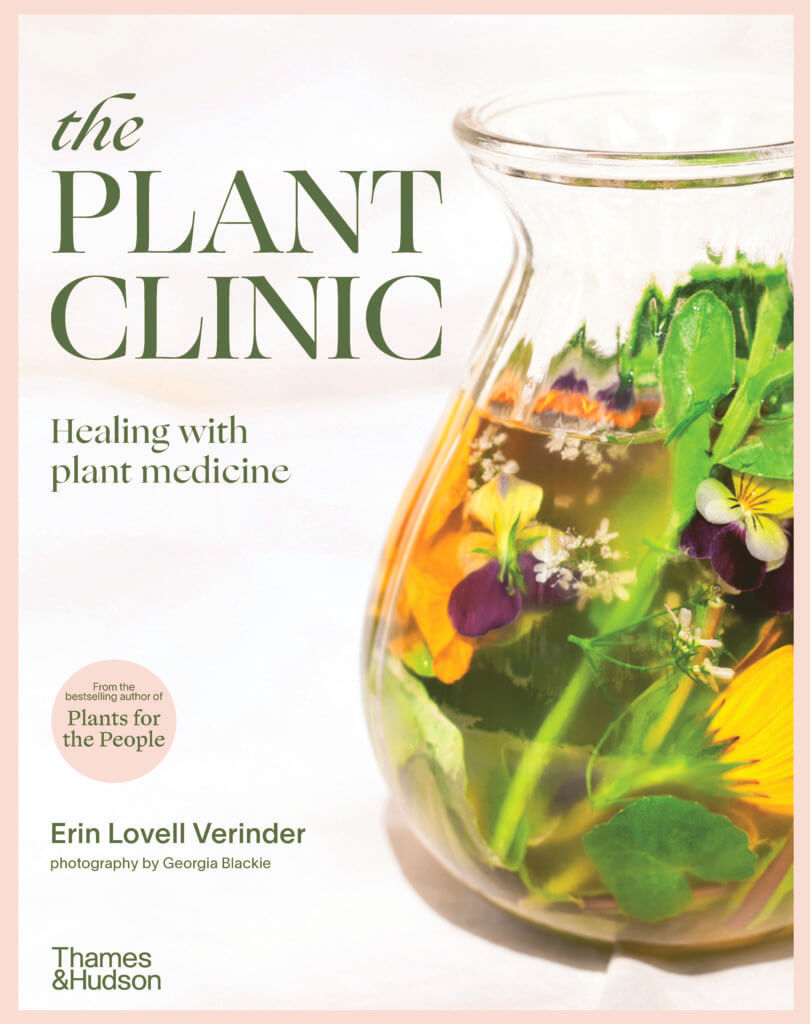
The Plant Clinic is available now. Text by Erin Lovell Verinder, photography by Georgia Blackie and design by Noah Harper Checkle.
AU$39.99
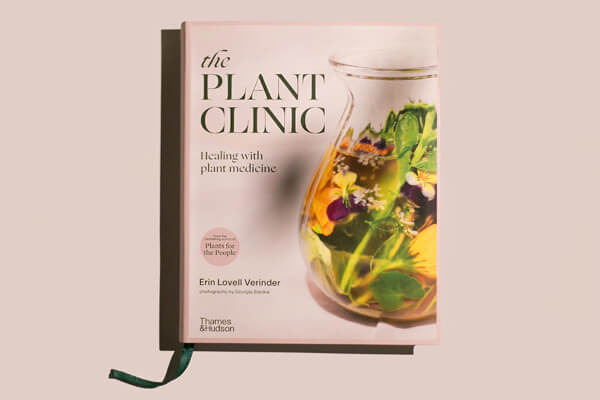
Last year we were blown away by the love we received for herbalist and nutritionist Erin Lovell Verinder’s debut title, Plants for the People. So many readers had been seeking a modern approach to using complementary medicine and Erin expertly answered their calls with an evolution of herbal-medicine books of the past.
Erin’s new venture The Plant Clinic is a revolutionary guide that delves deeper into the restorative potential of plant medicine, helping to manage and diagnose over 100 health concerns. The book features 150 recipes for teas, tinctures, syrups, salves, vinegars that promote healing across vitality, immunity, detoxification, the gut, hormone health, mums and bubs, hair and skin, emotions, mind and spirit. Erin’s empowering words are underscored by herbal wisdom and amplified by Georgia Blackie’s ethereal photography.
Get a feel for this essential guide with the introduction to the book, extracted exclusively for our Thames & Hudson community.
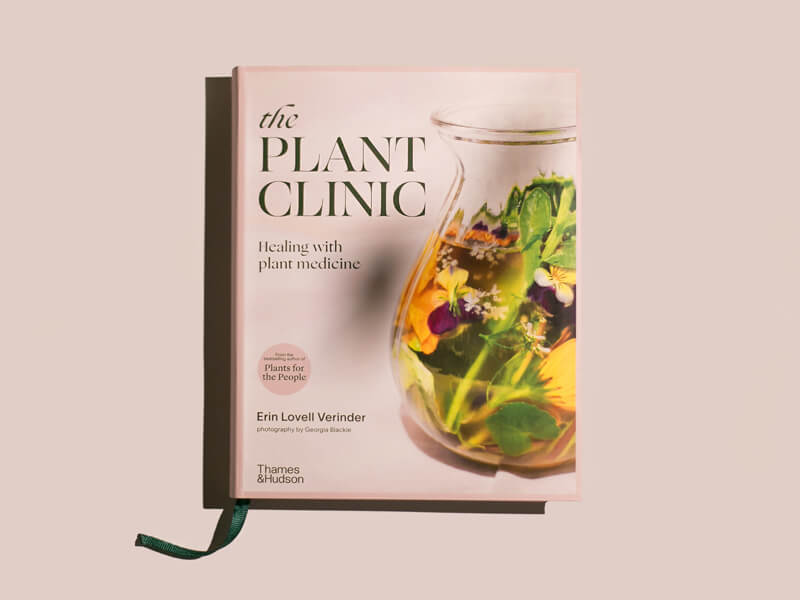
Healing is no joke. It can be uncomfortable, messy and all-consuming, and it is certainly a nonlinear undertaking. The journey of healing is much like the metaphor of peeling an onion: healing lies within every layer, and as we peel each one back, we get closer to the heart. In uncovering the layers, we begin to change our perceptions and expressions of ill health. We awaken to see the patterns, the stories, the feelings held within ourselves.
As a clinical practitioner I witness all sorts of presentations, revelations, breakdowns and breakthroughs. Throughout any given week in clinic, there will always be a myriad of lovely clients sitting in front of me sharing their health stories, ranging from longstanding chronic conditions to acute complaints. I have learnt that my own health challenges and experiences have shaped me as a practitioner, and my ability to understand, guide and hold the space for others moving through their health challenges stems directly from my own experiences.
Years ago, I personally went through a terrifying chapter of burnout. I had been moving fast in many aspects of my life; emotionally I was frayed, physically I was weary. Changes needed to be made in my life. I felt the nudge of a physical symptom, yet I did not fully listen in. I have learnt the hard way that we often do this; as a coping mechanism, we ignore the messages of our bodies. Perhaps we cannot quite look at it or we aren’t quite ready to hear it. We look away, wipe our hands of it, dust ourselves off and keep going. For me, this was a grave misstep.
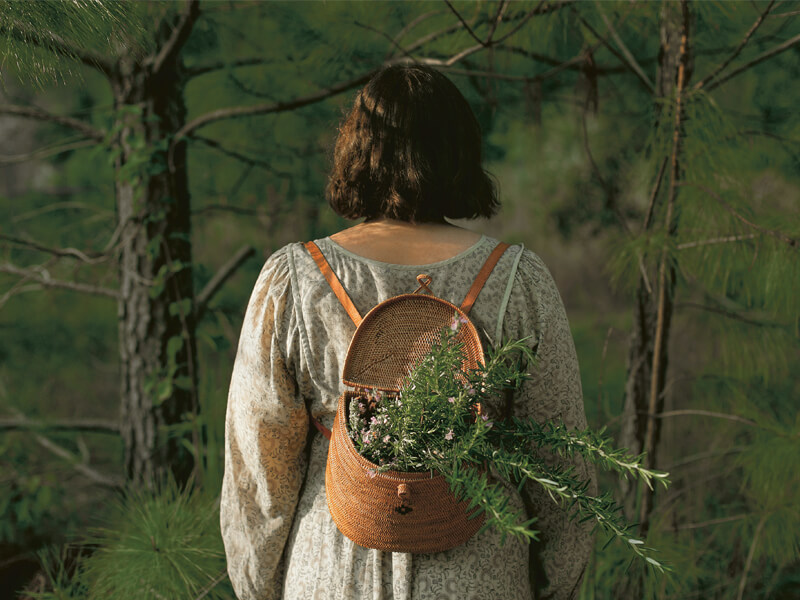
My physical symptoms hit me like a bus. Literal waves of panic shook my body, yet my mind was still. Waves of anxiety washed through me. I was feeling out of my body, sped up and shaky. Cortisol rushes consumed me, and I really could not do much to keep them at bay. I went down allopathic treatment paths, with no answers and no solutions. I had no choice but to listen to my body, to make changes and to allow myself the space to heal.
Although the six Pillars to Thrive (p. 16) are age-old essentials, this is when I truly grasped the importance of these practices. In my own darkest moments, I dived headfirst into these practices to heal my body. I drank the water it was thirsty for. I balanced my blood sugar with nourishing food, eating with determined consistency to anchor my body. I connected to nature and let her fill me up everyday, swinging in my hammock under the trees and sitting in my garden. I moved my body ever so gently when I was able. I listened to my internal self-talk, adjusting each self-limiting thought with nothing but love and gentleness. And I rested. I rested so much; I cleared my calendar. It was not easy, but I knew I needed to. Healing demands a level of surrender, and surrender takes a whole new shape when you really face the true meaning of the word.
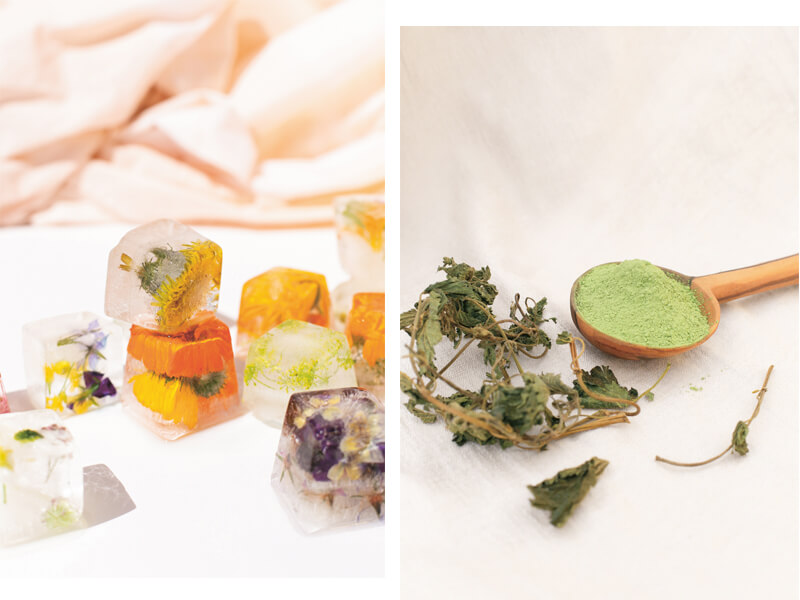
I leant heavily on plant medicine during this time, following my own plant protocols morning, day and night. Adaptogenic-rich herbals such as ashwagandha and rehmannia reshaped my internal stress response. Nervine-rich herbals such as passionflower, oat straw and skullcap helped to ground my nervous system. They were potent calmers of the cortisol rushes. They brought the light of hope with swift improvements and feelings of resilience returning. I got better very quickly. Within three months. This may seem like a long time, but when you are at rock bottom, a return to full vitality within three months is its own kind of radical.
While this experience truly brought me to my knees, it also offered me incredible insights and cracked open my life in a really wonderful way. I set a new pace, I now honour rest and know my limits lovingly, I lead with my heart and have learnt to not overextend myself. The whole breaking down to break through concept is quite literally the epitome of my (albeit messy) dance with burnout. Working with the plants allowed me to get to the very root of the issue. There was no shortcut or quick fix. I was worn so thin that I had to build from the ground up. This was deep healing.
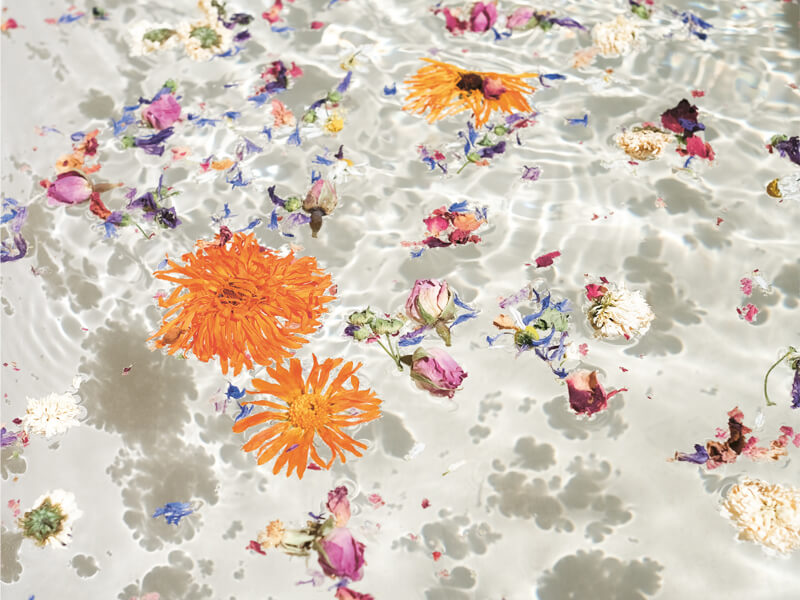
Unsurprisingly, I work with many burnt-out people. It is a natural side effect of our times, a modern epidemic of sorts. We have strayed far from the rhythms of nature, from a time when the simple rising of the sun and the setting of the moon were our compass. Instead, we wake to alarms and live our lives with various forms of technology dictating our daily movements and schedules. How can we all keep up?!
It’s an incredible thing to watch clients return from the brink of brutal burnout with the assistance of restorative herbs and the Pillars to Thrive (p. 16). Often, one particular symptom, like poor energy, for example, improves with gentle interventions (such as herbs and rest), meaning fewer energy dips in the day; then sleep deepens, and gradually vitality is regained. This is the process of healing; one element affects another, and the pieces of your inner puzzle unite.
One client had been dealing with chronic bloating for a long time. She had tried every diet, had seen all sorts of medical specialists and undertaken invasive investigations with no results or improvements. After years, she turned to the plants. We discovered that her chronic digestive bloating was more a reflection of her internal emotional landscapes. Her response to stress was an inability to digest, a classic irritable bowel syndrome–like symptom. Once we had set up a herbal treatment plan – such as the Bloating Protocol on page 148 – to lean on, incorporating digestive herbs such as chamomile, lemon balm and fennel to calm her belly and her stress response, we had an incredible breakthrough. When her awareness shifted to working with plants to support her process, she transformed her bloating woes.
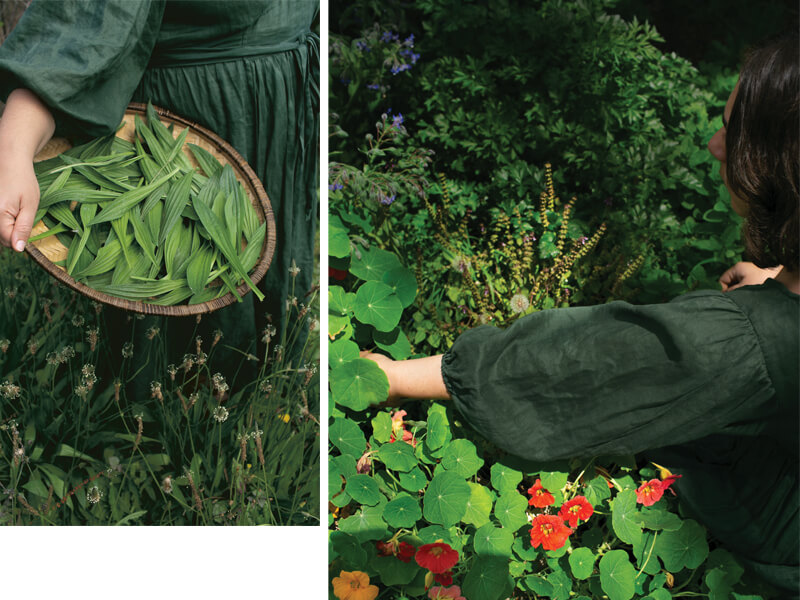
My own plant path has been an example of science and spirit finding their way back to each other. I am a Bachelor-level herbalist. My training was heavily clinical and science-based – involving the study of botany, anatomy and physiology, pharmacology, symptomatology, pathology and biochemistry of the body – alongside the sweet song of herbalism. However, when I embarked on the path of natural medicine as an eager teenager, my first learnt system of healing was energetic healing, with its esoteric view of health. Since then, I have also dedicated years to my nutritional medicine studies, learning about the therapeutic benefits of food and the power in edible nourishment. I have merged my years of study and training with my years of clinical experiences, witnessing countless breakthroughs in my clients’ ill health, working with them in restoring true health. What I am most certain of, is that you deserve to hold all of the tools that are needed to decode the messages being sent by your body and being.
Choosing the plant path takes us deep into the riches of traditional folk medicine and ancestral herbal therapeutics. We return to the old ways, marrying time-honoured approaches with contemporary practices and forging new ways to work with plants to heal our bodies and beings. The roots of herbalism run deep, and it is about time we found our way back to working with the plants to heal.
This book is not intended to replace individualised professional advice on healthcare and wellbeing, nor is it is intended to treat, diagnose or cure. It is recommended that you consult your naturopathic practitioner, herbalist or GP when seeking healthcare support; health runs deep, and there is no such thing as a one-size-fits-all approach. As such, when working with plant medicine, it is advisable to consult a herbal materia medica to become familiar with any cautions or contradictions which may be applicable to your situation. Please be aware that some pharmaceutical drugs and plant medicines can interact in unintended ways, so it is essential that you gain advice from your health care professional if you are already taking any prescribed medications.
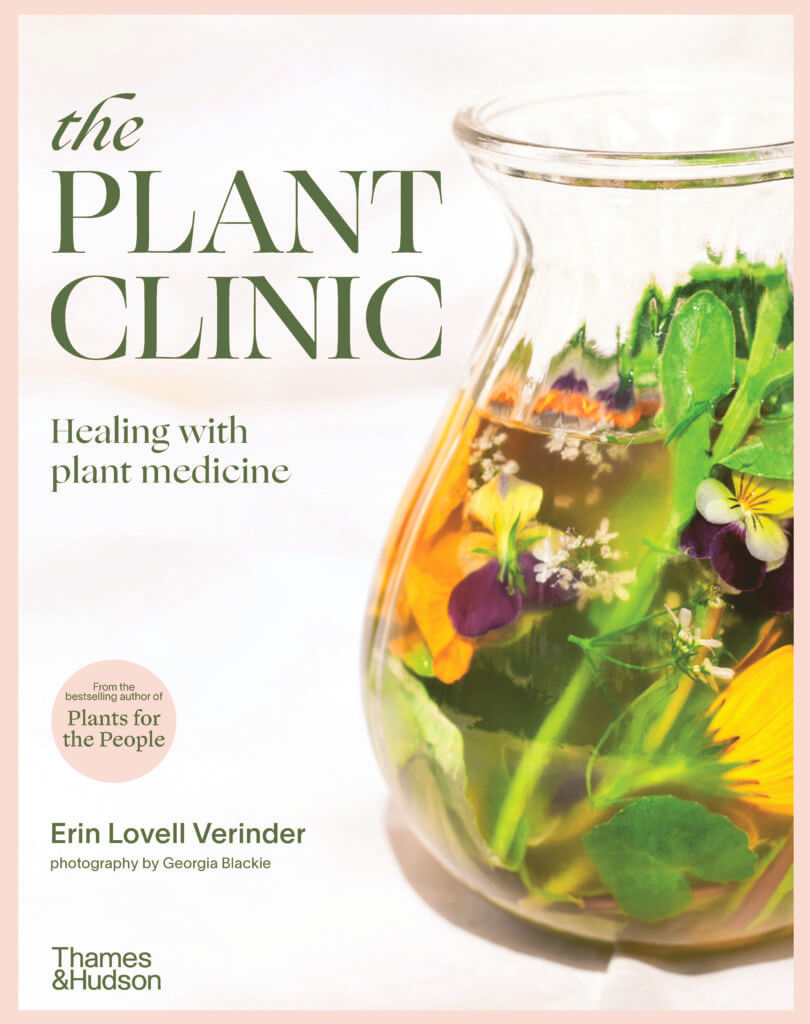
This is an edited extract from The Plant Clinic, available now. Text by Erin Lovell Verinder, photography by Georgia Blackie and design by Noah Harper Checkle.
AU$39.99

In her latest book A Room of Her Own, author and photographer Robyn Lea captures the hearts and homes of twenty extraordinary women around the globe. Whether they be artists, designers, makers or curators, these women have a common ground when it comes to new ways of thinking, and of course, daring to lead creative lives.
In this extract, we put the spotlight on two of our Melbourne-based favourites from the book: jewellery designer Fiorina Golotta and photographer Francesca Golotta. Read on for their chapter and find out how you can win a copy of the book and a pair of Fiorina Jewellery’s coveted logo earrings.
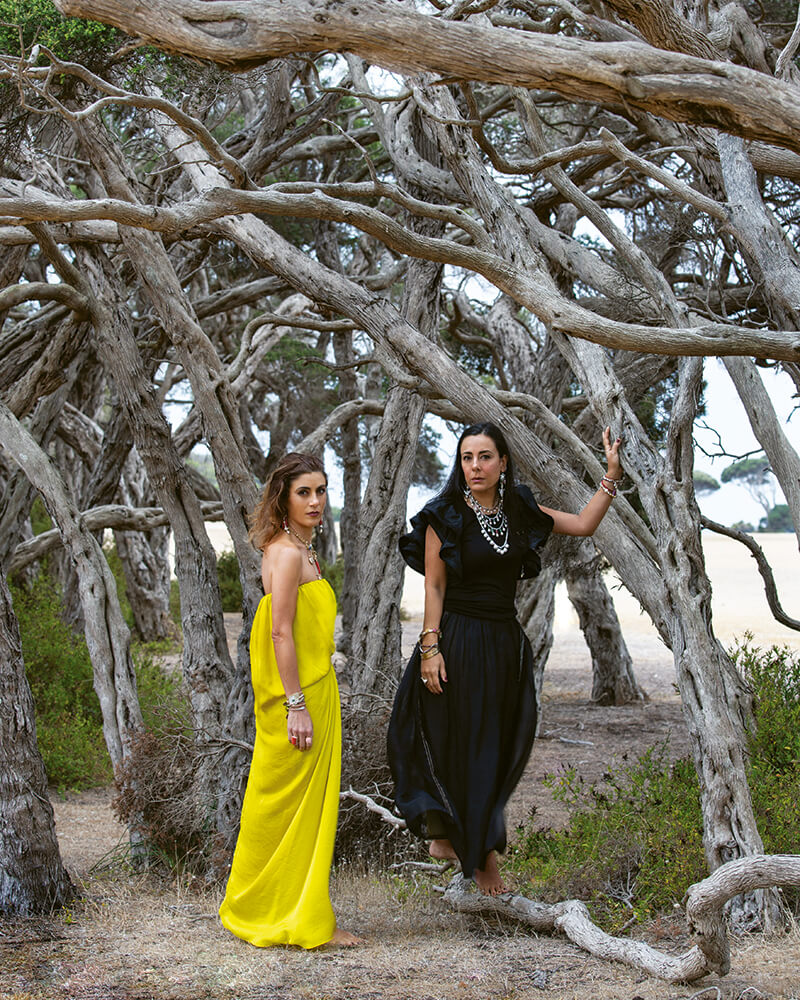
Ensconced in her bedroom in suburban Melbourne, threading shark’s teeth and shells onto string to make herself a necklace, seven-year-old Fiorina Golotta embarked on a small creative project that marked the beginning of her life’s work. Two years later, while accompanying her father, Tony, on a trip to his native Italy, the fate of her subsequent creative career was effectively sealed. The European history, architecture, art and jewellery she saw there made a profound impression, and the wildly contrasting aesthetic she found at Bangkok airport en route – ‘Everything was shiny: mirrored beads, gold flowers and jewellery … it was phenomenal’ – was equally intoxicating. By her tenth birthday she was fully accessorised in her own jewellery designs.
Not long after, Fiorina’s younger sister Francesca had her own creative epiphany. On his forty-fifth birthday, Tony was given a coffee-table book, Italia Mia, featuring photographs by 1950s film-star-turned-photographer Gina Lollobrigida. Francesca pored over its pages of Italian street scenes and interiors and, encouraged by Fiorina, was soon experimenting with photography.

As Fiorina grew older, her creative work became inextricably linked to her sense of self. The handcrafted jewellery and talismans she made were not just objects of beauty and self-expression, but also tools of resistance. Tony, raised in poverty in conservative postwar southern Italy, wanted his children to pursue academic paths and corporate careers. So he saw his elder daughter’s creative impulses as an expression of rebellion. Fiorina agreed. ‘To be creative was a point of rebellion, an escape, an expression and a statement,’ she explains. ‘Jewellery made me feel uplifted, and it gave me an identity and an immediate shield.’ It also exposed her to other ethnicities and cultures beyond the scope of her traditional upbringing, such as Native American groups, whose wisdom and protection she sought.
Fiorina left home at eighteen, a decision her parents did not welcome. Armed with freedom and independence for the first time, she discovered a different side of Melbourne, though was soon ready to move further afield. After throwing herself into a world of diverse ideologies and the underground music scene in New York City for a year, she returned to Australia and settled in the village of Kuranda in far-northern Queensland. There, she lost herself in a cathartic period of experimentation and self-development. Her new routine included working in an African bead shop, which offered her an informal education in tribal jewellery. ‘African beads are not just decorative – they have a deeper cultural value. They are also religious, and some of them contain prayers,’ she explains.
With a new sense of confidence in her creative needs and direction, fostered by several years of travel and exploration, she returned to Melbourne to study jewellery-making and started sharing a workshop in Little Collins Street. It was around this time that the sisters’ parents divorced. ‘It led us all to new paths,’ says Francesca, ‘and forged instant freedom. It meant we were no longer as engaged in the deep-rooted traditions of the Italian community.’
In 2003, when their father was terminally ill with cancer, Fiorina and her work were featured in a prominent magazine. A family friend visiting the bedridden Tony presented him with a laminated copy of the story. It was a defining moment of public recognition of Fiorina’s work that made him incredibly proud. Similarly, the night before the hanging of Francesca and their brother Maurice’s joint exhibition in 2002, they felt their father’s enthusiasm. Francesca remembers: ‘We were decorating these little icon frames we had made and nailing coins onto them that Fiorina had given us. Dad was going through chemotherapy at the time and feeling very unwell, and suddenly he came alive and insisted on showing us how we should do it.’ As the exhibition opened, another chapter was coming to an end. There was not only new-found peace between Tony and his daughters but a celebration of all they had created.
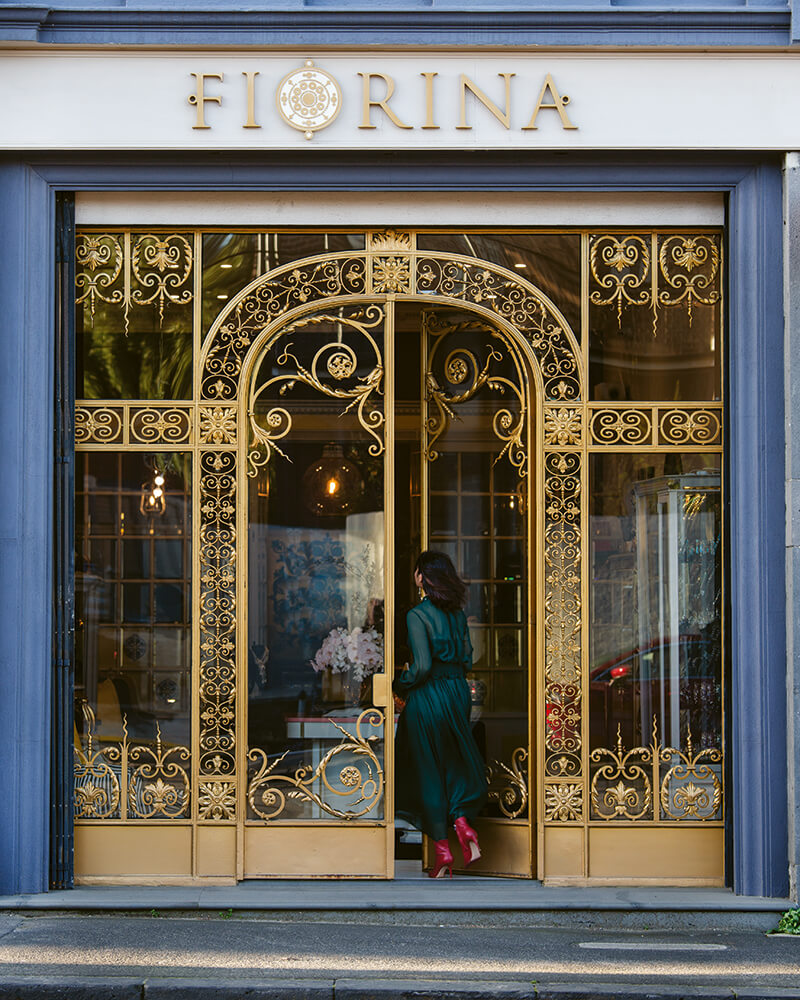
In 2008, Fiorina and Francesca triumphantly opened Fiorina Jewellery on High Street Armadale. Its ornate golden doors open to an interior dotted with velvet chairs and antique mirrors, interspersed with polished cabinets displaying a magical array of handmade pieces. The walls feature Maurice’s artwork and Francesca’s photography. The workshop upstairs is the heart of the atelier, where all the jewellery is made. Tiny drawers are filled with a kaleidoscope of coloured gems and stones, and the collage-style decor includes evidence of Fiorina’s travels, influences and interests.
Francesca’s ability to be both the creative sounding board and the practical voice in the business continues to guide her sister, and Fiorina believes the differences between them are as important as their similarities. ‘We’re different people, and that’s probably why it works,’ she explains. ‘Franca is a true Renaissance woman, she’s romantic. I’m very fiery in comparison, and I learn from my mistakes afterwards. My aesthetic is more tribal and rustic, hers is more elegant and refined.’

These days, working with specific stones and materials continues to feed Fiorina’s sense of wellbeing. ‘The stones have power,’ she says. ‘It’s about finding something that elevates you, something that helps you get through the day, the month, the year, the decade.’ She finds the properties of stones potent: ‘They give me the clarity needed to have the right thoughts, which lead to the right actions.’
Colour is also a significant driver in her life and work: ‘I am attracted to certain colours for specific reasons. It’s something I instinctively draw upon.’ Turquoise is one example. ‘Since my teens, I have been drawn to the traditional culture of people from those Native American nations that wear their hair long and employ turquoise jewellery, feathers and breastplates in their traditional dress, which gives them power and protection.’ Similarly, the jewellery of the ancient Etruscan, Greek, Byzantine and Moghul cultures and traditional Art Deco aesthetics fascinate Fiorina. Her spiritual life is fed by these ancient cultures as well as Buddhism, mysticism and Rastafarianism. ‘An appreciation of alternative ideologies has allowed me to embrace different ways of life, giving me creative freedom and providing a path forward.’
Looking back, Fiorina is philosophical about her upbringing: ‘I believe you come into your family for a reason. My reason was about empowering and protecting people through what I do – through my jewellery.’ Along with her prolific creative output, her rebellious tendencies also prepared her well for tackling the sometimes ruthless world of business.
Together, the sisters have created much more than a jewellery store. It is a focal point for like-minded women, a place they can go to feel inspired, adorned and understood. It has also provided Fiorina with an anchor: ‘I think rebellion has been a curse and a blessing in the same breath. It steered the ship for a long time. The joy of creating and the response from my community, family and friends are now the primary driving forces in my life.’
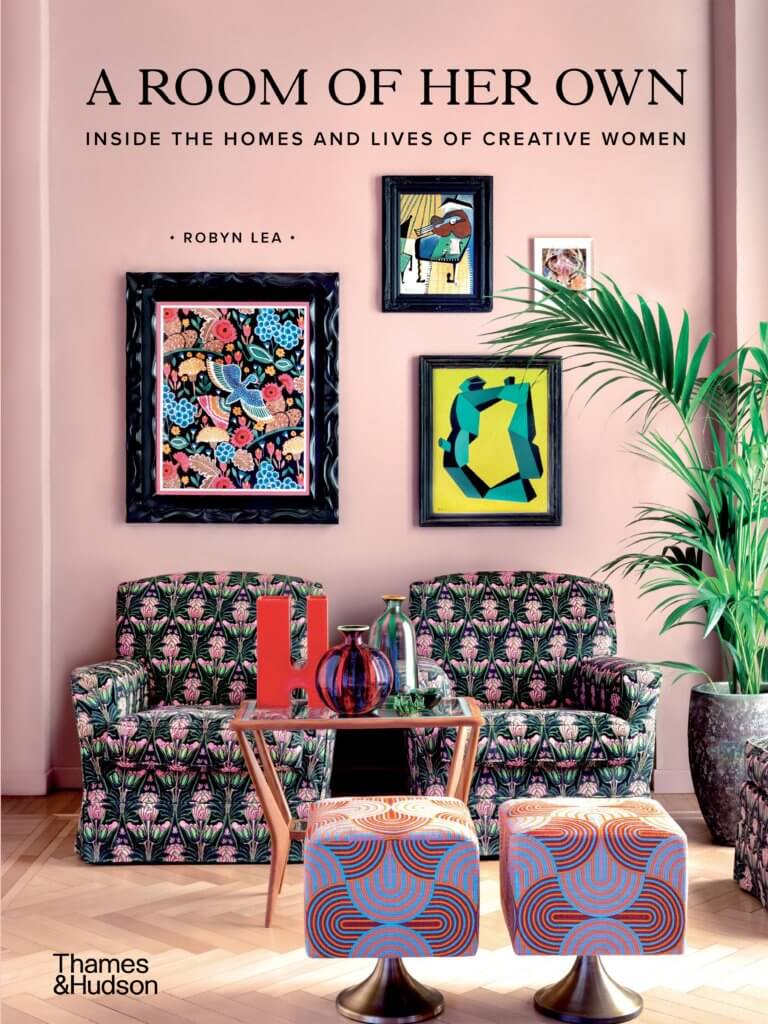
This is an extract from A Room of Her Own, available now. Text and photography by Robyn Lea, design by Ashlea O’Neill.
AU$65.00
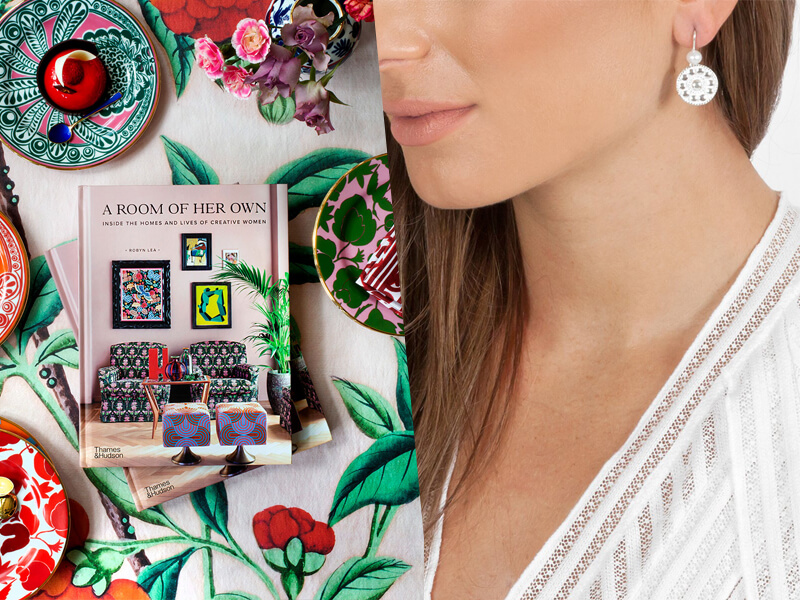
To get into the Spring spirit, we’re giving away a copy of Robyn Lea’s beautiful interiors book ‘A Room of Her Own’ as well as a pair of logo earrings from beloved Melbourne jewellery store (headed by two of the inspirational women featured in the book), Fiorina Jewellery.
Simply click here to enter the competition and agree to sign up to our e-newsletter for your chance to go into the draw to win this prize pack.
Competition closes Wednesday 15 September. Open to AU and NZ residents only.
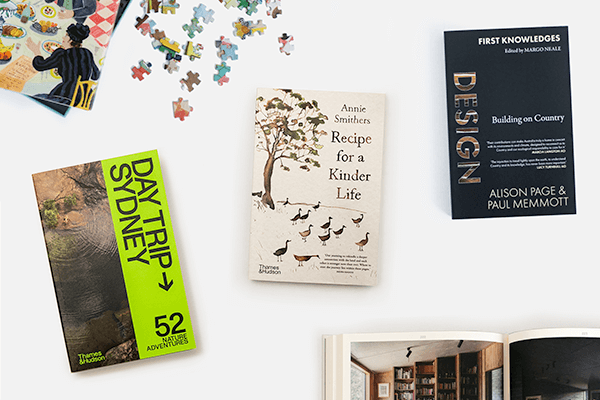
Explore a captivating collection of gift ideas for your loved one this Father’s Day.
Discover personal Australian stories, plan an activity or journey through iconic art and architectural design.
Whatever their interest, we have something for everyone this Father’s Day.
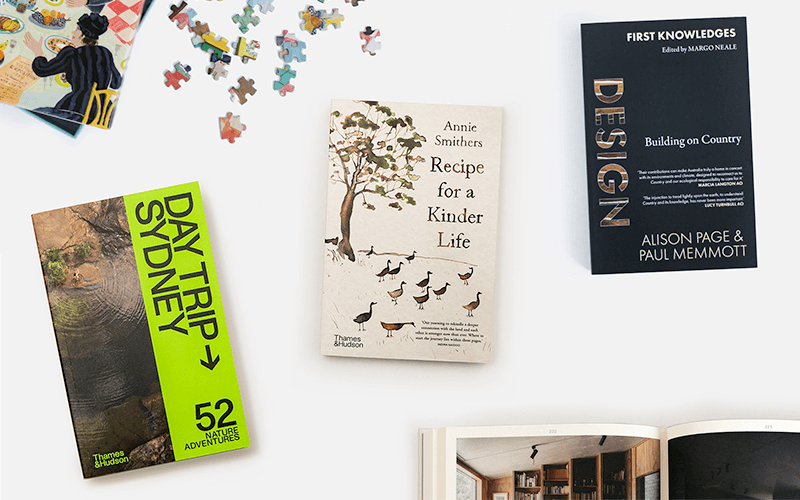
…
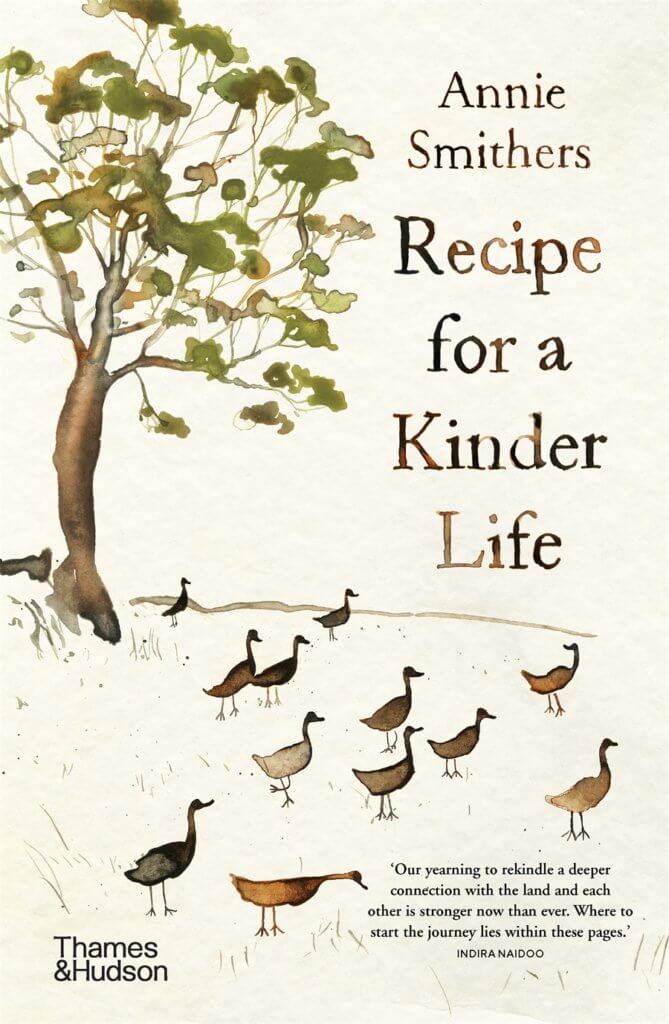
Annie Smithers
Part meditation, part memoir, Annie Smithers offers practical advice and wisdom gleaned from a life dedicated to seasonal food and living sustainably with the land.
…
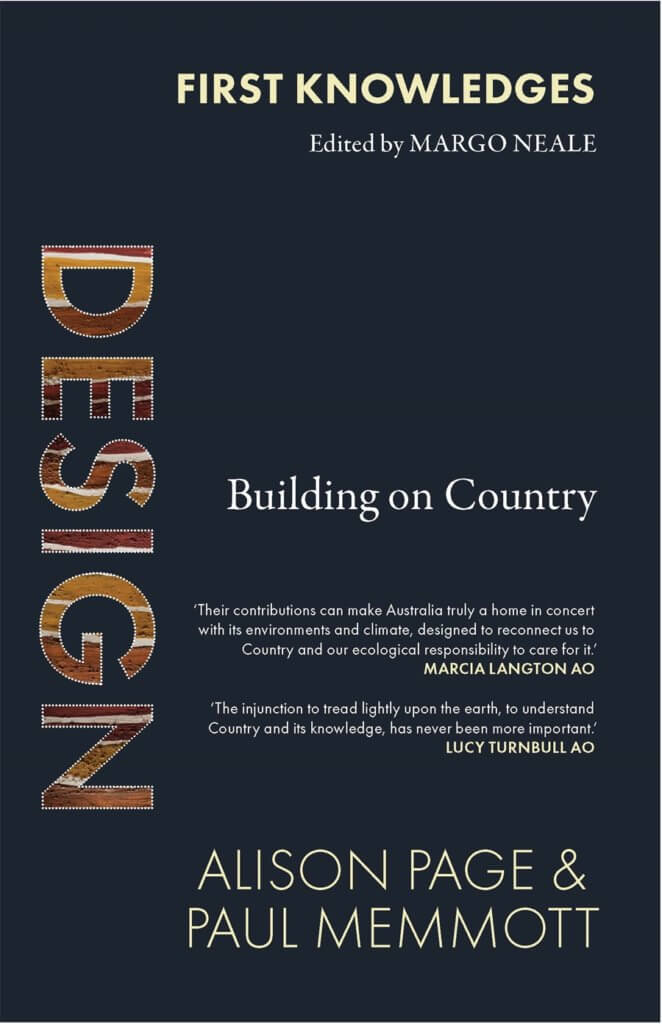
Alison Page and Paul Memmott
The second book in the First Knowledges series, Design: Building on Country issues a challenge for a new Australian design ethos, one that truly responds to the essence of Country and its people.
…
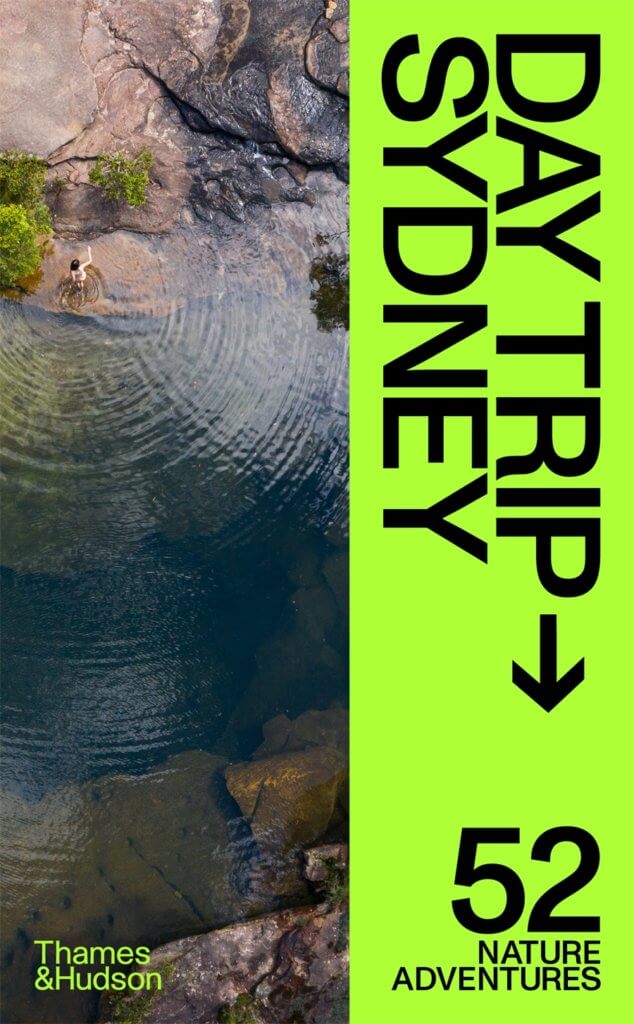
Evi O and Andrew Grune
Plan a mini break with these 52 nature adventures, all within 120 kilometres from Sydney’s city centre.
…
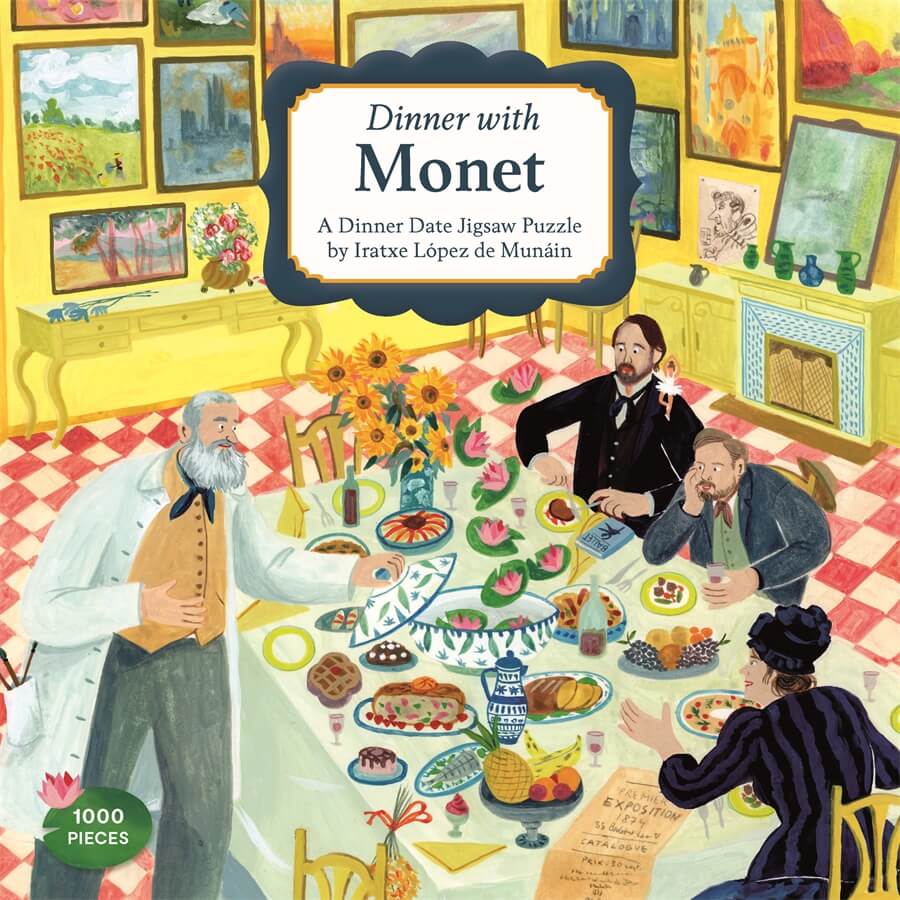
Illustrated by Iratxe López de Munáin
Piece together the artists, artworks and surroundings that bring Claude Monet’s world to life in this exuberant 1000-piece puzzle.
…
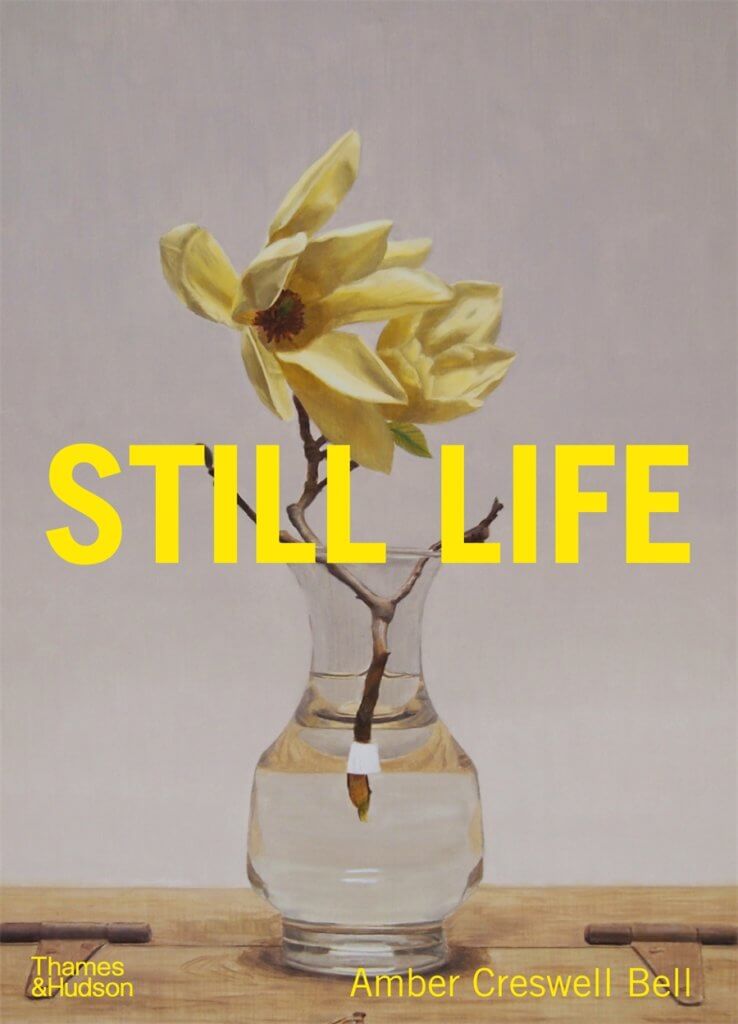
Amber Creswell Bell
A rich survey of the work of more than forty still life artists, which presents the genre in a uniquely Australian light.
…
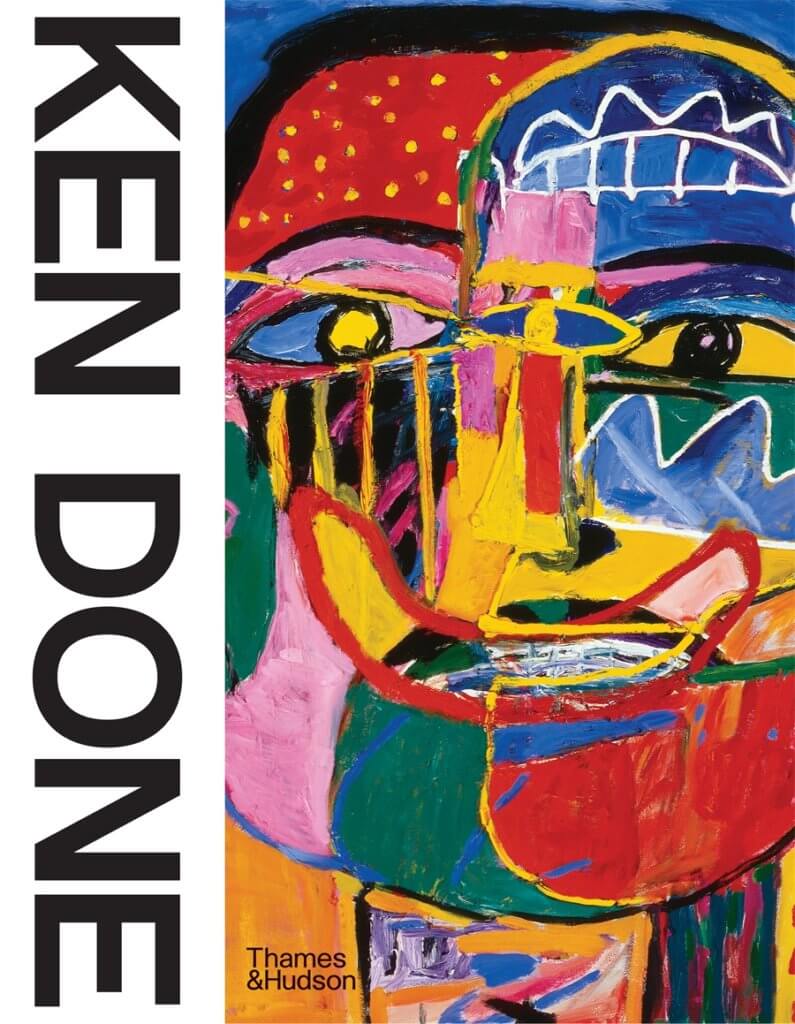
…
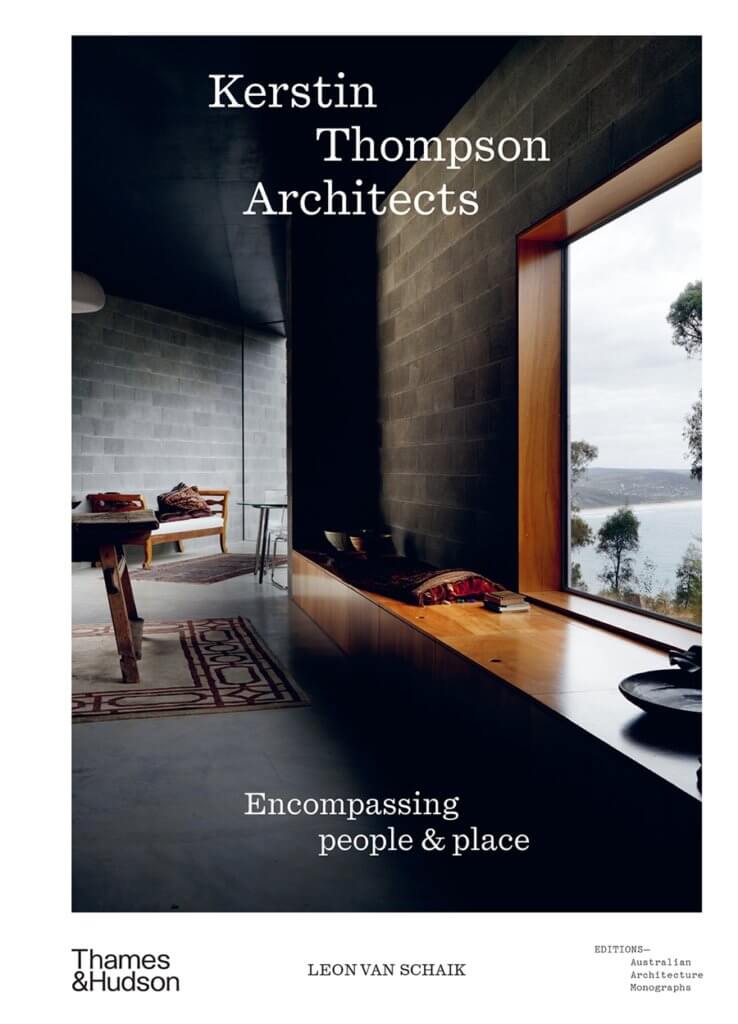
Leon van Schaik
This monograph of celebrated architect Kerstin Thompson’s work provides a deep insight into not only what architects do – the buildings they make – but also why and how they design.
…

Cameron Bruhn
A survey of the most influential, innovative and exciting Australian architecture of the past 20 years.
…
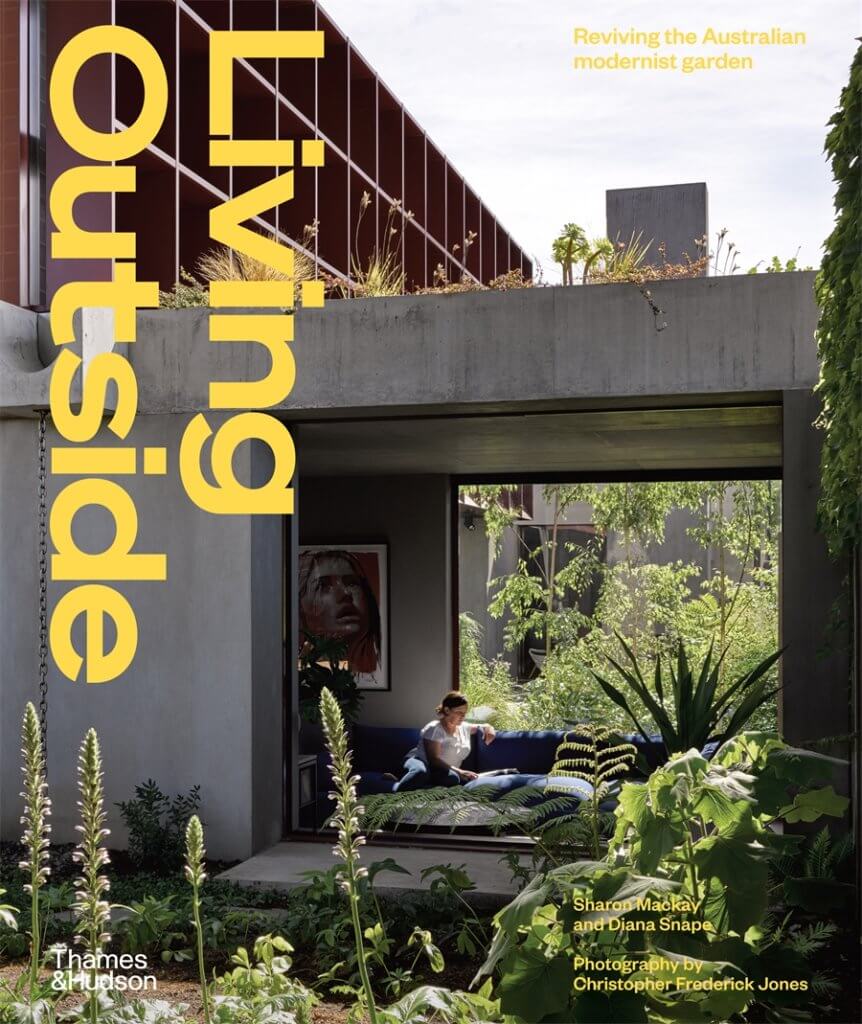
Sharon Mackay and Diana Snape
A collection of residential gardens representing the most ambitious and inspiring contemporary interpretations of mid-century Australian design.
…
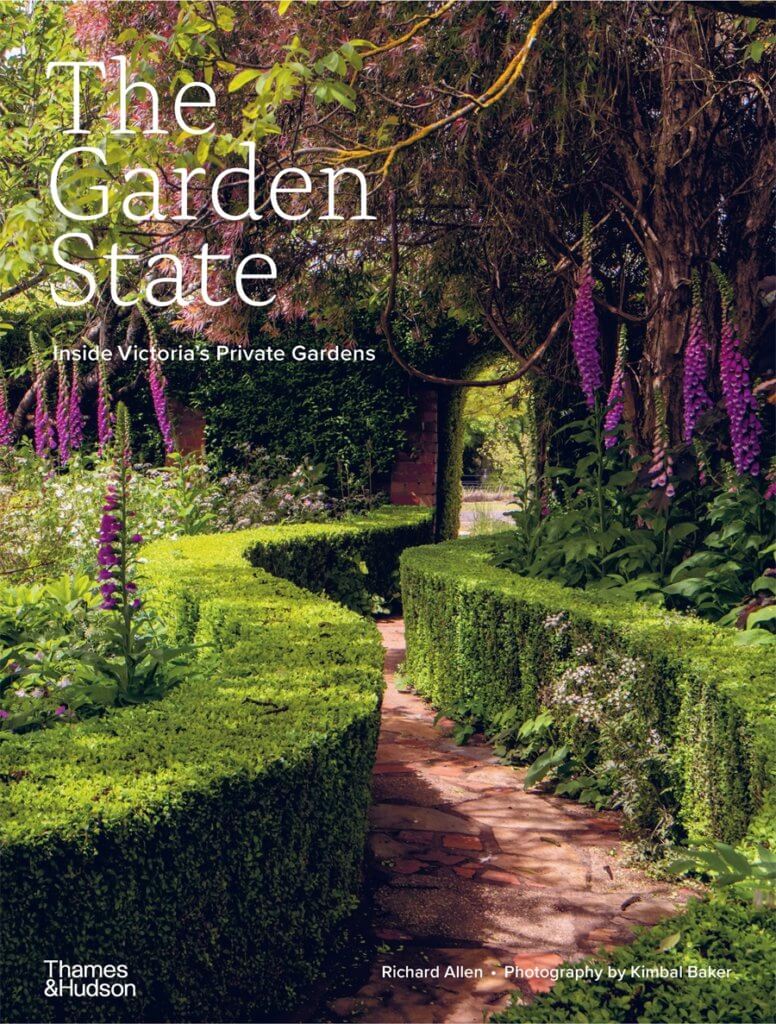
Richard Allen
From Mildura to the lush rolling hills of Gippsland, this is a comprehensive survey of the best private Victorian gardens across one of the most diverse Australian topographies.
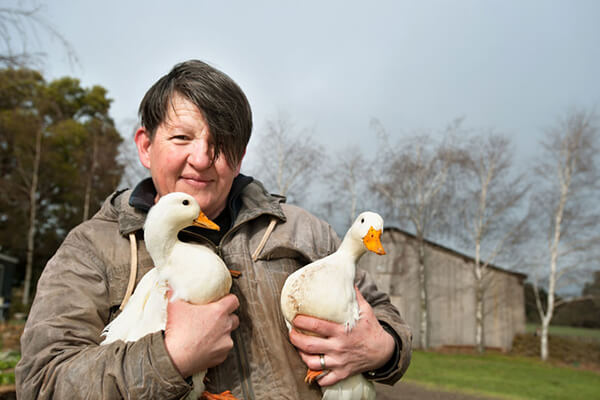
Annie Smithers is often described as a bit of a local legend in the Australian food scene. If you’ve ever wanted to experience the true meaning of farm-to-table dining, or drool at the thought of classic French farmhouse dishes, Annie’s Trentham restaurant du Fermier should be high on your bucket list.
Annie’s new book Recipe for a Kinder Life is more than just the story of du Fermier, though. Part-meditation, part-memoir, it is a generous account of life on the land and in the kitchen. At its heart, Recipe for a Kinder Life is Annie’s guide to living more gently and sustainably.
We were lucky enough to chat to Annie about her journey to owning one of the country’s most celebrated restaurants, her favourite spots to eat when she’s not at du Fermier and what she hopes readers will take away from the book.
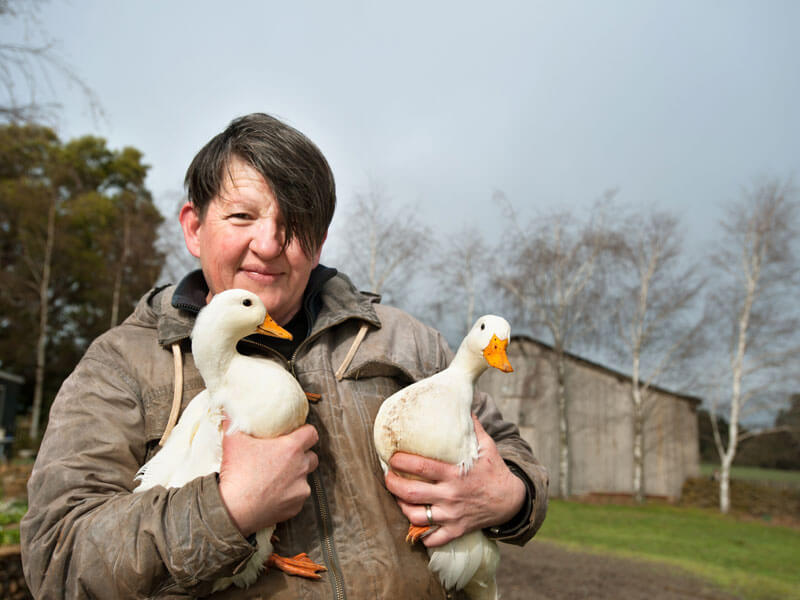
Tell us a bit about your path to becoming one of Australia’s most highly regarded chefs. At what stage in your career did you know you wanted to be running your own restaurant?
I decided late into my secondary education that I wanted to be a cook. After finishing my HSC, off I went to look for a job. After nearly forty years of cooking, I still think that I love it more each day than I did the day before, so some may say that I found my vocation. As to when I discovered I wanted to have my own restaurant, that was more a quirk of circumstance than an actual decision. But I have certainly enjoyed the last 16 years of having my own places, as it enables me to dance to the beat of my own drum.
Du Fermier is widely considered a pioneer for the Australian paddock to plate ethos. What inspired you to pursue this idea for the restaurant?
At the turn of the last century there was increasing discussion about food miles and food sovereignty. I was living on an acre of land at the time and decided that I needed to put it to constructive use and to grow fruit and vegetables for the restaurant. I have always been a believer in the concept that if each of us does what we can, no matter how small, together we can all make a difference to the future of the planet.


For those who haven’t had the privilege of visiting your restaurant du Fermier, what can they expect from the experience?
Eating at du Fermier is as close as I can get to entertaining people in my house. Our sole aim is to make each and every one of our customers feel loved and nurtured during their time with us. I cook classic French inspired country food, sometimes plated, sometimes shared, free from the embellishments of more technical and high-class restaurants.
When you’re not at du Fermier, where do you like to eat in regional Victoria?
Our favourite place to eat at the moment is at home. Getting vegan take away from the food van, Twinkletown, next to the restaurant on a Wednesday night when I go into town ‘to put the bins out’ is a delicious treat.
And when you’re in Melbourne?
The last 18 months have been very challenging for us getting to Melbourne to eat. My wife Susan and I went for our anniversary in January and had the fabulous vegan banquet at Maha, and were thoroughly spoilt by the lovely Shane Delia.
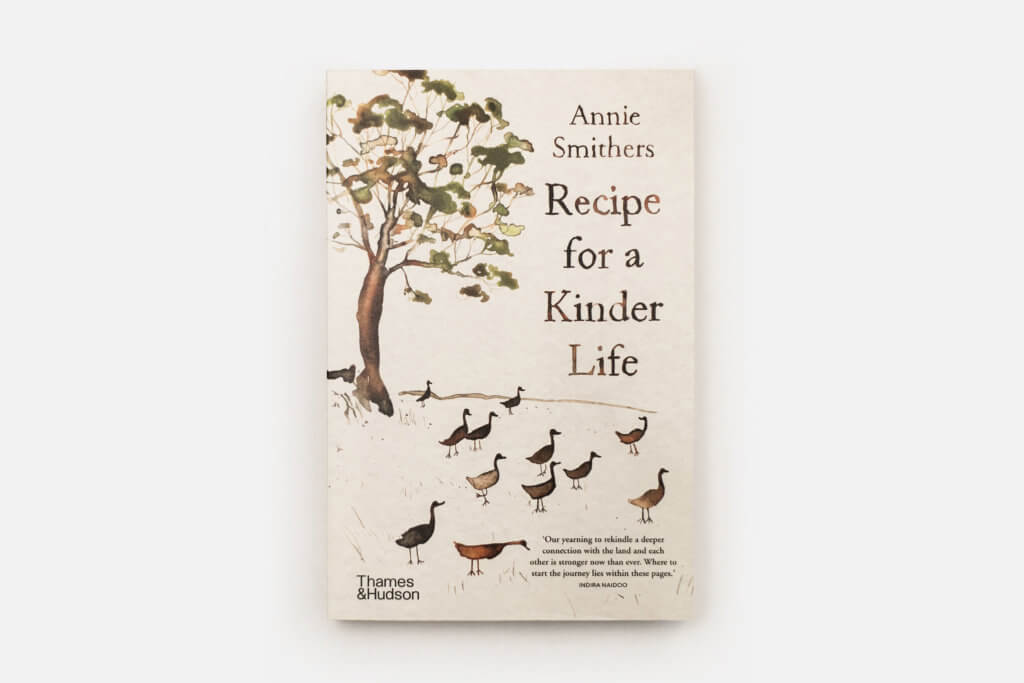
One of the major themes of Recipe for a Kinder Life is living a more sustainable existence. What does sustainability mean for you?
I believe it is essential to find the point at which you are self-sustaining in your own life before you tackle the broader questions. If you are too tired, too pushed within yourself, it is an uphill battle to make changes to your life that bode well on a broader scale.
If readers take one thing away from Recipe for a Kinder Life, what should it be?
Be kind to yourself. Believe in your dreams, work hard for them, but don’t sacrifice too much for them. Find your own limits and live with them and love them.
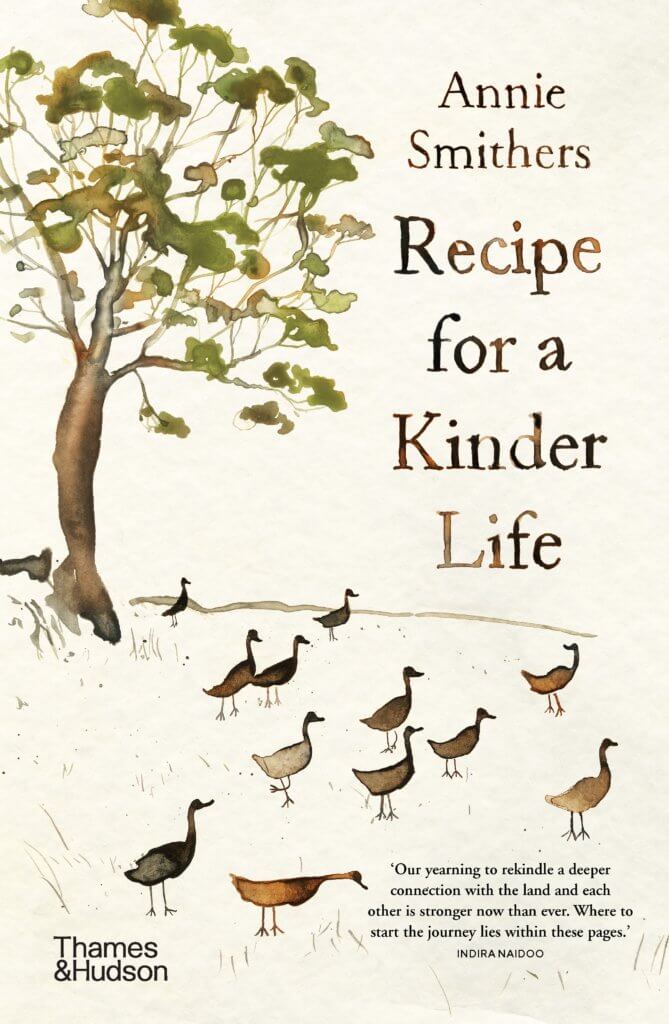
Recipe for a Kinder Life is available now. Text by Annie Smithers and cover design by Daniel New.
AU$32.99
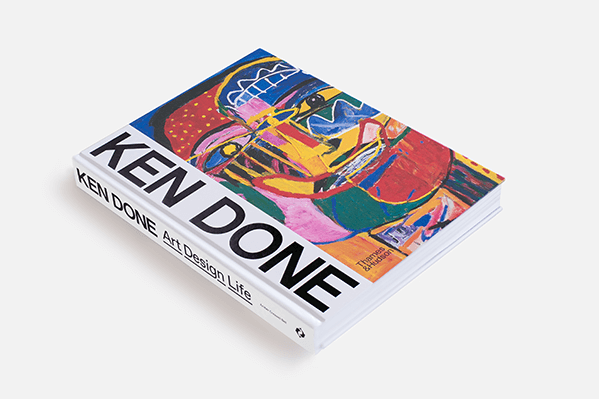
THIS COMPETITION IS NOW CLOSED
This competition is open to all active subscribers of the Thames & Hudson Australia eDM database until Tuesday 14 September 2021. Sign up to our e-newsletter here.
TERMS AND CONDITIONS: Limited Edition copy of Ken Done: Art Design Life + a Ken Done ‘Barrier Reef’ tote bag (the Competition)
These are the Terms and Conditions (Terms) of entry for the Competition, conducted by Thames & Hudson Australia Pty Ltd (Thames & Hudson Australia), whose registered office is at 11 Central Boulevard, Port Melbourne, Victoria 3027.
Please read these Terms carefully because you will be deemed to accept them if you enter the Competition.
For all questions relating to this competition, please contact Thames & Hudson Australia at: marketing@thameshudson.com.au
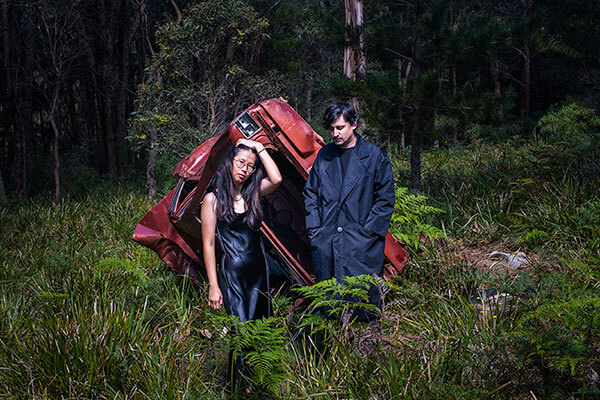
It would be an understatement to say that the travel focus for most Australians has shifted to local and interstate wonders. You might even say we’re approaching a day trip renaissance, which is why Evi O and Andrew Grune’s new project Day Trip couldn’t have come at a better time.
In case you aren’t already acquainted with this seriously innovative duo, Evi O is an award-winning book designer and self-taught artist while Andrew has worked across the globe in the fashion industry and is best known for his talents in photography and videography. They have come together through a mutual love for nature and creativity with Day Trip, a new series that is unlike any Australian travel guide you have seen before.
We wanted to celebrate the launch of the first book in the series, Day Trip Sydney: 52 Nature Adventures, by chatting to Evi and Andrew about the foundations of this project, how they selected the nature trips featured in the book, their travel tips and more.
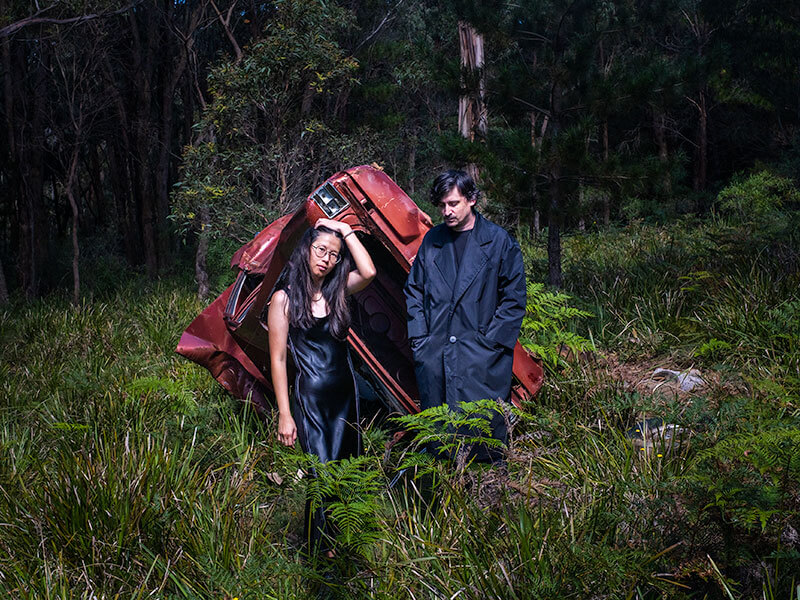
You’re quite the superstar team, having achieved countless creative endeavours independently. Do you each have a career highlight so far?
Evi: Personally, this is rather a highlight. Never in my mind did I think I would write a guide book. It is a dream doing it with Andrew, too. It’s a continuation of the cliché ‘if work is play, you never have to work in your whole life.’ Apart from this, I feel like I’m currently living a career highlight with my Evi O Studio team daily and a busy art practice. Sorry, there are a few highlights.
Andrew: I would have to agree with Evi. This is such a different project to what I normally work on and I can really see all the skills that I have developed being utilised in the project. I think that’s what makes it so interesting for myself and as a product. I think Evi and my skill set combined have hopefully created a new and exciting brand.
What brought you together as collaborators?
Evi: My cheesy answer is love, and wanting to know the other person inside, I think? But it is kind of true (for me), as we started going out during COVID. I wanted to know Andrew’s creative brain and muscle, and we did this day trip to (the then-empty) Bathurst racecourse and I felt I discovered a bit more about him, and the potential of collaborating is an organic continuation.
Andrew: Definitely love and also our spirit of adventure and spontaneity. A lot of times our day trips don’t go to plan and we end up finding something even more exciting than we intended. Not everybody can work like that!
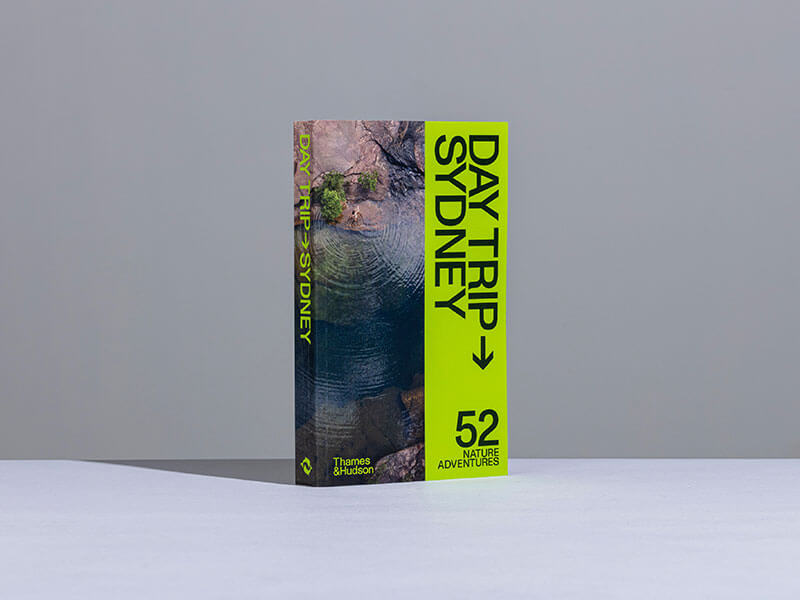
What led you both to the Day Trip project? How is it distinguished from other travel guides?
We were kind of limited to restrictions, funnily. We wanted to pitch an Australia-wide travel book, but then our publisher Paulina de Laveaux said ‘That’s impossible, why don’t you do a day trip book, you’re already doing it.’ Thanks, COVID. As to how it is different, I guess it’s a fresh rendition, and designed for today’s modern life. A snapshot of a trip and its map is compacted in one page ready to be photographed and used in your mobile pre-trip. We are also just your regular people: we don’t have 1% body fat, nor do we own hiking poles, so the level of difficulty and access within these trips is very friendly. We do love rewards, so each trip also comes with either a destination or a memorable experience.
What was the process behind selecting the nature trips featured in Day Trip Sydney? Were there any that didn’t quite make the cut but deserve an honourable mention?
We rate the rewards of each experience and basically go with our instincts, but part of this succinct curation also involves asking for tips from friends, family and strangers, just to make sure the selection is diverse. And oh yes, there are some that didn’t make the book – we will share in the next one 😉

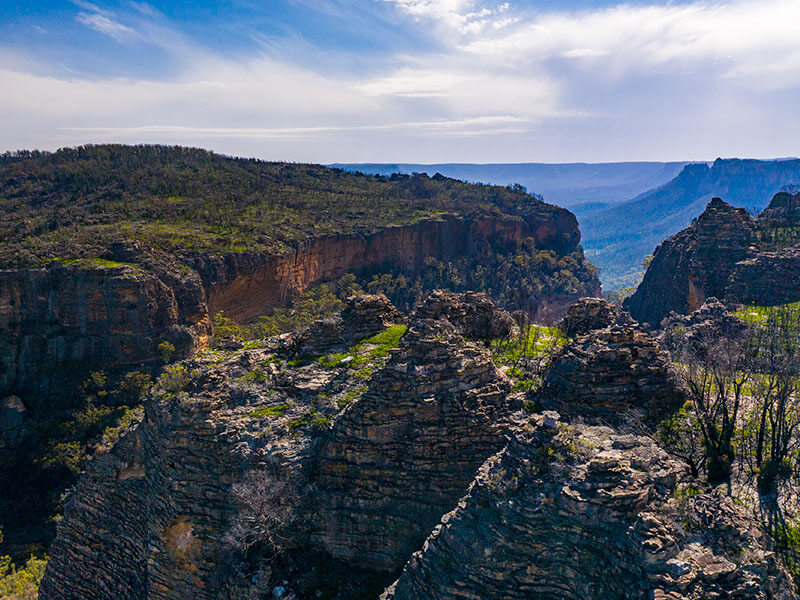
Do you have a top tip for new day trippers?
Get a good pair of shoes!
Has COVID changed your perspective on travel?
Absolutely. The adage of ‘the journey, not the destination’ is so true. And both of us have a new appreciation of this beautiful city is there. We both have lived half our lives here, and we are gladly reminded of what Sydney has to offer.
What’s next for Day Trip? Can you give us some insight into the future of the brand and series?
There will be more books. And some fun merch. We are heading to Melbourne next, and as soon as book one is launched and standing on shelves, we are going to start pursuing more creative collaborations as Day Trip. We want to express our creative drive and travel curiously through Day Trip.
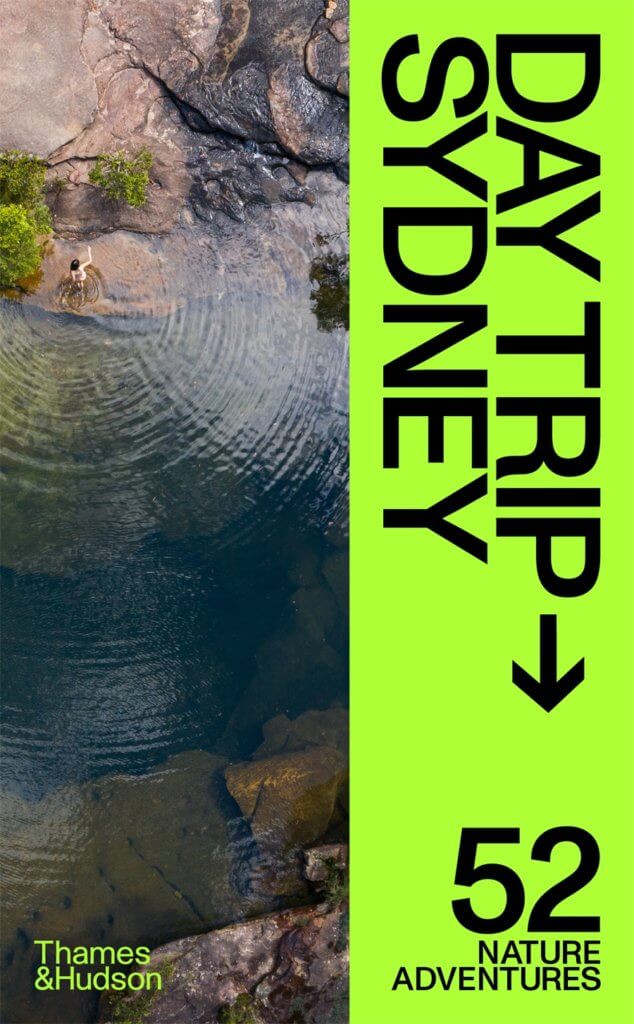
Day Trip Sydney is available now. Text, images and design by Evi O and Andrew Grune (Day Trip Publishing).
AU$34.99
You can check out Day Trip’s website here and their Instagram here.

From Evi O and Andrew Grune, Day Trip is a new series of Australian travel guides that will ignite your nomadic spirit. The first in the series, Day Trip Sydney takes you to mountains, waterfalls, swimming holes, forests, urban parks, Aboriginal cultural sites, historic architecture and more – all within 120 kilometres of Sydney’s city centre. Whether you’re a Sydney local or a first-time visitor, Day Trip Sydney is the perfect guide for escaping the urban chaos.
Curious? Get a feel for this innovative guide with Day Trip’s launch video below.
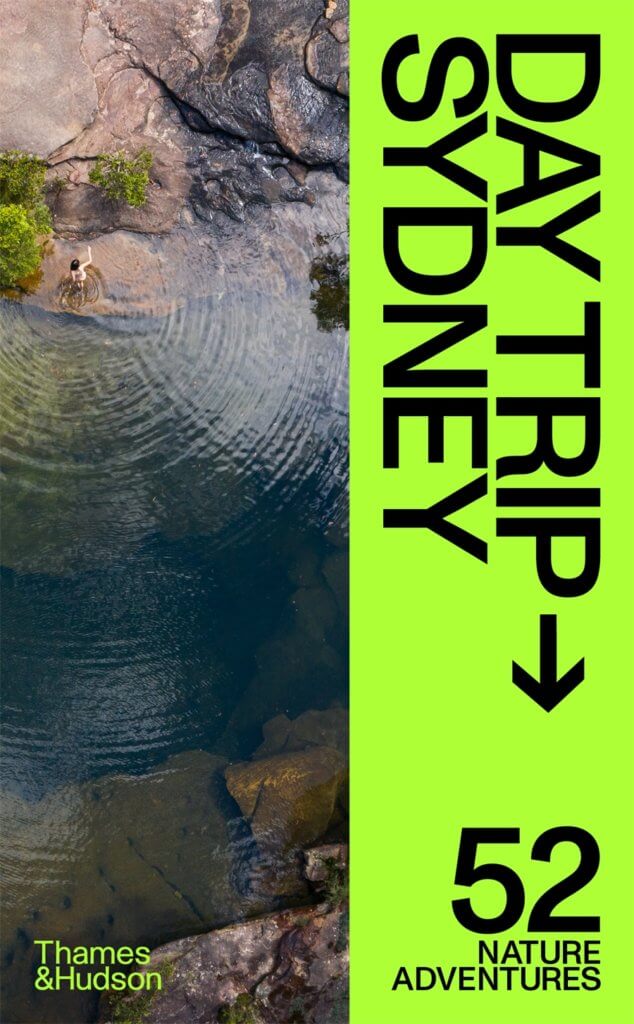
Day Trip Sydney is available now. Text, images and design by Evi O and Andrew Grune (Day Trip Publishing).
AU$34.99
You can check out Day Trip’s website here and their Instagram here.
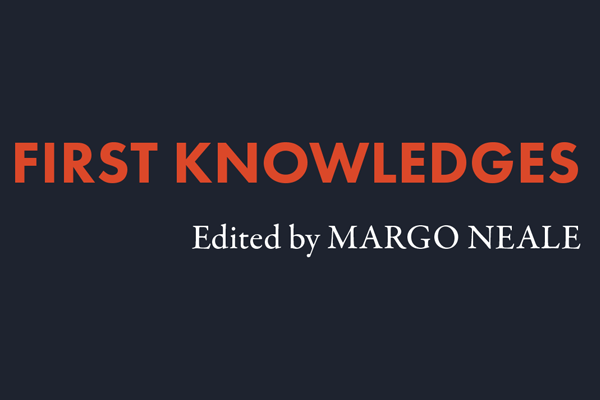
‘Let this series begin the discussion.’ – Bruce Pascoe
The First Knowledges series offers an introduction to Indigenous knowledges in vital areas and their application to the present day and the future. Exploring practices such as architecture and design, land management, medicine, astronomy and innovation, this six-book series brings together two very different ways of understanding the natural world: one ancient, the other modern.
Each book is a collaboration between Indigenous and non-Indigenous writers and editors. The series is edited by Margo Neale, senior Indigenous curator at the National Museum of Australia.
‘An act of intellectual reconciliation.’ – Lynette Russell
By Margo Neale and Lynne Kelly
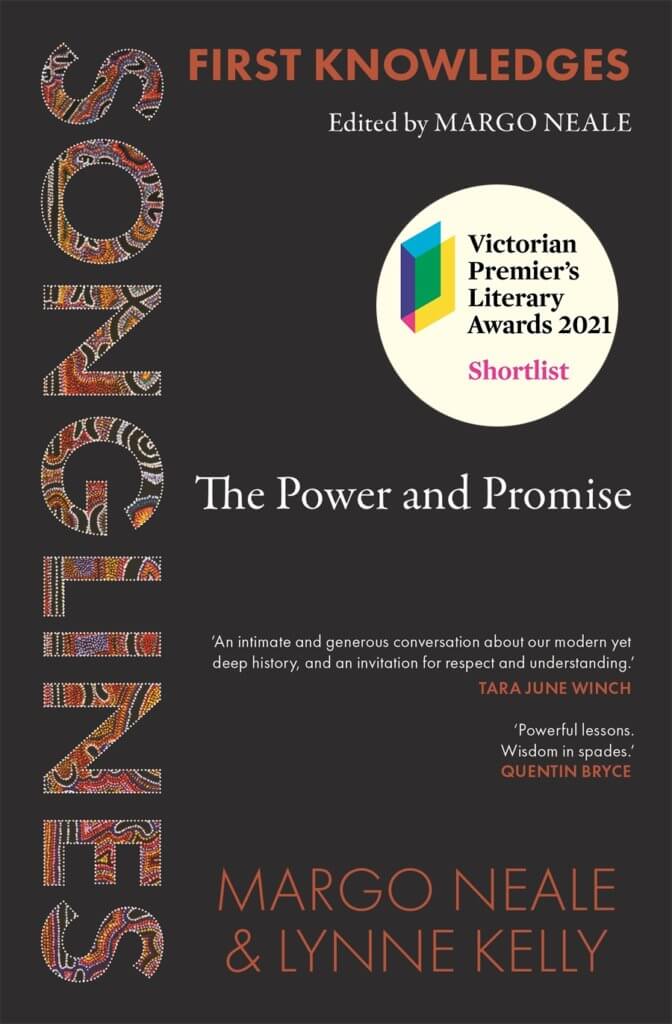
Weaving deeply personal storytelling with extensive research on mnemonics, this book offers unique insights into Indigenous traditional knowledges, how they apply today and how they could help all peoples thrive into the future.
Available now.
By Alison Page and Paul Memmott
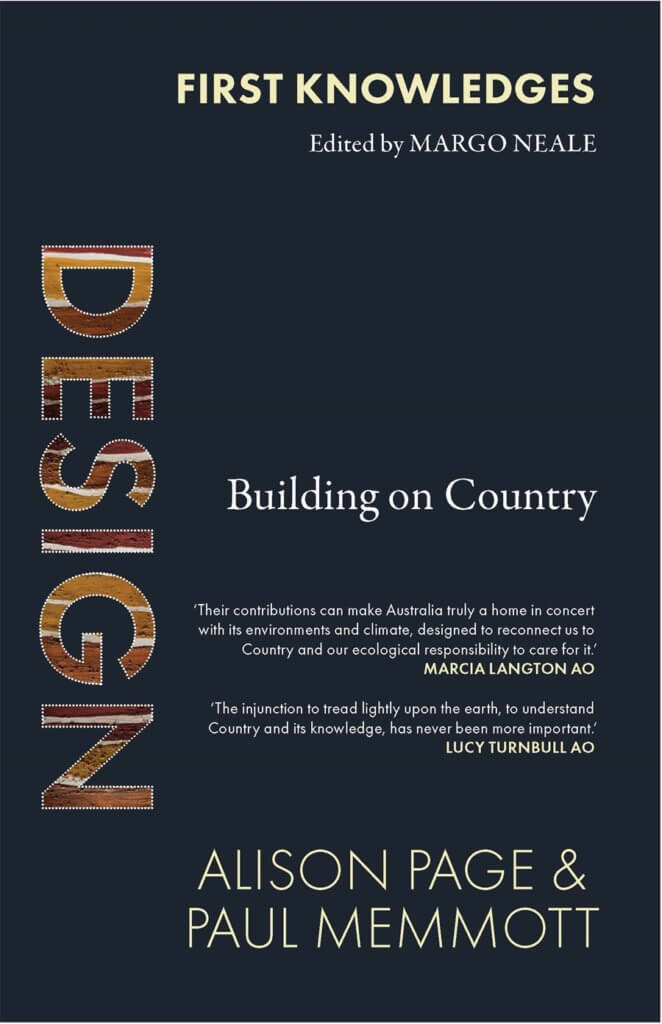
Aboriginal design is of a distinctly cultural nature, based in the Dreaming and in ancient practices grounded in Country.
This book issues a challenge for a new Australian design ethos, one that truly responds to the essence of Country and its people.
Available now.
By Bill Gammage and Bruce Pascoe
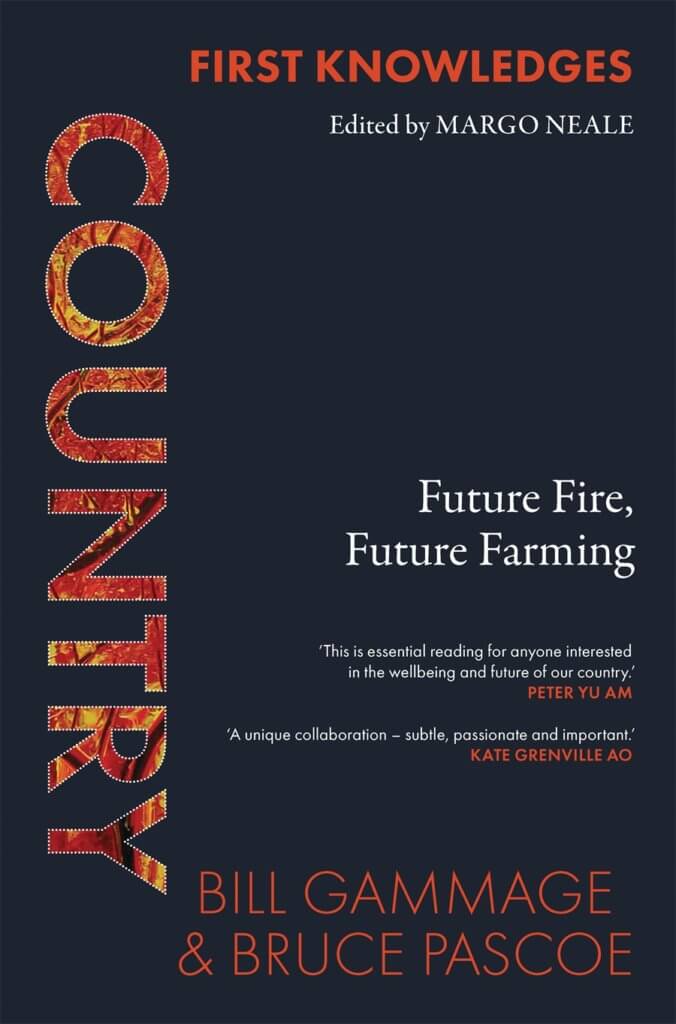
For millennia, Indigenous Australians harvested this continent in ways that can offer contemporary environmental and economic solutions.
This book highlights the consequences of ignoring our history and details the remarkable agricultural and land-care techniques of First Nations peoples.
Available now.
By Karlie Noon and Krystal De Napoli
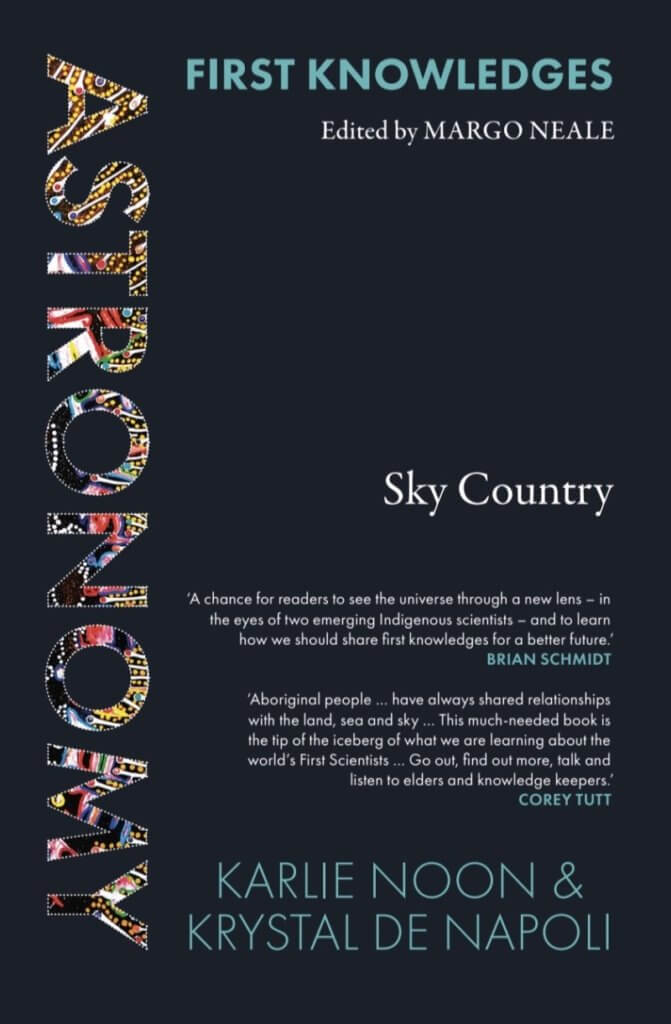
Aboriginal and Torres Strait Islander people are the oldest scientists in human history.
Explore the connections between Aboriginal environmental and cultural practices and the behaviour of the stars, and consider what must be done to sustain our dark skies, and the information they hold, into the future.
Available now.
By Zena Cumpston, Michael-Shawn Fletcher and Lesley Head
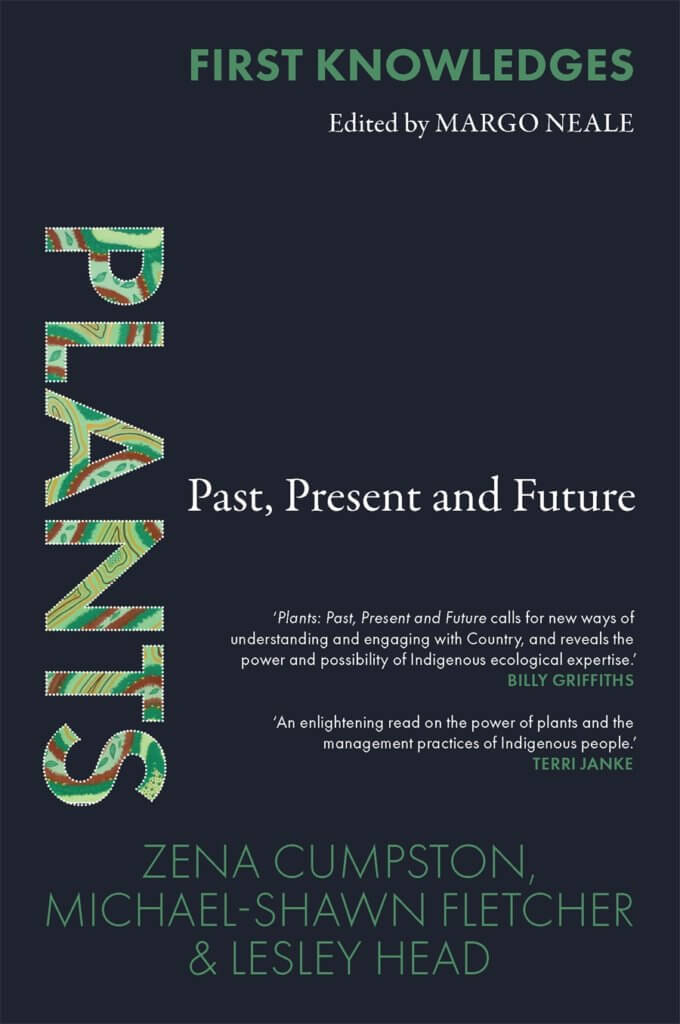
Plants are the foundation of life on Earth.
Plants: Past, Present and Future celebrates the deep cultural significance of plants to Aboriginal and Torres Strait Islander peoples and shows how engaging with this heritage could be the key to a healthier, more sustainable future.
Available now.
Law by Marcia Langton & Aaron Corn (2023)
Innovation (2023)
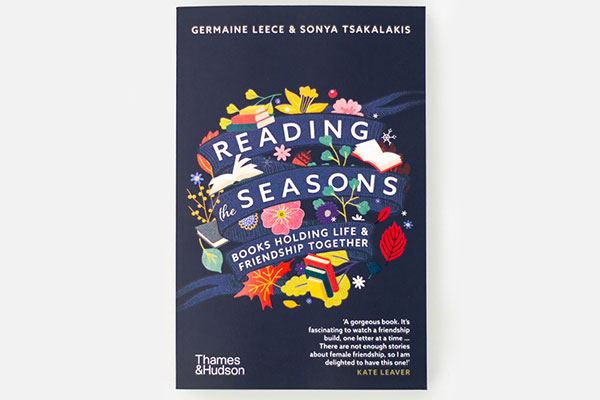
Reading the Seasons is a book for our times, showing how literature connects us to ourselves and others. Get of taste of the genuine friendship between the authors, Germaine Leece and Sonya Tsakalakis in this extract from the book.
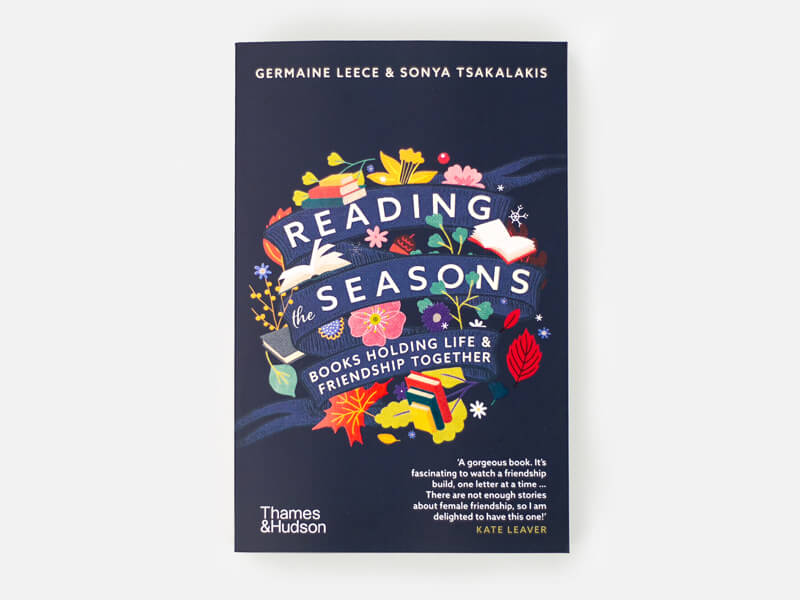
My life is like the autumn leaf
That trembles in the moon’s pale ray;
Its hold is frail – its date is brief,
Restless, – and soon to pass away!
From ‘My Life is like the Summer Rose’ by Richard Henry Wilde [1]
Hello, Germaine, on the first day of autumn – and it’s 38 deg!
Here are a few lines that I read today. I like to start the day with glittering language and thoughts. And I read them aloud, much to my children’s chagrin. One day they’ll look back fondly?!
Love Sonya
Dear S
Such beautiful lines, thank you. I must say, our friendship has given me much more understanding about the power and importance of poetry in daily life. It also reminds me of an eighty-something male bibliotherapy client I saw last week. You would have loved him.
His father recited poetry to him throughout his childhood, and in the past couple of years he decided he wasn’t reading enough poetry so he started a group. Wine and cheese accompany the monthly poetic conversation on the beach. He was such a character, saw the books on his bookshelves as his lifelong friends and used words such as ‘charm-struck’. I didn’t want the session to end, I was so charm-struck myself.
While talking about his ‘friends on the bookshelf ’, he reflected that he hadn’t read enough female authors in his lifetime and wanted to rectify that. (I imagine you are swooning now!) I decided to give him a prescription filled with female authors that illuminated his different chapters to help give a fuller shape to his own story. I couldn’t resist starting with Jeanette Winterson’s memoir Why Be Happy when You Could Be Normal?, as we have discussed before, required reading for any book lover! He told me that as a teen he put his trust into books rather than people to make sense of the world, and that brought to my mind Winterson writing about ‘[falling] into books … I put myself inside them for safe keeping’. While my client and Jeanette have nothing else in common about their families or their lives, I hope the image of two teenagers on different sides of the world in different decades finding comfort and anchoring inside the pages of books creates a nostalgic reading experience for him.
I ended with a bit of fun. He is a fan of Wodehouse, so I thought I would aim for a similar era and comedy-of-manners style … I chose EM Delafield’s Diary of a Provincial Lady, as she always makes me laugh and I love the sharp, observational gaze she puts on the upper class living in Devonshire between the wars. I think I read somewhere that it was semi-autobiographical and that she wrote the diaries as a ‘gentle joke’, but at the same time she manages to shine a feminist light on the domestic sphere of English country life. Her husband is always reading the Times newspaper and going to sleep, and she spends much of her time ‘sacrificing truth to demands of civilisation’! I’m not sure he will relate as well to Delafield’s character who, when she feels ‘that life is wholly unendurable’ decides ‘madly to get a new hat’, but I hope he will savour the wit and irony of the writing.
He reminded me how much I enjoy sessions with older clients who choose to use the time to reflect on their reading lives and map how it has changed over the decades. There’s something about witnessing someone’s backstory that creates the same wonder within me as words between covers. I remember another client who, in her seventies, told me our session had helped her understand that by recollecting the different books she had read throughout her life, she could trace her evolution of self. She added that having this quiet time and being asked questions about the ways reading had affected her life had allowed this realisation to occur. I found that particularly powerful. The importance of time to reflect. How do you enjoy working with older clients?
I had better leave it here, as your autumn poem reminds me, the day is soon to pass away and dinner needs preparing.
G x
Dear G
I have to tell you, I read that letter a few times. Not just because I was thrilled by ‘charm-struck’, but also to bask in a cascade of my reflections on working with older clients. In an oblique way. My bibliotherapy career began in aged care, where I ran communal reading circles. Within these milieus, poems and short stories were read aloud, creating a container for the sharing of reflections, memories and personal stories evoked by the words on the page. A fifteen-minute short story can be stretched out to an hour. On one occasion, we were reading Gogol’s eccentric gem, ‘The Nose’.
Actually, it’s positively absurd! How else would you describe a story where the protagonist finds his nose in a loaf of bread that later parades haughtily on the streets of St Petersburg? And to make matters more intriguing, it features a snuffbox. Suddenly, the normally reticent Edna recalled her child-hood fascination for her grandmother’s rosewood snuffbox, which sat on the mantelpiece. And from there she launched into vivid memories of her grandmother, concluding at the end that she had completely forgotten about that snuffbox, ‘hadn’t thought about it for decades’. That is what I love about reading aloud, the vivifying of the text. The original story or poem serves as a launching pad for other stories, contained within, awaiting to be heard and enjoyed. Aspects of the self embedded deep within seem to be awakened. Especially wonderful are older folks’ stories, an homage to Judith Wright – again!
Seventy years of stories he clutches round his bones.
Seventy years are hived in him like old honey … [2]
Stories are as precious and coveted as old honey. During that session there was a lot of animated banter about childhood fascinations … places, things, that held a special allure which would probably be overlooked by the eyes of a grown-up. Wishing to continue on that theme, I chose the unique persiflage of Saki’s The Lumber Room for the following week. It’s a hilarious story about a mischievous little boy who, with inventive flair, gets into the room from which he is banned by his austere aunt, and finds it filled with wondrous curiosities. You can’t help but come away thinking that whatever punishment, which no doubt will be dished out to him afterwards, would be worth it. Absolutely worth it! Suddenly there were recollections of places where kids were forbidden because it was the ‘good room’.
And even more interestingly, the places where children were allowed; spending hours outside till you were called in for dinner, being part of the ‘street tribe’ or roaming to nearby paddocks and creeks. One reader who grew up on a farm lovingly recalled waking up at six every morning to milk the cows, and riding her pony to school with her siblings. And refashioning the silk saved from the parachutes used in the war to make bloomers. I know – there is upcycling for you! She believed she had a beautiful childhood, there were always people around, places to discover.
So, when you talked of the importance of time to reflect
when older, it also gives those of subsequent generations a space to revel in
stories of times past. A type of validation for a life lived that may otherwise
be forgotten. S x
References
[1] Richard Henry Wilde extract from ‘My Life is like the Summer Rose’, in A Library of American Literature, Volume: Literature of the Republic, Part II, 1821–1834, eds Edmund Clarence Stedman and Ellen Mackay Hutchinson (New York: CL Webster, 1891)
[2] ‘Judith Wright extract from ‘South of My Days’, in Collected Poems (Sydney: HarperCollins, 1994)
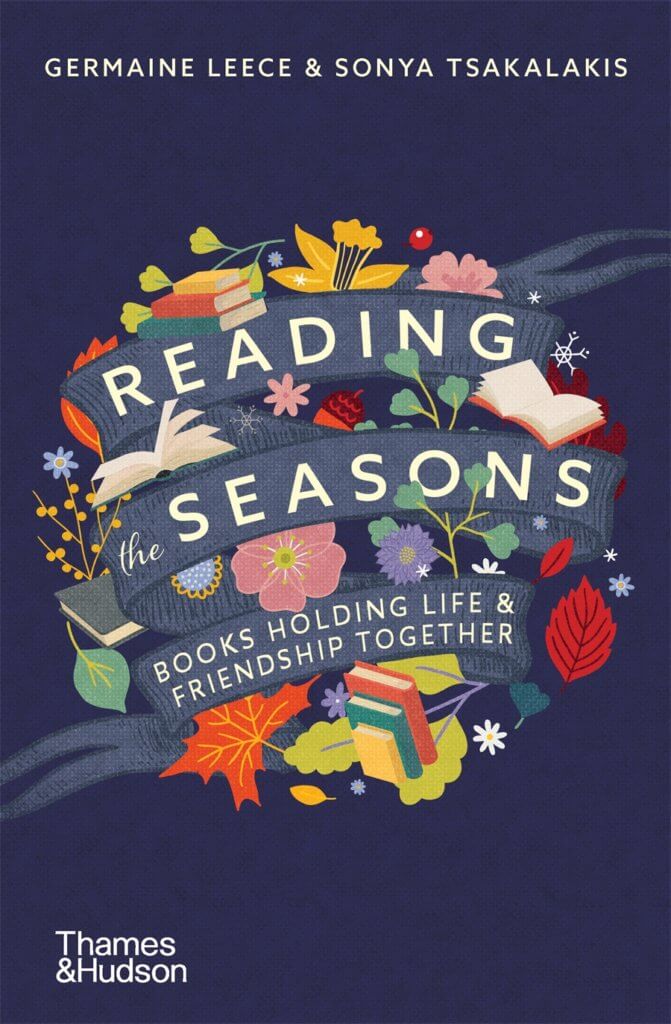
This is an extract from Reading the Seasons: Books Holding Life & Friendship Together, available now. Text by Germaine Leece and Sonya Tsakalakis and cover design by Nada Backovic.
AU$32.99


We pride ourselves on being Australia’s home for illustrated books. That’s why we’re so excited about the latest addition to our family of distributed publishers: TASCHEN.
This German-born, globally-loved publishing house is destined for the reader who dreams of building their coffee table book collection. Their selection of art books span from informative introductions to special editions championing the likes of Ai Weiwei and Gustav Klimt, while their impressive selection of architecture and design books will take you on a tour of some of the world’s finest homes and remarkable landmarks. You will also find bestselling tomes and short-form histories on your favourite figures and moments in fashion, film, music and pop culture, as well as photography and travel titles to inspire.
Above all, TASCHEN’s publishing is synonymous with quality and individuality. Their books are timeless sources of pleasure and learning, and you’ll be carrying them around from home to home. We’ve rounded up a few of our favourite titles from TASCHEN to help you start building your collection.
The Star Wars Archives. 1999-2005
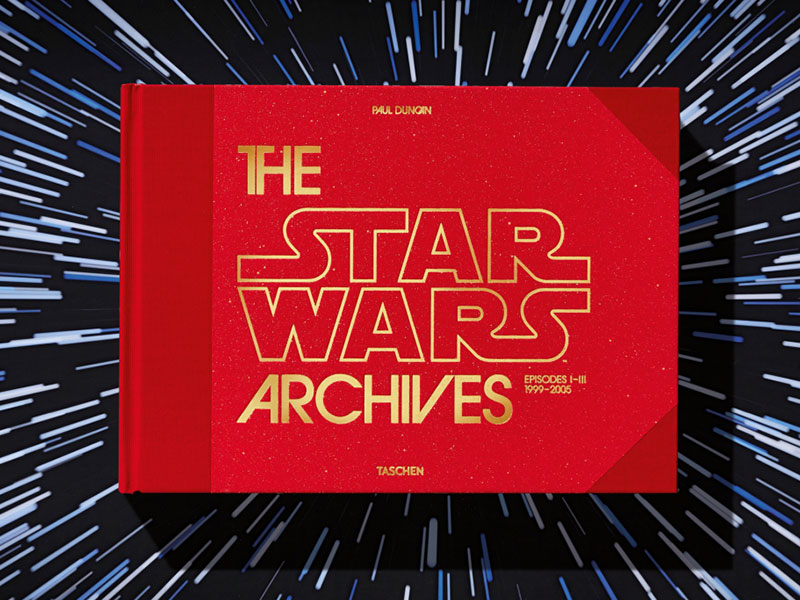
Made with the full cooperation of George Lucas and Lucasfilm, this second volume covers the making of the prequel trilogy and features exclusive interviews with Lucas and his collaborators.
AU$350.00
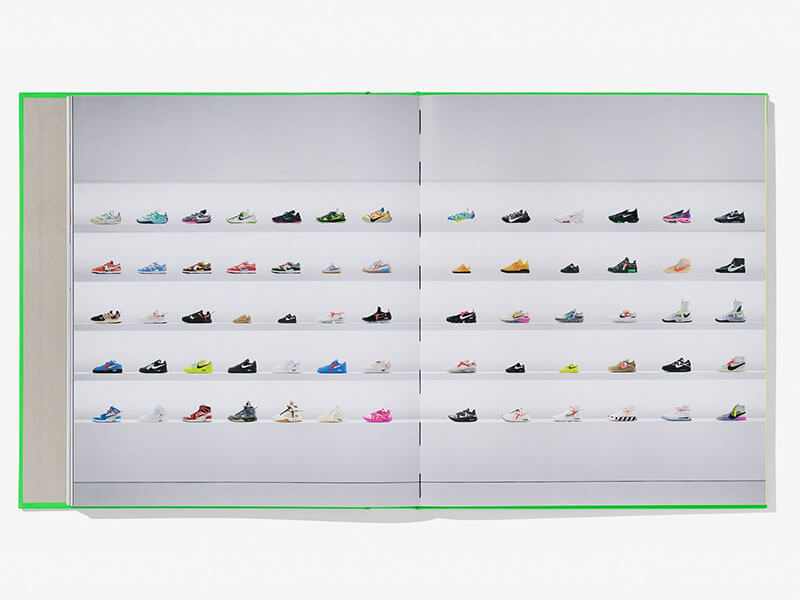
In 2016, Nike and fashion designer Virgil Abloh joined forces to create a sneaker collection celebrating 10 of the company’s most iconic shoes. Go behind the scenes of the project in this powerful book.
AU$150.00
Tarot. The Library of Esoterica
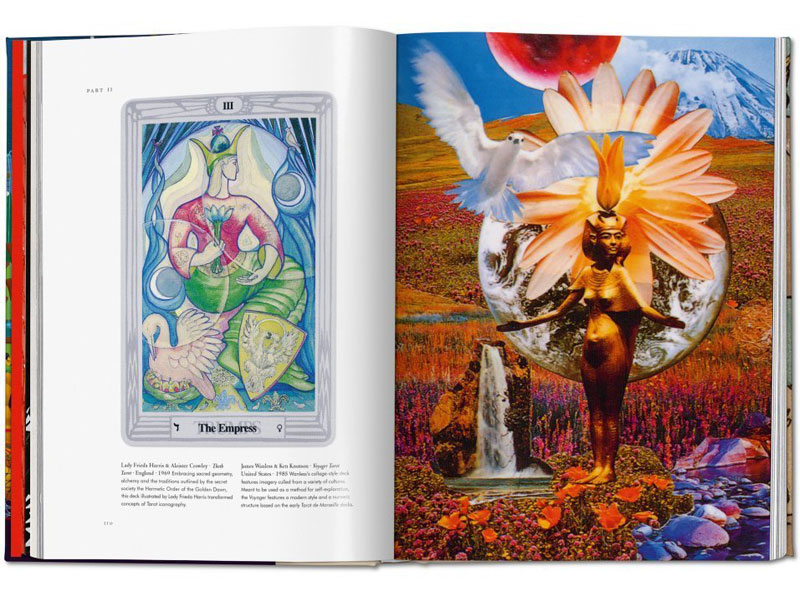
Spanning from Medieval to modern, this book explores the influence of Tarot on artists like Salvador Dalí and Niki de Saint Phalle.
AU$75.00
Annie Leibovitz: The Early Years, 1970-1983

For more than half a century, Annie Leibovitz has been taking culture-defining photographs and imprinting on our collective consciousness. Here we return to her origins.
AU$90.00

The opulent dinner parties thrown by Salvador Dalí and his wife and muse, Gala, were the stuff of legend. This reprint of Dalí’s 1973 cookbook reveals some of the sensual, imaginative and exotic elements that made up their notorious gatherings.
AU$125.00

Jungalow: Decorate Wild is artist, designer and author Justina Blakeney’s ultimate guide to designing wildly creative interiors. Filled with all of Justina’s tips and tricks, the book will show you how to make bold choices with color and pattern, how to take cues from nature, how to authentically glean inspiration from their heritage and travels, how to break rules, and all the other paths to truly begin to decorate wild. In this extract, go outside your comfort zone and learn how to mix patterns at home.
MIXING PATTERNS
Patterns often present a complex mix of color, texture, scale, and motif that might seem difficult to harmonize with the rest of the décor elements in a space. Patterns compete for attention; will they drown out the more mild-mannered pieces in a room? You might love a wallpaper with a bold pattern, for example, but what if it doesn’t work with your furniture or drapes? Maybe just painting the walls is the safer choice. Don’t go out like that! Mixing patterns isn’t as hard as you think.

Three very different bold patterns work together in this reading nook because they share the same black and tan color palette. Meanwhile, blocks of solid yellow create contrast and provide breathing room.

In my vanity area at home, I mix very different patterns together. It works because the airy gold-andivory wallpaper provides breathing room while the bold blue stool acts as a wild card.

Different patterns don’t have to look alike to look good together, as long as they echo each other in some respect. Here, four contrasting patterns are harmonized by a shared color palette or graphic elements. The colors of the
velvet chair’s zigzags reflect both the warm earth tones of the rug as well as the cool teal of the botanical wallpaper. The doors are harmonized with the chair not by color, but by their shared chevron pattern. When patterns are wildly different from each other, they don’t compete and you can use an overarching color story to make them work together.

Patterns with similar color palettes echo one another and can be combined
easily, without fear of the results looking over the top. In this bedroom, a patterned dresser, rug, and planter are unified by an analogous color story.
Nearly every element in this bedroom has a pattern. The graphic rattan headboard and the colorful quilt are large patterns with contrasting colors that pop against the small patterns that read as solids, such as the subtle stripes in the wallpaper and bedding.

Jungalow: Decorate Wild is available now. Text by Justina Blakeney and principal photography by Dabito. Originally published by Abrams Books.
AU$59.99
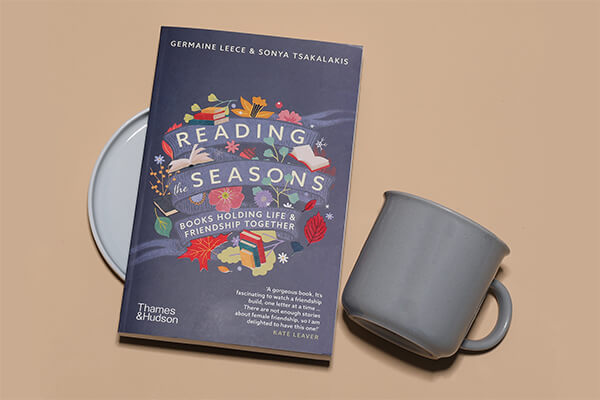
Reading The Seasons is a must-read for book clubs and book lovers alike, offering a wealth of recommendations for new titles, while delighting in the power of reading itself.
<break>
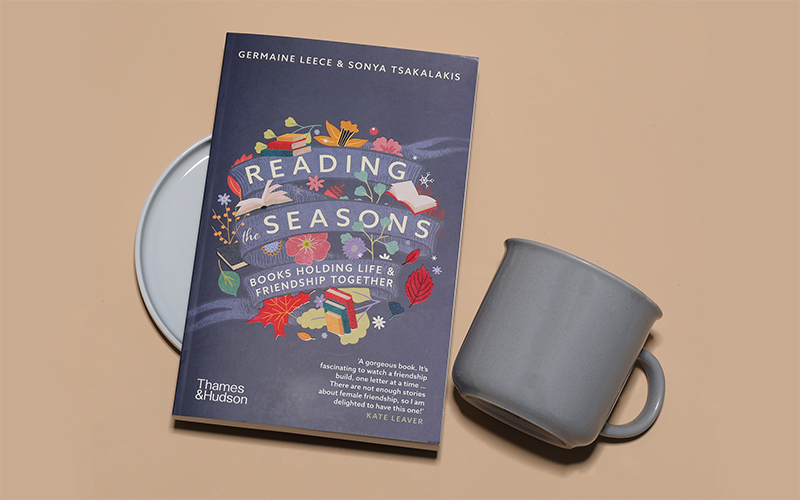
<break>
1. For a time, reading became Germaine’s Achilles’ heel, a way to stay an observer rather than experiencing life, while Sonya describes books as enabling her to weather the vagaries of existence. Do either of these reflections resonate with your own experience? How would you describe your own history in relationship to books?
2. Books and reading created the foundation of a friendship and added an extra depth of intimacy for Germaine and Sonya. Have books offered the start of a friendship for you or created a deeper intimacy with friends?
3. Do you believe in reading lists and the idea of there being books you ‘should’ read?
4. Sonya saw a client who likened keeping a notebook about his reading experience akin to writing in a journal after making love to a woman. Germaine, in turn, saw a client who believed that her reading notebooks, containing quotes and impressions of books she had read, were more personal and showed more of her inner world than a diary. What are your thoughts on the private depths that reading can reveal within us?
5. Germaine had a client who was looking for memoirs and fiction that could act as a guide or friend when navigating the next stage in their life. Have you turned to stories as mentors on your own life journey?
6. Sonya is a poetry lover, feeling that poems access a depth in her that she believes cannot be reached otherwise. Germaine responded that Freud once wrote that wherever he went, he discovered a poet had been there before. What do you think about the power of poetry to reach the depths of the psyche, and how do you think that is possible in so few words?
7. How do you feel about so-called ‘summer reads’? Is summer a time of year when reading becomes more important to you? If so, what kind of reading do you find yourself drawn to?
8. Germaine and Sonya write about the emotional experiences they were trying to understand through their reading during adolescence. What books, if any, helped you understand this confusing time of life?
9. Hilary Mantel, in a Guardian article written in memory of English author Elizabeth Jane Howard, noted how undervalued British female writers were in the 20th century. She included authors such as Anita Brookner, Barbara Pym and Elizabeth Taylor in that category. Do you agree? Have you read any of these authors’ works and if so, why do you think they didn’t receive the recognition enjoyed by male authors of that era?
10. Both Sonya and Germaine found wisdom and comfort in the following quote from Dante’s Inferno: ‘At the midpoint of the path of life / I found / Myself lost in a wood so dark, the way / Ahead was blotted out’. Are there any specific literary quotes that have helped you navigate your way through a difficult time in your life?
11. Author Javier Marías once said that the need to read is a ‘need for recognition rather than cognition’. Is reading to be reassured that you aren’t alone something that resonates with you?
12. After children’s writer Judith Kerr’s death, Germaine and Sonya were reminded of the nostalgia of reading to small children and the emotion that stirred up. Are there any children’s books that make you nostalgic for a time or place?
13. When Sonya finishes a book she loves, she goes through a grieving period and must step back from reading for a moment, while a friend of hers goes straight to the bookshelf for the next one. Germaine may go to a different genre as a break. Do you ritualise the end of a book? And if so, how?
14. Robertson Davies believes that ‘a truly great book should be read in youth, again in maturity and once more in old age, as a fine building should be seen by morning light, at noon and by moonlight’. This speaks to Heraclitus’ assertion that ‘you never step into the same river twice’ – each reading will be a new experience, as you are a different person each time. What are your thoughts on this? Do you reread books? If you do, is it to learn something new or revisit a past moment?
15. Later in the book, Sonya ventures onto Tinder and includes a photo of her standing in front of her bookshelf. Germaine mentions she feels she could be friends with the owners of an Airbnb she’s staying in, based on their bookshelves. Have you ever formed an opinion of someone after seeing what’s on their bookshelves?
16. Sonya comments in one of her letters that she always feels like sharing a glass of something celebratory when she writes to Germaine to talk about books. The two share gin, champagne, wine, tea and coffee throughout their seasons. What’s your favourite tipple when talking to friends about books?
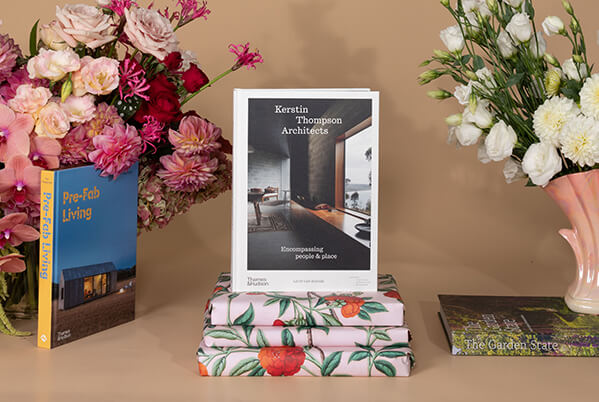
Working in a creative industry, it’s important to all of us at Thames & Hudson Australia to cherish local experts, creatives, businesses and communities. This year, our marketing team made a conscious decision to incorporate more homegrown talent into our campaigns. We celebrate books from all over the world and bring them to an Australian audience, while championing some local legends who make working in this creative space such a dream.
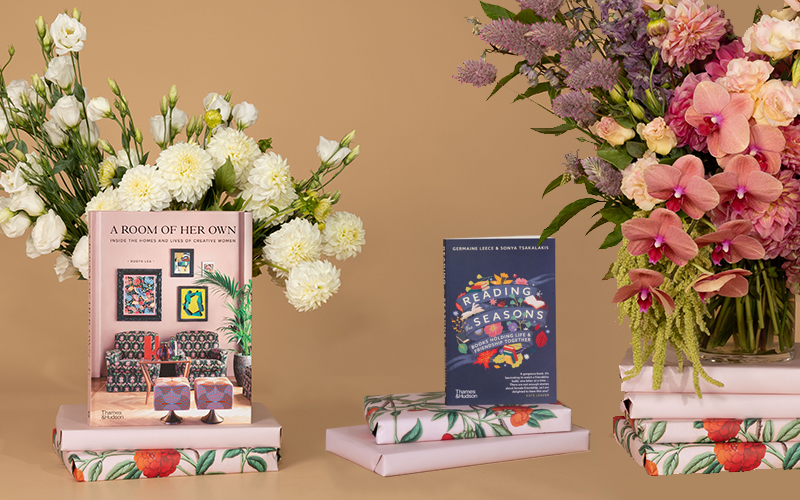
With this in mind, we began planning our Mother’s Day campaign with the vision of purchasing materials for our photoshoot from local suppliers, who complimented our floral theme and simple promotional message:
<break>
Our first port of call was Melbourne-based florist Ivy & Eve, who kindly made the gorgeous floral arrangements for our shoot, perfectly matching our colour direction and requirements. We were also able to create a gift-pack using their lovely wares which were suitable for national delivery, meaning everyone based in Australia can enter our Mother’s Day competition here.
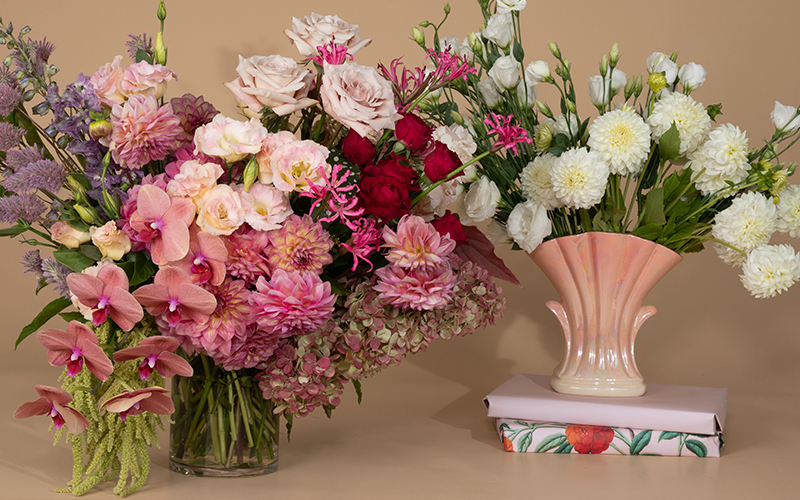
<break>
A floral theme lends itself to vases, and for this we enlisted the help of family-owned vintage and second-hand suppliers, R.R Home. Not only do they source and sell beautiful wares, but buying pre-loved pieces also reduces environmental impact and is an important mission we are mindful of in everything we do.
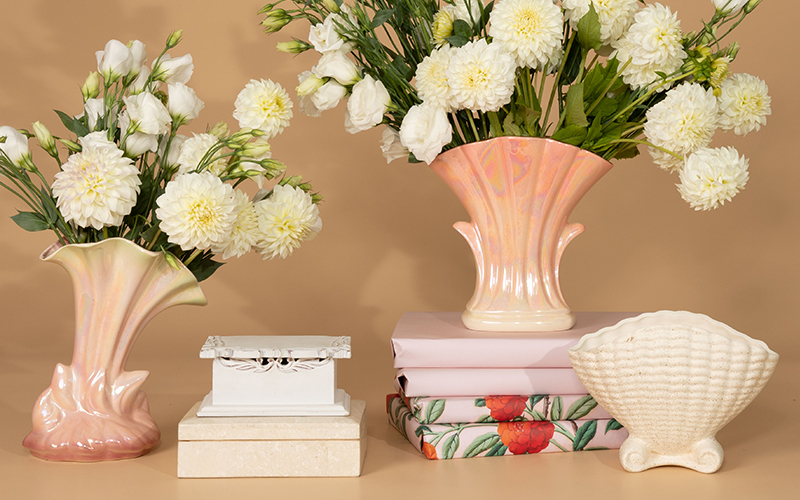
<break>
It was by sheer chance that we stumbled upon the work of ceramicist and school-teacher Kya Bianté, just in time to make a purchase from her first-ever sale. We fell in love with the hand-shaped vase she created and knew it was a perfect addition to our shoot. Her Etsy store is brimming with more beautiful pieces here.
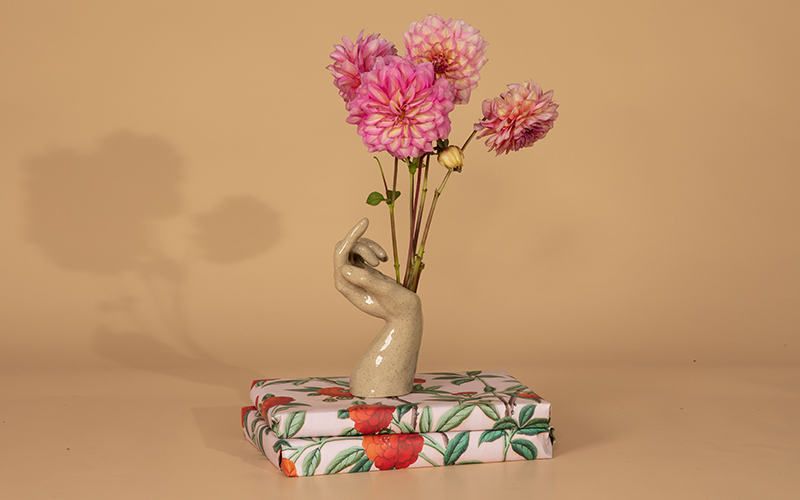
<break>
We thank our whole community for helping us bring our Mother’s Day campaign to life, from our creative colleagues to our talented authors and the brilliant local creatives featured in this piece. Learn more about the titles in our Mother’s Day campaign here.
Follow us online to be the first to know about our next creative adventure at the links below.
Sign up to our e-newsletter here.
Follow us on Instagram here.
Join us on Facebook here.
Tweet us on Twitter here.
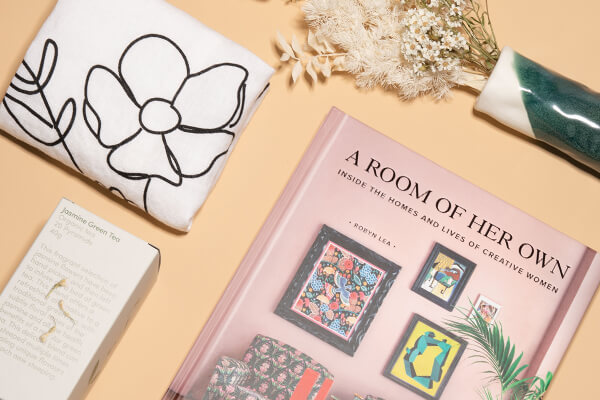
This competition is now closed, but there’s still time to shop our Mother’s Day gift selections! Explore the range here.
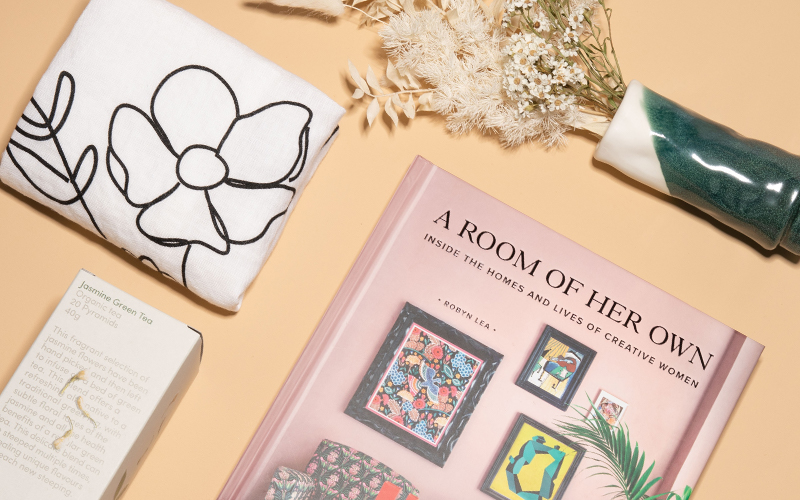
<break>
The winners have been contacted. Winners will need to respond by Monday 26 April to ensure prize delivery before Mother’s Day on Sunday 9 May 2021.
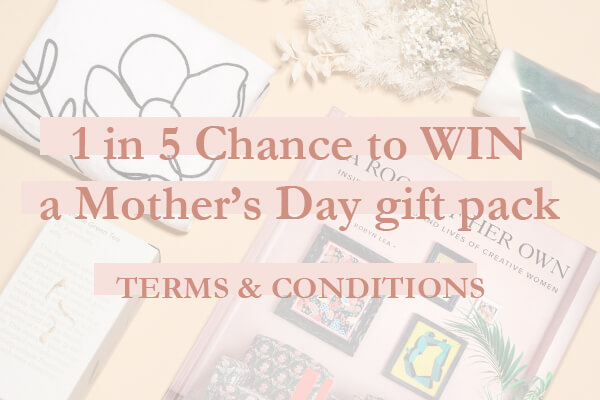
This competition is now closed and the winners have been contacted.
TERMS AND CONDITIONS: 1 in 5 chance to WIN a Mother’s Day Gift Pack (the Competition)
These are the Terms and Conditions (Terms) of entry for the Competition, conducted by Thames & Hudson Australia Pty Ltd (Thames & Hudson Australia), whose registered office is at 11 Central Boulevard, Port Melbourne, Victoria 3027.
Please read these Terms carefully because you will be deemed to accept them if you enter the Competition.
For all questions relating to this competition, please contact Thames & Hudson Australia at: enquiries@thameshudson.com.au
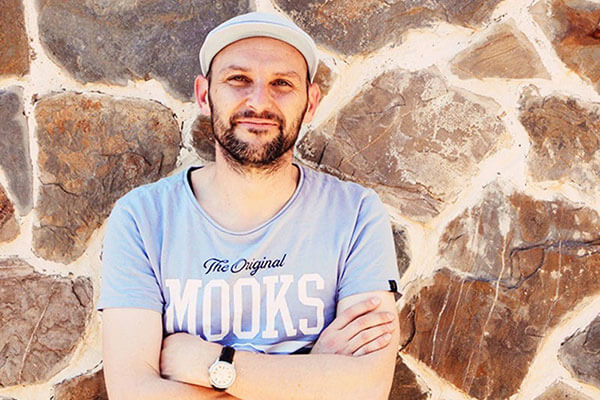
Bad Apple is the first in a new series of picture books starring a truly terrible piece of fruit that shows readers what he’s really made of. We were lucky enough to chat with the book’s Australian-based illustrator, Ben Sanders, about his rewarding career, illustrative style, working with author Huw Lewis Jones and more.
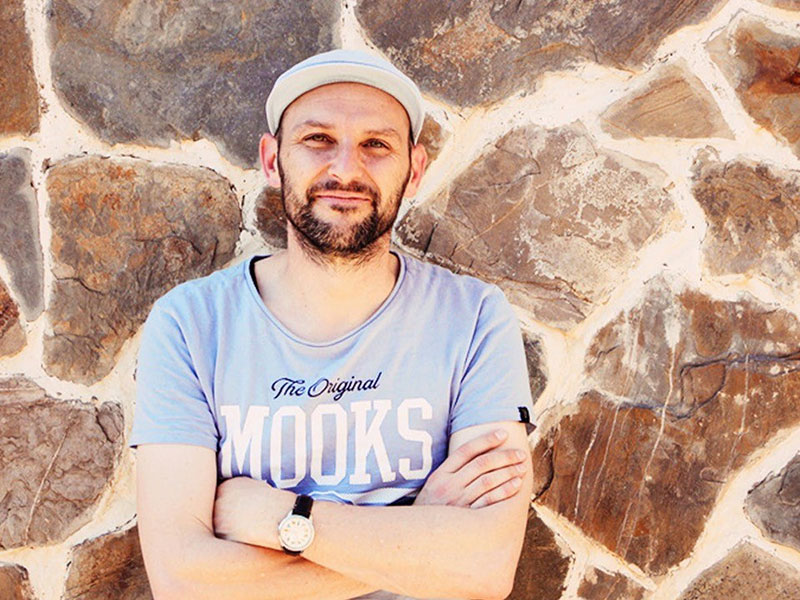
Tell us a bit about your path to becoming an award-winning illustrator. Were you always interested in art and illustration?
I was actually interested very early on. I got a proper architect’s drawing board for my 14th birthday. Sometimes, when my parents went to bed, I’d get up and secretly draw on my board well into the night. I was already a freelance illustrator by that stage, as I had a paying client by the time I was 11 years old. I was drawing little watercolour characters that were made into stickers, notepads and what-not. I enjoyed it enough to pursue a creative career after I left school.
How would you describe your illustrative style?
Mid-century modern with a zesty twist of lemon. I say that because I used to use a muted colour scheme. Now I’m embracing a zingy-er colour palette mixed with a 1950s and 60s aesthetic.
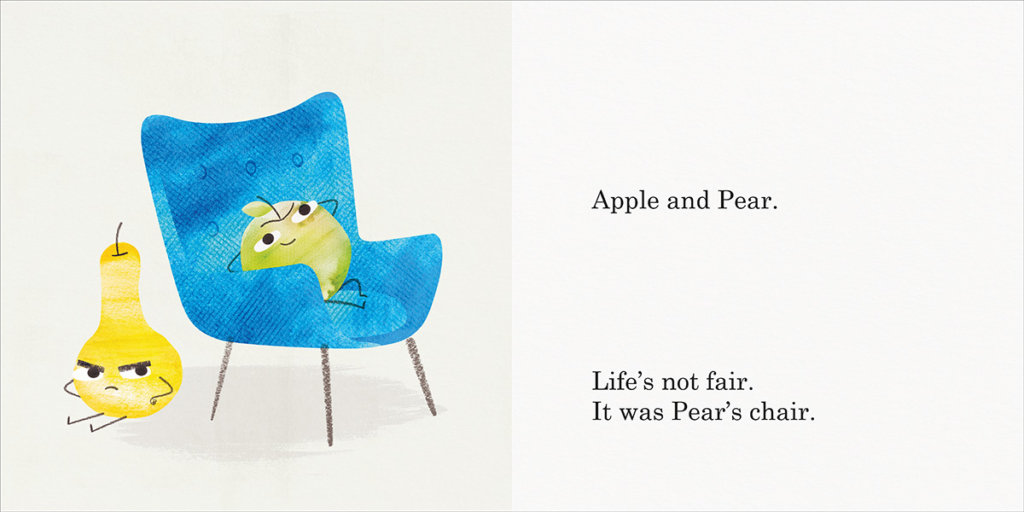
You have worked on a plethora of children’s books and commercial projects throughout your career, from releasing I’ve an Uncle Ivan with us to creating the instantly recognisable illustrations on The Natural Confectionary Co. packs. Do you have a favourite project that you have worked on so far?
Both projects you mentioned are special to me – my first children’s book and my most recognised work. They are the two that are most talked about. But a project that is closest to my heart was the work I did for INTI Magazine while I lived in Bolivia. The revenue generated from the sale of the magazine helped street kids return to school from working in the street. It was run by BiblioWorks, an NGO that also establishes libraries in remote communities and promotes literacy around the city of Sucre where I lived.
Can you tell us about the process behind bringing characters to life for children’s books?
I guess so… most of the process is a mystery to me. I much prefer creating non-human characters, I find them more interesting. Some stories I’ve written the characters start out as human… but I end up changing them to animals somewhere along the process. I was lucky when Huw Lewis-Jones sent me a story about an Apple… jackpot… not a human!
I think that when you read a good manuscript it doesn’t take long to start picturing what the characters could look like. I sketch a page full of rough character designs and see what visual cues will help bring out the right personality. For me, this is by far the most satisfying and enjoyable aspect of making children’s books.
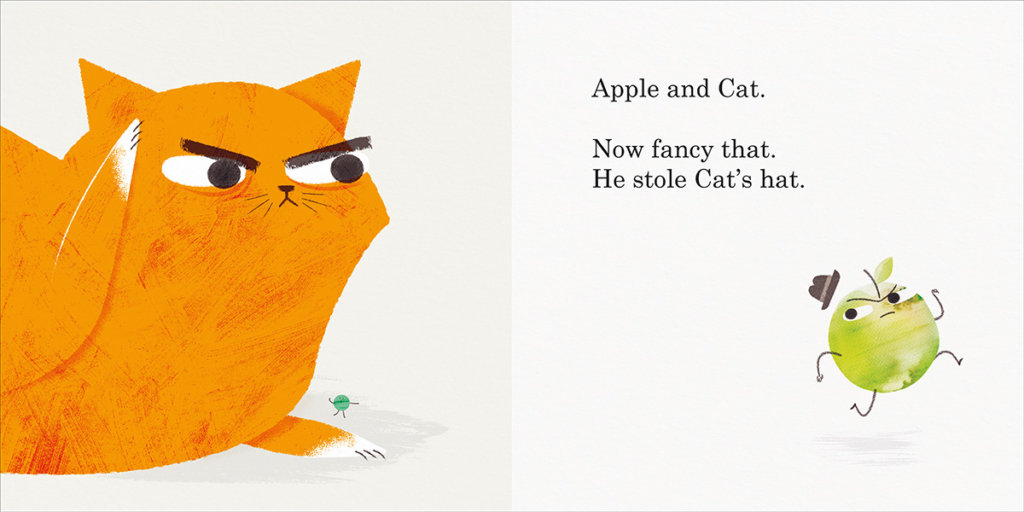
What was your vision for the Bad Apple characters and how closely did you work with author Huw Lewis-Jones on developing their look?
Huw sent me the manuscript and after a few reads I sent him a little drawing of a mean looking green apple. An almost perfectly round green circle with the least amount of detailing to create a face and limbs. We both wanted him to be simple yet full of expression. So, the eyebrows became the most important feature. He would be scowling a lot in the book so he needed a unique brow… a monobrow…. with his stem and leaf growing right out of it! Huw and I had a few chats about it but I remember Bad Apple developing very quickly and naturally, with both of us having input.
What’s next for you?
There will be at least two more Bad Apple Books coming in 2022. Apple is even naughtier in the sequel… it’s a lot of fun. I have two new picture book series in the pipeline in collaboration with Huw. There is one about a Croc with a big appetite and another about a Badger who is going through an existential crisis … so yeah, more animal characters to come!
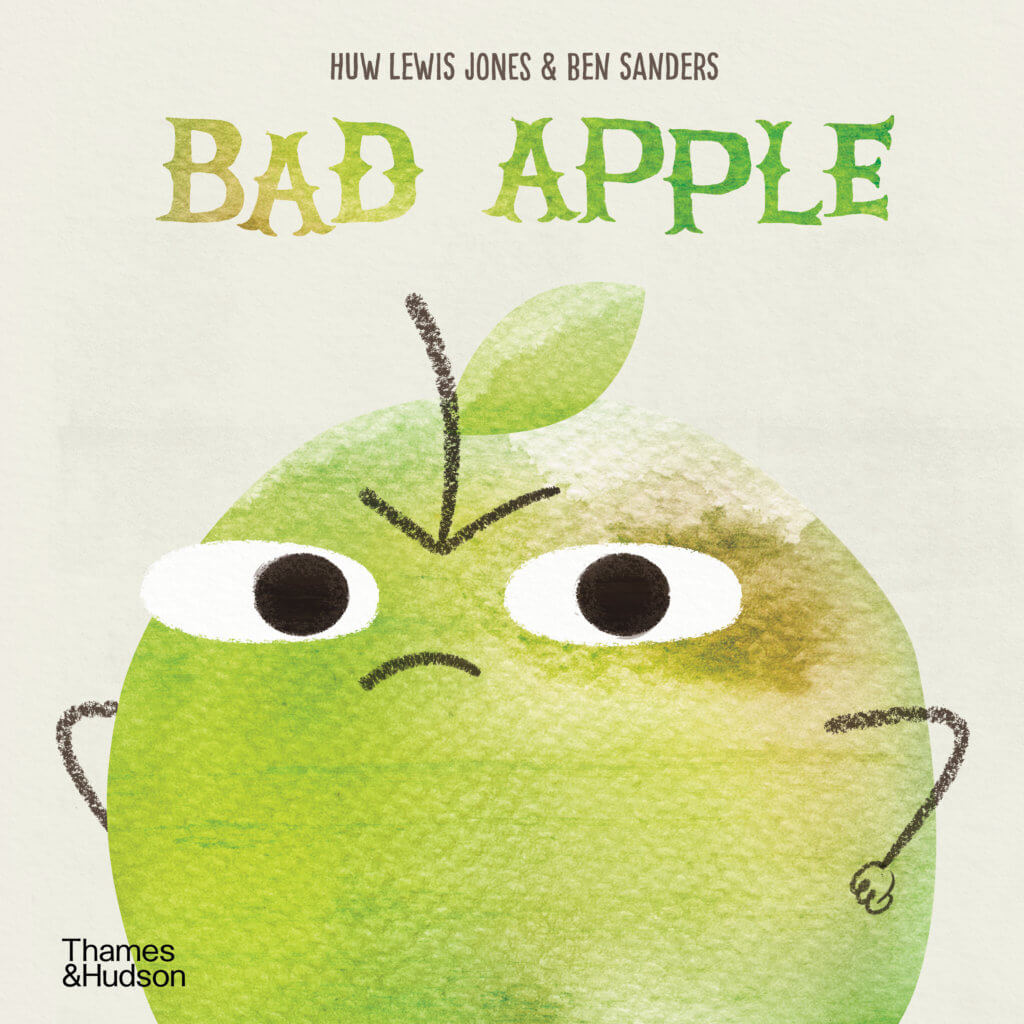
Bad Apple is available now. Text by Huw Lewis Jones and illustrations by Ben Sanders. Originally published by Thames & Hudson UK.
AU $24.99
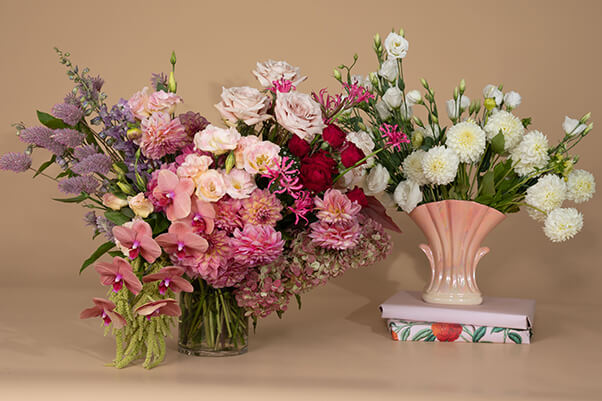
Add some beauty to Mum’s bookshelf this Mother’s Day with these stunning titles, carefully hand-selected by our staff for their own Mum’s, Grandmother’s and all loved ones as a perfect gift.
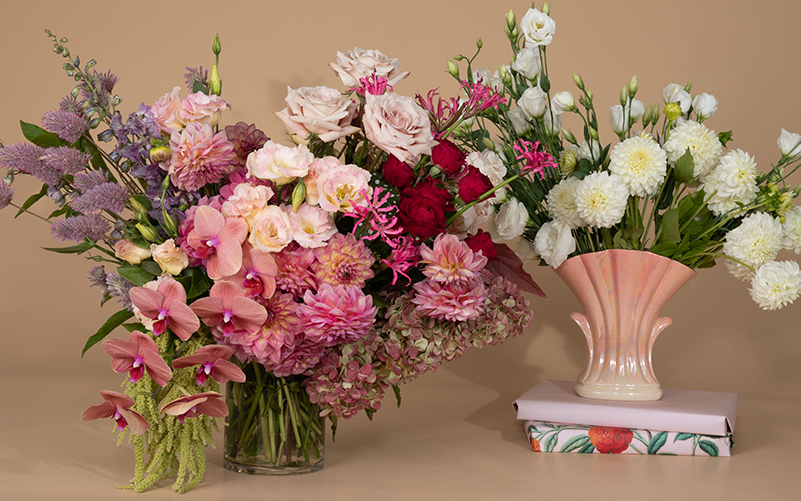
From our garden of books, pick a fresh take on interiors, a bright art monograph or a charming children’s book. There’s a book for every interest this Mother’s Day.
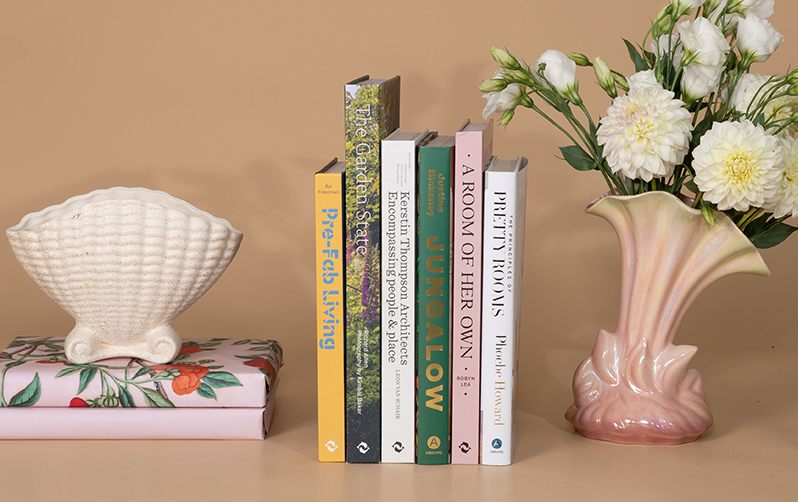
BREAK
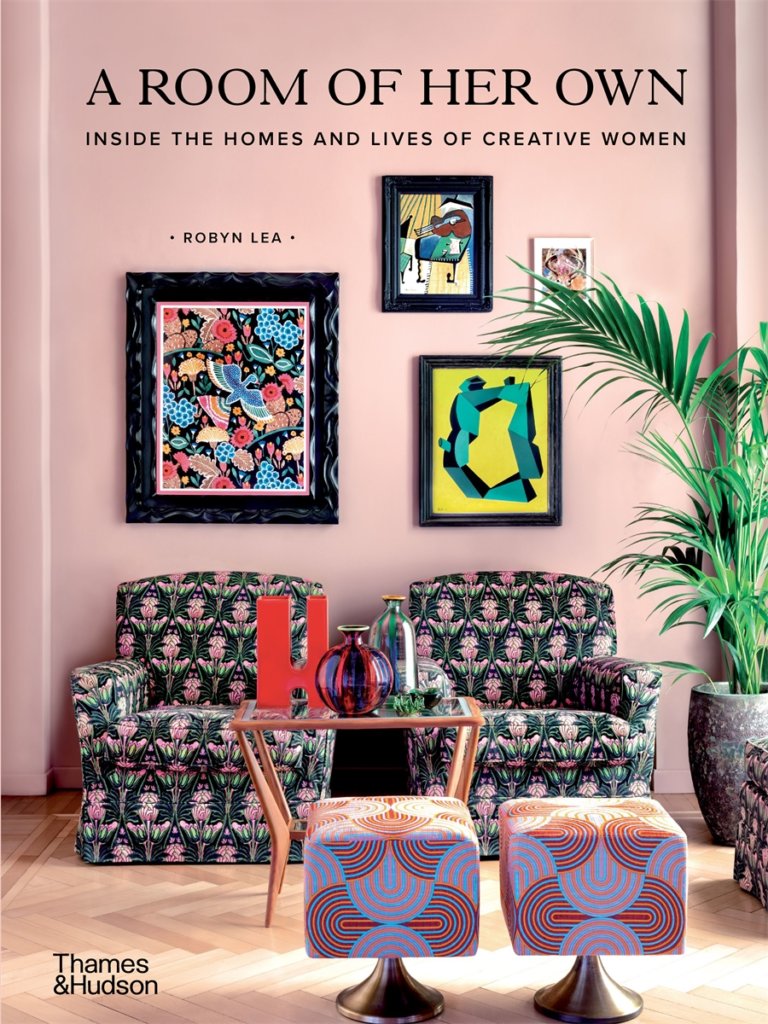
Robyn Lea
Meet the creative women who are living life on their own terms in this stunning photographic survey of the most original homes and interiors.
BREAK
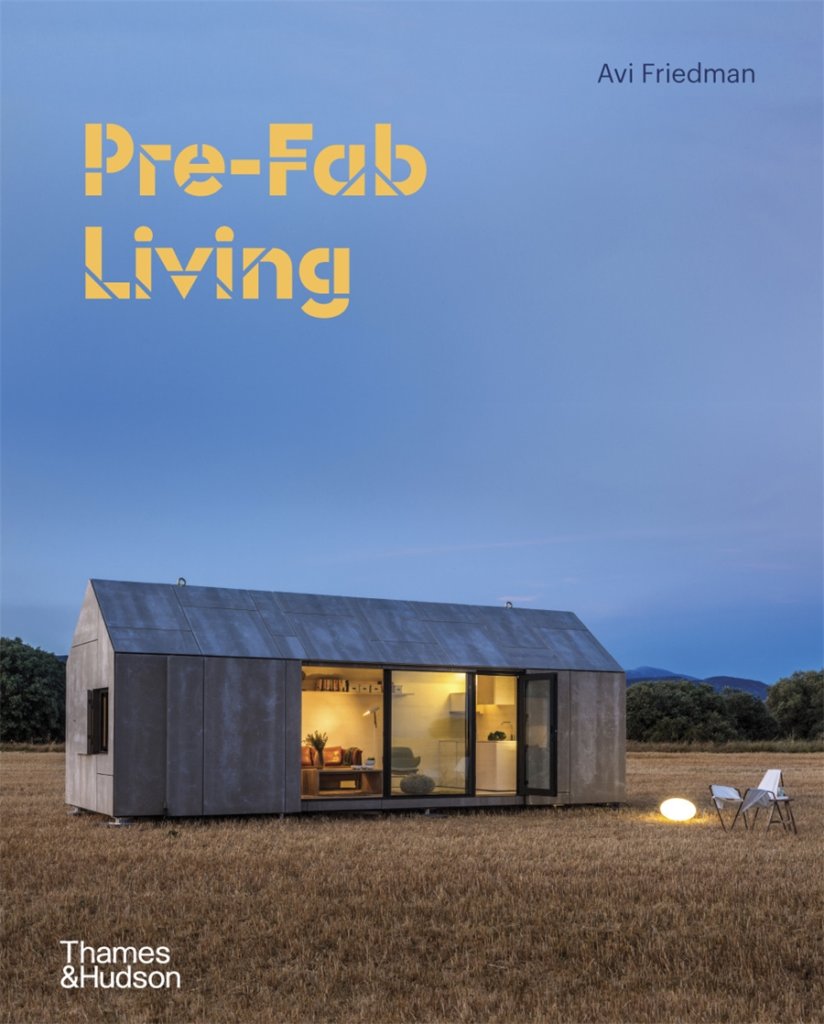
Avi Friedman
From cabins to containers, this international overview showcases a new generation of innovative homes that save space, are kinder to the planet and cost less to build.
BREAK
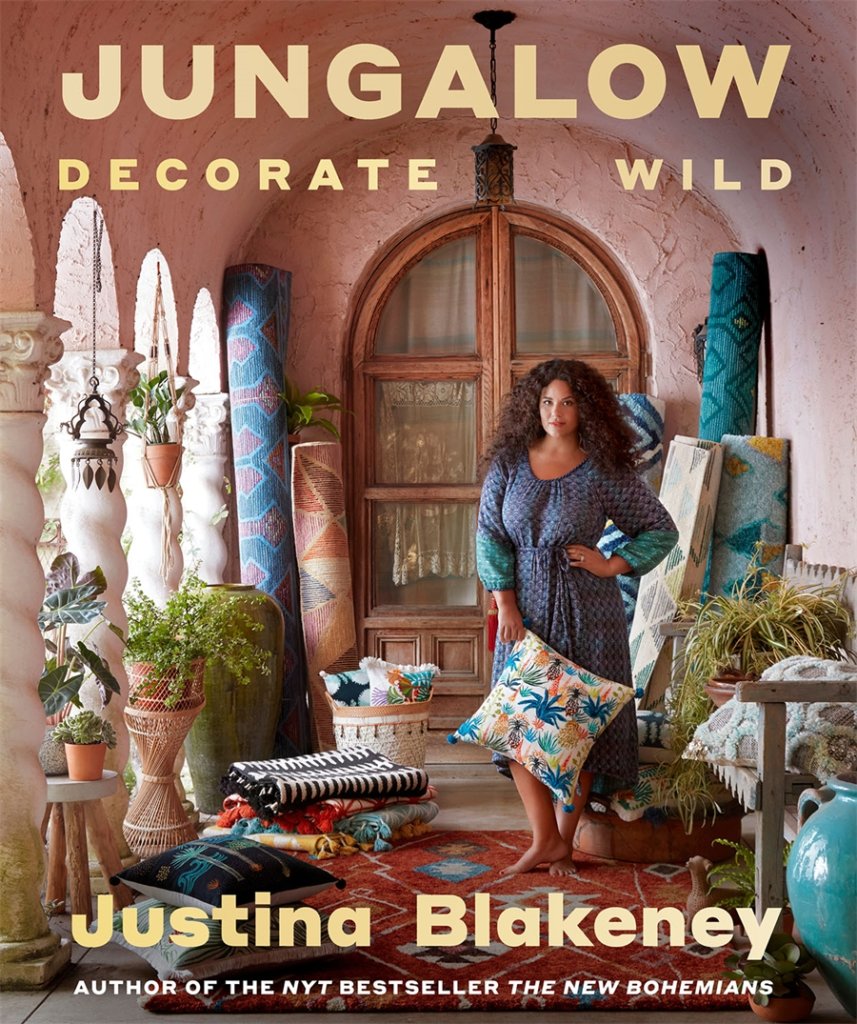
Justina Blakeney
The ultimate guide to designing wildly creative interiors that are free-spirited, layered, and deeply personal.
BREAK
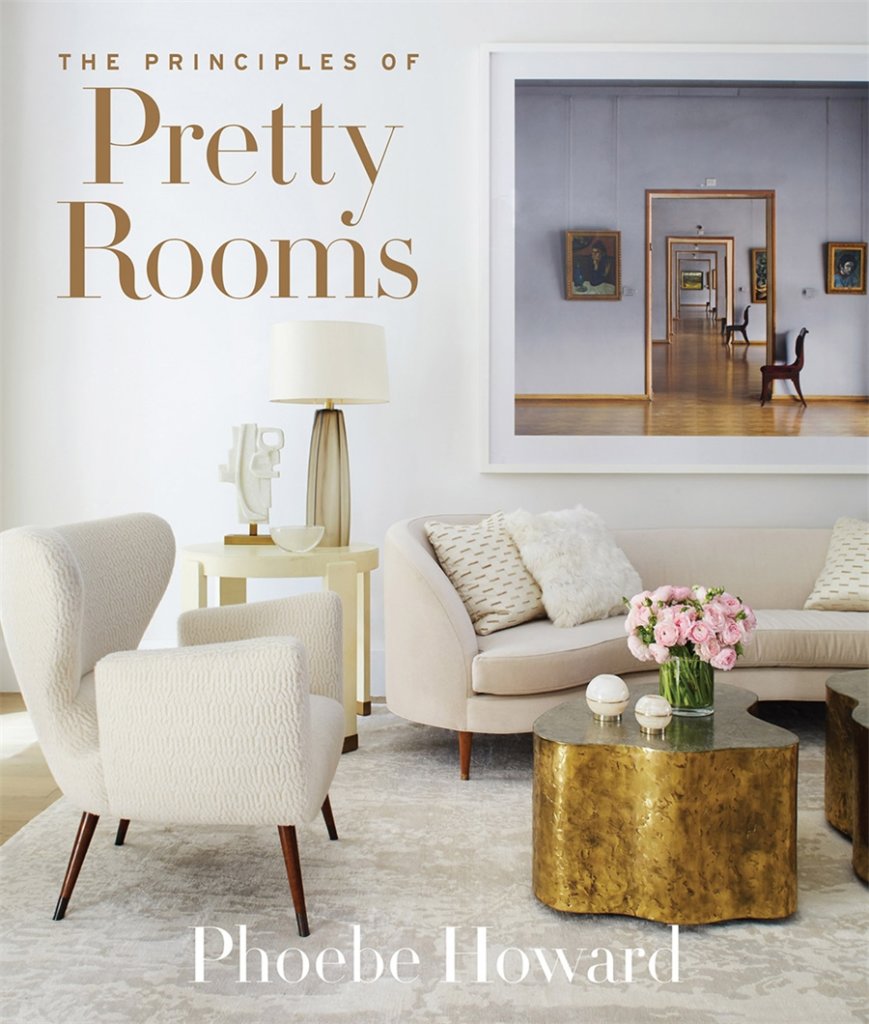
Phoebe Howard
Beloved interior designer Phoebe Howard shares her style secrets for creating truly pretty rooms filled with grace and charm.
BREAK
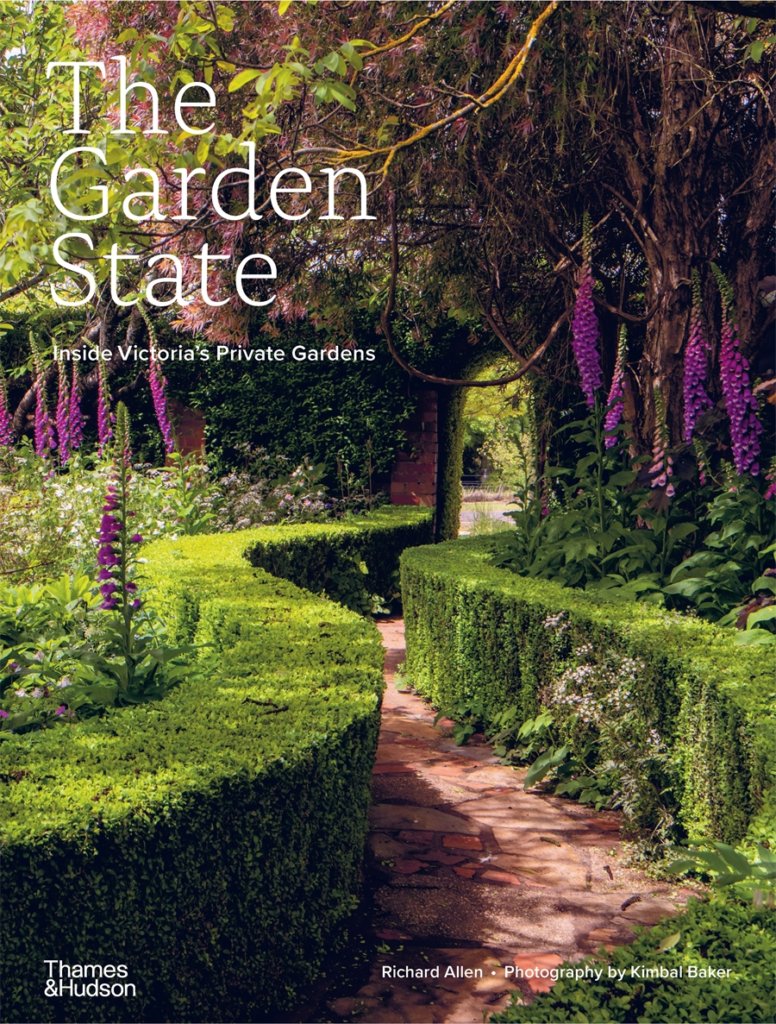
Richard Allen
From Mildura to the lush rolling hills of Gippsland, this is a comprehensive survey of the best private gardens across one of the most diverse Australian topographies.
BREAKBREAK
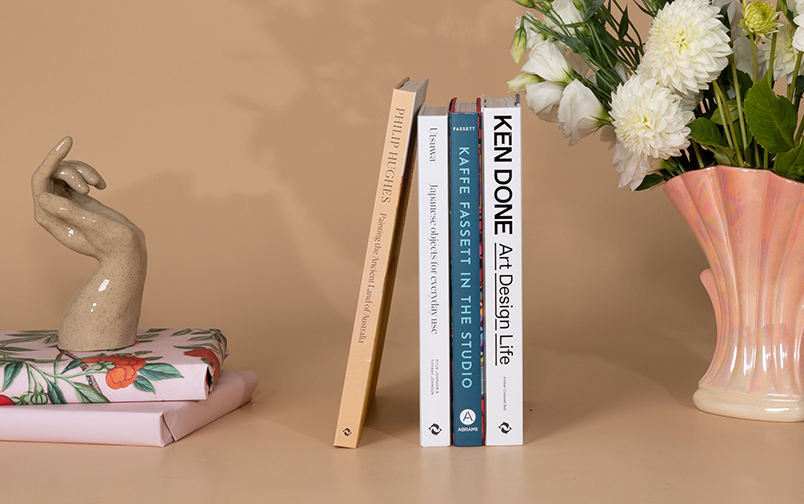
BREAK
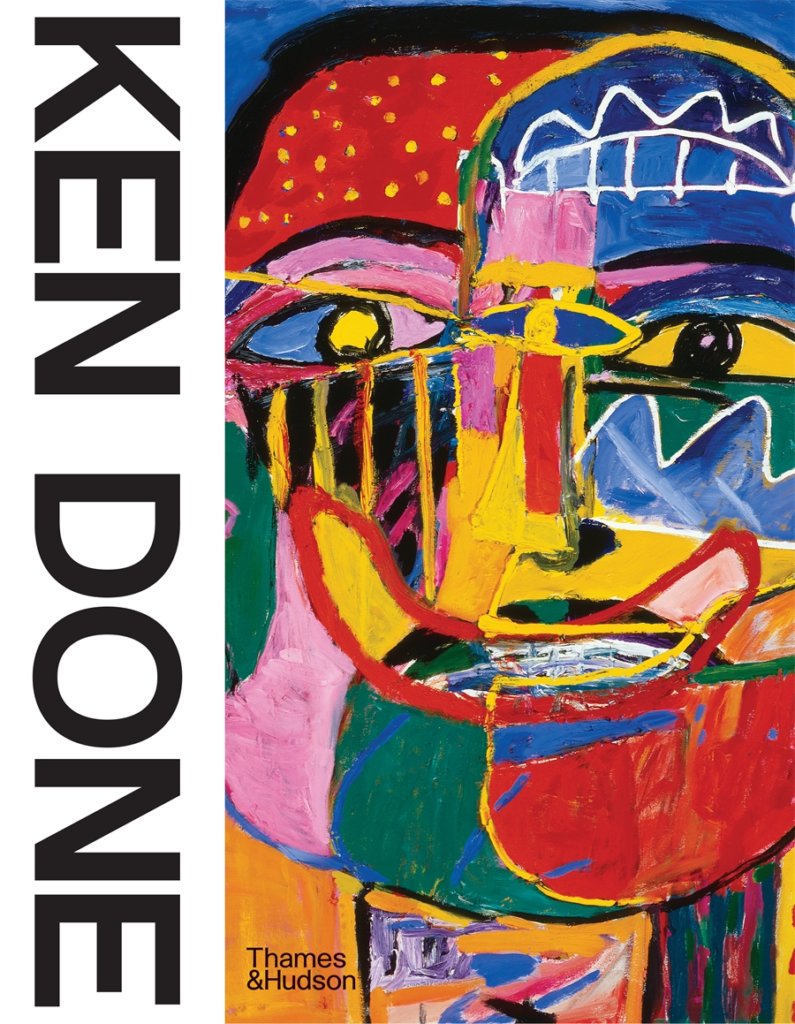
Amber Creswell Bell
A comprehensive and extensively illustrated monograph on the art and design of Ken Done, celebrating the man, his life’s work and his legacy.
BREAK
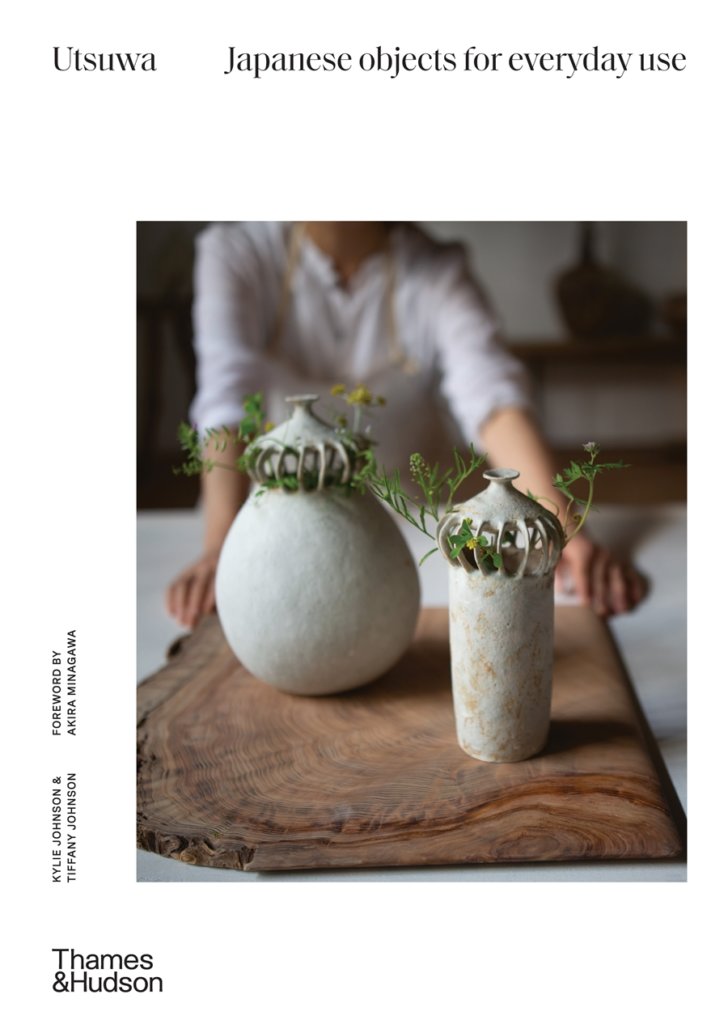
Kylie Johnson and Tiffany Johnson
Celebrate the beauty and ethos of Japanese ceramics and the handmade through this intimate exploration of the makers, markets and galleries of Japan.
BREAK
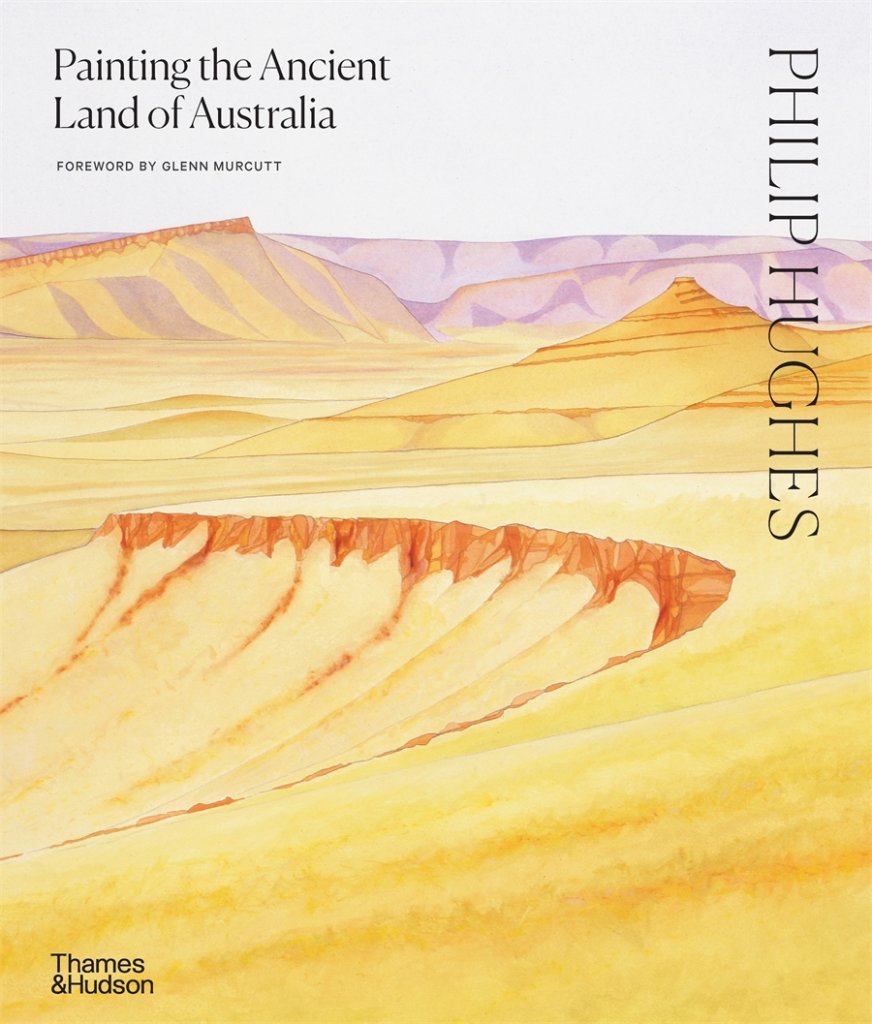
Philip Hughes
Taking in deep varicoloured mines, broad rolling plains, vast imposing landforms and exquisite calm bays, the landscape paintings of Philip Hughes comprise a love letter to Australia.
BREAK
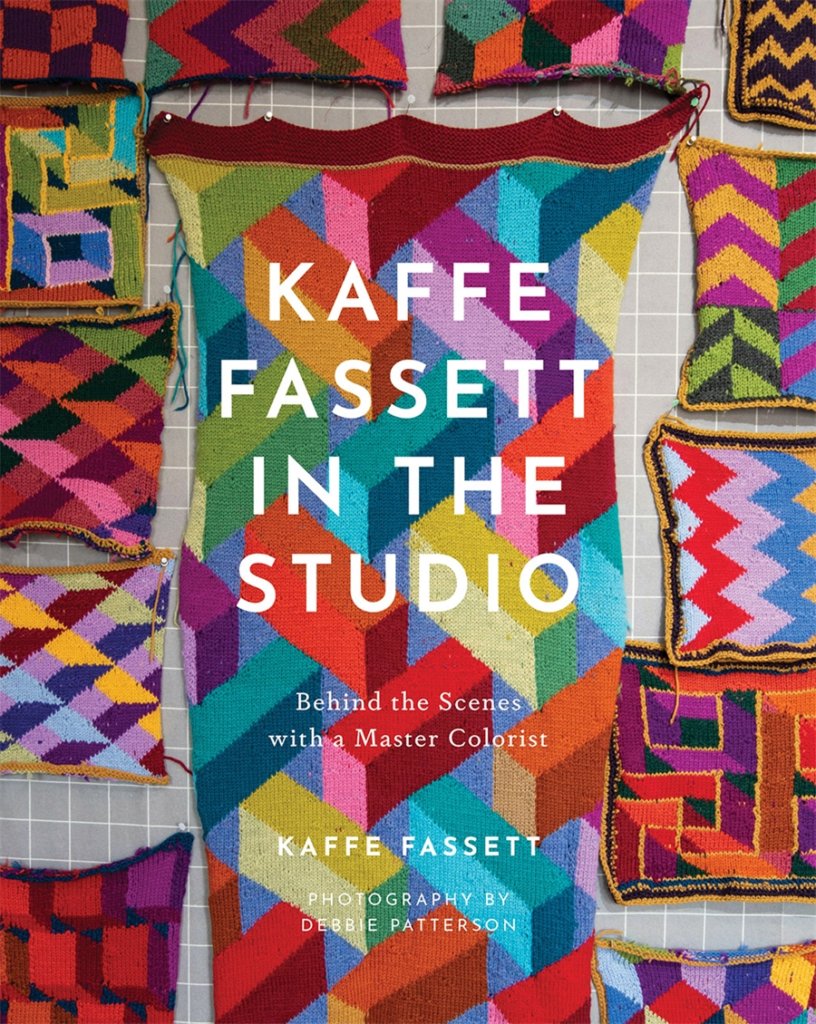
Kaffe Fassett
World-renowned artist and textile designer Kaffe Fassett provides a window into his creative process, offering readers new patterns, new ideas, and new inspiration.
BREAK
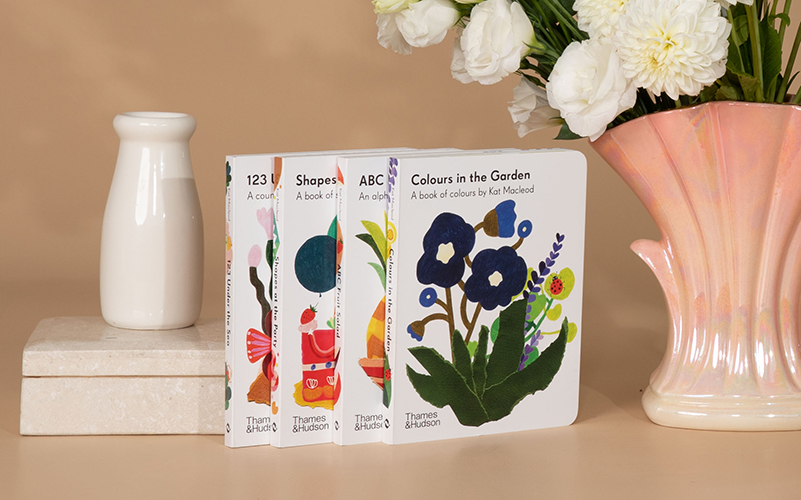
BREAK
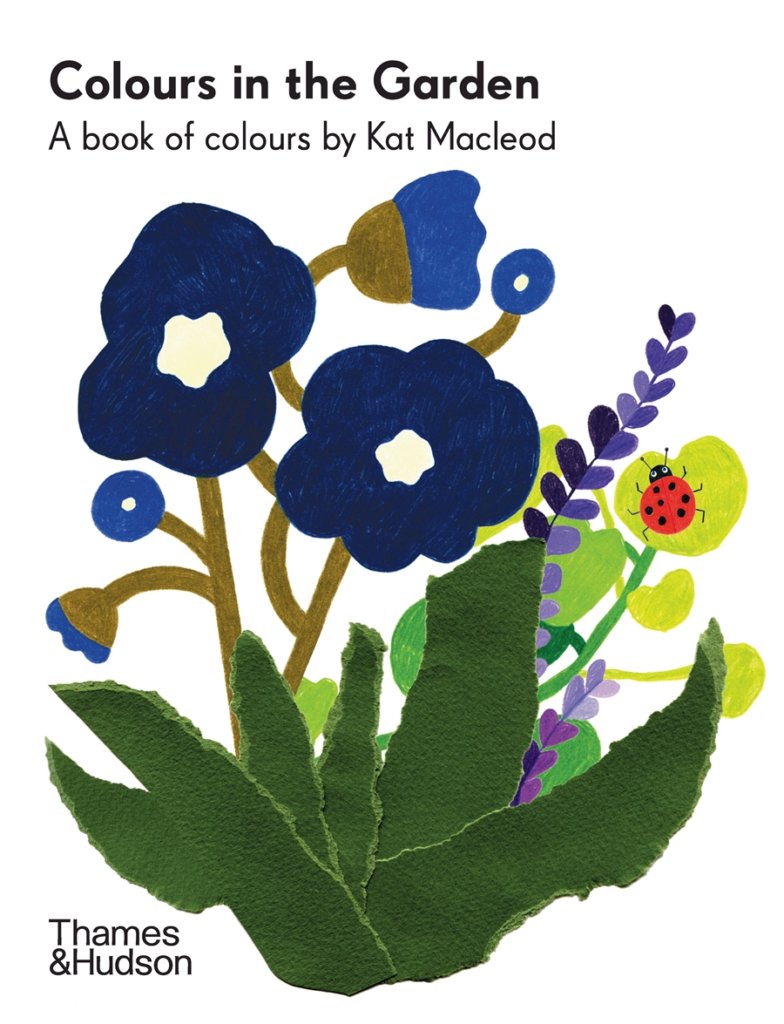
Kat Macleod
Explore the joys of different colours in this board book for babies and toddlers. A Kat Macleod Early Learner.
BREAK
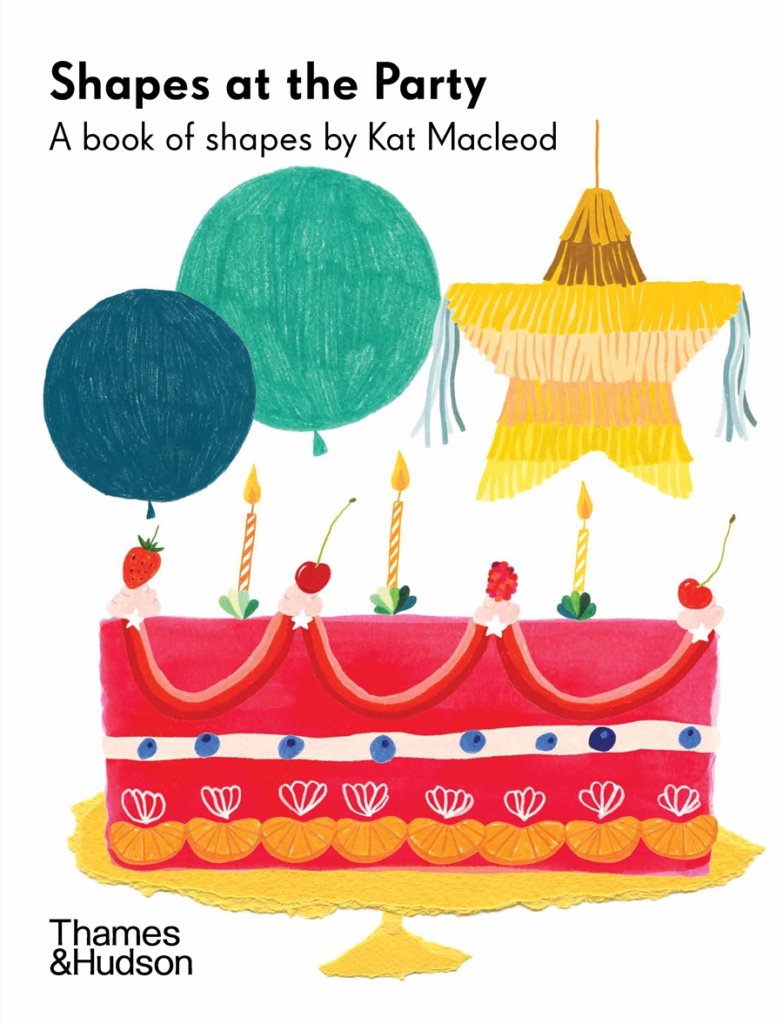
Kat Macleod
Share your favourite shapes with little ones in this board book for babies and toddlers. A Kat Macleod Early Learner.
BREAK
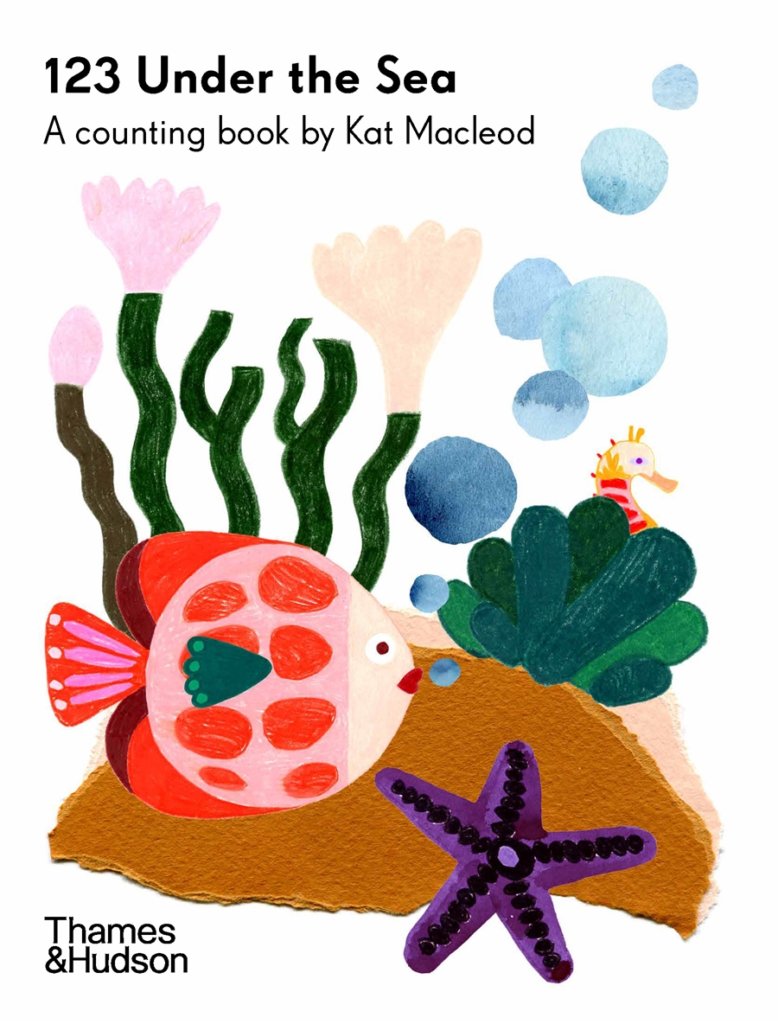
Kat Macleod
Count your way through an ocean of colourful critters in this board book for babies and toddlers. A Kat Macleod Early Learner.
BREAK
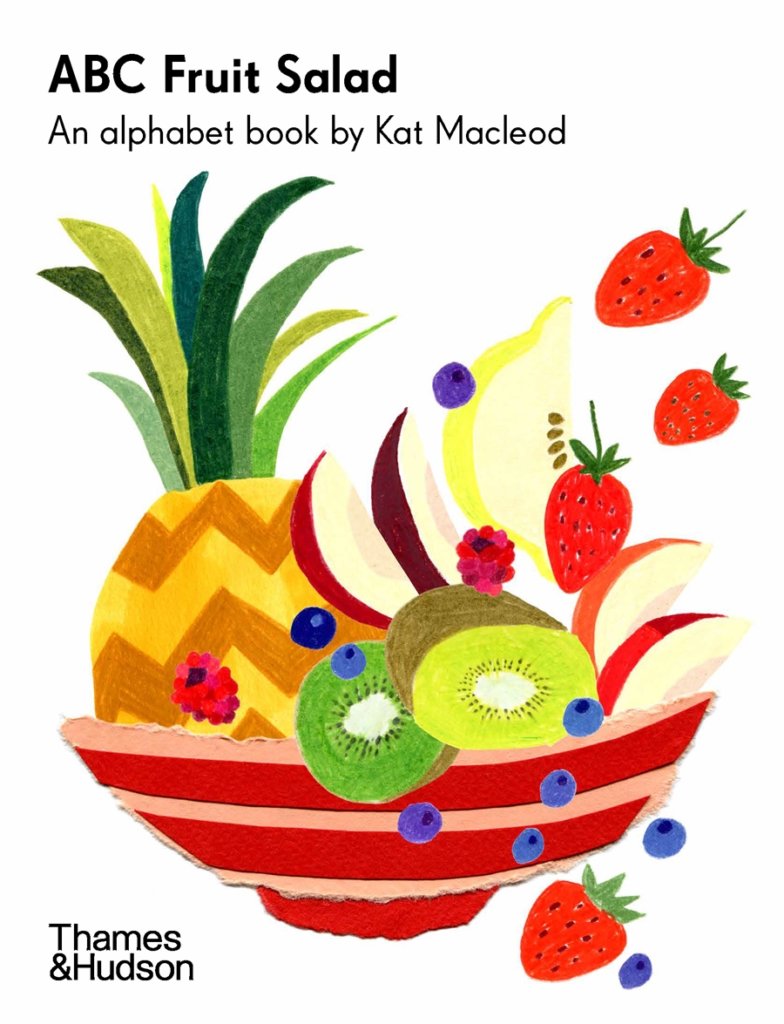
Kat Macleod
Learn ABCs with colour and ease in this board book for babies and toddlers. A Kat Macleod Early Learner board book.
BREAK
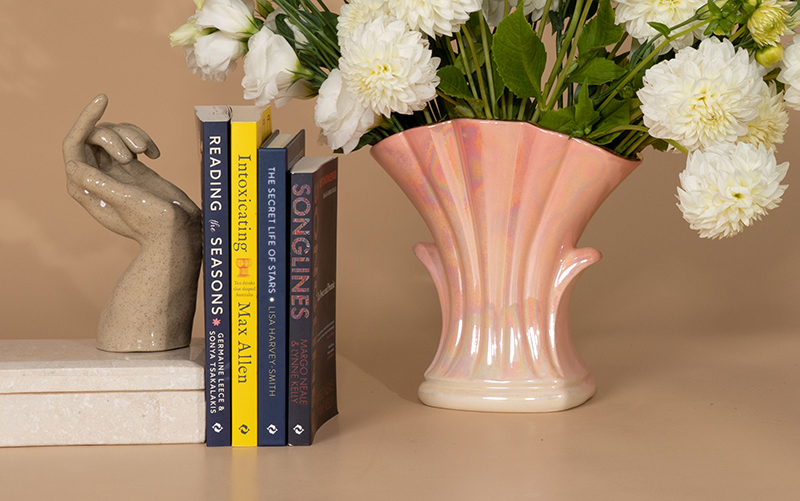
BREAK
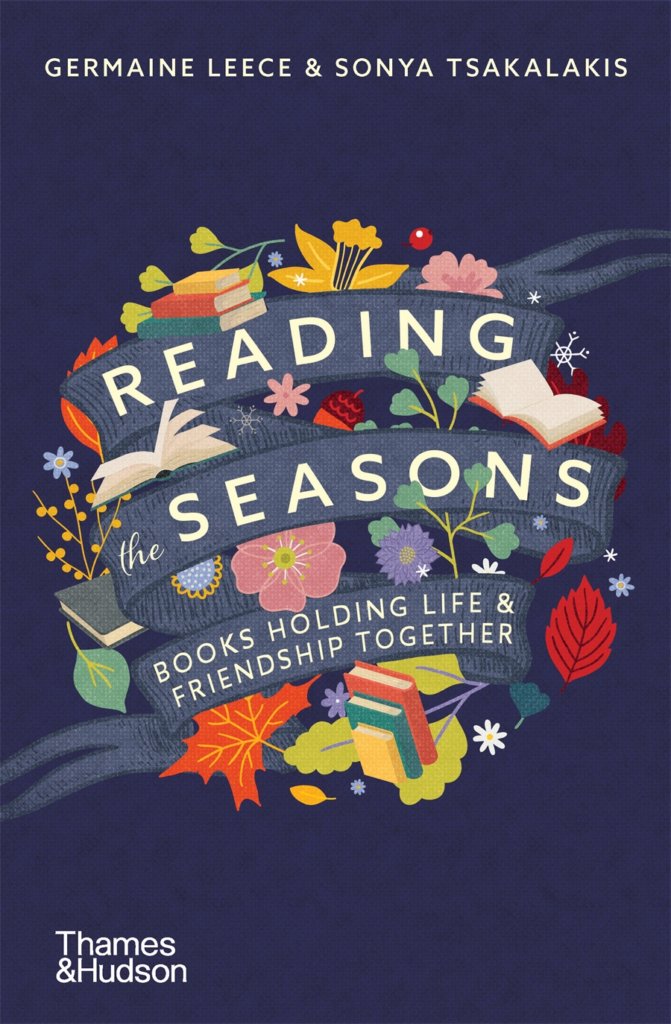
Germaine Leece and Sonya Tsakalakis
Rich with personal reflections and book recommendations, Reading The Seasons affirms the power of books to console, heal and hold us together as friends and as individuals.
BREAK
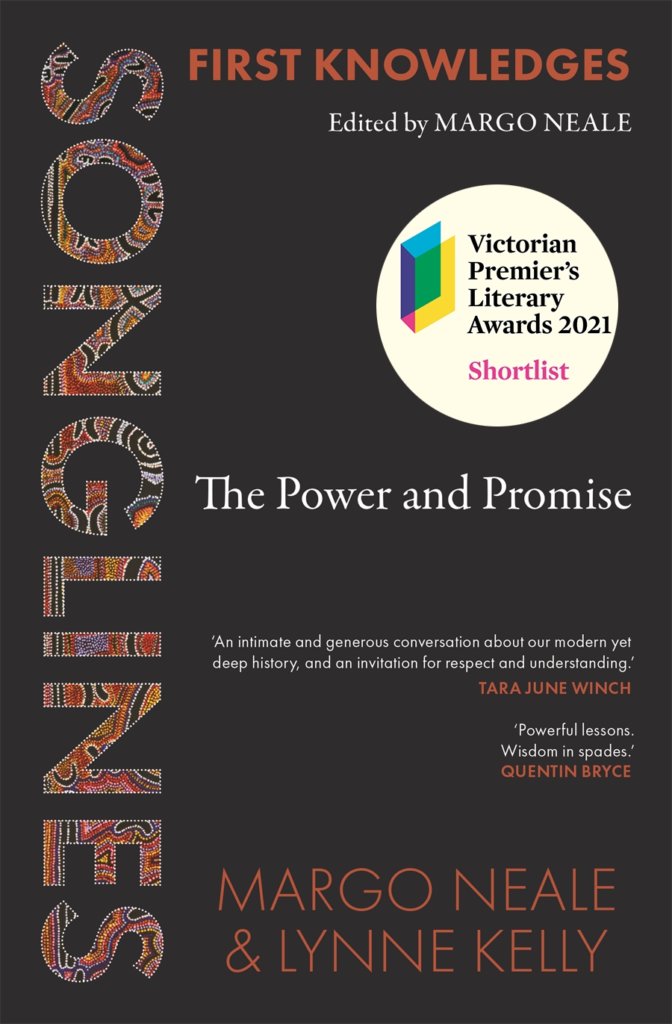
Margo Neale and Lynne Kelly
This book invites readers to understand a remarkable way for storing knowledge in memory by adapting song, art, and most importantly, Country, into their lives.
BREAK
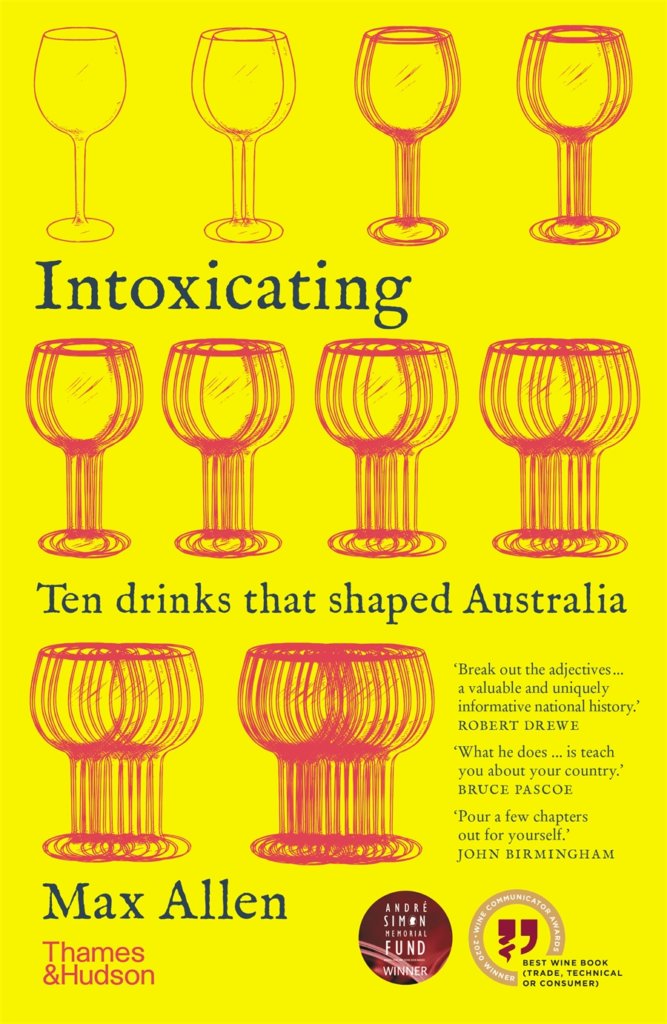
By Max Allen
From the fiery burn of rebellion rum and thirst-quenching ice-cold beer to the medicinal tang of restorative bitters, these are stories of the drinks that have fuelled Australian history.
BREAK
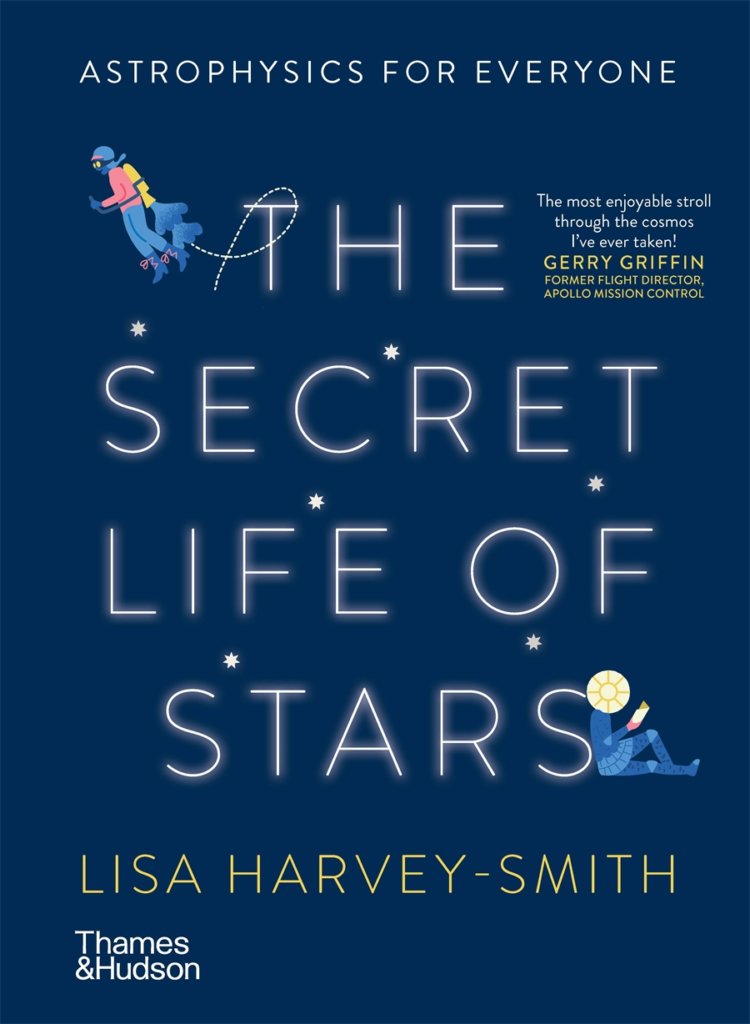
Lisa Harvey-Smith
This accessible guide to astrophysics will take you on a cosmic journey to meet some of the weirdest, most extreme and enigmatic stars in the universe.
BREAK
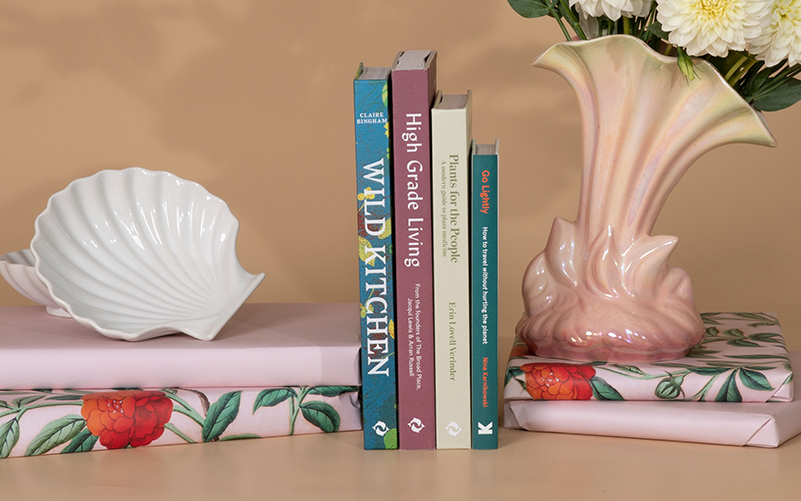
BREAK
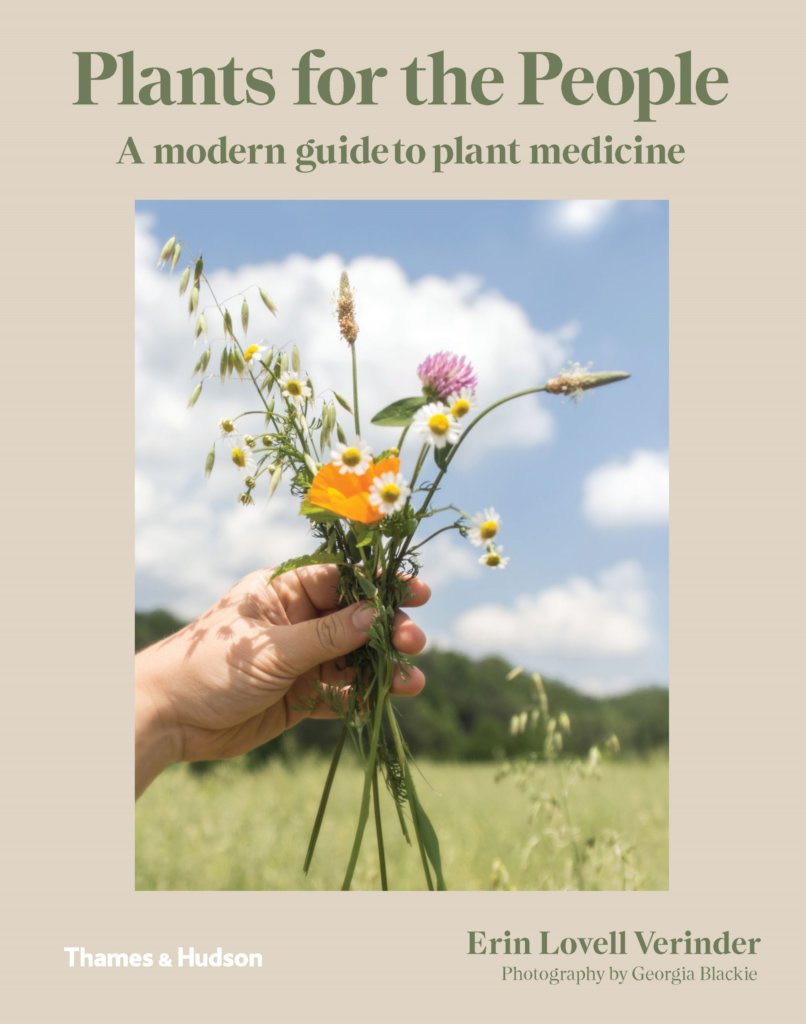
Erin Lovell Verinder
An antidote to the frenetic pace of modern life, this book offers a beginner’s guide to plant medicine as a source of self-care, vitality and wellness.
BREAK
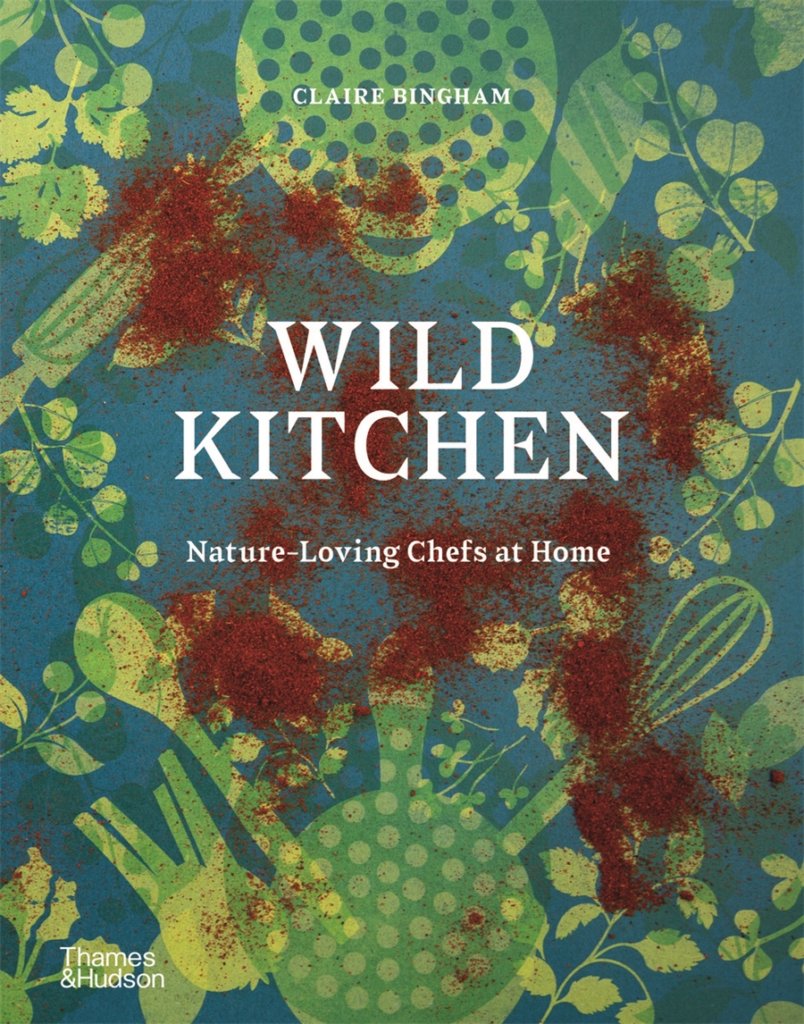
Claire Bingham
Join leading chefs, food bloggers and restaurateurs in their private kitchens and dining spaces, and discover how they cook and entertain using home-grown, local and seasonal produce.
BREAK
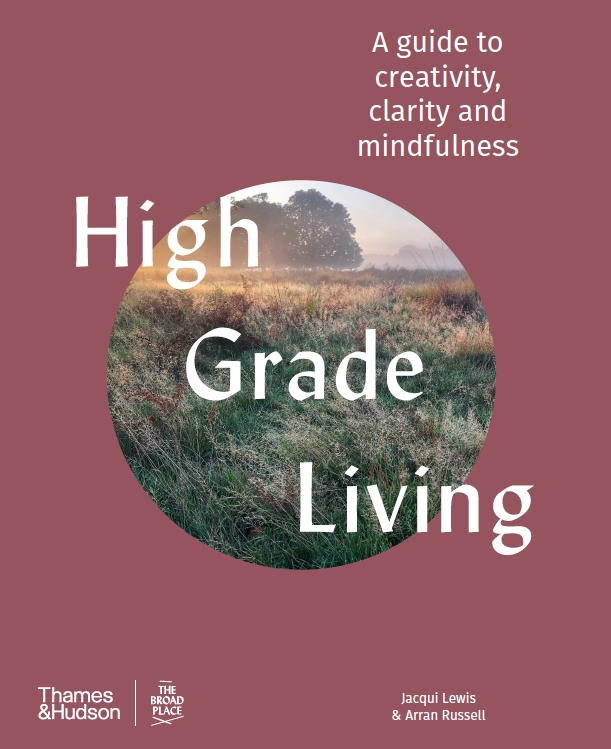
Jacqui Lewis and Arran Russell
A handbook for shifting from stressed, anxious and overwhelmed to creative, grounded and happy, using ancient knowledge applied to modern living.
BREAK
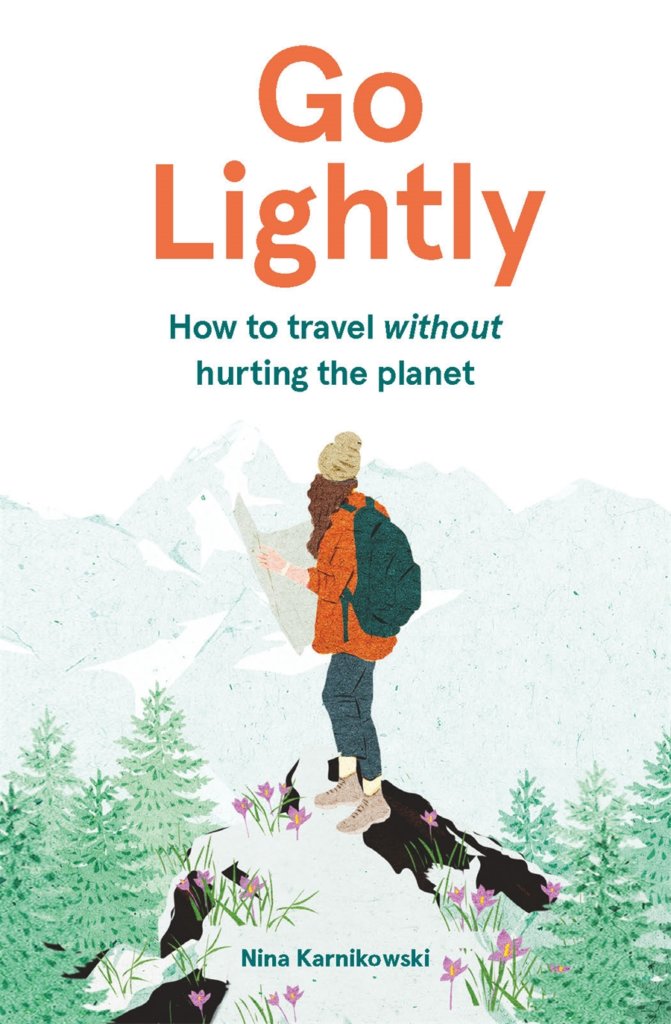
Nina Karnikowski
From the author of Make a Living Living, this sustainable travel handbook inspires readers to explore our fascinating planet without causing it further harm.
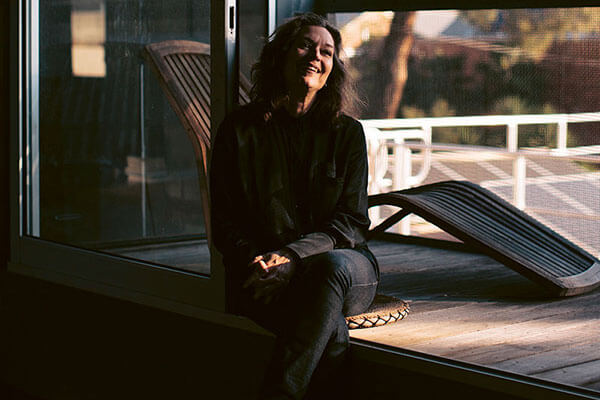
For over twenty-five years, award-winning practice Kerstin Thompson Architects (KTA) has proven that local architecture can and should shape a community. Leon van Schaik’s Kerstin Thompson Architects: Encompassing People & Place looks at KTA’s extraordinary body of work, its values and processes, and its place in the wider Australian architectural landscape. We spoke to KTA’s Principal, Kerstin Thompson, about her impressive career, the civic endeavour that is architecture and how she hopes to inspire others with the release of this new monograph.
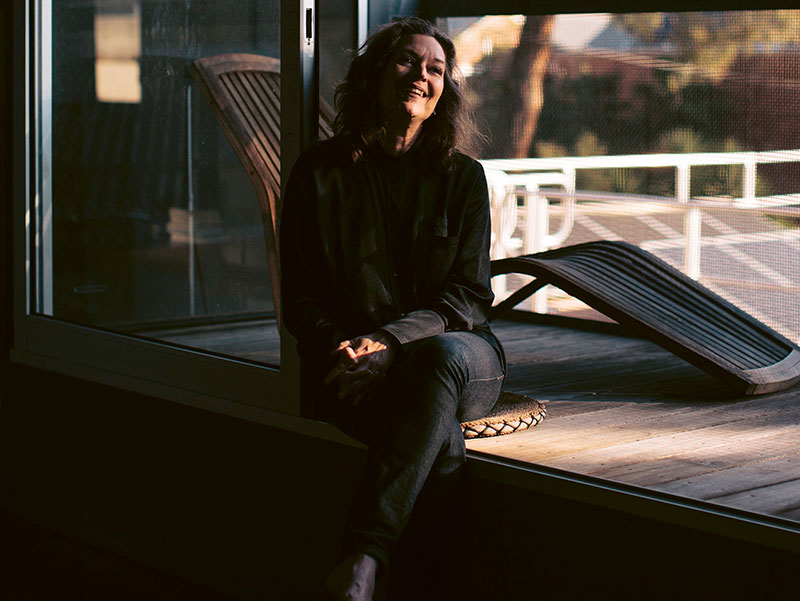
You are the Principal of Kerstin Thompson Architects, an Adjunct Professor at RMIT and Monash Universities and you were named Life Fellow by the Australian Institute of Architects in 2017. What led to your incredibly rich career in architecture?
Time on site, as a kid and later as a site architect, a wide variety of experiences in architectural offices from local ones to international multi-design studios, which in combination exposed me to the many valid ways of thinking about architecture. And since 1990 at RMIT, being a ‘pracademic’ – combining teaching with practice where each sphere enriches the other: the idealism, clarity of intent of the design studio, the pragmatism, ability to effectively negotiate the messiness and contingency of building and day to day practice. Good architecture demands both.
Your practice focuses on ‘architecture as a civic endeavour,’ can you explain what this entails? What values does KTA champion?
Buildings, no matter how small or for what purpose, can improve a situation. For the intended users, the client, of course, but also for the street, the neighbourhood, even the environment in projects where ecological repair becomes part of our remit. KTA champions the value of mutual benefit – that in meeting the aspirations of the client the design also contributes something positive for the neighbourhood too. In this sense they are of civic endeavor, in the interests of community, the city, broader environment.
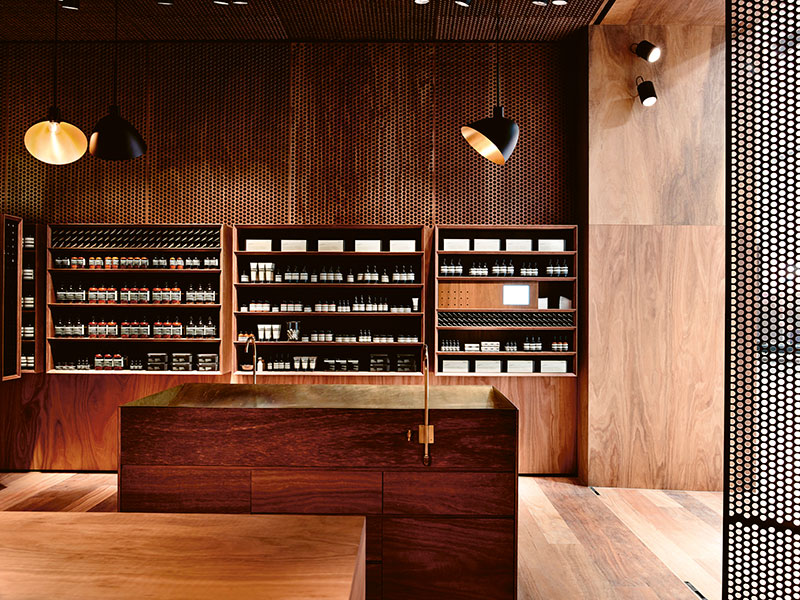
Is there a project you have worked on that you are most proud of?
I’m no good at favourites, there are many projects we are proud of. In fact, our hope is that KTA’s body of work, the cumulative impact of many sometimes modest buildings rather than one or two stand out icons, will leave a lasting and positive impact. Each project in its own way raised the quality of someone’s everyday life, brought benefit and joy to someone whether in their work, home or recreational life.
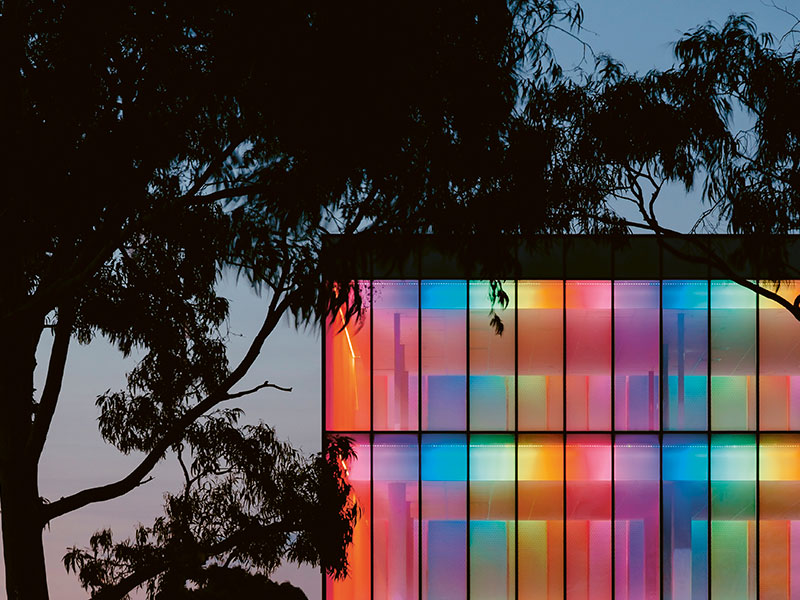
In Kerstin Thompson Architects: Encompassing People & Place, Leon van Schaik focuses on KTA’s groundbreaking body of work. How do you think the book contributes to a wider conversation about architecture in Australia?
First we hope it provides insights into the motivations and process of architecture, the ideas, the sketches, behind the completed project. Second that it showcases a variety of ways in which architecture can meaningfully engage with, forge a unique sense of place, whether in bush, city or suburban context. And also, how opposites can happily/productively co-exist: subtly with clarity, sensitivity with strength, and last but not least new with existing built form. The inclusion of several adaptive re-use projects demonstrates how the re-use of our built heritage is not only more environmentally resourceful but also a way to hold onto precious cultural memories. May our new buildings also endure to support changed use in the future.
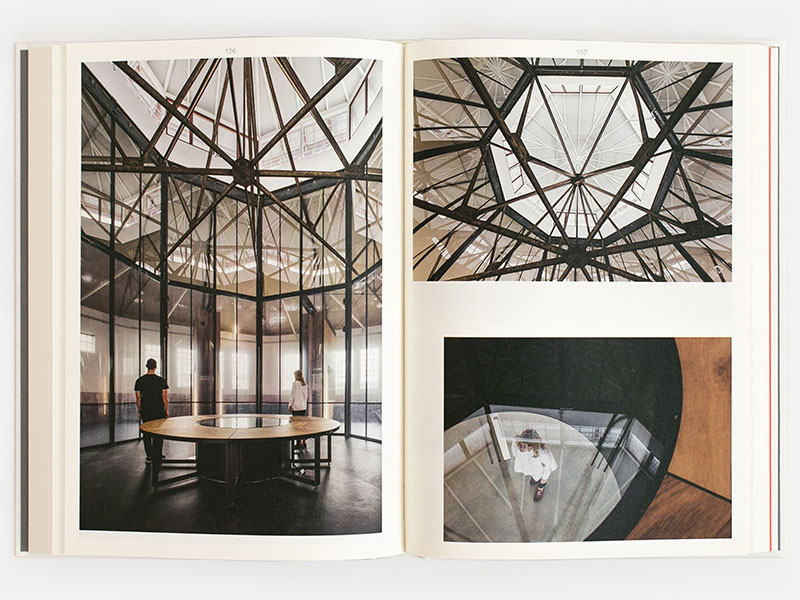
Our favourite inclusion in the book is your ’10 Lessons,’ many of which address what it is like to be a woman in architecture. How do you hope to inspire other women in the industry?
By conducting practice through a studio and business culture that is stimulating and supportive for our colleagues; by mentoring within and beyond the practice; by leaving a lasting legacy of decent buildings that have somehow improved the everyday; inspiring through advocacy, speaking out, being heard, being visible.
What’s next for you? Is there an exciting project that KTA is working on that you can share with us?
KTA has always been diverse in its project selection. Big, small, public, private. So, it’s not surprising that two of our most exciting, current projects are at opposite ends of the spectrum. Queen & Collins project for GPT, almost complete, is a total rethink of half a city block. We’ve transformed it from corporate lobby to network of vibrant, open air laneways and small campiellos (venetian squares) in celebration of the site’s significant neo-gothic heritage. In contrast to this scale and urban location we are excited to see the house for photographer Sharyn Cairns come to life. In a beautiful coastal bush setting, it will be sheer, concentrated concrete delight.
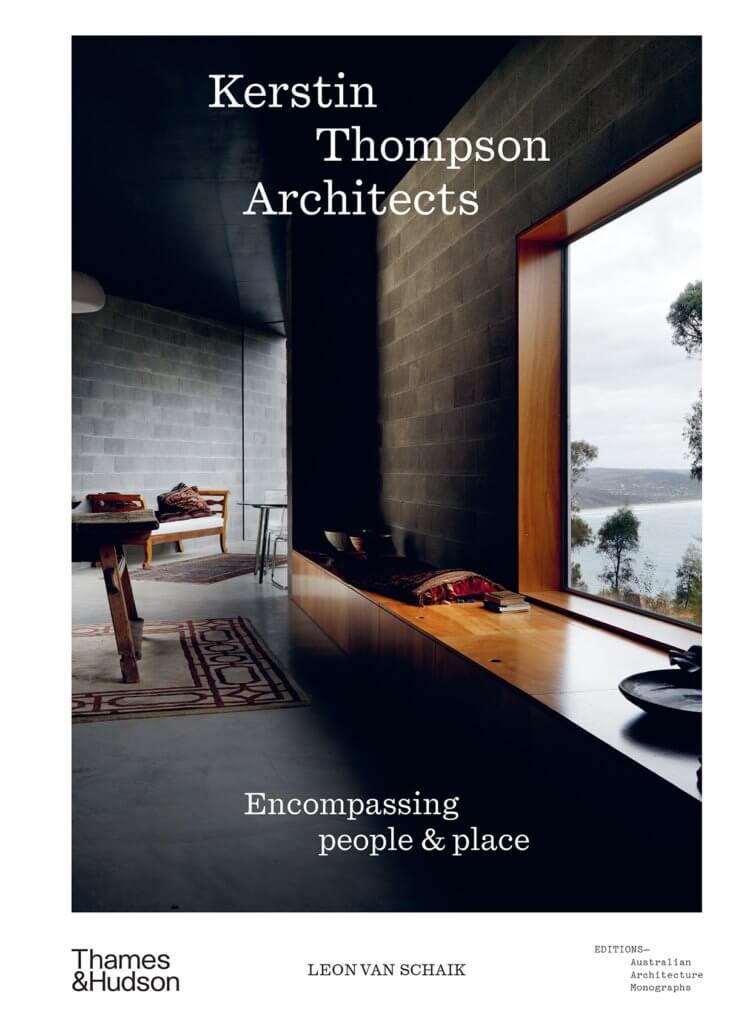
Kerstin Thompson Architects: Encompassing People and Place is available now. Text by Leon Leon van Schaik and design by Stuart Geddes. Series editor Fleur Watson.
AU$59.99

Braid fresh flowers into a hanging wreath for a party — then let it dry and leave it up all year!

A hanging wreath adds a sense of playfulness to a room and is, of course, perfect for a little party or special occasion. This fresh-to-dry project can be made with just-picked flowers, but it’s also a great way to use up ones that are on their way out — blooms that are wilting but still have pliable stems can be braided and will dry nicely.
Bay leaves, gomphrena, and strawflowers are especially good choices for an arrangement like this one, as they’re all very long-lasting and dry well. The colours of strawflowers feel almost unreal (in the best way!) and bring a sense of whimsy to the project. This wreath is light enough that it can easily be suspended from a ceiling hook, in part because it’s made without wire. Stems of millet and statice give it stability, and the braided strawflower stems keep the blossoms in place. These braiding and weaving methods can be applied to wreaths of all sorts. A hanging flower wreath is a focal point, so you won’t need other large arrangements or elaborate styling. Here, I hung the wreath over a table covered in pink linen and added modern ceramics, tiny arrangements, and a few scattered flower petals.
You will need :


Instructions
This is an edited extract from Field Flower Vase, available now. Text and photography by Chelsea Fuss. Originally published by Abrams Books.
AU$45.00
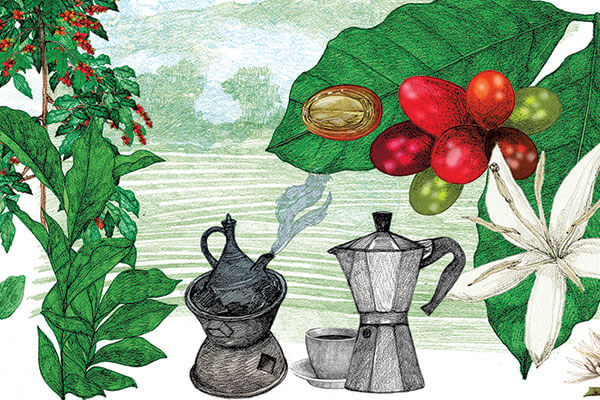
Discover the origins of coffee in this early extract from Around the World in 80 Plants, the sequel to Jonathon Drori’s bestselling Around the World in 80 Trees.
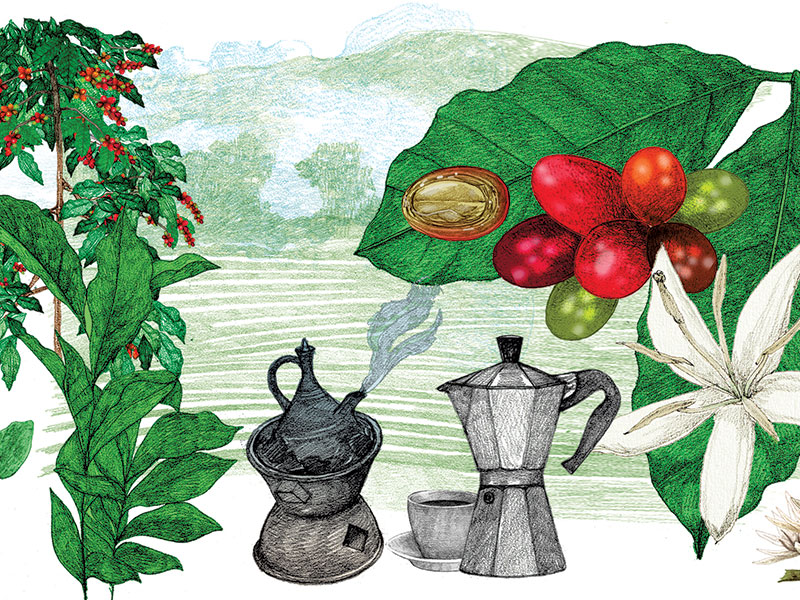
Ethiopia
Coffea arabica
Coffee
The little evergreen coffee tree began life somewhere near the forested mountains of southwestern Ethiopia, and its broad, elliptical leaves with crinkled edges, shiny and dark above and pastel-pale underneath, still prefer the shade. In full flower, coffee is a spellbinding but ephemeral joy; for just a couple of days, thousands of delicate white blossoms with a light fragrance of honeysuckle and jasmine can festoon a single tree. The smoothly oval fruits ripen to pillar-box red; their thin layer of edible flesh tastes of watermelon and apricot and surrounds a pair of deeply grooved seeds that are the familiar coffee ‘beans’. Coffee’s bright, sweet fruit have evolved to attract monkeys and birds, which ingest them, remove the pulpy parts of the fruit and excrete the seeds intact. Mercifully rarely, such beans have been gathered and sold as a luxury; for example, Indonesian kopi luwak coffee – considered by aficionados to be especially ‘smooth and earthy’ – is the, ahem, ‘product’ of Asian palm civets, which are often caught and traded for this purpose. Otherwise, all cultivated coffee is harvested by human hand; the fruit don’t suit mechanical harvesting because they don’t all ripen at once.
More than 1,000 years ago, thanks to genius or good fortune, boringly unscented beans that had been separated from their fruit and husks were roasted, pounded and added to hot water. The resulting fine-flavoured, stimulating yet non-alcoholic brew spread via Yemen throughout the Islamic world and the Ottoman empire. The story goes that in about 1600 coffee’s association with Islam caused Vatican officials to dismiss it as ‘Satan’s latest trap to catch Christian souls’, but Pope Clement VIII supposedly tried some and gave coffee his blessing because it would have been ‘a shame to let infidels have sole use of it’. What a charmer!
By the mid-seventeenth century coffee houses were popping up around Europe, and in London especially they became places for men to discuss business and politics, in contrast to the chocolate houses (see
page 71), which were more light-hearted and welcoming to women. Over the centuries, many cultures have developed coffee rituals, sustained by beguiling paraphernalia and nerdy choices of grind and provenance. Ethiopia has a particularly elaborate ceremony. Amid wafts of incense, beans are freshly roasted over glowing charcoal and pounded at the table with cardamom or other spices. The resulting intense, dark drink is served with … popcorn. It’s a delightful experience for those fortunate enough to live within reach of an Ethiopian café, but perhaps not just before bedtime.
The coffee tree didn’t develop caffeine for our benefit. When its leaves die and drop, their caffeine leaches into the soil, impeding the germination and growth of competing plants, and it is also a defence, sometimes a lethal one, against various insects and fungi. It is therefore surprising that coffee and even some unrelated citrus plants put caffeine in their nectar, which, after all, is meant to reward insects for ferrying pollen to other plants. It turns out that the merest dash of caffeine, below the threshold that bees can sense, helps them to remember the plant, making them more likely to return to it. The flowers shrewdly dispense just enough caffeine to be pharmacologically active but not enough to be bothersome.
Towards the end of the nineteenth century, Asian production of Arabica coffee was wiped out by a fungus: coffee leaf rust. Groves were replanted with ‘Robusta’ (Coffea canephora), which was immune, and although it has a harsher taste than Arabica, it is now widely cultivated. Existing coffee strains are at risk once more, from climate change and the new pests and diseases that come with it, but there is scope for breeding new varieties. There are more than 120 wild species of coffee, most of them in tropical Africa. They have fascinating flavours and contain differing amounts of caffeine, and some of them tolerate heat and drought, or cope with different soils or plant diseases, yet most are themselves threatened by climate change or forest loss. It feels unfair that much of the burden of protecting this vital source of genetic diversity for one of the world’s most valuable commodities should be borne mainly by African nations.
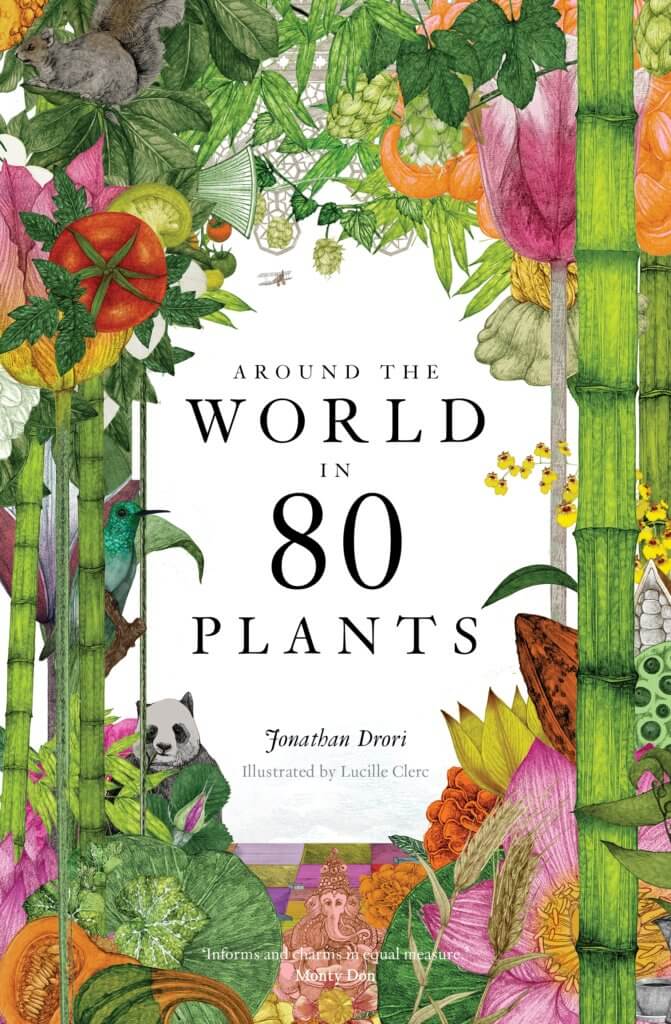
Around the World in 80 Plants will be available on April 15. Text by Jonathon Drori and illustrations by Lucille Clerc.
AU $39.99
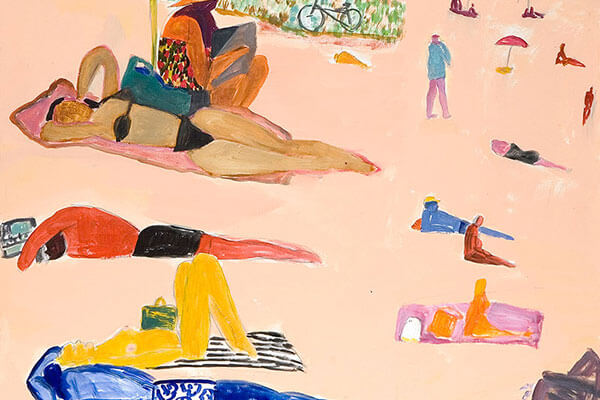
Over four decades, Ken Done’s exuberant artwork and design has become permanently embedded in Australian culture. His signature style has graced everything from ad campaigns to art cars, doona covers to swimwear, and his bright paintings of Sydney Harbour, the outback, the reef and so much more never fails to bring a smile to our faces. Amber Creswell Bell’s Ken Done: Art Design Life brings all of this together in the ultimate celebration of the man, his work and his legacy. Check out a few of our favourite works from the book in our gallery below.
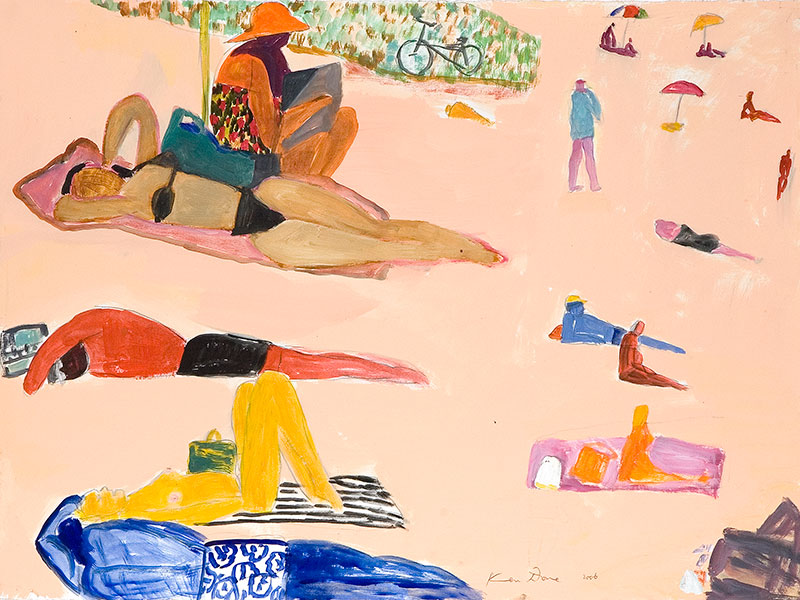
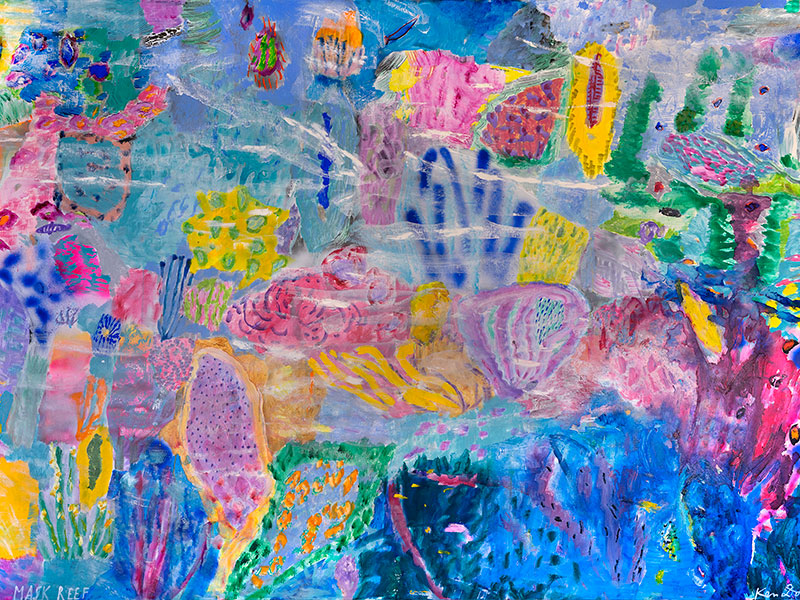
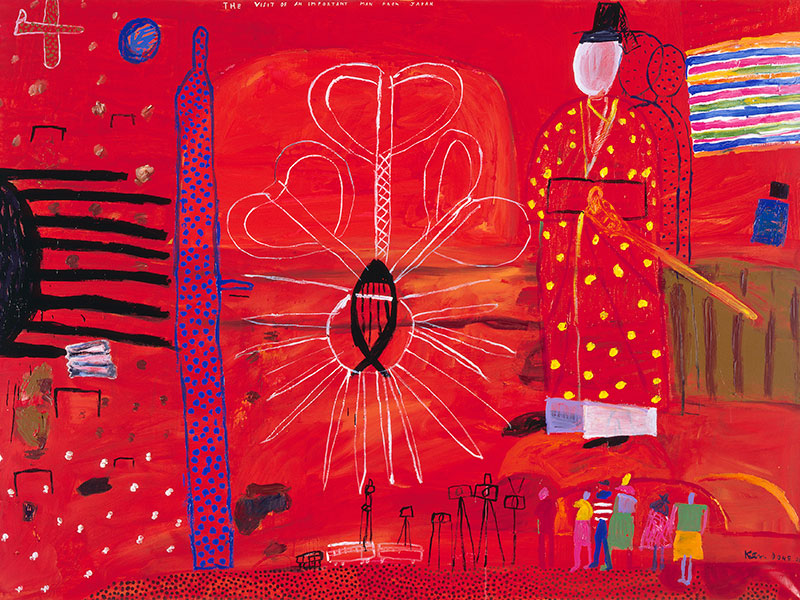
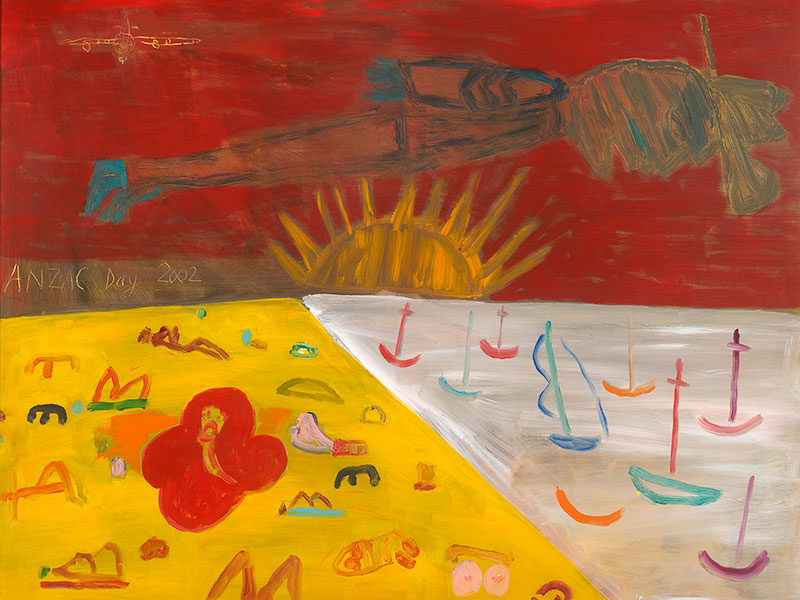
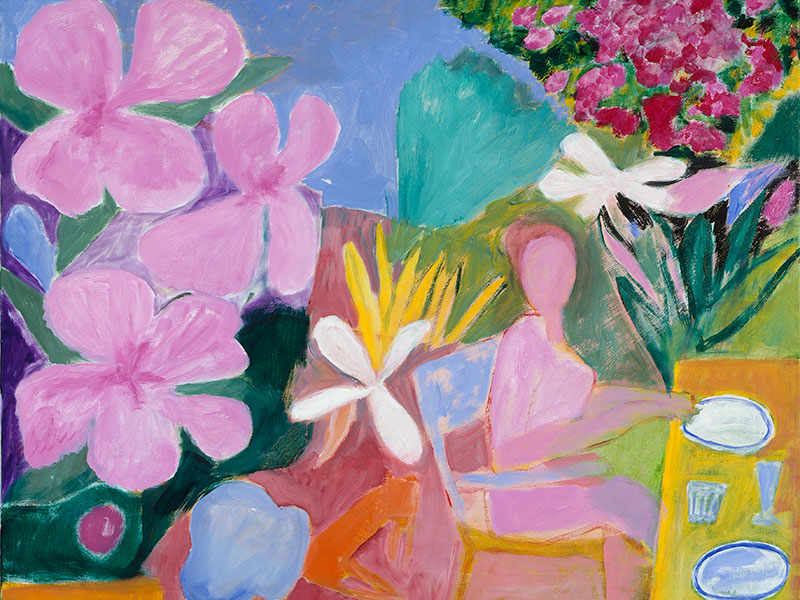
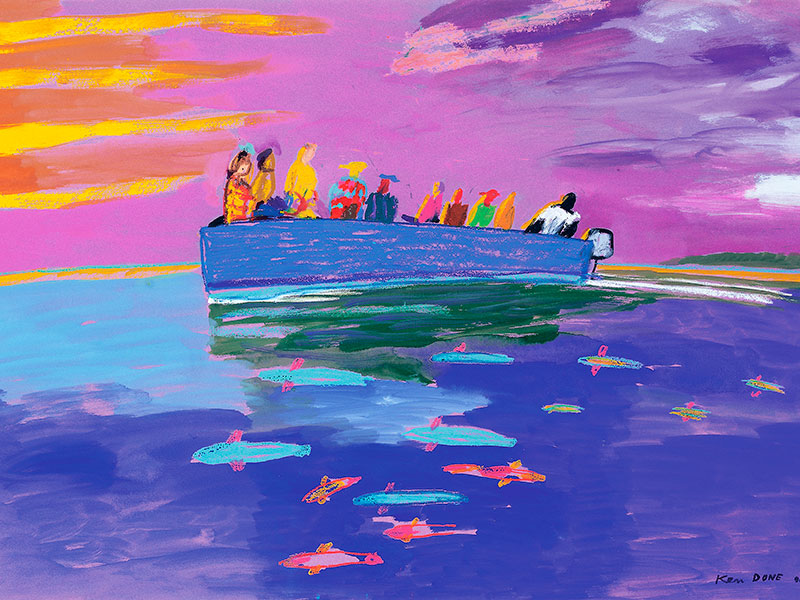
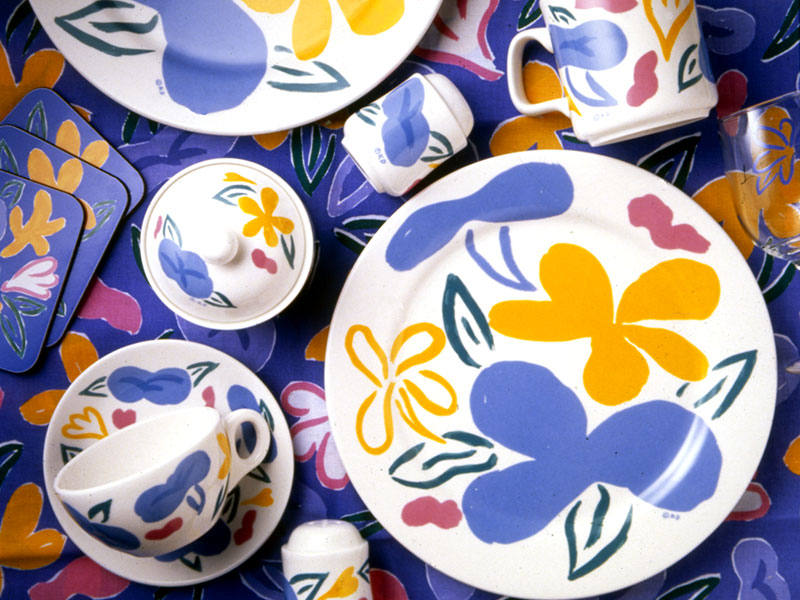

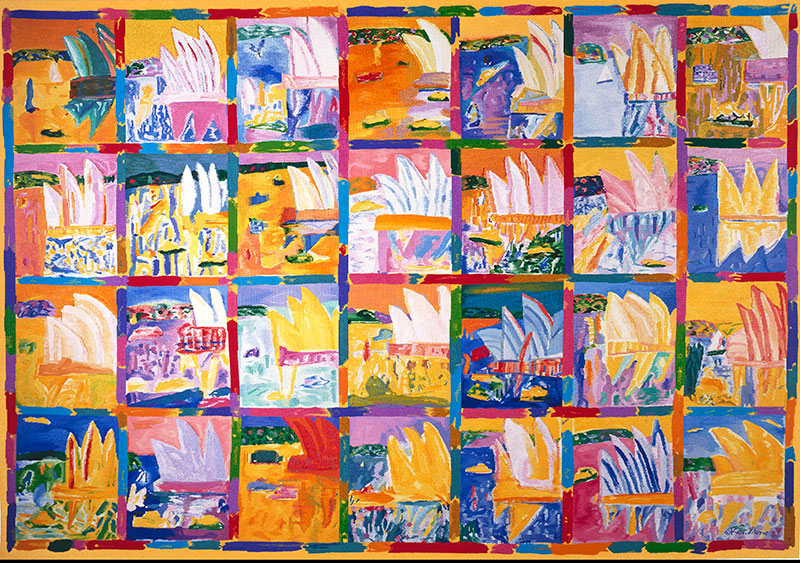
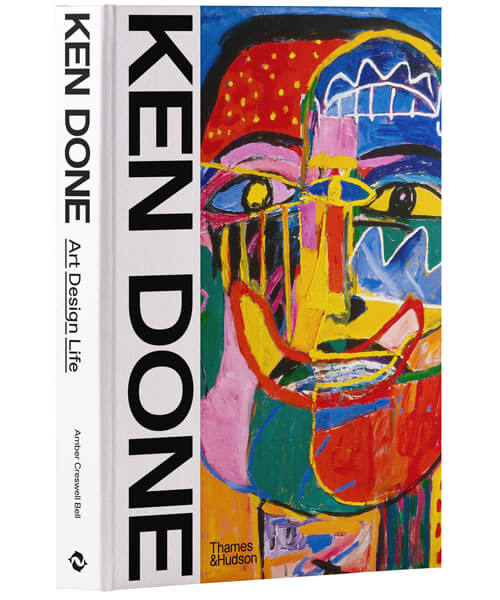
Ken Done: Art Design Life is available now. Text by Amber Creswell Bell and design by Evi-O.Studio.
AU$80.00
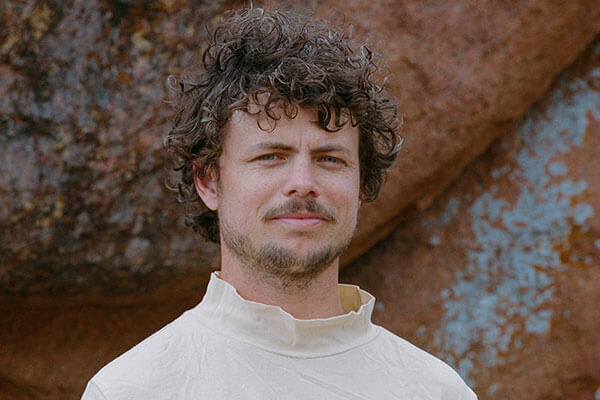
It is more important now than ever to inspire and educate children to think about the environment. Mathew Bate’s first picture book With a Little Kelp from Our Friends is certainly a step in the right direction, delving into the significance of seaweed and it’s potential to help tackle climate change. We asked Mathew to tell us a bit about how he became so acquainted with seaweed, its prominence in Australia and what led him to writing this vibrant book.
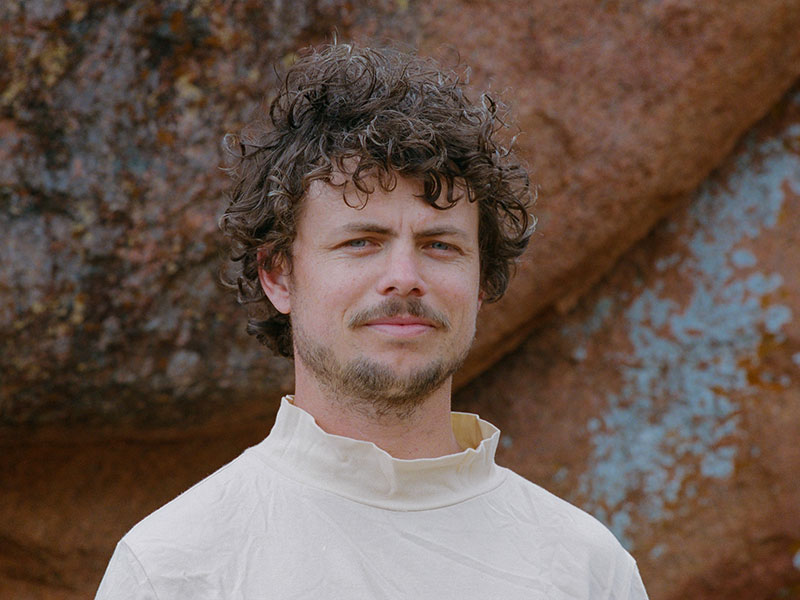
You are clearly a person of many talents, having worked as a former co-editor of Matters Journal, being a published poet and non-fiction writer and someone who knows their way around a camera. Do you have a favourite creative project that you have worked on?
That’s a tough question for me, I feel like all of my creative projects are part of one big lumpy collage — one thing always informs the next and so on. My creative process is largely me just bumping into things. I remember being in an introductory poetry subject at uni. We all had to put together a portfolio of poems. I went down to a velodrome near where I was living to write my first poem for this portfolio. A peculiar choice. I must have thought that watching bikes go round and round might spin some words out. I arrive and the velodrome was empty. Not a bike in sight. I sat in the middle on a grassy bit and squinted at the sun. Eventually a man and his daughter arrived, and I thought here comes my bike poem. But they didn’t have bikes. They unfurled a kite that was shaped like a boat. They took turns sailing it in the wind. I remember being so taken by the beauty of it all. I wrote my first poem that day and it had nothing to do with kites, or bikes. I’ve been jotting down things I see ever since.
You are currently studying regenerative agriculture — the first degree of its kind! Can you tell us a bit about what this means?
I’ve been studying the regenerative agriculture course at Southern Cross University for a year now. It’s becoming a bit of a buzz word but regenerative agriculture is essentially an umbrella term for a whole array of agricultural techniques and philosophies that aim to heal landscapes. We’ve gone off on a bit of a dangerous tangent with industrial agriculture and our planet is suffering because of it. Regenerative agriculture represents a break to that destructive and extractive approach to farming. Now, we’re seeing lots of inspiring farmers out there that are revitalising landscapes with a more holistic approach. Hopefully one day soon I’ll be one of them!
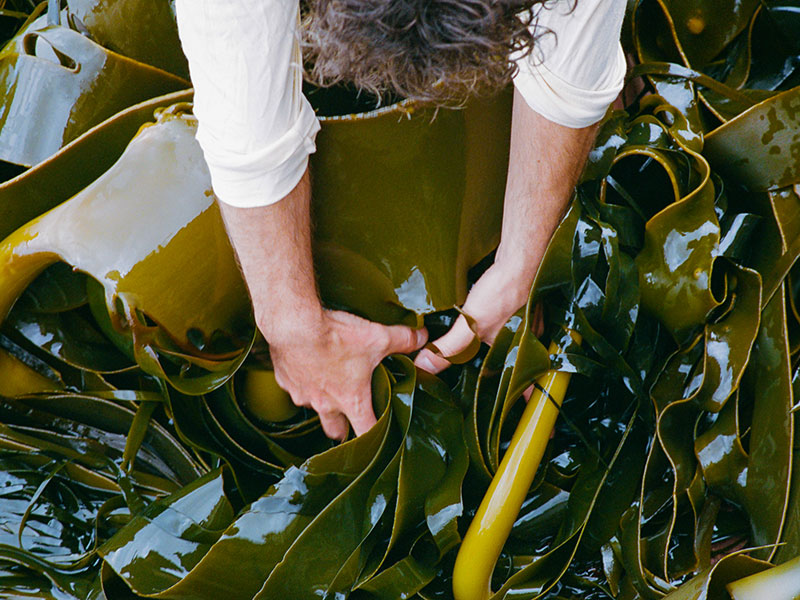
What led you to becoming a self-proclaimed kelp enthusiast?
I honestly feel like seaweed grabbed me by the ankle and pulled me underwater. I was first awoken to seaweed’s regenerative potential by Tim Flannery’s book Sunlight and Seaweed and Paul Hawken’s book Drawdown. I then ended up spending some time with Tim Flannery and a group of people on Heron Island, on the southern tip of the Great Barrier Reef, and from there my curiosity for seaweed kind of spiralled into an obsession. A healthy obsession.
For those of us who have grown up in Australia, what type of kelp would we be familiar with? What would we be surprised to find out about it and its potential uses?
We’re spoilt in Australia when it comes to seaweed diversity. South Australia is actually a seaweed haven; 60% of the seaweed’s found on the South Australian coastline are found nowhere else in the world. There are thousands of different types of seaweeds you can find washed up on the beaches in Australia. Everyone seems to love the kelps, a family of about 120 large brown seaweeds. Giant kelp can grow one metre in two days and can reach full maturity, up to 50m in length, in a matter of months. Recently there’s been some promising research into seaweed biofuels that can power vehicles, which is pretty neat. Many people are also not aware that there’s a long history of Aboriginal and Torres Strait Islander Peoples using seaweed to make shoes, water carriers and shelters.
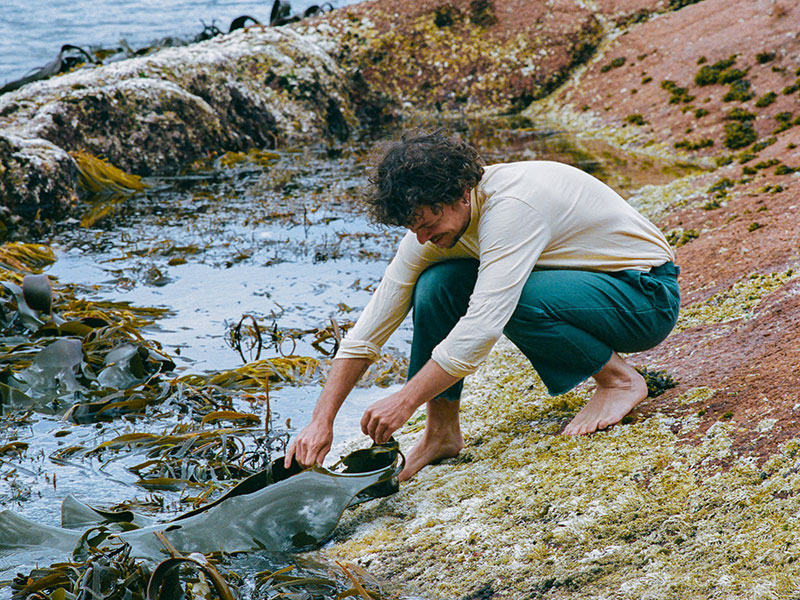
Where did the concept behind With a Little Kelp from Our Friends come from?
I suppose I really wanted to pull together all of these wonderful things I’d learnt to love about seaweed and present them in a book that everyone could read. There was a strong impulse to weave a narrative together that inspired love and wonder for the natural world, something that I think should be established as common ground. I was also thinking a lot about how to talk to children about climate change in a way that invites curiosity.
What was the research process behind the book like?
I was lucky that by the time I started planning the book I’d already done a fair amount of research. But there was a lot of research over several years. There were definitely times when the amount of research really tested my commitment to seaweed. Fortunately, I had a lot of people who were willing to share their knowledge and help me wade through the sea of information.

If children and adults alike should take one thing away from With a Little Kelp from Our Friends, what should it be?
Seaweed’s power doesn’t come from its ability to extract, prey or trick but its ability to create community and provide shelter and food. In that sense, we should take a leaf from seaweed’s book.
What’s next for you?
Oh gosh, who knows. Let’s see what I bump into next. Perhaps seaweed farming!

With a Little Kelp from Our Friends is available now. Text by Mathew Bate, illustrations by Liz Rowland and design by Hope Lumsden-Barry. Article photography by Charlie Perry.
AU$29.99
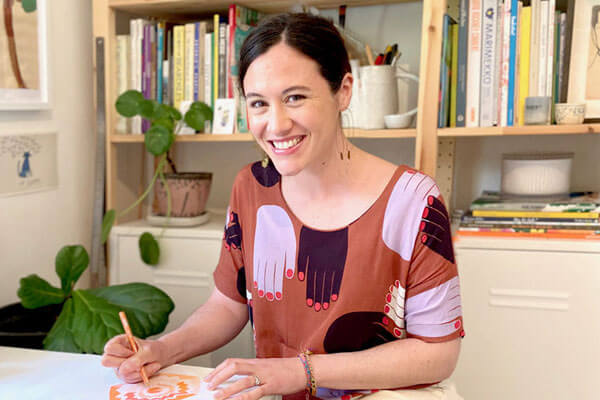
Kat Macleod really can do it all: having worked as a Melbourne-based illustrator, designer and exhibiting artist over the past twenty years, her journey has now taken her to the world of children’s publishing. Her first series with us is a staple set of four first concept books, covering the ABCs, 123s, colours and shapes. We spoke to Kat about her diverse career and how she was able to combine her love for art, illustration and children’s books.
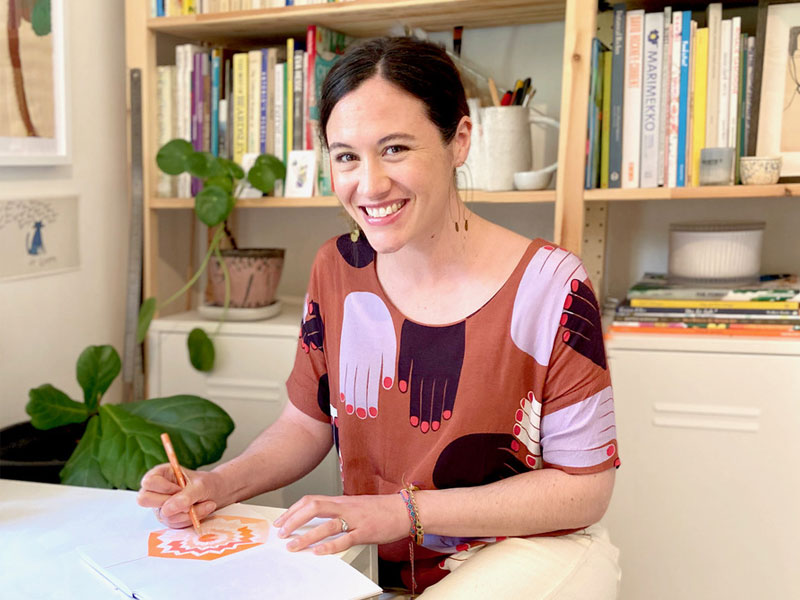
What sparked your passion for illustration, art and design?
I have loved drawing for as long as I can remember. As a child, my happy place was sitting and drawing at the kitchen table with textas and pencils. My high school art teacher encouraged me to study graphic design at uni, so that’s where I was introduced to the world of design. While I loved design and the structure and processes I learnt working in the industry for the past twenty years, at the heart of my practise is a deep passion and appreciation for art and illustration.
You have worked with lots of exciting clients, has there been a favourite project over the years that you can recall?
One of my favourite past projects is the first book I illustrated back in 2002, Bird. I had free reign to create a collection of drawings that were published as a limited edition art book with embroidered pages and a hand made cover. It’s very special to me as it marked the beginning of my career as an illustrator, and the realisation that I could combine my two greatest passions as a career path — design and illustration.
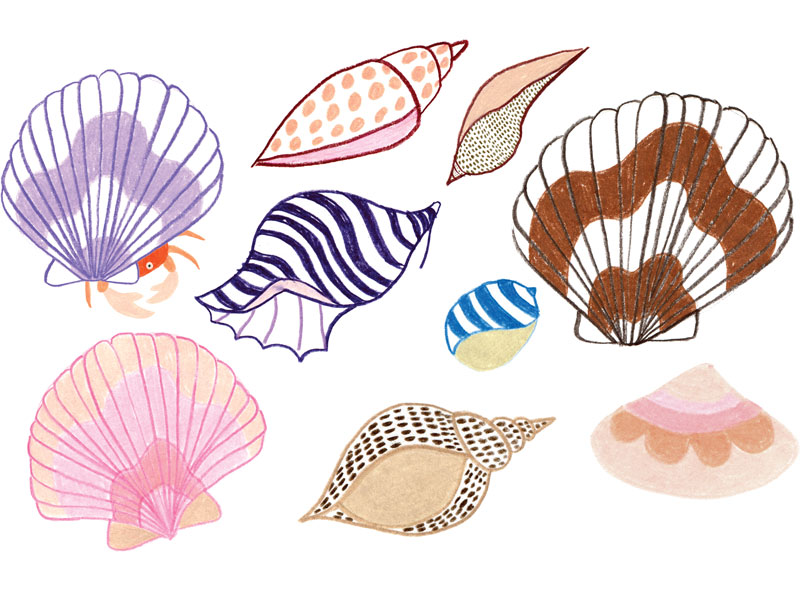
How would you describe your signature illustration style?
Textural, bright and layered.
Your work is endlessly creative — what inspires you?
Thank you! I am inspired by art, design, creative individuals, fashion, films, music … but my biggest inspiration is nature. Whether it’s beautiful old trees along the Australian coastline, or found leaves at our local park, I am always inspired by the shapes and colours of the natural world.
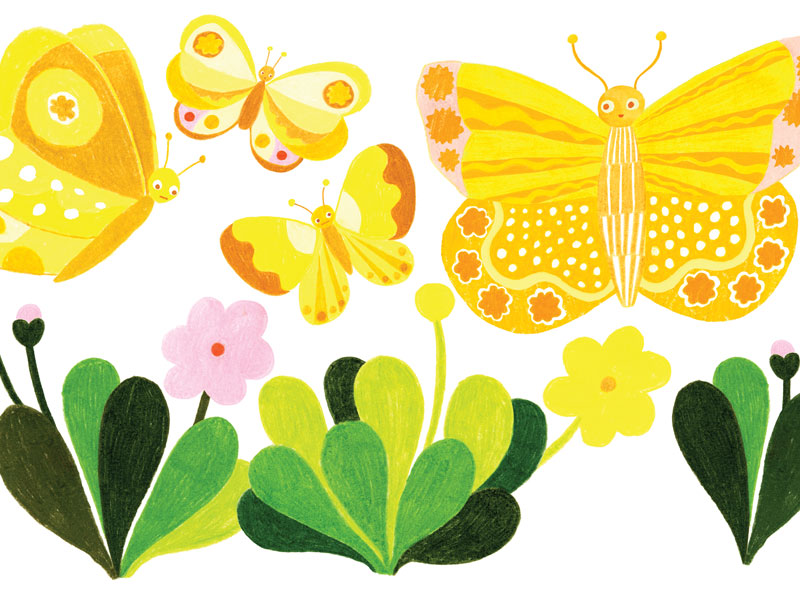
The Early Learners series is your first official foray into children’s publishing, what led you to the project?
I’ve been keen to work on children’s books for a long time and have made lots of little handmade books with my boys over the years. For my first step into the real world of children’s publishing it felt right to start at the beginning. Early learner board books are wonderful chunky little objects, full of illustrations and minimal text, and were very appealing to me as an illustrator and designer! It’s been a really exciting process to transition my illustrations from the art and design world into children’s books. Every page is an opportunity to create a composition of colour and form and lead the reader through simple narratives and playful themes.
What sets the series apart from other books for babies and toddlers?
These are colourful art-based books that are bright and engaging for babies and toddlers, and also hopefully are a pleasure for parents and carers to look at and read aloud.
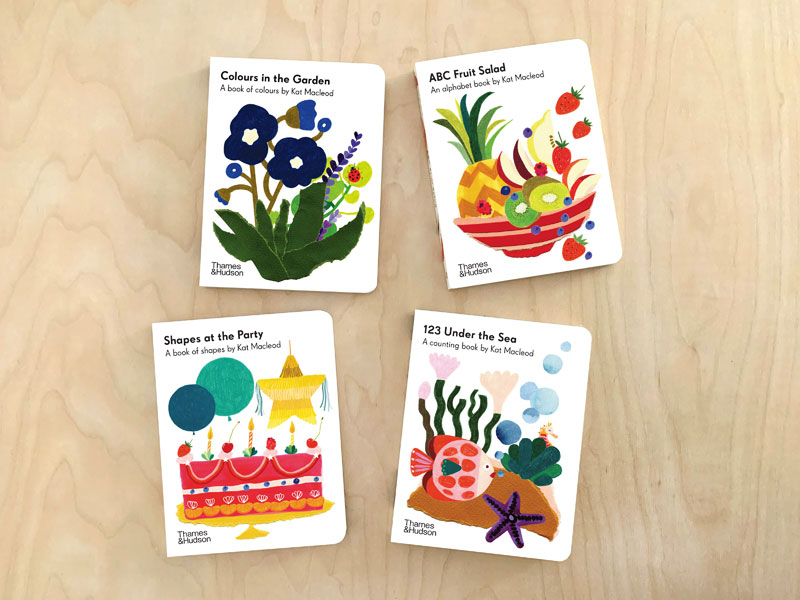
What challenges did you face in 2020?
I found 2020 challenging with the Melbourne lockdowns. Like most people, we really missed seeing our family and friends although I had plenty of company with my three active little boys home from school for so many months! The trickiest part was when schools closed, twice. I know I was not alone in finding it tremendously challenging to manage working from home whilst assisting my boys with tackling remote learning (big shout out to all the amazing teachers!) It was difficult to juggle everything but I know how lucky I was to be able to keep working, even if it meant after the boys were in bed. My husband is an essential services worker so I worried a lot about him at work too. It was a strange year but we have been lucky in Melbourne — the lockdowns and restrictions were inconvenient but they kept our city safe and all my loved ones stayed healthy, so I am extremely grateful for that.
What is next for you?
I am working on an exciting new picture book with you guys! It’s a really special little tale I’ve been dreaming up for a long time, I’m deep in the drawing stage. It’s such an exciting project and I can’t wait to share it.
Kat Macleod’s Early Learner series is available now. Text, illustration and design by Kat Macleod. Series includes:
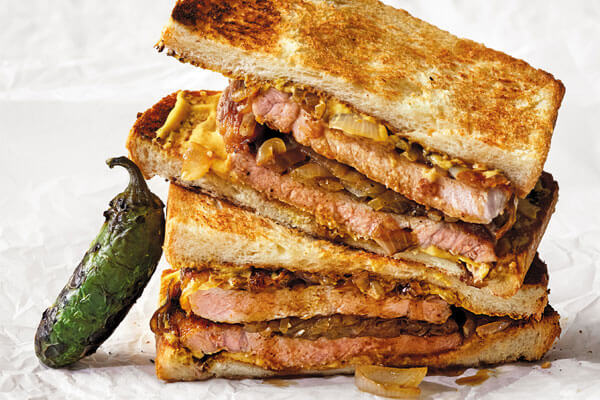
In his second cookbook, one of our favourite chefs Matty Matheson opens up his home and shares his approachable style of cooking. Get a taste of the bold and beautiful dishes Matty serves up in Matty Matheson: Home Style Cookery with these recipes for his Chicago-Style Pork Chop Sandwich and Green Curry Beef Ribs.
Chicago-Style Pork Chop Sandwich
Serves 2
Prep time: 15 minutes
Half of these sandwiches are inspired by my trips to Chicago, it seems, and this pork chop is a perfect piece of history. A bone-in pork chop sandwich may seem weird or even troublesome, but I feel it’s a challenge and I’m always up for it. Whenever I go to get one of these, I can smell the onions from down the street—piles of caramelized onions covering seared pork chops, keeping them warm like the belly of a mama bear. I love the kind of spots that can hand you a sandwich in less than a minute flat, and the whole family instantly has food that’s eaten on the hood of the car, eating and chewing away at an American classic that now can be made at home. You could buy good pork, maybe, or buy those frozen bone-in quarter-inch-thick guys that we all remember growing up.
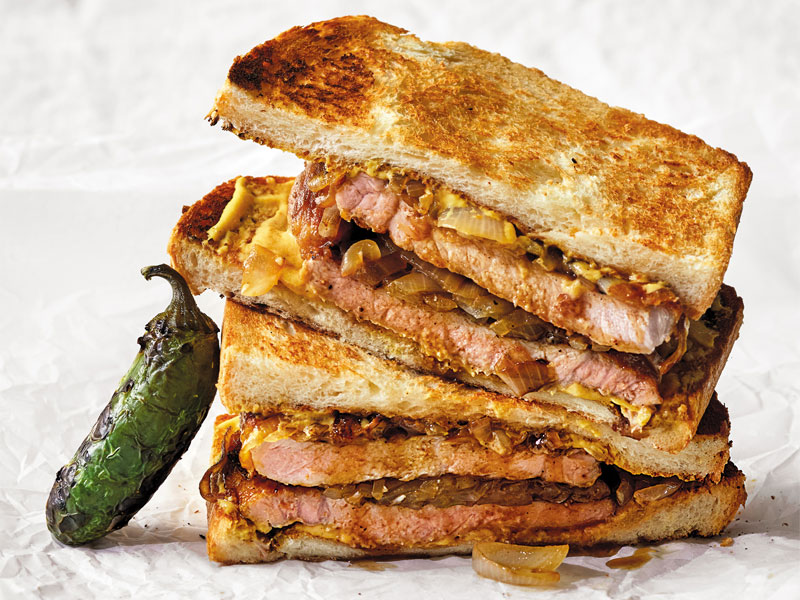
Ingredients:
Directions:
Green Curry Beef Ribs
Serves 4 to 6
Prep time: 3 hours
Meat and rice is the new meat and potatoes. And braised beef ribs in spicy green curry is great for any meal— breakfast, lunch, or dinner. Real flavor-building, real spice, real tasty meals for the whole family. Building your skills and your palates are very important to keep things exciting in your home life. And guess what, the day after, shred this beef and make little rotis; add some cheese, even. Fuck this shit up.
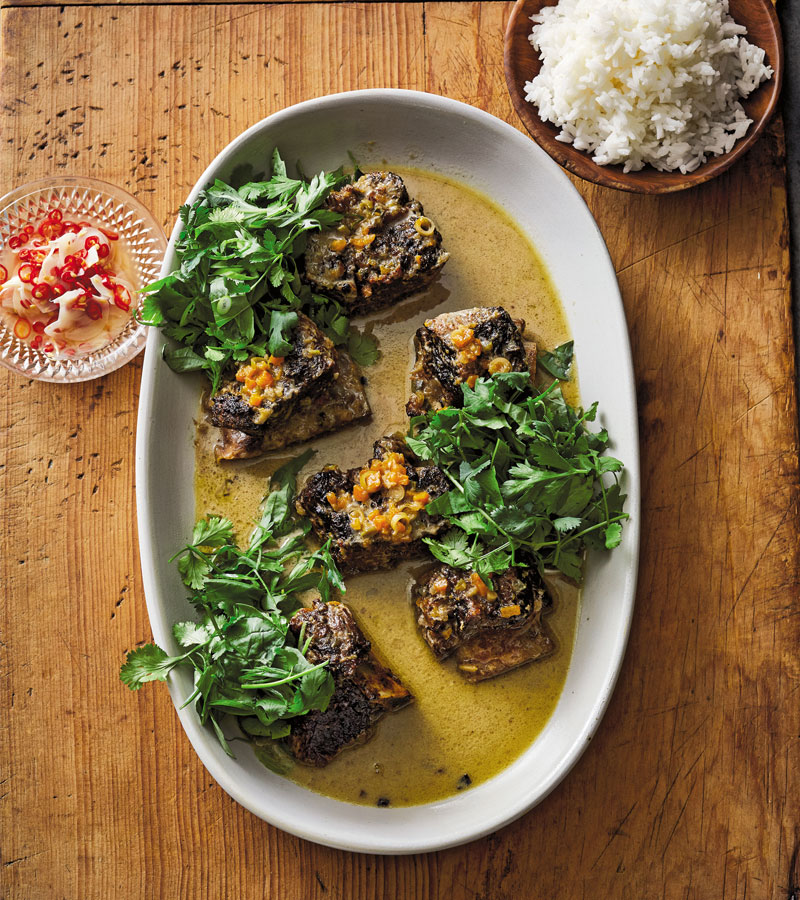
Ingredients:
For the beef short ribs:
For the pickled garlic:
For serving:
Directions:
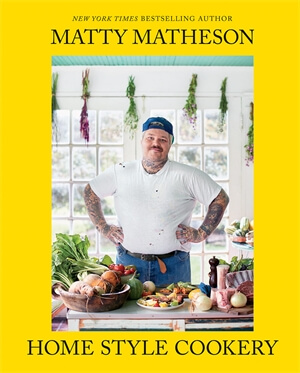
This is an edited extract from Matty Matheson: Home Style Cookery, out now. Text by Matty Matheson with photography by Quentin Bacon. Originally published by Abrams Books.
AU$49.99
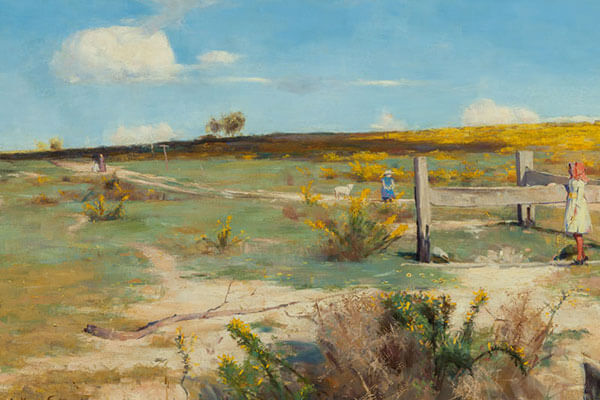
For those either living in or visiting Sydney this Summer, The Art Gallery of New South Wales is currently presenting the most significant retrospective of Australian impressionist artist Arthur Streeton. If you can’t get to this incredible exhibition before it finishes on 14 February 2021, the accompanying book Streeton will transport you there. This tome features essays by curator Wayne Tunnicliffe, over 275 paintings and much more.
Get a taste of both the exhibition and the accompanying book with the following collection of some of Streeton’s greatest paintings.
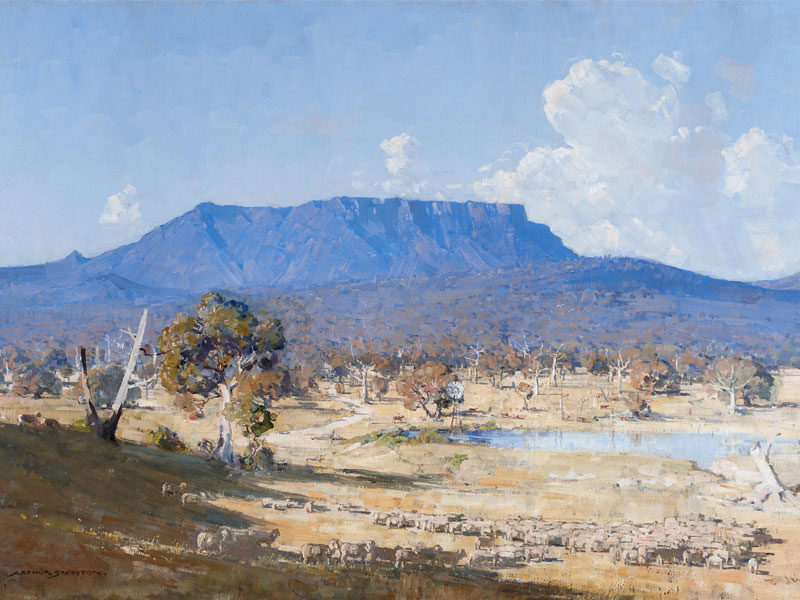
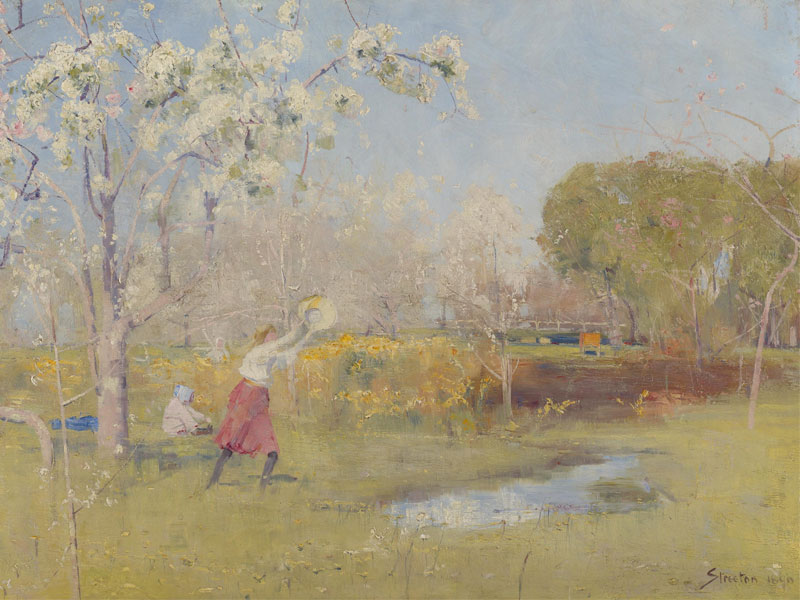
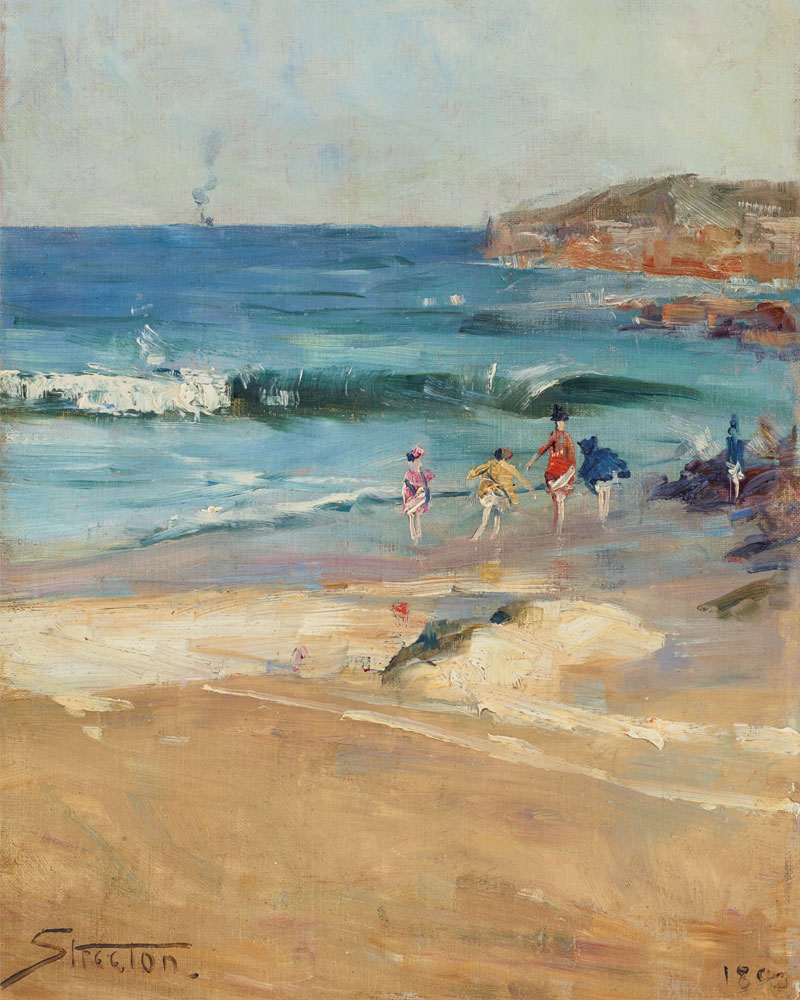
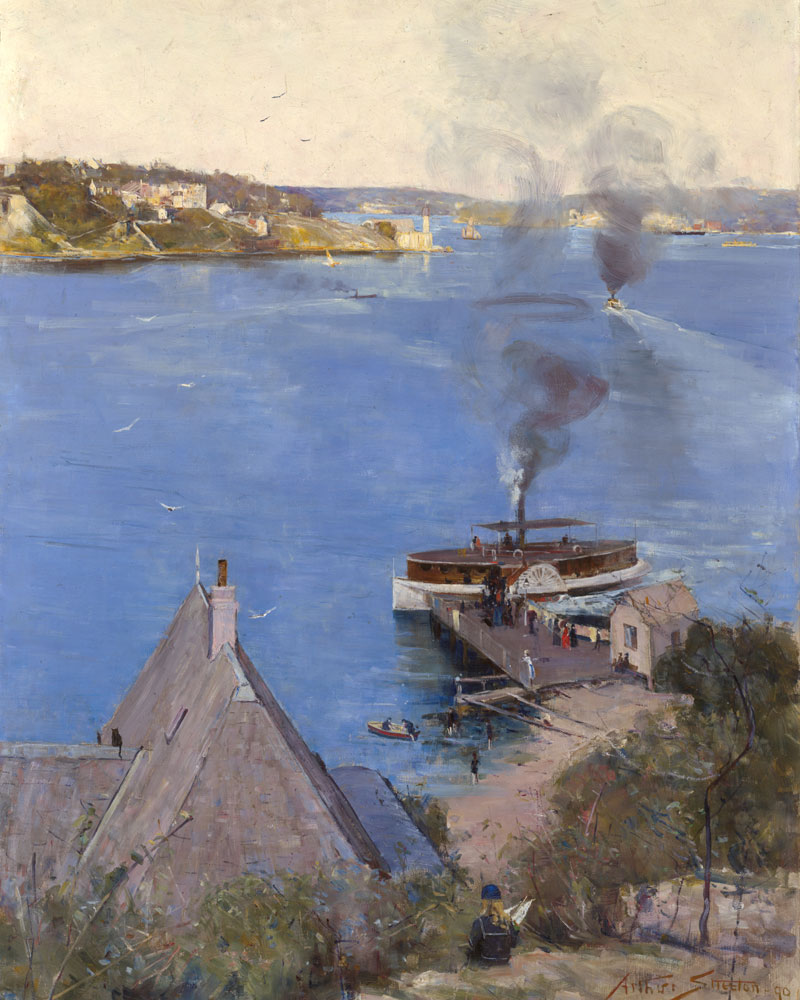
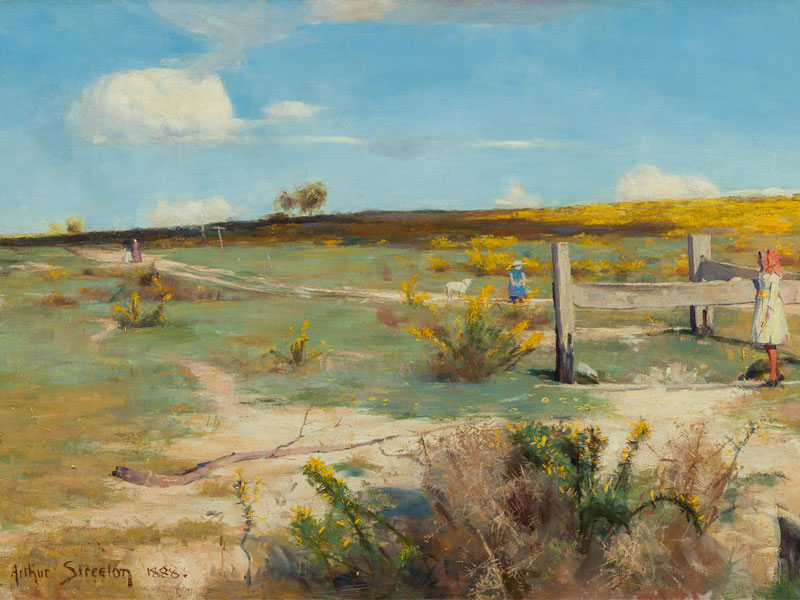
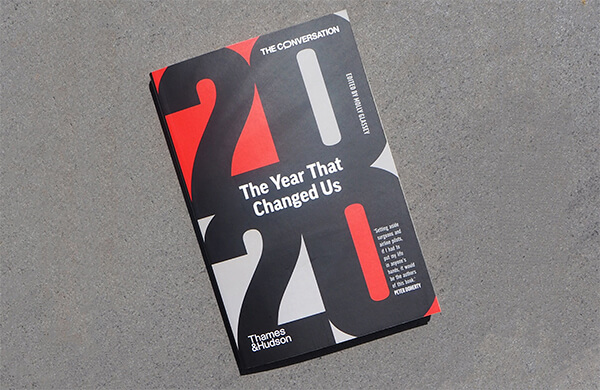
Kate Burridge, Professor of Linguistics, Monash University
Howard Manns, Lecturer in Linguistics, Monash University
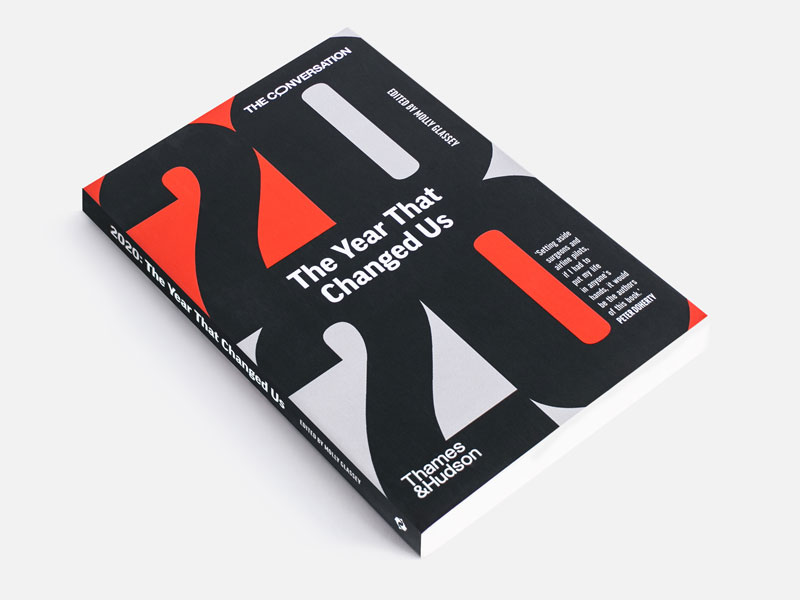
People love creating words – in times of crisis it’s a ‘sick’ (in the good sense) way of pulling through. From childhood, our ‘linguistic life has been one willingly given over to language play’ (in the words of British linguist David Crystal). In fact, scientists have recently found that learning new words can stimulate exactly those same pleasure circuits in our brain as sex, gambling, drugs and eating (the pleasure-associated region called the ventral striatum).
We’re leximaniacs at heart and, while the behaviour can occasionally seem dark, we can learn a thing or two by reflecting on those playful coinages that get us through ‘dicky’ times.
Tom, Dick and Miley: In the ‘grippe’ of language play
In the past, hard times birthed playful rhymes. The 1930s Depression gave us playful reduplications based on Australian landmarks and towns: ‘ain’t no work in Bourke’; ‘everything’s wrong at Wollongong’; ‘things are crook at Tallarook’.
Whenever we face the possibility of being ‘dicky’ or ‘Tom [and] Dick’ (rhyming slang for ‘sick’), we take comfort in language play. It’s one thing to feel ‘crook’, but it’s another thing to feel as ‘crook as Rookwood’ (a cemetery in Sydney) or to have a ‘wog’ (synonymous with ‘bug’, likely from ‘pollywog’, and unrelated to the ethnic slur ‘wog’).
Remedies may be found in language’s abilities to translate sores into plasters, to paraphrase William Gouge’s 1631 sermon on the plague. New slang enables us to face our fears head-on, just as when the Parisians began calling a bout of late-18th century influenza ‘la grippe’ to reflect the ‘seizing’ effect it had on people. The word was subsequently taken up in British and American English.
In these times of COVID-19, there are the usual suspects: shortenings like ‘sanny’ (hand sanitiser) and ‘iso’ (isolation), abbreviations like BCV (before coronavirus) and WFH (working from home), as well as the compounds ‘corona moaner’ (the whingers) and ‘zoombombing’ (intrusion into a videoconference).
Plenty of nouns have been ‘verbed’ too – the toilet paper/pasta/tinned tomatoes have been ‘magpied’. Even rhyming slang has made a bit of a comeback, with Miley Cyrus lending her name to the virus (already end-clipped to ‘the Miley’). Some combine more than one process – ‘the isodesk’ (Or is that ‘the isobar’?) is where many of us are currently spending our days.
Slanguage in the coronaverse: What’s new?
What is interesting about COVID-lingo is the large number of creations that are blended expressions formed by combining two existing words. The new portmanteau then incorporates meaningful characteristics from both.
Newly spawned ‘coronials’ (corona + millennials) has the predicted baby boom in late 2020 already covered. ‘Blursday’ has been around since at least 2007 but originally described the day spent hung over; it’s now been pressed into service because no one knows what day of the week it is anymore. The official disease name itself, ‘COVID’, is somewhere between a blend and an acronym because it takes in vowels to make the abbreviation pronounceable (CO from corona, VI from virus and D from disease).
True, we’ve been doing this sort of thing for centuries – ‘flush’ (flash + gush) dates from the 1500s. But it’s never been a terribly significant method of coinage. English professor John Algeo’s study of neologisms over a fifty-year period (1941–91) showed blends accounting for only 5 per cent of the new words. Linguist Tony Thorne’s impressive collection of over 100 COVID-related terms has around 34 per cent blends, and the figure increases to more than 40 per cent if we consider only slang.
Not only have blends become much more common, the nature of the mixing process has changed too. Rather than combining splinters of words, as in ‘coronials’, most of these corona-inspired mixes combine full words with parts of others. The ‘quarantini’ keeps the word ‘quarantine’ intact and follows it with just a hint of ‘martini’ (and for that extra boost to the immune system, you can rim the glass with vitamin C powder). Many of these bubbled up during specific times of the pandemic – ‘lexit’ or ‘covexit’ (the strategies around exiting lockdown and economic hardship), ‘coronacation’ (working from home) and so on.
Humour: From the gallows to quarantimes
Humour emerges as a prevailing feature of these blends, even more so when the overlap is total. In ‘covidiot’ (the one who ignores public health advice and probably hoards toilet paper), both ‘covid’ and ‘idiot’ remain intact. There’s been a flourishing of these types of blend, including ‘covideo party’, ‘coronapocalypse’ and ‘covidivorce’, to name just a few.
Clearly, there is a fair bit of dark comedy in the jokes and memes that abound on the internet, and in many of these coinages too – compounds like ‘coronacoma’ (for the period of shutdown, or that deliciously long quarantine sleep) and ‘boomer remover’ (used by younger generations for the devastation of the baby boomer demographic).
Callous, heartless, yes. But humour is often used as a means of coming to terms with the less happy aspects of our existence. People use levity as a way of disarming anxiety and discomfort by downgrading what it is they cannot cope with.
Certainly, gallows humour has always featured large in hospital slang, with diagnoses like GOK (‘God only knows’) and PFO (‘pissed and fell over’). For those who have to deal with dying and death every day, it is perhaps the only way to stay sane. COVID challenges us all to confront the biological limits of our own bodies, and these days humour provides the much-needed societal safety valve.
So what will come of these creations? The vast majority will fall victim to ‘verbicide’, as slang expressions always do.
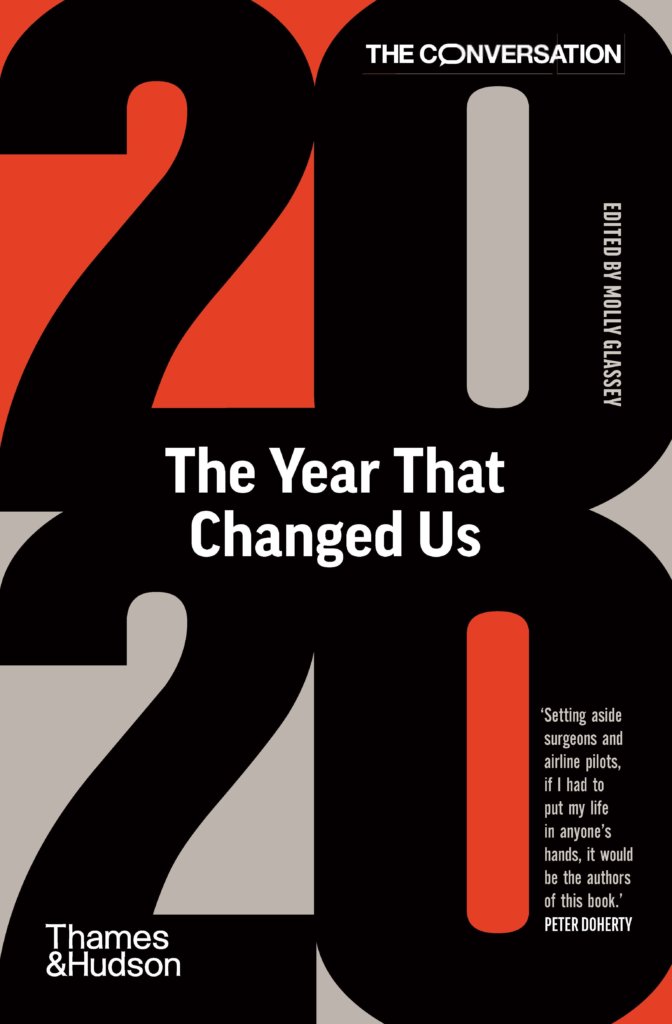
This is one of the fifty essays from 2020: The Year That Changed Us edited by Molly Glassey and co-published with The Conversation. Available now.
AU$21.99

Jacqui Lewis and Arran Russell are best known as the powerhouse team behind The Broad Place, a global school for creativity, clarity and consciousness. Now, they have released their first book High-Grade Living, a modern guide to wellbeing. Here we share an extract from the book focusing on one of the pillars of meditation: breath meditation.
We recommend learning meditation in person with a teacher, rather than from a book. However, you can get started on your own with a beginner’s style of meditation that is widely used, where the breath is the focal point.
Even though we’re breathing all the time, we often forget to breathe deeply and properly in the course of our day. Breath meditation helps us centre ourselves and become completely aware and present.
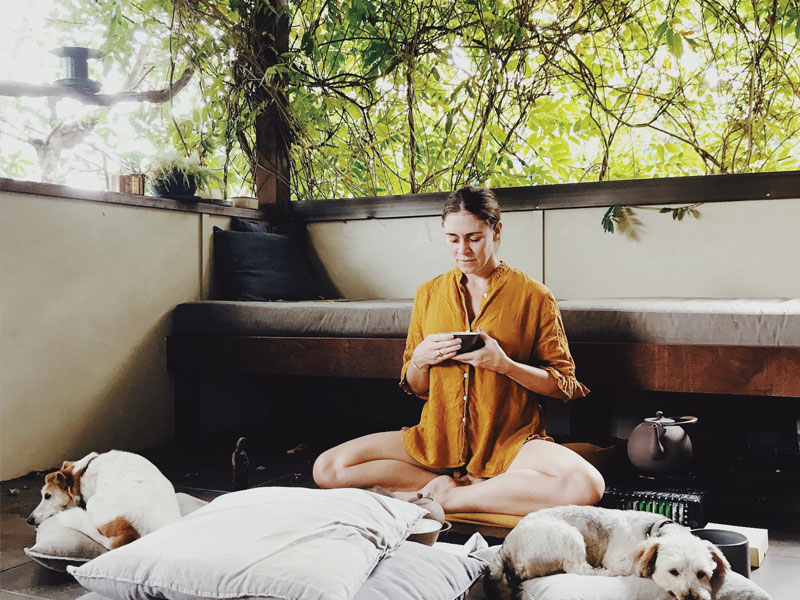
Putting into practice
First, get yourself into a comfortable seated position. Sitting still is very important for this technique, so finding a way to sit comfortably is key.
Ideally, you should start breath meditation by sitting cross-legged on the floor, with your back straight. Some find it helpful to sit on a cushion to raise the buttocks off the ground and allow the legs to fall gently forward.
However, you may find that while sitting on the floor without a back support, you slump your back and shoulders. It’s important to have a straight back, so we recommend sitting on a chair to begin with if you need that extra support. Experiment with both methods and find what works best for you.
Once seated, ensure that the spine is straight, the chin gently tucked in and the shoulders relaxed. Rest your hands comfortably and gently in your lap.
Close your eyes and become aware of your breathing. Your breaths should be light and easy, and gradually become longer in length.
Your breath is your guide during this meditation and it is what you come back to as an anchor for the busy mind.
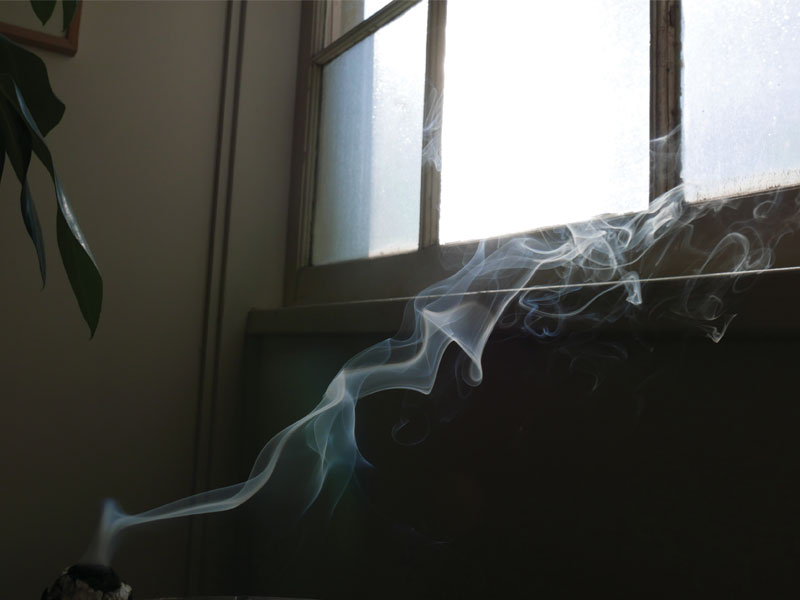
Now move your focus to place your awareness on the lower belly. In Japanese practice this is known as the hara. Focus your mind intently there and breathe into this space. The belly should expand with each breath in and contract with each breath out. Each time you are distracted by thoughts (which will be constantly), this is the space you come back to.
As you concentrate on your breaths, the mind will dash about, the body will distract and surrounding noises will pester you. Don’t worry; this is normal. When you find yourself distracted, simply come back to the breath. How does it feel in the body? Are the breaths long and slow, or are they shortening naturally? Bring your awareness back to the hara and your attention back to the breath.
Repeat this practice once or twice a day for 15 minutes. Routine is very important and will ground your practice.
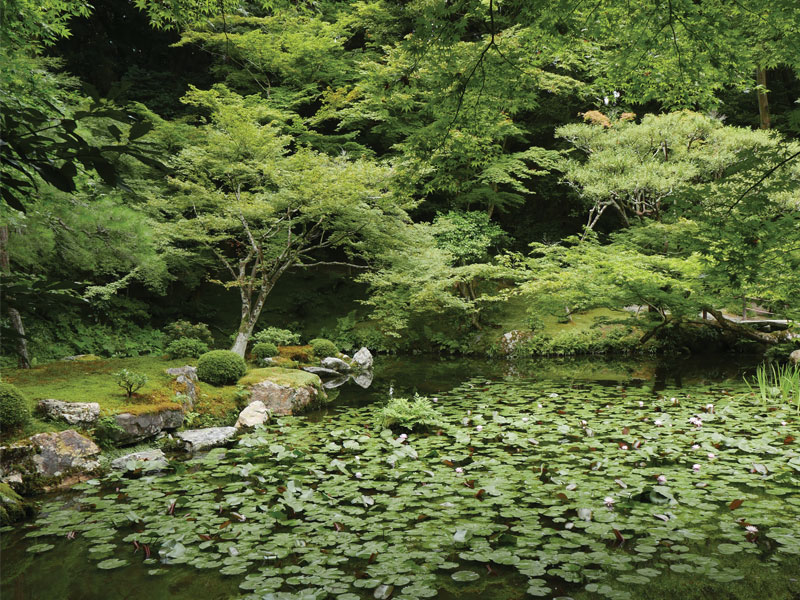
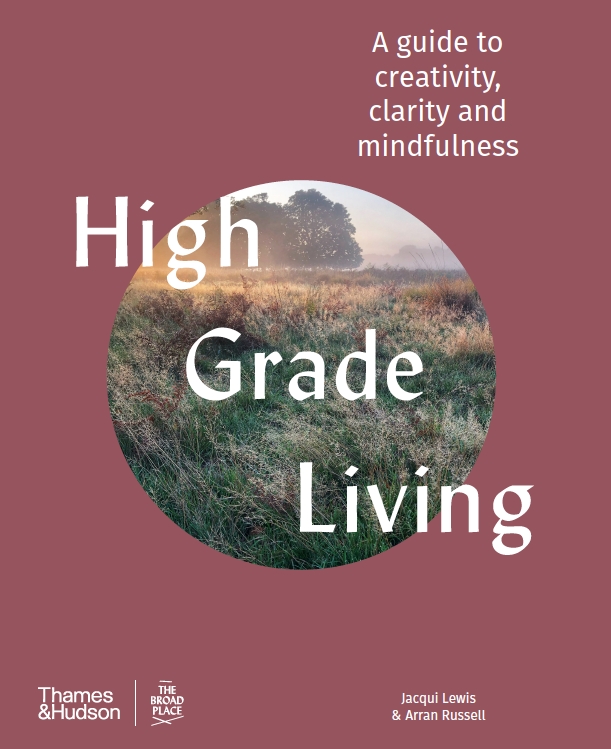
This is an extract from High-Grade Living, out now. Text and images by Jacqui Lewis and Arran Russell with design by Arran Russell.
AU$49.99

Songlines is the first in the First Knowledges series of six books that will give an in-depth understanding of Indigenous expertise in six areas. The second and third books on Design and Country will be published in 2021.

LYNNE KELLY
If Indigenous art forms such as song, story, dance and ceremony are so similar and so effective in cultures around the world, why aren’t we using them in contemporary Western education? Why can’t we all benefit from Indigenous techniques for learning and storing knowledge?
The answer is simple: we can. All Indigenous knowledge techniques reflect the way the human brain stores information – the way your brain stores information. So why not use these knowledge methods alongside the techniques you already have? You don’t have to give up writing or technology. You don’t have to give up anything to add to your toolbox of memory aids and learn from the knowledge technologies that Indigenous cultures have been perfecting for millennia.
It’s time to go beyond learning about Indigenous cultures and start learning from them. If you start incorporating some of the ideas in this book into your personal knowledge system, you will experience the power of Songlines.
WITHOUT MEMORY, THERE IS NO KNOWLEDGE
Almost all human knowledge is now available on the internet – you just have to search for it. So why bother memorising anything? This worrying question is asked far too often.
Firstly, you can’t look up something if you don’t know it exists.
Secondly, as you burrow down to specific information, you can’t connect it to the bigger picture. Creativity – the way to see things in new ways and construct new ideas – depends on being able to see and understand from different directions. If you don’t have various forms of knowledge in memory, how can you identify new patterns and ideas? All you are capable of doing is regurgitating the information that has already been neatly written and indexed for you.
Thirdly, how often do the knowledge keepers in every society have to make decisions based on what they know, without the time to go and look it up? How would you feel about a doctor who had to look up every symptom you mentioned? Or a policeman who had no idea what the law stated? Or a singer who knew none of the lyrics without an autocue?
Fourthly, if you want to go to the higher levels of thinking that we educators talk about endlessly in education – analyse and synthesise, hypothesise and theorise – then you have to analyse, synthesise, hypothesise or theorise about something. Otherwise, your new thinking is meaningless. By grounding your knowledge, literally, in Songlines, you have a firm knowledge base on which to build ever more complex layers of understanding.
And finally, your brain is a muscle. Like every other muscle in your body, it will slowly atrophy if you don’t use it. Looking up information and regurgitating it does not exercise your brain at all.
All knowledge is based on memory, and all memory is prompted by cues. One of the great gifts on offer to us from those who understand Songlines is how to set up those cues and push our memory just that much further to a capacity we have never experienced before.
MARGO NEALE
Like the Songlines that never end, the promise of this book is to open you up to a new way of understanding and a new way of knowing and being Australian on this continent. As an Australian, you too share a kinship with the First Peoples. We are all beneficiaries of the deep history of this continent and its long human occupancy stretching back thousands of generations. Immerse yourself in this legacy. It is a shared history in a shared country.
Elders from the Songlines exhibition who are custodians of the Seven Sisters Songline are very clear about why all Australians need to know about the Songlines. As they say, if you want to share this country with us then you need to know your stories beyond the last couple of hundred years. If you want to truly belong to this country, as Australians, you have to know your story about this place, this continent and its creation: ‘We are here to teach you your stories, not just to share ours. Without the deep stories you can’t take root, you will only ever be a transplant.’
The elders are not talking about sharing their stories; they are talking about telling you your stories.
Understanding how the Songlines work as a framework for relating people to each other and to place will give you the key to belonging. Learning how to integrate the dual knowledge systems from the first and second Australians will give you access to a third archive and with it, power over knowledge.
Songlines divulge powerful lessons about what it means to be human and to live on this earth. They offer us the promise of connectivity to each other and our planet in a fragmenting world.
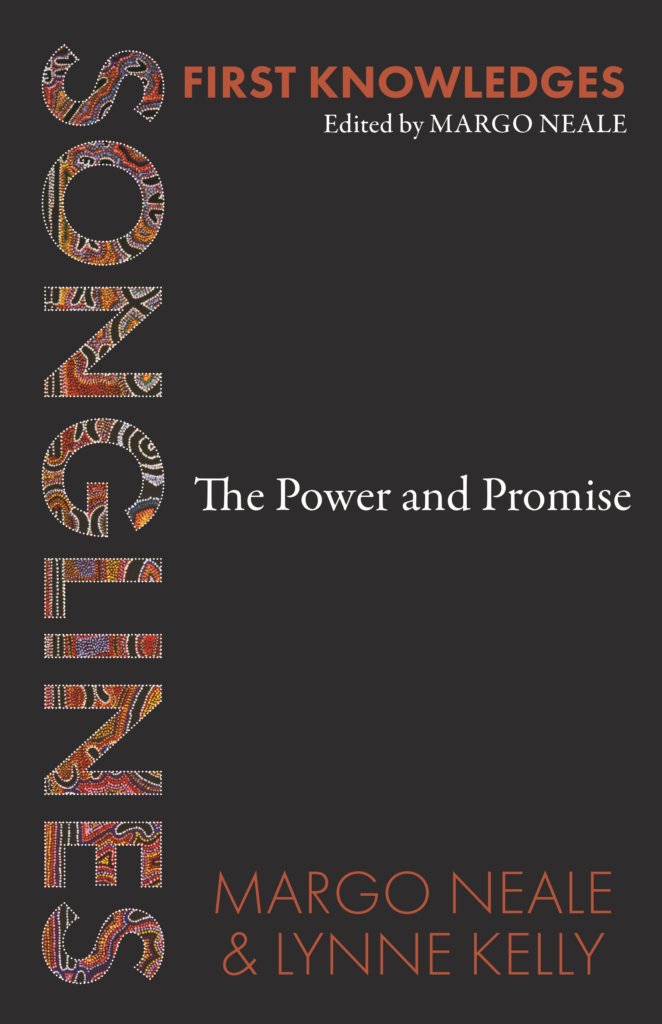
This is an edited extract from Songlines: The Power and Promise by Margo Neale & Lynne Kelly, available now. Series editor Margo Neale and cover design by Nada Backovic. Ebook also available.
AU$19.99
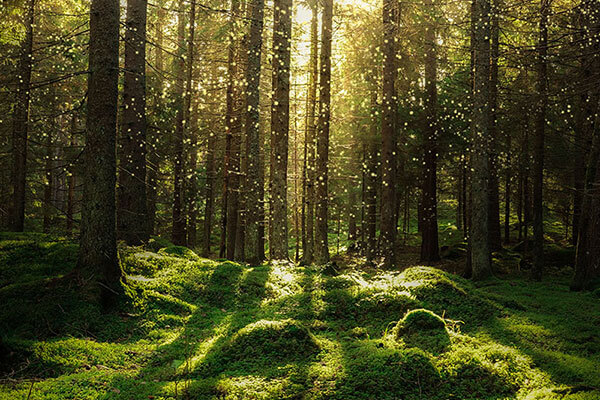
Award-winning author Lewis Blackwell is known for publishing books that inspire ideas, evoke passion and embrace nature. His latest book, The Life & Love of the Forest, takes you on a visual tour of some of the world’s most majestic woodlands. We spoke to Lewis about his dynamic career, his love for nature and what he hopes readers will take away from the book.

You have worked as a leading author, the creative head of Getty Images, the editor in chief and publisher of Creative Review magazine, and much more. What has been your career highlight so far?
What a tricky question. Perhaps I should give that honour to getting the first job, fresh out of university, when I really wanted to be writer but didn’t have much of a clue. I wanted to be a writer of… whatever, as long as it meant interesting people in interesting places. I sent off a lot of letters — this was pre-internet! — and almost all of the targets politely replied. And said they had no jobs. But then I struck lucky, and an excellent editor on a local evening paper in Devon saw something in me. In no time at all, I was writing masses of stuff that was getting published. Almost all of it instantly forgettable. But I learned a lot. And even then, I was sometimes engaging with environmental stories, and good photography (not mine, my friend Martin, the trainee photographer).
You are currently director of the Cresta Awards. Can you tell us a bit about your role and how it intersects with environmental issues?
The awards are about creative standards and we have work entered from more than 70 countries — all kinds of creativity in communication. It’s interesting how strongly environmental issues are a key and growing part of how brands express themselves around the world. I guess it is reflection of a rising consciousness that the environment needs protecting. One thing I want to do with Cresta is to find a way of channeling some of the great support we get from entrants into more long-term communication that can support environmental conservation.
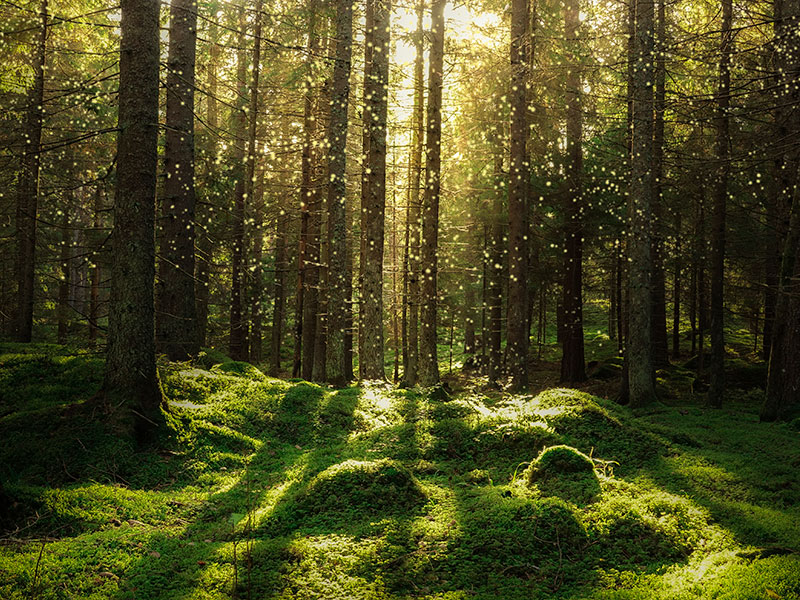
Where does your passion for nature stem from?
I roamed around the English countryside a lot as a child, with friends. It was either idyllic or neglect, perhaps a mix of both. We were scarcely environmentalists, but I did ‘take in’ nature. And I grew up on a fairly remote small farm for a while, where the natural world was much of what I spent time encountering. ‘Nature’ was entertainment. I’d take a day or two of school to read a book, go for a walk, take the horse for a ride. Trees and unkempt near wilderness, and so on, were everyday matters. I went back to the area recently and discovered quite a lot of the low-yielding land was now covered in small glittery rows of solar panels, farming the sun. Nothing had changed to improve the environment, although I guess the feed-in power helped the rural poverty. So, my passion now perhaps comes out of a sense of loss, of not taking opportunities earlier to fully appreciate and act in a stronger conservationist way. That’s a personal loss, and also a sense of a much wider communal failure.
The Life & Love of the Forest is a follow-up to your best-selling books The Life & Love of the Sea, The Life & Love of the Trees, The Life & Love of Cats and The Life & Love of Dogs. Why did you feel compelled to capture forests next?
Forests are inspiring beautiful subjects to show… and also a way into an important story. We all need to have a much stronger sense of the connectedness of our natural world. We need to better understanding how soil, light, water, bacteria, fungi, plants and animals, etc., all work together to make a healthy forest, and that the complexity of the forest is a key part of what makes our world liveable. It’s increasingly not a ‘nice to know’ but a fundamental, something that should be part of how we all sense our part in the world.
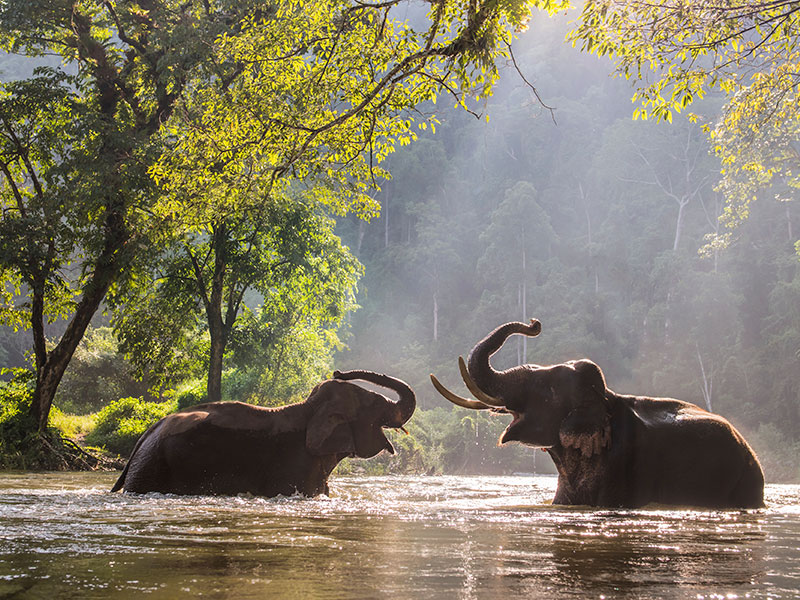
There are plenty of important messages evoked throughout the book – if readers can take one thing away from The Life and Love of Forests, what would you like it to be?
If there is one thing I would like people to do as a result of reading The Life and Love of Forests, it would be to share some of the knowledge with others. Particularly young people. You can inspire a young person with interest about plants, animals, fungi — just find the bits that excite them. There are endless options. So if there’s one thing I want you, dear reader and (I hope) forest lover, to do it is to sign up some more forest lovers who have a long life ahead of them to love, protect and grow healthier forests.
Do you see a future in which we can co-exist with nature long term? How has the pandemic changed your outlook on this?
I think we have to believe in a future where we can co-exist with nature. The alternative is that we don’t exist. Nature will come back in some form, but we might not. If we have wiped most of it out, then the resulting hellish world will wipe us out. And nature will start to recover. If we work together to protect and support species diversity, which is a big ask but is entirely do-able, then we can feed ourselves better and yet not eat up the planet. We can create massive natural reserves in the ocean and on land and yet have more produce. It is all possible, but it takes joined-up thinking and a different kind of politics than we are seeing today. But it could change quite quickly. The pandemic has taught us that much: things can change very quickly and we can respond quickly.

What’s next for you?
I’m looking to create more books — one or two ideas are in development — and do more with Cresta. I want to keep learning, keep discovering and do this while meeting interesting people in interesting places. Right now, I’m trying to write something for an environmental film. I’ve a lot to learn and hopefully some skills to flex while doing the learning. It is fascinating. And answering these questions have reminded me that, up next, or very soon, must be a return walk in one of my favourite forests, a royal one indeed, here in Scotland where I am currently spending time.
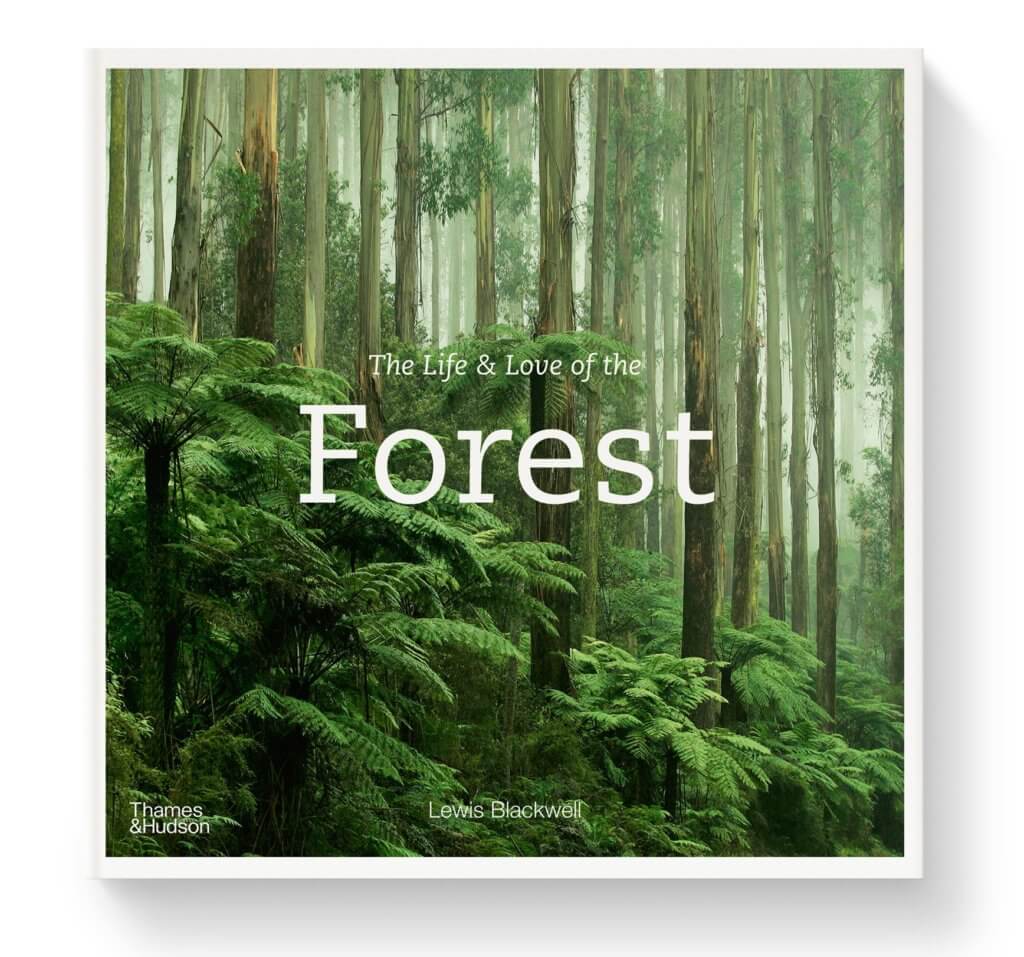
The Life & Love of the Forest is out now. Text by Lewis Blackwell, cover image copyright © TonyFeder and design by Blackwell & Ruth.
AU$80.00
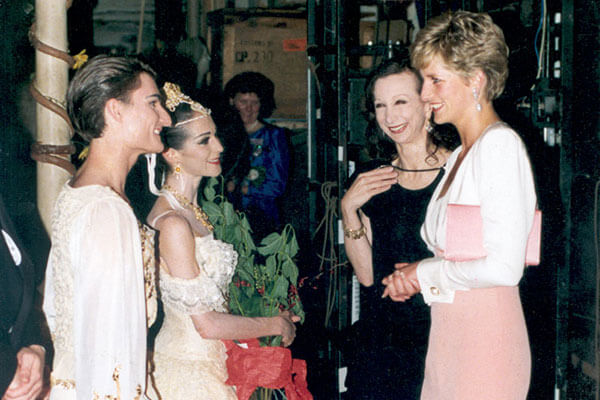
Ballet great David McAllister’s memoir Soar: A Life Freed by Dance is filled with enchanting stories from his life on and off the stage. In this edited extract from the book, he shares one of his most memorable experiences as a dancer for The Australian Ballet, performing for Princess Diana in 1992.
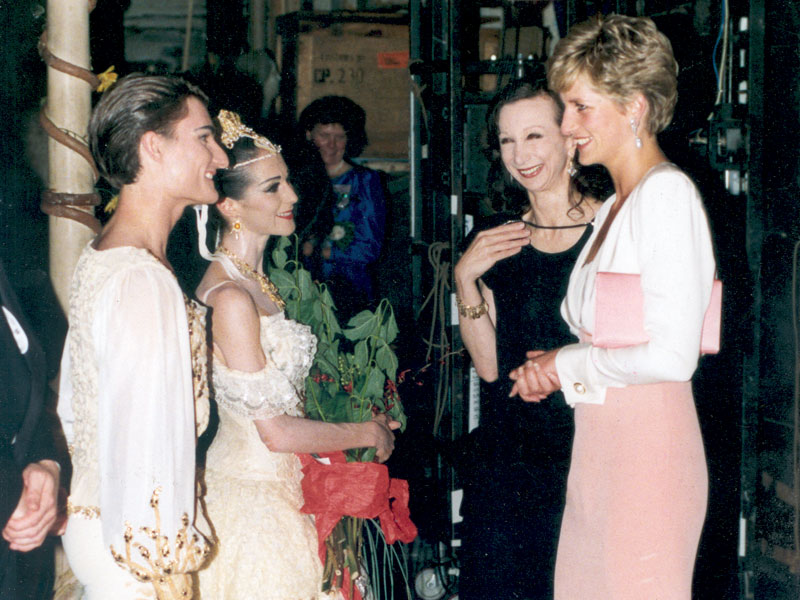
In early 1992, The Australian Ballet was preparing to head to London for its thirtieth anniversary celebrations. The company travelled first to Italy, where we performed outdoors at the Nervi Festival, before heading to London for a season of Coppélia at the Coliseum theatre in the West End. There was some anxiety that a strike in France would prevent the sets and costumes from arriving in time, but mercifully they got there and the show could go on. Miranda Coney – a fellow principal whom I had known back in my Perth City Ballet days when we were children – and I were to dance the leads in Coppélia for the Royal Gala in front of Princess Diana. It was incredibly stressful. The dress rehearsal had been a disaster, I think in part because I couldn’t stop thinking about performing for the princess, a known ballet lover and one of the most stylish and beautiful people in the world. I was terrified of putting in a bad performance.
The next morning, with the show that night, I woke up vowing I was not going to be nervous but excited. I came to the theatre determined to enjoy myself hugely – it was the most effective way of dealing with my own expectations as well as those of the other dancers and the company’s management. If I can get through winning Bronze at the International Ballet Competition in Moscow, I told myself, and not for the first time, I can get through this. A security sweep through the theatre before the performance made us even more aware of our royal guest.
From the minute the curtain went up, it was one of the few shows in which I can honestly say I don’t think I put a foot wrong. The entire company was on fire that night. Everything just seemed to happen effortlessly; I even started taking a few risks with steps – and they paid off. Miranda was so much fun to dance with and I felt like we had a real connection – the whole performance was a joy and one of the best nights of my life.
At the end of the show, after the curtain calls, Princess Diana came up on stage and we were presented to her. She was absolutely radiant – a vision in a long peach and cream gown to her ankles, and so much more beautiful than even the best photographs of her. I was completely overwhelmed, and when she came to talk to us I was a tongue-tied mess. I can’t even remember what I said, but I doubt any of it made sense. I went back to the dressing room thinking I had just blown my special moment with the most famous woman on the planet. I knew some of us were being invited to a function after the performance, so I made a pact with myself that if I saw her there I wouldn’t gibber like an idiot; I would talk to her like a normal human being.
After we changed back into our civilian clothes, we were taken to St James’s Palace, where a few of us had been chosen to mix with British high society – including royalty. Miranda, artistic director Maina Gielgud and I were there along with some other dancers from The Australian Ballet, including Colin Peasley (who had performed as Dr Coppelius that night), Jayne Beddoe, Vicki Attard and Lisa Bolte. We all thought we would be at a table with Princess Diana, but it turned out she was on another table, with a seat next to her that was occupied by a revolving circuit of people throughout the night. I was on a table with some charming people from Chanel and was having a great time. Just before dessert, Lady Potter, one of our generous patrons and the host for the evening, came and asked me if I would like to have five minutes with the guest of honour. I was sitting next to the princess before Lady Potter could finish her sentence. As luck would have it, this was precisely as dessert was being served, which, according to protocol, meant I couldn’t be moved along until the plates had been cleared.
We had about fifteen minutes together while she grappled with her peach sorbet (that was actually served in the shape of a peach) – it was so frozen she asked for a knife to cut into it, and we both spent the next few minutes trying to hack into it, in vain. The princess immediately made me feel at ease, like we were old friends. We talked about her dancing, her favourite ballet (Romeo and Juliet), Chanel shoes and our performance, which thankfully she liked. It was all a little surreal. Who would have thought that a daggy little kid showing off on a septic tank in suburban Perth would one day have dessert with a princess?
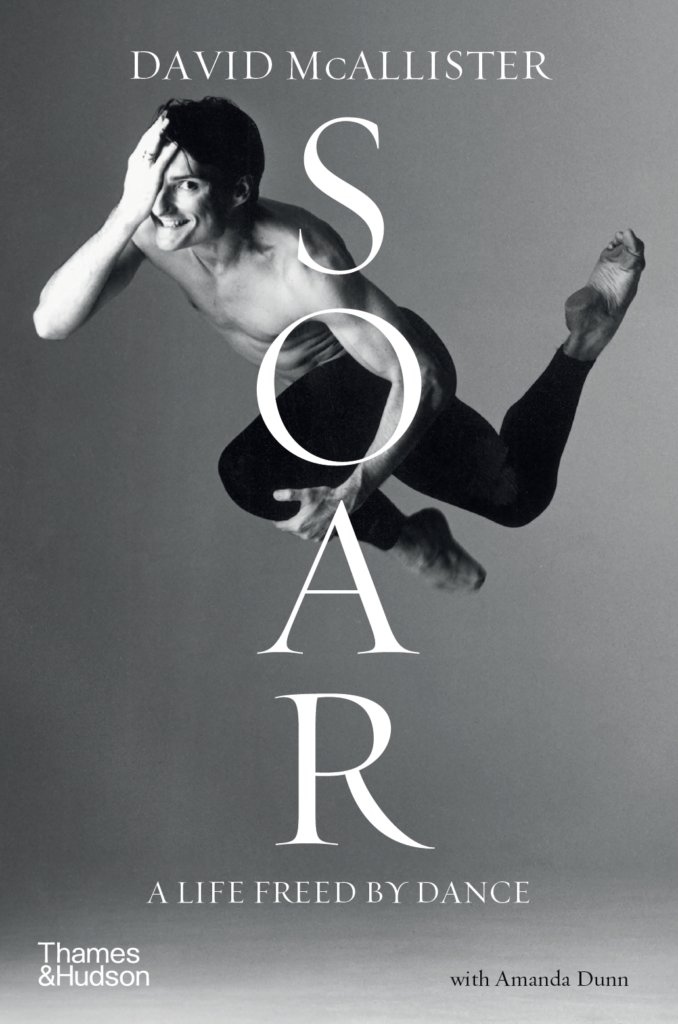
This is an edited extract from Soar: A Life Freed by Dance, out now. Text by David McAllister and Amanda Dunn, cover image by Greg Barrett and cover design by Daniel New.
AU$39.99

We are so lucky to be able to share with you a Spring menu plan curated by the ever so talented recipe creator Héloïse Brion. This collection of recipes is taken from her new book, Miss Maggie’s Kitchen, named after her widely loved food and lifestyle brand. Together, they form a delicious four course French feast that is sure to impress your next dinner party guests.
Rosemary-Rhubarb Cooler
Makes 4 cocktails
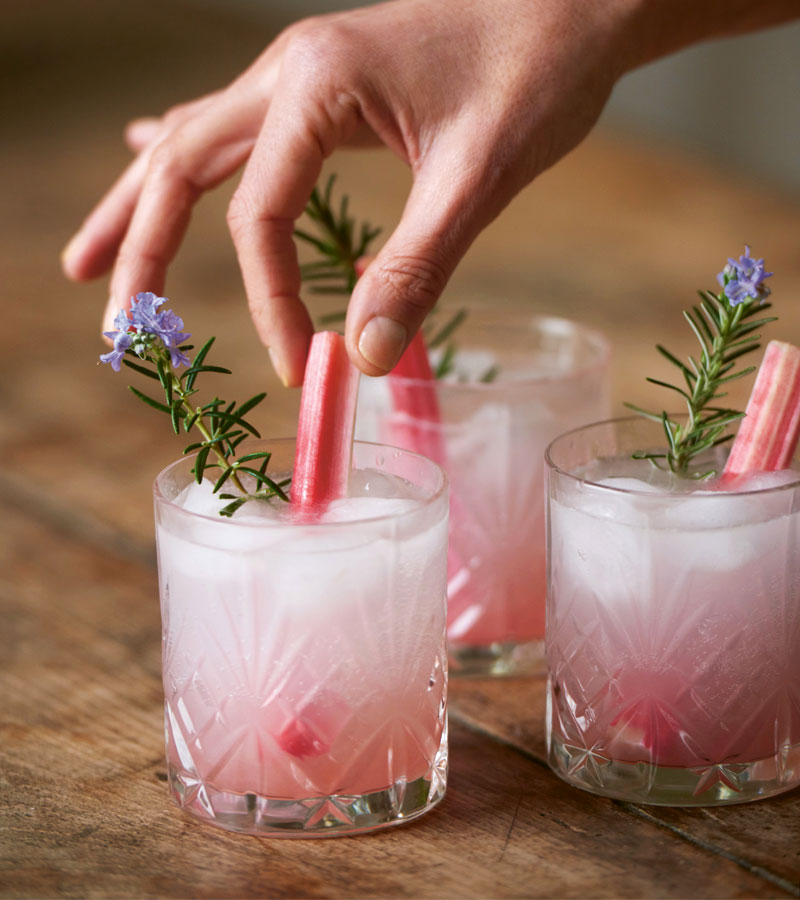
Active Time 5 minutes
Cooking Time 5 minutes
Infusing Time 15 minutes
Ingredients
Recipe
Cheese Shortbreads
Makes about 30
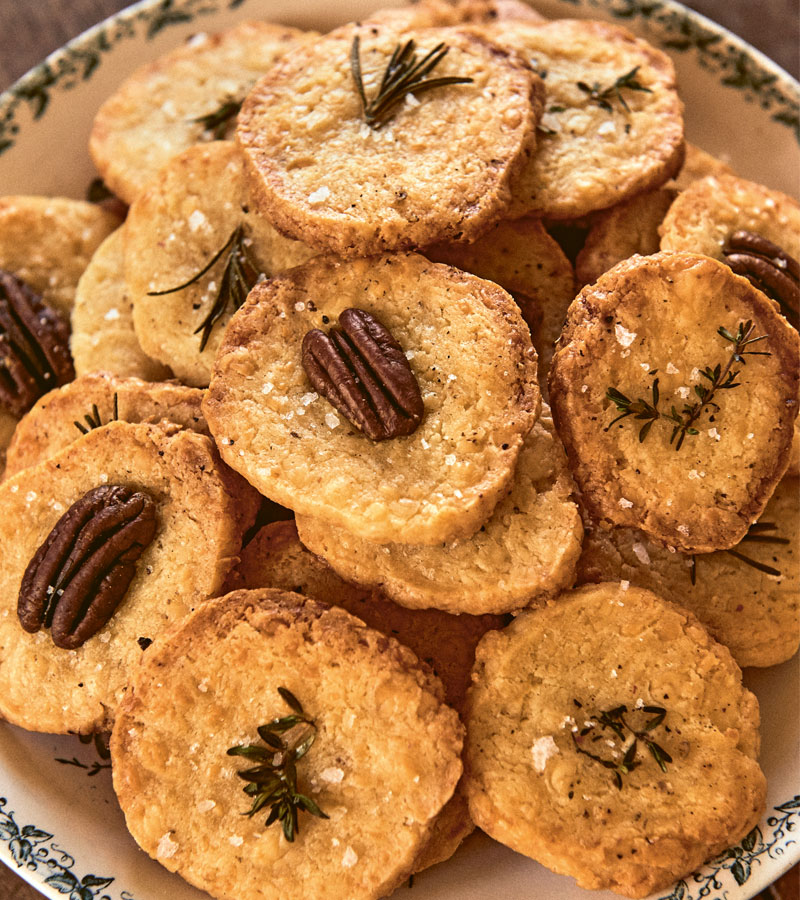
Active Time 10 minutes
Chilling Time 1 hour
Cooking Time 15 minutes
Ingredients
Recipe
Green Bean Salad with Hazelnuts and Parmesan
Serves 4
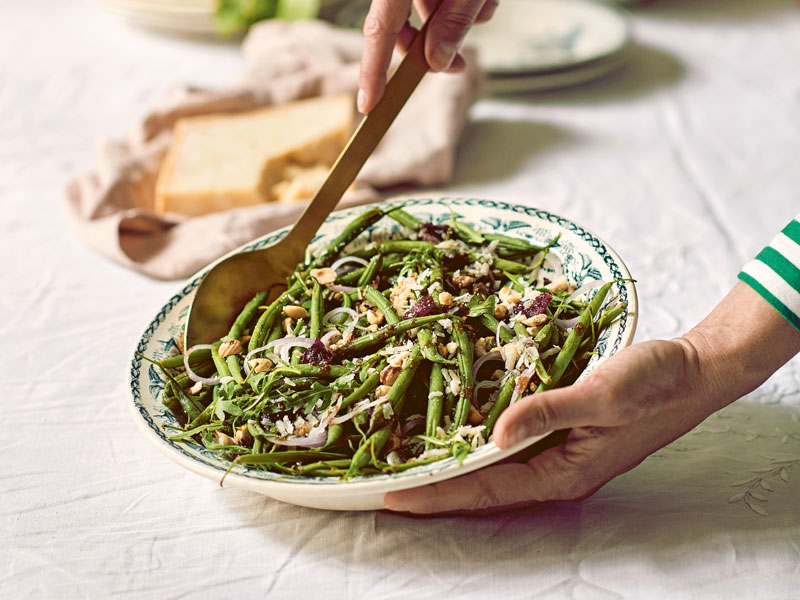
Active Time: 10 minutes
Cooking Time: 5 minutes
Ingredients
Recipe
Onion Quiche
Serves 4-6

Active Time: 20 minutes
Chilling Time: 30 minutes
Cooking Time: 45 minutes
Ingredients
Recipe
Franou’s Lemon Pie
Serves 6-8
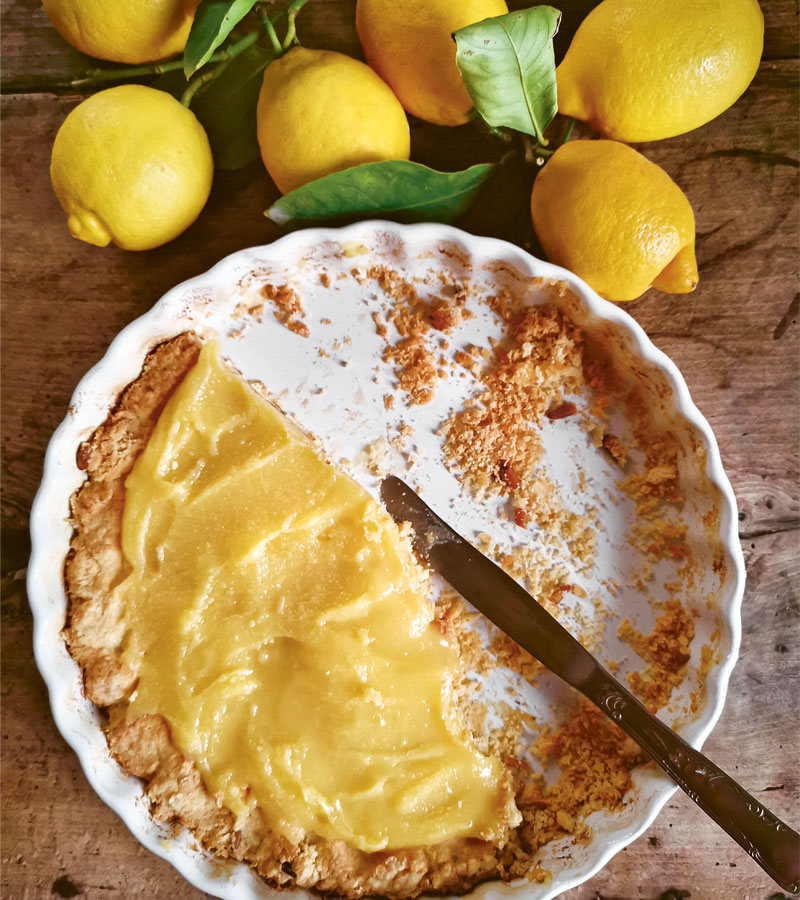
Active Time 20 minutes
Chilling Time 2 hours
Cooking Time 35 minutes
Ingredients
FOR THE PASTRY DOUGH
FOR THE LEMON CURD FILLING
Recipe
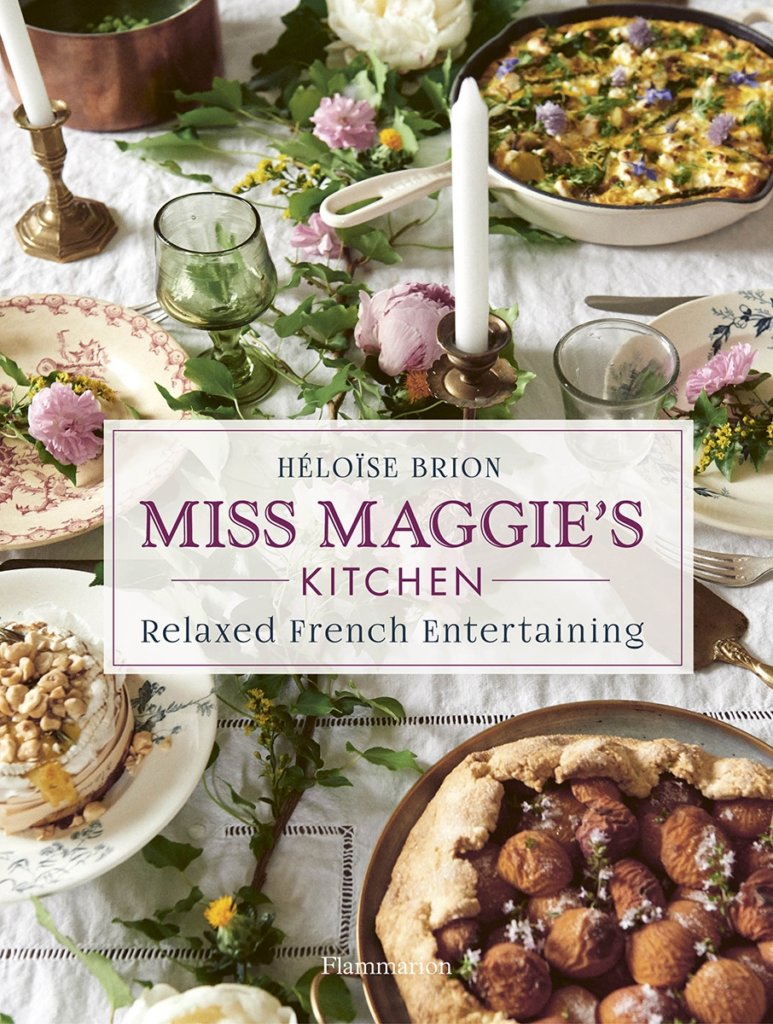
This is an edited extract from Miss Maggie’s Kitchen, out now. Text by Héloïse Brion with photography by Christophe Roué. Originally published by Flammarion.
AU$39.99
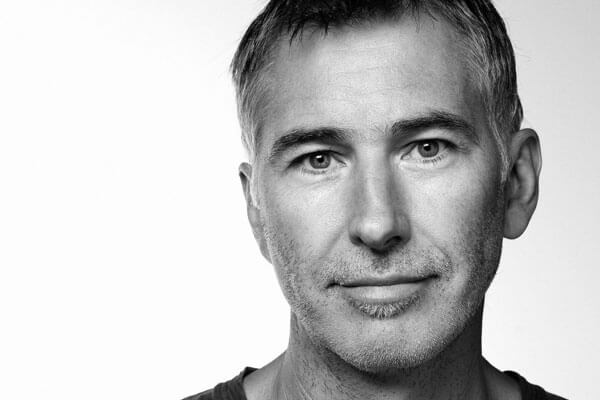
A Century of Colour in Design is design journalist David Harrison’s dazzling anthology of 250 furniture, fabric, lights and decorative objects, illustrating how colour has defined key designs over the last century. This vibrant history will be a discovery for both design newbies and aficionados, broad in scope and filled with everything from classics to eye-catching new pieces.
We spoke to David about his long relationship with Australian and international design, the idea behind A Century of Colour in Design and his thoughts on the future of colour in design.

You have been writing and styling for some of Australia’s best interiors magazines since 1999, how did you go about developing such an extensive knowledge of design and furniture?
In the 1990s I lived in Islington, London. A shop called twentytwentyone opened on the high street selling vintage furniture and lighting along with really interesting contemporary design. It was there that I discovered the brilliance of Charles and Ray Eames and saw the work of British designers Barber Osgerby for the first time. I was hooked and spent many a late night perusing Bonham’s and Christies twentieth century auction catalogues. My knowledge has stemmed from this period of intense discovery and then later from running a design gallery which sold Noguchi lights from Japan and Danish and American furniture from the 1950s and 60s. I also discovered a lot from doing research for my regular Cult Classic page for Inside Out magazine which ran for nearly 20 years.
Your blog, Design Daily, has been praised by designers and creatives from across the globe. Tell us what drew you to this work, and what you like to report on.
The blog was a way of writing about interesting design topics that were outside of commissions that I received from magazines. It allows me to see something exciting or particularly beautiful and write about it. It is a personal exploration of what has come across my desk or what I have seen at design fairs overseas or through meeting and interviewing designers. What I feature can be a new design or a designer retrospective, a building or exhibition – there are no rules as it is just whatever takes my fancy. That’s the beauty of writing your own blog.

A Century of Colour in Design is your first solo book project. What led you to its concept and how did the book come to life?
The general premise came about through visiting the Milan Furniture Fair (Salone del Mobile) year after year and noticing how the design world was embracing colour more and more. There has literally been an explosion of colour since 2000 and it is growing exponentially. The colour component in a design is critical now where it often wasn’t given much consideration in years gone by – it was usually an afterthought at the end of the design and manufacturing process. Certain designers ALWAYS considered colour as an essential component. This is why there are eight sections in the book that highlight particular designers or design studios that have a major fascination with colour. Four of them are from the past and four are contemporary.
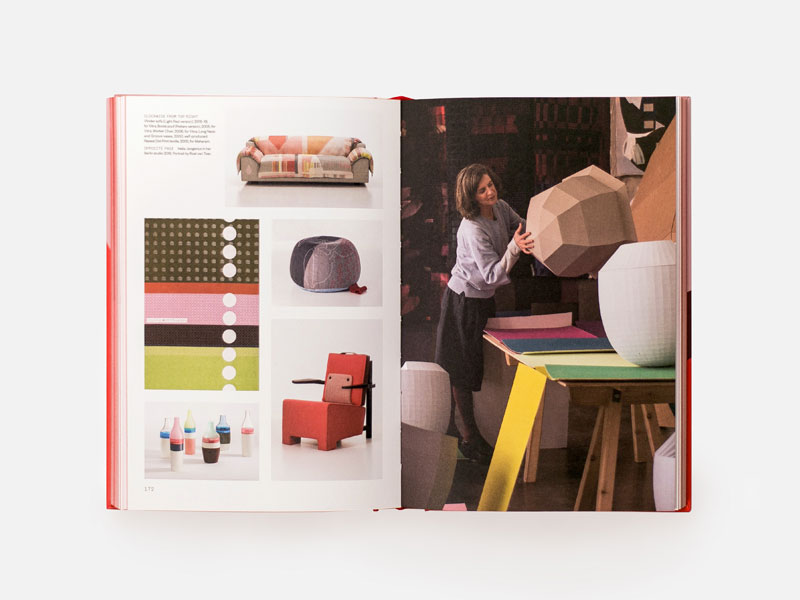
In the introduction to the book, you say that ‘making selections that cover a century of furniture, lighting and other interior design objects is an enormous and somewhat daunting task.’ Aside from of course ‘applying the filter of colour’, what was the process behind the selection of objects?
Of the tens of thousands of objects that fit within the loose area of interior products – lighting, furniture decorative objects and textiles – I selected designs from the past that used colour as an essential part of their overall expression. These have stood the test of time, in that they have often been reissued and are still considered exciting 20, 30 or even 80 years after their original release. I also chose pieces that had used or were currently using colour in innovative or surprising ways. The book is full of these examples.
Was there an object you loved that didn’t make it into the book?
There were many, many objects that I would have liked to include but which there simply wasn’t room for. In addition, there were times where I couldn’t obtain suitable images. After much agonising I am happy with all the products that are included. Some are famous while others are hardly known at all. I tried to get a balance so that it wasn’t all about design classics and I could showcase the huge number of contemporary designs that used colour in highly effective ways.
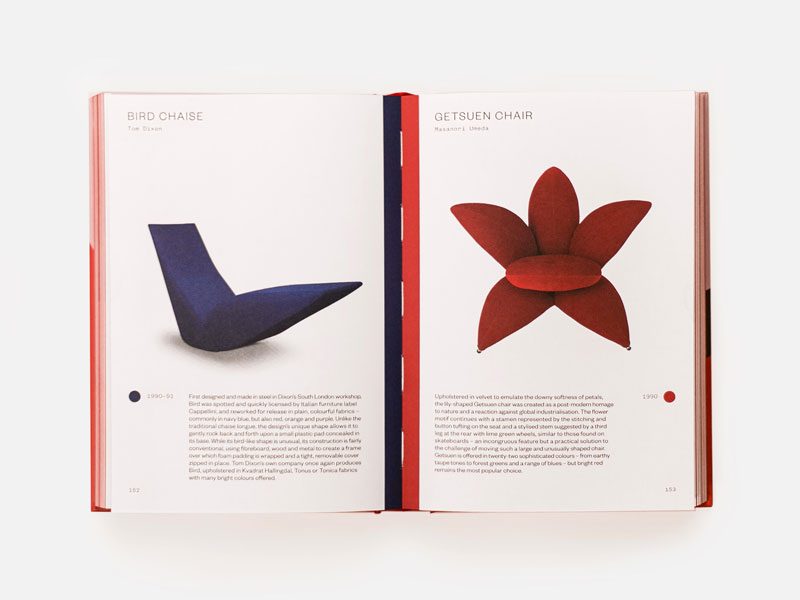
What role do you think colour will play in the next ten years of furniture and interior design?
Colour will be massively important. It is such an emotive thing – without it life is instantly less exciting. Designers already consider colour much earlier on in the design process and this will only become more accentuated as time goes on. Colour choices will become an essential part of the design process with plenty of discussions on exact shades with designers creating their own colours, beyond the industrially available palette, to help express their concept more fully or to deliver a particular emotion.
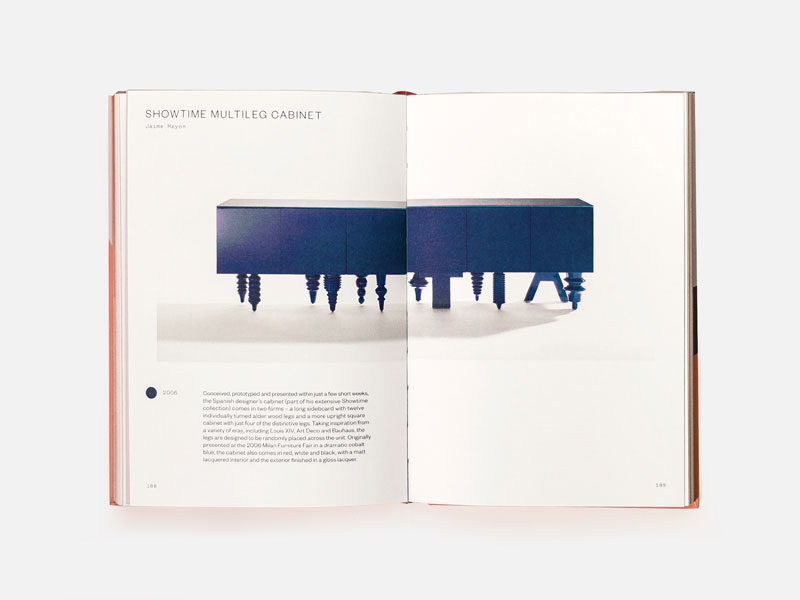
Have you faced many challenges in your line of work since the pandemic begun?
Actually, after being isolated day after day working on the book for a solid six months at the end of 2019 and early 2020, my life is much the same but without a deadline so somewhat more relaxed! For the design world everything has had to go virtual – new product launches, design fairs, talks, everything. It is a shame as these events were often incredibly stimulating and fun but I am sure things will eventually get back to being more immediate and real. It’s hard to capture the true spirit of furniture and interior objects unless its shown in a real space as the environment has such a massive effect on how these objects feel and the type of reactions they create.
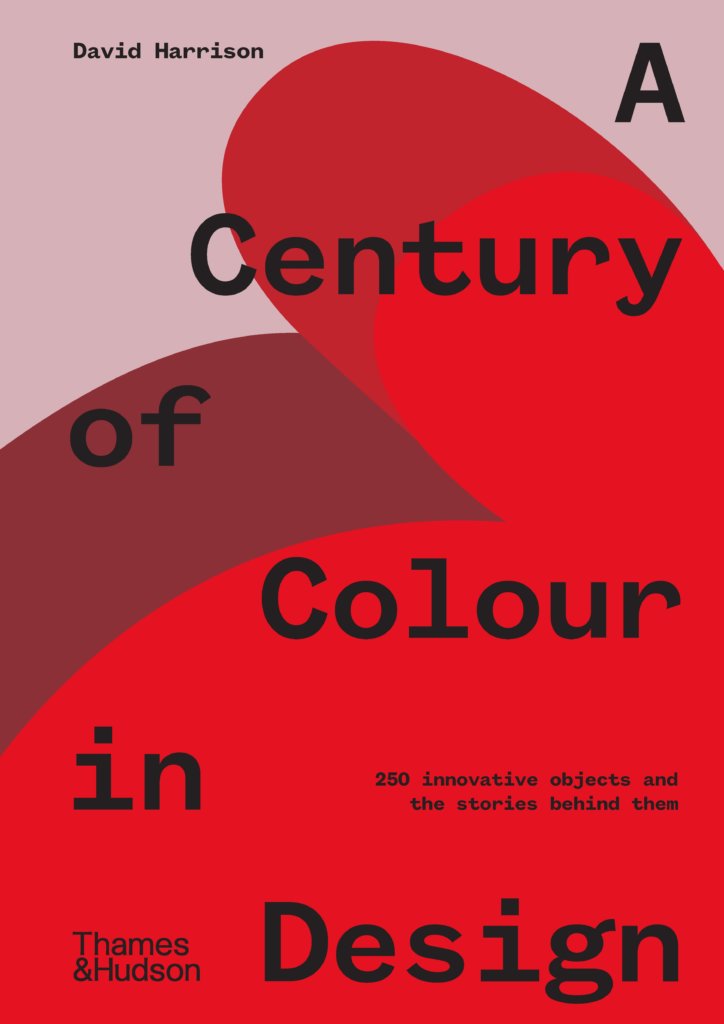
A Century of Colour in Design is available now. Text by David Harrison and design by Evi-O.Studio.
AU$39.99
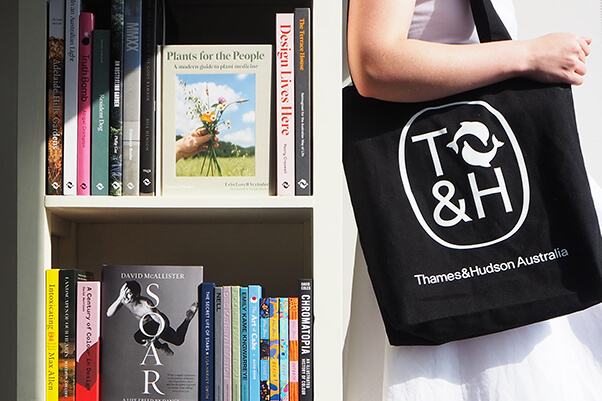
This competition is now closed. The winner will be contacted next Wednesday 25 November and announced on this page. Thank you to everyone who entered.
How will the book pack be “personalised”?
From the genre selections chosen in the competition form, Thames & Hudson Australia staff will hand-select titles for the winner’s prize based on which genres interest them most. Please note, these genres are limited to books available on the Thames & Hudson Australia and distributed partner lists, which you can find on our website. Unfortunately, we will not be able to accommodate requests for specific titles.
How many times can I enter?
Only one entry per person is permitted.
What dates will the competition be running?
The competition opens at 9am on Wednesday 14 October 2020 (AEST) and closes at 5pm on Wednesday 18 November 2020 (AEST).
When will the winner be announced?
The winner will be contacted before 5pm Wednesday 25 November 2020 (AEST). Their name will be posted, with their permission, to this page before 5pm Thursday 26 November 2020 (AEST) and remain live for two-weeks until Thursday 10 December 2020 (AEST).

This competition is now closed.
TERMS AND CONDITIONS: WIN a personalised book pack worth $2000 (the Competition)
These are the Terms and Conditions (Terms) of entry for the Competition, conducted by Thames & Hudson Australia Pty Ltd (Thames & Hudson Australia), whose registered office is at 11 Central Boulevard, Port Melbourne, Victoria 3027.
Please read these Terms carefully because you will be deemed to accept them if you enter the Competition.
For all questions relating to this competition, please contact Thames & Hudson Australia at: enquiries@thameshudson.com.au
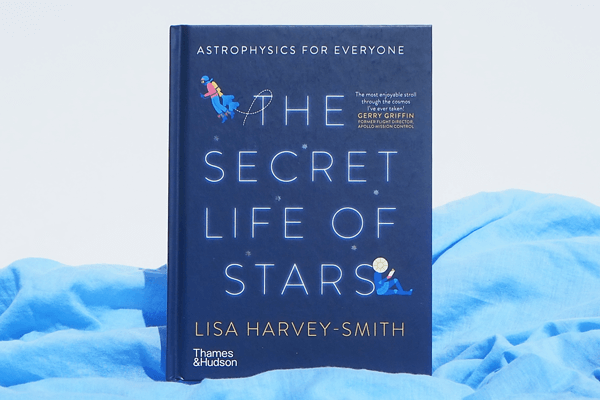
The Secret Life of Stars is a fun and accessible introduction to the many remarkable personalities in our galactic family. From renowned astrophysicist and Australia’s first Women in STEM Ambassador Lisa Harvey-Smith, the book guides you through the most extreme and confounding members of the Galaxy’s vast, varied and really quite weird stellar brood.
In this extract from the book, Lisa delves into the strange and fascinating existence of dwarf stars.
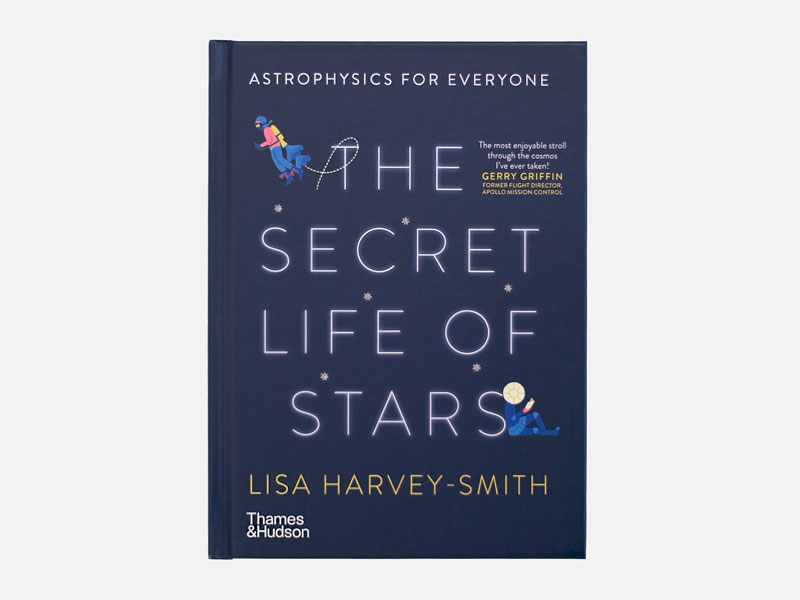
Stars appear in a vast range of sizes, with most being smaller and cooler than the Sun. The smallest burn their hydrogen more slowly and therefore have much lower temperatures. You can tell a lot about a star from its colour. Hotter stars give off more blue light, and cooler stars tend to the red. It’s similar to how hot gas-cooking flames are blue, whereas cooler candle flames are red. Counterintuitive, huh?
By looking in great detail at the colours of stars, we can tell precisely how hot they are, what chemicals they contain, and how old they are. We can even predict their future as they go through the ageing process.
Before we go on, I should fess up that the names of star categories make no logical sense whatsoever. From the coolest to the hottest stars we call them M, K, G, F, A, B and O, with numbered subcategories from 0 to 9. Uh-huh …
There are also subcategories for luminosity (how much light a star puts out) from 0 through to VII, in Roman numerals, just to be fancy.
Adding to the confusion, all small and average-sized stars are called ‘dwarf stars’. Only the very rare and very large stars are called ‘giants’ or ‘supergiants’. There are no ‘regular’ stars.
At this point I’d like to apologise on behalf of astronomers everywhere for this ridiculous situation – astronomy is littered with strange historical naming schemes. But there we have it.
Our Sun is a G2V star, somewhere in the middle of the jumbled alphabet soup of stars. B and O stars, at the top end of the scale, are humongous, gluttonous giants that explode in a shower of sparks when they come to the end of their life. In contrast, M and K stars are cool and steady types who live long and interesting lives. From now on, we will call these M and K stars ‘red dwarfs’.
Red dwarfs have only about a tenth to one half the mass of the Sun, and are only half as hot. They are smaller in physical size, too, and decidedly dimmer (although not lacking in intelligence). These stars are capable of great feats of physics – they still burn hydrogen into helium to produce vast amounts of energy in their core – but because they are smaller, there are far fewer nuclear reactions and their output is decidedly more puny.
Red dwarfs are the most common type of star in the Milky Way, with the faintest M-dwarfs making up more than 70 per cent of stars in our universe. Despite that, we never see them. I mean that literally. We don’t see any of them. At all. Ever. We didn’t even know that red dwarfs existed before the invention of the telescope, because they are too faint to see with the naked eye. Imagine that! Every star you can see is part of the 30 per cent minority.
As slow burners, these stars live extremely long and varied lives. Not only does their reduced rate of nuclear fusion extend their life, but also their enhanced internal mixing causes fresh hydrogen fuel from the outskirts of the star to be transported to the engine in the middle. As such, we predict that red dwarfs can live in excess of a trillion years.
As adolescents they can be active and sparky. In this gregarious stage of their lives they are often characterised as ‘flare’ stars. Rather than being a regrettable 1970s fashion statement, this moniker actually describes a stage of intense variability in the life of lower-mass stars where they quickly erupt – explode, even – for a few minutes before relaxing back to their regular demeanour as if nothing had happened. Flares from young red dwarfs are 100 to 1000 times more energetic than when the stars are older. As red dwarfs age, they cease this nonsense and increasingly potter their way through life, with age slowly ripening and changing their character.
Stars of all sizes form when gravity pulls together materials in interstellar clouds of gas. Red dwarfs are the littlest stars, just slightly larger than Jupiter, and are the smallest member in the official category of stars. But there are also some almost-rans, plucky hopefuls who tried but just missed the cut-off for full stardom. These battlers, called brown dwarfs, live out quite different lives to other stars.
With core temperatures of below 3 million degrees Celsius, brown dwarfs are simply not big or hot enough to turn hydrogen into helium via nuclear fusion. They can, however, manage other nuclear fusion reactions involving chemicals called deuterium and lithium. These reactions don’t generate as much heat as hydrogen fusion, so the surface temperatures of brown dwarfs are generally below 800 degrees. They emit almost no visible light: if you looked at one close up, you might just see a dim purple-ish glow.
Brown dwarfs weren’t discovered until 1995, because the only way to find them is to use infra-red detectors. Once astronomers built a telescope powerful enough to see them, we could finally make out their slight warmth in the icy cold of space.

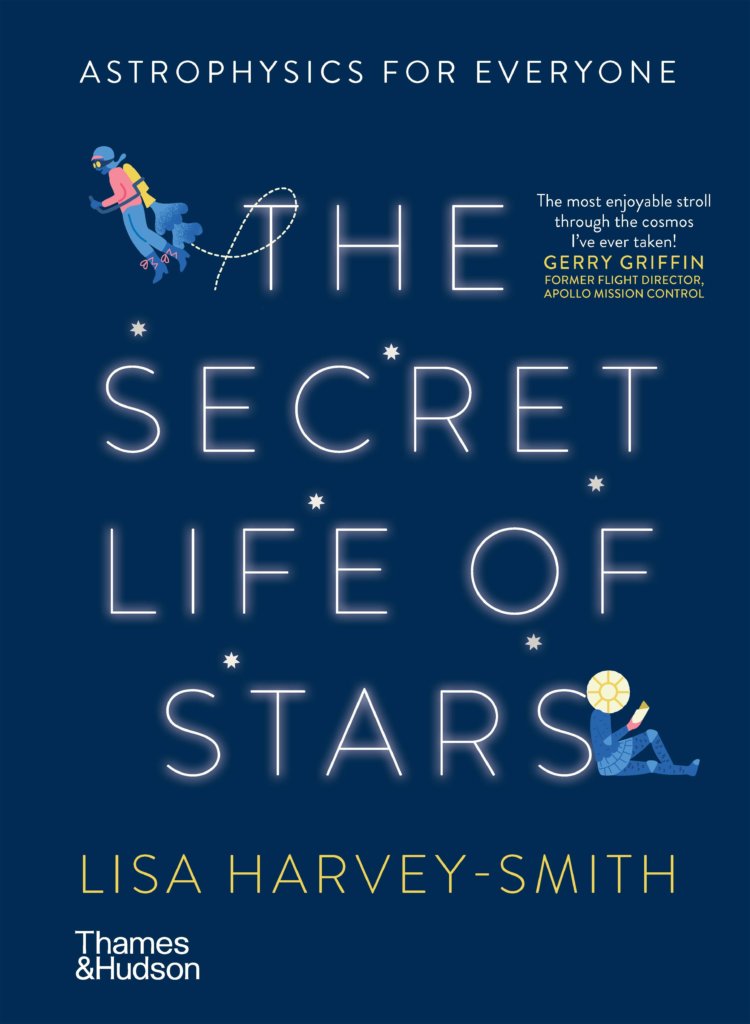
The Secret Life of Stars is out now. Text by Lisa-Harvey Smith, illustrations by Eirian Chapman and cover design by Philip Campbell Design.
AU$34.99
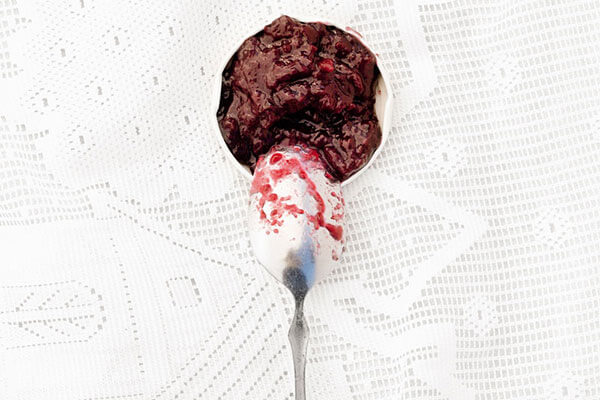
If anyone knows a thing or two about jam, it’s Jessica Koslow. After the success of her first book Everything I Want to Eat, the owner of beloved LA restaurant Sqirl is back with The Sqirl Jam Book. This home cook-friendly book features a collection of Koslow’s signature recipes for jams, jellies and preserves. Think fig jam with red wine, roasted honey apple butter and yuzu marmalade with honey. Not sure where to start? Give this delightful blueberry-rhubarb jam a go.
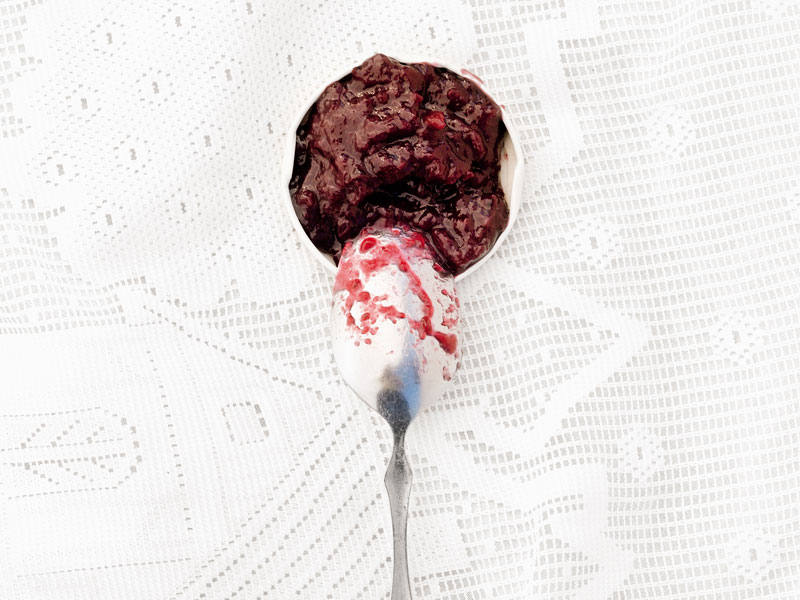
Blueberry-rhubarb is the first berry jam that we made at Sqirl after marmalade season, a riff on a Southern classic. An iconic jam for me because it’s what Sqirl’s all about — taking a classic and turning it on its head.
Ingredients
Directions:
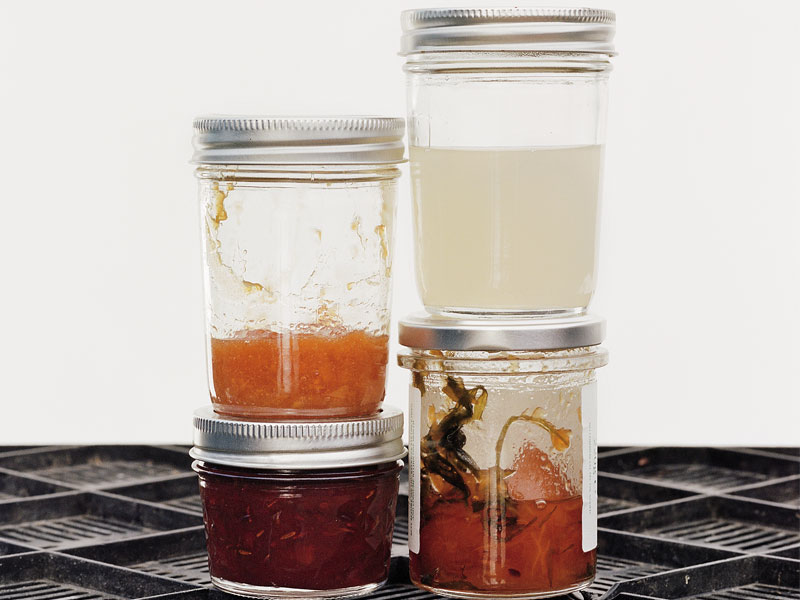
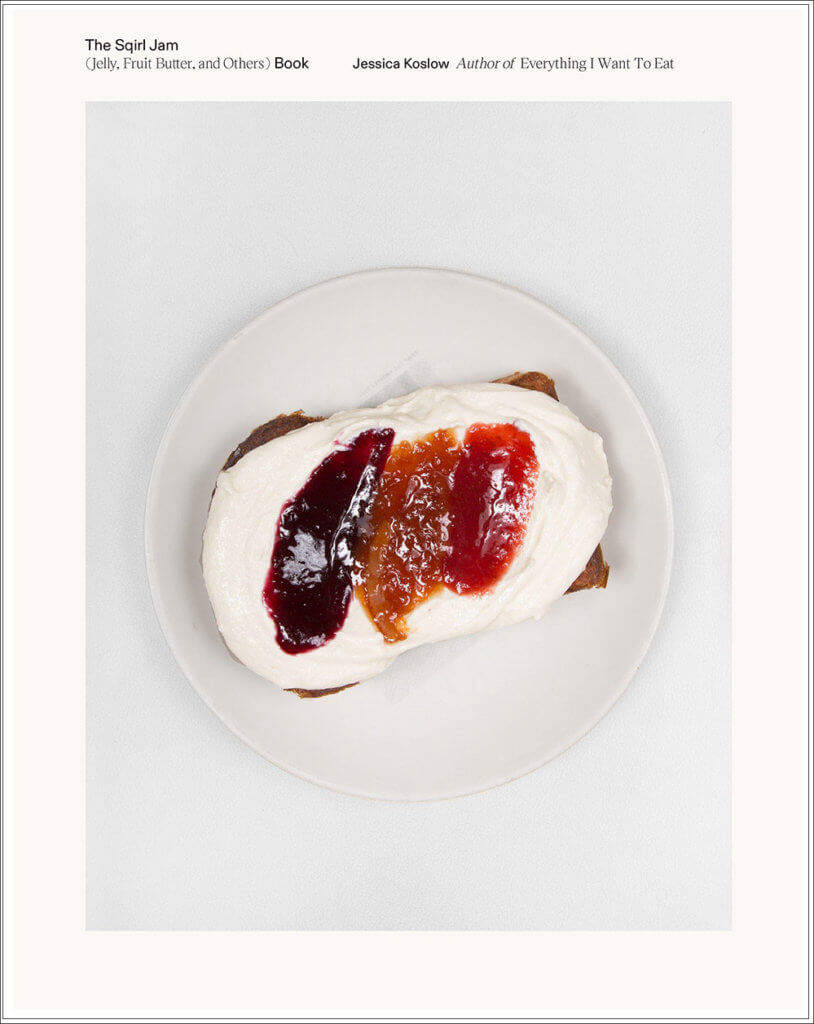
This is an edited extract from The Sqirl Jam Book, out now. Text by Jessica Koslow with photography and design by Scott Barry. Published by Abrams Books.
AU$49.99
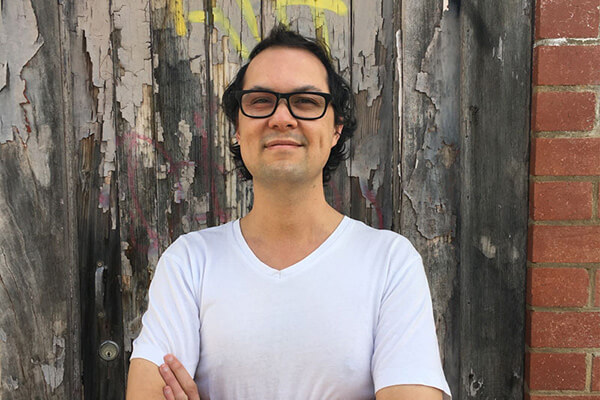
This Small Blue Dot is one of a kind when it comes to picture books. With a strong message of interconnectedness, hope, inclusivity and empowerment, the book follows a little girl exploring the big and small things in life. We chatted to first-time author, illustrator and all-round talent Zeno Sworder about his fascinating career and the inspiration behind this powerful story.

You have certainly had a multifaceted career, working in immigration law, journalism, teaching, advocacy for refugees and immigrants, and even a jewellery designer. Can you tell us about one of your career highlights?
One of the absolute highlights was working on the Australia China adoption program for the Australian Consulate General in Shanghai. Although reading the babies’ abandonment reports could be heartbreaking, meeting with the Australian parents and the adopted Chinese babies was wonderful.
There were a few occasions when I had to sit down and explain to the adopting parents that the baby’s medical results showed a developmental delay. You can imagine how difficult this news was. At this point they had already spent a day or two with the baby. Because of the baby’s young age, it wasn’t clear whether the delay was due to a lack of interaction in the orphanage or a congenital disorder. But on each occasion, the parents expressed that they wanted to go ahead with the adoption and that the baby was now their responsibility to care for. One adopting father simply said that they were a family as soon as the baby was in their arms. I found that courage to be deeply moving.
How did you learn to do pencil and crayon drawing, and how long have you been an illustrator for?
I think pencil and crayon are the tools that most of us use for our first scribble. Foolishly, I kept going with them rather than move on to more technical mediums like pastels and conte sticks. I didn’t grow up with a TV, so drawing was the main source of entertainment in my house. I remember always wanting more and more pencils. For years I longed for a Derwent pack of 72 pencils, but it never happened until I was an adult (and it turns out 72 pencils still isn’t enough). I have been working as an illustrator for roughly ten years and dabble with a lot of different traditional and digital mediums, however I loved returning to pencil and crayon for this book. The pencils allowed me to make realistic graphite renderings of the young protagonist, Ms Crayon, while the loud, vibrant colour of the crayons was perfect for the world of her wild imagination.
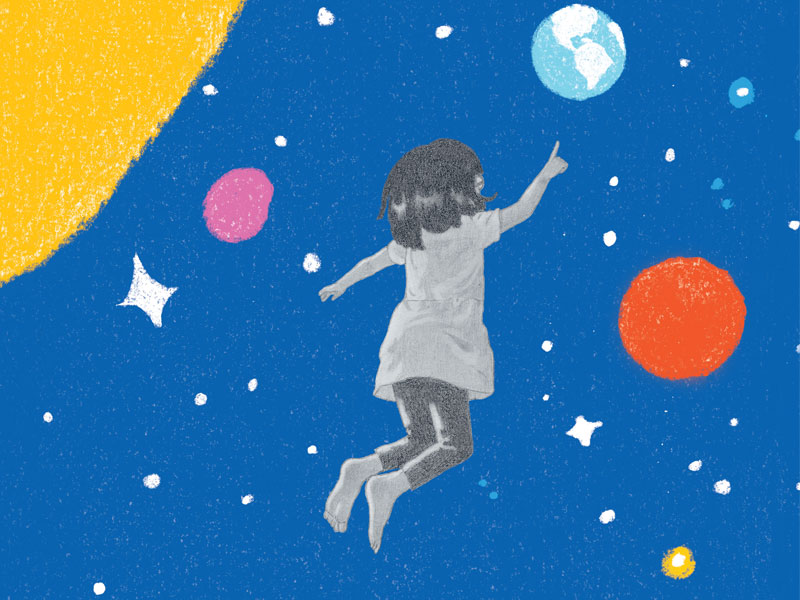
Just to add to your many talents, what led you to authoring a children’s book?
It was a number of things that happened in succession. Within the space of a few years my Chinese grandmother and my English father passed away and then our second daughter was born. My grandmother and father were both wise, kind souls and I was left remembering what they had taught me and wondering what lessons they would have wanted to pass forward to our young girls. I decided to put some of these down in writing and then thought it would be a good idea to illustrate them. Every night, when everyone else was asleep, I would spend an hour or two at my desk doing this. It was time that I could spend with the memories of my grandmother and father while also making a gift for my daughters. I thought of this work as a kind of bridge to help connect these different souls that shared so much but were separated by time.
Your young narrator is loosely based on your eldest daughter. How did she inspire you to tell this story?
When I first started drawing these pages there wasn’t really a protagonist, just a colourful illustration with text and then a character kind of crept into the book to help tie things together. The first iteration of this character, Ms Crayon, was older and had a different appearance than my daughter. At that time my daughter would have been 6 and one day she came into the studio to tell me very matter-of-factly that she couldn’t be a princess. I asked why, and she explained that none of the princesses wore glasses. I was certain that with the power of the internet I could find a picture of a princess with glasses and I did manage to find a photo of a European princess but my daughter wasn’t very convinced – she was after a Disney princes. So after that I redrew the book with a protagonist who looked more like her with glasses.
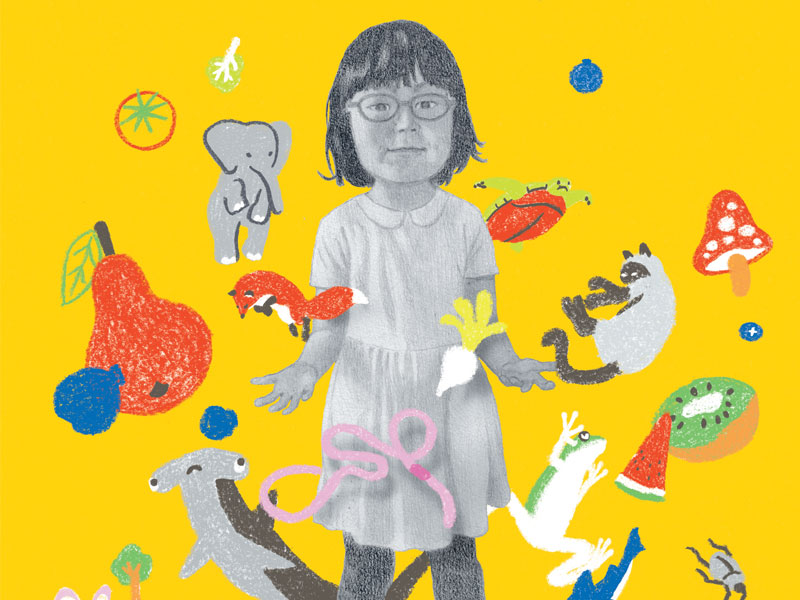
Both my daughters and I come from multicultural backgrounds. They attend public schools full of kids from different backgrounds. For purely selfish reasons, I love the idea that some of that diversity is reflected on bookshelves and that my children will be able to see faces in books that represent the multicultural world they inhabit.
What message do you want to get across to young readers?
The main message of the book is summed up in the title of This Small Blue Dot. I wanted to get across the idea that we are all inhabitants of a bright dot spinning in space, which is home to all of us. It is up to us to take care of our home and each other. I also wanted to pass on the important lessons that I remembered from my grandmother and father: lessons about interconnectedness, beauty, the human continuum and how to use an imagination. In short, lessons about how to be in this world. These lessons were passed onto me with a spirit of fun and generosity and I have done my best to capture that tone in the book.

Do you have any advice for first time children’s authors?
My advice is to dream up a big idea that will sustain you creatively for a year or so and then start to chip away at it, one page at a time. A routine is key to this. For many years I thought that great work required an alignment of the planets and an angel to whisper an idea into an ear. It turns out the reality is a lot more mundane. For me, it is about placing my bottom in a chair every day at a specific time to do specific creative work. You won’t always make gold with the first attempt, but you will be able to put something onto paper. That in itself is precious because once it exists in the world it can be worked into something better.
What’s next for you?
I am currently working on my next book, which will also be published by the wonderful people at Thames & Hudson Australia. In my spare time I am slowly but surely learning how to use Instagram.
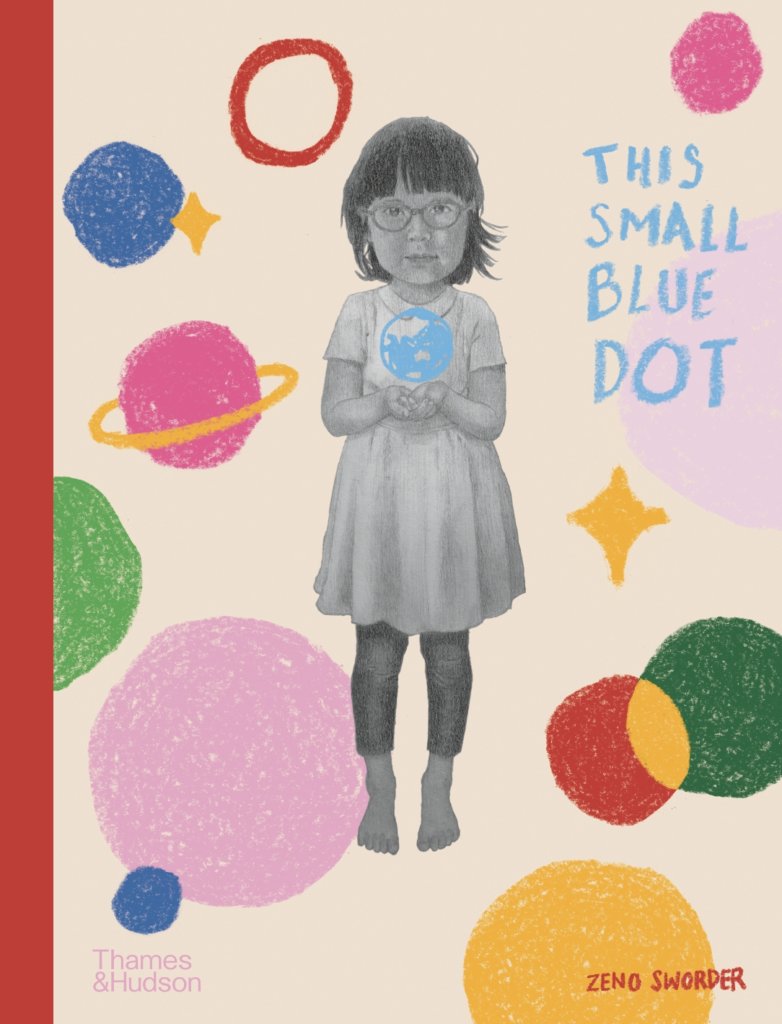
This Small Blue Dot is available now. Text and illustrations by Zeno Sworder.
AU$24.99
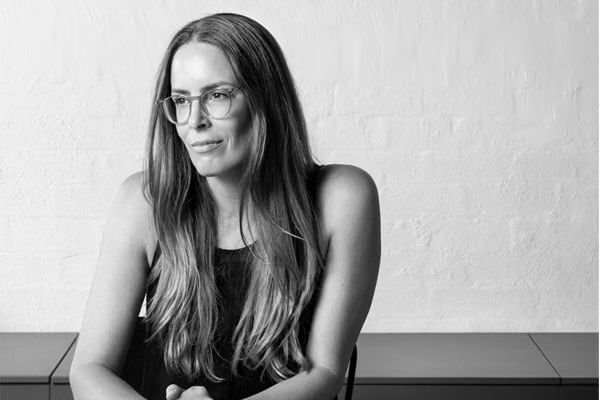
When we first released Nicole England’s Resident Dog in 2018, we were amazed at the response we received. Who knew that the crossover between architecturally superb houses and the adorable dogs that roamed them would resonate with so many people?
With the recent re-release of the book in a compact edition, we chatted to Nicole about all things architecture and interiors, and why the book continues to be a fan favourite both locally and internationally.
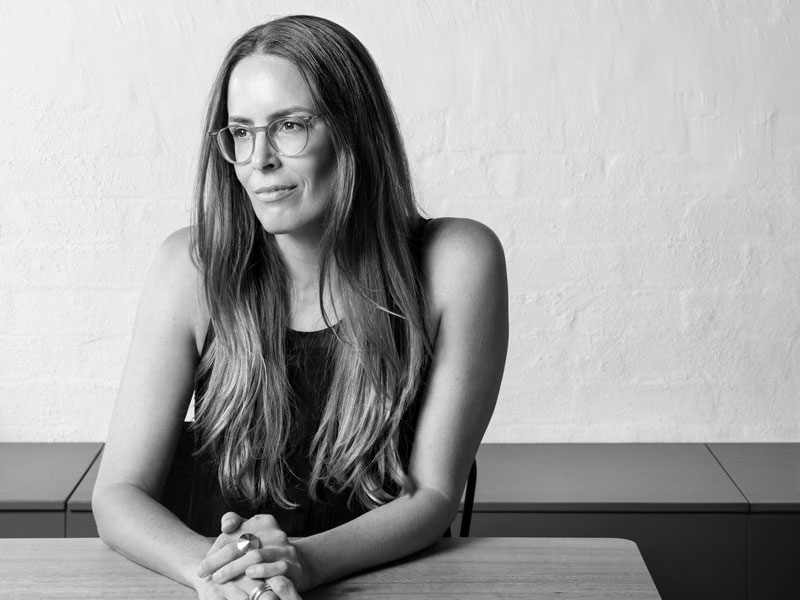
Tell us a bit about your path to becoming an architecture and interiors photographer.
After completing a Bachelor of Fine Arts at Auckland University, I went off to pursue a career in photography, working in fashion, advertising and music. After a couple of years, I gave it up, feeling disillusioned and disheartened by working within the commercial arena. My mother had a strong interest in interior design and my brother was an architect, so I settled on a job working in sales and marketing for an interior design company. Six years later, I picked up the camera again and decided to photograph within the design industry that I had grown to love. That was the ah-ha moment… this was where I was meant to be all along, photographing architecture and interiors. This was my style and my passion, and I haven’t looked back since.
What are some of your key tips for setting up the perfect photoshoot?
Be organised, be flexible, arrive early, be aware of the light and how it moves around the space, stay focused, have an assistant to help, a stylist to set things up, and of course, a dog to remind us to relax and have fun.
What challenges have you faced in your line of work since the pandemic begun?
Unfortunately, most of my shoots have been put on hold. It’s not too bad though, as I’ve had time to work on my business, learn some new skills, and start a couple of personal projects. The shoots will re-book again, I’m certain of that, so I’m just trying to enjoy the downtime before things go crazy again.
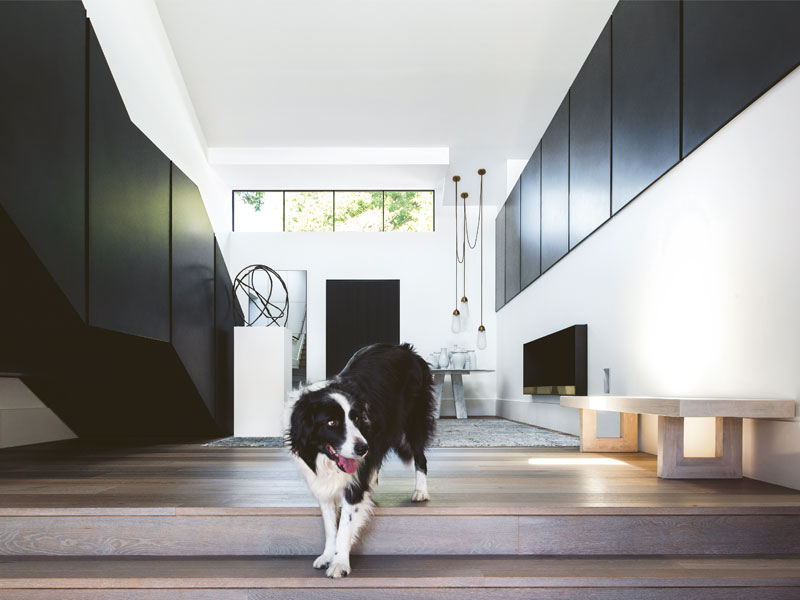
Where did the concept of Resident Dog come from?
One day a friend and mentor asked me what my favourite shoot day would look like. I told her I would be photographing the most incredible architecturally designed home you’ve ever seen, surrounded by forest and ocean. There would be a great crew of people to work with, the architect, the homeowner, a stylist and an assistant, a dog would be running around, the weather would be perfect, we would eat great food and drink wine at the end of the day… an opportunity to combine all of my favourite things. From that story, the one fly away comment about the dog was honed in on, and Resident Dog was born. We see a lot of dogs in architecture photography, more and more these days, but nobody had dedicated an entire project or book to our furry friends, the most important member of our home.
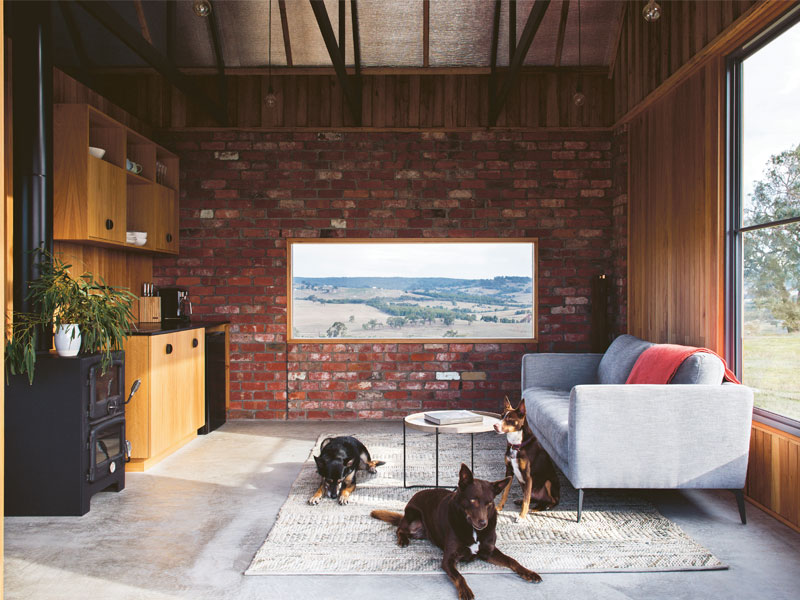
Do you have a favourite project from Resident Dog?
To be honest, I don’t. I love them all for different reasons. If I had to choose, it would probably be the residence of Canela (the cover star of the compact edition). She lives in an incredible concrete box, designed by Mexican architect Andres Castilles. The house has a hard brutalist exterior but is filled with love and warmth.
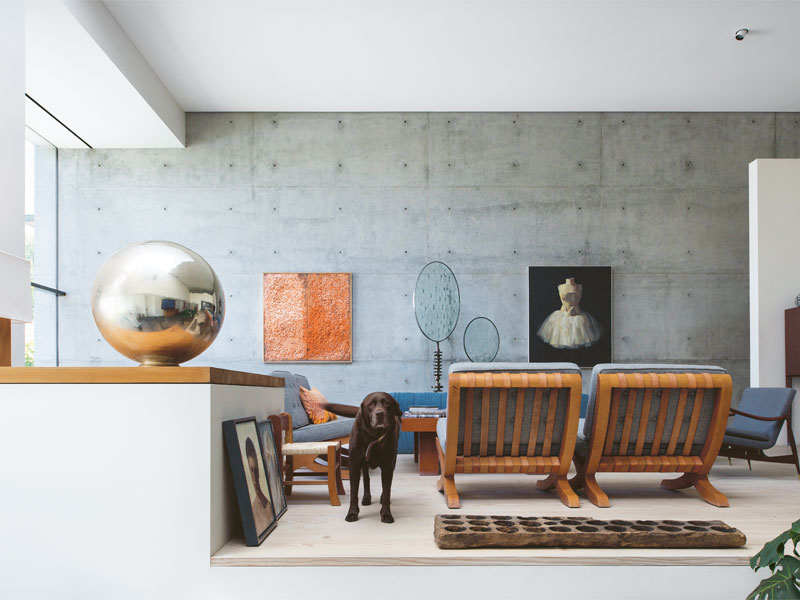
And a favourite pup?
I couldn’t possibly say, imagine if one of them read this! Charlie definitely has the best hair do, Ginger and Harry made me laugh the most, Enzo and Carlo were the most stylish, little Gaston the loudest, April and Muffy the cheekiest, and Skipper the softest…
Why do you think that the book continues to resonate with people two years on from publication?
We all love dogs and, especially at the moment, I think we find comfort in their silliness, how they live in the moment, and the way they love us unconditionally. And combined with incredible, architectural homes, that inspire us to live a little differently… I think it’s a combination that we will never get tired of, for years to come.
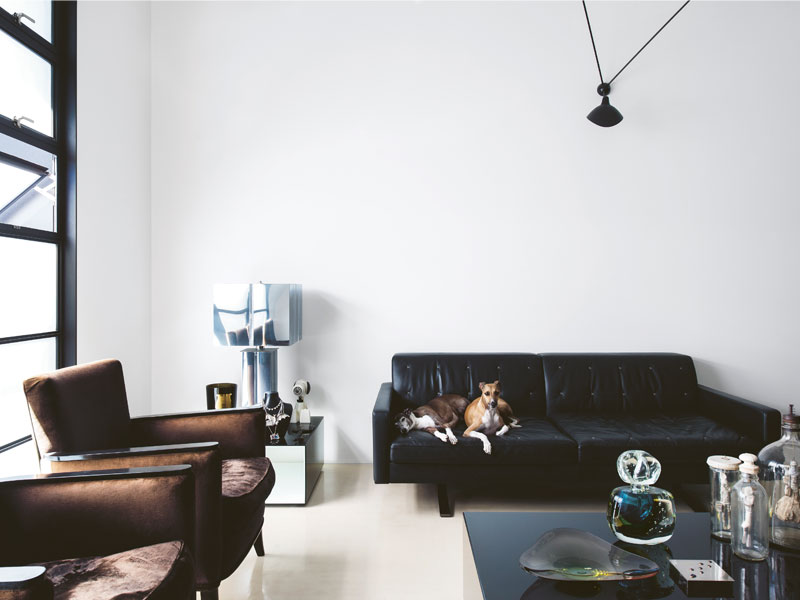
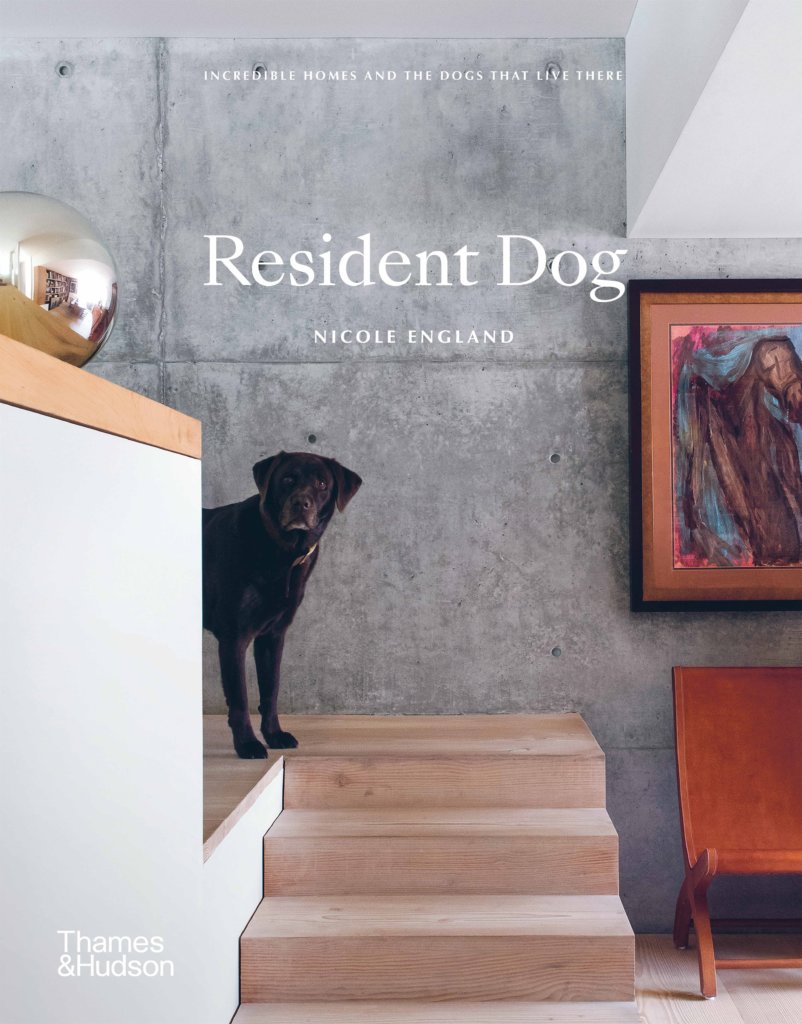
Resident Dog is available now in a compact edition. Text and images by Nicole England and design by JAC&.
AU$39.99
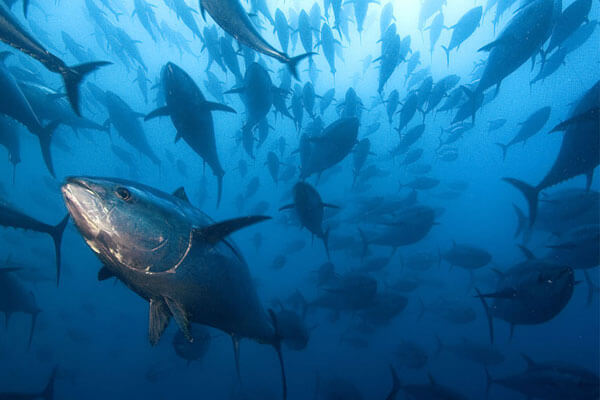
Humanity has reached a pivotal point in time. Human Nature brings together twelve of the world’s most influential photographers to show us why. With compassion and empathy, their extraordinary images and the stories behind them help us to understand what matters now for humanity and the planet.
Get to know the different photographers featured, some of their work from the book and their views on the Age of Anthropocene.
Brian Skerry
Brian Skerry is a photojournalist with a focus on underwater environments and marine wildlife and is a lecturer on exploration, photography and conservation. His work has been featured in many publications and he has produced over twenty-five stories for National Geographic magazine.
‘The decisions that we make today are going to determine the future of this planet, and the future of our species. It’s a time for truth; it’s a time for science and storytelling and journalism to work together collaboratively. The stakes have never been quite so high.’
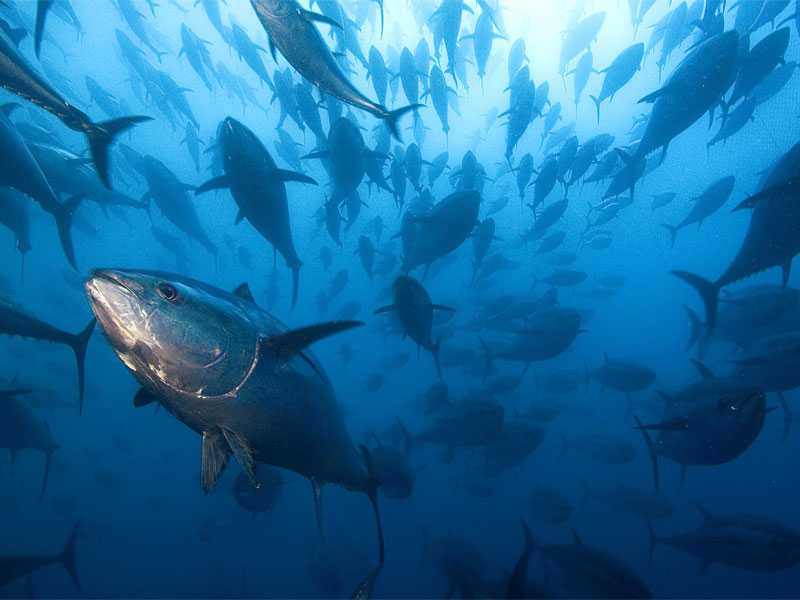
Frans Lanting
Hailing from the Netherlands, Frans Lanting is a renowned photographer and naturalist whose work has frequently appeared in National Geographic, where he served as a photographer-in-residence.
‘Nature can help us overcome the effects of climate change in a much more effective way than anything else. If we invest in nature, in protecting nature as habitats, as forests, as lungs of the planet, then we can save species that are dependent on those habitats.’
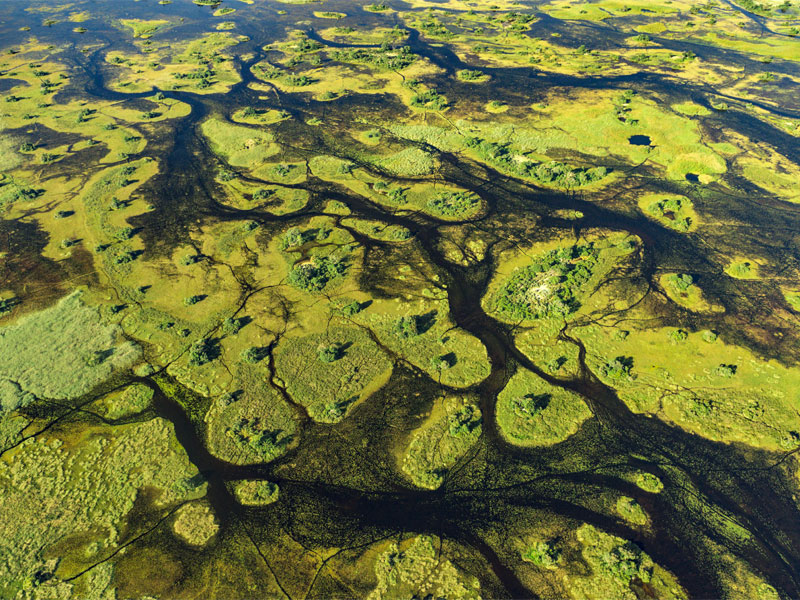
J Henry Fair
Based in New York City and Berlin, J Henry Fair creates imagery and media to explain the science of complex environmental issues.
‘What we see in these pictures are the hidden costs of mining; the detritus from the production processes that make the things that we buy every day, whether it’s electricity, bread or the soda cans we throw away on the street. We are complicit, but it’s a complicity of ignorance.’
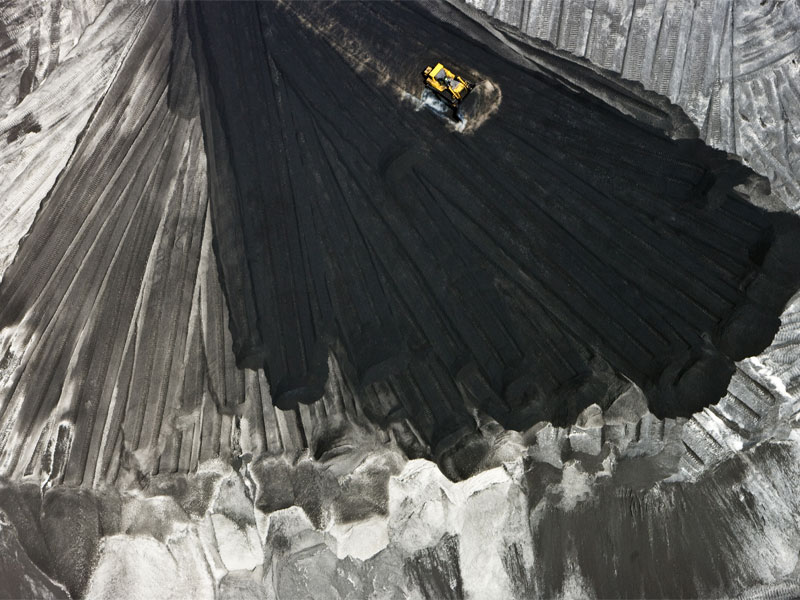
Paul Nicklen
Paul Nicklen is a Canadian photographer and marine biologist specialising in the polar regions and their wildlife.
‘Change is happening. A little too late and too slowly, but it is happening and that’s what gives me hope. We know that there’s no other option but to fight for this and I think we are going to win. There is hope everywhere around us.’
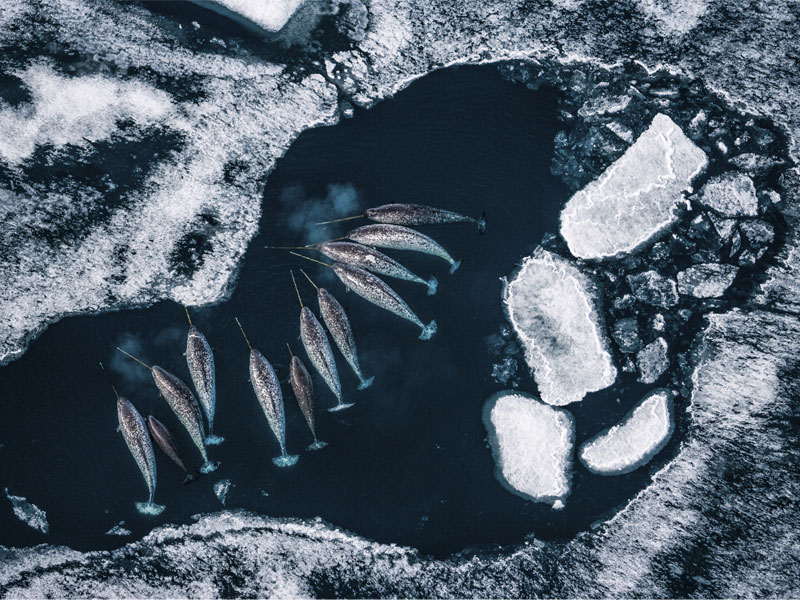
Cristina Mittermeier
Cristina Mittermeier is a marine biologist and activist who pioneered the concept and field of conservation photography, founding the International League of Conservation Photographers in 2005 to provide a platform for photographers working on environmental issues.
‘This lack of commitment to community, this lack of care for the other, is absolutely at the heart of the environmental issues we are confronted with. Inequality and climate change are the two biggest issues that we’re facing.’
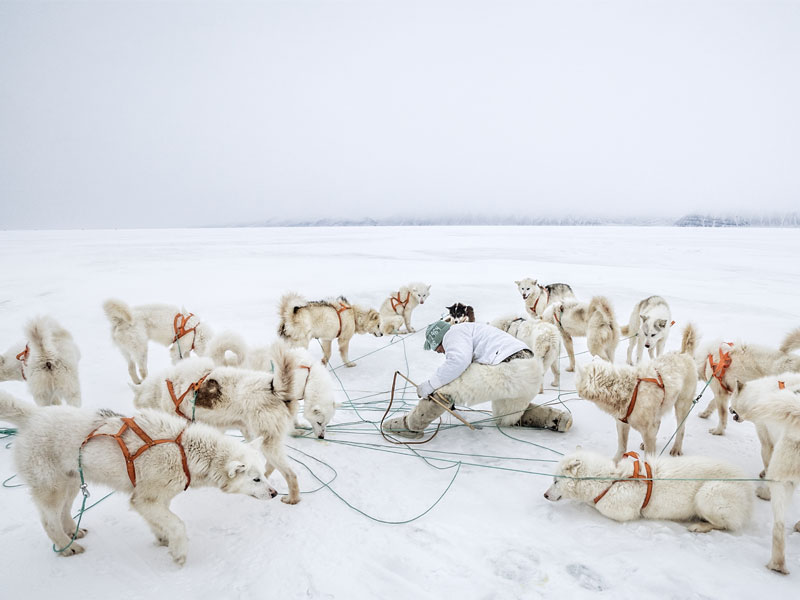
Brent Stirton
Brent Stirton is a South African photographer and a senior staff photographer for Reportage by Getty Images, specialising in documentary work covering global topics including health, the environment and conflict.
‘It’s almost suicidal in terms of our civilisation’s thinking on these issues, but a lot of that’s because people are simply in the process of surviving, feeding their families. Conservation is almost considered a luxury, when it should be a necessity.’
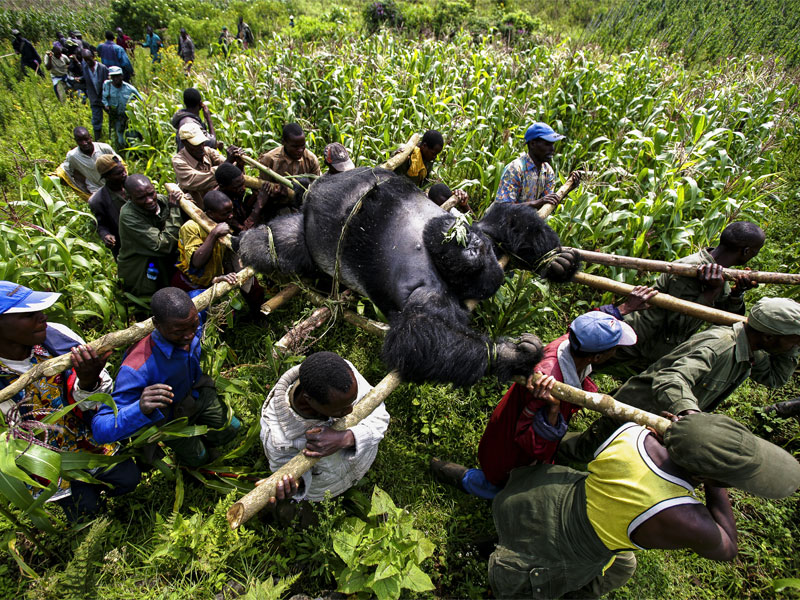
Ami Vitale
Ami Vitale is a photographer, filmmaker, writer and explorer who tells stories about our fragile relationship with the natural world.
‘We all have the capacity to get engaged and use our voices to make a difference. The messenger matters just as much as the message itself. Each of us can be a powerful voice when speaking to the people in our lives.’
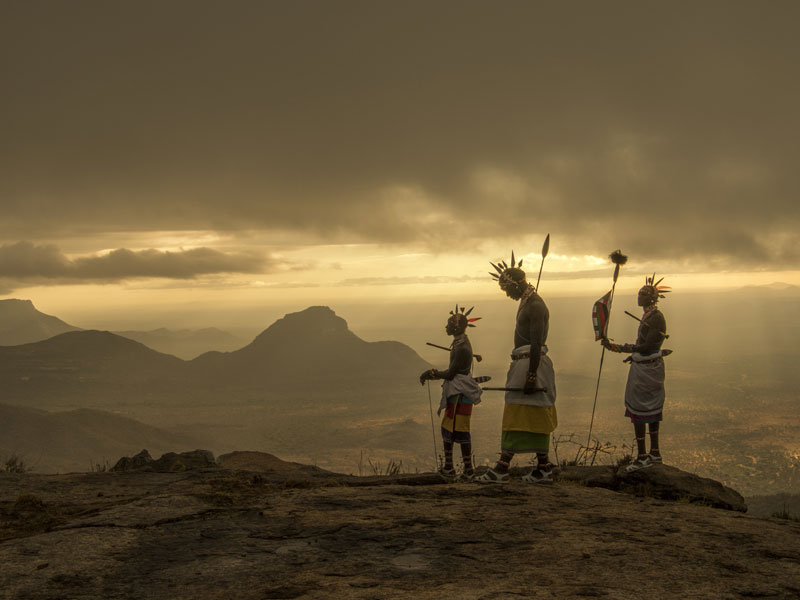
Steve Winter
Steve Winter has been a photographer for National Geographic for over two decades. He specialises in wildlife and particularly big cats.
‘If we can save the ecosystems and these animals’ habitats, we can help save ourselves. That’s my mantra: if we can save big cats, we can help save ourselves. We don’t have a choice; we either save the planet or we perish.’
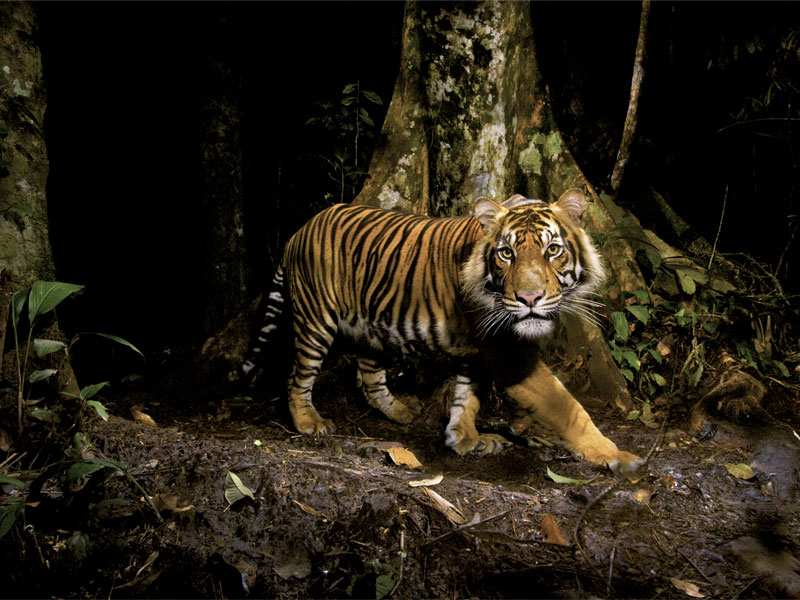
Tim Laman
Tim Laman is a field biologist, wildlife photographer and filmmaker.
‘It’s hugely important for climate change that forest stays as forest – all that carbon that’s in there – and the birds of paradise are flagship species that can focus people’s attention on conserving New Guinea’s forests.’
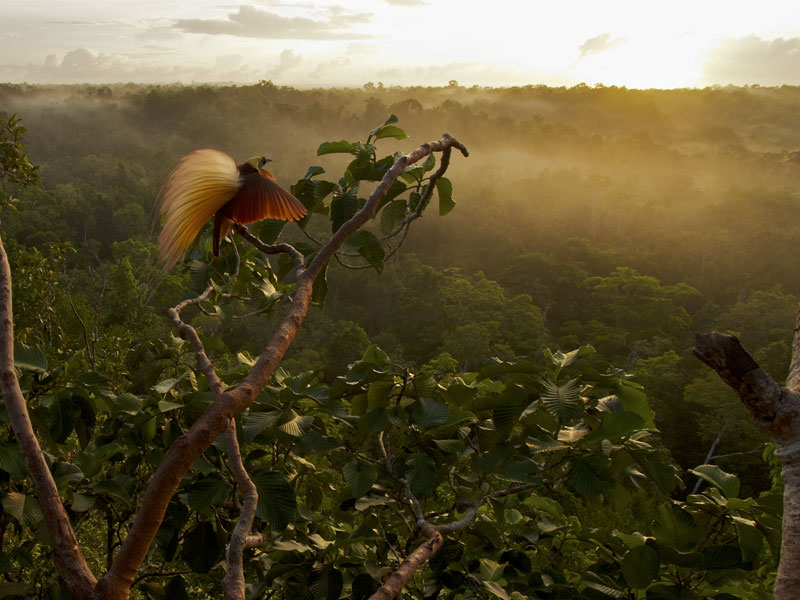
George Steinmetz
A regular contributor to National Geographic magazine, George Steinmetz’s work has examined subjects ranging from global oil exploration and the latest advances in robotics, to the innermost stretches of the Sahara and the little-known tree house people of Papua, Indonesia.
‘Over the years, my work has turned me into an accidental environmentalist. I never set out to be an advocate for our planet, but I think that if people know more about an issue, they can make choices that will lead to solutions. Our individual choices add up.’
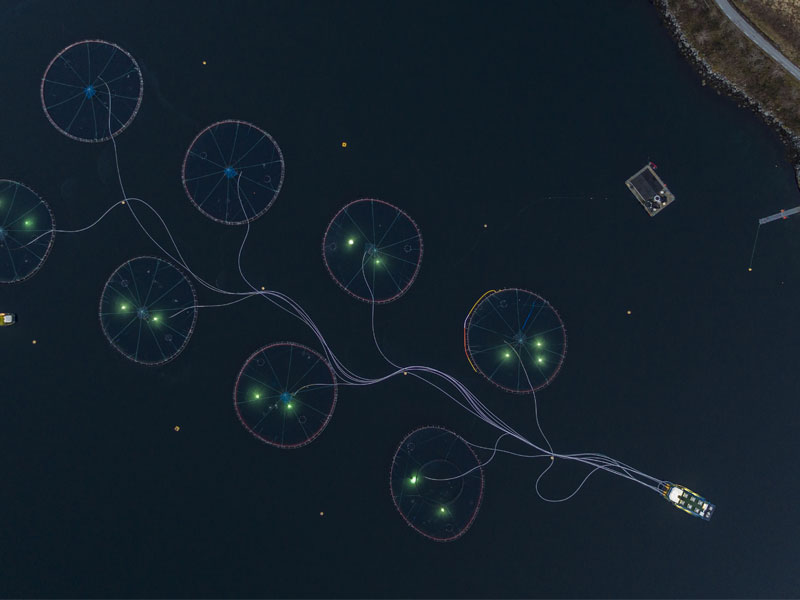
Richard John Seymour
British photographer, designer and filmmaker Richard John Seymour uses photography and film to explore the connections between cities, economies and landscapes in an effort to draw attention to the political, environmental and social issues that stem from human-made environments.
‘In the last fifteen years we’ve produced half of the plastic ever made and in the last twenty-five years we’ve emitted half of the CO2 ever emitted in the history of humanity. Since we’ve had the information that we’ve needed to change our habits, we’ve massively done the opposite.’
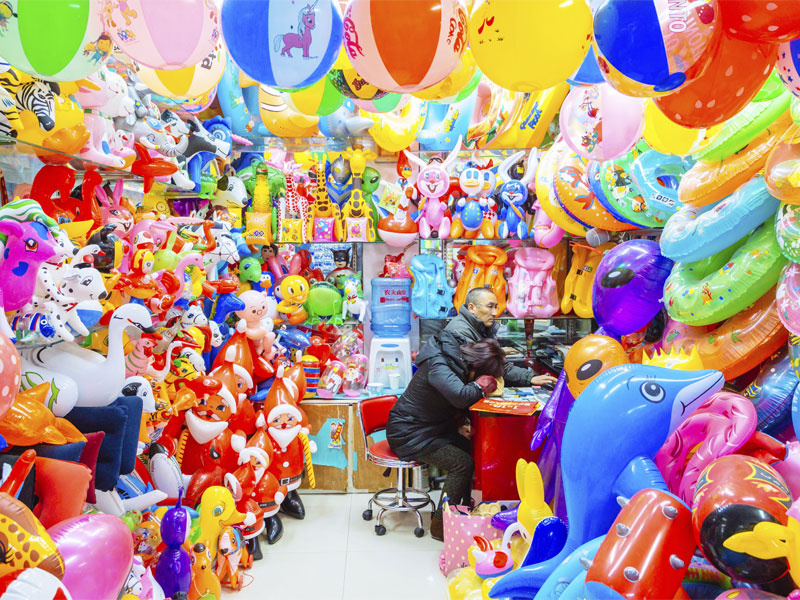
Joel Sartore
Joel Sartore is an award-winning photographer, speaker, author, conservationist and the 2018 National Geographic Explorer of the Year.
‘Human beings are the ones that hold earth’s fate in our hands. We really do need to pay attention and look these animals in the eye. Hopefully then people will decide whether or not the future of life on earth is worth it.’
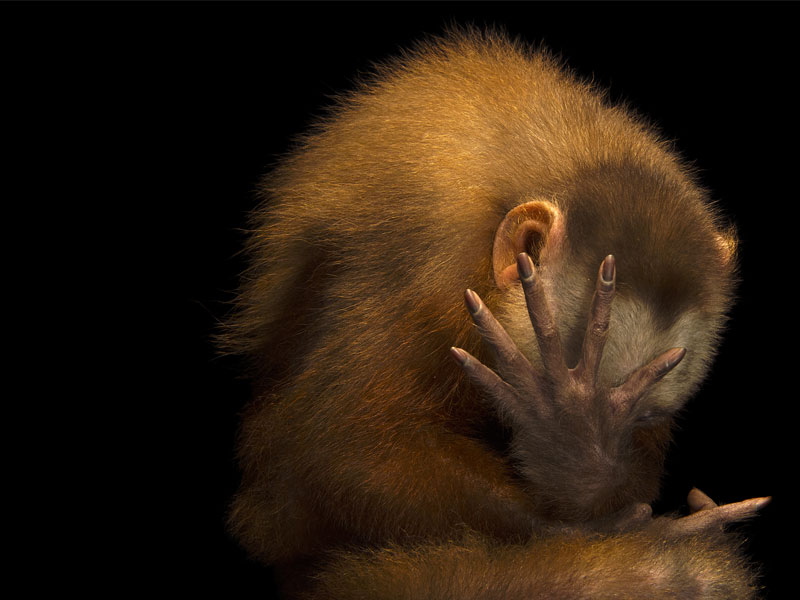
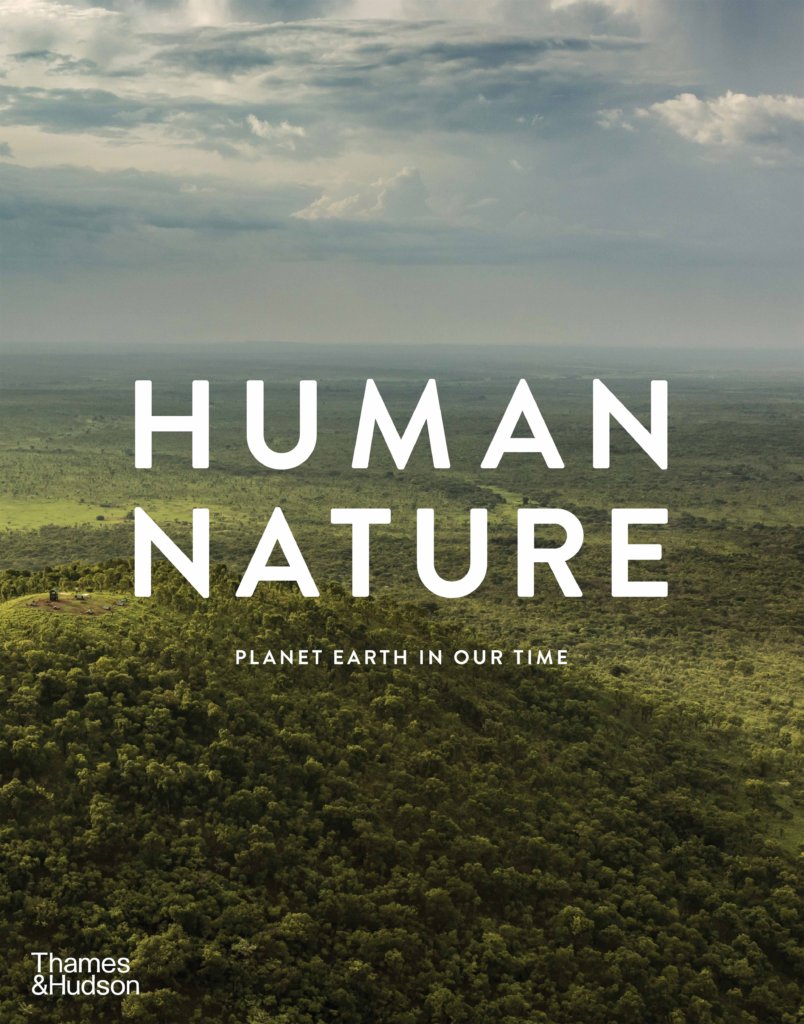
This is an edited extract from Human Nature, out now. Text edited by Geoff Blackwell and Ruth Hobday, copyright © Blackwell & Ruth.
AU$65.00
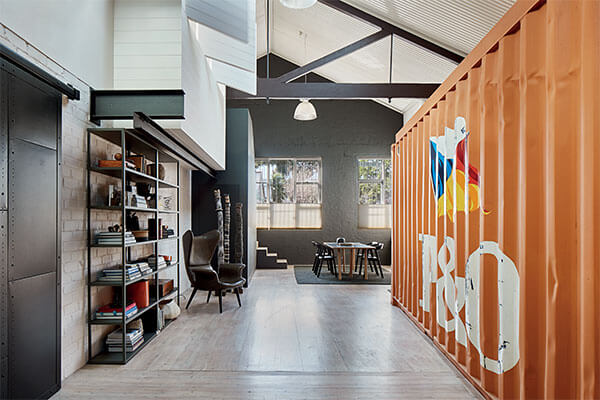
Product Design and Decoration: Eloise Fotheringham
Photography: Shannon McGrath
Hare + Klein Interior is our second book to showcase the signature use of texture, colour and scale in Hare + Klein’s exceptional and responsive interior design practice.
With a 20-foot shipping container in the living room, the once Old Furniture Factory is one of the most unconventional homes in the book. The previous fit-out of this 1920s furniture factory and warehouse was mostly demolished, aside from the footprint of the mezzanine floor and the 20-foot shipping container. As author and Hare + Klein’s principal and artistic director Meryl Hare writes, “I could see no way of getting it out without removing the front of the building. The concept of working with this extraordinary item in the living room was challenging, but I decided that the ‘elephant in the room should be acknowledged – and repainted orange!”
The impressive result of Hare + Klein’s work here is a fully functioning home for a young family, complete with the shipping container turned children’s playroom, a communal dining area, a practical kitchen with an industrial feel, floods of light and staircases finished in steel to keep in theme with the original look of the building.





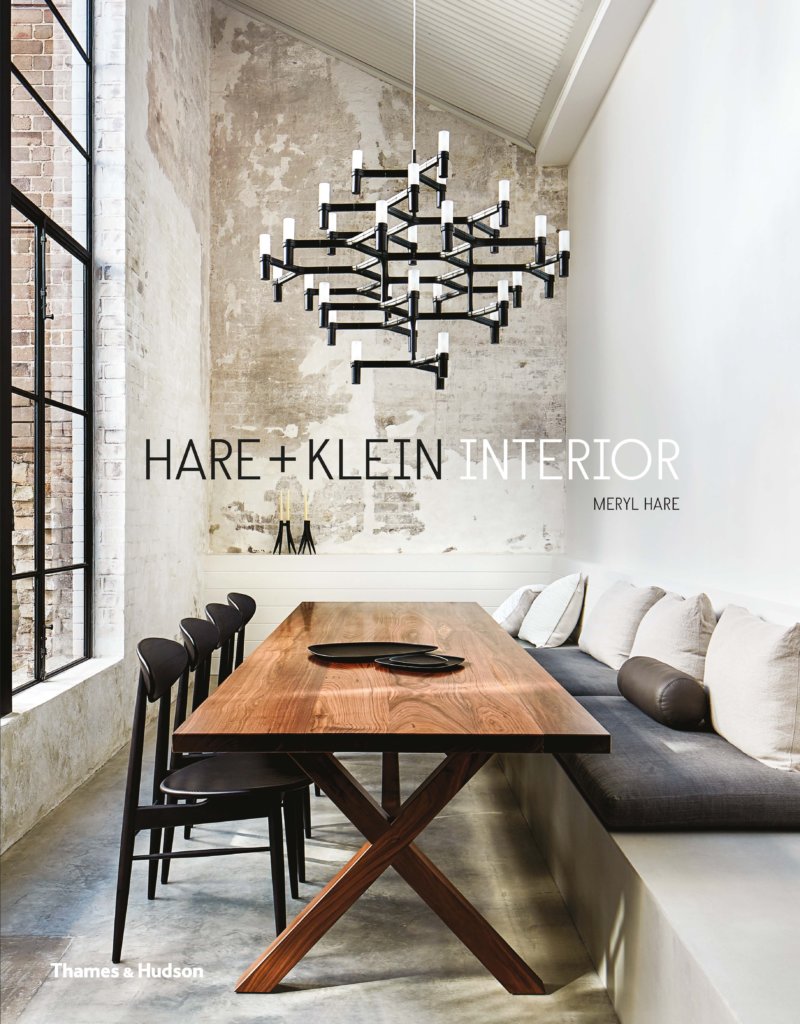
Hare + Klein Interior is out now. Text by Meryl Hare, design by Daniel New and cover photograph by Shannon McGrath.
AU$65.00
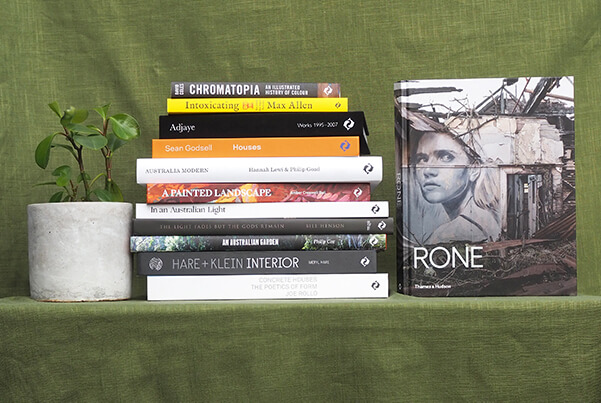
Complete Dad’s bookshelf with these captivating titles, carefully selected by our staff for their own Dads, Grandads and all loved-ones as a Father’s Day gift.
From intriguing narrative non-fiction to colourful tomes on art, architecture and photography, we have a book to pique nearly any interest.
Pore over these visual beauties on Australian artists, from the multi-storey murals in Rone to the diverse works in A Painted Landscape, topped off with Chromatopia‘s illustrated history of colour.
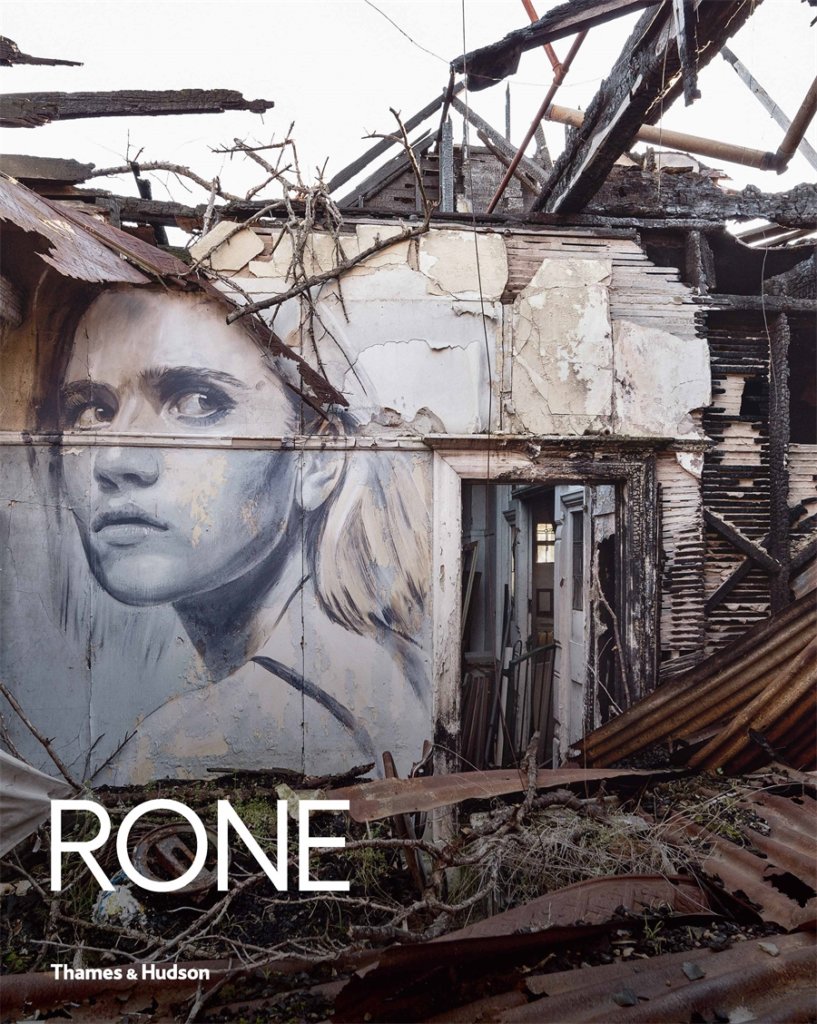
Known for his multi-storey murals gracing buildings all over the world, Melbourne-based artist Rone uses his work to explore the friction and connection between beauty and decay, youth and ruin.
AU$59.99
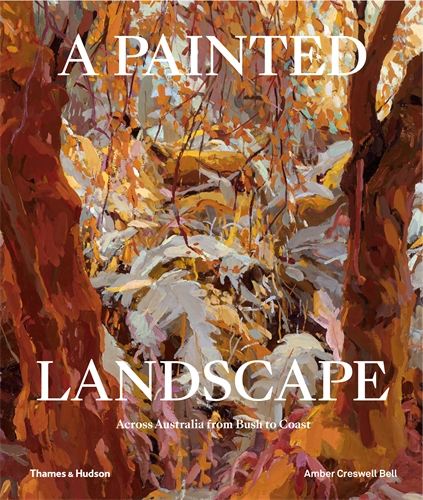
Amber Creswell Bell
A Painted Landscape forms an aesthetic study of the landscape as seen, experienced and expressed by 50 Australian artists who choose to paint it.
AU$59.99
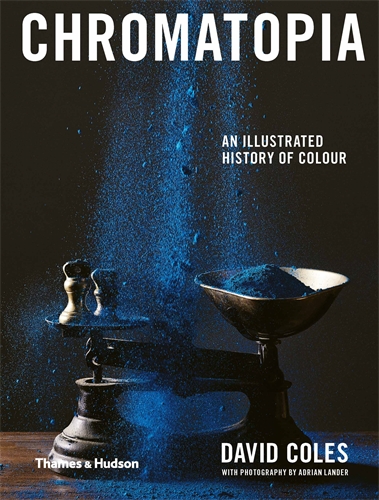
David Coles
Chromatopia is an illustrated history of colour, spanning the ancient world to modern leaps in technology. This is a book for the artist, the history buff, the science lover and the design fanatic.
AU$34.99
Explore the world through spellbinding photography, beginning with our country’s luminous landscapes through In An Australian Light to the gritty textures of Melbourne and Egypt in Bill Henson’s The Light Fades but the Gods Remain.
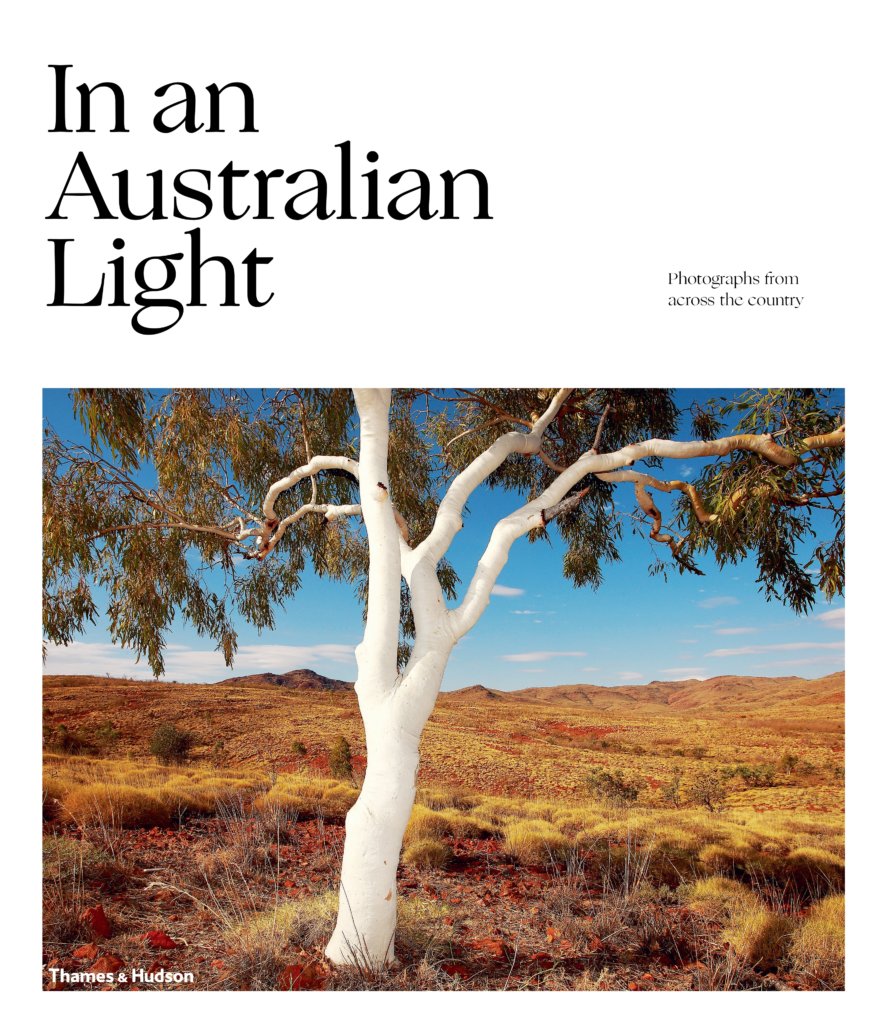
In an Australian Light reminds us of the myriad ways we experience light in this vast and diverse land.
AU$59.99
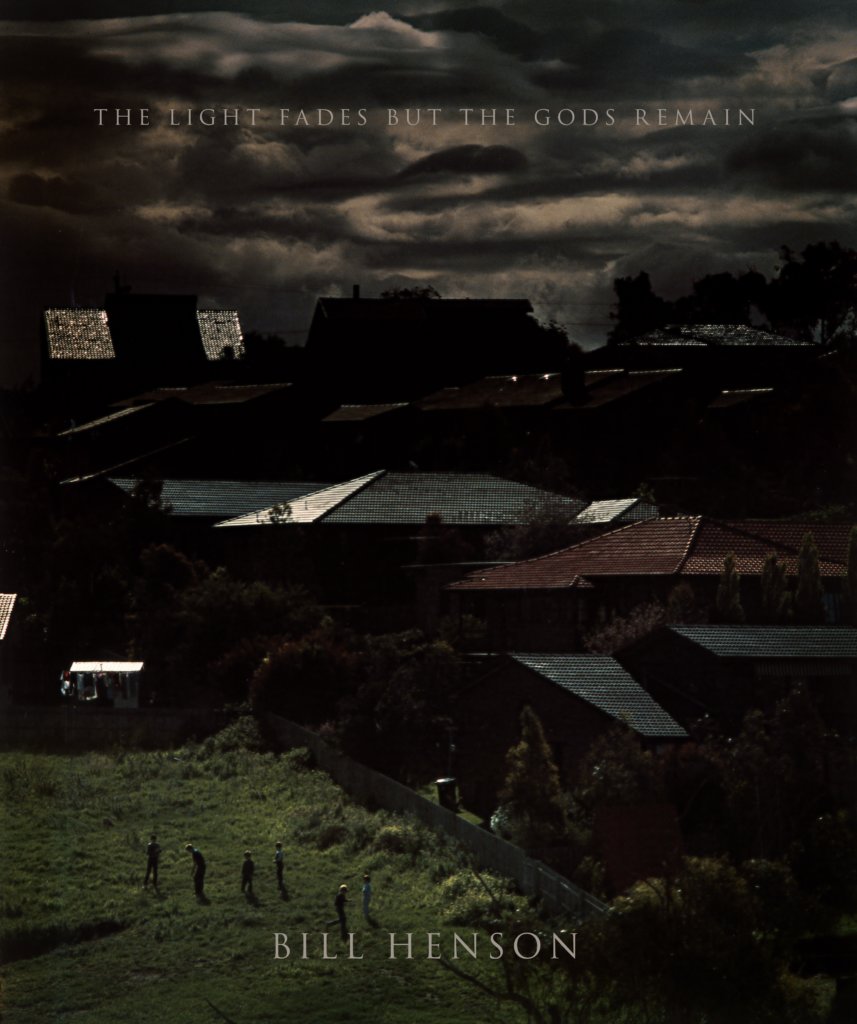
Bill Henson
A significant publication of images by one of Australia’s most extraordinary imaginations, The Light Fades But The Gods Remain is the bound collection of Bill Henson’s work.
AU$100
Build up your architecture bookshelf with these tomes on beautiful buildings, houses and projects. Peer inside Sean Godsell: Houses, and the first projects of an architectural icon David Adjaye – Works. Read Australia Modern for your comprehensive visual guide to modernism in our country, and Concrete Houses to explore the lyric beauty, versatility and brute force of concrete as a building material.
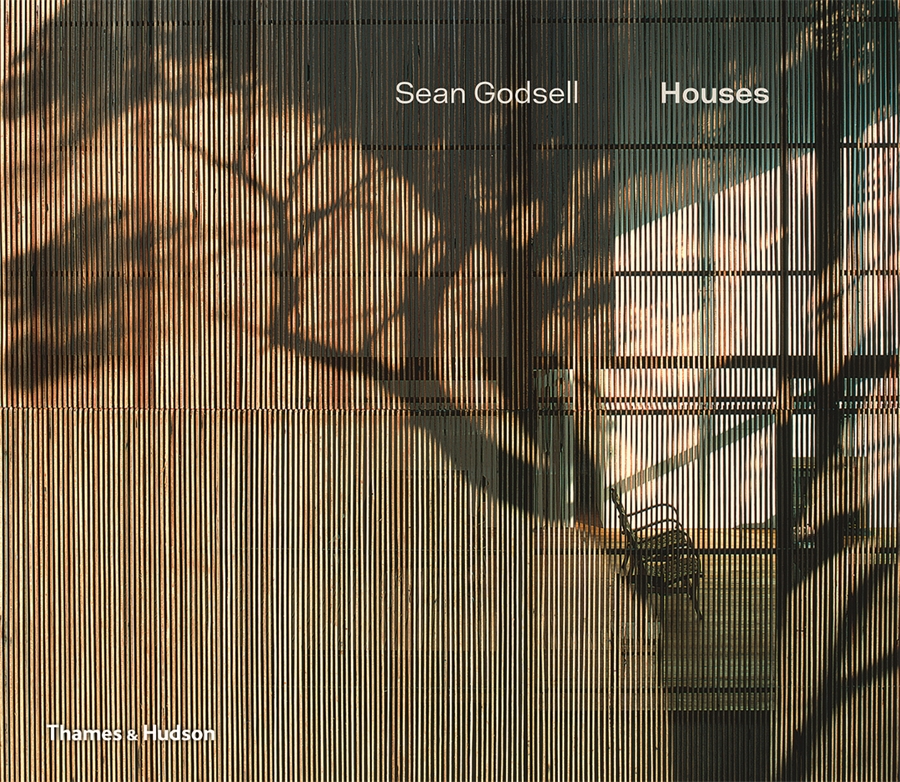
The first survey of residential projects designed by award-winning Australian architect Sean Godsell.
AU$100
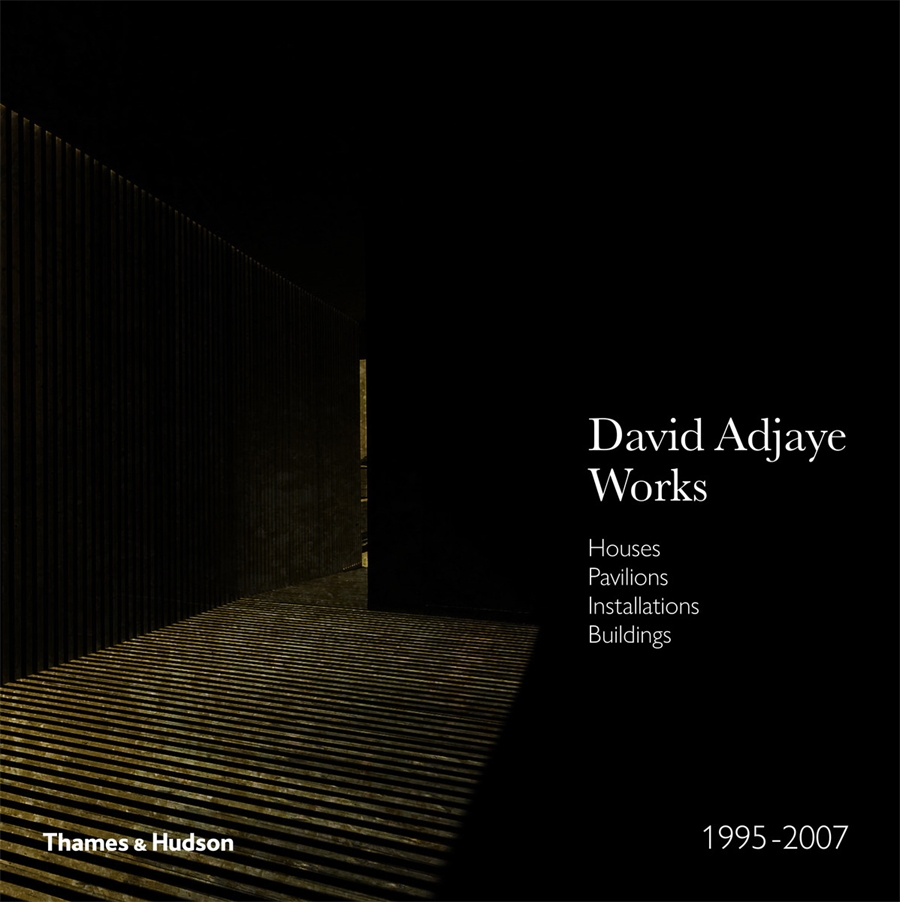
This monograph presents the early works of Sir David Adjaye, one of the most important architects at work in the world today.
AU$120
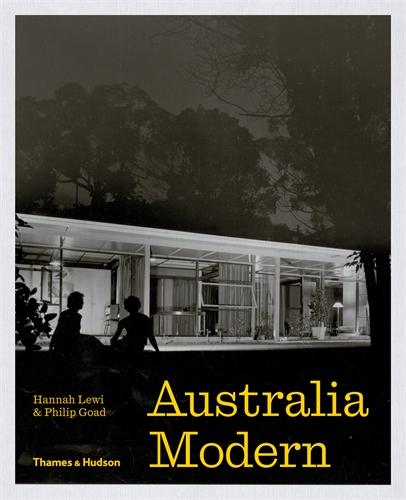
Hannah Lewi & Philip Goad
Australia Modern vividly captures this architectural legacy with a survey of 100 significant modern sites, richly illustrated with archival images and newly commissioned photographs.
AU$80
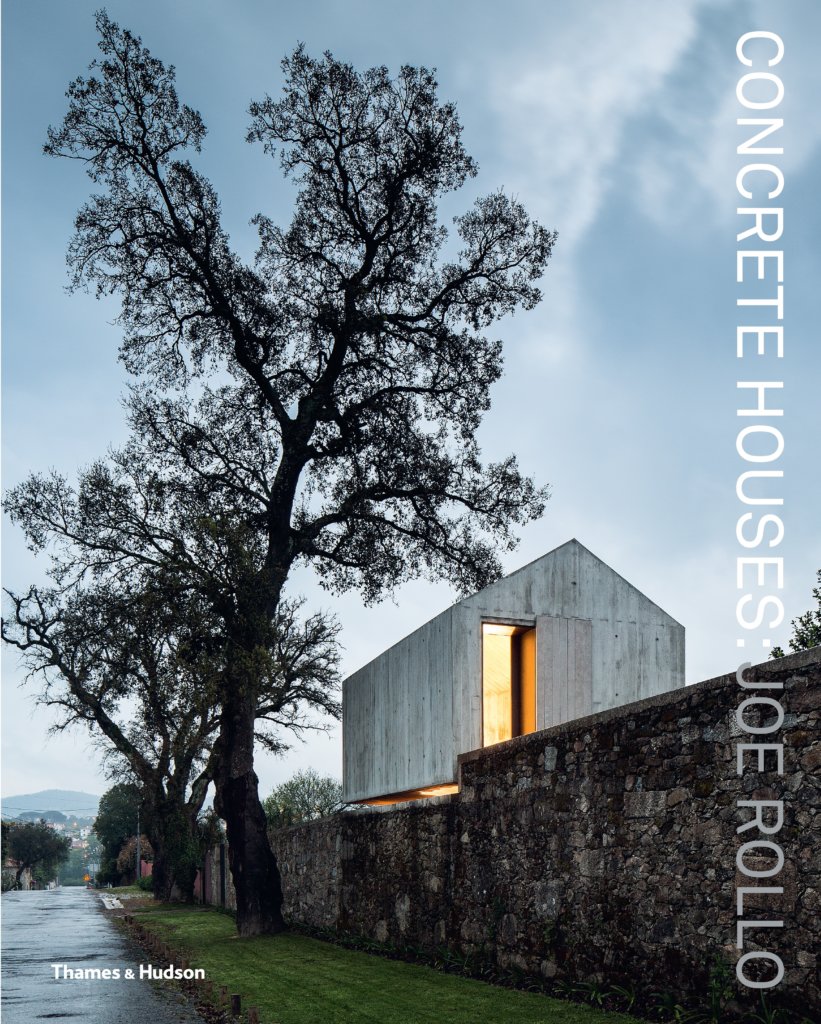
Joe Rollo
Concrete Houses explores the use of concrete in landmark contemporary residential architecture from Australia and abroad.
AU$75
Find inspiration for the indoors with celebrated interior designer Meryl Hare in her new book Hare + Klein Interior, and enjoy the outside with the beautifully photographed pages of In An Australian Garden.
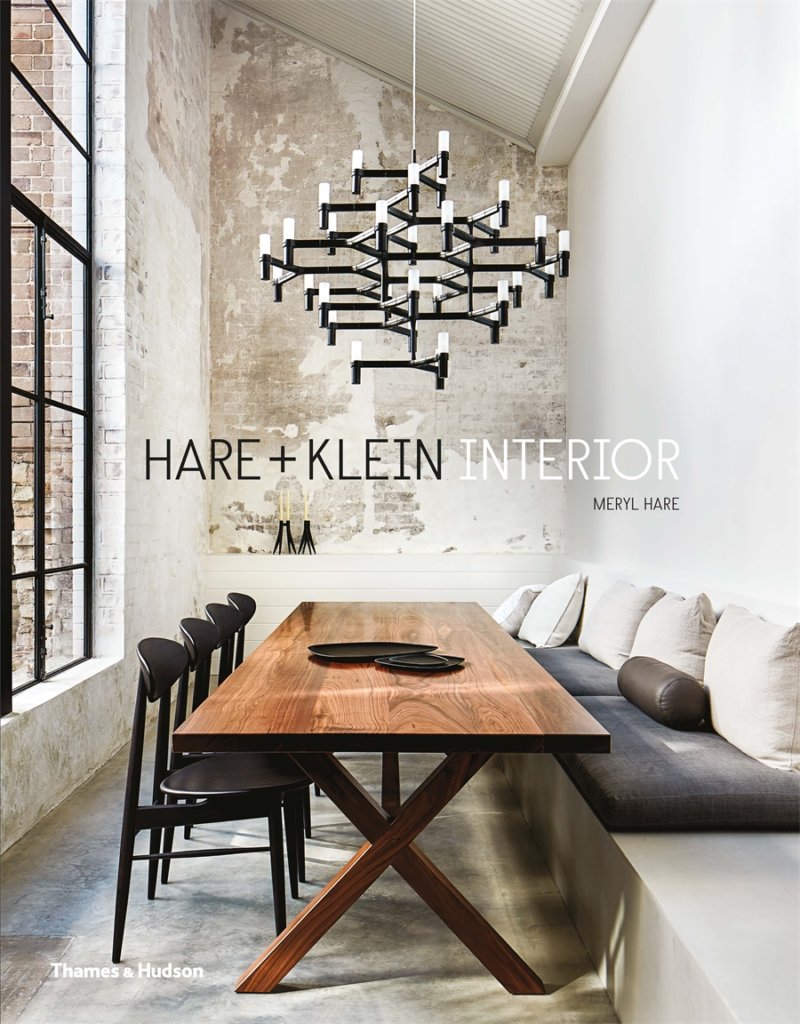
Meryl Hare
With a focus on detail and ambience, this is a personal invitation into the elegant and alluring designs of Hare + Klein.
AU$65
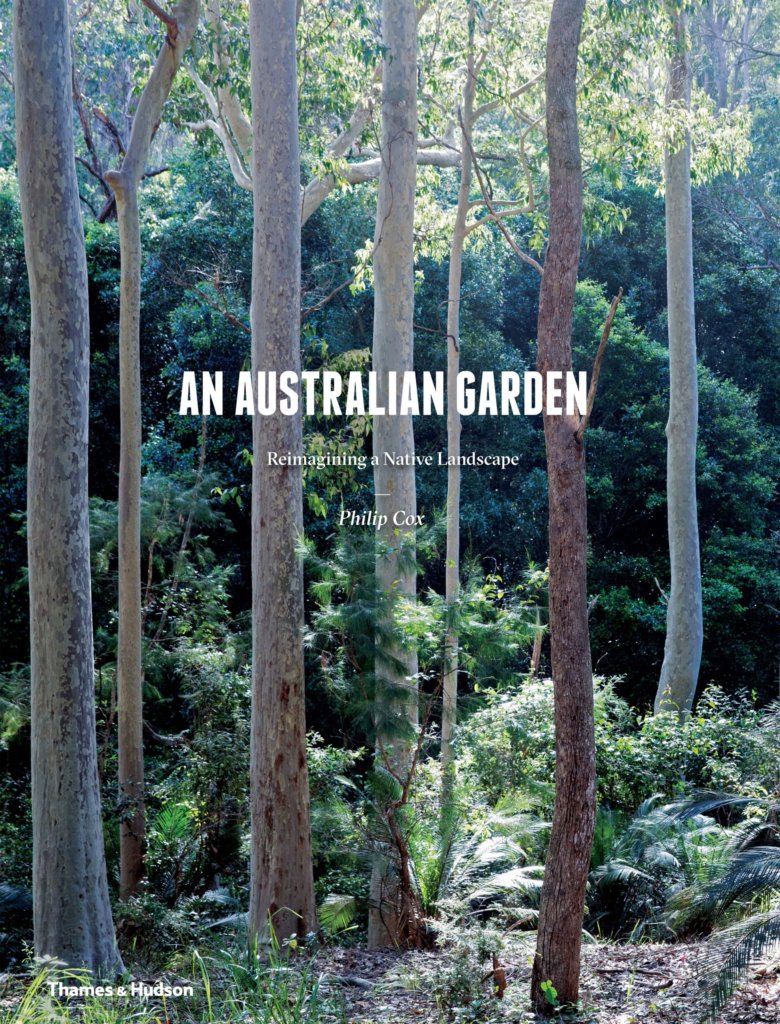
Philip Cox
Both private retreat and conservation exercise, An Australian Garden uses nature as muse to reveal the arresting beauty of the natural landscape.
AU$70
Mix a drink from Max Allen’s Intoxicating, complete with cocktail recipes and a history lesson on Australia’s colourful and complex drinking history. Then, change the way you see our country in Landscapes Of Our Hearts.
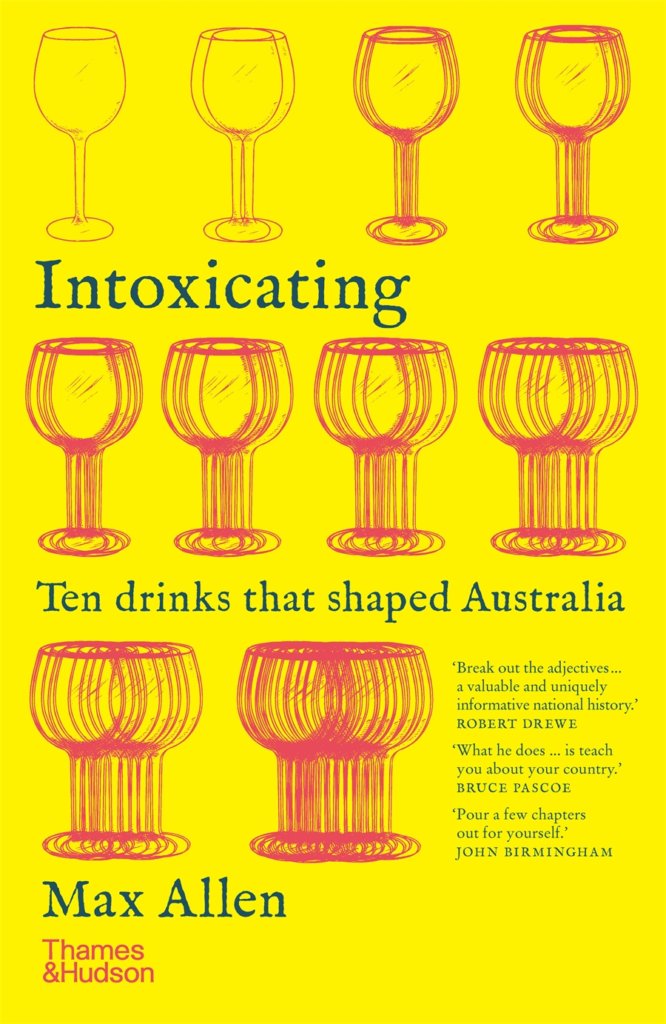
Max Allen
In search of answers, Intoxicating takes us on a personal journey through Australia’s colourful and complex drinking history, glass in hand.
AU$32.99

Matthew Colloff
An epic exploration of our relationship with this country, Landscapes of Our Hearts offers the possibility that a renewed connection to the landscape and to each other could pave the way towards reconciliation.
AU$34.99
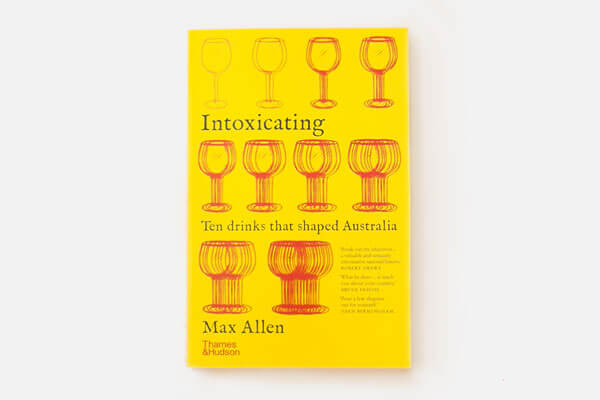
Intoxicating is award-winning journalist Max Allen’s personal journey through Australia’s colourful and complex drinking history, glass in hand. In the book, Max uncovers ten of Australia’s most famous – and most surprising – drinks, sharing anecdotes about each.
In this edited extract, Max discusses his first forays into cider and home distillation, from the chapter ‘Peach Cyder’.
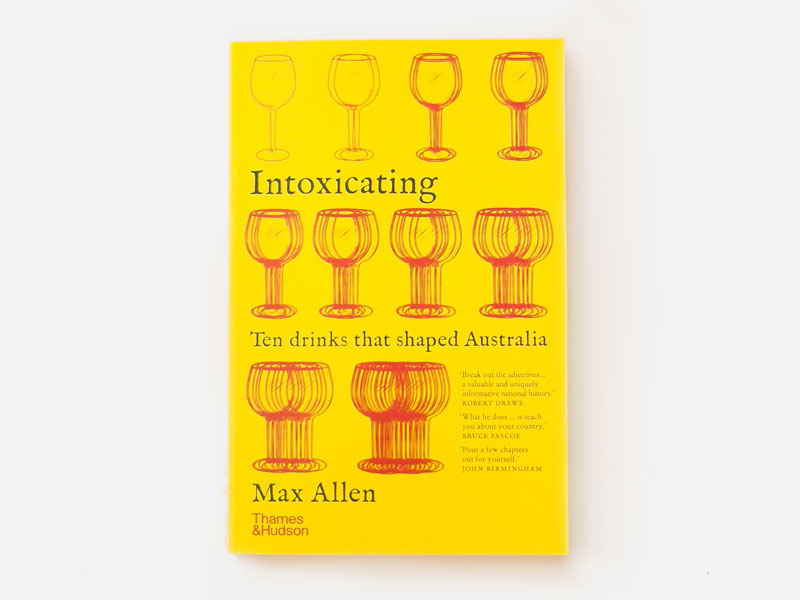
I was born and spent the first few years of my life in Bristol, in the heart of England’s West Country, epicentre of traditional cider production. As a teenager living in London, some of my first experiences of alcohol came in the form of big plastic bottles of cheap Woodpecker Medium Dry cider bought underage at the local off-licence. Then, travelling around the West Country in the late 1980s, I discovered the real thing: farmhouse scrumpy, stuff of legend.
The revelation came in a crumbling 16th-century pub called the Three Tuns in Hay-on-Wye, a little town famous for its bookshops and literary festival, just over the Welsh border from Herefordshire. Saggy wooden benches by the smoke-blackened inglenook, an ancient shillings-and-pence slot machine in one corner, and an even older landlady tending the tiny bar.
When I asked for cider, instead of reaching for the hand pump on the bar or a bottle from the fridge, she rummaged around in the gloom and hauled out a plastic gallon container of cloudy golden liquid. This was scrumpy, made by a local farmer using nothing but freshly pressed apple juice and wild yeasts and time.
‘Be careful,’ she warned, as she poured out a pint. And she was right: with its huge, sharp aromas of pulpy windfall fruit and its furry taste of tough, brown apple cores strewn across a barnyard, this was a deeply challenging explosion of agricultural flavour. I think it might also have had mild hallucinogenic properties. I was hooked.
—
I first made cider in my backyard in Melbourne in 2011. I’d found a small orchard full of old apple varieties just a few blocks from my house, in the grounds of Rippon Lea, the National Trust–owned Melbourne mansion built by merchant and politician Frederick Sargood in 1868. Like many grand estates established on the outskirts of Australia’s emerging capital cities in the late 19th century, Rippon Lea was originally surrounded by farmland. Much of that country is now covered in suburban houses, schools, cinemas and the ABC’s old Gordon Street studios where my mum worked with my wife’s parents in the 1960s. But in the 1980s, one corner of the estate near the original 1860s stables was converted to an orchard that now boasts over 130 varieties of heritage apples and pears, including Golden Pippin and the classic cider variety Kingston Black.
I’d heard that the gardeners at Rippon Lea had harvested enough fruit to make cider by netting some of the trees to stop the local flocks of lorikeets munching the crop. So I contacted the head gardener and asked if I could gather enough of what was left over – those few apples still clinging unscathed to higher branches, the unbruised windfalls lurking in the grass below – to make a demijohn of cider myself.
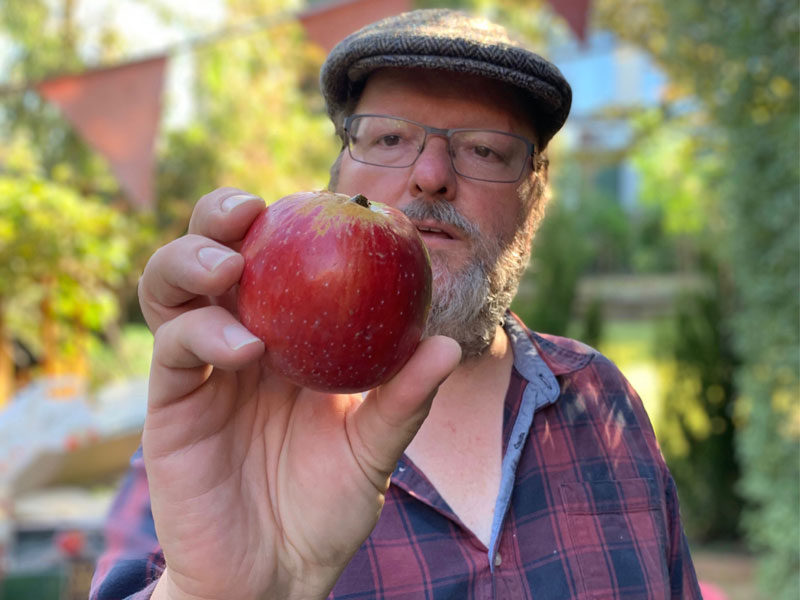
Not owning any cider-making equipment at that time, I crushed the apples in the most rudimentary way by bashing them to a pulp with a block of wood in a bucket. Then I borrowed a winemaker friend’s old basket press, wrapped the apple pulp up in parcels of shade cloth, put them in the press, slowly squeezed them and filled a glass demijohn with golden-brown sticky syrupy juice.
At this stage, according to all the modern cider-making manuals I’d read, I should have added some safe, reliable cultured yeast from a packet. Instead, I did nothing. I walked away and waited for nature to take its course. I wanted to do what the farmer who made that scrumpy in Hay-on-Wye had done and just let the wild yeasts on the apple skins and flesh and stalks and pips, in the air, on the press, do what yeasts do naturally: turn sugar into alcohol.
Nothing happened at first. The juice just sat there. But then, after a few hours, up from the depths of the murk emerged tiny pinprick bubbles of carbon dioxide: a definite sign of microbial activity. Fermentation had started. The wild yeasts were getting to work.
As I watched those little bubbles slowly rise, I felt another strange and profound feeling of connection with the generations of people before me who have marvelled at this seemingly miraculous process. And not just the cider makers: the winemakers and brewers, all those innumerable human beings who, for thousands of years, long before scientists identified yeasts and bacteria as the living organisms responsible for fermentation, have simply trusted in the mystery to produce a delicious drink.
—
I’ve made my own cider each autumn almost every year since that first fermentation epiphany. I’ve bought my own small-scale cider-making equipment. I’ve crawled around on my hands and knees in the mud and damp grass under apple trees foraging for windfalls in the Goulburn Valley. I’ve scrambled over gates and fences to reach fat ripe apples on wild roadside trees in Coonawarra. I’ve made friends with orchardists on the Mornington Peninsula who have old heritage varieties: proper cider apples like Kingston Black, almost-forgotten English apples like Sturmer Pippin, unfashionable Australian apples like Sundowner.
Each year I’ve brought my motley harvest back home and dragged my crusher and press out of the garage and invited friends and family, reluctant teenagers and eager neighbours, to help me make cider. And after the crushing and pressing, we’ve all sat down for a meal and opened bottles of last year’s batch and celebrated the season.
I now take bottles of my cider with me when I travel, to share with friends or to pour for winemakers or brewers or other, professional cidermakers. Sometimes people even say they like it, which makes me feel proud – and connected, as though the annual autumn West Country rituals are echoing in my own creaking basket press.
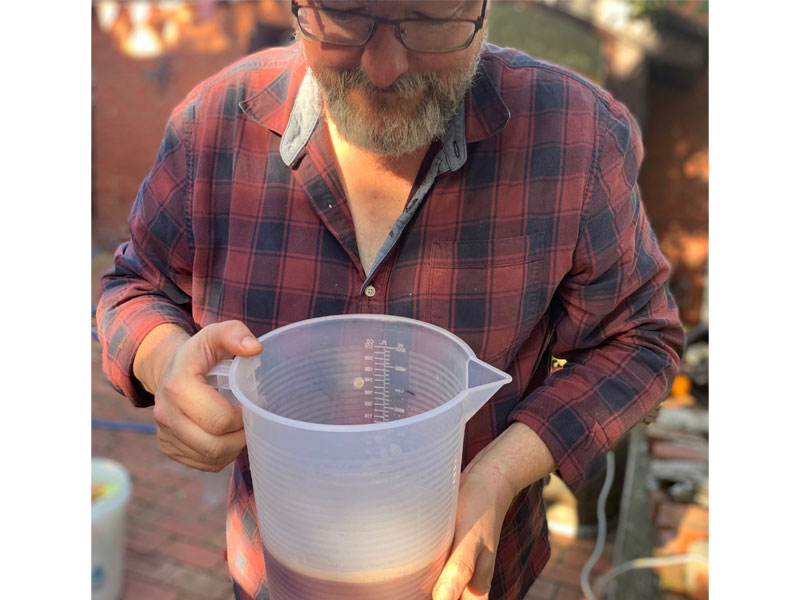
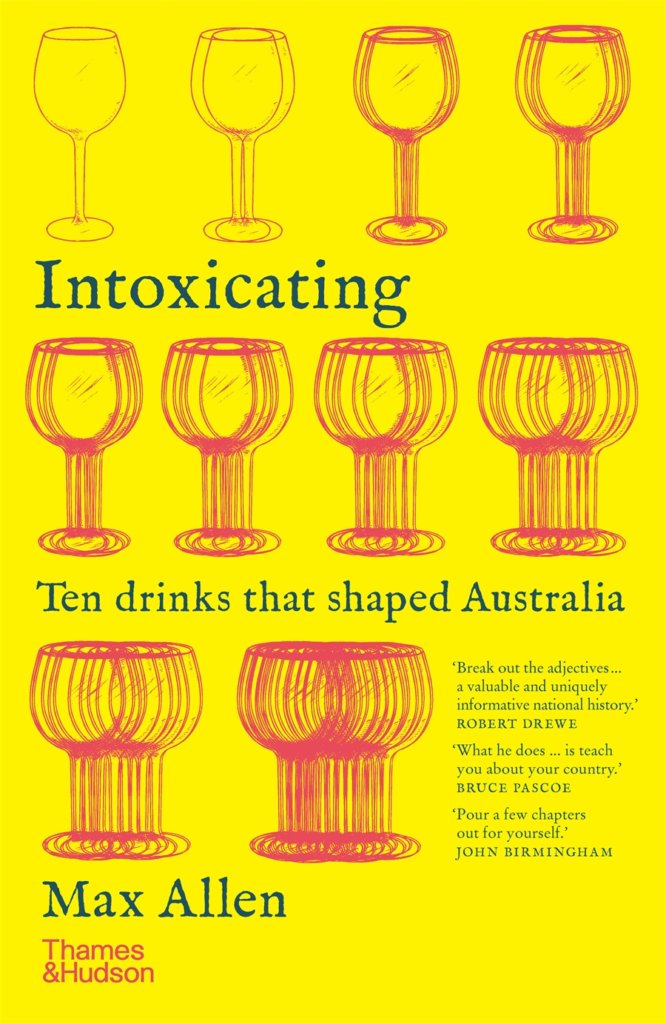
Intoxicating is out now. Text by Max Allen and cover design by Josh Durham.
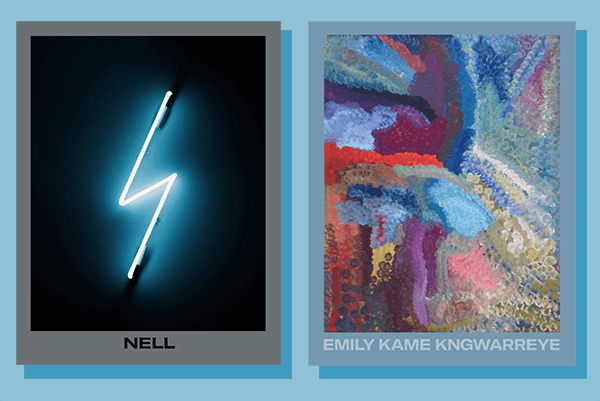
“Mini Monographs are books to treasure, celebrating Australia’s most captivating artists and featuring a collection of their best loved works.”
FRANCES MORRIS – DIRECTOR, TATE MODERN
The Mini Monographs series is a celebration of Australia’s most spellbinding female artists, featuring a selection of their most renowned works. The artists and works are selected with series editor Natalie King, curator and Enterprise Professor at the Victorian College of the Arts.
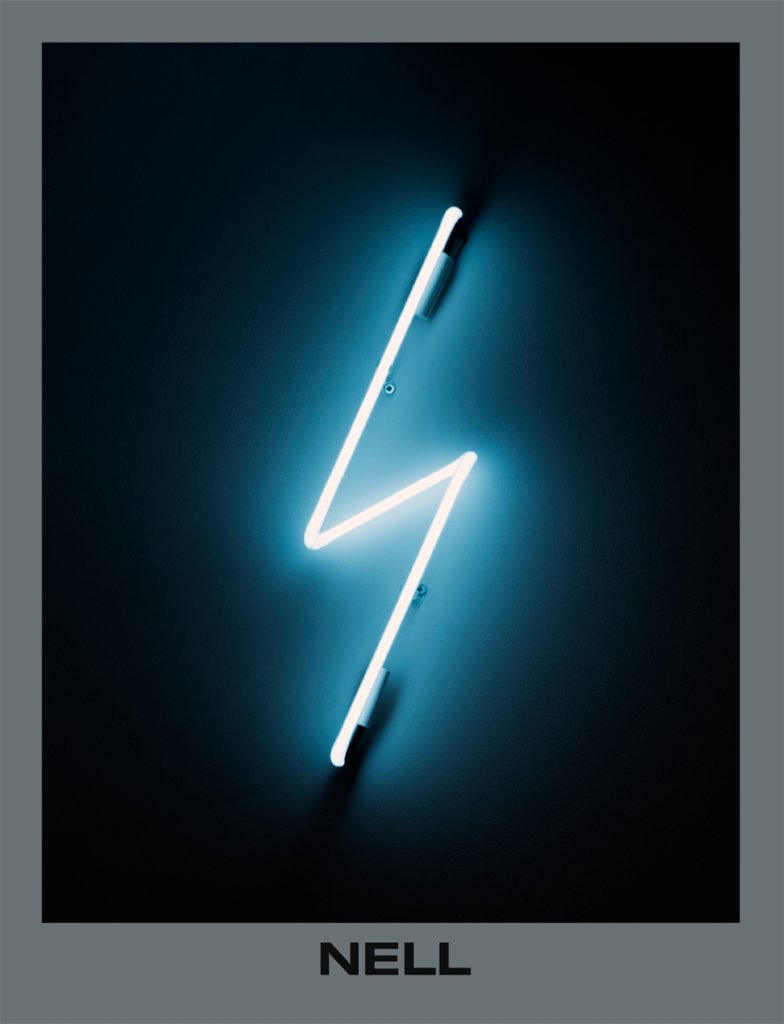
Nell’s magical objects and bold graphic style meld art, music and spiritual practice to explore what it means to be alive.
Nell is available now.
AU$29.99
Front cover: Lightning Bolt, 2013. Neon, 50x17cm. Edition of 5 + AP 2. Courtesy of the artist and Roslyn Oxley9 Gallery, Sydney. Photo: Jessica Maurer. Design: Evi-O.Studio & Rosie Whelan. Series editor: Natalie King.
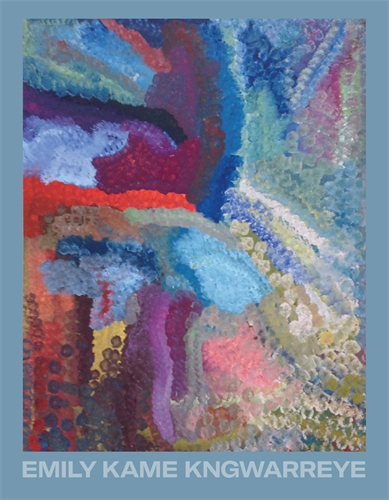
At the time of her death in September 1996, Emily Kame Kngwarreye was recognised as one of Australia’s foremost artists. In 2019, the Tate Gallery in London purchased her work, making hers the first piece of Australian Indigenous art to enter their collection.
Emily Kame Kngwarreye is available now.
AU$29.99
Cover image: Untitled (Alhalkere), 1993. Acrylic on canvas, 120 x 89cm. Reproduced courtesy of Utopia Art Sydney. Design: Evi-O.Studio & Rosie Whelan. Design: Evi-O.Studio & Rosie Whelan. Series editor: Natalie King.
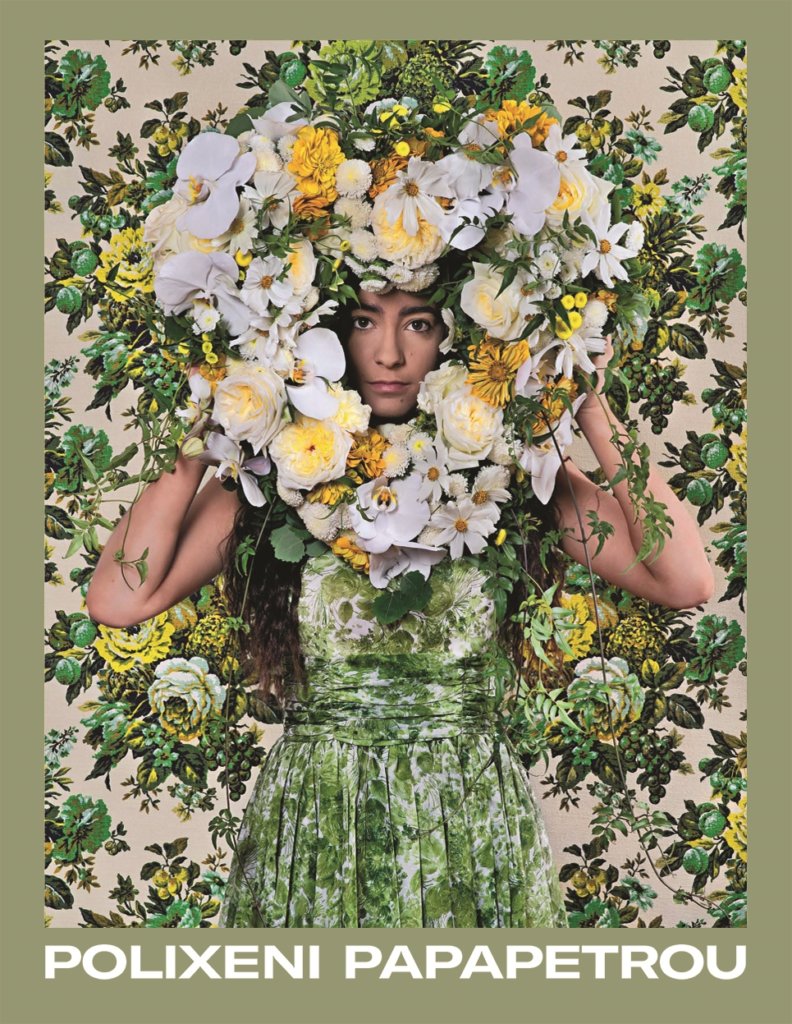
Flowers, daughters, the depths of despair – the beauty of Polixeni Papapetrou’s work lives on in this posthumous publication.
Polixeni Papapetrou is available now.
AU$29.99
Front cover: Polixeni Papapetrou, Heart, 2016. Pigment ink print, 127.5 x 85 cm. Reproduced courtesy of the artist and Michael Reid Gallery, Sydney, and Jarvis Dooney Galerie, Berlin. Design: Evi-O.Studio & Rosie Whelan. Series editor: Natalie King.
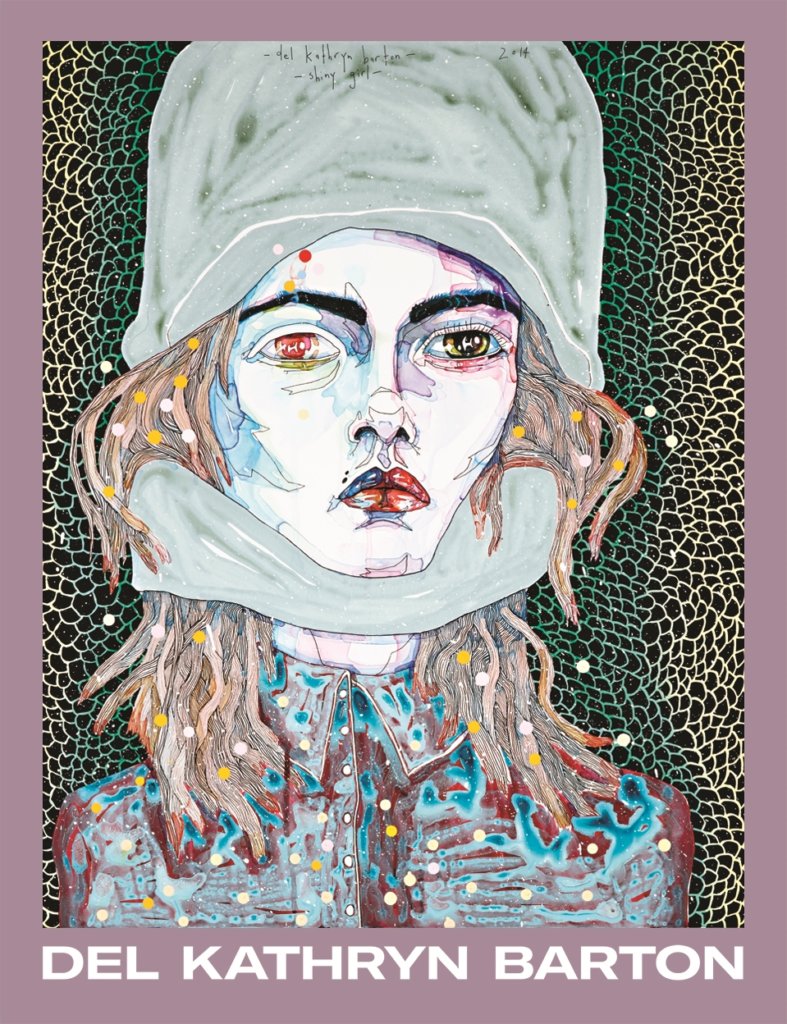
Renowned for her vibrant, highly detailed works, Del Kathryn Barton is an acclaimed artist working across painting, drawing, film, textile and sculpture.
Del Kathryn Barton is available now.
AU$29.99
Front cover: Del Kathryn Barton, Shiny girl, 2014. Acrylic on french linen, 83.5 x 68 cm. Design: Evi-O.Studio & Rosie Whelan. Series editor: Natalie King.
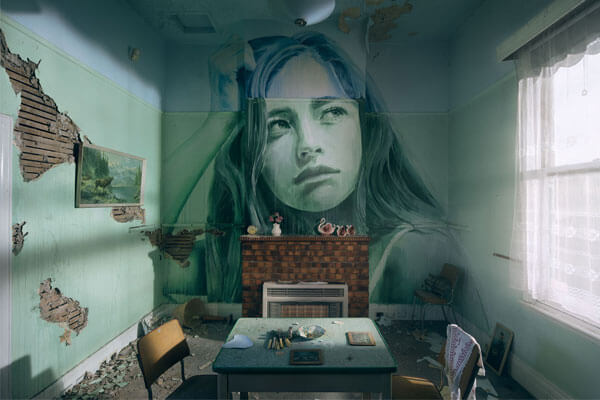
Rone: Street Art and Beyond brings together almost two decades of awe-inspiring work created by one of Australia’s most renowned street artists. This striking survey weaves through Rone’s early street work and stencils, to his arresting murals, and finally the large-scale projects he has ambitiously taken on in the past five years. These projects, immersive installations resulting from the transformation of condemned, derelict or forgotten spaces, have been praised across the globe. Undeniably unique, they explore divergent themes of beauty and decay, youth and ruin. Each artwork is painstakingly produced in immense detail, only to be destroyed, defining them as utterly ephemeral.
Here, we take a sneak peek at Rone’s fascinating installation projcts featured in the book.
EMPTY. October 2016, Fitzroy, Melbourne, Australia.
“Empty sparked Rone’s passion for creating immersive experiences and fuelled a deeper relationship: fusing art, architecture, decay and fleeting beauty.”
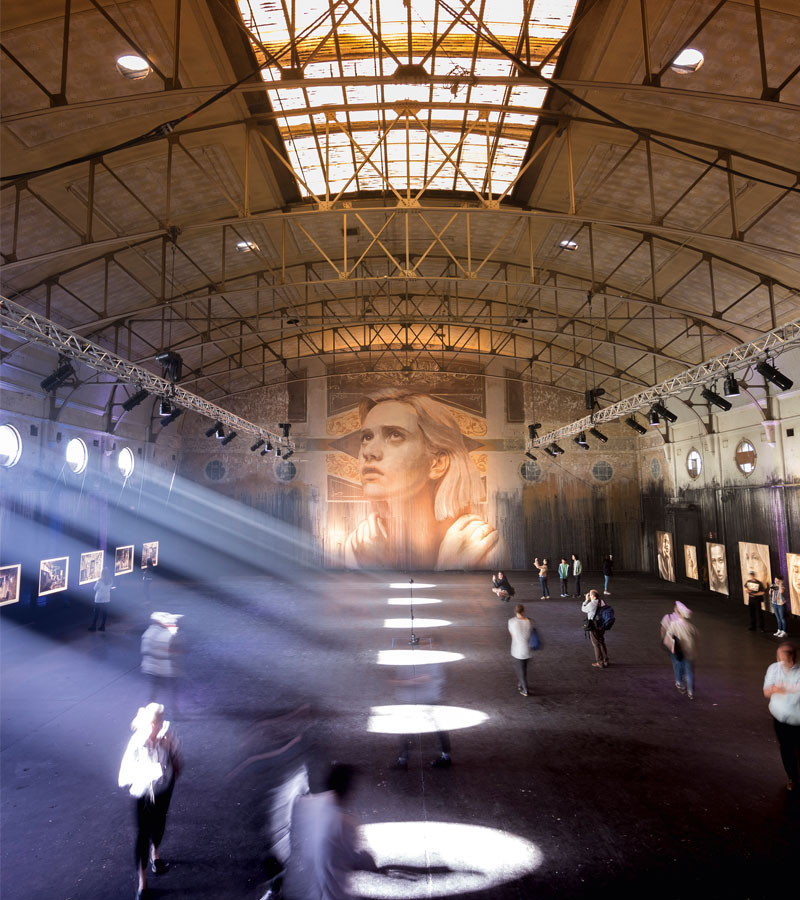
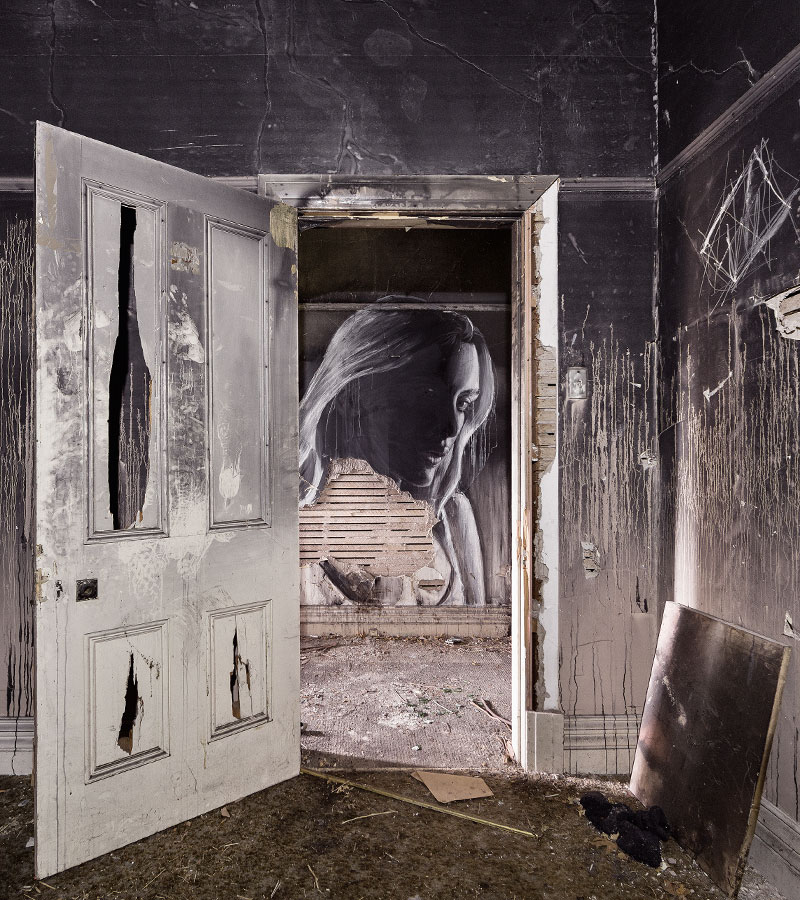

ALPHA. February 2017, Alphington, Melbourne, Australia.
“For Rone, Alpha was about taking the ugliest, crudest, dirty, masculine walls and turning them into something beautiful and fragile”.
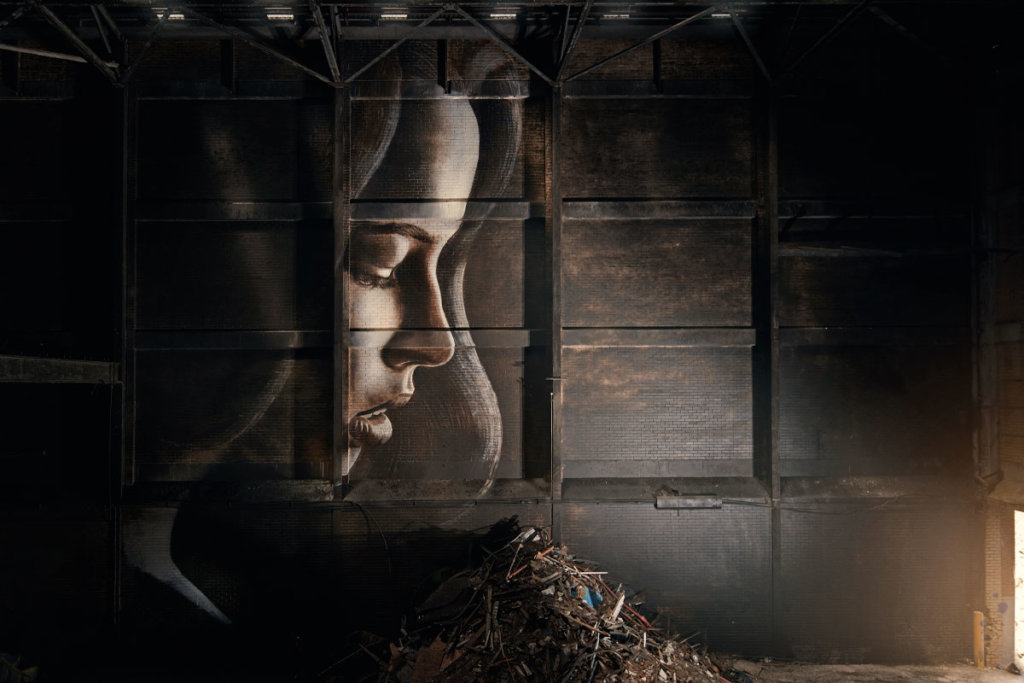
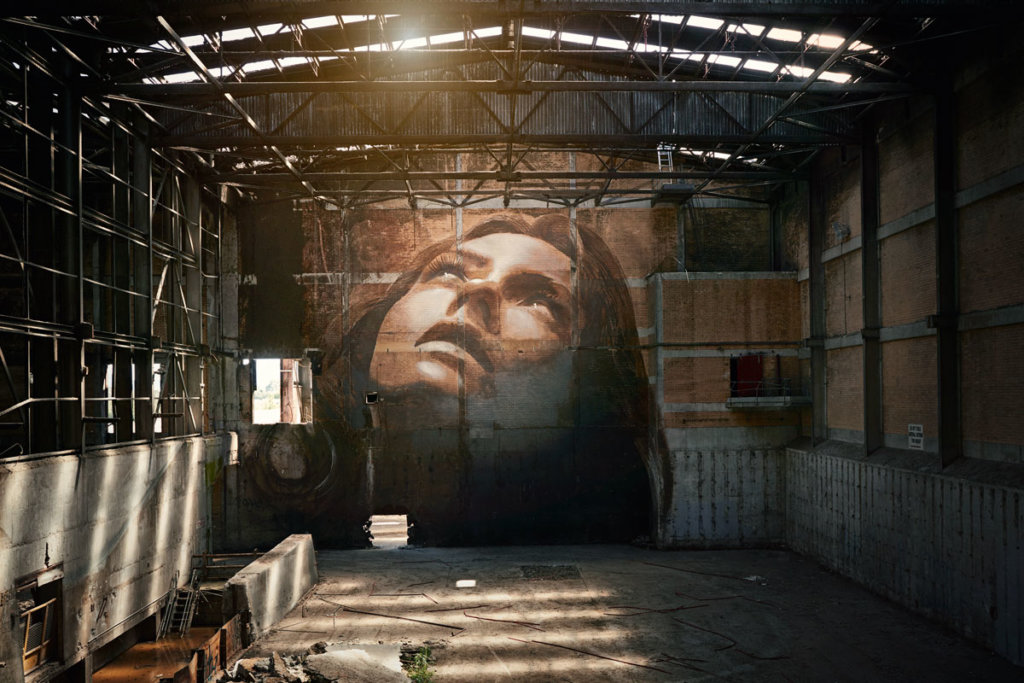
OMEGA. June 2017, Alphington, Melbourne, Australia.
Collaborator: Carly Spooner, interior stylist.
“Omega, a natural progression from Alpha, forged connections between humans and their experiences through delicate manipulations of intimate space.”
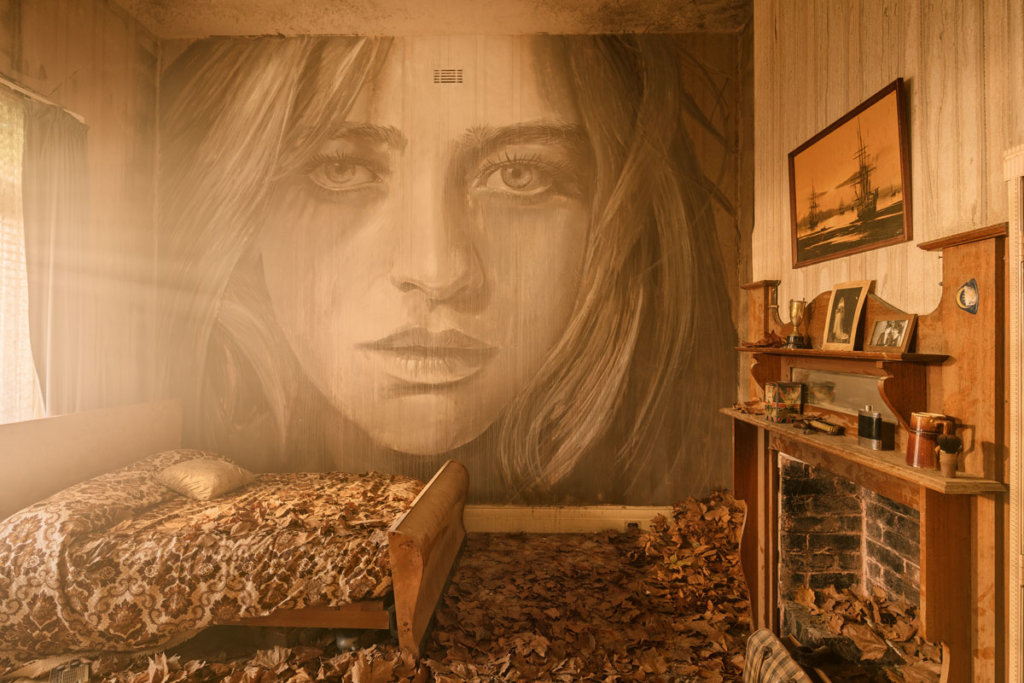
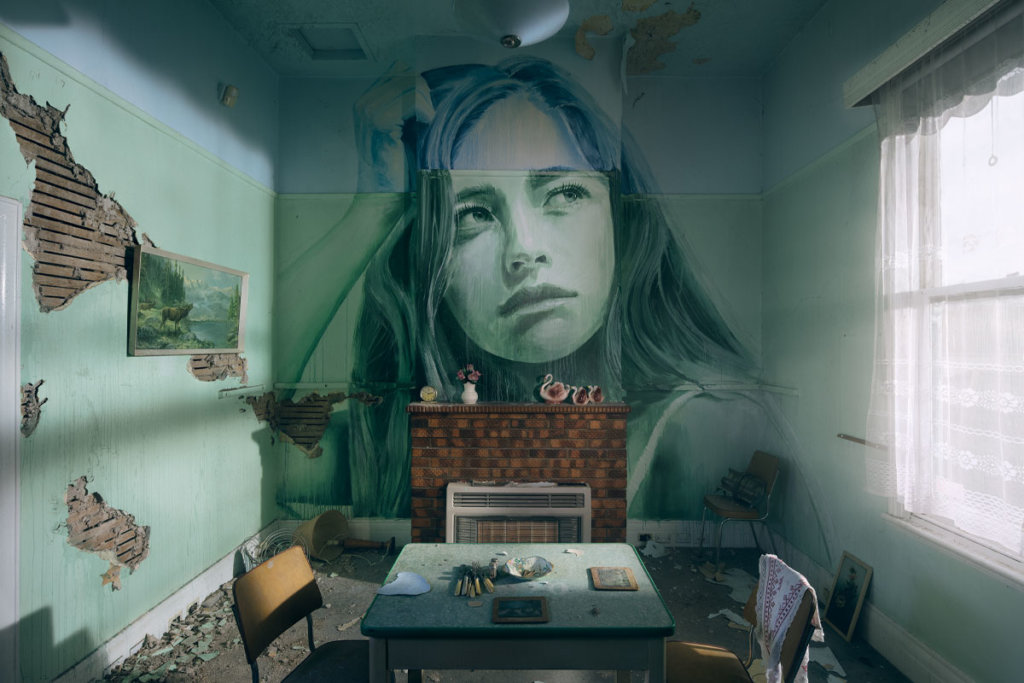
EMPIRE. March-April 2019, Sherbrooke, Victoria, Australia.
Collaborators: Carly Spooner, interior stylist; Loose Leaf, organic sculptors; Nick Batterham, composer; Kat Snowden, scent designer.
“To experience Empire was to experience beauty in loss.”
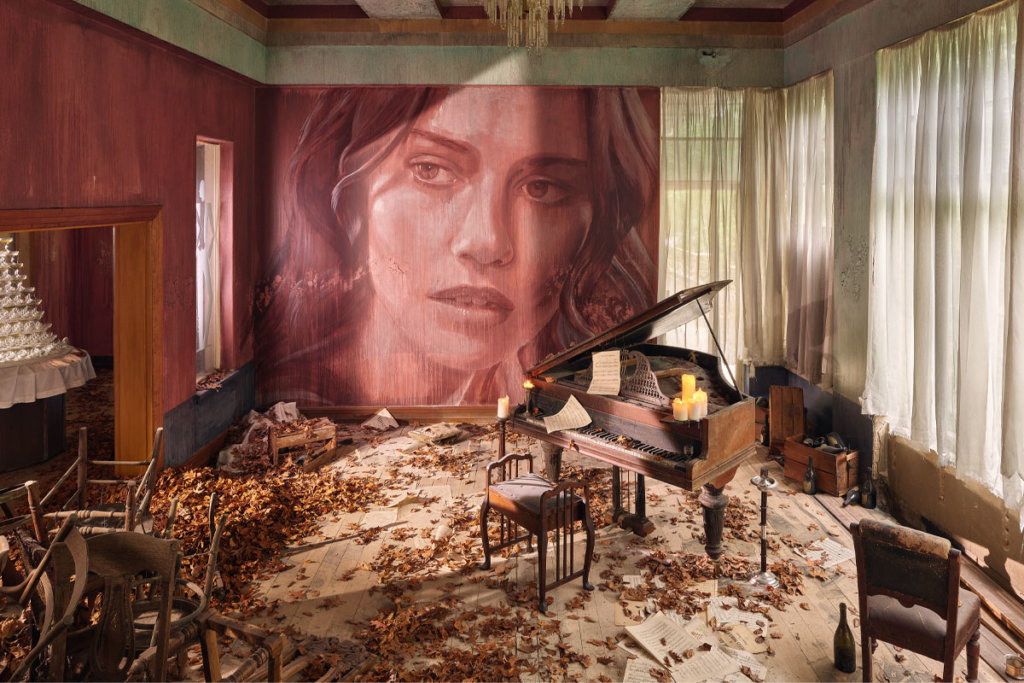
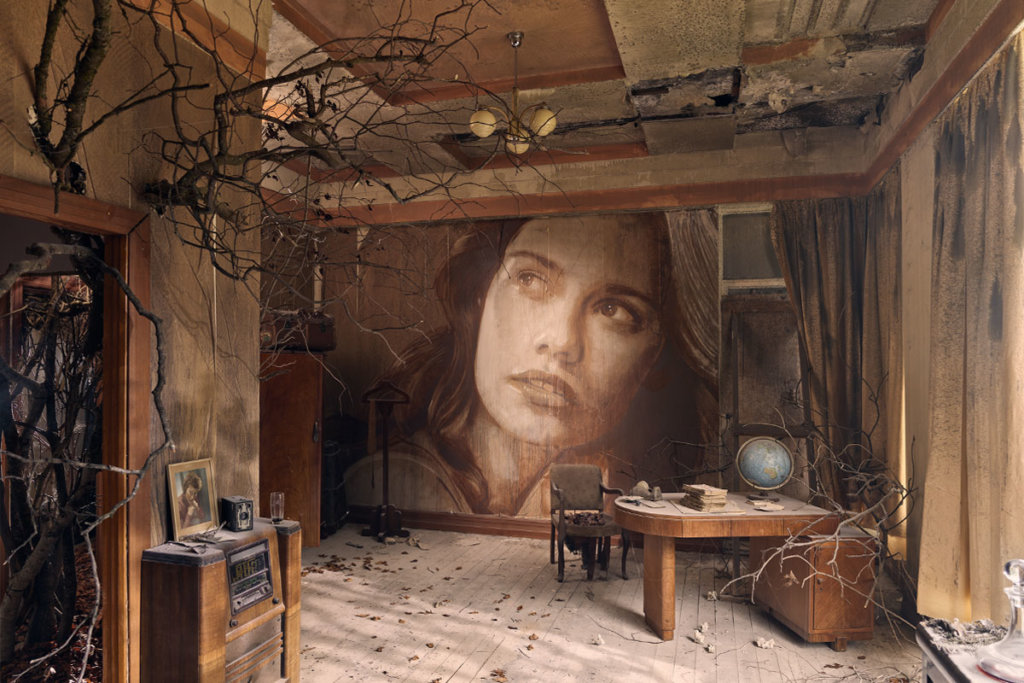
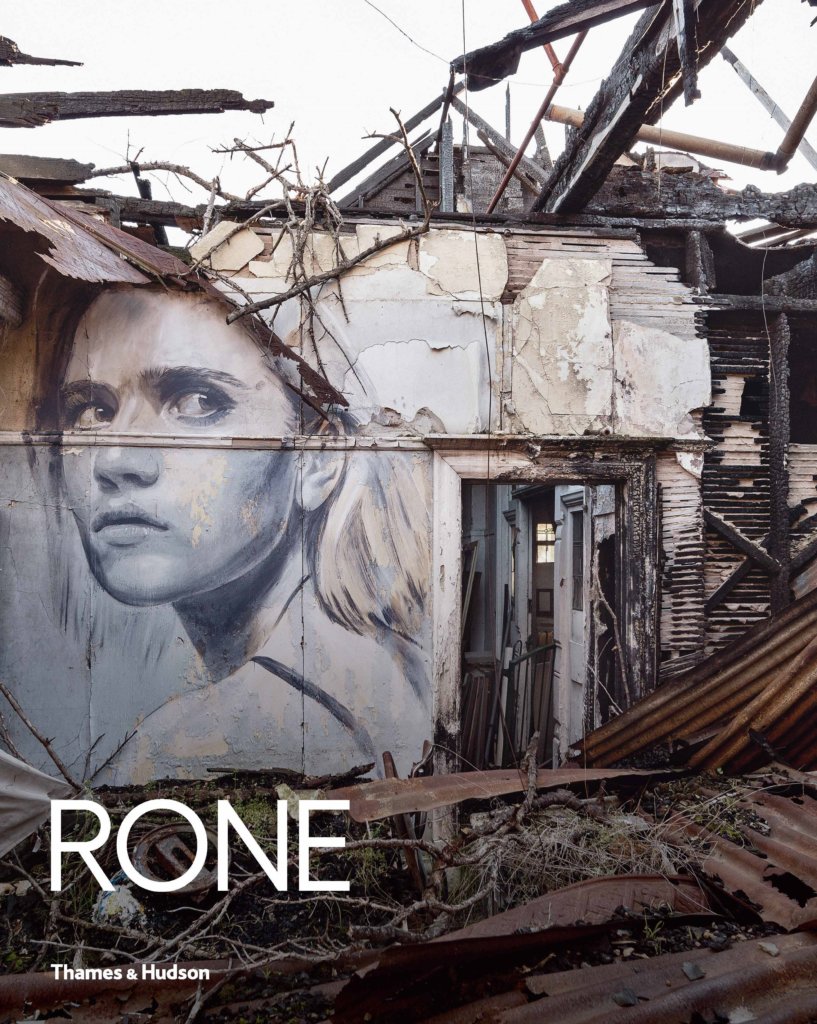
Rone is available now. Cover image by Rone and design by Claire Orrell.
AU$59.99
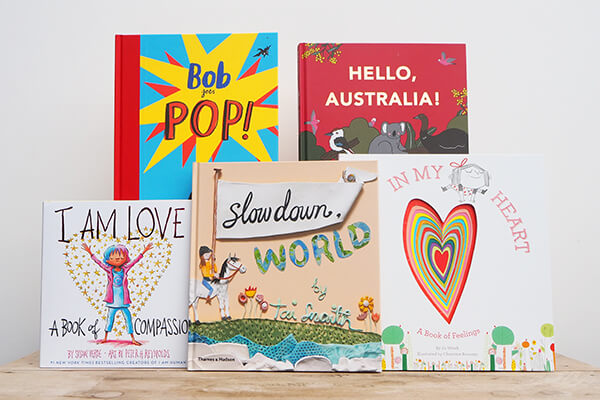
Delve into the colourful stories and illustrations of these gorgeous picture books, specially chosen by Thames & Hudson staff for the joy they bring our littlest friends and family-members.
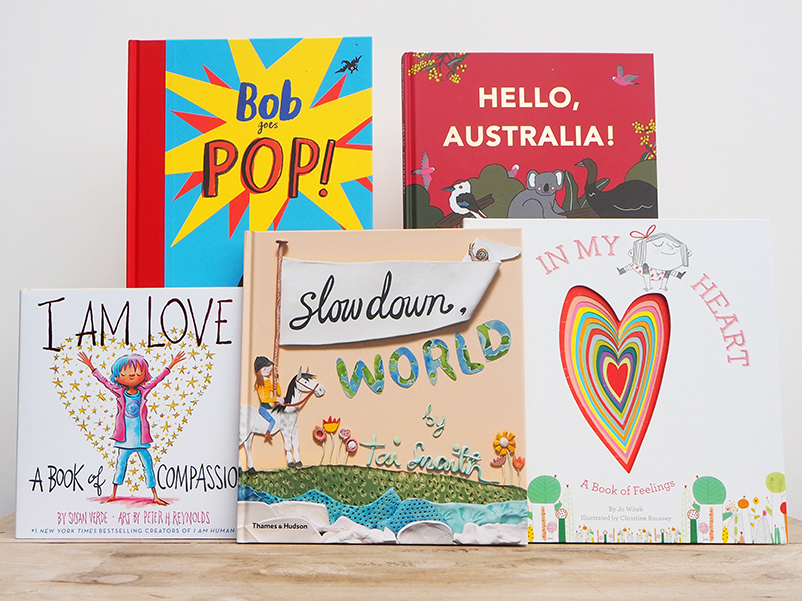
Tai Snaith
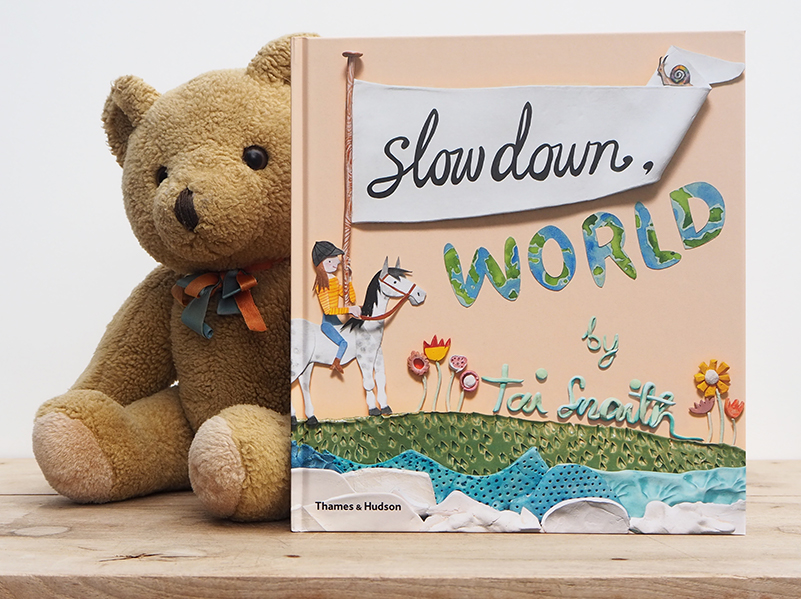
Take a whimsical journey from a fast-paced city to the magical imagination of a young girl with Slow Down World, beautifully written and illustrated by Tai Snaith.
Also available: You Might Find Yourself
Megan McKean
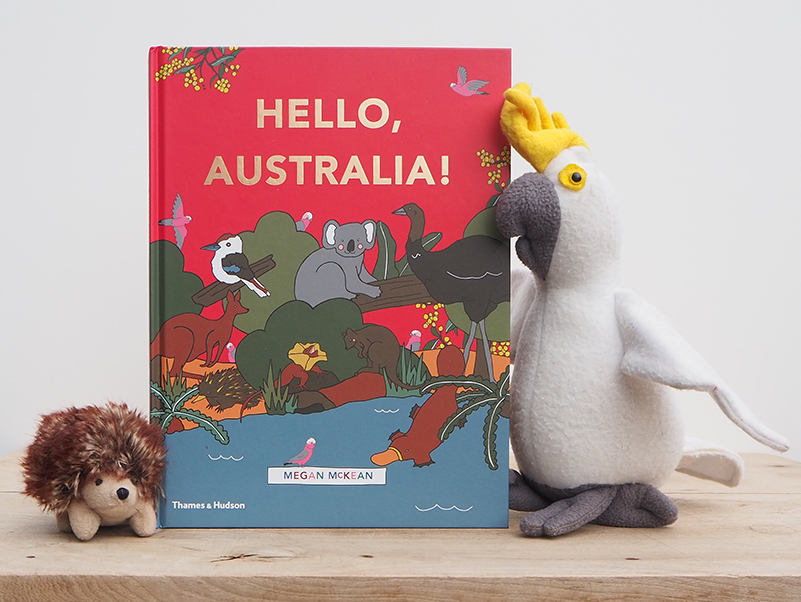
Follow some cheeky galahs in Hello, Australia! a look-and-find adventure from Megan McKean, author and illustrated of the beloved Hello…! series.
Also available: Hello, Sydney! Hello, Melbourne! Hello, London!
Part of the Growing Hearts series
Written by Jo Witek | Illustrated by Christine Roussey
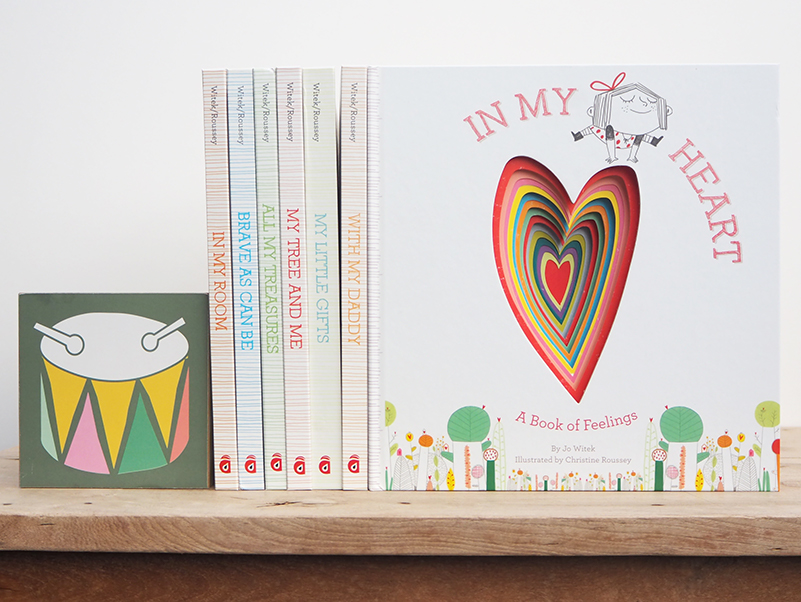
In My Heart is a vibrant celebration of feelings, in all their shapes and sizes, and a best-selling instalment of the Growing Hearts series, all lovingly written by Jo Witek and beautifully illustrated by Christine Roussey.
Also available: In My Room, Brave As Can Be, All My Treasures, My Tree and Me, My Little Gifts and With My Daddy.
Marion Deuchars
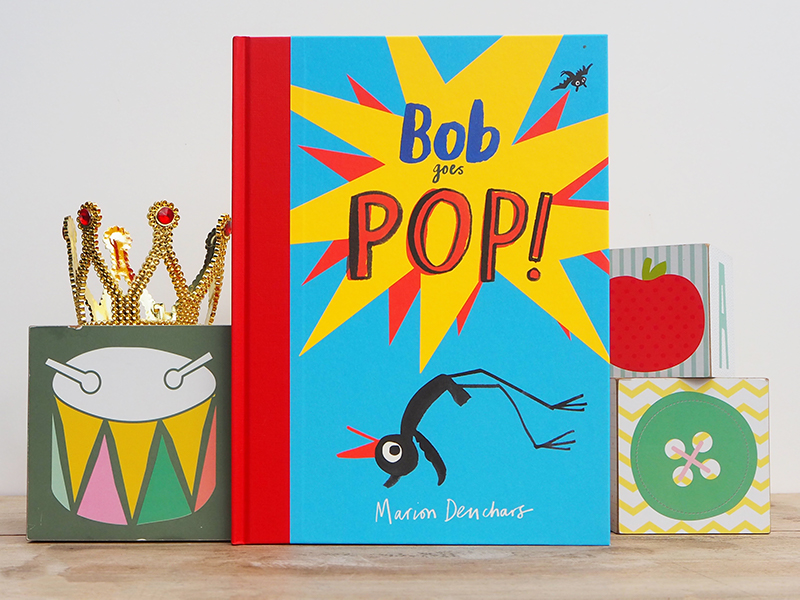
Bob the Artist returns in Bob Goes Pop! for a new tale of friendship, self-expression and pop-art, beautifully depicted by the award-winning Marion Deuchars.
Also available: Bob the Artist and Bob’s Blue Period
Part of the I Am series
Written by Susan Verde | Art by Peter H. Reynolds
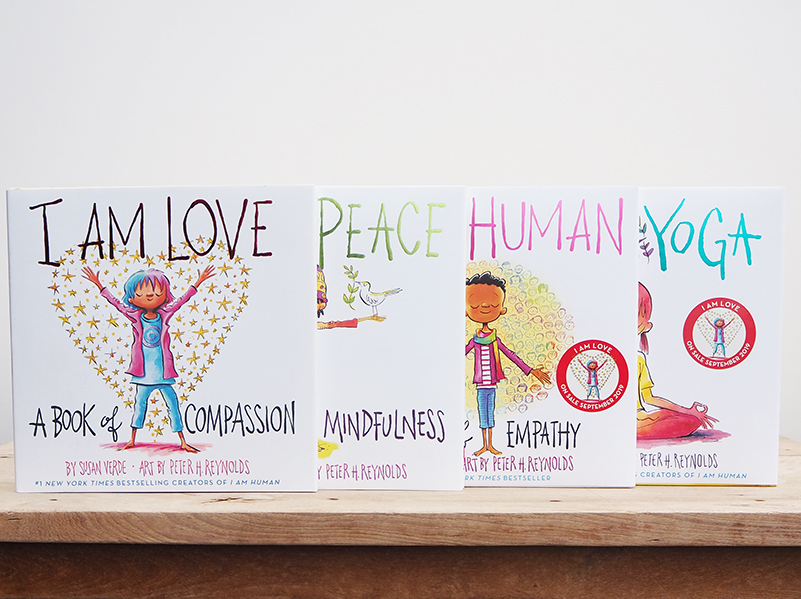
From the bestselling team Susan Verde and Peter H. Reynolds comes a celebration of love in all its forms, the latest edition of the I Am series.
Also available: I Am Peace, I Am Human and I Am Yoga
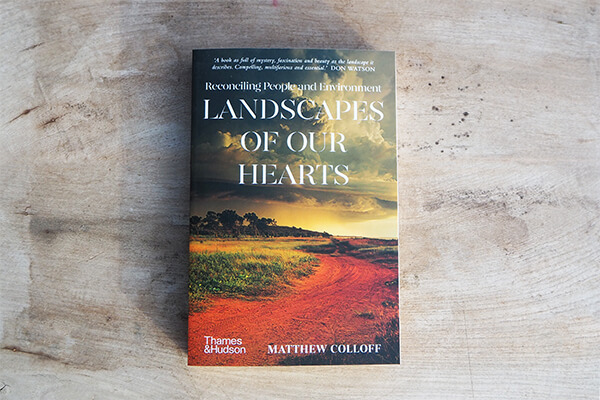
Landscapes of Our Hearts is an epic exploration of our relationship with this country. From distinguished research scientist and award-winning writer Matthew Colloff, the book asks the question: ‘If we look afresh at our history through the land we live on, might Indigenous and non-Indigenous Australians find a path to a shared future?’
In this extract, Colloff discusses the importance of responsibility in the pursuit of belonging for Indigenous and non-Indigenous Australians.
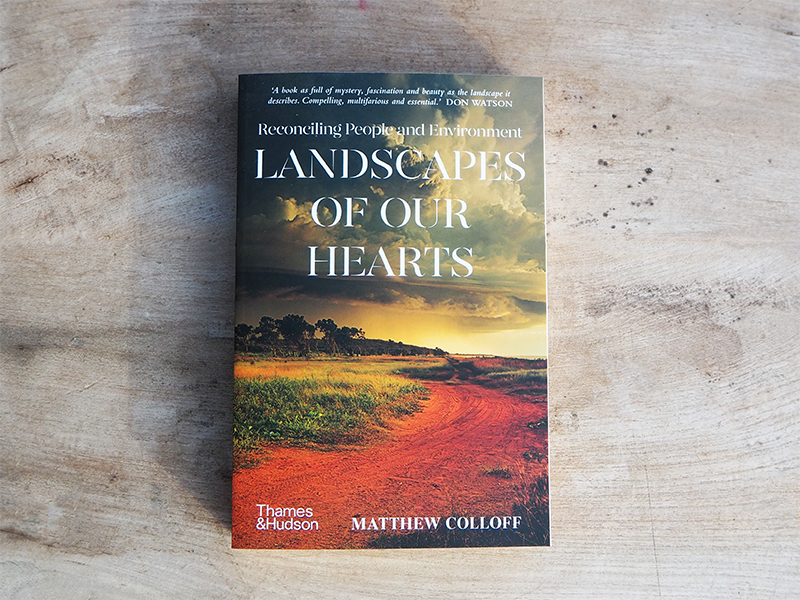
Most Australians have connections with more than one place, whether they are Indigenous people or descended from 19th-century European settler-colonists or more recent migrants, refugees and asylum-seekers. We value and maintain our cultural identity. For many Australians, the expression of culture singles them out as ‘different’ from other Australians and creates the tension between integration into ‘the Australian way of life’ and the multicultural plurality of modern Australian society. For example, the children of Greek migrants who refused to go with their parents and older relatives to large group barbecues and picnics in parks because they regarded such an event as ‘woggy’; in other words, it represented their involvement in a cultural activity that would identify them as migrants to other Australians.1
But there is no contradiction between citizenship and cultural diversity. Attempts by politicians and populists to construct and promulgate ‘a national identity’ have tended to be unsuccessful. Sociologist Robert Van Krieken writes, ‘Political and cultural citizenship do not necessarily coincide – it is possible to be defined legally as a citizen, but still remain an outsider, with the rules governing the transition from one category to the other remaining obscure and elusive.’2 I would argue that the process of transition from one to the other often begins with developing a connection with this land and the process of place-making.
Are we all strangers in our own land, trying to make a home wherever we find ourselves? For Australians of Anglo-Celtic descent whose families have been here for several generations, they may have been born in one place, grown up in another and live as adults somewhere else again. For many Indigenous Australians, their ancestors may have been forcibly removed from their lands, their grandparents or great-grandparents raised on a mission or an Aboriginal reserve many hundreds of kilometres away, and their parents may have moved from place to place to find work, as Stan Grant’s parents did, all the while trying to stay in contact with the diaspora of their kin.
For many of us migrants, the idea of referring to Australia as my country carries with it a deeply felt sense of ambivalence. This tension emerges not only from the cultural connections with the countries of our birth but also an unease about whether we have such a right, considering this land was taken by invasion and dispossession of its Indigenous peoples during the one hundred and forty years of the Frontier Wars. As Henry Reynolds wrote: ‘It was only by forgetting that white Australia was able to overlook the violent foundation of the nation.’3
Historian Peter Read sums up the tension as follows: ‘how can we non-Indigenous Australians justify our continuous presence and our love for this country while the Indigenous people remain dispossessed and their history unacknowledged?’4 Some of us make our place and feel a strong sense of belonging accordingly. We feel we have a right to belong. Others of us feel no such right. Australia always was and always will be Aboriginal land. Belonging is a deeply personal journey, travelled by multiple routes. There was nothing in the citizenship interview and examination that I took in 1996 on how to go about the process of belonging. The only mention in official documentation on citizenship is the statement that volunteering can be a great way of increasing one’s sense of belonging to the Australian community and that, ‘You can walk the desert or the shore, the mountains or the rainforests. Every step you take is a step closer to belonging to this vast and vibrant land.’5 Indeed. A route to belonging through volunteerism and tourism. Were it that easy.
For some, claiming continuity with Indigenous people and the environment as part of our non-Indigenous heritage is a means of achieving a sense of belonging. In an interview with Peter Read, environmental historian Tom Griffiths stated: ‘Aborigines and environment: these are the two great historical revolutions of our generation. Writing both into Australian history allows you to reach back beyond the moment of invasion and draw you into deep time as part of our own inheritance. We should discover the continuities.’6
Griffiths’ perspective echoes the need to reconcile a sense of attachment to place with the history of environmental and cultural change. With this need comes a set of responsibilities to ‘a vision of a morally and environmentally integrated Australia’, in which the relationship between humans and the environment is one in which people ‘share its past and provide for its future’. Yet can non-Indigenous Australians legitimately claim to belong to deep time while Indigenous Australians remain dispossessed and governments continually seek to obstruct practical processes of reconciliation?7
Perhaps one way for non-Indigenous Australians to think constructively about these vexed issues is not just to focus on assumptions about rights of belonging, but on their responsibilities. Simply put, if our sense of belonging is to be gained through a continuity with deep time history, then we have an equal responsibility to Indigenous Australians, ourselves and our shared environment to do what we can to achieve reconciliation. We might start by considering and adopting elements of the ancient environmental knowledge, values and rules of Indigenous Australians that they observe and we do not. Perhaps this might form a basis to begin to shape our common future in more sustainable ways.8
If there can be no lasting or legitimate sense of belonging without a sense of responsibility to the land and each other, then here’s the challenge, as articulated by Tom Griffiths: ‘If all Australians are to rejoice in the deep past, then we must ask the non-Aboriginals to share responsibility for its mistakes. If all Australians are to rejoice in the deep future, then we must ask the Aboriginals to share in its responsibility.’ Idealistic and difficult this may seem in practice, but the alternative is worse; a business-as-usual continuation of what we have already done: ‘the mere expropriation of past and future’.9 If we can acknowledge the past, reconcile the present and nurture the future, then perhaps all Australians, one day, may truly find a place we can call home.
NOTES
1 Denis Byrne, Heather Goodall & Allison Cadzow, Place-Making in National Parks: Ways That Australians of Arabic and Vietnamese Background Perceive and Use the Parklands along the Georges River, NSW, University of Technology Sydney and Office of Environment and Heritage, Sydney, 2013, p. 17.
2 Robert Van Krieken, ‘Between Assimilation and Multiculturalism: Models of Integration in Australia’, Patterns of Prejudice, vol. 46, no. 5, 2012, pp. 500–17.
3 Henry Reynolds, Forgotten War, UNSW Press, Sydney, 2013.
4 Peter Read, Belonging: Australians, Place and Aboriginal Ownership, Cambridge University Press, Cambridge, 2000, p. 1.
5 Department of Home Affairs, Australian Citizenship: Our Common Bond, Communication and Engagement Branch, Department of Home Affairs, Canberra, 2018, pp. 17, 41.
6 Read, p. 178.
7 Read, p. 181.
8 Tyson Yunkaporta, Sand Talk: How Indigenous Thinking Can Change the World, Text Publishing, Melbourne, 2019; ‘Can Indigenous Thinking Save the World?’ Late Night Live, Radio National, 16 September 2019.
9 Read, p. 183.
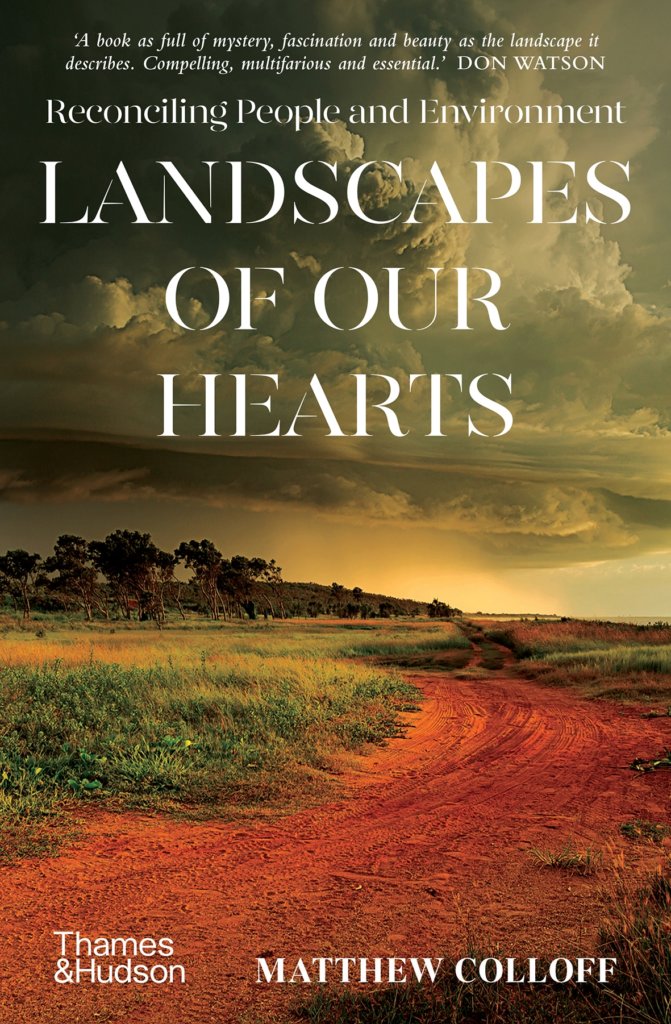
Landscapes of Our Hearts is available now. Text by Matthew Colloff, cover photography by Louise Denton Photography, and cover design by Alissa Dinallo.
AU$34.99
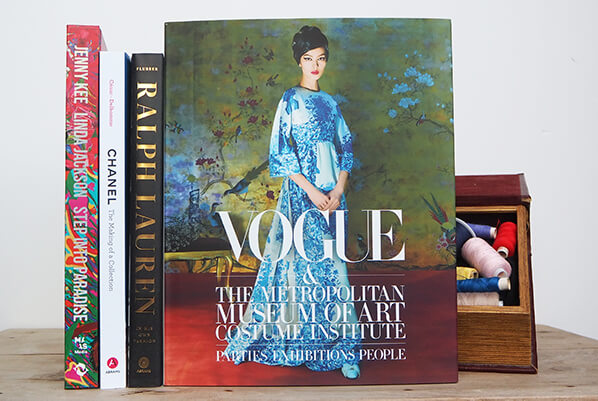
Run away with the latest fashion bibles, specially selected by our staff for the best designs, photography and inspiration going around.
Complete your fashion bookshelf today.
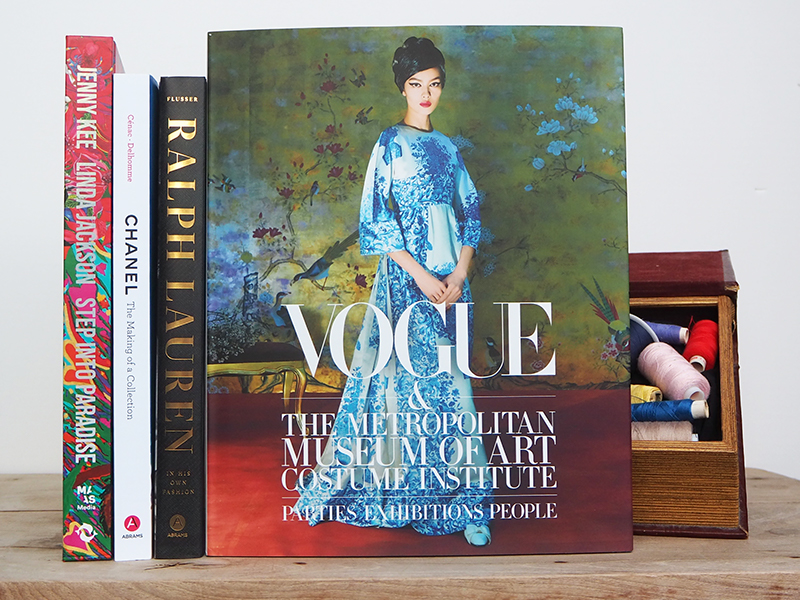
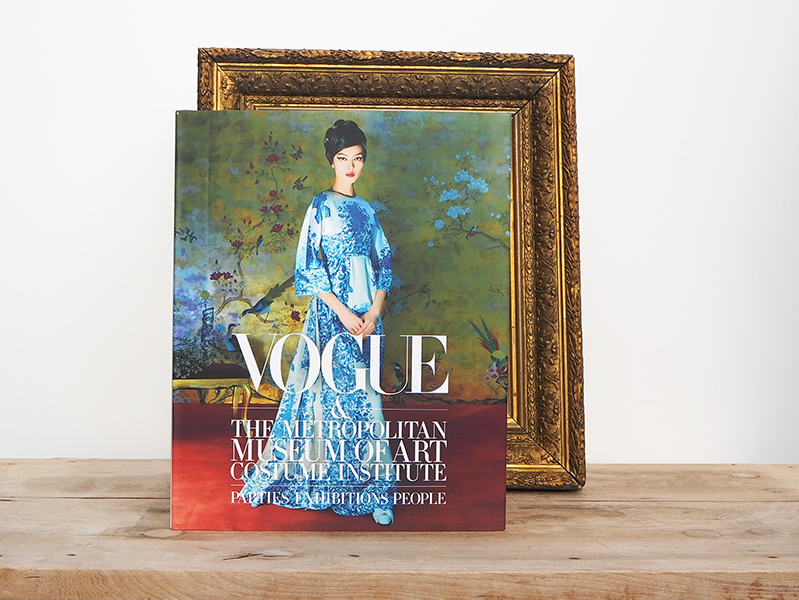
This updated and expanded edition of Vogue & The Met covers the past five years of the Met Costume Institute’s exhibitions and galas through the lens of Vogue.
By Jenny Kee and Linda Jackson
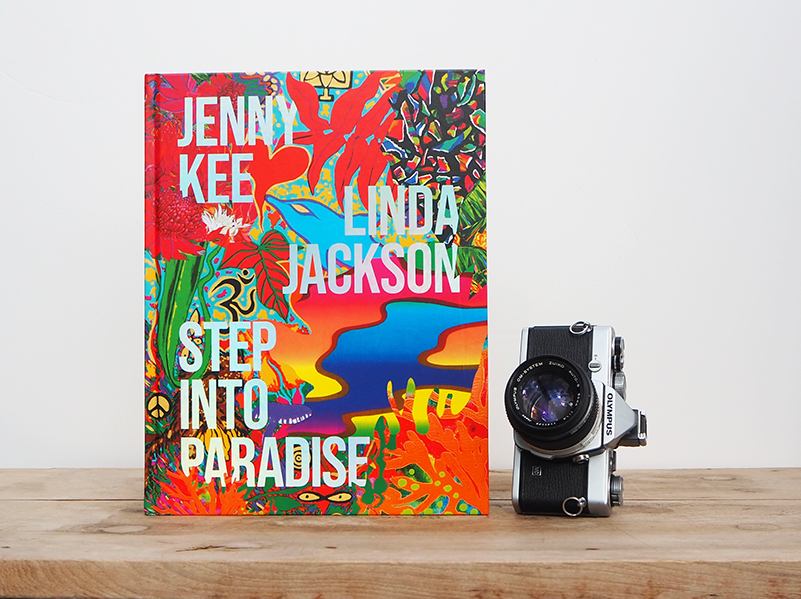
Step Into Paradise documents the work of Australia’s best known designers, Jenny Kee and Linda Jackson, spanning more than four decades of their creative practice.
Text by Laetitia Cénac | Illustrations by Jean-Philippe Delhomme | Interview by Karl Lagerfeld
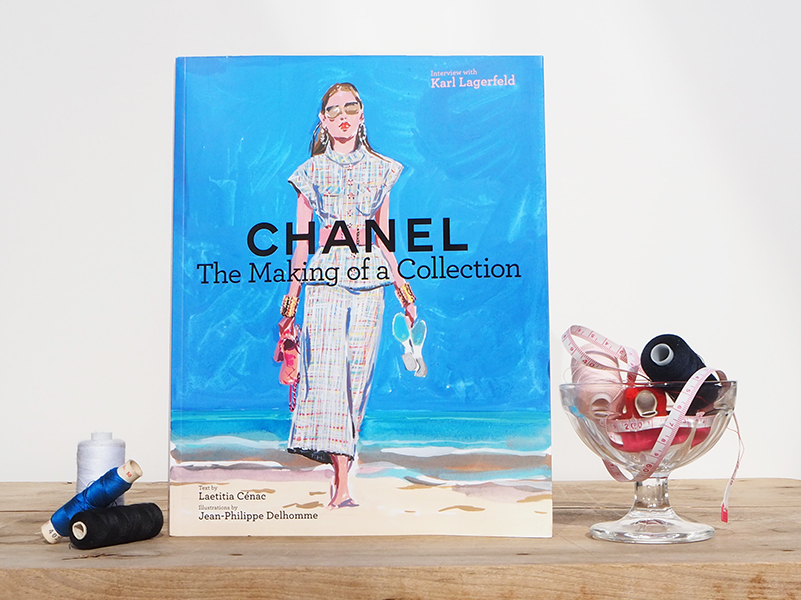
Chanel: The Making of a Collection is a gorgeously illustrated exploration of the history, culture, and design process of famed fashion house Chanel.
By Alan Flusser
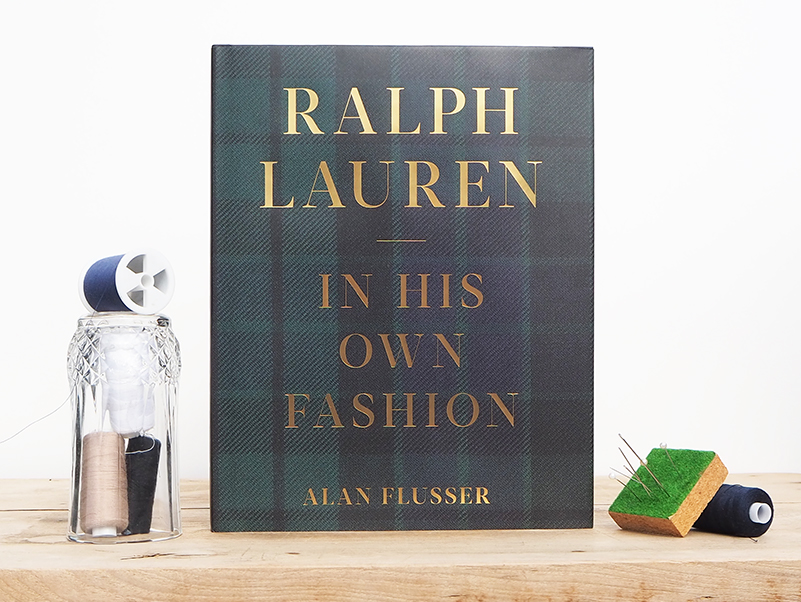
Ralph Lauren: In His Own Fashion is a fully illustrated biography of the iconic American designer, told through the lens of his impact on fashion and culture.
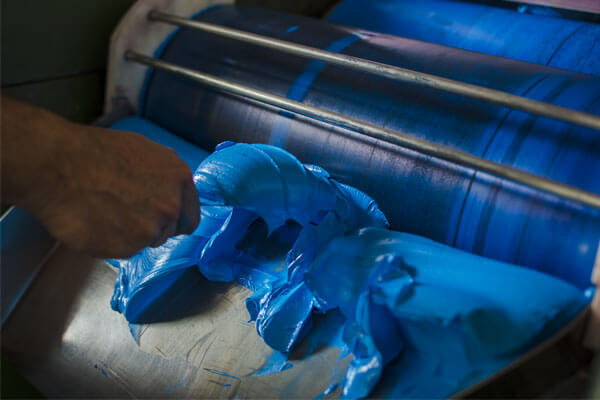
From one of the world’s most respected paint-makers, David Coles, Chromatopia reveals the stories behind fifty striking pigments. In this extract, Coles discusses the extraordinary process through which paint is made.
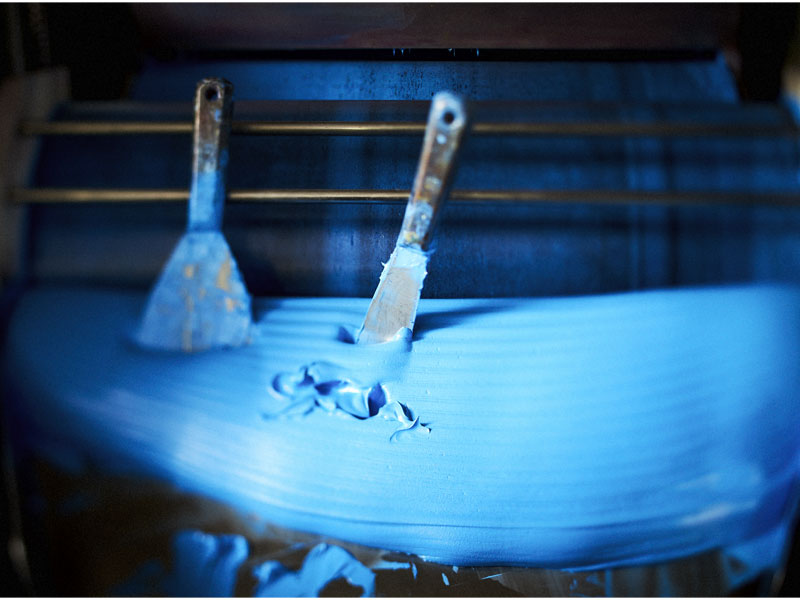
This book has looked at the origins of historical and contemporary pigments, but pigments are hardly ever used in their raw form. To be usefully employed as a colour, billions of individual grains of pigment must be glued together with a binder. This is, in essence, how you make paint.
Throughout history, people have found ways to permanently ‘fix’ colour to create lasting images of the most exquisite beauty. For instance, the binding of pigments in Neolithic cave paintings was probably serendipitous; cave walls containing silicas or limestone trapped the pigment and locked it to the surface over time. Since then, we have discovered a host of sticky, adhesive materials in nature that could hold pigments in place. Some of these earliest binders are still used by artists. Gum arabic, the water-soluble sap of the North African acacia tree, makes watercolours; and beeswax, collected and refined from hives, makes encaustic (molten wax) paint.
Mixing pigments with different binders successfully converts them into a material for uses as diverse as house paints, plastics, writing inks, automotive coatings, paper and – of most interest to me – artists’ paint.
In my role as a master paint-maker, I make oil paint, which are by dispersing pigments in a ‘drying oil’ such as linseed, walnut, poppy or safflower oils. Linseed oil is by far the most important and widely used drying oil. When drying oils absorb oxygen they convert from a liquid into a hard, permanent coating. Pigments can be bound with very small amounts of oil. This means that oil paints contain much higher amounts of the pigment than watercolour or acrylic paints. For artists, this gives the paint a physical feeling. The paintbrush is literally pushing around dense, coloured pastes.
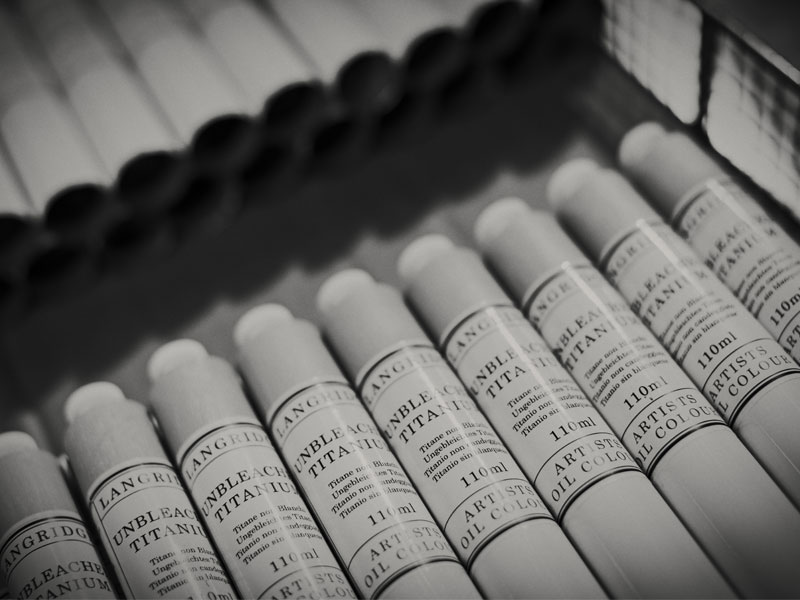
So how do we make our paint? Our first task was to source a high-quality linseed oil. We selected ours after sampling dozens of products from suppliers all over the world. We were looking for a clean, straw-coloured oil that was free of natural impurities. It had to have a good drying rate and minimal yellowing as it aged. Eventually we chose exceptional bright, clear oils made in Holland and Germany.
Next comes the selection of the pigments. There are so many manufacturers of pigments that the choice seems overwhelming. We hunt out pigments that have qualities equal to their noble intended use: they must be as lightfast as possible, chemically stable and exhibit colour qualities of benefit to the artist. The vast majority of pigments do not meet our needs. They are built for larger, more commercially important industries and have been tailored for industrial applications.
To select our pigments, we go through a long period of investigation. We select colours of interest, research the chemical construction of the pigment, and assess its suitability for artists’ paint before requesting samples for laboratory trials. The anticipation of opening a sample box and seeing a new pigment for the first time, in its raw unadulterated form, is exhilarating. There is always the nervous hope that the promise held out by this new pigment will be borne out, that its potency will not dull, and that its colour will not be lost when it is mixed with the binder. Backwards and forwards go the experiments – working out the right amount of pigment to add to the oil and correcting for undesirable qualities. Like a chef honing a new dish, small, delicate changes in the recipe can lead to dramatic differences in the finished product.
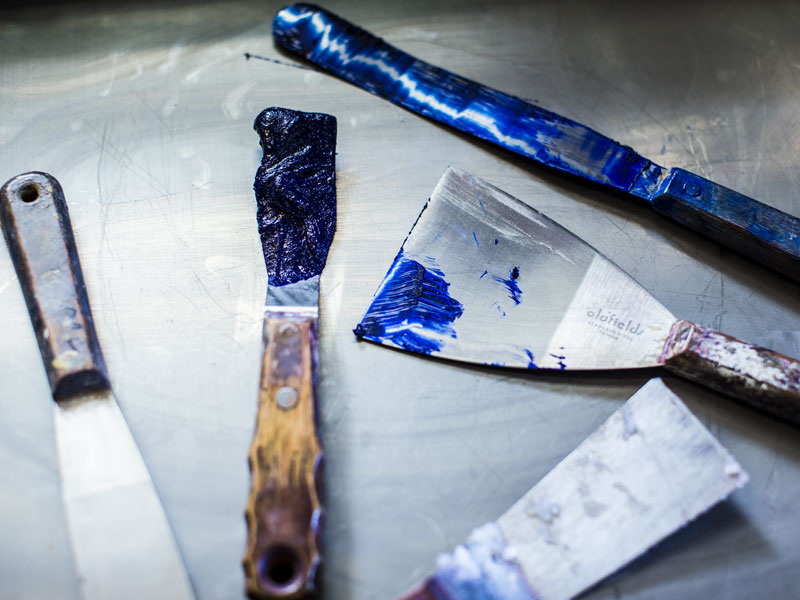
When we are ready to make the paint, the linseed oil is weighed out into 60-litre heavy-duty stainless-steel bowls. All of our manufacturing equipment and surfaces are stainless steel. The equipment is kept meticulously clean to prevent any chance of other colours contaminating the purity of each new batch.
Stearate, a wax-like material that is essential to the wetting and stability of the paint, is weighed and added to the oil. The bowl is secured in a planetary mixer and large, powerful motors slowly rotate the blade through the wax and oil mixture.
Next, another steel bowl is placed on the electronic scales, ready for the pigment. Even after all these years, opening the bins of pure pigment is a ridiculously breathtaking assault on the eyes. The pigment is scooped out, weighed and added slowly to the oil. There are no short cuts. Adding all the pigment at once would make incorporation impossible. The liquid oil allows the individual grains of colour to slide over each other. The physical shape of pigments means that, without this lubrication, they would drag over each other, causing extraordinary resistance, reducing the mixing action and – as happened once very early on – breaking the very expensive blade of the mixer.
The slow churning of the paste begins. Over the rumbling of the mixer’s motor, you can hear delicious slurping noises as the blade methodically drives through the mixture. As the dry pigment is gradually incorporated with the wet oil, it changes from an incredibly thick batter into what looks like an enormous vat of vividly coloured butter.
This process can take as long as four hours, but it is not the finished paint. Under close inspection, vast quantities of the pigments still cling together rather than being individually coated. This is where the triple-roll mill comes in.
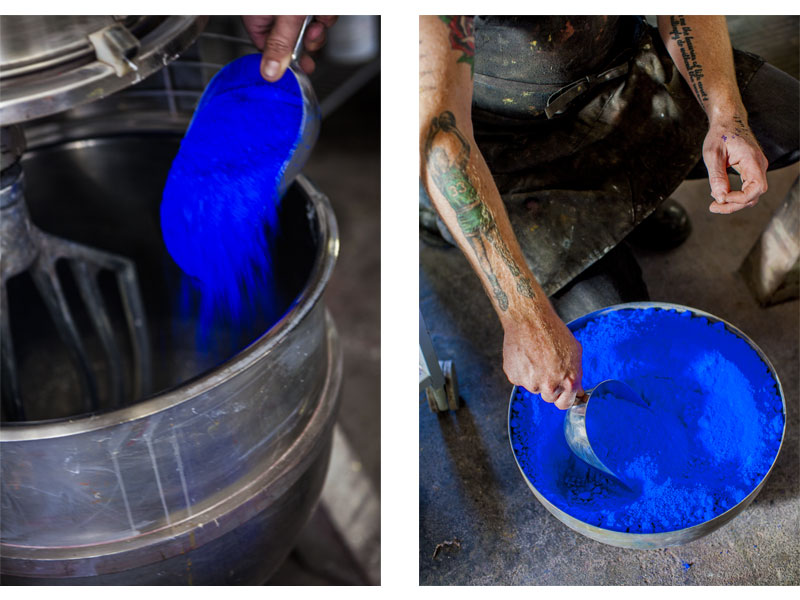
A triple-roll mill is at the heart of paint-making. At its most basic, it is three horizontal granite rollers that each run at different speeds and spin in alternating directions. The paste is scraped out of the mixer’s bowl with a baker’s blade and dropped into the hopper. Each giant dollop makes a delicious slap as it plops onto the rollers below. The paste is drawn down into the tiny space between the rollers, again and again. With each pass, the space is narrowed to more aggressively separate the pigment particles. If you have ever used a pasta-making machine with its two rollers forcing the dough through the small space between them you can understand the paint-making process. Just as the roughly made dough cannot pass through the narrowest setting first, so the pigment-paste must be passed through the mill rollers multiple times. It’s just that our mill is like a pasta-machine on steroids, with three rollers rather than two and a massive motor to drive the material through. For soft pigments such as zinc white only three passes are needed, but the synthetics can take up to nine passes. Synthetic pigments are very difficult to prize apart: their incredibly small size and specific shape mean they have to be painstakingly teased into dispersion.
The paint-maker must be constantly attentive to the vagaries of milling. Rollers heat up under the friction of pigment particles, which alters the size of the roller gap, and the fluidity of the oil is affected by changes in ambient temperature. Also, pigments behave differently from one batch to another. This is especially true of the natural earths, which vary in their mineral make-up depending on the part of the seam the earth was dug from.
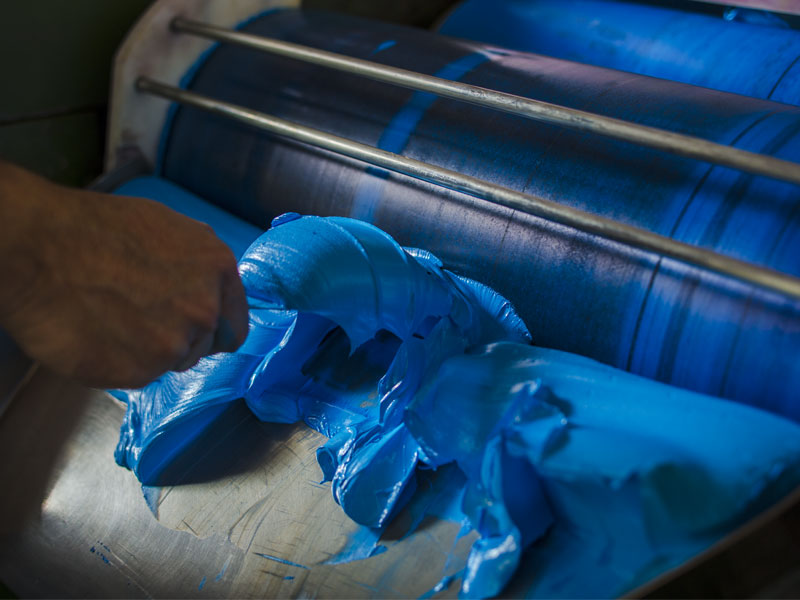
Towards the end of the paint-making process, we take samples of the paint and test it for quality. Historically, paint-makers would rub the paint between their thumbnails – a simple but surprisingly delicate solution to feel for the grittiness of unmixed pigment. Nowadays we use a precisely honed stainless-steel gauge to check the quality of dispersion.
But we are still not ready to sign off on the product. Two extremely thin films of the freshly made paint are applied to paint-maker’s cards. One daub is the pure paint. The other is the paint mixed with a specified amount of titanium white. By placing the card next to one from a previous batch of the same colour, we can ensure that every time we make the paint it has identical colour, tinting strength, tint colour and undertone to all previous versions.
Only after the paint has passed these tests is it approved for packing. It is hand-filled into collapsible aluminium paint tubes, labelled with hand-painted swatches of the individual colour, boxed and shipped to studios around the world.
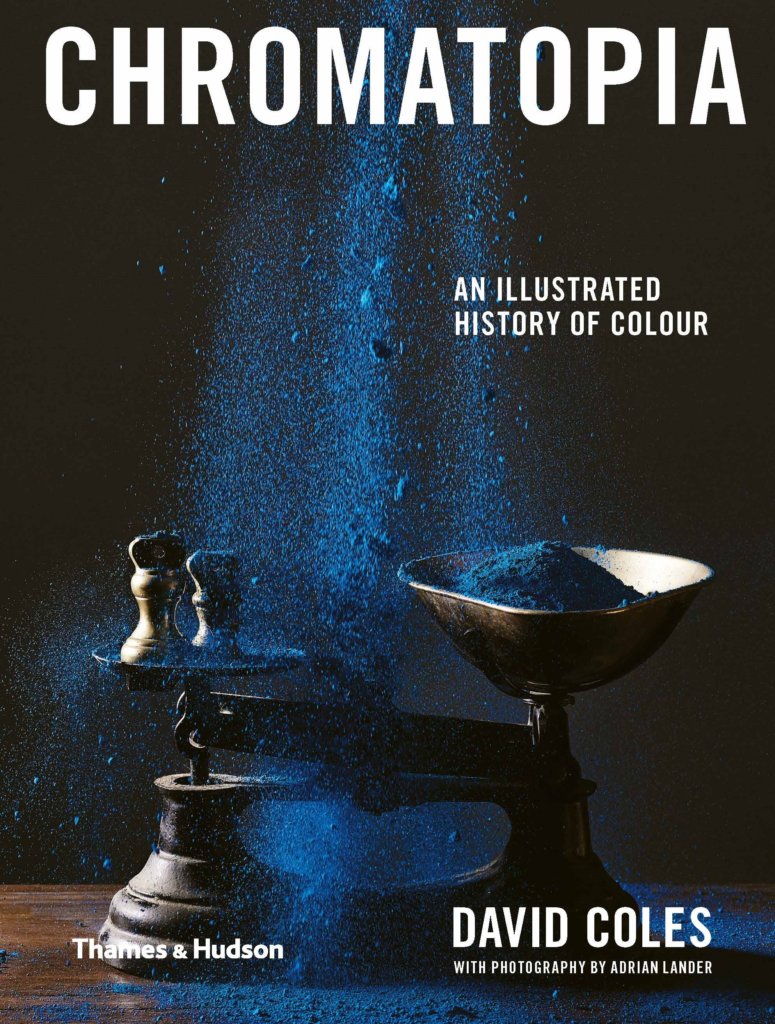
Chromatopia is available now. Text by David Coles, photography by Adrian Lander, and cover design by Evi. O Studio.
AU$34.99
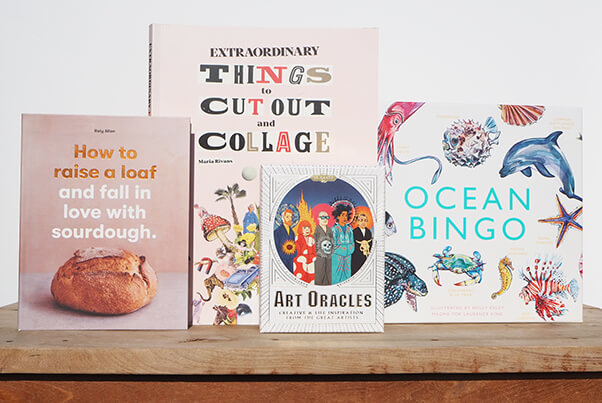
These tried and tested activities come highly recommended from our staff for keeping yourself busy. Bake some bread, play a game, convene with oracles or delve into some arts and crafts.
Complete your activities collection today.
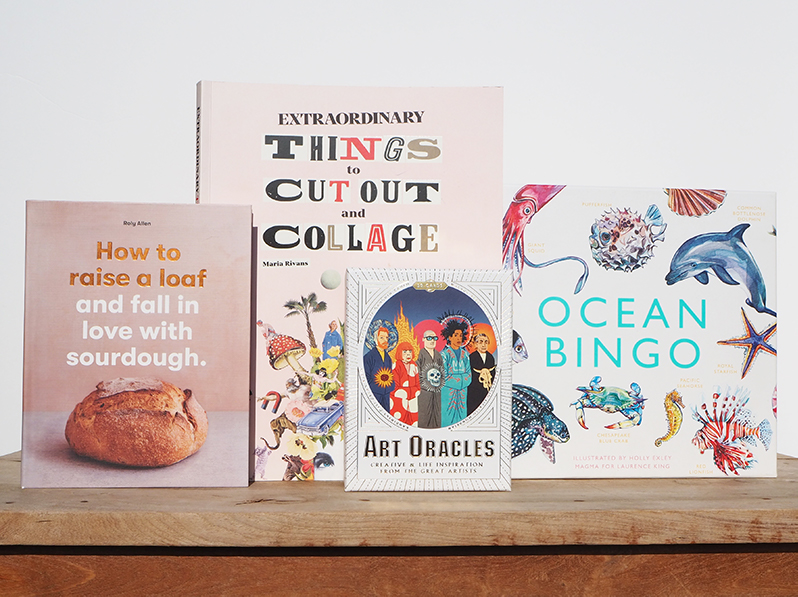
By Roly Allen
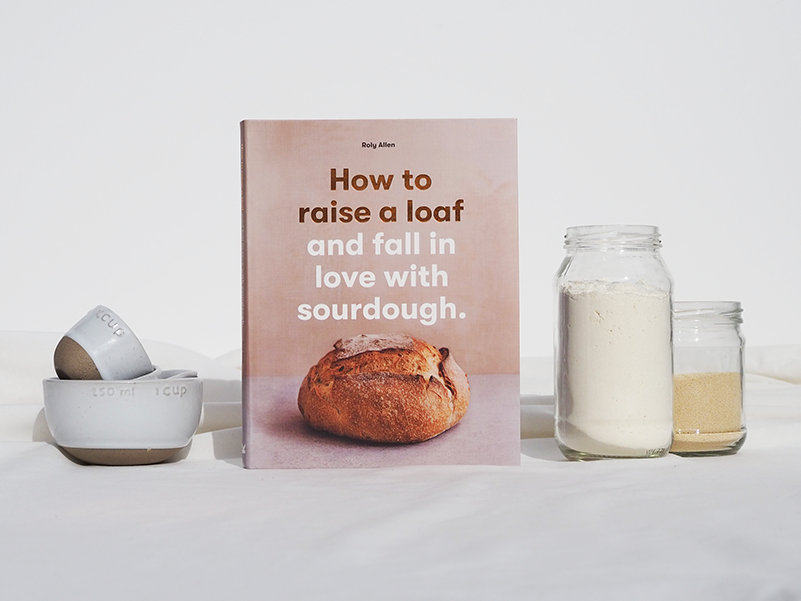
How To Raise A Loaf is your go-to guide for making sourdough. Let bread-master Roly Allen run you through the key techniques of traditional baking, creating a living starter, and mastering a crusty loaf.
By Katya Tylevich. Illustrations by Mikkel Sommer Christensen.
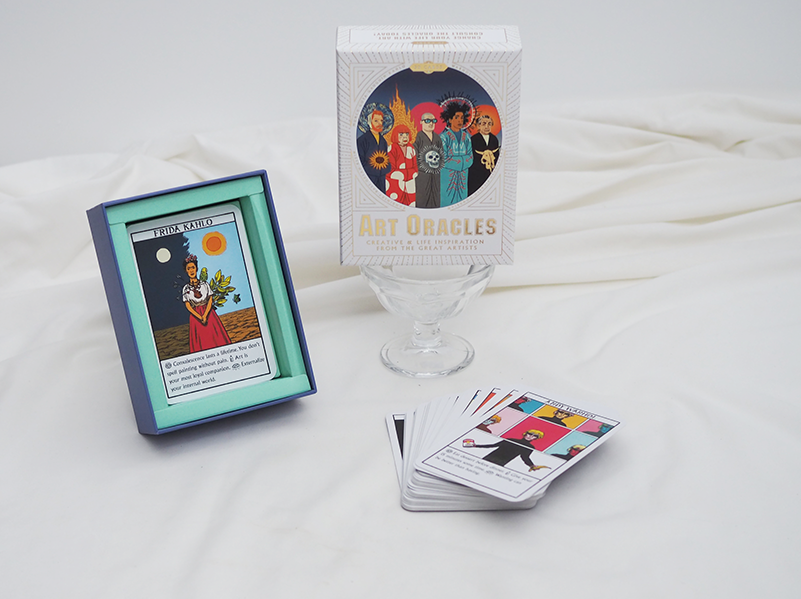
Are you suffering from creative block? Struggling to make a difficult life decision? Art Oracles is here for you. Find out what Picasso, Pollock, Kahlo and other great artists would have done with this set of fifty oracle cards.
By Maria Rivans
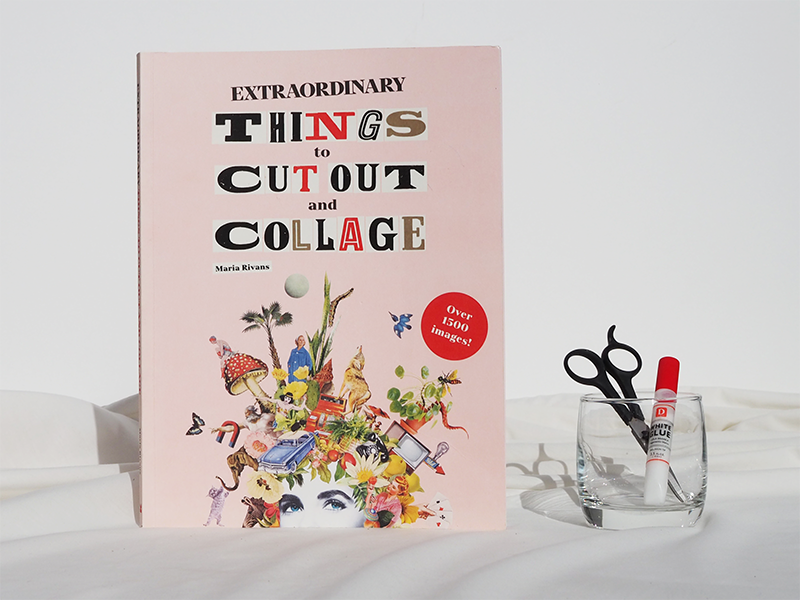
Discover the exciting world of Extraordinary Things to Cut Out and Collage, featuring hundreds of beautiful, quirky, and downright daft images, all here for you to cut out and stick.
Illustrations by Holly Exley
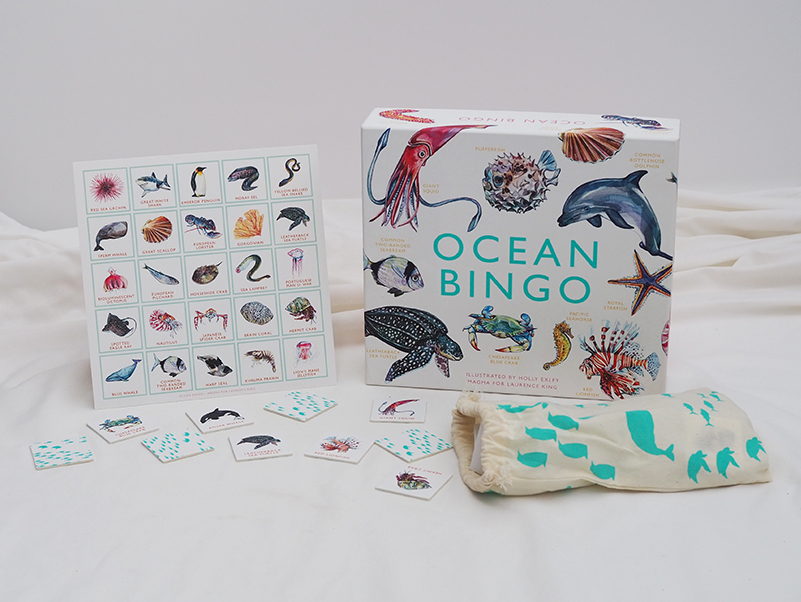
Ocean Bingo is a family-friendly game is packed with ocean creatures for hours of bingo fun, featuring interesting facts and glorious illustrations designed to delight aquatic aficionados.

Over the past twenty years, The Metropolitan Museum of Art Costume Institute has produced, time and time again, fascinating and provocative exhibitions. Their annual exhibition is the most spectacular of its kind, providing a window into significant moments in fashion history. Even more, they reflect and create the contemporary zeitgeist. The show’s opening night fundraiser, commonly known as The Met Gala, is attended by notable stars, young creatives, and industry paragons alike.
Vogue & The Metropolitan Museum of Art Costume Institute: Parties, Exhibitions, People unveils the seamless collaboration between The Met and Vogue in bringing both the exhibition and gala to life each year. This updated and expanded version of the book, originally published in 2014, includes the dramatic and daring exhibitions of the past five years. Think 2015’s ‘China Through the Looking Glass’ through to 2019’s unforgettable ‘Camp Notes on Fashion’. In the absence of a 2020 gala, wanted to celebrate this ode to the museum and it’s history with a few of our favourite photographs from the book.





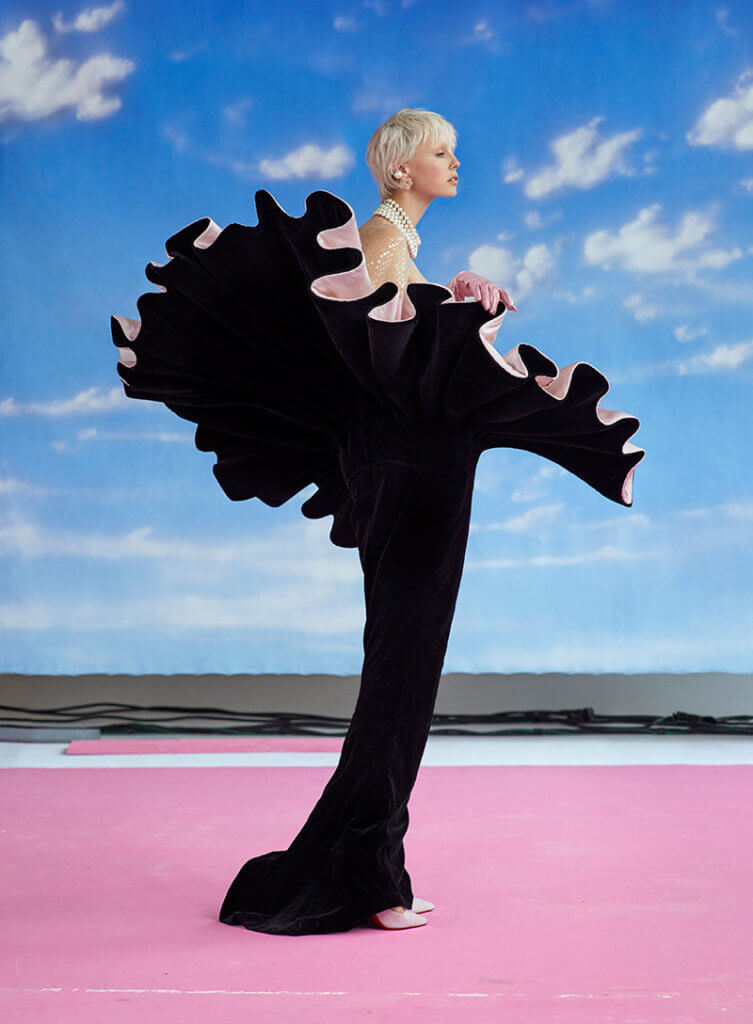
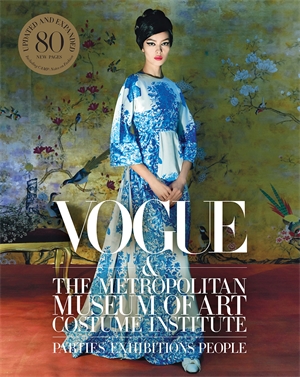
Vogue & The Metropolitan Museum of Art Costume Institute: Parties, Exhibitions, People is available now. Text by Hamish Bowles, foreword by Max Hollein, and introduction by Anna Wintour. Edited by Chloe Malle and originally published by Abrams Books.
AU$90.00
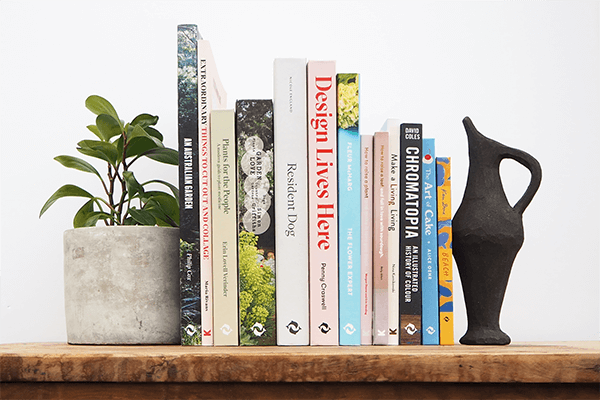
At Thames & Hudson Australia, we pride ourselves on our ‘museum without walls’, our books which explore every interest and spark creative energy.
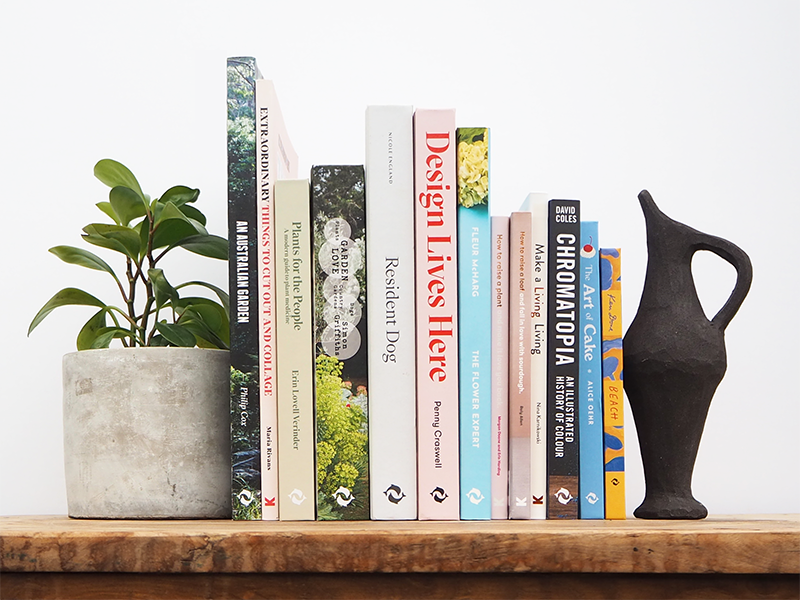
Over the coming weeks, we will be sharing our top titles for key interest areas, from lifestyle and architecture books, to activities, puzzles and games.
Complete your creative bookshelf today.
Run away with the latest fashion bibles.
Fight boredom with our best activities on bread baking, bingo playing, fortune telling and collage making.
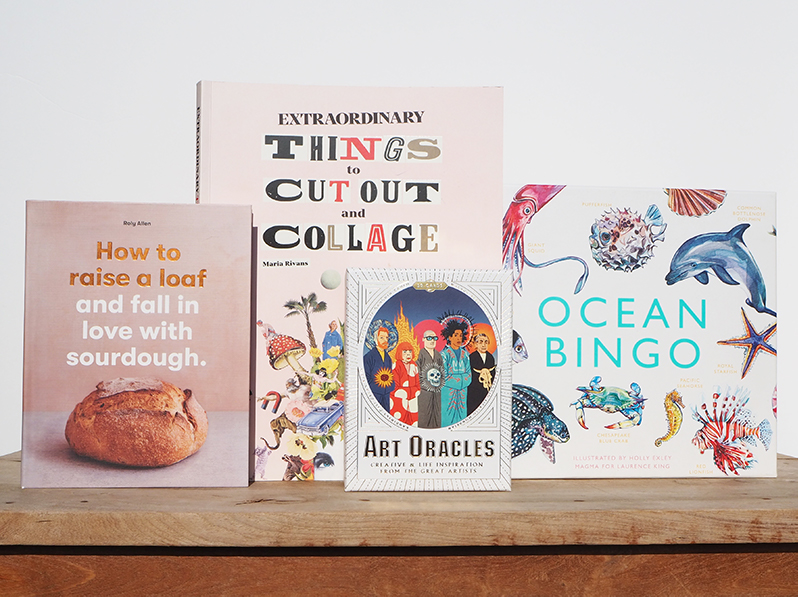
Discover a heady mixture of our favourite books on topics spanning plant medicine, floristry, home plant care and career advice in the creative industry.
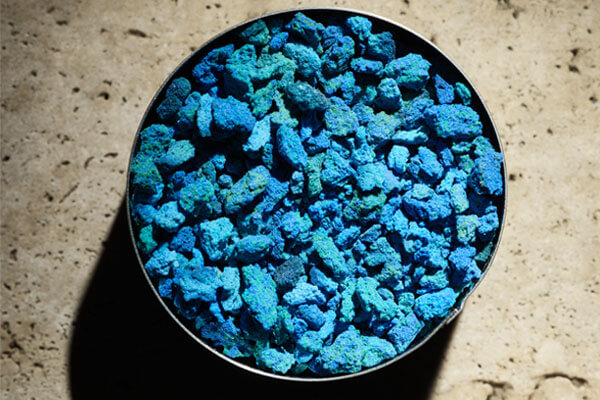
From one of the world’s most respected paint-makers, David Coles, Chromatopia reveals the stories behind fifty striking pigments. The book spans several time periods; here, we look at some of the colours featured from the ancient world.
Egyptian Blue
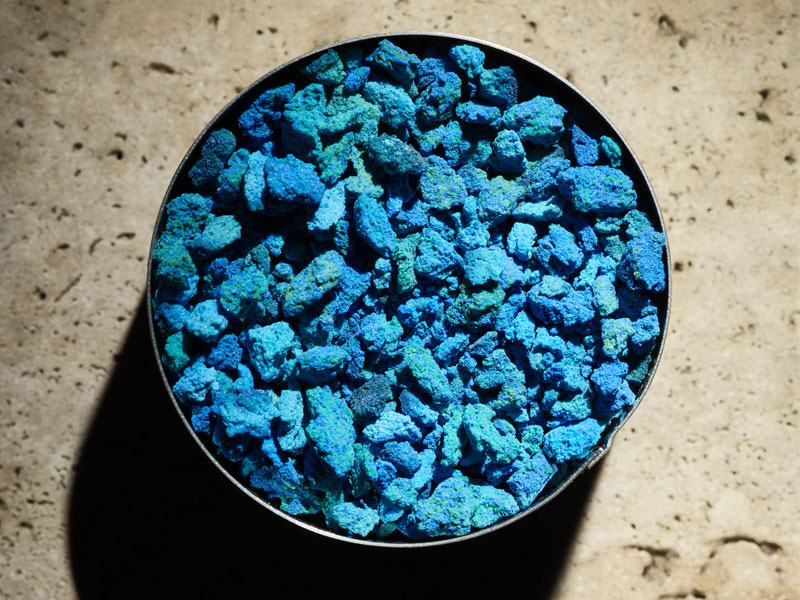
This was the first synthetically produced colour.
Invented at around the same time as the Great Pyramids were being built, Egyptian blue’s creation dates back about 5000 years. The Ancient Egyptians believed blue was the colour of the heavens and because of the rarity of naturally occurring blue minerals like azurite and lapis lazuli, they devised a way to manufacture the colour themselves.
Egyptian blue was not produced by blind chance: it was created with precision. Made by heating lime, copper, silica and natron, the pigment’s invention was a development of the ceramic glaze processes. The Egyptians controlled the firing of the raw materials with amazing accuracy, holding their kilns at a crucial temperature close to 830°C.
The famous crown of Queen Nefertiti owes its colour to Egyptian blue and the pigment was used extensively for painting murals, sculptures and sarcophagi. It spread from Egypt to Mesopotamia, Greece and the outer reaches of the Roman Empire and was used at the palace at Knossos, in Pompeii and on Roman wall paintings. Known to the Romans as caeruleum (from which the colour cerulean derives its name), it was widely used throughout the Classical Age, but the knowledge of how to make it was lost with the fall of the Roman Empire.
Discoveries made by Napoleon’s 1798 Egyptian expedition led to further investigation of Egyptian blue; and eventually, in the 1880s, the chemical composition of the pigment was identified and the manufacturing process was recreated.
Orpiment
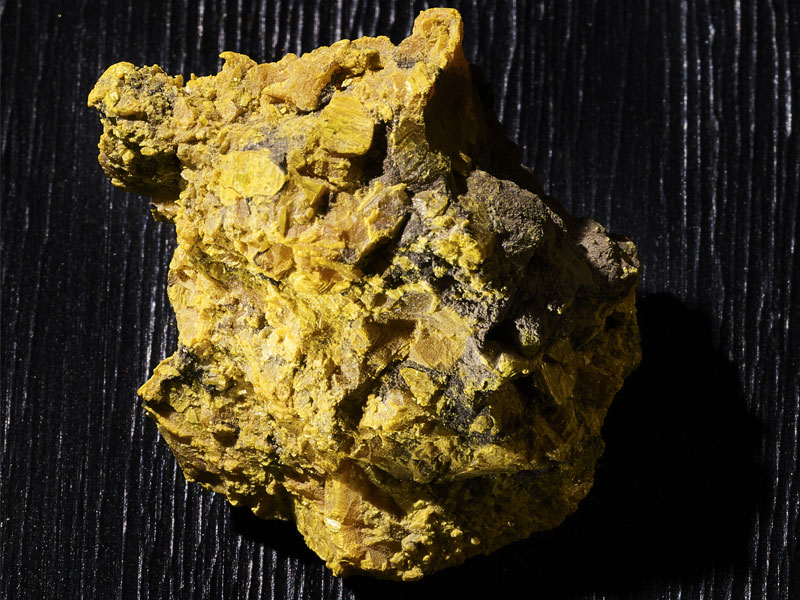
Orpiment was the closest imitation to gold.
Its Latin name is auripigmentum (gold paint) and in the classical world, it was believed that this resemblance had deeper alchemical roots. It was even said that the Roman emperor Caligula could extract gold from the mineral.
In fact, orpiment carries a much more dangerous substance. It is a highly toxic sulphide of arsenic. The Persian word zarnikh (gold-coloured) became arsenikon in Greek and then arrhenicum in Latin, from which the English word ‘arsenic’ is derived. The Romans were well aware of orpiment’s poisonous nature and used slave labour to mine it. For the unlucky slaves this was, in essence, a death sentence.
Orpiment was used in Ancient Egypt as a cosmetic, taking its place in history alongside other deadly pigments used in makeup. It was used in painting for centuries throughout Persia and Asia, but in Europe, because of the dominance of lead-based yellows, it was most often employed in manuscripts.
A manufactured version, known as king’s yellow, was available from the 17th century. The name is believed to come from Arabic alchemy, which described orpiment and realgar as the ‘two kings’.
Both the naturally occurring and synthetic versions of orpiment were incompatible with other commonly used pigments, particularly lead-based pigments like flake white, and copper-based pigments like verdigris and malachite. It was infamous for turning them black. With the introduction in the 19th century of the more chemically inert and less toxic cadmium yellow, orpiment fell out of usage.
Woad
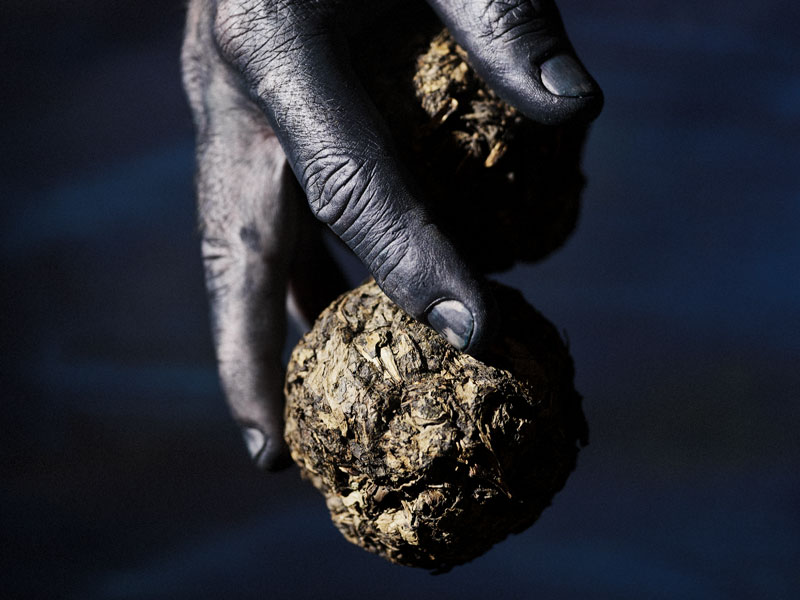
Woad was widely used as a dye in Europe as early as the Stone Age.
Ancient Britons covered their bodies with woad to face the Roman legions and it is said that they struck fear into Julius Caesar himself.
The first part of the woad-making process involved taking fresh leaves of the woad plant, Isatis tinctoria, grinding them to a pulp, rolling them into balls the size of large apples and leaving them to dry in the sun. They could then be stored and used at a later date. Like indigo, the dye is extracted by fermentation. Traditional recipes specify that the plant be soaked in urine under the heat of the sun and trampled for three days. After that, the remaining liquid is a yellowish colour.
The indigo molecule is the blue colourant in woad. The magical quality of indigo is that the distinctive blue colour only develops after the textiles are removed from the dye bath and exposed to air. During the dyeing process, a scum called florey, known as the flower of woad, also develops on the surface. This was skimmed off and dried so it could be used separately as a paint colour.
The fermentation process releases large quantities of ammonia. Far worse, however, is that the plant depletes the soil that it grows in, leaving an infertile wasteland in its wake. Laws were passed in medieval Europe to curb this devastation.
Although indigo was known since Imperial Rome, the more colour-intense Indian indigo was not readily available in the west until commercial quantities were imported at the beginning of the 17th century. It supplanted woad, and production rapidly declined as a result.

Chromatopia is available now. Text by David Coles, photography by Adrian Lander, and cover design by Evi. O Studio.
AU$34.99
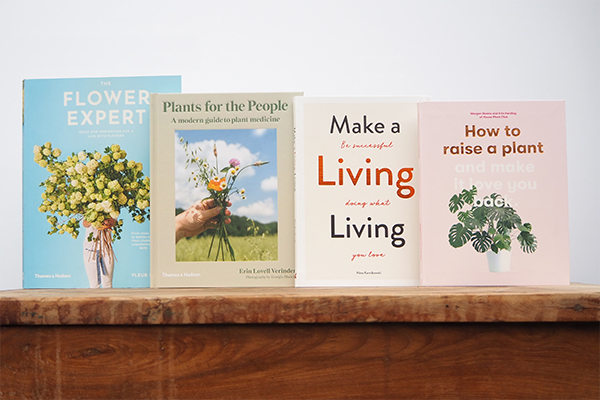
This curated list of lifestyle books are the most current and coveted recommendations from our staff.
Right now, we’re delving into plants for the home, plants for medicine, flower arranging and career inspiration.
Complete your lifestyle bookshelf today.
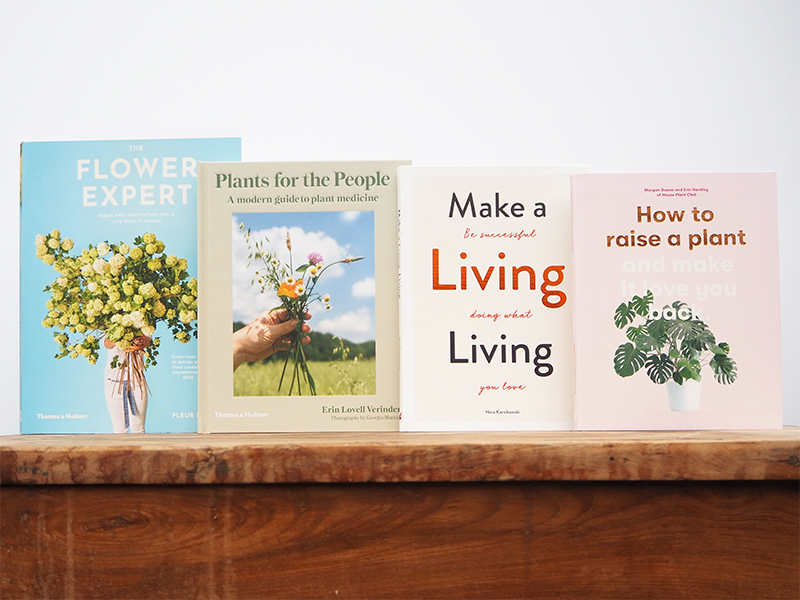
By Erin Lovell Verinder
Plants for the People is a beginner’s guide to plant medicine by qualified herbalist and nutritionist Erin Lovell Verinder. Delve into the power of herbs by learning how to harness their healing energy.
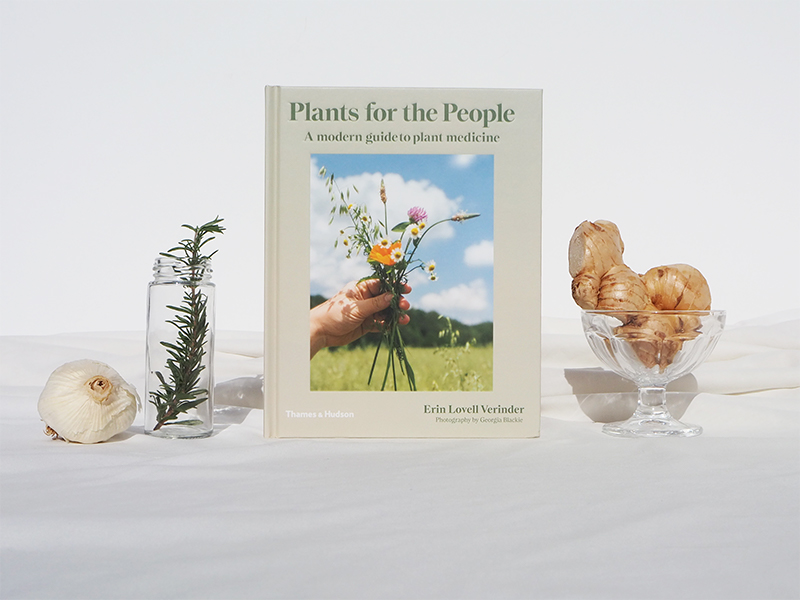
By Fleur McHarg
“…tips, tricks and endless floral inspiration.” – SUNDAY LIFE
Master florist Fleur McHarg shares her wisdom in The Flower Expert, a practical guide to flower arranging and meditation on the form, beauty and symbolism of flowers.
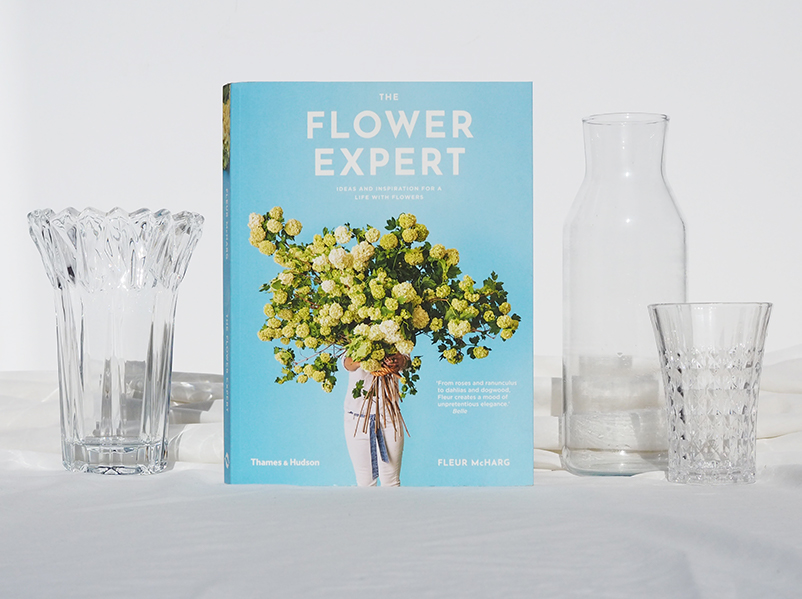
By Nina Karnikowski
Make a Living Living by travel maven Nina Karnikowski is for anyone who has ever wished they could build a successful career doing something they love.
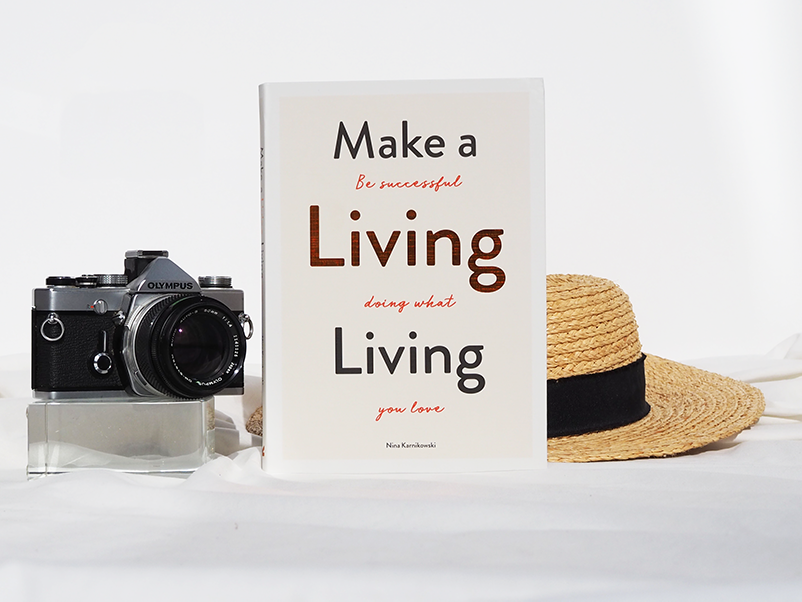
By Morgan Doane and Erin Harding
Learn how to nurture your leafy co-habitants with How to raise a plant and make it love you back by Morgan Doane and Erin Harding. This easy guide to plant care covers plant selection and maintenance; easy-to-follow care instructions; DIY projects; and plant styling tips.
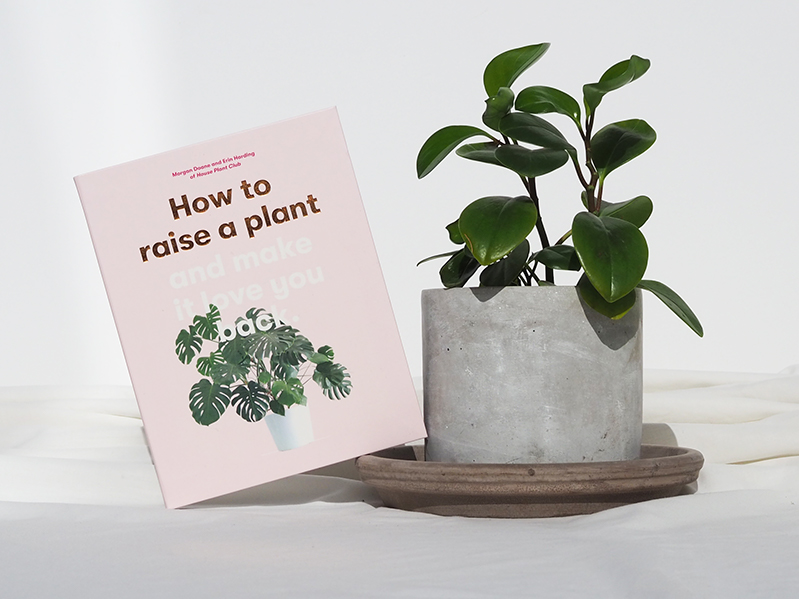

Alice Oehr is passionate about her career in illustration and design, but her heart truly belongs to cake. In her first book, The Art of Cake, Alice explores the wonderful culture of cake, profiling fifty of the world’s favourite in her signature illustrative style. We visited Alice at her colourful home to chat about her road to becoming one of Melbourne’s most popular artists and all things dessert.
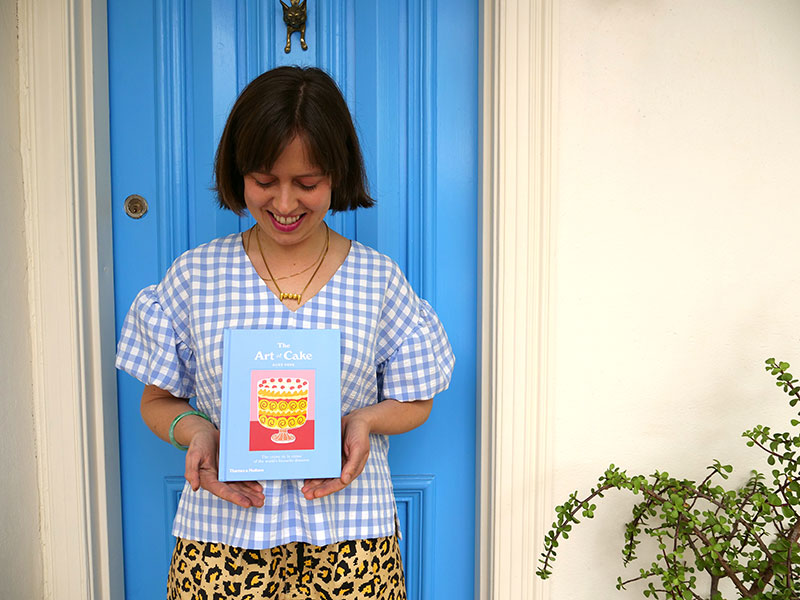
Can you share a bit about your background and what led you to becoming one of Melbourne’s favourite illustrators/designers?
I have always made things and enjoyed art, but it took me a while to come around to committing my life to it as I had other interests. I did an arts degree, travelled, and had some fun before knuckling down and studying graphic design. This gave me a set of skills that I could immediately use to realise my ideas, and to work for people who needed things done. I gradually leaned more into illustration as this is where my passion lay: colour, pattern, and so forth.
What was your approach to decorating your home, and what makes it quintessentially ‘you’?
I think a lot of artists are collectors (or hoarders, for a better word) as they are romantically drawn to objects and the life that thing has had. This is the case for me. I had no planned approach to decoration but over time, my home has become filled with things that all have sentimental value; objects passed down from grandparents, artworks from friends and souvenirs collected from round the world. Thus, the house is rather colourful, eclectic and chaotic, and that is me.
What is your favourite item in your house, and what does it mean to you?
I don’t really have a favourite, though some things do bring back very good memories. The corn jug is something that really makes me laugh, as it is so kitsch. I bought it at a flea market in France on holiday with my family. It appalled my mother, walking, as it does, the line of good taste. I enjoy this object because I can actually use it, and regularly put flowers in it.


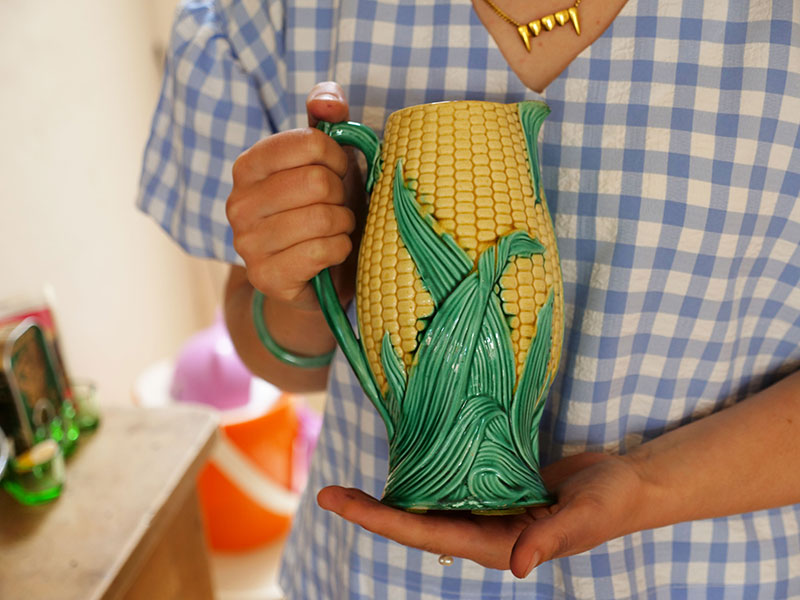
How do you split your time between your home and your studio?
The only approach that works for me is to treat my freelance work as a full-time job. I work 9am to 6pm at my studio, and almost never at night or on weekends. I don’t go out for lunch or go shopping during work time as I find this will come back to bite me later, when I find myself staying up until 2am finishing it.
You say that cakes are embedded in our memory, ‘laced with a heavy dose of nostalgia from the sweet moments of our past.’ Where does your love for cakes and pastries come from?
At first, I didn’t really know; but through the process of making this book, I have realised it is from the great sense of occasion my parents attributed to a visit to the cake shop when I was a kid. It served as a bribe, and it worked. In childhood too, the grand event of a birthday cake was long drawn out: choosing the flavours and the decoration, anticipating it, then being presented with it in front of a crowd in a great show of sparklers and singing. All that emotion is deeply embedded in the way I think about desserts – they are always special, and something to get excited about.
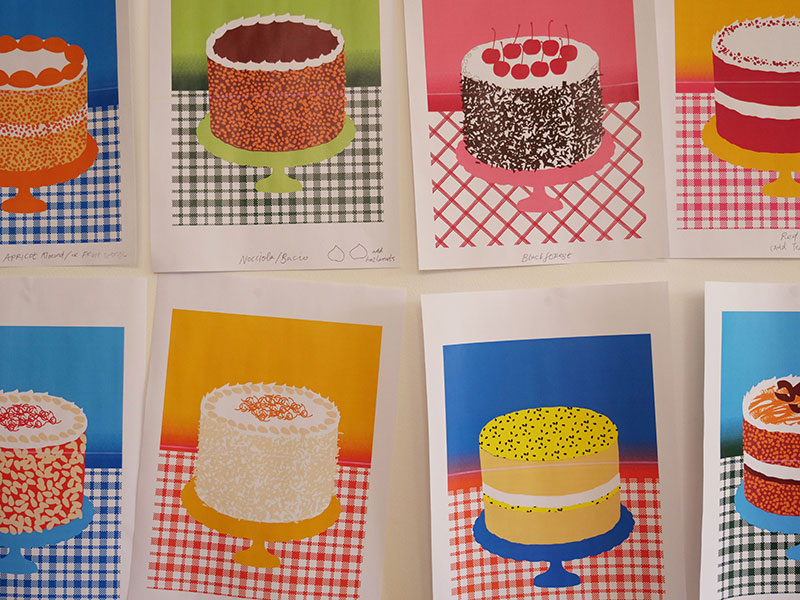
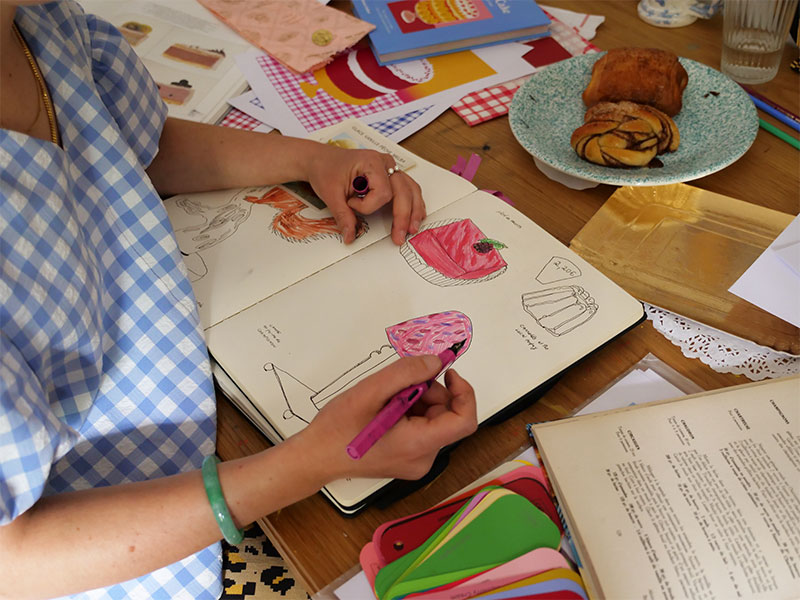
When did you start illustrating cakes, and at what stage did The Art of Cake come into conception? Can you talk a little about the creative process behind the cakes in the book?
My habit of drawing everything I see when I go travelling is what sparked the idea for the book. When I’m away I notice everythingand draw all the things I see and do. Each country I’ve visited has their own unique answer to a ‘sweet treat’, especially in places like France and Italy – their cakes are like works of art. Coming from Australia where we have more of a ’Women’s Weekly’ approach to cakes; the ostentatious decoration of France’s petits fours, for example, really appealed. The book seemed like a good idea as the universal appeal of a cake was clear. Every culture, from pretty much time immemorial, has had its own form of sweet dish – often associated with reverence or celebration – and I felt that this could be explored. I researched what are considered the most beloved cakes around the world and compiled a list. I investigated each cake to write my description of it’s flavour and presentation, as well as its history and most interesting tidbits. Then I drew them all!
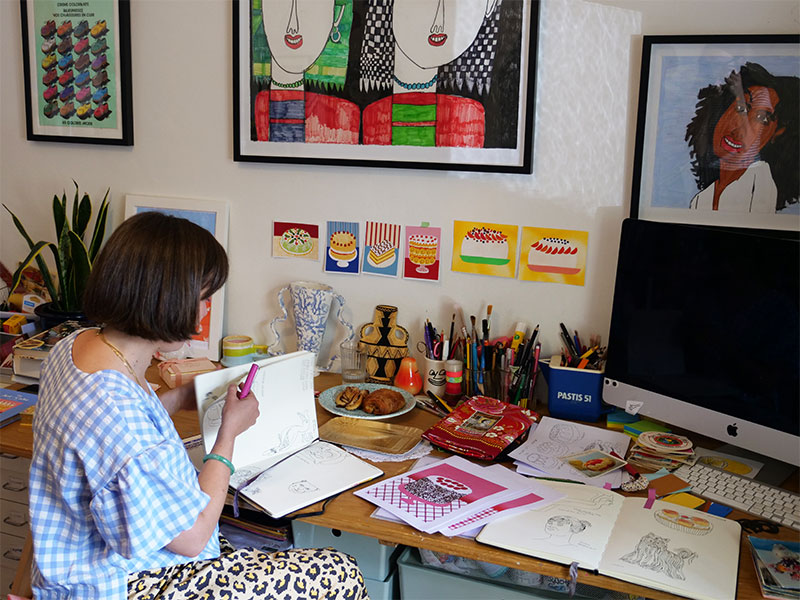
What’s the best place in Melbourne for cake or a sweet treat?
For cake, absolutely without question, Beatrix in North Melbourne. If you’re after a more ‘bread–like’ snack, for instant a croissant or brioche pastry, Baker D. Chirico in Carlton is the best in that department.
What other projects have you been working on that we can expect to see this year?
My favourite on-going project is the weekly still life drawing class that I teach at Lamington Drive gallery in Collingwood. I choose a theme, set up a scene on a table, and 20-30 people come in to explore drawing the still life on an iPad Pro. Exploring digital drawing is a new and exciting activity and always promotes interesting conversation.
Alice’s still life drawing classes have taken a pause during isolation but are set to resume later this year.
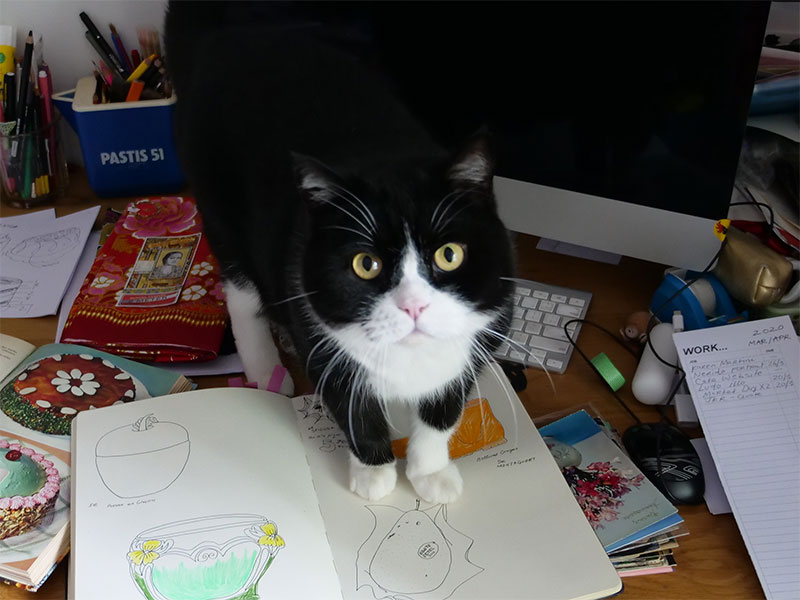

The Art of Cake is available now. Text by Alice Oehr.
AU$24.99

Australia Modern has been shortlisted for the Illustrated Book of the Year award at the 2019 Australian Book Industry Awards. We’d like to extend a warm congratulations to the authors, Hannah Lewi and Philip Goad, the designer, Stuart Geddes, and all of the contributors and editors involved with the creation of the book.
Get to know Australia Modern
Australia Modern is the most complete survey of modernist Australian architecture, interiors and landscape design spanning 1925 to 1975. With a focus on buildings and places that still exist, the book features 100 significant site examples by Australia’s most revered architects, rich archival imagery and expert essays exploring how modernism has shaped Australian society.


The book pays tribute to all types of examples of Australian modernism, whether big or small, famous or everyday. From the Sydney Opera House and the National Gallery of Victoria, to a Pop-Brutalist courthouse in regional Victoria or a modest lawn bowls club, Australia Modern recognises both the iconic and the now-obsolete. As the authors note, these examples are ‘part of our history, tangible physical reminders of the twentieth-century hopes, aspirations and growth of our local communities, cities, towns and landscapes’.


Where to catch the award ceremony – that’s right, you’re invited!
This year, the ABIAs will be held virtually via the official YouTube channel. The perk of going virtual? Anyone can tune in to watch the announcement of the winners on Wednesday 13th May from 4pm AEST.

Australia Modern is available now. Text by Hannah Lewi and Philip Goad and design by Stuart Geddes.
AU$80.00

Like so many throughout the world, our team is working from home. Some of us are surrounded by plants, some by arts and crafts, all of us by books. We love seeing the ways people are making new workspaces at home and we wanted to share some of ours with you.
Michelle Brasington | Publicity Manager

Here is my workspace. I have a lot of light streaming in through the kitchen window in the mornings and it prompts me to get the dishes done before I start work!

My go-to books at the moment are:
Plants for People: A modern guide to plant medicine
This ode to plants reconnects me to nature making me feel relaxed and comforted. I am working my way through Erin’s recipes for teas and my favourite so far is the ‘daily multi’ which is packed with nutritional goodies.
This is definitely an aspirational book for me! I find it fascinating how these bespoke pieces of furniture and lighting have found their home and fit so well in these stunning architecturally designed houses.

My co-worker, Charlie the whippet, is probably the most stylish part of my home! I love all dogs, but there’s a special place in my heart for whippets. She’s a good listener and never argues when I talk to her. All she wants is a pat and a dog biscuit!
Jackie Money | Marketing Manager

Firstly, these pictures of my house are entirely misleading, because I could never keep it so clean. Thank you to this content piece for making me tidy up. Secondly, welcome to my (working from) home.
My desk gets some lovely afternoon sunshine, making a great natural filter for video meetings. I keep that pile of work books on the chair next to me for easy reference, and art supplies at the ready for my lunch break.

When the sun gets a bit much, I can retreat to my bedroom where the bookshelves live. The books which don’t fit there have to live in piles stashed around the apartment. That doesn’t mean I love them any less than the bookshelf ones, but it does mean I have more books than I have proper places to put them.

Lately, I’ve been pouring over The Flower Expert by Fleur McHarg. The only flower I could identify before reading this book was a sunflower, and now I can tell you what a rose looks like. Maybe even a daisy. It has so many brilliant tips on arranging flowers, like what colours to put together and how much green stuff (ie. foliage) to use. If you’re a flower novice like me, or a master like Fleur, this book will bring you pure, colourful joy.
Lisa Schuurman | Editorial Assistant

Here is my work from home desk. I’ve retreated to my parents’ house on the Mornington Peninsula for some fresh air and space while self-isolating. Currently half my desk is my mum’s sewing area and the other half is taken up by my computer, books, flowers from the garden and quite often Pepper, my dog. She has a habit of sitting in my chair but most of the time she’s under the desk trying to nibble my toes.

I am one of those messy people who will tell you everything is organised, which is half true, but I definitely try to squish everything in wherever I can. The bookcase includes: some of my favourite THA books, a lot of YA from when I ran an online book club, a yellow duck, a fifteen-year-old lucky horse shoe with my name stamped into it, my favourite vinyl records, a small snow globe of a sheep from NZ and one of my favourite postcards that says ‘de wereld is mooier met jou’ which translates from Dutch to ‘the world is more beautiful with you’.

To match my slightly chaotic shelves, I am also a messy reader. I start multiple books and never finish them, don’t read for many months and then I’ll end up reading multiple books at a time. One book I haven’t put down is Portraits Destroyed by Julie Cotter. I started at THA just when we were beginning to work on the book but I never got a chance to read it until now. Julie Cotter has such great insight into the fascinating world of portraits and the role they play in history. You also can’t deny the power of a great pic section in bringing the words to life.


Sydney-based editor, writer and curator Penny Craswell has built a career doing what she loves: showcasing exceptional Australian architecture and interiors and writing about why they really matter. Now, Penny has released her first book, Design Lives Here, a compelling look at the connection between spaces and objects that puts the spotlight on local makers. We spoke to Penny about the inspiration behind the book, her favourite project featured, and her predictions for the future of Australian contemporary design.
Where did your love for design, architecture and interiors stem from?
It all started in Amsterdam, where I had originally planned to do an internship for a photography magazine (my first degree was Art History and Curatorship).The photography magazine didn’t have enough desks, so I went to Frame magazine, which happens to be the world’s biggest (and best) design magazine. I fell in love with design there, and when I moved back to Australia, I decided to pursue a career in design magazines and writing.
How does this translate into your blog, The Design Writer?
My blog features amazing design happening in Australia – from architectural and interiors projects like houses, restaurants and retail, to the best design objects, furniture and lighting. I also promote ethical design – design that is doing good for the environment and society.
Design Lives Here goes a step further by paying homage to local designers and makers who have crafted bespoke pieces of furniture and lighting for stunning Australian residential architecture and interiors. What led you to this project and how did it take shape?
I have a real love of interiors stemming from my time as Deputy Editor of Indesign magazine and Editor of Artichoke magazine. Far more than just colours and patterns, it is an incredible skill of understanding how spaces are used and how they should be proportioned – a too-large room is just as badly designed as a too-small room. But I also love design objects – my masters thesis was about objects and products, and how people attach stories to them – how they are made, how they are used. This book combines the two – it’s about the stories attached to both interior and object.
The idea for the book was to show the beauty of Australian design – I wanted to pair each house or apartment with one piece of Australian furniture or lighting design. In some cases, I found the pairing through the architect or interior designer and in some cases I found it through the furniture or lighting designer.

For those who haven’t read Design Lives Here, can you tell us a bit more about the importance of spaces and objects being connected by the design process?
Every designer, whether they’re an architect, interior designer, object designer or fashion designer, starts with an idea and then works this through various iterations – sketching by hand or on a computer or both – and then works with materials to make that idea come to life. Through exploring how something was made, we can peel back the layers and truly understand its meaning and value.
Is there a takeaway for our readers on how they can bring this ethos into their own homes?
I would say that the first solution is not necessarily the best solution – sometimes you need to go through a process to find the right answer. Obviously, professional designers are the experts, so hire them if you can to help you, especially on larger projects. I would recommend that everyone consider buying Australian design – the quality and originality of the design is there, often without the huge price tag.
Do you have a favourite project from Design Lives Here?
I tried to choose a range of projects – large and small, urban to remote, for small families and large. But for me, my favourite has to be Indigo Slam by Smart Design Studio – it is a truly monumental house that is also intimate in places, and the furniture, designed and made by Khai Liew in Adelaide, is exquisite.
What would you say is the most unique object featured, and is there more to its story than revealed in the book?
I really love the Black Sambuca Chandelier by Ruth Allen – she is a glass artist and she recycles used Black Sambuca bottles – those long elegant glass shapes – into pendant lights. I didn’t mention it in the book, but Ruth told me that black glass is quite rare so working this way offers the designer/maker the chance to recycle something that would otherwise be post-consumer waste, while also working with a rare material.


In the book, you say that ‘the Australian dream of owning a quarter-acre block with a picket fence and a garage is no longer relevant – or at least no longer so simple.’ Can you explain why this is?
It is partly because property prices are so high these days that many young people can’t afford a mortgage on one salary the way our parents could – and sometimes they can’t afford it with two salaries. These days, we may not need a garage as many people prefer bicycles and/or public transport. Also, for financial reasons, apartments are becoming more popular in Australia, as is inter-generational living.
Where do you think Australian contemporary design is headed?
All signs show that Australian design is continuing to grow. I think we need to work on educating the general public about the value of design – there is a burgeoning design industry in Australia and people need to know they can choose to buy Australian design. As long as this continues to happen, the future looks bright for designers, makers, manufacturers and brands looking to grow their business.
What other projects are you working on, and what’s next for you?
I’m working on my blog right now and doing some preliminary research for my next book!

Design Lives Here is available now. Text by Penny Craswell and cover design by Claire Orrell.
AU$59.99

We took our epic collection of fun, family activities on a balcony picnic to give them a whirl! Read on to see what we’re playing and how they work.
For ages 3+
Classic bingo with a jungle twist! Play along with the blue Ulysses butterfly and the inedible tomato frog, along with many other exotic jungle creatures. Easy to play and simply delightful, for all animal-loving children and adults.


Jungle Bingo, illustrated by Caroline Selmes. Published by Laurence King Publishing.
$29.99
For ages 6+
Build Your Own Mars Colony is a pop-out assembly set, no scissors or glue necessary. Set up your own rockets, astronauts, robots and hover craft. Heck, name your space cat Major Tom and enjoy hours of extraterrestrial fun.


Build your Own Mars Colony, illustrated by Jana Glatt. Published by Laurence King Publishing.
$24.99
For ages 4+
300 sea creatures are hiding on this game board – can you be the first to spot the clown fish or the killer whale? The rules are simple: take a creature token from the box and show it to the group. The first to spot the creature on the big board, wins the token. The one with the most tokens, wins!



I Saw It First! Ocean, illustrated by Caroline Selmes. Published by Laurence King Publishing.
$29.99
For ages 6+
All you need to know to become the ultimate superhero! Featuring 20 activities and a sticker sheet, this colourful activity book reveals superhero secrets like how to make yourself invisible, and handy tips from finding your superhero name to designing your costume.


The Superhero Handbook, text and illustrations by James Doyle and Jason Ford. Published by Laurence King Publishing.
$19.99
For ages 2+
Colours, animals and numbers combine in this beautiful jigsaw. Children will love these five simple puzzles, making learning fun.


Puzzle Play, illustrated by Jana Glatt. Published by Laurence King Publishing.
$19.99
For ages 3+
This book is packed with more stickers you can shake a tail feather at (over 200!) and glorious activities to stick them on. Design a hoopoe’s crown, stick the right egg in its nest and play blackbird bingo in this beautifully designed sticker activity book.


The Big Sticker Book of Birds, text and illustrations by Yuval Zommer. Published by Thames & Hudson UK.
$17.99
For ages 4+
Featuring 25 breeds of your favourite four-legged friends, this memory game will keep you entertained for hours.


Dogs & Puppies: A Memory Game, illustrated by Marcel George. Published by Laurence King Publishing.
$21.99

The Art of Cake is illustrator, designer and artist Alice Oehr’s playful ode to cake for its devotees everywhere. Through her distinctive, quirky style, she captures cake as an art form that satisfies not only our taste buds but also our eyes and imagination.
Learning about the history of fifty cakes adored across the globe is like the sweet escape you didn’t know you needed. We’ll take a bet here and guess that you don’t know the story of the Cannoli, the origin of the Éclair, or the scandal behind the Sachertorte. Alice covers them all with a sense of nostalgia and whimsy. The Art of Cake also features six of Alice’s own homespun recipes to keep you busy and baking.
Take a look through our gallery of six of our favourite cakes from the book: the humble carrot cake, the controversial pavlova, the dainty strawberry shortcake, the strikingly layered red velvet cake, the elegant éclair and finally the alluring black forest gâteau.
[smartslider3 slider=2]

The Art of Cake is available now. Text and illustrations by Alice Oehr and design by Ashlea O’Neill
AU$24.99 / NZ$29.99


In Extraordinary Things to Cut Out and Collage, artist Maria Rivans has sourced over 1,500 interesting images that can be combined to make one-of-a-kind works of art.
The word collage describes both the technique and the resulting work of art in which pieces of paper, photographs, fabric and other ephemera are arranged and stuck down onto a supporting surface. With roots in the early twentieth century Dadaism movement, collaging was popularised by famous artists like Man Ray and Hannah Höch. It has since evolved into a lasting art form that can be found everywhere from teen girls’ bedroom walls to the mood boards that inspire the new collections of illustrious fashion houses.
A collage party is the perfect feel-good activity regardless of whether you are gathered at the same kitchen table or video chatting from afar. The beauty of collage is that you probably already have enough material laying around the house — old magazines, family photos, wrapping paper, newspaper clippings, food packaging.

You can organise a virtual collage party with your friends on video platforms like Zoom or Houseparty. With some good tunes in the background and a cup of tea (or glass of wine!) by your side, it won’t be long before you’re all lost in the bizarre world of collage.
If you’re staying home with young artists, collage is the perfect way to occupy an afternoon. With a bit of help with the scissors, little hands will love choosing their images and getting messy with the glue.
It’s time to get started! For inspiration, check out our author Maria Rivans or incredible Australian artists Madelaine Buttini and Karen Lynch.

On Thursday 2nd of April, Laurence King Publishing are hosting a worldwide virtual collage party and you’re invited.
Simply share your collage masterpiece on Instagram with the #ExtraordinaryCollage for a chance to win a copy of Extraordinary Things to Cut Out and Collage. Maria Rivans will be choosing five winners on April 14th.

This is an extract from Extraordinary Things to Cut Out and Collage by Maria Rivans.
Published in March 2020, by Laurence King Publishing, $29.99, available here.

Now is a more important time than ever to support your local bookstores. Stock up for your personal library and check out our live list of bookstores offering free delivery services, pick-up options and over-the-phone book recommendations to get you through.
This is a live list, get in touch if you would like to add a service being offered by a local bookstore.
VICTORIA
Aesop’s Attic (Kyneton): Accepting phone orders and offering a drive through pick-up service.
Antipodes Gallery & Bookshop (Sorrento): Accepting phone and email orders and offering free home delivery to local suburbs.
Avenue Bookstore (Richmond, Albert Park and Elsternwick): Accepting phone and email orders and offering free same day delivery to local suburbs for orders over $30 placed before 3pm.
Avoca Hill Bookstore (South Yarra): Free delivery to local suburbs for orders over $20 and next day delivery for in stock items.
Beaumaris Books (Beaumaris): Over-the-phone book recommendations, free gift wrapping and offering free delivery to local suburbs.
Benn’s Books (Bentleigh): Accepting phone, Instagram and email orders and offering free delivery to Bentleigh, East Bentleigh, McKinnon, Moorabbin and Murrumbeena.
Blarney Books (Port Fairy): Accepting phone and Facebook orders and offering free delivery to local suburbs.
Book and Paper (Williamstown): Accepting Instagram, Facebook and text orders and offering home delivery to local suburbs.
Brunswick Bound (Brunswick): Accepting phone and online orders and offering free delivery to Brunswick, Brunswick East, Brunswick West, North Carlton, North Fitzroy, Coburg, Moonee Ponds and Essendon.
Brunswick Street Bookstore (Fitzroy): Accepting phone, email and online orders and offering free delivery to local suburbs.
Collins Moonee Ponds: Accepting online orders and offering click and collect services.
Collins Ballarat: Accepting online orders and offering free home delivery within Ballarat.
Coventry Bookstore (South Melbourne): Accepting online orders and offering free delivery for orders over $20 with next day delivery for items that are in stock.
Diabolik Books (Mount Hawthorn): Accepting phone orders for delivery and offering home delivery within a 3km radius of the store.
Dymocks CBD: Accepting phone and email orders and offering free delivery for orders over $50.
Dymocks Camberwell: Accepting phone and email orders and offering free delivery to local suburbs.
Dymocks Tooronga: Accepting phone and email orders and offering free delivery to local suburbs.
Eltham Bookshop (Eltham): Accepting phone and email orders and offering delivery to local suburbs.
Escape Hatch Books (Kew East): Free delivery to local suburbs.
Fairfield Books (Fairfield): Accepting phone orders and offering both a pick-up from your car service and free delivery to local suburbs.
Farrell’s Bookshop (Mornington): Accepting phone and email orders and offering free delivery to local suburbs.
Happy Valley (Collingwood): Accepting phone and email orders and offering free delivery to Collingwood, Fitzroy, Clifton Hill and Carlton North.
Hares & Hyenas (Fitzroy): Delivery via Books-on-Bikes for those staying in their homes or who cannot afford postage.
Hill of Content (CBD): Accepting online, phone and email orders and offering free delivery for orders over $50.
Ink Bookshop (Winchcombe): Free delivery in Mansfield and surrounding areas.
Jeffreys Books (Malvern): Accepting phone, email and online orders.
Just Books (Bairnsdale): Free home delivery to customers in Bairnsdale, Lakes Entrance and surrounding areas.
Metropolis Bookshop (CBD): Accepting online orders and offering free postage delivery for orders over $50.
My Bookshop by Corrie Perkins (Toorak): Accepting phone orders and offering home delivery within a 20km radius of the store as well as a same-day delivery service if order is placed before 3pm.
Neighbourhood Books (Northcote): Accepting online orders and offering free delivery to Northcote, Thornbury, Preston, Reservoir, Fairfield, Carlton North, Carlton, Fitzroy North, Fitzroy, Collingwood, Princes Hill, Clifton Hill and Brunswick.
New Leaves (Macedon Ranges): Accepting phone orders and offering free delivery to the Macedon Ranges area.
Paperback Bookshop (CBD): Accepting phone and email orders.
Readings (Carlton, Doncaster, Hawthorn, St Kilda and Malvern): Accepting online orders and offering free delivery for orders over $60.
Squishy Minnie (Kyneton): Accepting online orders and offering free delivery within the Macedon Ranges.
The Book Bird (Geelong West): Accepting phone, Instagram and email orders and offering free delivery to Geelong, Geelong West, North Geelong, Newtown, Manifold Heights, Rippleside, Hamlin Heights, Herne Hill, Bell Post Hill, and Bell Park.
The Bookshop at Queenscliff: Accepting phone and email orders and offering free delivery to the local area.
The Grumpy Swimmer (Elwood): Accepting phone and email orders and offering free delivery to Elwood and local suburbs for orders over $25.
The Leaf Bookshop (Ashburton): Over-the-phone book recommendations, accepting phone orders and offering free delivery within a 5km radius of the store.
The Little Bookroom (Carlton North): Accepting online orders and offering free delivery to Carlton North, Carlton, Fitzroy North, Fitzroy, Princes Hill, Clifton Hill, Brunswick, Northcote and Coburg.
The Sun Bookshop and The Younger Sun (Yarraville): Accepting phone orders and offering free same day delivery to Yarraville, Seddon and Kingsville, and next-day deliveries by car to Spotswood and Newport.
Thesaurus Books (Brighton): Accepting phone and email orders and offering free delivery to Brighton, Brighton East, Hampton and Bentleigh.
Top Titles Bookstore (Brighton): Accepting phone orders and offering free delivery to local suburbs.
Torquay Books (Torquay): Accepting online orders and offering delivery to local suburbs.
T.S. Bookshop (CBD): Accepting phone and online orders between 10am and 5pm, Monday through Friday, and offering free delivery across Australia for orders over $50.
Turn the Page (Cowes): Accepting phone orders and offering local delivery.
Verso Books (Healesville): Free delivery to local suburbs.
NSW
Beachside Bookshop (Avalon): Accepting phone, email and online orders and offering both a carpark pick-up service and free delivery to local suburbs.
Berkelouw Books (Cronulla): Accepting phone and email orders and offering free home delivery to Cronulla, Kurnell, Woolooware, Caringbah, Miranda, Gymea, Kirrawee and Sutherland on the 26th March.
Berkelouw Books (Hornsby): Personalised, curated book lists as well as pick up and home delivery with free shipping for orders over $99.
Berkelouw Books (Leichhardt): Curated book lists here, accepting phone orders and offering $5 delivery for orders over $49 or free delivery for orders over $99 to local suburbs.
Berkelouw Books (Rose Bay): Free home delivery to Rose Bay, Vaucluse, Watsons Bay, Dover Heights, Point Piper and Bellevue Hill.
Better Read than Dead (Newtown): Delivering curated staff picks right to your desktop or phone screen via their Virtual Bookseller which you can access here, and offering free delivery across Australia.
Book Bazaar (Umina Beach): Offering free delivery to local suburbs.
Bookoccino (Avalon): Accepting phone and email orders and offering free delivery within a 10km radius of the store.
BooksPlus (Bathurst): Free delivery within Bathurst.
Collins Booksellers (Orange): Offering free delivery across Orange.
Dymocks (Chatswood): Accepting phone and email orders for delivery.
Gertrude and Alice (Bondi Beach): Accepting phone orders and home delivery around the Bondi and Tamarama area.
Gleebooks (Glebe): Offering free postage delivery to Inner Western suburbs or Australia-wide for orders over $50.
Harry Hartog (all stores): Offering curated book lists here.
Harbour Bookshop (Ulladulla): Accepting phone, email and social media orders and offering $6 delivery across Ulladulla.
Kinokuniya (Sydney CBD): Accepting phone and online orders and offering over-the-phone book recommendations.
Lost in Books (Fairfield): Offering delivery across Australia and digital creative programs.
Megalong Books (Leura): Recommendations over the phone and free home delivery to local residents in the Upper Mountains
Oscar and Friends (Double Bay): Free home delivery in Surry Hills, Redfern, Double Bay and Bellevue Hill.
Potts Point Bookshop (Potts Point): Accepting phone and online orders and offering free delivery to local suburbs.
Reader’s Companion (Armidale): Free delivery to customers in Armidale, Uralla and Guyra district.
The Book Room at Byron (Byron Bay): Free same day book delivery in the Byron shire and Lennox Head.
The Bookshop (Bowral and Kiama): Personally curated bookstacks, accepting phone and email orders, and offering delivery to local suburbs.
The Little Lost Bookshop (Katoomba): Accepting phone, web and email orders and offering free delivery across Katoomba.
The Wandering Bookseller (Katoomba): Accepting email orders and offering free delivery Australia-wide.
Wise Words Bookshop (Moree): Accepting phone or DM orders and both mail order and home delivery.
TAS
Fullers Bookshop (Hobart): $5 delivery across Tasmania.
Petrarch’s Bookshop (Launceston): Delivery to Launceston.
The Devonport Bookshop (Devonport): Accepting phone orders and offering free delivery across the Devonport area.
The Hobart Bookshop (Hobart): Free delivery within the Hobart metropolitan area as well as a pick-up service.
ACT
Dymocks Canberra: Free delivery in the ACT.
Dymocks Belconnen: Free delivery in the ACT and Murrumbateman.
QLD
Avid Reader (West End): Free delivery to local suburbs and free postage delivery across Australia for orders over $50.
Books@Stones (Stones Corner): Free delivery across Australia until April 8th.
Dymocks (Brisbane): Free delivery for orders over $75.
Dymocks (Toowoomba): Free delivery to people over 70 and $2 shipping to local suburbs.
Folio Books (Brisbane CBD): Accepting phone and email orders and offering free postage to Brisbane customers for orders of two books or more.
Mad Hatters Bookshop (Manly): Free delivery to Wynnum, Manly and suburbs within 5km of the store for orders over $30.
Mary Who? (Townsville): Accepting phone orders and offering free delivery to the inner Townsville area for orders over $50.
Riverbend Books (Bulimba): Accepting phone and online orders and offering both a pick-up option and home delivery to postcodes 4170 and 4171.
Sequel Books (Moorooka): Accepting phone and email orders and offering free home delivery to local suburbs.
The Book Tree (Toowoomba): $2 home delivery to customers in the 4350 postcode.
Where the Wild Things Are (West End): Accepting phone orders and offering offering free home delivery to postcodes 4170 and 4171 and free delivery to other areas for orders over $50.
WA
Beaufort Street Books (Mount Lawley): Free delivery within a 5km radius of the store.
Collins (Cottesloe): Accepting online and phone orders and offering free delivery in Western Australia.
Collins (Bunbury): Free home delivery on purchases over $30 to Bunbury, Eaton, Australind and Dalyellup areas and postage to other areas for $6.95.
Crow Books (East Victoria Park): Accepting phone and email orders and offering home delivery to local suburbs.
Dymocks (Busselton): Free home delivery within the South-West, including same-day delivery if in-stock books are ordered before 2:30pm.
Dymocks (Morley): Accepting phone and email orders and home delivery at a reduced price of $2 for Booklover members or $5 for non-members in the suburbs of Bassendean, Bayswater, Inglewood, Kiara, Mirrabooka, Morley, Nollamara, Noranda, Tuart Hill and Yokine.
Dymocks (Karrinyup): Accepting phone and email orders and home delivery at a reduced price of $2 for Booklover members or $5 for non-members in the suburbs of Karrinyup, Trigg, Innaloo, Gwelup, Scarborough, North Beach and Karine.
Dymocks (Joondalup): Accepting phone orders and offering free local delivery.
My Little Bookshop (Halls Head): Free delivery from Perth metro area to Bunbury.
Paperbird Books (Fremantle): Free delivery to Fremantle and surrounding suburbs.
Planet Books (Mount Lawley and Northside): Accepting online, phone and email orders and offering free delivery to local suburbs.
SA
Imprints Booksellers (Adelaide): Accepting phone and email orders and offering free postage across SA and free home delivery around Adelaide.
Matilda Bookshop (Adelaide): Accepting phone orders and offering free postage across SA and free home delivery to local suburbs.
Mostly Books (Torrens Park): Free delivery south of Adelaide, to the suburbs of Mitcham and surrounding suburbs.
The Raven’s Parlour (Tanunda): Delivery to local residents in quarantine or self-isolation.
NT
Red Kangaroo Books (Alice Springs): Accepting phone and email orders and delivering across Alice Springs.
Books are everywhere.
Plenty of bookstores that support us not listed here will be delivering online, and you can also purchase books from Booktopia and other online retailers.
The Australian Booksellers Association’s Love Your Bookshop Day is also sharing a range of ways in which you can continue to support your local bookstore, including purchasing vouchers, signing up to their e-newsletter list and pre-ordering titles. #loveyourbookshopeveryday

‘Often the easiest approach is the most potent.’
Learn the difference between teas, infusions, decoctions and sun brews with master herbalist Erin Lovell Verinder’s guide to brewing medicinal plants. Find this extract in her new book, Plants for the People, alongside her accompanying recipes for brews to aid immunity, digestion, vitality, and sleep.

Teas, infusions, decoctions and sun brews have been in use for as long as plants and people have been kin, and are four of the most accessible ways to work with plants, dried or fresh.
Essentially, infusions, decoctions and sun brews follow the principles of tea, but they are amplified in the medicinal sense. Medicinal teas are made by steeping the plant material in boiling water for a quick 10–20 minutes. Follow with a simple strain and sip mindfully.
An infusion involves longer steeping in boiling water, for a gentle extraction and activation of the plant material. It is best used for the softer aerial parts of a plant – think flowers, leaves, buds and berries. Bear in mind that there are some plants that prefer a cold-water infusion as their delicate properties are sensitive to heat. Infusions extract the volatile oils, vitamins and precious enzymes of medicinal plants, so be sure to cover the infusing concoction to trap all of these beneficial elements. Infusions can be 20–30 minute brews or left for 4–12 hours to deepen the medicinal impact.
A decoction is used more for the woody parts of plants – think roots, rhizomes, seeds, twigs, bark – which require more time and amplified heat to liberate the medicinal constituents. A decoction calls for a slow, covered boil, around 20–40 minutes.
A sun brew is simply an infusion made by combining dried or fresh herbs with filtered water, sealing and popping out in the sun to brew for a day.
A golden principle of medicinal teas, infusions, decoctions and sun brews is that they are best used straight away. As water is their base, there is no preservative present and we want to avoid any mould formation. However, infusions can be kept for up to 24 hours; sun brews and decoctions can be refrigerated and will stay active for around 48 hours.
A Guide to Brewing Medicinal Plants


Herbal Teas
Pour boiling water over the dried or fresh herbs and steep for 10-20 minutes. Strain out the plant material with a fine-mesh sleeve, and enjoy.
Infusions
Add the plant material to a heatproof mason jar, fill with boiling water and infuse for 3-4 hours minimum, or leave overnight to deepen the strength. Simply strain out the herbs with a fine-mesh sleeve and sip throughout the day. Infusions make a perfect iced tea; however, if you desire a little warmth, you can gently heat on the stove.
Decoctions
Simply add your hardy herbs to a saucepan with water, and bring to a boil. Allow the concoction to simmer for at least 20-30 minutes, then strain and enjoy!
Sun Brews
Spoon the herbal blend of your choice into a glass jar, generally filling around half the jar with fresh plant material or a quarter of the jar with dried plants. Fill to the brim with cool water, pop on a muslin top or lid to keep the bugs away, and leave out in a sunny spot to imbue the brew with warmth.

Plants for the People is available now. Text by Erin Lovell Verinder, photography by Georgia Blackie and cover design by Alissa Dinallo.
AU$39.99 / NZ$45.00